Solanum americanum
Solanum aviculare
Solanum brownii
Solanum campanulatum
Solanum centrale
Solanum corifolium
Solanum densevestitum
Solanum ditricum
Solanum ellipticum
Solanum erianthum
Solanum furfuraceum
Solanum gabrielae
Solanum hapalum
Solanum inaequilaterum
Solanum laciniatum
Solanum nobile
Solanum nummularium
Solanum opacum
Solanum parvifolium
Solanum petrophilum
Solanum plicatile
Solanum prinophyllum
Solanum semiarmatum
Solanum stelligerum
Solanum symonii
Solanum vescum
Solanum vicinum
Sophora fraseri
Sophora tomentosa subsp. australis
Sophora tomentosa subsp. tomentosa
Sorghum leiocladum
Sparganium subglobosum
Spartothamnella juncea
Spathoglottis paulinae
Sphaerolobium vimineum
Sphagnum cristatum
Sphaerolobium vimineum
Spinifex sericeus
Spiranthes australis
Spirodela polyrhiza
Sporadanthus caudatus
Sporadanthus interruptus
Sporobolus elongatus
Sporobolus laxus
Sporobolus virginicus
Sprengelia sprengelioide
Spyridium burrogorang see notes Spyridium scortechinii
Spyridium scortechinii
Stackhousia spathulata
Stackhousia viminea
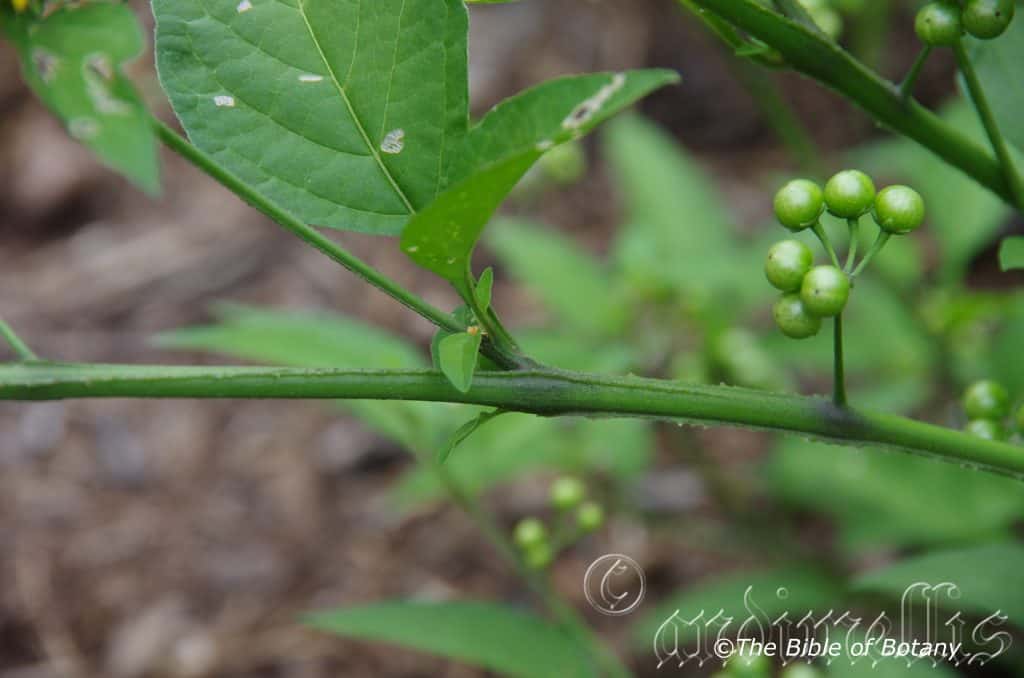
Author’s Garden The Pinnacles NSW
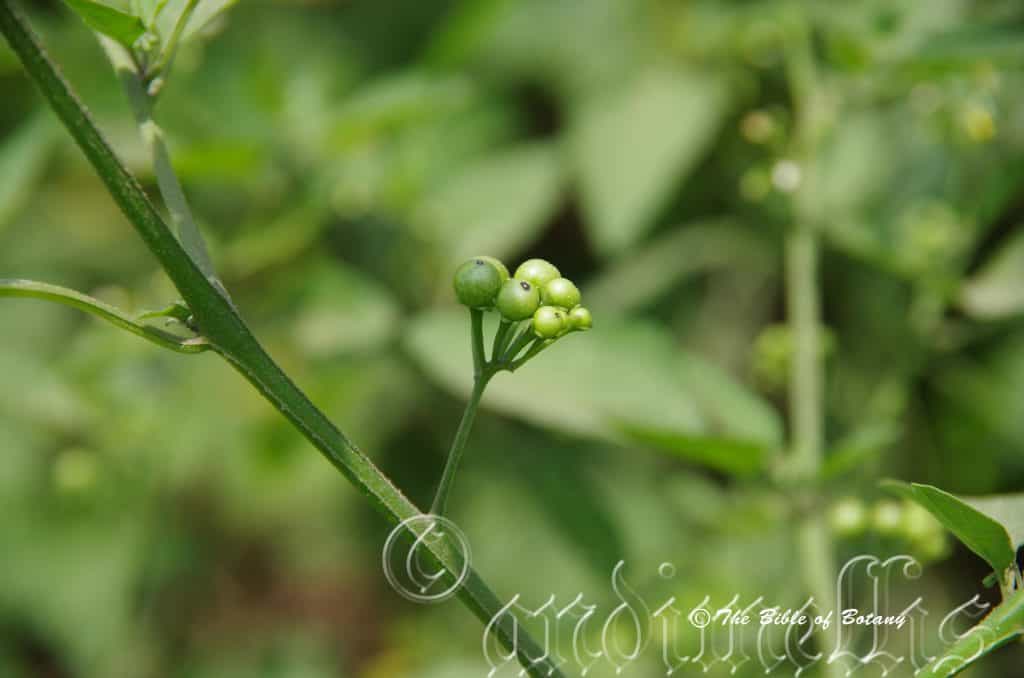
Author’s Garden The Pinnacles NSW
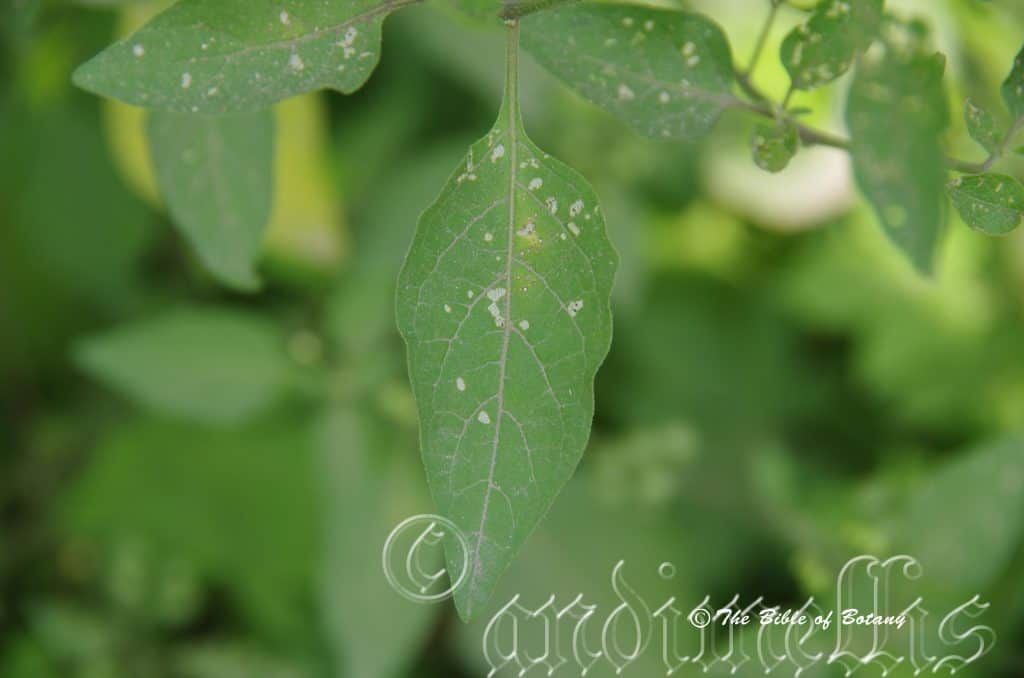
Author’s Garden The Pinnacles NSW
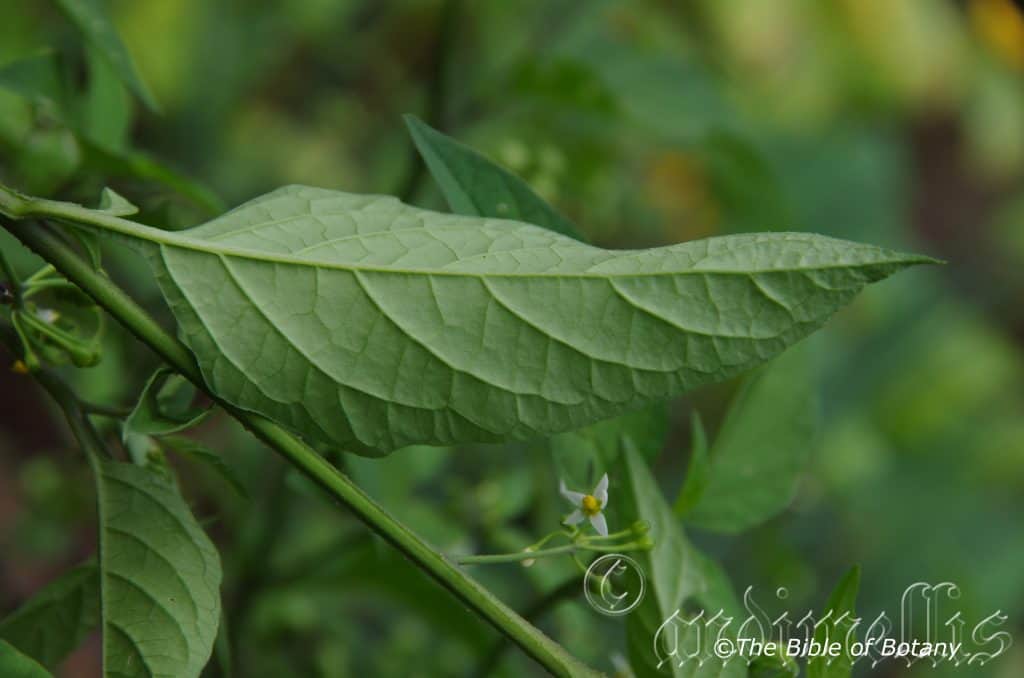
Author’s Garden The Pinnacles NSW
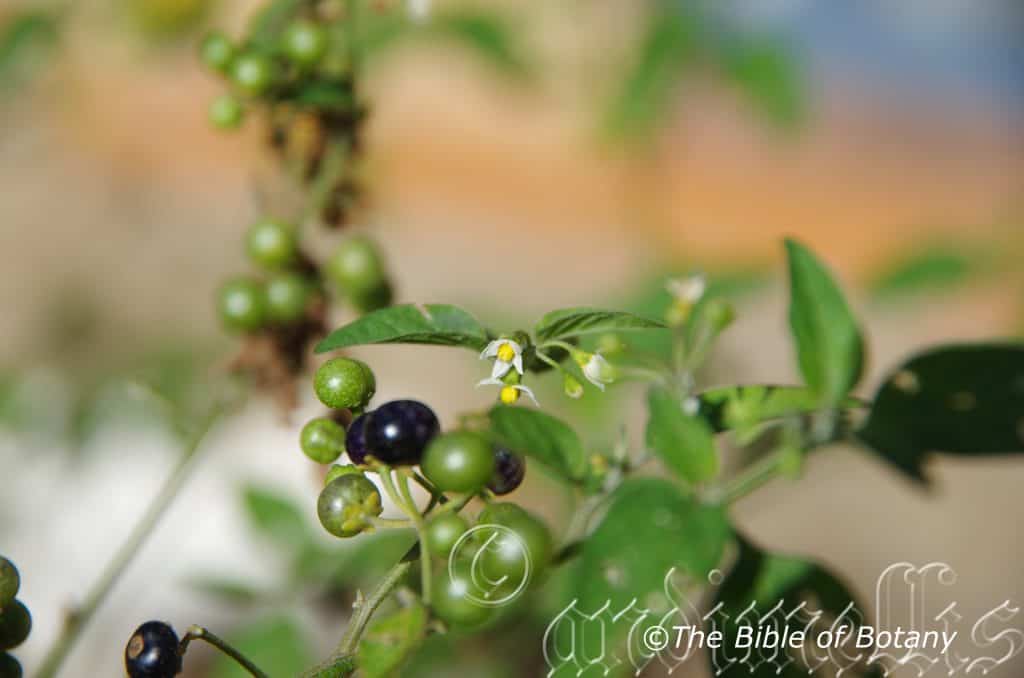
Author’s Garden The Pinnacles NSW
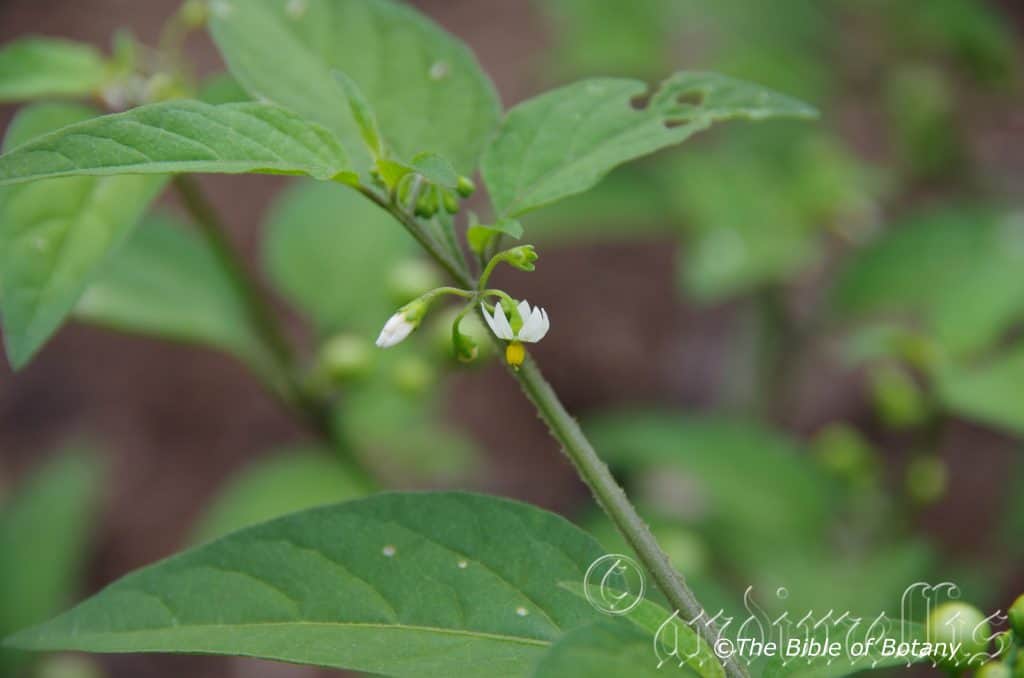
Author’s Garden The Pinnacles NSW
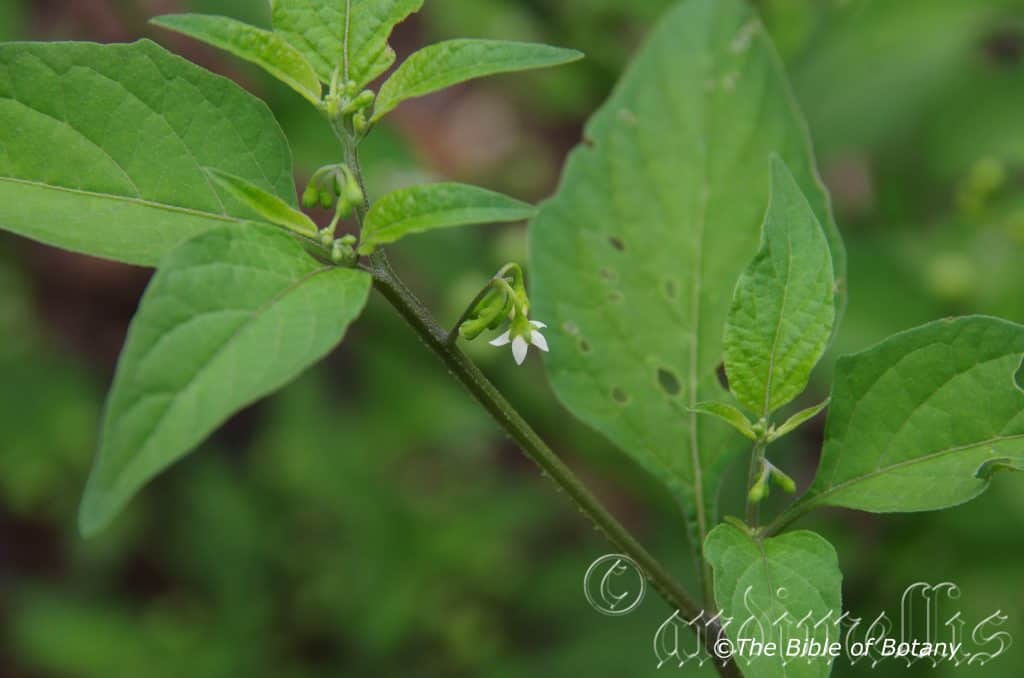
Author’s Garden The Pinnacles NSW

Author’s Garden The Pinnacles NSW
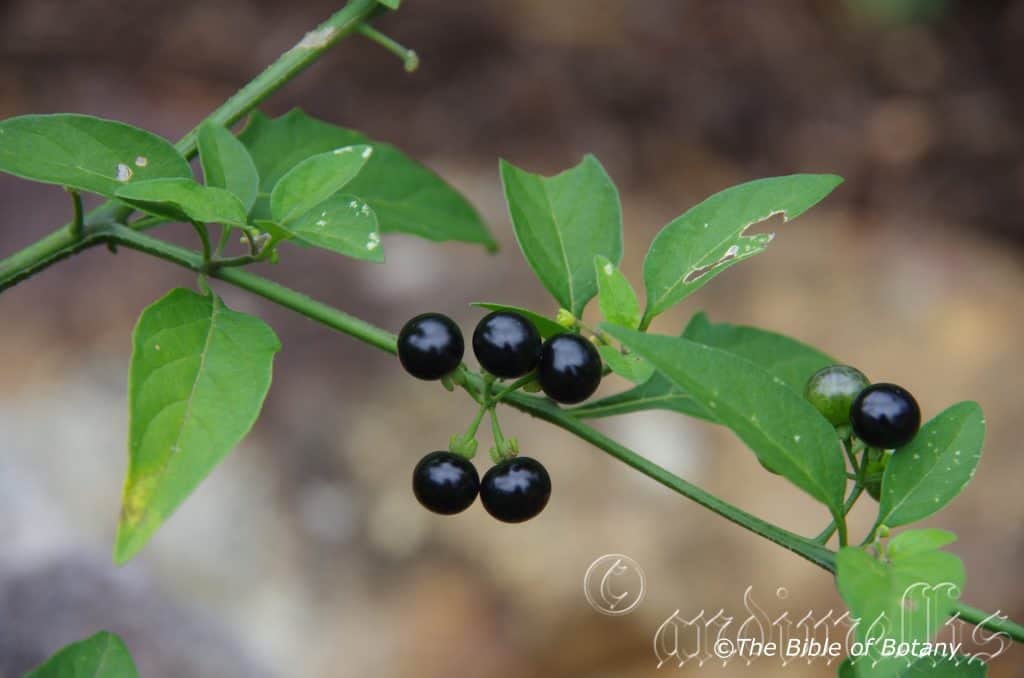
Author’s Garden The Pinnacles NSW
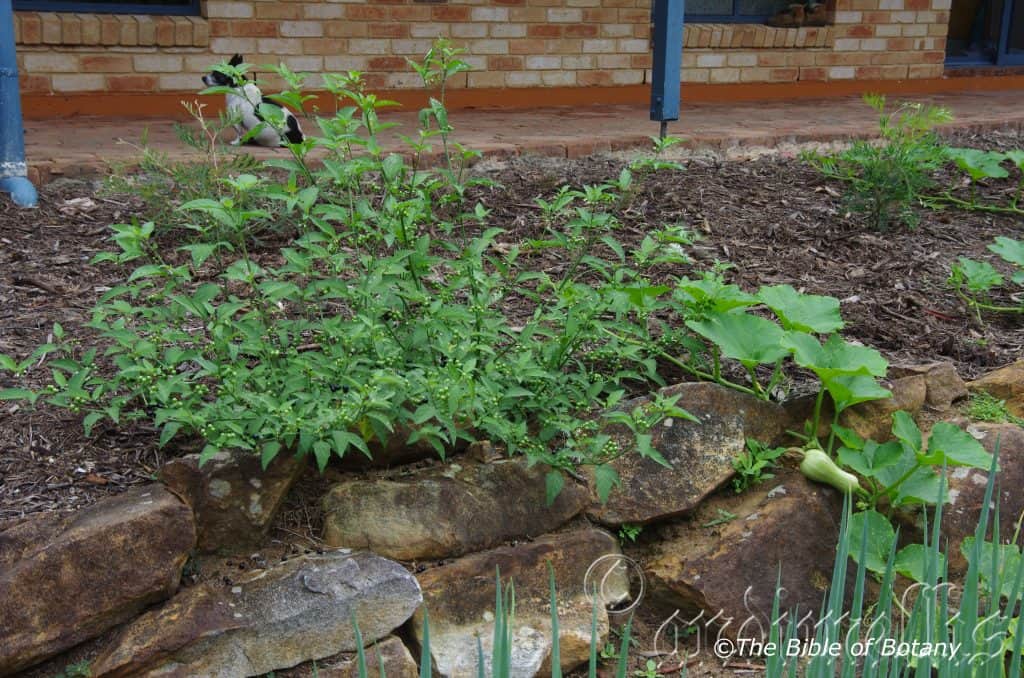
Author’s Garden The Pinnacles NSW
Solanum americanum
Classification:
Unranked: Eudicots
Unranked: Asterids
Order: Solanales
Family: Solanaceae
Subfamily: Solanoideae
Tribe: Solaneae
Genus: From Solanace, which is Latin for the nightshade plants. It refers to the family of plants, which includes the potato, tomato, capsicum and chilies.
Specie: From America, which is Latinized for from the Americas. It refers to plants, which were first discovered from North.
Sub specie:
Common Name: Glossy Night Shade.
Distribution:
Solanum americanum is found on or mainly on the eastern side of the Great Dividing Range from The Grampians in western Victoria east to Gippsland and north to the Iron Range National Park on Cape York Peninsular. The plant has benefited greatly from civilization especially around chicken coops in country areas. With absolute certainly all plants found in Australia have been derived from introduced plants and are not native. Recent fossils have been found which indicates the plants may have been found naturally around the top end or again could have been introduced by seafarers or aborigines in the past.
https://avh.ala.org.au/occurrences/search?taxa=Ranunculus+lappaceus#tab_mapView
Habitat Aspect Climate:
Solanum americanum prefer light dappled shade to full sun. They grow in warm moist subtropical and Tropical Rainforests. The altitude ranges from 5 meters ASL to 1540 meters ASL.
The temperatures range from minus 3 degrees in August to 36 degrees in January.
The rainfalls range from lows of 900mm to 3200mm average per annum.
Soil Requirements:
Solanum americanum prefer to grow on better sandy quality loams to medium clays. The soils are derived from decomposed brown basalt, black basalts shales or metamorphic. The soils pH ranges from 4.5pH to 6pH. It does not tolerate water logged soils. Non saline soils to moderately saline soils are tolerated.
Height & Spread:
Wild Plants: 1m to 1.5m by 0.8m to 1.2m
Characteristics:
The stems of Solanum americanum are tall, straight, pale grey with fine longitudinally fissures. The smaller stems are grey green, mid green or mid green with deep purple or black markings. The branchlets are glabrous to sparsely covered in purple hirsute hairs. The stems are terete or angulated, often with wings to 0.5mm in width. The stems are very sparsely covered in the remnants of soft blunt spines or strigose hairs. This is quite a variable species and is under review, so there could be more than one specie or several sub specie involved in Australia.
The alternate, ovate to lanceolate leaves of Solanum americanum measure 30mm to 80mm in length by 20mm to 40mm in width but are often larger on young plants or those growing on old farms near poultry sheds where nutrient nutrients are freely available. The petiole measures 1mm to 5mm in length. The bases are rounded or rounded and attenuate while the apex is obtuse, acute or acuminate. The discolourous laminas are mid bluish-green to sea-green, semi glossy and glabrous or sparsely covered in white puberulent hairs on the upper laminas while the lower laminas are paler. The leaf margins are entire or shallowly lobed, flat or slightly recurve from the mid vein to the margins and decurve near the apex. The mid vein and main laterals are prominent on the lower laminas and are distinctly visible on the upper laminas.
Inflorescences of Solanum americanum are born on a simple umbel from the between the leaf nodes. There are 4 to 12 individual flowers to an umbel. The green peduncles and pedicels are glabrous to sparsely covered in white pulverulent hairs. The peduncles measure 15mm to 25mm in length while the pedicels measure 6mm to 10mm in length. The green calyx measures 1.5mm to 2mm in length while the 5 lobes are erect, glabrous and measure 0.8mm to 1mm in length. The green corolla measures 1mm to 2mm in length while the corolla lobes measure 0.8mm to 1mm in length. The white to pale lavender lobes are pale yellow green near the base. The lanceolate lobes are divaricate to decurve and measure 4mm to 5mm in length by 1.5mm to 2mm in width.
The 5 exserted stamens extend from the mouth not the corolla tube. The filaments are pale yellow green while the adnate anthers are bright yellow. The filaments measure 1mm to 1.3mm in length while the anthers measure 2mm to 2.5mm in length and converge around the style.
The green style and stigma are glabrous while the superior, green, ovoidal ovary measures 1mm to 1.2mm in length. The pistil measures 2.5mm to 4mm in length and is glabrous on the apex half and is covered in hirtellous hairs on the basal half. Solanum americanum flowers appear throughout the year.
The fruits of Solanum americanum are globose to obovoidal berries. The berries are glabrous and measure 6mm to 9mm in length by 6mm to 9mm in diameter. The green capsules turn deep purple black externally and pale creamy red or purple internally when ripe. The calyx lobes are persistent on the ripe fruit. The glossy fawn seeds are flattened and ellipsoidal.
Wildlife:
Solanum americanum fruits are edible and taste far better fresh than stewed or made into chutneys.
WARNING: Many Solanum species are poisonous and many species; perhaps all, have some parts that are poisonous, or the edible parts are only edible at certain times of the year while being poisonous at other times.
Some native species of Solanum were known as traditional Aboriginal bush tucker plants. Others are introduced edible weeds.
Several native species are listed in Wild Food Plants of Australia by Cribb Not all of these are edible however some had specific uses or had to be treated first before eating: Solanum aviculare (Rainforest Kangaroo Apple), Solanum centrale (Desert Raisin), Solanum chippendalei (Bush Tomato), Solanum diversiflorum (Kakarrta), Solanum ellipticum, Solanum esuriale, Solanum laciniatum (Southern Kangaroo Apple), Solanum linearifolium (Mountain Kangaroo Apple), Solanum mauritianum (Wild Tobacco, Tobacco Bush), and Solanum vescum (Gunyang). Of these, Solanum aviculare, Solanum laciniatum, and Solanum mauritanum are the most common species that people come into contact with.
The Rainforest Kangaroo Apple is apparently only barely edible, so should be eaten sparingly.
Of the Solanum species which occur in Australia, Solanum americanum, Solanum scabrum and Solanum villosum and Solanum opacum are also considered to be edible.
People with allergies to tomatoes, peanuts or potatoes should be wary of eating any fruit of the Solanaceae family as they all contain small amounts of the alkaloid sola.
Solanum aviculare Kangaroo Apple
Solanum centrale is also known as Desert Raisin, Bush Raisin or Bush Sultana, or by the native name kutjera.
Solanum chipendalei is known as Bush Tomato.
Solanum coactiliferum Aborigines roasted the fruit before eating.
Solanum diversifolium is known as Bush Tomato, Karlumbu, Pilirta, Wamurla districts.
Solanum ellipticum Potato Bush is very similar to Solanum quadriliculatum which is poisonous.
Solanum lacinatum is known as Kangaroo Apple.
Solanum orbicaltum is known as Round-leaved Solanum.
Solanum pholomoides is also known as Wild Tomato.
Solanum vescum.
Solanum cinerium is poisonous
Aborigines burned off the outer skin of Solanum aviculare as eating them raw caused the mouth to blister. Aborigines ate the fruit of Solanum centrale raw or put it on the hot earth by the fire, sprinkle some water on the fruits and cover them up to cook them. Solanum chippendalei is consumed by first splitting the fruit, scraping the center out and eating the outer flesh as the seeds and surrounding placenta are bitter. Solanum diversiflorum is roasted before being eaten or dried. Fruit of Solanum orbiculatum is edible, but the fruit of the large leafed form may be bitter. Fruit of Solanum phlomoidesappears to be edible after the removal of seeds and roasting or sun drying. Mardu people would dry the fruits to consume them at a later date.
Solanum aviculare which is closely related, contains solasodine, a steroid used in the manufacture of oral contraceptives. I have not tried the fruits so cannot vouch for any of what is said first hand.
Cultivation:
Solanum americanum is a perennial shrub that should be grown amongst other shrubs. In cultivation it grows from 1.2 meters to 1.5 meters in height by 0.8 meters to 1.2 meters in diameter when grown in the open.
They grow exceptionally well on lighter soils where deep leaf litter keeps the soil cool, moisture is retained at an even level and fertilizer residues remain in the soil. If these requirements are met they can cope with temperatures as low as minus 1 degree and up to 36 degrees. It is moderately drought resistant.
Add to the above, if it is given an adequate supply of water and a little native fertilizer on a regular basis the plants do respond with good flowering and larger fruit over a long period.
Propagation:
Seeds: The seeds of Solanum americanum can be removed easily from the fruits.
Sow fresh seeds directly into a seed raising mix, keeping them moist not wet. Do not over water as the seeds will rot off before germination takes place. Place the trays in a cool shaded area with 50mm shade cloth in the bush house. When the seedlings are 30mm to 50mm tall, prick them out and plant them into 50mm native tubes using a good organic mix.
As the seedlings roots reach the bottom of the tubes plant them out into their permanent position. Do not delay.
Fertilize using seaweed, fish emulsion or organic chicken pellets soaked in water on an alternate basis. Fertilize every two months until the plants are established then twice annually in early September and March to maintain better colour, health, vitality and flowering.
Further Comments from Readers:
“Hi reader, it seems you use The Bible of Botany a lot. That’s great as we have great pleasure in bringing it to you! It’s a little awkward for us to ask, but our first aim is to purchase land approximately 1,600 hectares to link several parcels of N.P. into one at The Pinnacles NSW Australia, but we need your help. We’re not salespeople. We’re amateur botanists who have dedicated over 30 years to saving the environment in a practical way. We depend on donations to reach our goal. If you donate just $5, the price of your coffee this Sunday, We can help to keep the planet alive in a real way and continue to bring you regular updates and features on Australian plants all in one Botanical Bible. Any support is greatly appreciated. Thank you.”
In the spirit of reconciliation we acknowledge the Bundjalung, Gumbaynggirr and Yaegl and all aboriginal nations throughout Australia and their connections to land, sea and community. We pay our respect to their Elders past, present and future for the pleasures we have gained.

Washpool National Park NSW

Washpool National Park NSW
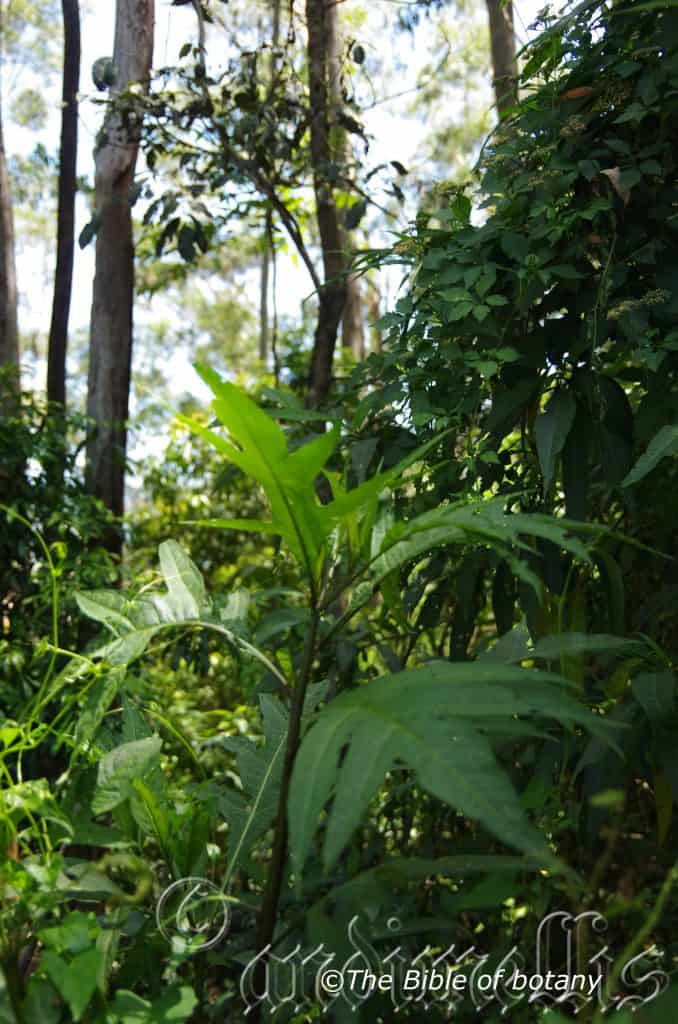
Washpool National Park NSW
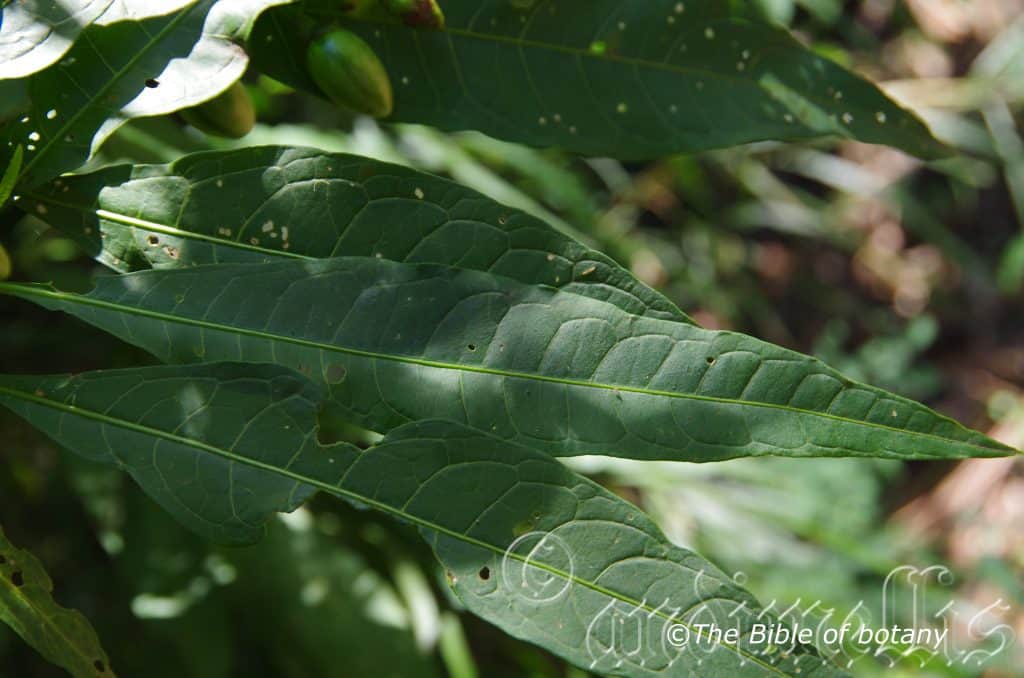
Washpool National Park NSW
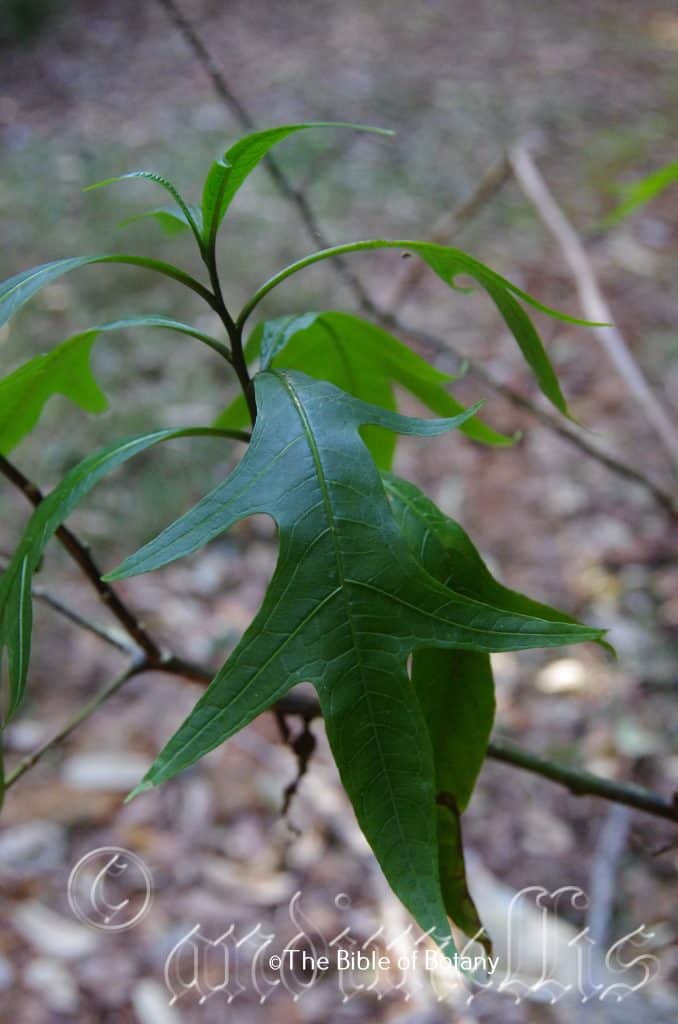
Washpool National Park NSW
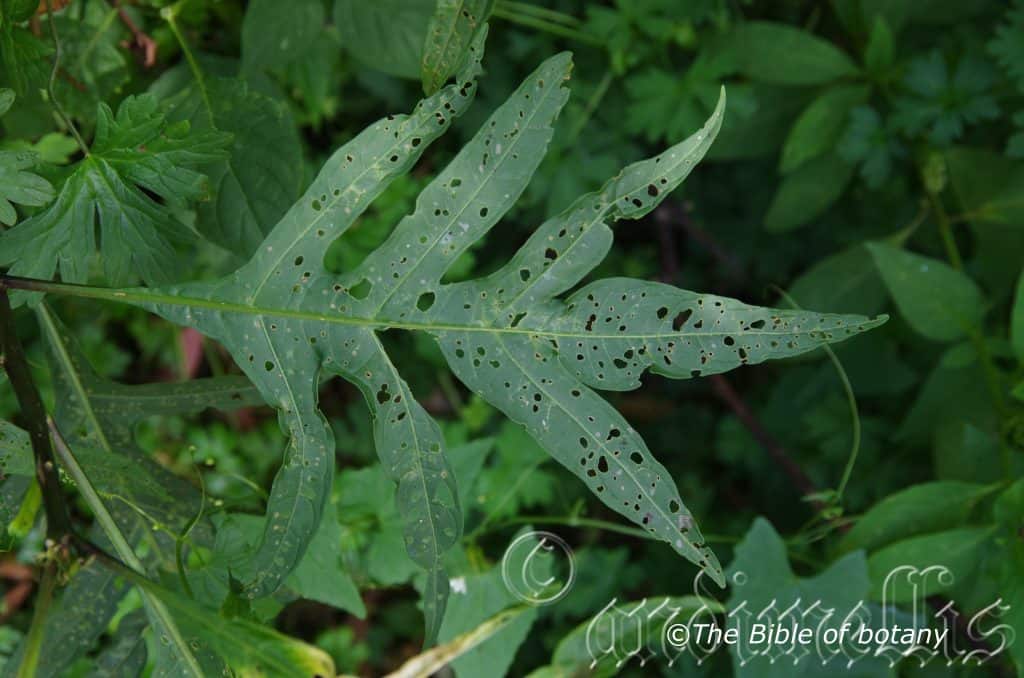
Washpool National Park NSW
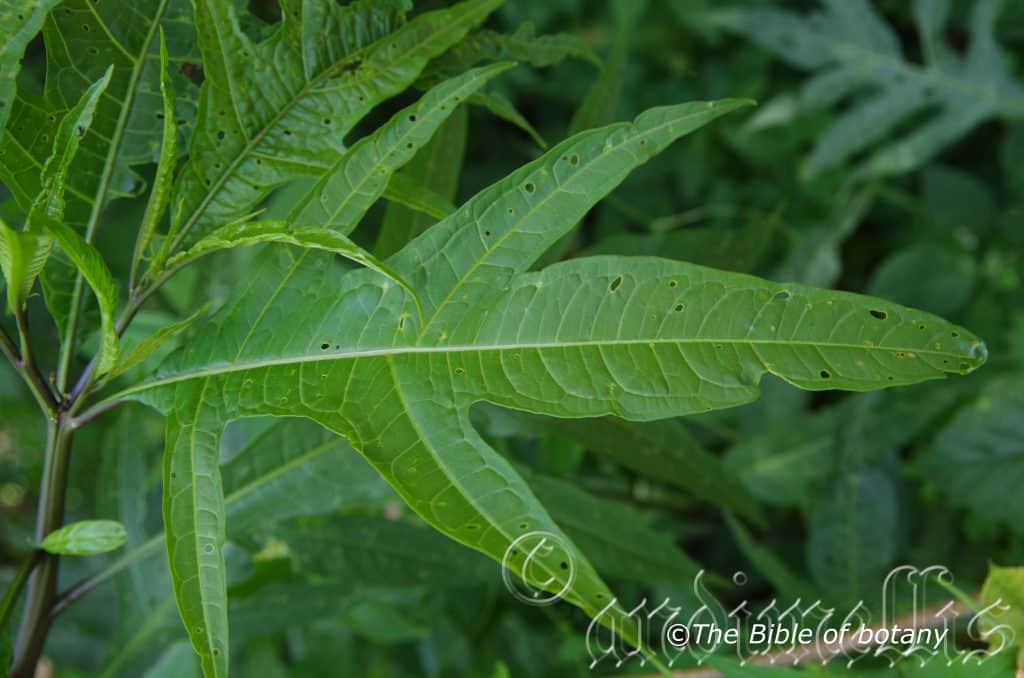
Washpool National Park NSW
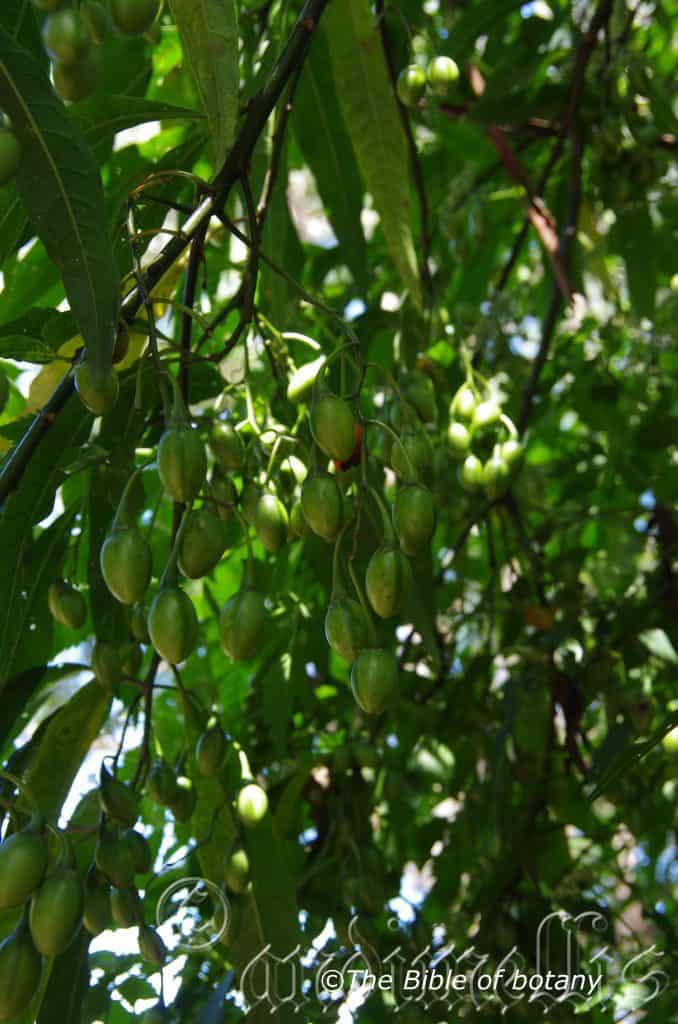
Washpool National Park NSW
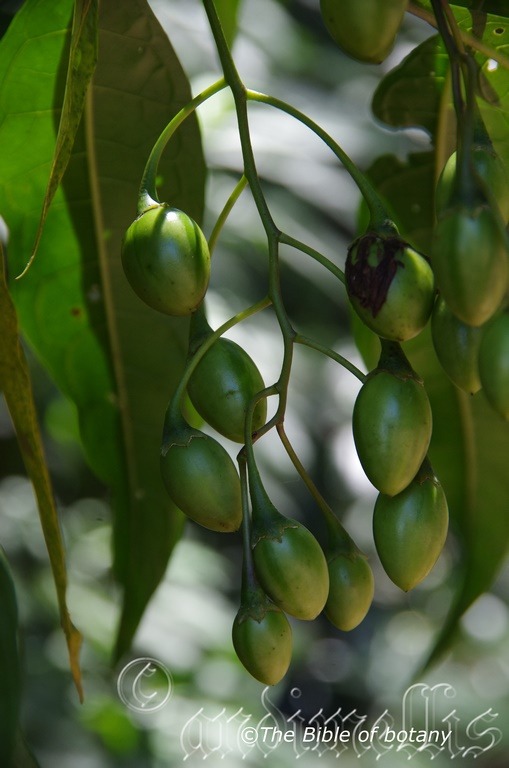
Washpool National Park NSW
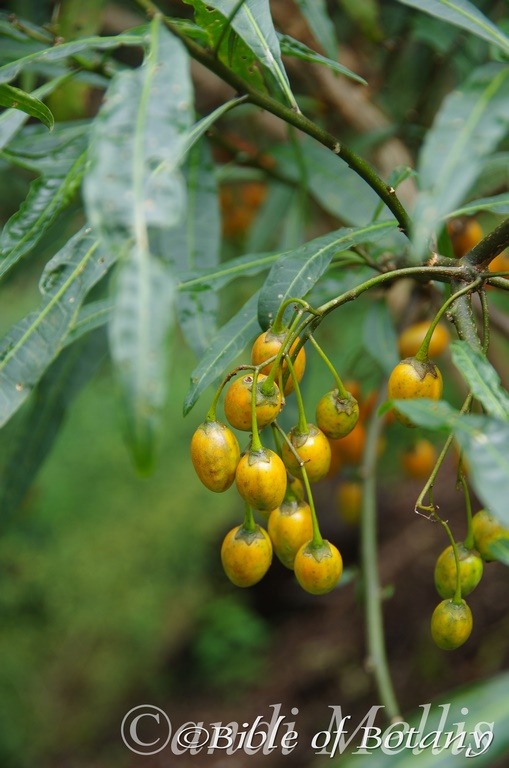
Mount Cootha Botanic Gardens Qld.

Mount Cootha Botanic Gardens Qld.
Solanum aviculare
Classification:
Unranked: Eudicots
Unranked: Asterids
Order: Solanales
Family: Solanaceae
Subfamily: Solanoideae
Tribe: Solaneae
Genus: From Solanace, which is Latin for the nightshade plants. It refers to the family of plants, which includes the potato, tomato, capsicum and chillies.
Specie: From Avicula, which is Latin for a small bird. Its reference is unclear but it may refer to the flowers, which have wide spreading petals like a small bird.
Sub specie:
Common Name: Kangaroo Apple or Poroporo.
Distribution: Solanum aviculare is found from near the South Australian Victorian border on the coast in western Victoria east to Gippsland and north from Melbourne to near Mansfield. It is also found from Wilson’s Promontory north along the coast to near Maryborough in southern coastal Queensland. There are several disjunct populations further north to Cooktown.
https://avh.ala.org.au/occurrences/search?taxa=Solanum+aviculare#tab_mapView
Habitat Aspect Climate:
Solanum aviculare prefer light dappled shade to full sun. They grow adjacent to warm moist subtropical and Tropical Rainforests, warm, dry rainforests and moist Eucalyptus forests along streams and rivers further inland. The altitude ranges from 15 meters ASL to 1380 meters ASL.
The temperatures range from minus 3 degrees in August to 36 degrees in January.
The rainfalls range from lows of 900mm to 2800mm average per annum.
Soil Requirements:
Solanum aviculare prefer to grow on better quality sandy loams to medium clays. The soils are derived from decomposed sandstones, granites, brown basalt, and black basalts or metamorphic. The soils pH ranges from 5pH to 6pH. It does not tolerate water logged soils. Non saline soils to moderately saline soils are tolerated.
Height & Spread:
Wild Plants: 2.5m to 4m by 2m to 3m.
Characteristics:
The stems of Solanum aviculare are tall, straight, pale brown with fine longitudinally fissures. The smaller stems are green to mid green with deep purple or black markings. The branchlets are glabrous to very sparsely covered in white caducous hirsute hairs.
The alternate, leaves are entire to deeply lobed. The entire narrow to lanceolate leaves of Solanum aviculare measure 80mm to 250mm in length by 10mm to 55mm in width. The petioles measure 10mm to 20mm in length. The bases are broad cuneate to narrow cuneate and attenuate while the apexes are obtuse, acute, tapering to acuminate.
The concolourous laminas are sea-green to mid grass-green, dull to semi glossy and glabrous. The leaf and lobe margins are entire, flat, or slightly recurve from the mid vein to the margins and decurve near the apex. The lobes on the lobed leaves are broad elliptical to obovate and measure 120mm to 300mm in length by 70mm to 230mm in width overall. The lobes measure 10mm to 100mm in length by 5mm to 30mm in width. The mid vein and main laterals are prominent on the lower laminas and are distinctly visible on the upper laminas.
Inflorescences of Solanum aviculare are born on a raceme or panicle from the leaf axils. The panicles often divide near the base to form 2 separate racemes. There are 6 to 12 individual flowers to a raceme. The mid pinkish green, green to deep green almost black peduncle, rachises and pedicels are glabrous. The peduncles measure 15mm to 20mm in length while the rachises measure 80mm to 150mm and the pedicels measure 15mm to 35mm in length. The green calyx measures 5mm to 6mm in length while the 5 lobes are erect, glabrous and measure 1.5mm to 3mm in length. The deep purple to deep violet campanulate corolla lobes is united, rotate-stellate and yellow at the center. They measure 10mm to 12mm in length while the united lobes measure 12mm to 20mm in length. The lobes apexes are truncate, undulating and have a deep emarginated tip.
The 5 exserted stamens extend from the mouth of the corolla tube. The filaments are deep yellow while the basifixed anthers are bright yellow. The filaments measure 1mm to 1.3mm in length while the anthers measure 3.5mm to 4.5mm in length and converge around the style.
The white style and stigma are glabrous while the superior, green, ovoidal ovary measures 1mm to 1.2mm in length. The glabrous pistil measures 5mm to 7mm. Solanum aviculare’s flowers appear throughout the year but more frequently in the warmer months.
The fruits of Solanum aviculare are ovoidal berries. The berries are glabrous and measure 15mm to 23mm in length by 10mm to 15mm in diameter. The green capsules turn yellow-orange to orange-red when ripe. The pedicels measure 1mm to 1.5mm in diameter near the base swelling to 5mm to 5.5mm in diameter at the junction with the persistent calyx lobes. The fawn seeds are flattened and ellipsoidal.
Wildlife:
Solanum aviculare support native bees and native flies along the coast. The fruits form a staple part of the silver eyes (Zysterops lateralis) diet. The leaves of bush plants are often devoured by unknown butterfly larvae.
While this species is edible only small quantities should be eaten. The fruit when fully has a rather astringent taste.
WARNING: Many Solanum species are poisonous and many species; perhaps all, have some parts that are poisonous, or the edible parts are only edible at certain times of the year while being poisonous at other times.
Some native species of Solanum were known as traditional Aboriginal bush tucker plants. Others are introduced edible weeds.
Several native species are listed in Wild Food Plants of Australia by Cribb Not all of these are edible however some had specific uses or had to be treated first before eating: Solanum aviculare (Rainforest Kangaroo Apple), Solanum centrale (Desert Raisin), Solanum chippendalei (Bush Tomato), Solanum diversiflorum (Kakarrta), Solanum ellipticum, Solanum esuriale, Solanum laciniatum (Southern Kangaroo Apple), Solanum linearifolium (Mountain Kangaroo Apple), Solanum mauritianum (Wild Tobacco, Tobacco Bush), and Solanum vescum (Gunyang). Of these, Solanum aviculare, Solanum laciniatum, and Solanum mauritanum are the most common species that people come into contact with.
The Rainforest Kangaroo Apple is apparently only barely edible, so should be eaten sparingly.
Of the Solanum species which occur naturally in Australia, Solanum americanum, Solanum scabrum and Solanum villosum and Solanum opacum are all considered to be edible.
People with allergies to tomatoes, peanuts or potatoes should be wary of eating any fruit of the solanaceae family as they all contain small amounts of the alkaloid sola.
Solanum aviculare Kangaroo Apple
Solanum centrale is also known as Desert Raisin, Bush Raisin or Bush Sultana, or by the native name kutjera.
Solanum chipendalei is known as Bush Tomato.
Solanum coactiliferum Aborigines roasted the fruit before eating.
Solanum diversifolium is known as Bush Tomato, Karlumbu, Pilirta, Wamurla districts.
Solanum ellipticum Potato Bush is very similar to Solanum quadriliculatum which is poisonous.
Solanum lacinatum is known as Kangaroo Apple.
Solanum orbicaltum is known as Round-leaved Solanum.
Solanum pholomoides is also known as Wild Tomato.
Solanum vescum.
Solanum cinerium is poisonous
Aborigines burned off the outer skin of Solanum aviculare as eating them raw caused the mouth to blister. Aborigines ate the fruit of Solanum centrale raw or put it on the hot earth by the fire, sprinkle some water on the fruits and cover them up to cook them. Solanum chippendalei is consumed by first splitting the fruit, scraping the center out and eating the outer flesh as the seeds and surrounding placenta are bitter. Solanum diversiflorum is roasted before being eaten or dried. Fruit of Solanum orbiculatum is edible, but the fruit of the large leafed form may be bitter. Fruit of Solanum phlomoidesappears to be edible after the removal of seeds and roasting or sun drying. Mardu people would dry the fruits to consume them at a later date.
Solanum aviculare contains solasodine, a steroid used in the manufacture of oral contraceptives. I have not tried the fruits so cannot vouch for any of what is said first hand.
Cultivation:
Solanum aviculare is a perennial shrub that should be grown amongst other shrubs or adjacent to small rainforest clearings. In cultivation they will grow from 2 meters to 3 meters in height by 1.5 meters to 2.5 meters in diameter when grown in the open.
They grow exceptionally well on lighter soils where deep leaf litter keeps the soil cool and moisture at an even level. If these requirements are met they can cope with temperatures as low as minus 1 degree and up to 36 degrees. It is moderately drought resistant.
Add to the above, if it is given an adequate supply of water and a little native fertilizer on a regular basis the plants do respond with good flowering and larger fruit over a long period.
Propagation:
Seeds: The seeds of Solanum aviculare can be removed easily from the fruits.
Sow fresh seeds directly into a seed raising mix, keeping them moist not wet. Do not over water as the seeds will rot off before germination takes place. Place the trays in a cool shaded area with 50mm shade cloth in the bush house. When the seedlings are 30mm to 50mm tall, prick them out and plant them into 50mm native tubes using a good organic mix.
As the seedlings roots reach the bottom of the tubes plant them out into their permanent position. Do not delay.
Fertilize using seaweed, fish emulsion or organic chicken pellets soaked in water on an alternate basis. Fertilize every two months until the plants are established then twice annually in early September and March to maintain better colour, health, vitality and flowering.
Further Comments from Readers:
“Hi reader, it seems you use The Bible of Botany a lot. That’s great as we have great pleasure in bringing it to you! It’s a little awkward for us to ask, but our first aim is to purchase land approximately 1,600 hectares to link several parcels of N.P. into one at The Pinnacles NSW Australia, but we need your help. We’re not salespeople. We’re amateur botanists who have dedicated over 30 years to saving the environment in a practical way. We depend on donations to reach our goal. If you donate just $5, the price of your coffee this Sunday, We can help to keep the planet alive in a real way and continue to bring you regular updates and features on Australian plants all in one Botanical Bible. Any support is greatly appreciated. Thank you.”
In the spirit of reconciliation we acknowledge the Bundjalung, Gumbaynggirr and Yaegl and all aboriginal nations throughout Australia and their connections to land, sea and community. We pay our respect to their Elders past, present and future for the pleasures we have gained.
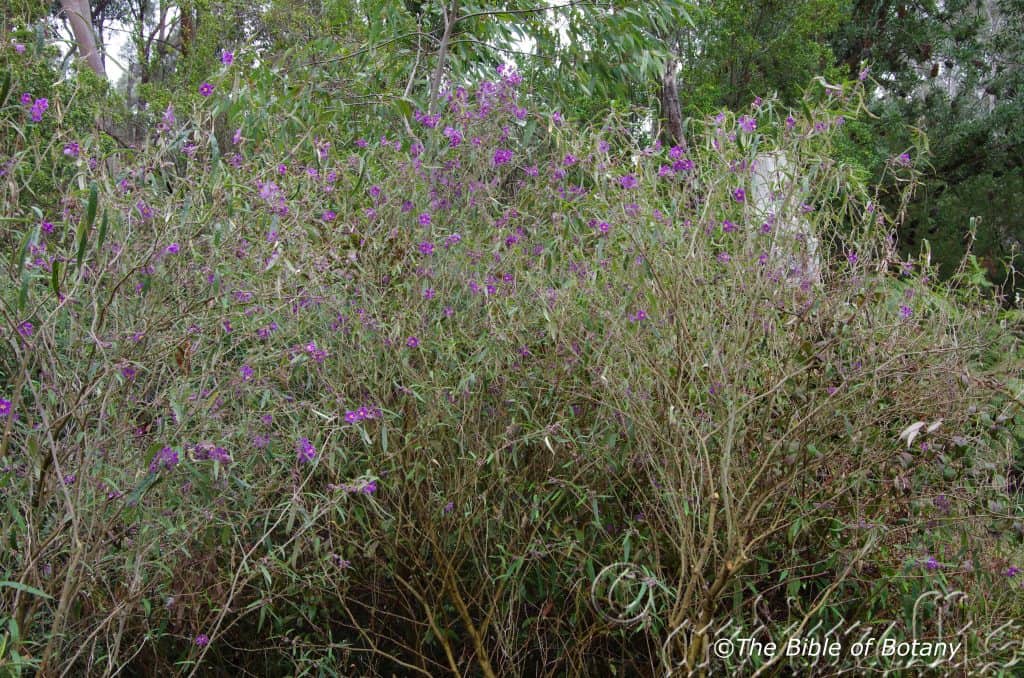
National Botanic Gardens ACT

National Botanic Gardens ACT
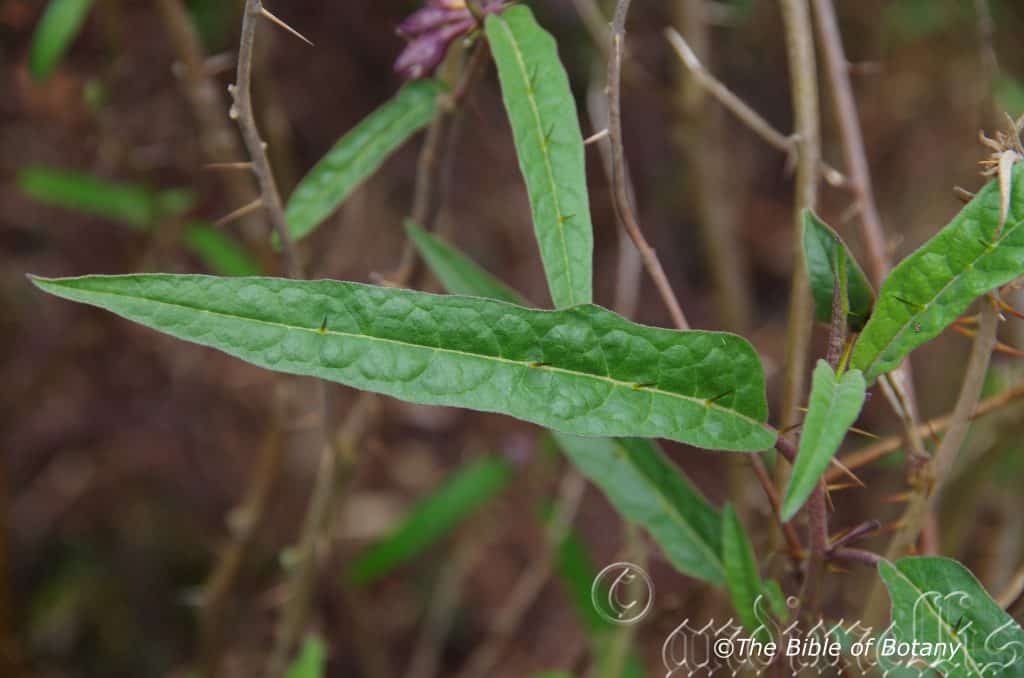
National Botanic Gardens ACT
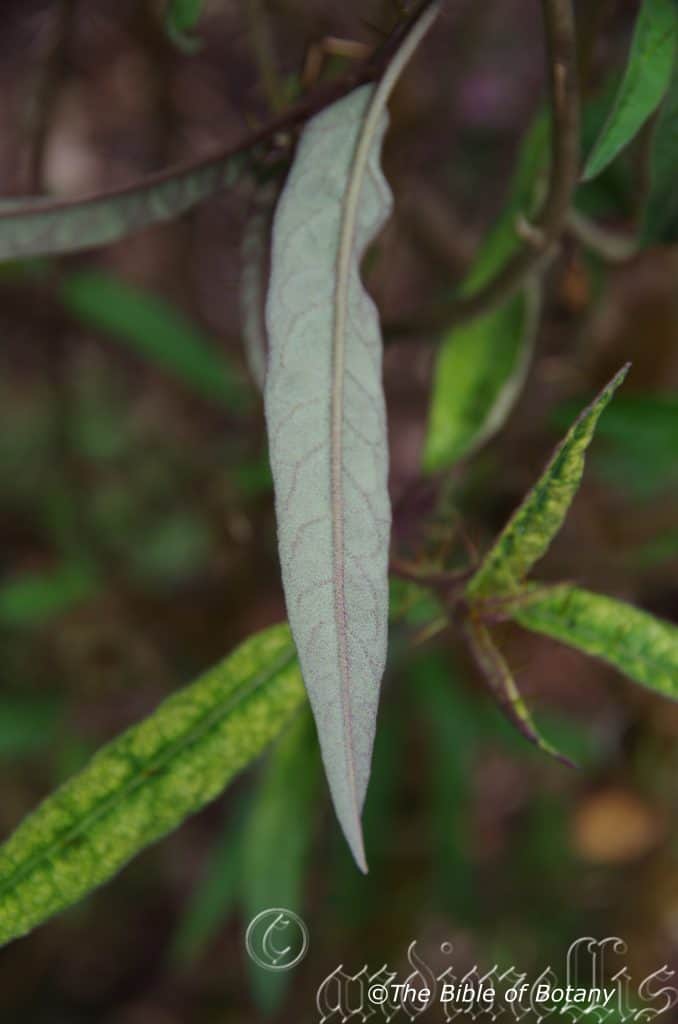
National Botanic Gardens ACT
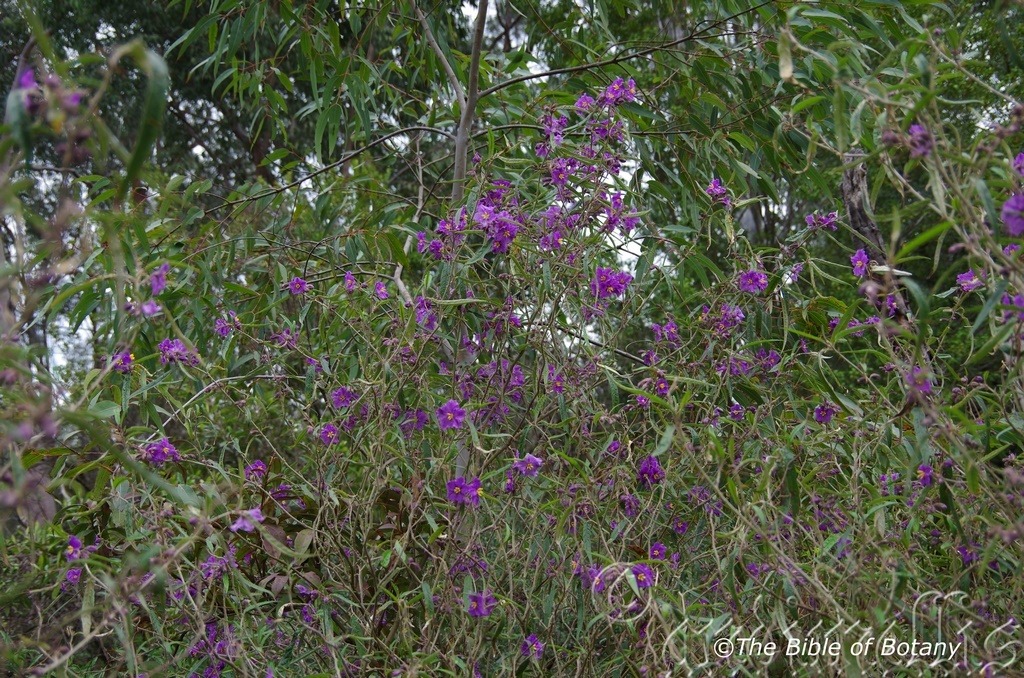
National Botanic Gardens ACT

National Botanic Gardens ACT
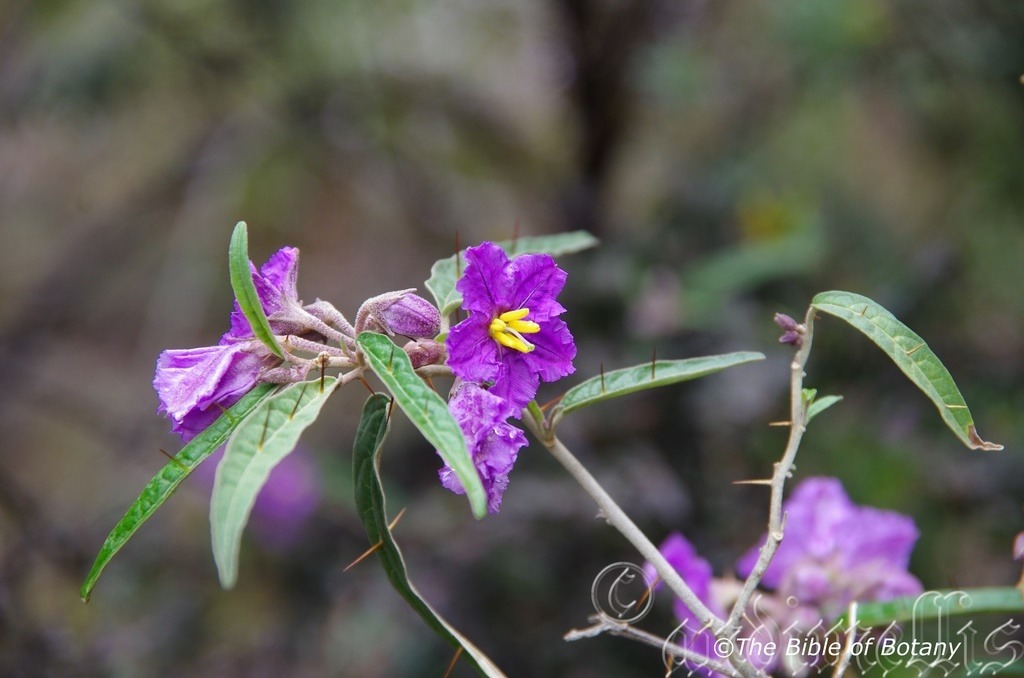
National Botanic Gardens ACT
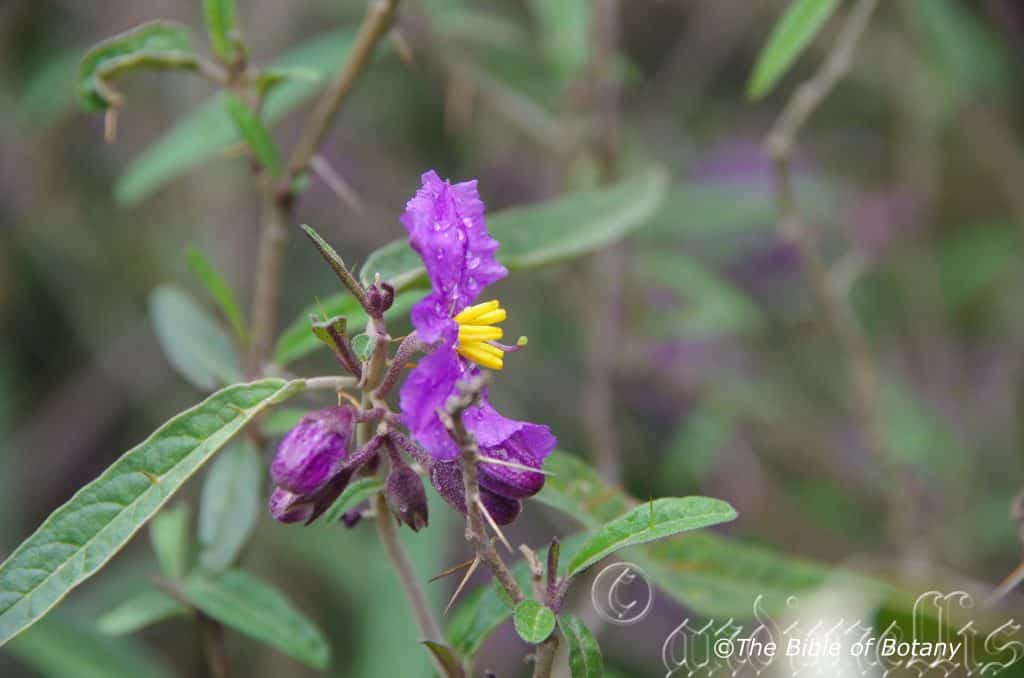
National Botanic Gardens ACT
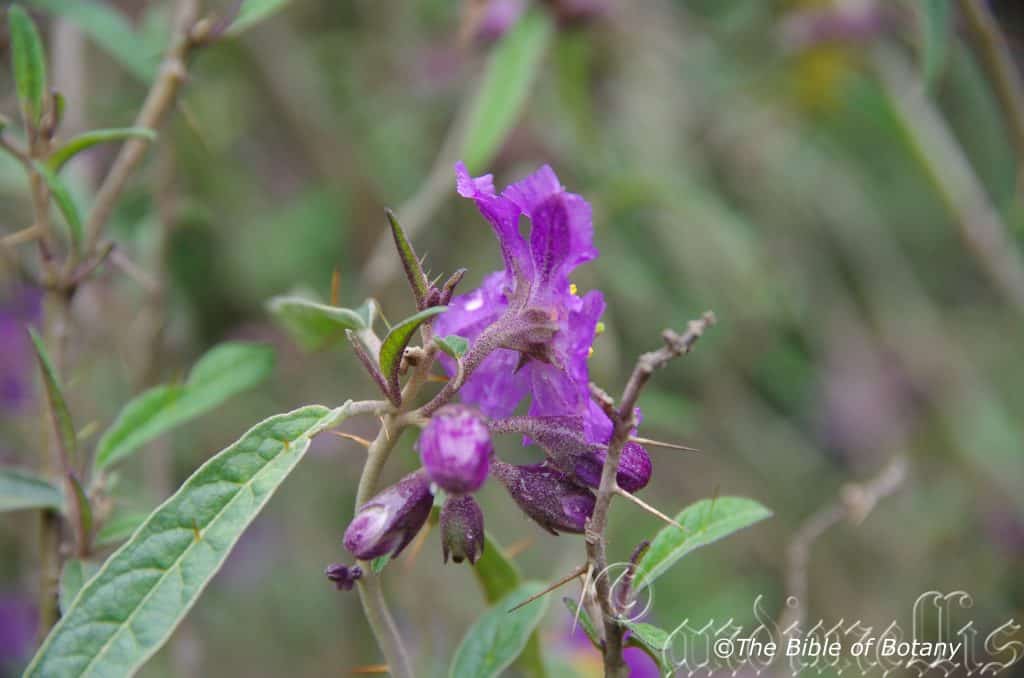
National Botanic Gardens ACT
Solanum brownii
Classification:
Unranked: Eudicots
Unranked: Asterids
Order: Solanales
Family: Solanaceae
Subfamily: Solanoideae
Tribe: Solaneae
Genus: From Solanace, which is Latin for the nightshade plants. It refers to the family of plants, which includes the potato, tomato, capsicum and chillies.
Specie: Is named in honour of Brown, but which brown is unknown. Robert Brown had speciemens sent to him in early identification and published the first type known however botanists do not name plants after themselves.
Sub specie:
Common Name:
Distribution:
Solanum brownii is found south from Woodenberg in far north eastern New South Wales to Dampier State Forest in south eastern coastal New South Wales. It is found on the Western slopes, on and east of the Great Dividing Range.
https://avh.ala.org.au/occurrences/search?taxa=Solanum+brownii#tab_mapView
Habitat Aspect Climate:
Solanum brownii prefers light dappled shade to full sun. It grows in shrubby eucalypt woodland, remote from rainforest. The altitude ranges from 20 meters ASL to 950 meters ASL.
The temperatures range from minus 3 degrees in August to 36 degrees in January.
The rainfalls range from lows of 900mm to 1400mm average per annum.
Soil Requirements:
Solanum brownii prefers better quality loams to medium clays. The soils are derived from decomposed sandstones, granites, brown basalt, and black basalts or metamorphic. The soils pH ranges from 5pH to 6pH. It does not tolerate water logged soils. Non saline soils to moderately saline soils are tolerated.
Height & Spread:
Wild Plants: 1m to 1.8m by 1m to 1.8m.
Characteristics:
Solanum brownii grows as an erect shrub with green branches, which are sparsely covered in stellate hairs and prickles, while the stems are densely covered in stellate hairs and prickles.
The juvenile leaves are shallow to deeply lobed and measure 80mm to 120mm in length by 25mm to 35mm in width.
The alternate or opposite leaves of Solanum brownii are narrow ovate to elliptic and measure 65mm to 130mm in length by 15mm to 30mm in width. The terete petioles are sparsely covered in stellate hairs and measure 10mm to 15mm in length. The slightly assymetrical bases are narrow rounded, while the apexes are broad acute to acute. The discolourous laminas are blue-green, grey-green to deep green, dull or semi glossy and very sparsely covered in white pubescent and stellate hairs on the upper laminas with the occasional thorn/s along the midvein. The lower laminas are sparsely to densely covered in white pubescent hairs or at times floccose hairs and purple stellate hairs. The margins are entire or sinuate, slightly recurve from the mid vein to the margins. The mid vein and lateral veins are strongly prominent on the lower laminas and are distinctly visible from the upper laminas.
The inflorescences of Solanum brownii are born on short raceme from the leaf axils with 5 to 8 individual flowers. There are 4 to 10 individual flowers to a raceme. The mid purplish peduncles and pedicels are densely covered in fawn floccose hairs. The peduncles measure 8mm to 12mm in length, while the pedicels measure 13mm to 18mm in length at anthesis. The purple calyxes are covered in densely covered in fawn floccose hairs and measure 6.5mm to 11mm in length,while the lobes 2.5mm to 5mm in length. The broad-stellate to rotate corolla measures 22mm to 35mm in length while the deep purple to deep pink or rarely white rotate-stellate lobes are united with a yellow center. They measure 10mm to 15mm in length. The lobes apexes are crisped andundulating.
The 5 exserted stamens extend from the center of the corolla tube. The filaments are deep yellow while the basifixed anthers are bright yellow. The filaments measure 1mm to 1.5mm in length while the anthers measure 5mm to 8mm in length and converge around the style.
The purple style and green stigma are glabrous while the superior, ovoidal ovary is pale yellow-green. The pistil measures 5mm to 7mm in length. The 5 glabrous, white filaments measures 1mm to 1.5mm in length, while the bright yellow, linear, basifixed anthers measure 4mm to 5mm in length by 1.5mm in width. Solanum brownii’s flowers appear throughout the year but is more frequent from June to October.
The fruits of Solanum brownii are globular berries. The berries are glabrous and measure 18mm to 29mm in diameter. The green capsules turn yellow-green when ripe then quickly deteriorate and dry to a grey brown. The calyxes are persistent on the ripe fruits. The fawnish seeds are flattened and ellipsoidal and measure 2.5mm to 4mm in length.
Wildlife:
Solanum brownii support native bees and native flies along the coast when in flower. The leaves of bush plants are often devoured by unknown butterfly larvae.
WARNING: Many Solanum species are poisonous and many species; perhaps all, have some parts that are poisonous, or the edible parts are only edible at certain times of the year while being poisonous at other times.
Some native species of Solanum were known as traditional Aboriginal bush tucker plants. Others are introduced edible weeds.
Several native species are listed in Wild Food Plants of Australia by Cribb Not all of these are edible however some had specific uses or had to be treated first before eating: Solanum aviculare (Rainforest Kangaroo Apple), Solanum centrale (Desert Raisin), Solanum chippendalei (Bush Tomato), Solanum diversiflorum (Kakarrta), Solanum ellipticum, Solanum esuriale, Solanum laciniatum (Southern Kangaroo Apple), Solanum linearifolium (Mountain Kangaroo Apple), Solanum mauritianum (Wild Tobacco, Tobacco Bush), and Solanum vescum (Gunyang). Of these, Solanum aviculare, Solanum laciniatum, and Solanum mauritanum are the most common species that people come into contact with.
The Rainforest Kangaroo Apple is apparently only barely edible, so should be eaten sparingly.
Of the Solanum species which occur in Australia, Solanum americanum, Solanum scabrum and Solanum villosum and Solanum opacum are also considered to be edible.
People with allergies to tomatoes, peanuts or potatoes should be wary of eating any fruit of the solanaceae family as they all contain small amounts of the alkaloid sola.
Solanum aviculare Kangaroo Apple
Solanum centrale is also known as Desert Raisin, Bush Raisin or Bush Sultana, or by the native name kutjera.
Solanum chipendalei is known as Bush Tomato.
Solanum coactiliferum Aborigines roasted the fruit before eating.
Solanum diversifolium is known as Bush Tomato, Karlumbu, Pilirta, Wamurla districts.
Solanum ellipticum Potato Bush is very similar to Solanum quadriliculatum which is poisonous.
Solanum lacinatum is known as Kangaroo Apple.
Solanum orbicaltum is known as Round-leaved Solanum.
Solanum pholomoides is also known as Wild Tomato.
Solanum vescum.
Solanum cinerium is poisonous
Aborigines burned off the outer skin of Solanum aviculare as eating them raw caused the mouth to blister. Aborigines ate the fruit of Solanum centrale raw or put it on the hot earth by the fire, sprinkle some water on the fruits and cover them up to cook them. Solanum chippendalei is consumed by first splitting the fruit, scraping the center out and eating the outer flesh as the seeds and surrounding placenta are bitter. Solanum diversiflorum is roasted before being eaten or dried. Fruit of Solanum orbiculatum is edible, but the fruit of the large leafed form may be bitter. Fruit of Solanum phlomoidesappears to be edible after the removal of seeds and roasting or sun drying. Mardu people would dry the fruits to consume them at a later date.
Solanum aviculare contains solasodine, a steroid used in the manufacture of oral contraceptives. I have not tried the fruits so cannot vouch for any of what is said first hand.
Cultivation:
Solanum brownii is a perennial shrub that should be grown amongst other shrubs or adjacent to small rainforest clearings. In cultivation it grows from 0.5 meters to 1 meter in height by 0.5 meters to 1 meter in diameter when grown in the open.
It grows exceptionally well on most rainforest soils where deep leaf litter keeps the soil cool and moisture at an even level. If these requirements are met they can cope with temperatures as low as minus 1 degree and up to 36 degrees. It is not drought resistant.
Add to the above, if it is given an adequate supply of water and a little native fertilizer on a regular basis the plants do respond with good flowering and larger fruit over a long period. It is best planted amongst other natives so the flowers are on display. They would look particularly attractive in a court yard or around a swimming pool where people cannot come in contact with the leaves. It adds interest and are a great conversation piece. Treat them as an annual for best flowering.
Propagation:
Seeds: The seeds of Solanum brownii can be removed easily from the fruits.
Sow fresh seeds directly into a seed raising mix, keeping them moist not wet. Do not over water as the seeds will rot off before germination takes place. Place the trays in a cool shaded area with 50mm shade cloth in the bush house. When the seedlings are 30mm to 50mm tall, prick them out and plant them into 50mm native tubes using a good organic mix.
As the seedlings roots reach the bottom of the tubes plant them out into their permanent position. Do not delay.
Fertilize using Seaweed, fish emulsion or organic chicken pellets soaked in water and apply the liquid on an alternate basis. Fertilize every 2 months until the plants are well established then on an annual basis in September or March to maintain health, vigour and better flowering.
Further Comments from Readers:
“Hi reader, it seems you use The Bible of Botany a lot. That’s great as we have great pleasure in bringing it to you! It’s a little awkward for us to ask, but our first aim is to purchase land approximately 1,600 hectares to link several parcels of N.P. into one at The Pinnacles NSW Australia, but we need your help. We’re not salespeople. We’re amateur botanists who have dedicated over 30 years to saving the environment in a practical way. We depend on donations to reach our goal. If you donate just $5, the price of your coffee this Sunday, We can help to keep the planet alive in a real way and continue to bring you regular updates and features on Australian plants all in one Botanical Bible. Any support is greatly appreciated. Thank you.”
In the spirit of reconciliation we acknowledge the Bundjalung, Gumbaynggirr and Yaegl and all aboriginal nations throughout Australia and their connections to land, sea and community. We pay our respect to their Elders past, present and future for the pleasures we have gained.
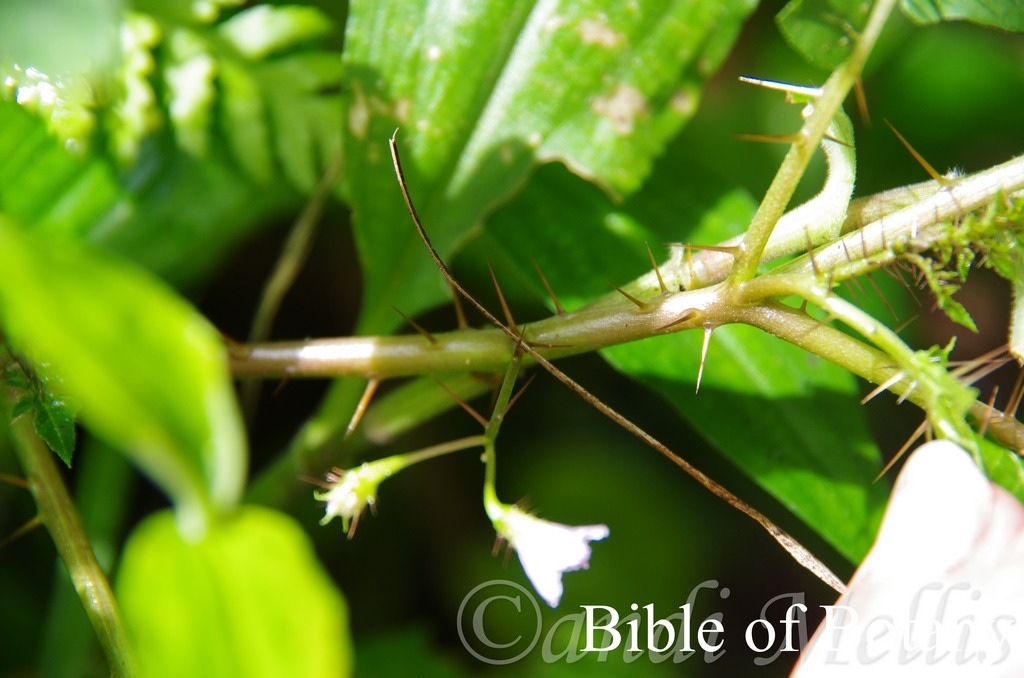
Wombat Creek Conservation Park NSW
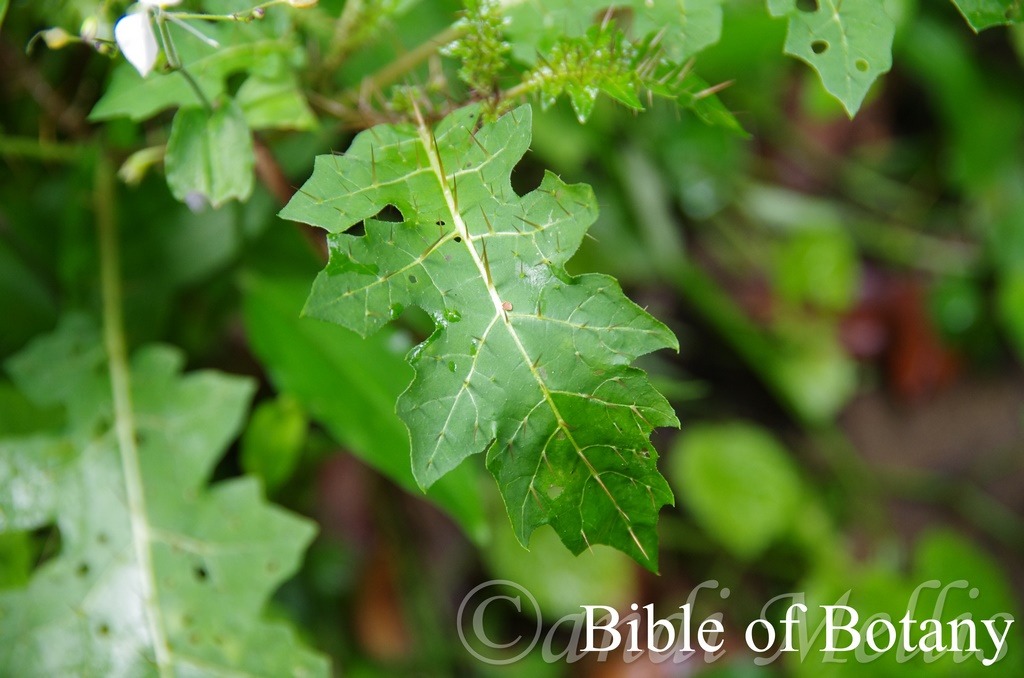
Wombat Creek Conservation Park NSW
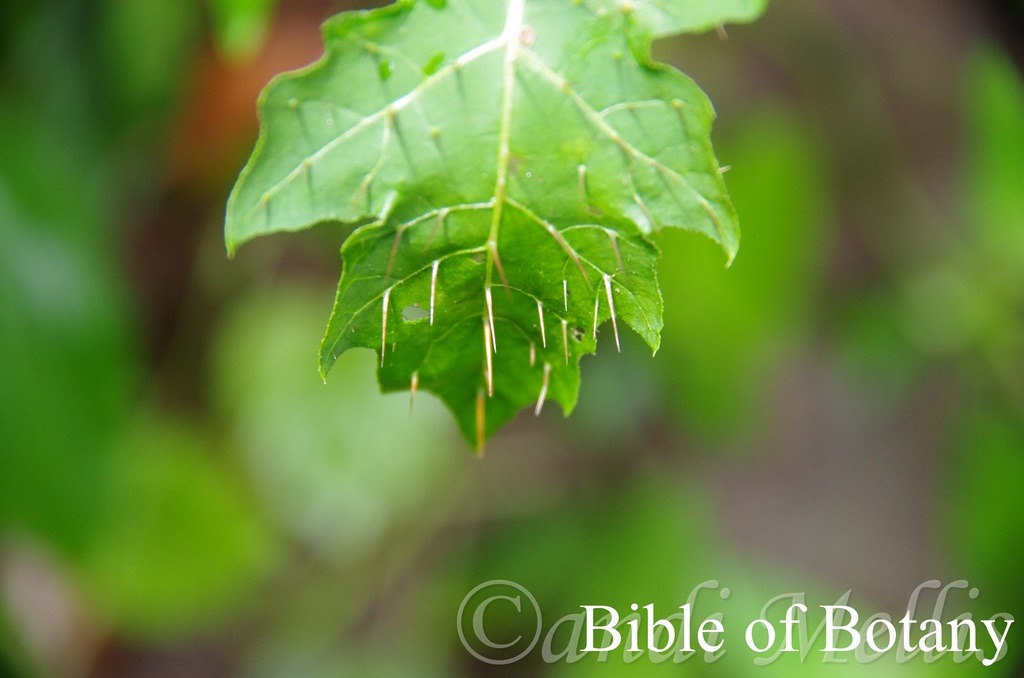
Wombat Creek Conservation Park NSW
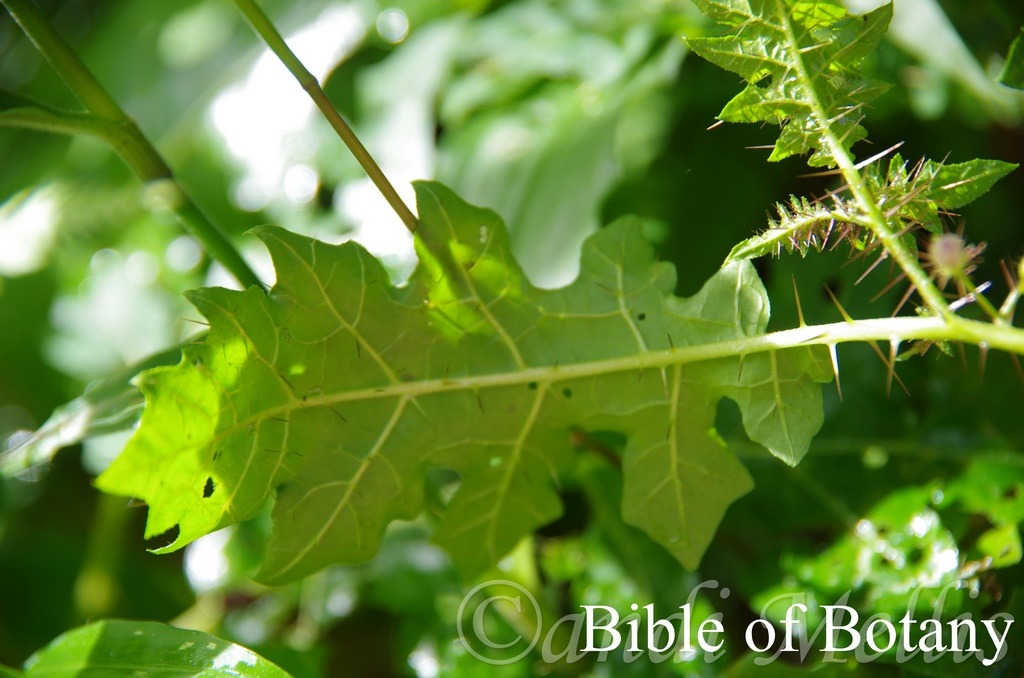
Wombat Creek Conservation Park NSW
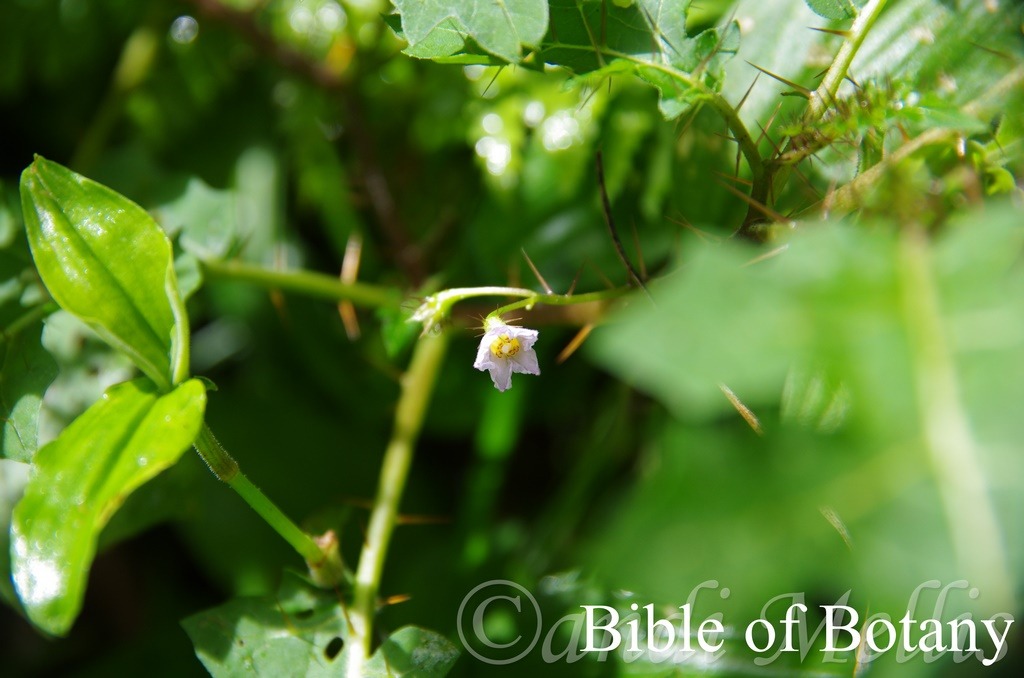
Wombat Creek Conservation Park NSW

Wombat Creek Conservation Park NSW
Solanum campanulatum
Classification:
Unranked: Eudicots
Unranked: Asterids
Order: Solanales
Family: Solanaceae
Subfamily: Solanoideae
Tribe: Solaneae
Genus: From Solanace, which is Latin for the nightshade plants. It refers to the family of plants, which includes the potato, tomato, capsicum and chillies.
Specie: From Campanulatum, which is Latin for a bell. It refers to flowers, or fruits which have a distinctive bell shape.
Sub specie:
Common Name:
Distribution:
Solanum campanulatum is found south near Dubbo in south east Queensland to Armidale on the Northern Tablelands in Northern New South Wales and from Muswellbrook to Bargo central New South Wales from Tenterfield. It is found on the Western slopes, on and east of the Great Dividing Range.
https://avh.ala.org.au/occurrences/search?taxa=Solanum+campanulatum#tab_mapView
Habitat Aspect Climate:
Solanum campanulatum prefers light dappled shade to full sun. It grows adjacent to warm moist subtropical, tropical Rainforests, warm, dry rainforests or moist Eucalyptus forests. The altitude ranges from 5 meters ASL to 850 meters ASL.
The temperatures range from minus 3 degrees in August to 36 degrees in January.
The rainfalls range from lows of 900mm to 1700mm average per annum.
Soil Requirements:
Solanum campanulatum prefers better quality loams to medium clays. The soils are derived from decomposed sandstones, granites, brown basalt, and black basalts or metamorphic. The soils pH ranges from 5pH to 6pH. It does not tolerate water logged soils. Non saline soils to moderately saline soils are tolerated.
Height & Spread:
Wild Plants: 0.5m to 1m by 0.5m to 1m.
Characteristics:
Solanum campanulatum grows as a low growing ascending shrub with green, glabrous stems. The smaller stems are pale yellow green to mid green. The branchlets are glabrous and covered in white to purple stellate, and simple glandular hairs. All parts of the stems are covered in golden or deep purple, rigid needle like setose hairs. The plants will sucker if the above ground section is damaged.
The alternate leaves of Solanum campanulatum are elliptical, ovate to oblong lanceolate and measure 80mm to 130mm in length by 50mm to 90mm in width. The petioles measure 20mm to 50mm in length. The bases are broad truncate to cordate while the apexes are broad acute. The discolourous laminas are sea-green, mid grass-green to deep sea green, dull and densely covered in white pubescent and stellate hairs. It is also sparsely covered in 2mm to 6mm rigid needle like setose hairs. The leaf and lobe margins are entire, flat, or slightly recurve from the mid vein to the margins and decurve near the apex. The mid vein and main laterals are prominent on the lower laminas and are distinctly visible from the upper laminas.
The inflorescences of Solanum campanulatum are born on a raceme from the leaf axils. There are 4 to 10 individual flowers to a raceme. The mid purplish green, green to deep green almost black peduncles, rachises and pedicels are glabrous and covered in golden rigid setose needle like hairs. The peduncles measure 25mm to 40mm in length while the rachises measure 20mm to 30mm and the pedicels measure 15mm to 20mm in length. The green calyxes are covered in golden rigid setose needle like hairs and measure 7mm to 12mm in length while the 5 lobes are erect, glabrous and measure 5mm to 8mm in length. The campanulate corolla measures 10mm to 15mm in length while the deep purple to deep pink or rarely white rotate-stellate lobes are united yellow at the center. They measure 10mm to 15mm in length. The lobes apexes are truncate and undulating.
Solanum campanulatum flowers are andromonoecious. An andromonoecious species is one in which there are both male and perfect flowers on the one plant. The 5 exserted stamens extend from the center of the corolla tube. The filaments are deep yellow while the basifixed anthers are bright yellow. The filaments measure 1mm to 1.5mm in length while the anthers measure 5mm to 8mm in length and converge around the style.
The yellow style and stigma are glabrous while the superior, ovoidal ovary is pale green. The pistil measures 7mm to 11mm in length. The glabrous pistil measures 5mm to 7mm. Solanum campanulatum’s flowers appear throughout the year but more frequently in the warmer months.
The fruits of Solanum campanulatum are ovoidal berries. The berries are glabrous and measure 8mm to 15mm in length by 8mm to 15mm in diameter. The green capsules turn orange-red when ripe then quickly deteriorate and dry to a grey brown. The calyxes are persistent on the ripe fruits. The fawnish seeds are flattened and ellipsoidal and measure 2.5mm to 4mm in length.
Confusing Species:
Solanum campanulatum has shallow obtuse leaf lobes. The sepals cover about 50mm of the fruit while the seeds are fawnish-yellow.
Solanum ditrichum has 6 to 12 acute leaf lobes. The sepals are barely clasping the fruit while the seeds are pale cream.
Wildlife:
Solanum campanulatum support native bees and native flies along the coast when in flower. The leaves of bush plants are often devoured by unknown butterfly larvae.
WARNING: Many Solanum species are poisonous and many species; perhaps all, have some parts that are poisonous, or the edible parts are only edible at certain times of the year while being poisonous at other times.
Some native species of Solanum were known as traditional Aboriginal bush tucker plants. Others are introduced edible weeds.
Several native species are listed in Wild Food Plants of Australia by Cribb Not all of these are edible however some had specific uses or had to be treated first before eating: Solanum aviculare (Rainforest Kangaroo Apple), Solanum centrale (Desert Raisin), Solanum chippendalei (Bush Tomato), Solanum diversiflorum (Kakarrta), Solanum ellipticum, Solanum esuriale, Solanum laciniatum (Southern Kangaroo Apple), Solanum linearifolium (Mountain Kangaroo Apple), Solanum mauritianum (Wild Tobacco, Tobacco Bush), and Solanum vescum (Gunyang). Of these, Solanum aviculare, Solanum laciniatum, and Solanum mauritanum are the most common species that people come into contact with.
The Rainforest Kangaroo Apple is apparently only barely edible, so should be eaten sparingly.
Of the Solanum species which occur in Australia, Solanum americanum, Solanum scabrum and Solanum villosum and Solanum opacum are also considered to be edible.
People with allergies to tomatoes, peanuts or potatoes should be wary of eating any fruit of the solanaceae family as they all contain small amounts of the alkaloid sola.
Solanum aviculare Kangaroo Apple
Solanum centrale is also known as Desert Raisin, Bush Raisin or Bush Sultana, or by the native name kutjera.
Solanum chipendalei is known as Bush Tomato.
Solanum coactiliferum Aborigines roasted the fruit before eating.
Solanum diversifolium is known as Bush Tomato, Karlumbu, Pilirta, Wamurla districts.
Solanum ellipticum Potato Bush is very similar to Solanum quadriliculatum which is poisonous.
Solanum lacinatum is known as Kangaroo Apple.
Solanum orbicaltum is known as Round-leaved Solanum.
Solanum pholomoides is also known as Wild Tomato.
Solanum vescum.
Solanum cinerium is poisonous
Aborigines burned off the outer skin of Solanum aviculare as eating them raw caused the mouth to blister. Aborigines ate the fruit of Solanum centrale raw or put it on the hot earth by the fire, sprinkle some water on the fruits and cover them up to cook them. Solanum chippendalei is consumed by first splitting the fruit, scraping the center out and eating the outer flesh as the seeds and surrounding placenta are bitter. Solanum diversiflorum is roasted before being eaten or dried. Fruit of Solanum orbiculatum is edible, but the fruit of the large leafed form may be bitter. Fruit of Solanum phlomoidesappears to be edible after the removal of seeds and roasting or sun drying. Mardu people would dry the fruits to consume them at a later date.
Solanum aviculare contains solasodine, a steroid used in the manufacture of oral contraceptives. I have not tried the fruits so cannot vouch for any of what is said first hand.
Cultivation:
Solanum campanulatum is a perennial shrub that should be grown amongst other shrubs or adjacent to small rainforest clearings. In cultivation it grows from 0.5 meters to 1 meter in height by 0.5 meters to 1 meter in diameter when grown in the open.
It grows exceptionally well on most rainforest soils where deep leaf litter keeps the soil cool and moisture at an even level. If these requirements are met they can cope with temperatures as low as minus 1 degree and up to 36 degrees. It is not drought resistant.
Add to the above, if it is given an adequate supply of water and a little native fertilizer on a regular basis the plants do respond with good flowering and larger fruit over a long period. It is best planted amongst other natives so the flowers are on display. They would look particularly attractive in a court yard or around a swimming pool where people cannot come in contact with the leaves. It adds interest and are a great conversation piece. Treat them as an annual for best flowering.
Propagation:
Seeds: The seeds of Solanum campanulatum can be removed easily from the fruits.
Sow fresh seeds directly into a seed raising mix, keeping them moist not wet. Do not over water as the seeds will rot off before germination takes place. Place the trays in a cool shaded area with 50mm shade cloth in the bush house. When the seedlings are 30mm to 50mm tall, prick them out and plant them into 50mm native tubes using a good organic mix.
As the seedlings roots reach the bottom of the tubes plant them out into their permanent position. Do not delay.
Fertilize using Seaweed, fish emulsion or organic chicken pellets soaked in water and apply the liquid on an alternate basis. Fertilize every 2 months until the plants are well established then on an annual basis in September or March to maintain health, vigour and better flowering.
Further Comments from Readers:
“Hi reader, it seems you use The Bible of Botany a lot. That’s great as we have great pleasure in bringing it to you! It’s a little awkward for us to ask, but our first aim is to purchase land approximately 1,600 hectares to link several parcels of N.P. into one at The Pinnacles NSW Australia, but we need your help. We’re not salespeople. We’re amateur botanists who have dedicated over 30 years to saving the environment in a practical way. We depend on donations to reach our goal. If you donate just $5, the price of your coffee this Sunday, We can help to keep the planet alive in a real way and continue to bring you regular updates and features on Australian plants all in one Botanical Bible. Any support is greatly appreciated. Thank you.”
In the spirit of reconciliation we acknowledge the Bundjalung, Gumbaynggirr and Yaegl and all aboriginal nations throughout Australia and their connections to land, sea and community. We pay our respect to their Elders past, present and future for the pleasures we have gained.
Solanum centrale
Classification:
Unranked: Eudicots
Unranked: Asterids
Order: Solanales
Family: Solanaceae
Subfamily: Solanoideae
Tribe: Solaneae
Genus: From Solanace, which is Latin for the nightshade plants. It refers to the family of plants, which includes the potato, tomato, capsicum and chillies.
Specie: From Centralis, which is Latin for to being in the middle. It refers to plants, which are confined to the middle of their environment or more often to the center of the continent or country.
Sub specie:
Common Name: Native Raison or Desert Raison.
The local aborigines know it as Kutjera.
Distribution:
Solanum centrale is a wide spread species found throughout central western, Western Australia to central Australia.
https://avh.ala.org.au/occurrences/search?taxa=Solanum+centrale#tab_mapView
Habitat Aspect Climate:
Solanum centrale is a clonal perennial herb, meaning that all the plants are identical. It prefers light dappled shade to full sun. It grows on dunes or plains especially those that are sparsely vegetated. The altitude ranges from 200 meters ASL to 730 meters ASL.
The temperatures range from 1 degree in August to 39 degrees in January.
The rainfalls range from lows of 150mm to 400mm average per annum.
Soil Requirements:
Solanum centrale prefers red sands, red sandy loams and light red sandy clays. The soils are usually derived from decomposed red or orange sandstones. The soils pH ranges from 4.5pH to 6pH. It does not tolerate water logged soils. Non saline soils to moderately saline soils are tolerated.
Height & Spread:
Wild Plants: 0.1m to 0.8m by 0.5m to 0.8m
Characteristics:
Solanum centrale grows as an ascending small shrub with pale grey stems. The stems are pale yellow green and densely covered in pale yellow or rusty pulverulent and stellate hairs. The stems are very sparsely covered in short rough or blunt prickles that measure 1mm to 5mm in length.
The alternate, ovate to oblong-ovate leaves of Solanum centrale measure 30mm to 80mm in length by 10mm to 40mm in width. The petiole measures 5mm to 15mm in length. The bases are cuneate, rounded, cordate to attenuate and oblique to 1.5mm. The apexes are obtuse to broadly acute. The concolourous laminas are blue green to yellow green, dull and densely covered in golden yellow or rusty yellow stellate hairs. The leaf margins are entire, flat and recurve from the mid vein to the margins and decurve slightly near the apex. The mid vein is slightly prominent on the lower laminas.
Inflorescences of Solanum centrale are born on a short raceme or from a small cluster from the leaf axils. There are 1 to 6 individual flowers to a cluster or peduncle. The mid blue green or yellow green peduncles, rachises and pedicels are densely covered in golden yellow to rusty yellow stellate hairs. The peduncles measure 0mm to 10mm in length while the rachises measures 5mm to 15mm and the pedicels measure 6mm to 10mm in length. The pale blue green to pale yellow green calyxes are covered in golden yellow to rusty yellow stellate hairs and measure 4mm to 6mm in length while the 5 triangular lobes are erect, glabrous and measure 1.5mm to 2.5mm in length. The mauve to purple campanulate corollas measure 7mm to 10mm in length while strongly decurve lobes are yellow at the center. The lobes measure 10mm to 13mm in length. The lobes apexes are truncate and undulating.
The 5 exserted stamens extend from the mouth of the corolla tube. The filaments are deep yellow while the basifixed anthers are bright yellow. The filaments measure 1mm to 2mm in length while the anthers measure 4.5mm to 6.5mm in length and converge around the style.
The white style and stigma are glabrous while the superior, green, ovoidal ovary measures 1mm to 2mm in length. The glabrous pistil measures 9mm to 10mm. Solanum centrale flowers appear from April through to September.
The fruits of Solanum centrale are globose berries. The large berries are glabrous and covered in white film and measure 10mm to 15mm in length by 22mm to 52mm in diameter. The green berries turn yellow before drying to a mid-brown with a raison like texture while still attached to the plant. The calyx lobes are persistent on the ripe fruit. The pale yellow to fawn seeds measure 2mm to 4mm in length by 2mm in diameter. The fruit ripen from September to November.
Wildlife:
Solanum centrale support native bees and native flies along the coast when in flower. The fruits once were an important part of the Aboriginal diet.
The fruit looks like a raison and remains on the bushes for an extended period. They have a similar taste to dried tomatoes.
WARNING: Many Solanum species are poisonous and many species; perhaps all, have some parts that are poisonous, or the edible parts are only edible at certain times of the year while being poisonous at other times.
Some native species of Solanum were known as traditional Aboriginal bush tucker plants. Others are introduced edible weeds.
Several native species are listed in Wild Food Plants of Australia by Cribb Not all of these are edible however some had specific uses or had to be treated first before eating: Solanum aviculare (Rainforest Kangaroo Apple), Solanum centrale (Desert Raisin), Solanum chippendalei (Bush Tomato), Solanum diversiflorum (Kakarrta), Solanum ellipticum, Solanum esuriale, Solanum laciniatum (Southern Kangaroo Apple), Solanum linearifolium (Mountain Kangaroo Apple), Solanum mauritianum (Wild Tobacco, Tobacco Bush), and Solanum vescum (Gunyang). Of these, Solanum aviculare, Solanum laciniatum, and Solanum mauritanum are the most common species that people come into contact with
The Rainforest Kangaroo Apple is apparently only barely edible, so should be eaten sparingly.
Of the Solanum species which occur in Australia, Solanum americanum, Solanum scabrum and Solanum villosum and Solanum opacum are also considered to be edible.
People with allergies to tomatoes, peanuts or potatoes should be wary of eating any fruit of the solanaceae family as they all contain small amounts of the alkaloid sola.
Solanum aviculare Kangaroo Apple
Solanum centrale is also known as Desert Raisin, Bush Raisin or Bush Sultana, or by the native name kutjera.
Solanum chipendalei is known as Bush Tomato.
Solanum coactiliferum Aborigines roasted the fruit before eating.
Solanum diversifolium is known as Bush Tomato, Karlumbu, Pilirta, Wamurla districts.
Solanum ellipticum Potato Bush is very similar to Solanum quadriliculatum which is poisonous.
Solanum lacinatum is known as Kangaroo Apple.
Solanum orbicaltum is known as Round-leaved Solanum.
Solanum pholomoides is also known as Wild Tomato.
Solanum vescum.
Solanum cinerium is poisonous
Aborigines burned off the outer skin of Solanum aviculare as eating them raw caused the mouth to blister. Aborigines ate the fruit of Solanum centrale raw or put it on the hot earth by the fire, sprinkle some water on the fruits and cover them up to cook them. Solanum chippendalei is consumed by first splitting the fruit, scraping the center out and eating the outer flesh as the seeds and surrounding placenta are bitter. Solanum diversiflorum is roasted before being eaten or dried. Fruit of Solanum orbiculatum is edible, but the fruit of the large leafed form may be bitter. Fruit of Solanum phlomoidesappears to be edible after the removal of seeds and roasting or sun drying. Mardu people would dry the fruits to consume them at a later date.
Solanum aviculare contains solasodine, a steroid used in the manufacture of oral contraceptives. I have not tried the fruits so cannot vouch for any of what is said first hand.
Cultivation:
Solanum centrale is a perennial shrub that should be grown in the open in full sun on sand or sandy loams. In cultivation they will grow from 0.5 meters to 0.8 meters in height by 0.5 meters to 0.8 meters in diameter when grown in the open.
The plants can be watered sparingly to fertilize in arid areas which will induce a longer flowering period and better fruit set. Fertilized plants will produce fruit for around 8 months of the year instead of the conventional 5 months in the wild. If these requirements are met they can cope with temperatures as low as minus 1 degree and up to 44 degrees. It is drought resistant once established but will defoliate and abort fruit, leaves and stems to support an underground tuber.
Place them near old stumps and roots to make the stumps or roots look larger. Select an area of ground and let your hair down and be imaginative and this is the plant that may just change your life. Remember this plant is rather sensitive to water so a very well drained site is absolutely necessary for successful growth. When planting a desert type of garden be very sparingly with the other plants when planting and remember that deserts are rolling flat plains not steep hills so it is best to use a gentle slope or a basin with a small pool at the bottom. A billabong affect is the go, not a waterfall or cascades. They also look great on rock ledges and steep dry sandy banks.
Solanum centrale would make a great contribution to a sandy or rocky terrain rock garden. Here they can be used as fill in plants, scattered throughout the boulders. When you use them in area that is strewn with large boulders do not over crowd the scene as the boulders are a formidable part of the scene. Solanum centrale is well suited to such conditions so use contours to display the plants. Boulder country are almost always rising and falling in contour and have sharp rises. Plants must be planted sparingly with short annuals between to give vibrant colour. Make the scene so you can see over the tallest ones with the exception of one or two plants at the most. The idea is to achieve a feeling of expansive harshness. This can be achieved with using Solanum centrale’s pale blue green with yellow green oblong leaves contrast well with finer pale green or deep green or red coloured foliages. If large deep green leaf plants are wanted try using them as prostrate plants. Use a lot of procumbent plants like Hibbertia to make the rocks look larger and the spaces between the plants bigger. Mix them with other smaller shrubs so none of them dominate the scene but blend in to give a mosaic of foliage colours that you oversee. Here I immediately think of Actinotis helianthi or Grevillea thelemanniana for two great contrasting foliages however Actinotis species may be a little over powering.
Solanum centrale is a commercial proposition and is being produced by local native farmers organically in central Australia. They need full sun, fertile sandy soils and should be planted in rows 2.5 meters apart and 1 meter apart in the rows.
Propagation:
Seeds: The seeds of Solanum centrale can be removed easily from the fruits.
Sow fresh seeds directly into a seed raising mix, keeping them moist not wet. Do not over water as the seeds will rot off before germination takes place. Place the trays in a cool shaded area with 50mm shade cloth in the bush house. When the seedlings are 30mm to 50mm tall, prick them out and plant them into 50mm native tubes using a good organic mix.
As the seedlings roots reach the bottom of the tubes plant them out into their permanent position. Do not delay.
Fertilize using Seaweed, fish emulsion or organic chicken pellets soaked in water and apply the liquid on an alternate basis. Fertilize every 2 months until the plants are well established then on an annual basis in September or March to maintain health, vigour and better flowering and fruiting.
Further Comments from Readers:
“Hi reader, it seems you use The Bible of Botany a lot. That’s great as we have great pleasure in bringing it to you! It’s a little awkward for us to ask, but our first aim is to purchase land approximately 1,600 hectares to link several parcels of N.P. into one at The Pinnacles NSW Australia, but we need your help. We’re not salespeople. We’re amateur botanists who have dedicated over 30 years to saving the environment in a practical way. We depend on donations to reach our goal. If you donate just $5, the price of your coffee this Sunday, We can help to keep the planet alive in a real way and continue to bring you regular updates and features on Australian plants all in one Botanical Bible. Any support is greatly appreciated. Thank you.”
In the spirit of reconciliation we acknowledge the Bundjalung, Gumbaynggirr and Yaegl and all aboriginal nations throughout Australia and their connections to land, sea and community. We pay our respect to their Elders past, present and future for the pleasures we have gained.
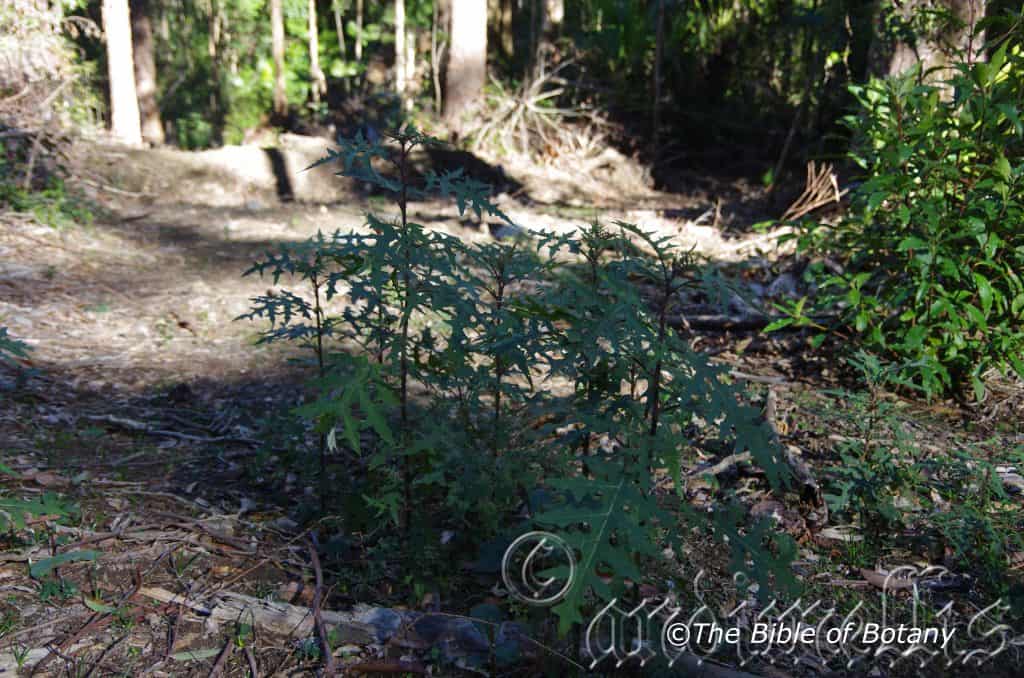
Erwingar State Forest NSW
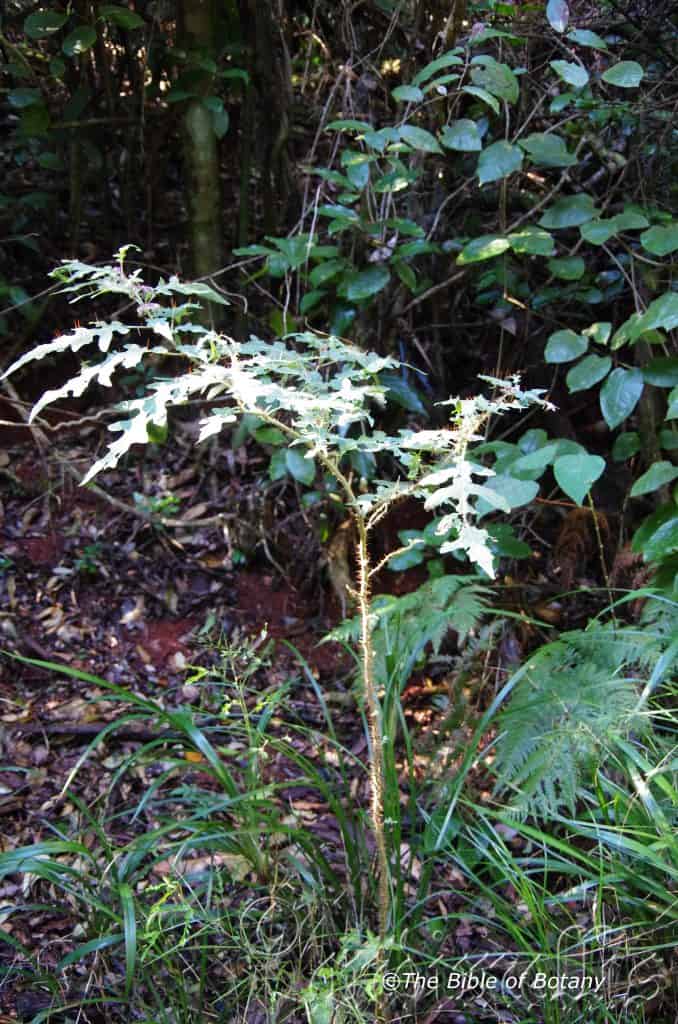
Washpool National Park NSW

Washpool National Park NSW
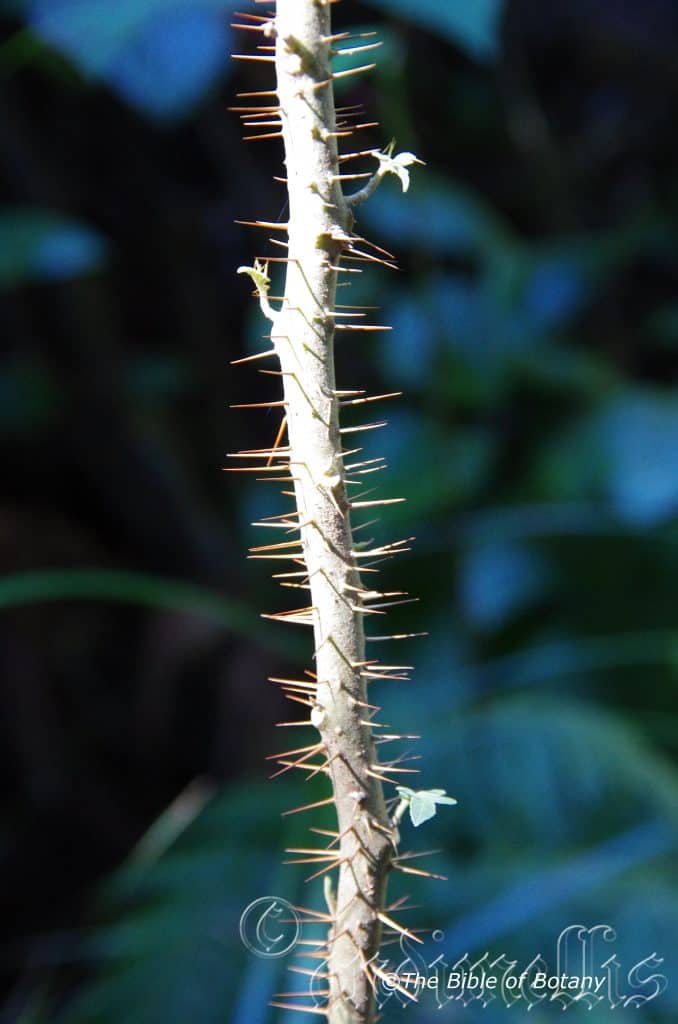
Washpool National Park NSW
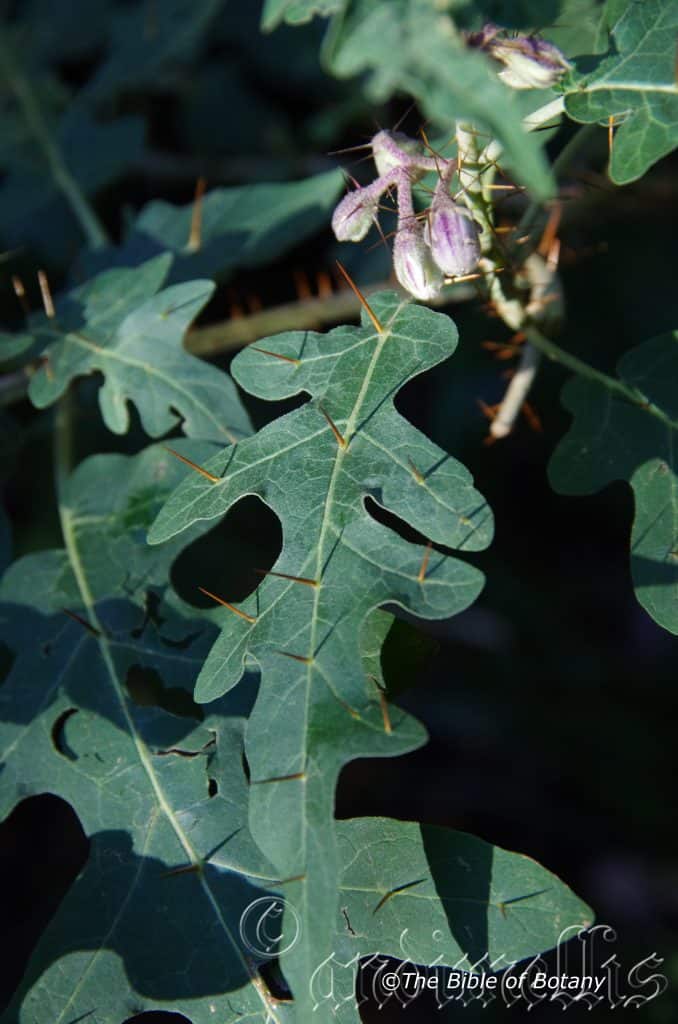
Washpool National Park NSW
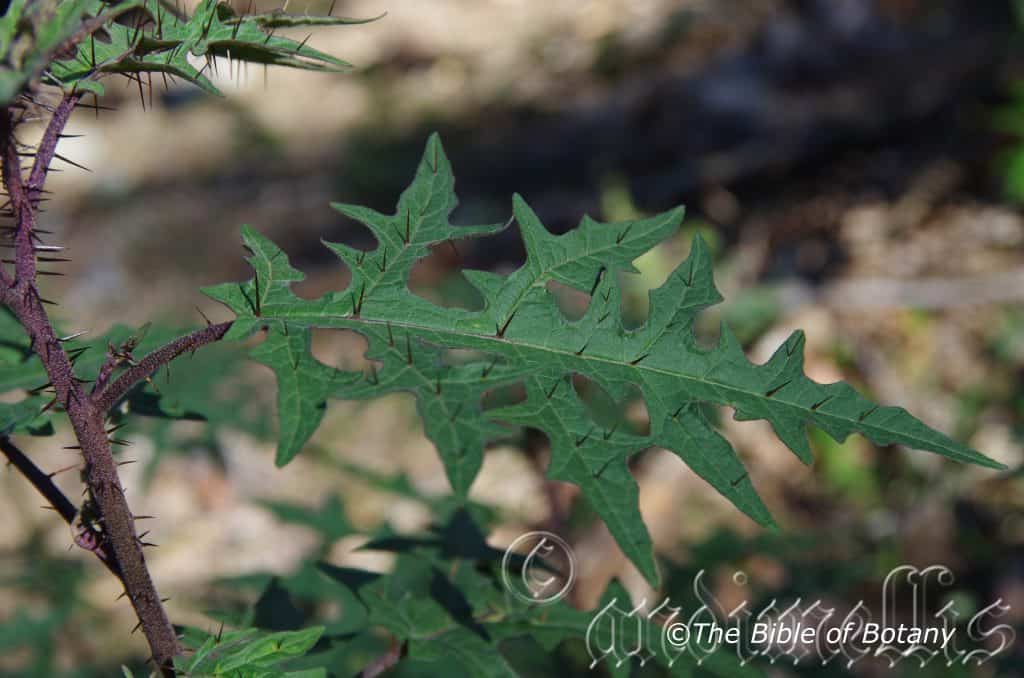
Washpool National Park NSW
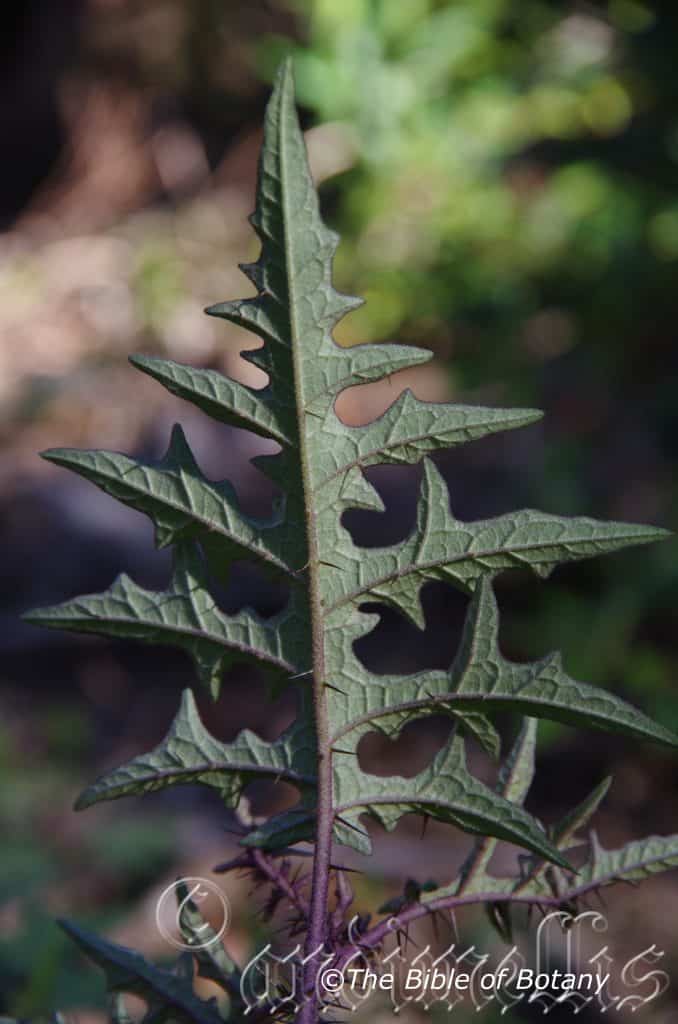
Erwingar State Forest NSW

Washpool National Park NSW
Solanum cinereum
Classification:
Unranked: Eudicots
Unranked: Asterids
Order: Solanales
Family: Solanaceae
Subfamily: Solanoideae
Tribe: Solaneae
Genus: From Solanace, which is Latin for the nightshade plants. It refers to the family of plants, which includes the potato, tomato, capsicum and chillies.
Specie: From kónis, which is Ancient Greek or later Cinis, which is Latin for ashen or to be like ash. It refers to organs or structures usually the leaves, which are ash grey in colour.
Sub specie:
Common Name: Narrawa Burr.
Distribution:
Solanum cinereum is found in 2 main disjunct populations. The first is south from Herries Range in far south eastern Queensland to Broadford in in central eastern Victoria. It is found on the western slopes, on and east of the Great Dividing Range.
The second population is found south from Mudlapena Gap to Adelaide in South Australia.
https://avh.ala.org.au/occurrences/search?taxa=Solanum+cinereum#tab_mapView
Habitat Aspect Climate:
Solanum cinereum prefers light dappled shade to full sun. It grows in open woodlands and savanah grasslands with various Acacia species. The altitude ranges from 200 meters ASL to 730 meters ASL.
The temperatures range from minus 5 degree in August to 44 degrees in January.
The rainfalls range from lows of 450mm to 1000mm average per annum.
Soil Requirements:
Solanum cinereum prefers light red clays to medium red or white clays. The soils are usually derived from decomposed granite or sandstone. The soils pH ranges from 5pH to 6.5pH. It does not tolerate water logged soils. Non saline soils to moderately saline soils are tolerated.
Height & Spread:
Wild Plants: 0.5m to 1m by 0.6m to 1.2m.
Characteristics:
Solanum cinereum often grows as an erect, bushy or sprawling clonal shrub. Plants in a given area all have the same genetic traits. The stems are with scattered to abundant golden-brown stellate hairs on the stems and sharp reddish–brown thorns that measure 5mm to 8mm in length.
This is an andromonoecious species, where there are male flowers and bisexual flowers on the one plant. Often there are many male flowers in an inflorescence with 1 or at times 2 bisexual flowers at their base.
The alternate, ovate to elliptic leaves measure 60mm to 100mm in length by 30mm to 60mm in width. The terete petioles are glabrous to densely covered in white pubescent and stellate hairs with sharp reddish–brown thorns that measure 5mm to 8mm in length. The terete petioles are glabrous to densely covered in white pubescent and stellate hairs with sharp reddish–brown thorns. The petioles measures 5mm to 15mm in length. The apexes are acuminate. The discolourous laminas are mid green, dull, glabrous with the mid vein being sparsely covered in golden or rusty-red puberulent hairs on the upper laminas. The laminas are deeply lobed and recurve upwards slightly from the mid vein and lateral veins to the margins. The discolorous deep green or deep grey-green, lamina is sparsely covered in pubescent hairs with stellate hairs, while the lower laminas are densely covered in pubescent hairs with stellate hairs, mostly along the veins. There are some minute glandular hairs also present on the lower lamina. The thorns measure 10mm to 15mm in length. The mid vein and lateral veins are very strongly prominent on the lower lamina.
The inflorescences are born on a short raceme or from a small cluster from the leaf axils. There are 3 to 7 individual flowers to a cluster or peduncle. The peduncles measure 2mm to 10mm in length, while the rachis measure 45mm to 60mm in length and the pedicels measure 5mm to 8mm in length. The calyx and calyx lobes are covered in pubescent hairs and stellate hairs with long thorns. The calyx measure 4mm to 6mm in length while the 5 triangular lobes measure 2mm to 3mm in length. The mauve to purple campanulate, rotate corolla measures 15mm to 20mm in length.
The 5 white filaments measure 0.5mm to 1mm in length, while the basifixed, linear anthers measure 3mm to 4mm in length.
The white style and green stigma are glabrous and measures 5mm to 7mm in length. The flowers appear throughout the year but are more frequently found during the warmer months.
Solanum cinereum fruits are globose berries. The berries are glabrous and measure 15mm to 20mm in diameter. The green berries turn deep brown with a smooth texture while still attached to the plant. The calyx lobes are persistent on the ripe fruit. The flat, orbicular, deep brown seeds measure 3mm to 4mm in length.
Wildlife:
Solanum cinereum support native bees and native flies along the coast when in flower.
WARNING: Many Solanum species are poisonous and many species; perhaps all, have some parts that are poisonous, or the edible parts are only edible at certain times of the year while being poisonous at other times.
Some native species of Solanum were known as traditional Aboriginal bush tucker plants. Others are introduced edible weeds.
Several native species are listed in Wild Food Plants of Australia by Cribb Not all of these are edible however some had specific uses or had to be treated first before eating: Solanum aviculare (Rainforest Kangaroo Apple), Solanum centrale (Desert Raisin), Solanum chippendalei (Bush Tomato), Solanum diversiflorum (Kakarrta), Solanum ellipticum, Solanum esuriale, Solanum laciniatum (Southern Kangaroo Apple), Solanum linearifolium (Mountain Kangaroo Apple), Solanum mauritianum (Wild Tobacco, Tobacco Bush), and Solanum vescum (Gunyang). Of these, Solanum aviculare, Solanum laciniatum, and Solanum mauritanum are the most common species that people come into contact with.
The Rainforest Kangaroo Apple is apparently only barely edible, so should be eaten sparingly.
Of the Solanum species which occur in Australia, Solanum americanum, Solanum scabrum and Solanum villosum and Solanum opacum are also considered to be edible.
People with allergies to tomatoes, peanuts or potatoes should be wary of eating any fruit of the solanaceae family as they all contain small amounts of the alkaloid sola.
Solanum aviculare Kangaroo Apple
Solanum centrale is also known as Desert Raisin, Bush Raisin or Bush Sultana, or by the native name kutjera.
Solanum chipendalei is known as Bush Tomato.
Solanum coactiliferum Aborigines roasted the fruit before eating.
Solanum diversifolium is known as Bush Tomato, Karlumbu, Pilirta, Wamurla districts.
Solanum ellipticum Potato Bush is very similar to Solanum quadriliculatum which is poisonous.
Solanum lacinatum is known as Kangaroo Apple.
Solanum orbicaltum is known as Round-leaved Solanum.
Solanum pholomoides is also known as Wild Tomato.
Solanum vescum.
Solanum cinerium is poisonous
Aborigines burned off the outer skin of Solanum aviculare as eating them raw caused the mouth to blister. Aborigines ate the fruit of Solanum centrale raw or put it on the hot earth by the fire, sprinkle some water on the fruits and cover them up to cook them. Solanum chippendalei is consumed by first splitting the fruit, scraping the center out and eating the outer flesh as the seeds and surrounding placenta are bitter. Solanum diversiflorum is roasted before being eaten or dried. Fruit of Solanum orbiculatum is edible, but the fruit of the large leafed form may be bitter. Fruit of Solanum phlomoidesappears to be edible after the removal of seeds and roasting or sun drying. Mardu people would dry the fruits to consume them at a later date.
Solanum aviculare contains solasodine, a steroid used in the manufacture of oral contraceptives. I have not tried the fruits so cannot vouch for any of what is said first hand.
Cultivation:
Solanum cinereum is a perennial shrub that can be grown in the open or sheltered garden positions in small to large gardens. In cultivation it grows from 1 meter to 1.2 meters in height by 0.8 meters to 1 meter in diameter when grown in the open.
Place them near the edge of forests. Solanum cinereum would make a great contribution to a sandy or rocky terrain rock garden. Here they can be used as fill in plants, scattered throughout the boulders. When you use them in area that is strewn with large boulders do not over crowd the scene as the boulders are a formidable part of the scene. Solanum centrale is well suited to such conditions so use contours to display the plants. Boulder country are almost always rising and falling in contour and have sharp rises. Plants must be planted sparingly to allow them to fully develop otherwise they become straggly.
Plant it with short annuals between to give vibrant colour. Make the scene so you can see over the tallest ones with the exception of one or two plants at the most. The idea is to achieve a feeling of lushness. This can be achieved with using Solanum cinereum mid green leaves contrast well with other large pale green, deep green or red coloured foliages. Use procumbent plants like Hibbertia specie to make the rocks look larger and the spaces between the plants bigger. Mix them with other smaller shrubs so none of them dominate the scene but blend in to give a mosaic of foliage colours that you oversee. Here I immediately think of Actinotis helianthi or smaller red flowering Grevillea specie for two great contrasting foliages however Actinotis may be a little over powering unless the Solanum cinereum are pruned lightly to induce a small dense shrub.
Propagation:
Seeds: The seeds of Solanum cinereum can be removed easily from the fruits.
Sow fresh seeds directly into a seed raising mix, keeping them moist not wet. Do not over water as the seeds will rot off before germination takes place. Place the trays in a cool shaded area with 50mm shade cloth in the bush house. When the seedlings are 20mm to 25mm tall, prick them out and plant them into 50mm native tubes using a good organic mix.
As the seedlings roots reach the bottom of the tubes plant them out into their permanent position. Do not delay.
Fertilize using Seaweed, fish emulsion or organic chicken pellets soaked in water and apply the liquid on an alternate basis. Fertilize every 2 months until the plants are well established then on an annual basis in September or March to maintain health, vigour and better flowering and fruiting.
Further Comments from Readers:
“Hi reader, it seems you use The Bible of Botany a lot. That’s great as we have great pleasure in bringing it to you! It’s a little awkward for us to ask, but our first aim is to purchase land approximately 1,600 hectares to link several parcels of N.P. into one at The Pinnacles NSW Australia, but we need your help. We’re not salespeople. We’re amateur botanists who have dedicated over 30 years to saving the environment in a practical way. We depend on donations to reach our goal. If you donate just $5, the price of your coffee this Sunday, We can help to keep the planet alive in a real way and continue to bring you regular updates and features on Australian plants all in one Botanical Bible. Any support is greatly appreciated. Thank you.”
In the spirit of reconciliation we acknowledge the Bundjalung, Gumbaynggirr and Yaegl and all aboriginal nations throughout Australia and their connections to land, sea and community. We pay our respect to their Elders past, present and future for the pleasures we have gained.
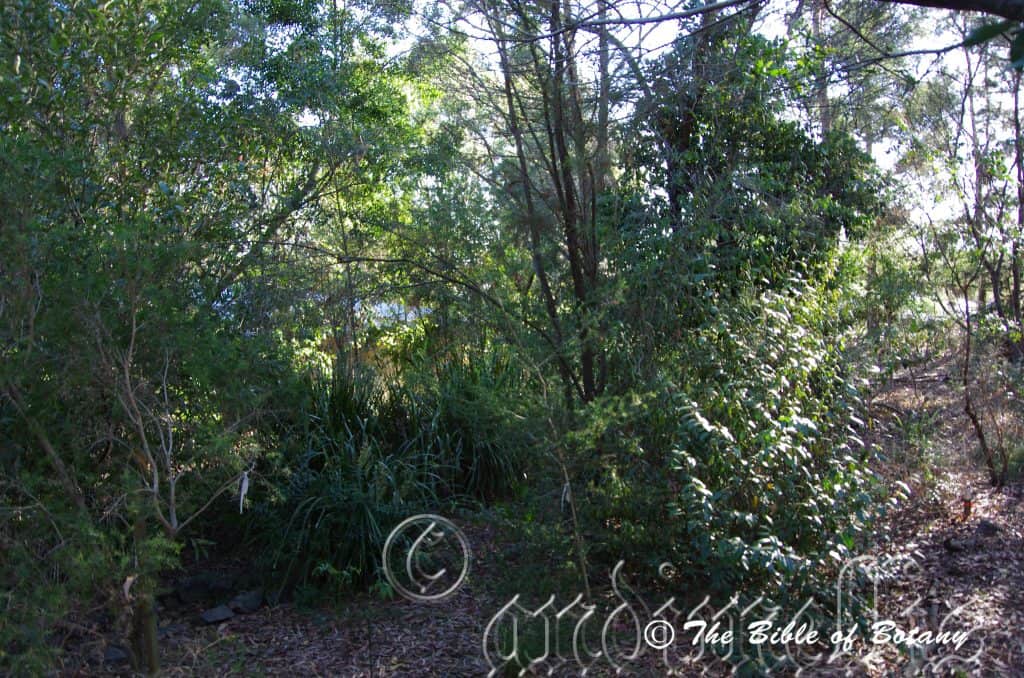
Greening Australia Norman Park Qld.

Greening Australia Norman Park Qld.

Greening Australia Norman Park Qld.
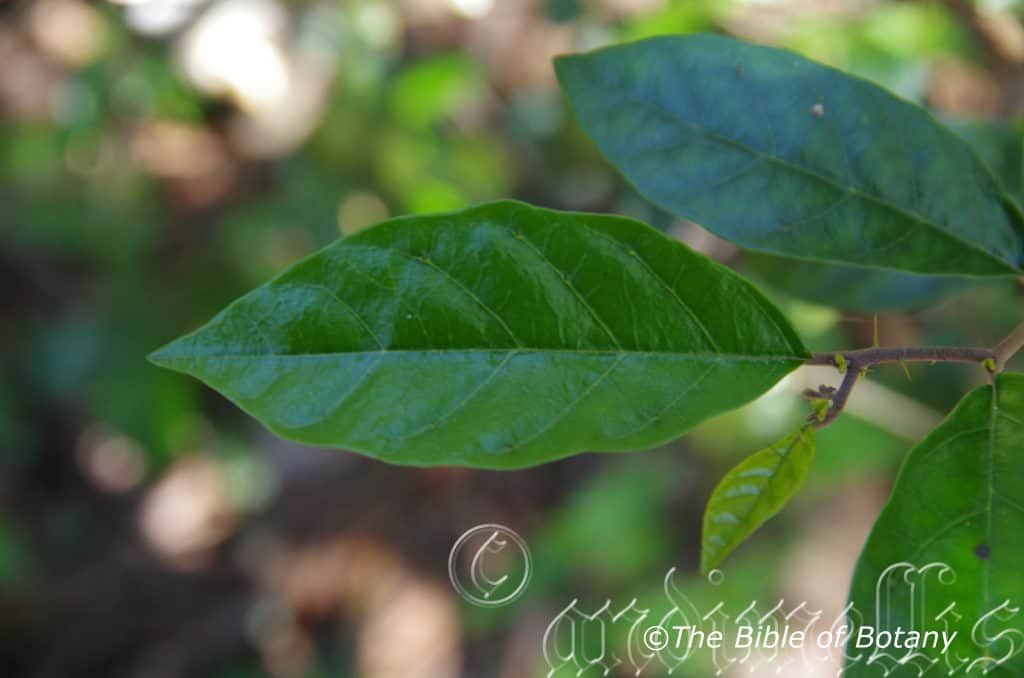
Greening Australia Norman Park Qld.

Greening Australia Norman Park Qld.

Greening Australia Norman Park Qld.
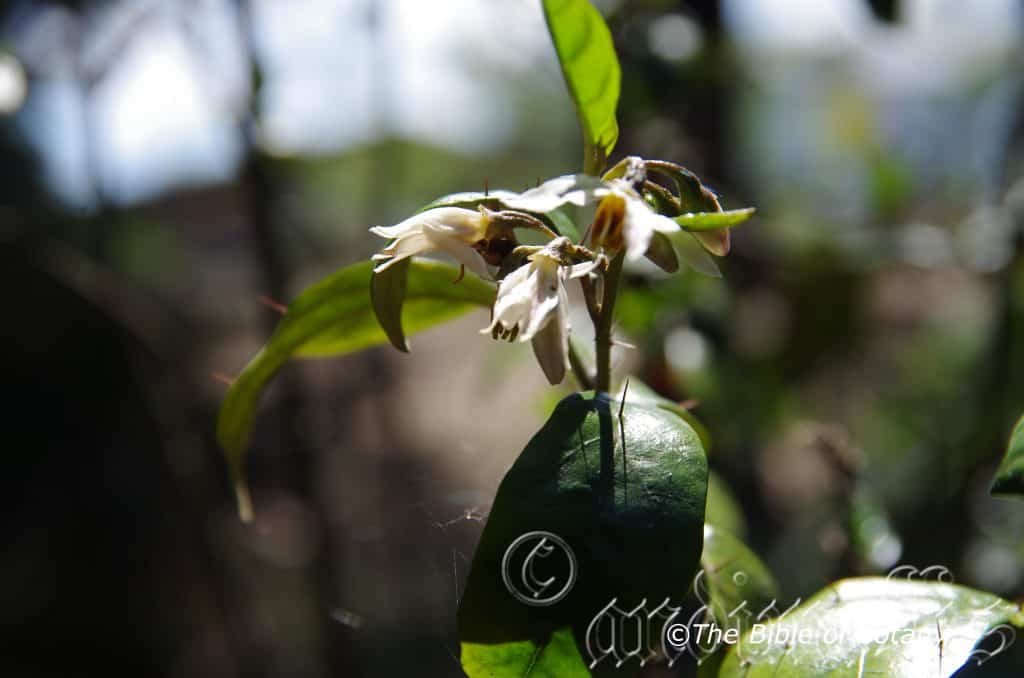
Greening Australia Norman Park Qld.
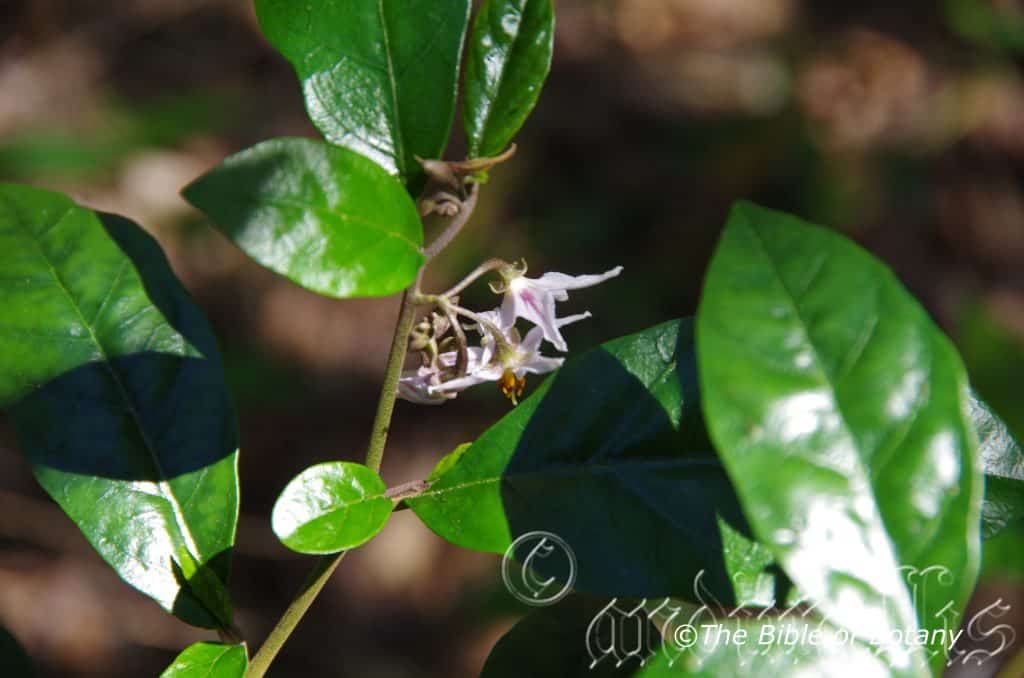
Greening Australia Norman Park Qld.
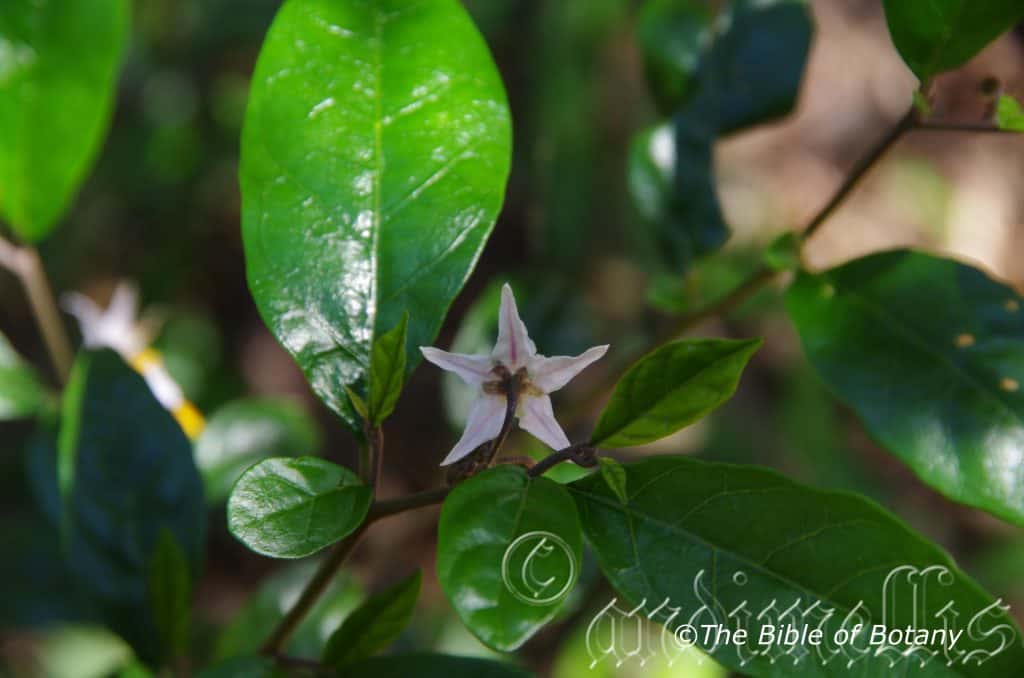
Greening Australia Norman Park Qld.

Greening Australia Norman Park Qld.
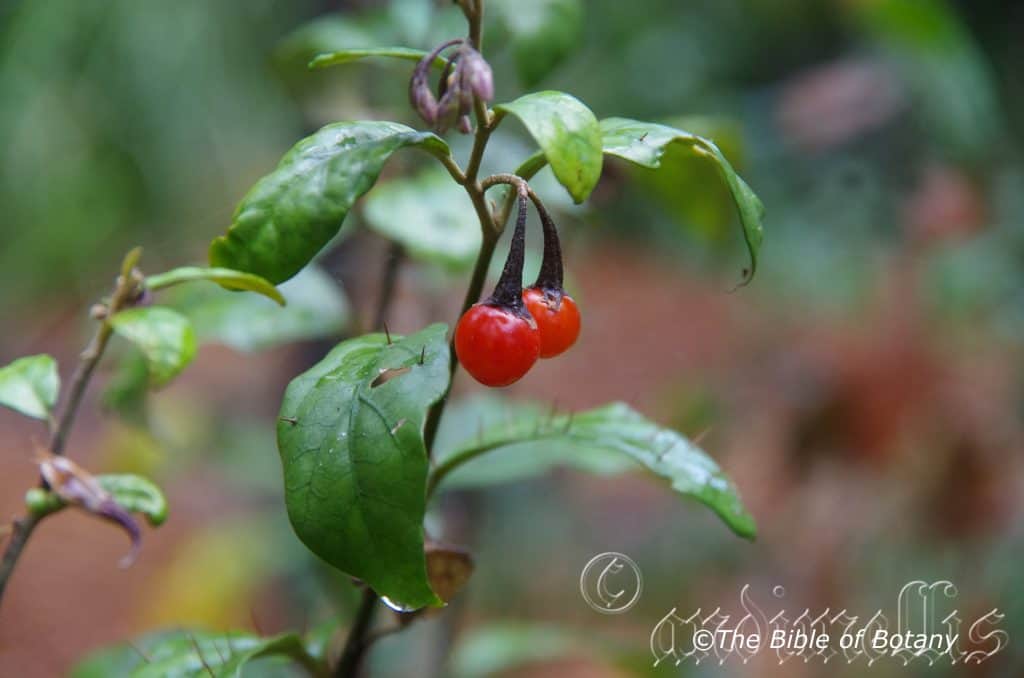
Greening Australia Norman Park Qld.
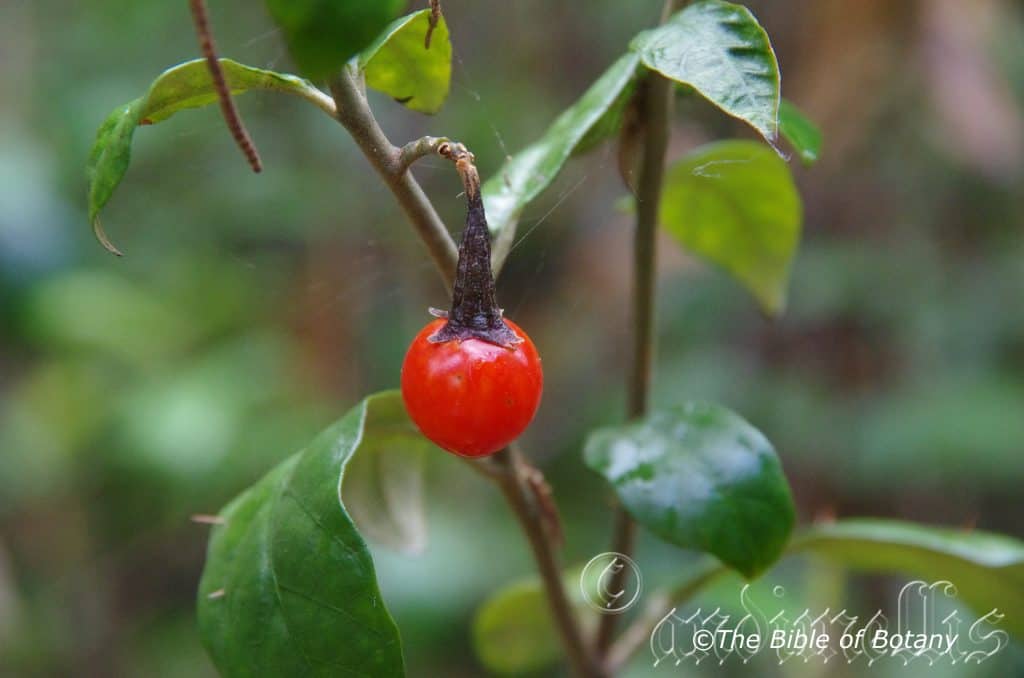
Greening Australia Norman Park Qld.

Greening Australia Norman Park Qld.
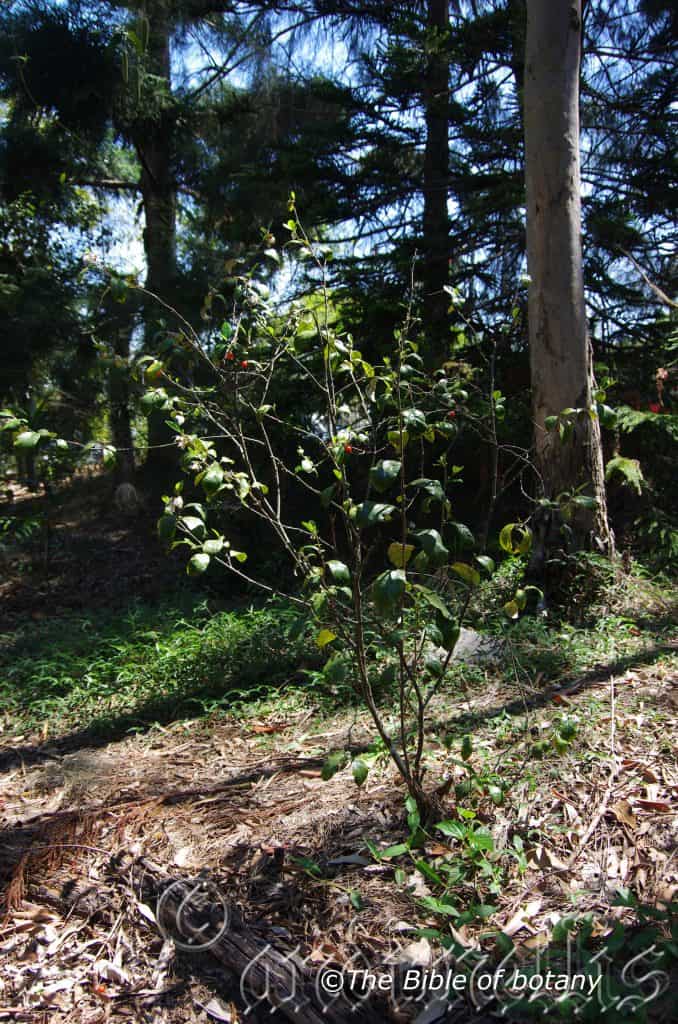
Greening Australia Norman Park Qld.
Solanum corifolium
Classification:
Unranked: Eudicots
Unranked: Asterids
Order: Solanales
Family: Solanaceae
Subfamily: Solanoideae
Tribe: Solaneae
Genus: From Solanace, which is Latin for the nightshade plants. It refers to the family of plants, which includes the potato, tomato, capsicum and chillies.
Specie: From Coriceoum, which is Latin for like leather or leathery and Folium, which is Latin for foliage. It refers to leaves, phyllodes or fronds, which are rather thick and leathery to touch.
Sub specie:
Common Name:
Distribution:
Solanum corifolium is found in several disjunct populations south from south of the Iron Range in north eastern Queensland to Kempsey in north eastern New South Wales. It is found on and east of the Great Dividing Range.
https://avh.ala.org.au/occurrences/search?taxa=Solanum+corifolium#tab_mapView
Habitat Aspect Climate:
Solanum corifolium prefers light dappled shade to full sun. It grows in well-developed warm sub-tropical or well-developed cool tropical rainforests. The altitude ranges from 200 meters ASL to 730 meters ASL.
The temperatures range from minus 3 degree in August to 38 degrees in January.
The rainfalls range from lows of 650mm to 3000mm average per annum.
Soil Requirements:
Solanum corifolium prefers light red clays to medium red clays. The soils are usually derived from black basalts. The soils pH ranges from 5pH to 6pH. It does not tolerate water logged soils. Non saline soils to moderately saline soils are tolerated.
Height & Spread:
Wild Plants: 1m to 1.5m by 0.6m to 1.5m.
Characteristics:
Solanum corifolium grows as an erect or sprawling shrub with scattered to abundant golden-brown stellate hairs on the stems and sharp reddish–brown thorns that measure 5mm to 8mm in length.
The alternate, elliptic leaves of Solanum corifolium measure 50mm to 100mm in length by 20mm to 50mm in width. The mid green petioles are covered in pale golden-brown stellate hairs and sharp reddish–brown thorns that measure 5mm to 8mm in length. The petioles measures 5mm to 10mm in length. The bases are cuneate to narrow rounded while the apexes are acuminate. The discolourous laminas are mid green, dull, glabrous with the mid vein being sparsely covered in golden or rusty-red puberulent hairs on the upper laminas. The lower laminas are moderately to densely covered in golden or rusty-red puberulent hairs and offset sharp reddish–brown, glossy thorns along the mid vein that measure 5mm to 8mm in length. The laminas are flat to recurve slightly upwards from the midvein to the margins. The margins are very shallowly lobed to almost entire. The mid vein is slightly prominent on the lower laminas
The inflorescences of Solanum corifolium are born on a short raceme or from a small cluster from the leaf axils. There are 3 to 12 individual flowers to a cluster or peduncle. The mid bluish-green peduncles and pedicels are moderately to densely covered in golden or rusty-red stellate hairs and sharp reddish–brown, glossy thorns that measure 5mm to 8mm in length. The peduncles measure 2mm to 5mm in length while the pedicels measure 10mm to 12mm in length. The pale bluish-green calyxes are moderately to densely covered in golden or rusty-red stellate hairs and sharp reddish–brown, glossy thorns that measure 5mm to 8mm in length externally. The calyxes measure 4mm to 6mm in length while the 5 triangular lobes measure 2mm to 3mm in length. The pastel lilac to violet deeply divided corollas are stellate and measure 18mm to 24mm in diameter. The lobes measure 6mm to 7.5mm in length. The lobes apexes are narrow acute while the margins undulate.
The 5 exserted stamens extend from the center of the corolla tube. The filaments are deep yellow while the basifixed anthers are bright yellow. The filaments measure 0.3mm to 0.6mm in length while the anthers measure 2.5mm to 3mm in length.
The white style and stigma are glabrous while the superior, green, ovoidal ovary measures 1mm to 2mm in length. The glabrous pistil measures 1mm to 2mm. The flowers appear from December to May.
Solanum corifolium fruits are globose berries. The berries are glabrous and measure 10mm to 15mm in length by 10mm to 16mm in diameter. The green berries turn scarlet-red before drying to a mid-brown with a raison like texture while still attached to the plant. The calyx lobes are persistent on the ripe fruit. The flat, orbicular, pale yellow to fawn seeds measure 2mm to 4mm in diameter by 1mm to 2mm in depth. The fruit ripen from January to June.
Wildlife:
Solanum corifolium support native bees and native flies along the coast when in flower.
WARNING: Many Solanum species are poisonous and many species; perhaps all, have some parts that are poisonous, or the edible parts are only edible at certain times of the year while being poisonous at other times.
Some native species of Solanum were known as traditional Aboriginal bush tucker plants. Others are introduced edible weeds.
Several native species are listed in Wild Food Plants of Australia by Cribb Not all of these are edible however some had specific uses or had to be treated first before eating: Solanum aviculare (Rainforest Kangaroo Apple), Solanum centrale (Desert Raisin), Solanum chippendalei (Bush Tomato), Solanum diversiflorum (Kakarrta), Solanum ellipticum, Solanum esuriale, Solanum laciniatum (Southern Kangaroo Apple), Solanum linearifolium (Mountain Kangaroo Apple), Solanum mauritianum (Wild Tobacco, Tobacco Bush), and Solanum vescum (Gunyang). Of these, Solanum aviculare, Solanum laciniatum, and Solanum mauritanum are the most common species that people come into contact with.
The Rainforest Kangaroo Apple is apparently only barely edible, so should be eaten sparingly.
Of the Solanum species which occur in Australia, Solanum americanum, Solanum scabrum and Solanum villosum and Solanum opacum are also considered to be edible.
People with allergies to tomatoes, peanuts or potatoes should be wary of eating any fruit of the solanaceae family as they all contain small amounts of the alkaloid sola.
Solanum aviculare Kangaroo Apple
Solanum centrale is also known as Desert Raisin, Bush Raisin or Bush Sultana, or by the native name kutjera.
Solanum chipendalei is known as Bush Tomato.
Solanum coactiliferum Aborigines roasted the fruit before eating.
Solanum diversifolium is known as Bush Tomato, Karlumbu, Pilirta, Wamurla districts.
Solanum ellipticum Potato Bush is very similar to Solanum quadriliculatum which is poisonous.
Solanum lacinatum is known as Kangaroo Apple.
Solanum orbicaltum is known as Round-leaved Solanum.
Solanum pholomoides is also known as Wild Tomato.
Solanum vescum.
Solanum cinerium is poisonous
Aborigines burned off the outer skin of Solanum aviculare as eating them raw caused the mouth to blister. Aborigines ate the fruit of Solanum centrale raw or put it on the hot earth by the fire, sprinkle some water on the fruits and cover them up to cook them. Solanum chippendalei is consumed by first splitting the fruit, scraping the center out and eating the outer flesh as the seeds and surrounding placenta are bitter. Solanum diversiflorum is roasted before being eaten or dried. Fruit of Solanum orbiculatum is edible, but the fruit of the large leafed form may be bitter. Fruit of Solanum phlomoidesappears to be edible after the removal of seeds and roasting or sun drying. Mardu people would dry the fruits to consume them at a later date.
Solanum aviculare contains solasodine, a steroid used in the manufacture of oral contraceptives. I have not tried the fruits so cannot vouch for any of what is said first hand.
Cultivation:
Solanum corifolium is a perennial shrub that can be grown in the open or sheltered garden positions in small to large gardens. In cultivation it grows from 1 meter to 1.2 meters in height by 0.8 meters to 1 meter in diameter when grown in the open.
Place them near the edge of forests. Solanum corifolium would make a great contribution to a sandy or rocky terrain rock garden. Here they can be used as fill in plants, scattered throughout the boulders. When you use them in area that is strewn with large boulders do not over crowd the scene as the boulders are a formidable part of the scene. Solanum centrale is well suited to such conditions so use contours to display the plants. Boulder country are almost always rising and falling in contour and have sharp rises. Plants must be planted sparingly to allow them to fully develop otherwise they become straggly. Plant it with short annuals between to give vibrant colour. Make the scene so you can see over the tallest ones with the exception of one or two plants at the most. The idea is to achieve a feeling of lushness. This can be achieved with using Solanum corifolium’s mid green leaves contrast well with other large pale green, deep green or red coloured foliages. Use procumbent plants like Hibbertia specie to make the rocks look larger and the spaces between the plants bigger. Mix them with other smaller shrubs so none of them dominate the scene but blend in to give a mosaic of foliage colours that you oversee. Here I immediately think of Actinotis helianthi or smaller red flowering Grevillea specie for two great contrasting foliages however Actinotis may be a little over powering unless the Solanum corifolium are pruned lightly to induce a small dense shrub.
Propagation:
Seeds: The seeds of Solanum corifolium can be removed easily from the fruits.
Sow fresh seeds directly into a seed raising mix, keeping them moist not wet. Do not over water as the seeds will rot off before germination takes place. Place the trays in a cool shaded area with 50mm shade cloth in the bush house. When the seedlings are 20mm to 25mm tall, prick them out and plant them into 50mm native tubes using a good organic mix.
As the seedlings roots reach the bottom of the tubes plant them out into their permanent position. Do not delay.
Fertilize using Seaweed, fish emulsion or organic chicken pellets soaked in water and apply the liquid on an alternate basis. Fertilize every 2 months until the plants are well established then on an annual basis in September or March to maintain health, vigour and better flowering and fruiting.
Further Comments from Readers:
“Hi reader, it seems you use The Bible of Botany a lot. That’s great as we have great pleasure in bringing it to you! It’s a little awkward for us to ask, but our first aim is to purchase land approximately 1,600 hectares to link several parcels of N.P. into one at The Pinnacles NSW Australia, but we need your help. We’re not salespeople. We’re amateur botanists who have dedicated over 30 years to saving the environment in a practical way. We depend on donations to reach our goal. If you donate just $5, the price of your coffee this Sunday, We can help to keep the planet alive in a real way and continue to bring you regular updates and features on Australian plants all in one Botanical Bible. Any support is greatly appreciated. Thank you.”
In the spirit of reconciliation we acknowledge the Bundjalung, Gumbaynggirr and Yaegl and all aboriginal nations throughout Australia and their connections to land, sea and community. We pay our respect to their Elders past, present and future for the pleasures we have gained.
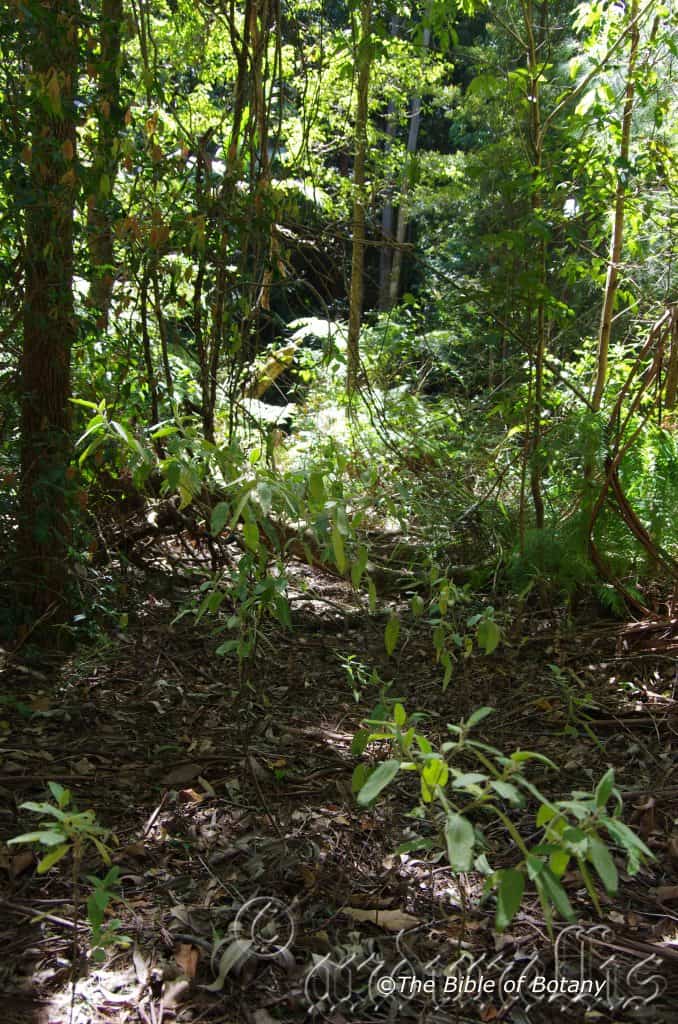
Washpool National Park NSW
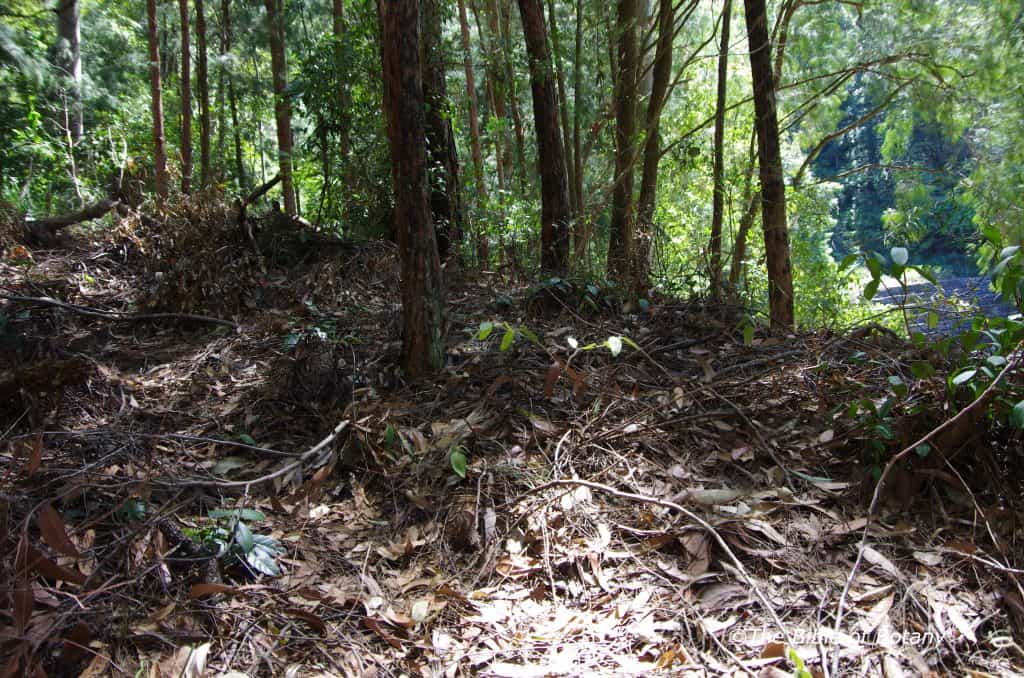
Washpool National Park NSW
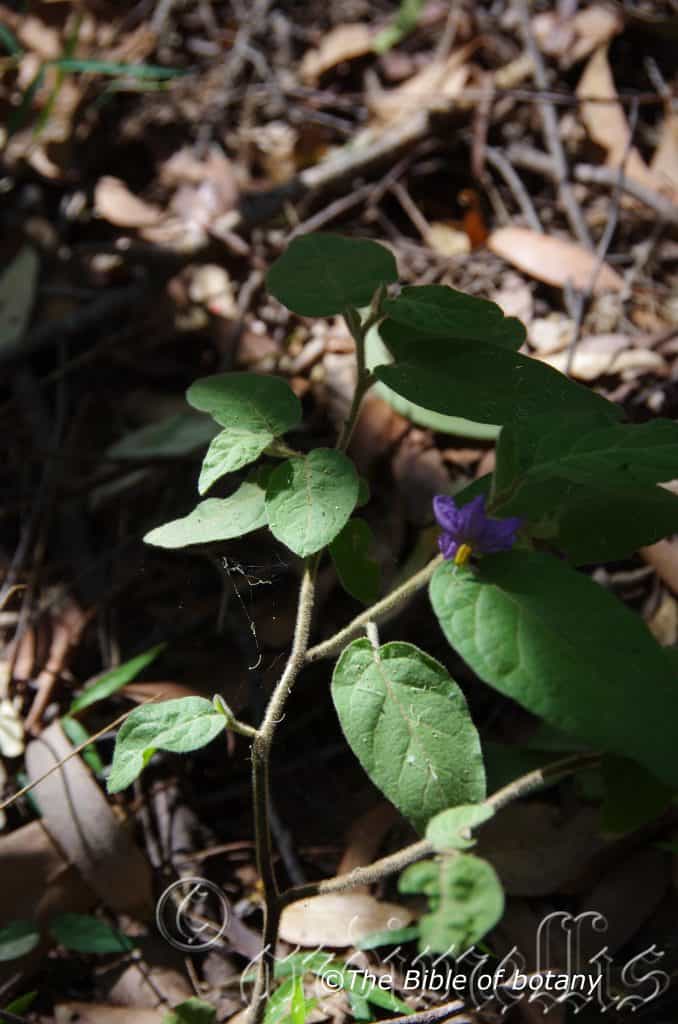
Washpool National Park NSW
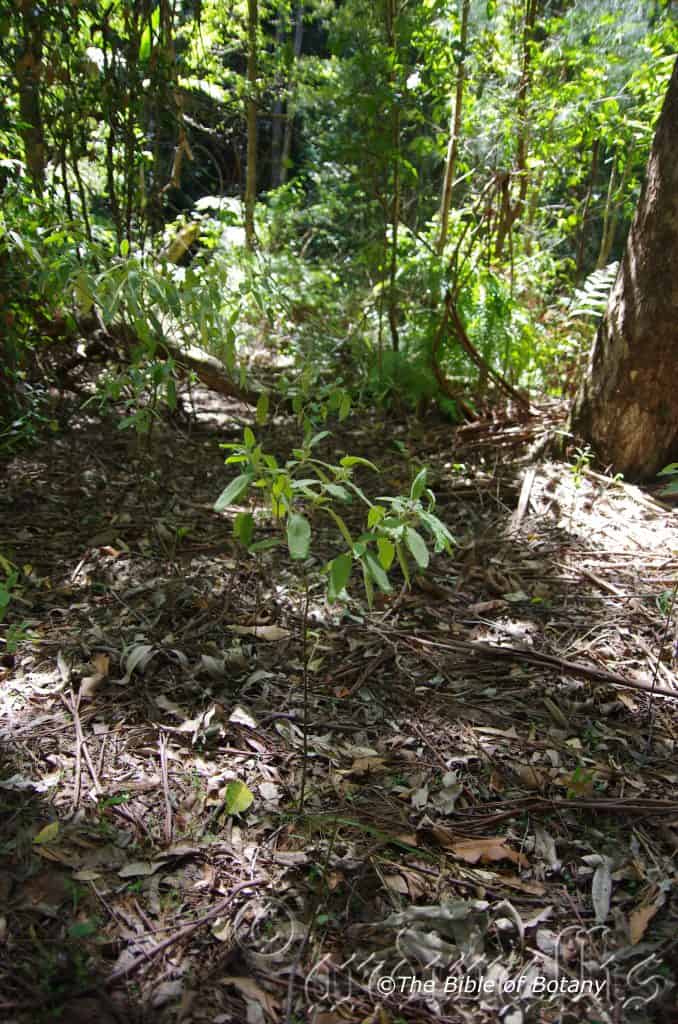
Washpool National Park NSW
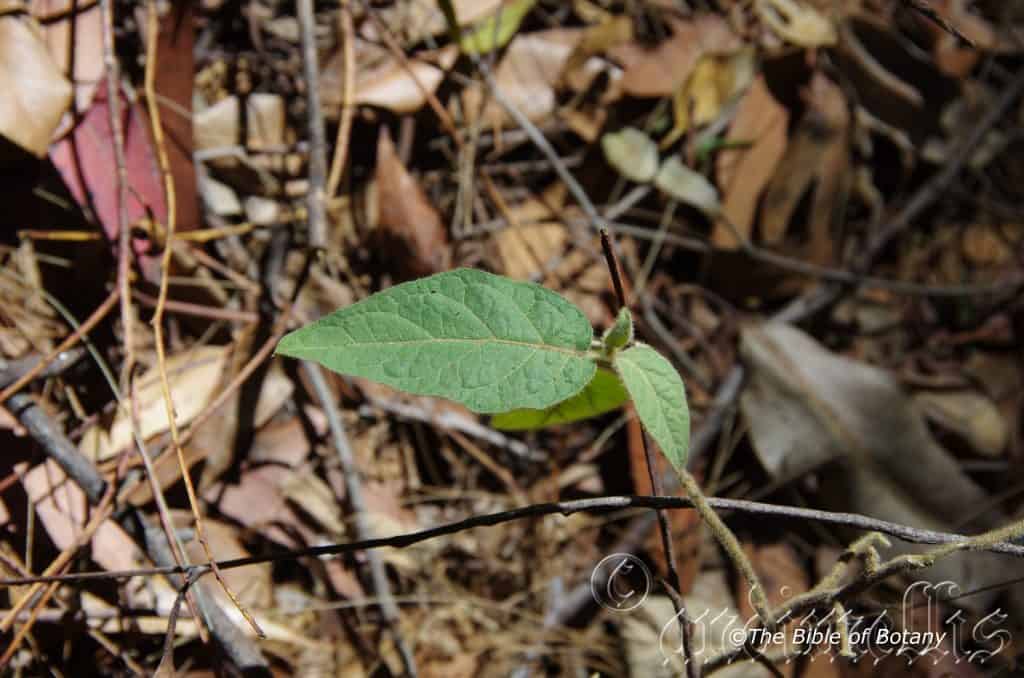
Washpool National Park NSW

Washpool National Park NSW
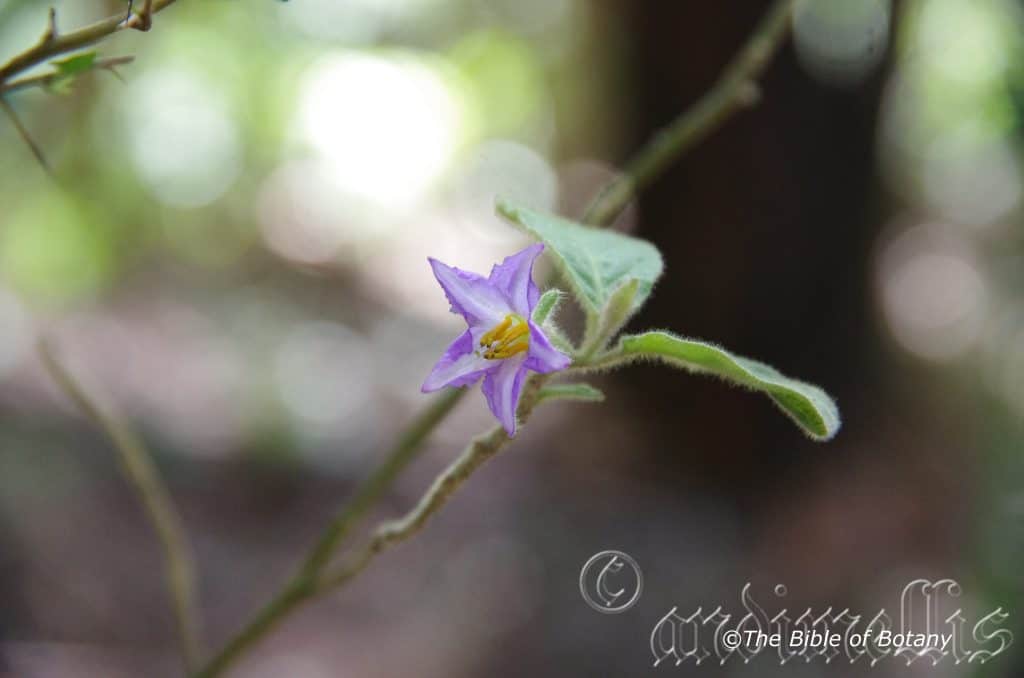
Washpool National Park NSW
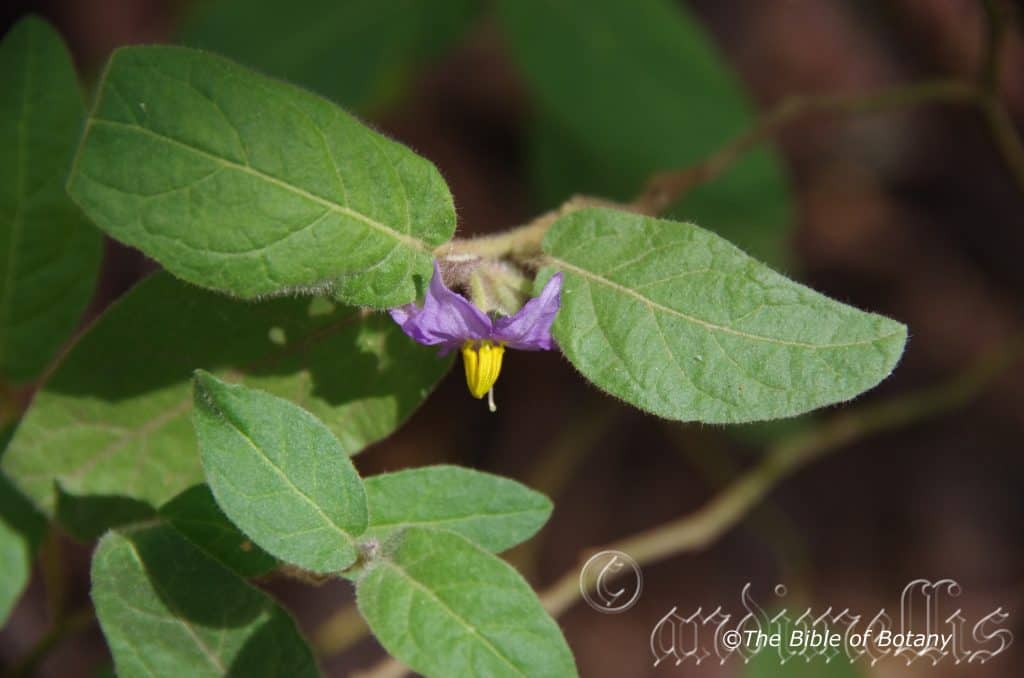
Washpool National Park NSW
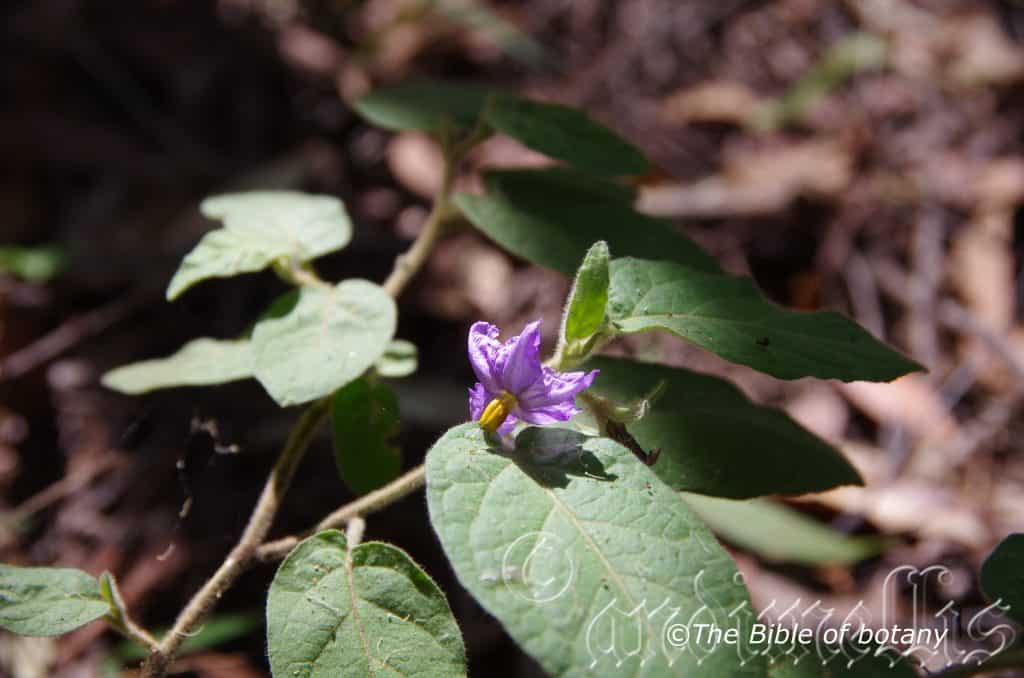
Washpool National Park NSW
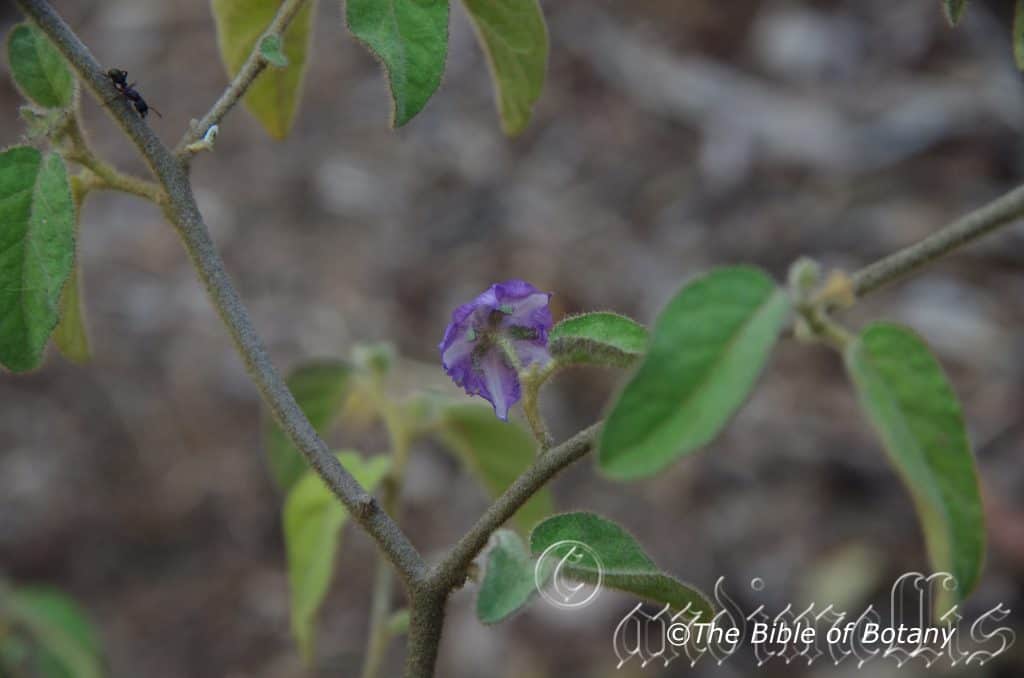
Author’s Garden The Pinnacles NSW
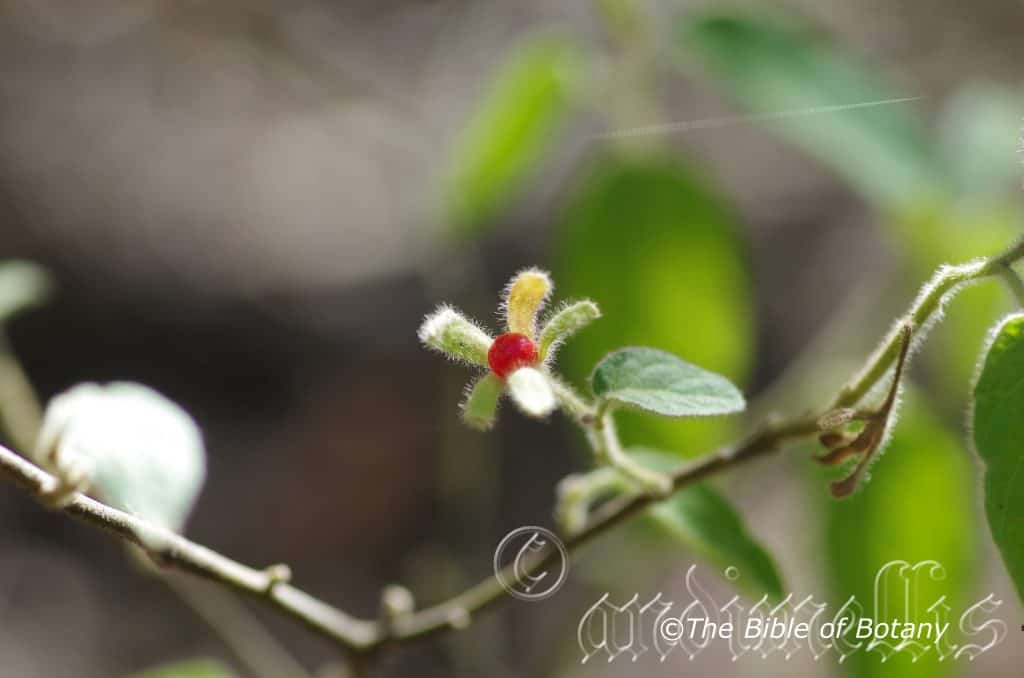
Author’s Garden The Pinnacles NSW
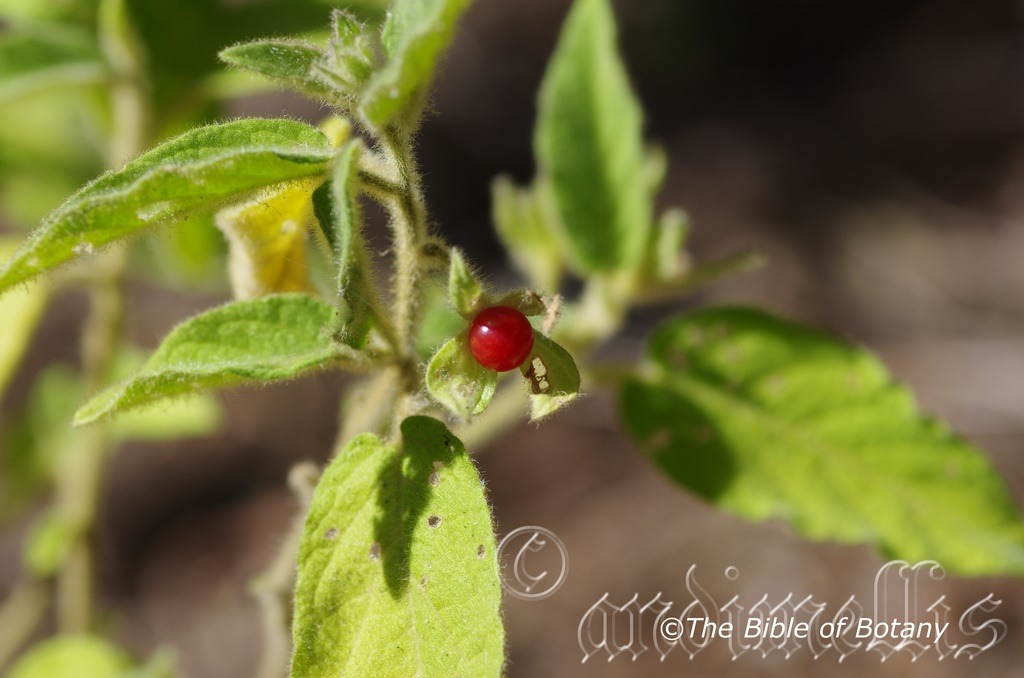
Author’s Garden The Pinnacles NSW

Author’s Garden The Pinnacles NSW
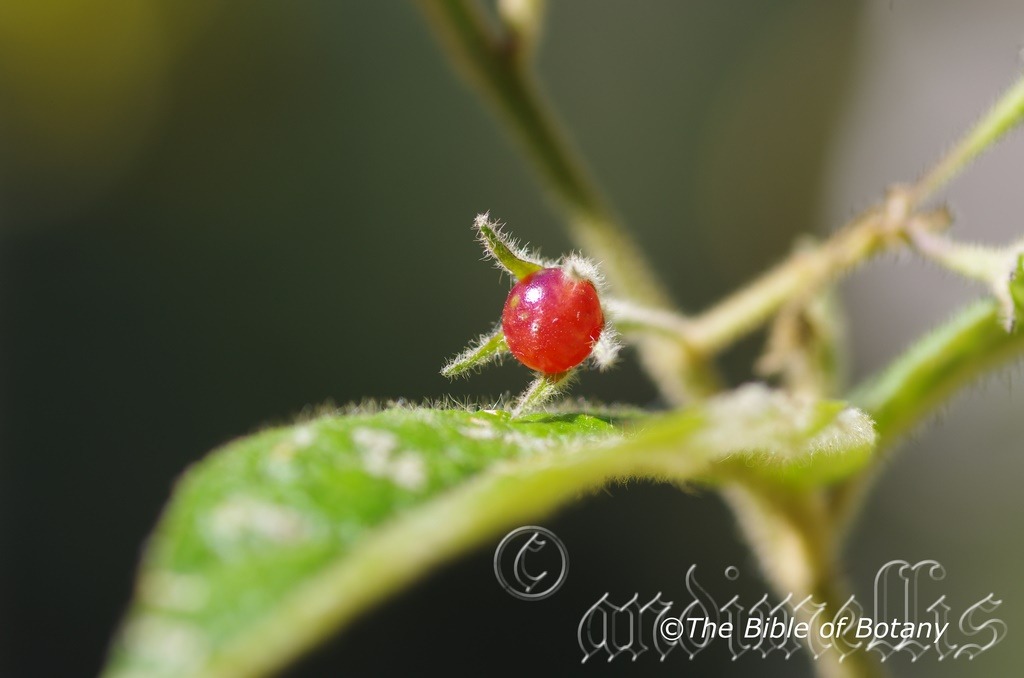
Author’s Garden The Pinnacles NSW

Author’s Garden The Pinnacles NSW
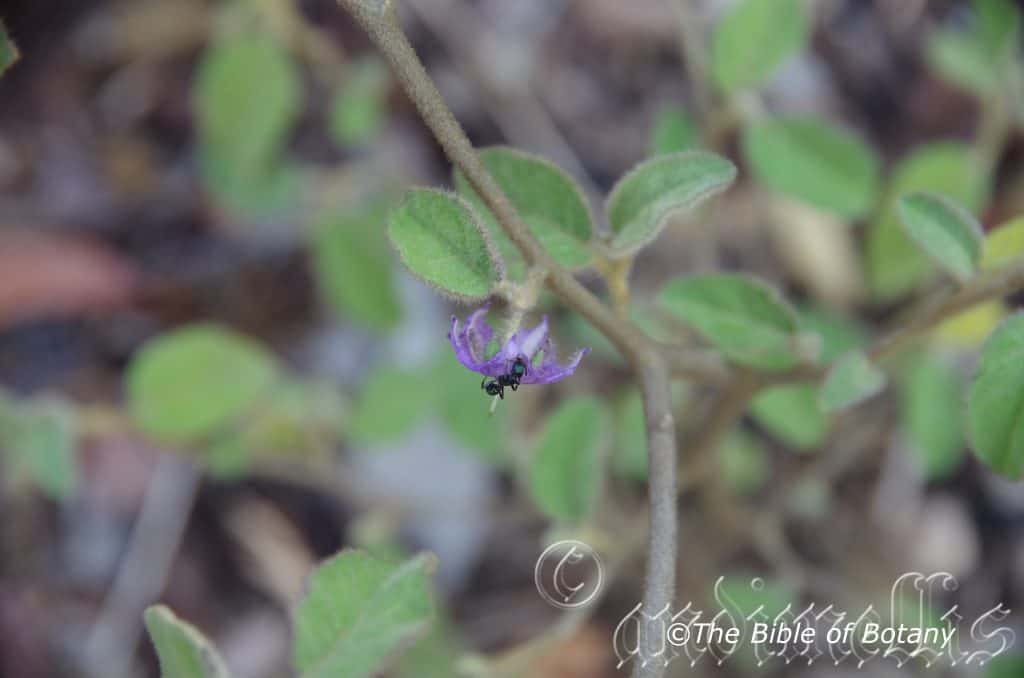
Author’s Garden The Pinnacles NSW
Solanum densevestitum
Classification:
Unranked: Eudicots
Unranked: Asterids
Order: Solanales
Family: Solanaceae
Subfamily: Solanoideae
Tribe: Solaneae
Genus: From Solanace, which is Latin for the nightshade plants. It refers to the family of plants, which includes the potato, tomato, capsicum and chillies.
Specie: From Densus, which Latin is for packed close together and Vestitum, which is Ancient Greek for (well) clothed or (well) dressed. It refers to foliage or at times flowers, which are in profusion.
Sub specie:
Common Name: the local aborigines know it as Karlumbu or Pilirta.
Distribution:
Solanum densevestitum is found from Maryborough in south east Queensland to Woolgoolga and Glenreagh Cliffs, the Ulladulla region and near the Victorian, New South Wales border near Albury. It is found on and east of the Great Dividing Range.
https://avh.ala.org.au/occurrences/search?taxa=Solanum+densevestitum#tab_mapView
Habitat Aspect Climate:
Solanum densevestitum prefers light dappled shade to full sun. It grows in warm moist subtropical or tropical Rainforests. The altitude ranges from 5 meters ASL to 910 meters ASL.
The temperatures range from minus 1 degree in August to 36 degrees in January.
The rainfalls range from lows of 400mm to 1600mm average per annum.
Soil Requirements:
Solanum densevestitum prefers better quality loams to light clays. The soils are usually derived from decomposed sandstones, granites, brown basalt, black basalts or metamorphic rocks. The soils pH ranges from 4.5pH to 6pH. It does not tolerate water logged soils. Non saline soils to moderately saline soils are tolerated.
Height & Spread:
Wild Plants: 0.5m to 1m by 0.8m to 1.2m.
Characteristics:
Solanum densevestitum grows as a small ascending shrub with pale grey stems. The stems are pale blue green and densely covered in fawn to golden yellow or rusty tomentose and stellate hairs. The stems are densely covered in course fawn to golden yellow or rusty tomentose and stellate hairs. Spines are absent on this species. Juvenile plants are densely covered in course fawn to golden yellow or rusty hirsute and villose hairs therefore many plants have a combination of different hair types.
The opposite, ovate, narrow ovate to elliptical or ovate-lanceolate leaves of Solanum densevestitum measure 60mm to 90mm in length by 30mm to 50mm in width. The bases are truncate while the apexes are acute-obtuse. The concolourous or discolourous laminas are blue green to pale olive green, dull and densely covered in golden yellow or rusty yellow tomentose and stellate hairs. The discolourous laminas are slightly paler on the lower lamina and are often more densely covered in golden yellow or rusty yellow tomentose and stellate hairs. The leaf margins are entire or shallowly lobed on juvenile plants. It is flat to recurve from the mid vein to the margins and decurve from the base to the apex. The mid vein and main lateral veins are strongly prominent on the lower laminas and distinctly visible from the upper lamina. The petiole, mid vein and lateral veins are densely covered in golden yellow or rusty yellow tomentose and stellate hairs. The petioles measure 10mm to 30mm in length.
Inflorescences of Solanum densevestitum are born in clusters from the leaf axils. There are 1 to 3 individual flowers in a cluster. The mid blue green to pale olive green pedicels are densely covered in golden yellow to rusty yellow tomentose and stellate hairs. The pedicels measure 4mm to 8mm in length. The pale blue green to pale olive green calyxes are densely covered in golden yellow to rusty yellow tomentose and stellate hairs externally and glabrous internally. They measure 5mm to 15mm in length while the 5 lanceolate to elliptical lobes are erect and measure 4mm to 10mm in length. The mauve to purple stellate corollas are sparsely covered in white ciliate hairs and measure 25mm to 32mm in diameter while the 4 or at times 5 divaricate lobes measure 12mm to 16mm in length. The lobes margins are entire, crinkled or undulating while the apex is caudate to aristate.
The 5 exserted stamens extend from the mouth of the corolla tube. The filaments are deep yellow while the basifixed anthers are bright yellow. The filaments measure 1mm to 2mm in length. The anthers measure 4mm to 5mm in length by 2.5mm to 3mm in width and converge around the style.
The white style and stigma are glabrous while the superior, green, ovoidal ovary measures 1mm to 2mm in length. The glabrous pistil measures 6mm to 7.5mm. Solanum densevestitum’s flowers appear throughout the year with increased flowering from early March to mid-May and again from late September to late November.
The fruits of Solanum densevestitum are globose berries. The berries are glabrous and measure 6mm to 7mm in length by 6mm to 7mm in diameter. The green berries turn scarlet red when ripe. The calyx lobes are persistent covering most of the fruit and expand to 7mm to 12mm in length as do the pedicels lengthening to 7mm to 12mm in length. The pale yellow brown to fawn seeds measure 2mm to 2.5mm in diameter.
Wildlife:
Solanum densevestitum support native bees and native flies along the coast when in flower.
WARNING: Many Solanum species are poisonous and many species; perhaps all, have some parts that are poisonous, or the edible parts are only edible at certain times of the year while being poisonous at other times.
Some native species of Solanum were known as traditional Aboriginal bush tucker plants. Others are introduced edible weeds.
Several native species are listed in Wild Food Plants of Australia by Cribb Not all of these are edible however some had specific uses or had to be treated first before eating: Solanum aviculare (Rainforest Kangaroo Apple), Solanum centrale (Desert Raisin), Solanum chippendalei (Bush Tomato), Solanum diversiflorum (Kakarrta), Solanum ellipticum, Solanum esuriale, Solanum laciniatum (Southern Kangaroo Apple), Solanum linearifolium (Mountain Kangaroo Apple), Solanum mauritianum (Wild Tobacco, Tobacco Bush), and Solanum vescum (Gunyang). Of these, Solanum aviculare, Solanum laciniatum, and Solanum mauritanum are the most common species that people come into contact with.
The Rainforest Kangaroo Apple is apparently only barely edible, so should be eaten sparingly.
Of the Solanum species which occur in Australia, Solanum americanum, Solanum scabrum and Solanum villosum and Solanum opacum are also considered to be edible.
People with allergies to tomatoes, peanuts or potatoes should be wary of eating any fruit of the solanaceae family as they all contain small amounts of the alkaloid sola.
Solanum aviculare Kangaroo Apple
Solanum centrale is also known as Desert Raisin, Bush Raisin or Bush Sultana, or by the native name kutjera.
Solanum chipendalei is known as Bush Tomato.
Solanum coactiliferum Aborigines roasted the fruit before eating.
Solanum diversifolium is known as Bush Tomato, Karlumbu, Pilirta, Wamurla districts.
Solanum ellipticum Potato Bush is very similar to Solanum quadriliculatum which is poisonous.
Solanum lacinatum is known as Kangaroo Apple.
Solanum orbicaltum is known as Round-leaved Solanum.
Solanum pholomoides is also known as Wild Tomato.
Solanum vescum.
Solanum cinerium is poisonous
Aborigines burned off the outer skin of Solanum aviculare as eating them raw caused the mouth to blister. Aborigines ate the fruit of Solanum centrale raw or put it on the hot earth by the fire, sprinkle some water on the fruits and cover them up to cook them. Solanum chippendalei is consumed by first splitting the fruit, scraping the center out and eating the outer flesh as the seeds and surrounding placenta are bitter. Solanum diversiflorum is roasted before being eaten or dried. Fruit of Solanum orbiculatum is edible, but the fruit of the large leafed form may be bitter. Fruit of Solanum phlomoidesappears to be edible after the removal of seeds and roasting or sun drying. Mardu people would dry the fruits to consume them at a later date.
Solanum aviculare contains solasodine, a steroid used in the manufacture of oral contraceptives. I have not tried the fruits so cannot vouch for any of what is said first hand.
Cultivation:
Solanum densevestitum is a perennial shrub that should be grown in the open in full sun on sandy loams to heavy clays. In cultivation it grows from 0.5 meters to 1 meter in height by 0.5 meters to 1 meter in diameter when grown in the open.
They grow exceptionally well where a thick layer of mulch prevails that will keep the soil cool and moisture at an even level. If these requirements are met they can cope with temperatures as low as minus 1 degree and up to 36 degrees. It is moderately drought resistant once established in their climatic zone however will drop leaf and under severe stress will abort branches only to reshoot immediately following good rains or increased soil moisture.
Add to the above, if it is given a little water with a little native fertilizer on a regular basis the plants will respond with superb flowering over a long period.
Place them near large, old stumps and roots to make the stumps or roots even more gnarled and older than they really are. They can be lightly tip pruned if a smaller plant is required however a loss of flowering will occur until new shoots are formed. Select an area of ground and let your hair down. Be imaginative and this is the plant that can give inspiration because it is so different. Solanum densevestitum is suited to medium desert type gardens on the coast so be sparingly with the other plants when planting and remember that deserts are rolling flat plains not steep hills so it is best to use them on gentle slopes. It is rather large for this type of garden so use them as the main feature and surround them with small native annuals.
They can be placed behind a small pool at the bottom of the garden with a billabong for great affect or even or in the foreground with a small waterfall or cascades in the background. Either way it is an interesting subject to work with.
Solanum densevestitum would make a great contribution to a sandy or rocky terrain rock garden. Here they can be used as fill in plants, scattered throughout the boulders. When you use them in an area that is strewn with large boulders do not over crowd the scene as the boulders are a formidable part of the scene. Solanum densevestitum is well suited to such conditions so use them to high light the other features. Boulder country are almost always rising and falling in contour and may have some sharp rises. Make the scene so you can overseer the tallest rocks with the exception of one or two at the most. This can be achieved with using Solanum densevestitum’s deep green leaves contrasting with finer pale green or soft grey to glaucous coloured foliages scattered here and there. Use a lot of procumbent plants like Hibbertia to make the rocks look larger and the spaces between the plants more expansive. Mix them with other smaller shrubs so none of them dominate the scene but blend in to give a mosaic of foliage colours that you oversee. Here I immediately think of Senecio magnificus or Grevillea masonii for two great contrasting foliages. Senecio magnificus will offer a great contrast to the foliage and give some height when scattered between Solanum densevestitum.
Propagation:
Seeds: The seeds of Solanum densevestitum can be removed easily from the fruits.
Sow fresh seeds directly into a seed raising mix, keeping them moist not wet. Do not over water as the seeds will rot off before germination takes place. Place the trays in a cool shaded area with 50mm shade cloth in the bush house. When the seedlings are 30mm to 50mm tall, prick them out and plant them into 50mm native tubes using a good organic mix.
As the seedlings roots reach the bottom of the tubes plant them out into their permanent position. Do not delay.
Fertilize using Seaweed, fish emulsion or organic chicken pellets soaked in water and apply the liquid on an alternate basis. Fertilize every 2 months until the plants are well established then on an annual basis in September or March to maintain health, vigour and better flowering.
Further Comments from Readers:
“Hi reader, it seems you use The Bible of Botany a lot. That’s great as we have great pleasure in bringing it to you! It’s a little awkward for us to ask, but our first aim is to purchase land approximately 1,600 hectares to link several parcels of N.P. into one at The Pinnacles NSW Australia, but we need your help. We’re not salespeople. We’re amateur botanists who have dedicated over 30 years to saving the environment in a practical way. We depend on donations to reach our goal. If you donate just $5, the price of your coffee this Sunday, We can help to keep the planet alive in a real way and continue to bring you regular updates and features on Australian plants all in one Botanical Bible. Any support is greatly appreciated. Thank you.”
In the spirit of reconciliation we acknowledge the Bundjalung, Gumbaynggirr and Yaegl and all aboriginal nations throughout Australia and their connections to land, sea and community. We pay our respect to their Elders past, present and future for the pleasures we have gained.
Solanum ditrichum
Classification:
Unranked: Eudicots
Unranked: Asterids
Order: Solanales
Family: Solanaceae
Subfamily: Solanoideae
Tribe: Solaneae
Genus: From Sol, which is Latin and Anus, which is Latin for the sun or the nightshade family of plants. It refers to the family of plants, which includes the potato, tomato, capsicum and chillies. It also has the possible meaning from Hiláskomai, which is Ancient Greek or later Sōlārī, which is Latin for to appease, to make comfortable, to console or to solace. It refers to organs or structures usually the flowers, which are very pleasing to the eye.
Specie: From Di/Dis, which is Greek two and Tricha, which is Ancient Greek for hair like or hairy. It refers to a structure or organ, which is twice as hairy as most other species in the genus.
Sub specie:
Common Name:
Distribution:
Solanum ditrichum is restricted to an area between Chatsworth in southern Queensland to Brother State Forest, with 2 populations further south near Little Losy Mountain in north eastern New South Wales. It is found on and east of the Great Dividing Range.
https://avh.ala.org.au/occurrences/search?taxa=Solanum+ditrichum#tab_mapView
Habitat Aspect Climate:
Solanum ditrichum prefers light dappled shade to full sun. It grows in wet sclerophyll forests or on the margins of moist rainforests. The altitude ranges from 20 meters ASL to 1630 meters ASL.
The temperatures range from minus 3 degrees in August to 39 degrees in January.
The rainfalls range from lows of 800mm to 2000mm average per annum.
Soil Requirements:
Solanum ditrichum prefers better quality sandy loams to medium clays. The soils are usually derived from decomposed red or orange sandstones, granites or black basalts. The soils pH ranges from 5pH to 6pH. It does not tolerate water logged soils. Non saline soils to moderately saline soils are tolerated.
Height & Spread:
Wild Plants: 0.3m to 0.6m by 0.3m to 0.6m.
Characteristics:
Solanum ditrichum grows as a low herbaceous perennial with stellate and short glandular hairs covering the stems. The golden to reddish-brown thorns are abundant on the stems.
The alternate, ovate to broad ovate leaves of Solanum ditrichum measure 60mm to 120mm in length by 45mm to 95mm in width. The petiole measures 20mm to 55mm in length. The bases are rounded to truncate while the apex are broad acuminate. The concolourous laminas are mid green, dull and sparsely covered in golden yellow or rusty stellate hairs and golden to reddish-brown thorns. The laminas are flat while the margins are shallowly lobed with 6 to 12 acute lobes. The mid vein is slightly prominent on the lower laminas.
The inflorescences of Solanum ditrichum are born on a short raceme or small clusters from the leaf axils. There are 2 to 5 individual flowers. The upper flowers are occasionally male. The peduncle and pedicels are mid green and sparsely covered in golden yellow or rusty stellate hairs and golden to reddish-brown thorns. The peduncle measures 10mm to 16mm in length while the pedicels measure 5mm to 20mm in length. The calyxes measure 7mm to 13mm in length while the lobes measure 4mm to 8mm in length. The pale purple to mid purple rotate petals are yellow near the base and measure 8mm to 10mm in diameter.
The 5 exserted stamens extend from the mouth of the corolla tube. The filaments are white while the basifixed anthers are bright yellow. The filaments measure 0.5mm to 1mm in length while the anthers measure 4mm to 4.5mm in length and converge around the style.
The slender, white, crooked style and stigma are glabrous while the superior ovoidal ovary is pale green. The pistil measures 7mm to 9mm in length. The flowers appear from July to April.
Solanum ditrichum fruits are globose berries. The large berries are glabrous and covered in white film and measure 22mm to 27mm in length by 21mm to 26mm in diameter. The green berries turn yellowish-green to pale bluish-green with deeper green or purplish longitudinal streaks before drying to a mid-brown with a raison like texture while still attached to the plant. The calyx lobes are persistent on the ripe fruit. The pale cream seeds measure 2mm to 4mm in length by 2mm in diameter. The fruits ripen from September to June.
Confusing Species:
Solanum ditrichum has 6 to 12 acute leaf lobes. The sepals are barely clasping the fruit while the seeds are pale cream.
Solanum campanulatum has shallow obtuse leaf lobes. The sepals cover about 50mm of the fruit while the seeds are fawnish-yellow.
Wildlife:
Solanum ditrichum support native bees and native flies along the coast when in flower.
WARNING: Many Solanum species are poisonous and many species; perhaps all, have some parts that are poisonous, or the edible parts are only edible at certain times of the year while being poisonous at other times.
Some native species of Solanum were known as traditional Aboriginal bush tucker plants. Others are introduced edible weeds.
Several native species are listed in Wild Food Plants of Australia by Cribb Not all of these are edible however some had specific uses or had to be treated first before eating: Solanum aviculare (Rainforest Kangaroo Apple), Solanum centrale (Desert Raisin), Solanum chippendalei (Bush Tomato), Solanum diversiflorum (Kakarrta), Solanum ellipticum, Solanum esuriale, Solanum laciniatum (Southern Kangaroo Apple), Solanum linearifolium (Mountain Kangaroo Apple), Solanum mauritianum (Wild Tobacco, Tobacco Bush), and Solanum vescum (Gunyang). Of these, Solanum aviculare, Solanum laciniatum, and Solanum mauritanum are the most common species that people come into contact with.
The Rainforest Kangaroo Apple is apparently only barely edible, so should be eaten sparingly.
Of the Solanum species which occur in Australia, Solanum americanum, Solanum scabrum and Solanum villosum and Solanum opacum are also considered to be edible.
People with allergies to tomatoes, peanuts or potatoes should be wary of eating any fruit of the solanaceae family as they all contain small amounts of the alkaloid sola.
olanum aviculare Kangaroo Apple
Solanum centrale is also known as Desert Raisin, Bush Raisin or Bush Sultana, or by the native name kutjera.
Solanum chipendalei is known as Bush Tomato.
Solanum coactiliferum Aborigines roasted the fruit before eating.
Solanum diversifolium is known as Bush Tomato, Karlumbu, Pilirta, Wamurla districts.
Solanum ellipticum Potato Bush is very similar to Solanum quadriliculatum which is poisonous.
Solanum lacinatum is known as Kangaroo Apple.
Solanum orbicaltum is known as Round-leaved Solanum.
Solanum pholomoides is also known as Wild Tomato.
Solanum vescum.
Solanum cinerium is poisonous
Aborigines burned off the outer skin of Solanum aviculare as eating them raw caused the mouth to blister. Aborigines ate the fruit of Solanum centrale raw or put it on the hot earth by the fire, sprinkle some water on the fruits and cover them up to cook them. Solanum chippendalei is consumed by first splitting the fruit, scraping the center out and eating the outer flesh as the seeds and surrounding placenta are bitter. Solanum diversiflorum is roasted before being eaten or dried. Fruit of Solanum orbiculatum is edible, but the fruit of the large leafed form may be bitter. Fruit of Solanum phlomoidesappears to be edible after the removal of seeds and roasting or sun drying. Mardu people would dry the fruits to consume them at a later date.
Solanum aviculare contains solasodine, a steroid used in the manufacture of oral contraceptives. I have not tried the fruits so cannot vouch for any of what is said first hand.
Cultivation:
Solanum ditrichum is a perennial shrub that should be grown in the open in full sun on sand or sandy loams. In cultivation they will grow from 0.4 meters to 0.5 meters in height by 0.3 meters to 0.4 meters in diameter when grown in the open.
The plants can be watered sparingly to fertilize in arid areas which will induce a longer flowering period and better fruit set. Fertilized plants will produce fruit for around 8 months of the year instead of the conventional 5 months in the wild. If these requirements are met they can cope with temperatures as low as minus 1 degree and up to 44 degrees. It is drought resistant once established but will defoliate and abort fruit, leaves and stems to support an underground tuber.
Place it near old stumps and roots to make the stumps or roots look larger. Select an area of ground and let your hair down and be imaginative and this is the plant that may just change your life. Remember this plant is rather sensitive to water so a very well drained site is absolutely necessary for successful growth. When planting a desert type of garden be very sparingly with the other plants when planting and remember that deserts are rolling flat plains not steep hills so it is best to use a gentle slope or a basin with a small pool at the bottom. A billabong affect is the go, not a waterfall or cascades. They also look great on rock ledges and steep dry sandy banks.
Solanum ditrichum would make a great contribution to a sandy or rocky terrain rock garden. Here they can be used as fill in plants, scattered throughout the boulders. When you use them in area that is strewn with large boulders do not over crowd the scene as the boulders are a formidable part of the scene. Solanum centrale is well suited to such conditions so use contours to display the plants. Boulder country are almost always rising and falling in contour and have sharp rises. Plants must be planted sparingly with short annuals between to give vibrant colour. Make the scene so you can see over the tallest ones with the exception of one or two plants at the most. The idea is to achieve a feeling of expansive harshness. This can be achieved with using Solanum centrale’s pale blue green with yellow green oblong leaves contrast well with finer pale green or deep green or red coloured foliages. If large deep green leaf plants are wanted try using them as prostrate plants. Use a lot of procumbent plants like Hibbertia specie to make the rocks look larger and the spaces between the plants bigger. Mix them with other smaller shrubs so none of them dominate the scene but blend in to give a mosaic of foliage colours that you oversee. Here I immediately think of Actinotis helianthi, Hovea acutifolia, Boronia ledifolia, dwarf Acacia specie or red flowering Grevillea specie for a few great contrasting foliages foliages and flower colour.
Propagation:
Seeds: The seeds of Solanum ditrichum can be removed easily from the fruits.
Sow fresh seeds directly into a seed raising mix, keeping them moist not wet. Do not over water as the seeds will rot off before germination takes place. Place the trays in a cool shaded area with 50mm shade cloth in the bush house. When the seedlings are 30mm to 50mm tall, prick them out and plant them into 50mm native tubes using a good organic mix.
As the seedlings roots reach the bottom of the tubes plant them out into their permanent position. Do not delay.
Fertilize using Seaweed, fish emulsion or organic chicken pellets soaked in water and apply the liquid on an alternate basis. Fertilize every 2 months until the plants are well established then on an annual basis in September or March to maintain health, vigour and better flowering and fruiting.
Further Comments from Readers:
“Hi reader, it seems you use The Bible of Botany a lot. That’s great as we have great pleasure in bringing it to you! It’s a little awkward for us to ask, but our first aim is to purchase land approximately 1,600 hectares to link several parcels of N.P. into one at The Pinnacles NSW Australia, but we need your help. We’re not salespeople. We’re amateur botanists who have dedicated over 30 years to saving the environment in a practical way. We depend on donations to reach our goal. If you donate just $5, the price of your coffee this Sunday, We can help to keep the planet alive in a real way and continue to bring you regular updates and features on Australian plants all in one Botanical Bible. Any support is greatly appreciated. Thank you.”
In the spirit of reconciliation we acknowledge the Bundjalung, Gumbaynggirr and Yaegl and all aboriginal nations throughout Australia and their connections to land, sea and community. We pay our respect to their Elders past, present and future for the pleasures we have gained.
Solanum ellipticum
Classification:
Unranked: Eudicots
Unranked: Asterids
Order: Solanales
Family: Solanaceae
Subfamily: Solanoideae
Tribe: Solaneae
Genus: From Sol, which is Latin is Latin for the sun and Anus, which is Latin for a stem. It refers to the family of plants known as nightshades, which includes the potato, tomato, capsicum and chillies, where the flowers look like little suns on the end of stems. It also has the possible meaning from Hiláskomai, which is Ancient Greek or later Sōlārī, which is Latin for to appease, to make comfortable, to console or to solace. It refers to organs or structures usually the flowers, which are very pleasing to the eye.
Specie: From Elleiptikós, which is Ancient Greek for an elliptical or ovate shape. It refers to organs usually the leaves, which have a precise elliptical shape.
Sub specie:
Common Name: Bush Potato or Potato weed.
Distribution:
Solanum ellipticum is a very widespread species throughout mainland Australia except for Victoria and the northern third of the Northern Territory.
https://avh.ala.org.au/occurrences/search?taxa=Solanum+ellipticum#tab_mapView
Habitat Aspect Climate:
Solanum ellipticum prefers light dappled shade to full sun. It grows in open scrub land in arid areas or open dry Eucalyptus forests in coastal areas. The altitude ranges from 5 meters BSL to 750 meters ASL.
The temperatures range from minus 3 degrees in August to 40 degrees in January.
The rainfalls range from lows of 150mm to 1200mm average per annum.
Soil Requirements:
Solanum ellipticum prefers better quality loams to medium clays. The soils are usually derived from decomposed sandstones, granites, brown basalt, black basalts, shales or metamorphic rocks. The soils pH ranges from 4.5pH to 7.5pH. It does not tolerate water logged soils. Non saline soils to very saline soils are tolerated.
Height & Spread:
Wild Plants: 0.2m to 0.4m by 0.5m to 0.8m.
Characteristics:
Solanum ellipticum grows as a small ascending shrub with pale grey, pale yellow, pale brown or mauve stems. The stems are sparsely to densely covered in fawn to golden yellow stellate hairs. The stems and young stems are sparsely to moderately covered in yellow acicular needle like spines that measure 1mm to 10mm in length by 0.8mm to 1.2mm in diameter near the base. Juvenile plants are densely covered in course fawn to golden yellow or rusty hirsute and villose hairs therefore many plants have a combination of different hair types.
The opposite, ovate, narrow ovate to elliptical leaves of Solanum ellipticum measure 40mm to 80mm in length by 20mm to 30mm in width. The petioles measure 10mm to 50mm in length. The bases are broad cuneate to truncate tending to shortly attenuate or attenuate at the petiole symmetrical or slightly oblique. The apexes are broad acute to acute-obtuse. The discolourous laminas are blue green dull and densely covered in white canescent to pulverulent hairs on the upper laminas slightly paler or slightly greener, and covered in white tomentose hairs. The leaf margins are entire and are often undulating. It is usually flat or at times recurve from the mid vein to the margins. The mid vein and main lateral veins are prominent on the lower laminas and faintly to distinctly visible from the upper lamina. The petiole, mid vein and lateral veins are densely covered in white tomentose and stellate hairs.
Inflorescences of Solanum ellipticum are born racemes from the leaf axils. There are 1 to 7 individual flowers on a raceme. The peduncles, rachises and pedicels are mid blue green to pale grey green pedicels. The peduncles measure 10mm to 50mm in length while the rachises measure 10mm to 30mm in length and the pedicels measure 4mm to 16mm in length. The pale blue green to pale grey green calyxes are covered in white hirtellous hairs externally and glabrous internally. They measure 1.5mm to 3mm in length while the 5 deltoid or attenuate lobes are erect and measure 3mm to 10mm in length. The white, mauve to purple, rotate corollas measure 20mm to 32mm in diameter. The 5 divaricate lobes measure 10mm to 15mm in length. The lobes margins are entire or finely crenate, crinkled or undulating while the apex is obtuse to truncate with or without a cuspidate tip.
The 5 exserted stamens extend from the mouth of the corolla tube. The filaments are deep yellow while the basifixed anthers are bright yellow. The filaments measure 1mm to 2mm in length. The anthers measure 4mm to 5mm in length by 2.5mm to 3mm in width and converge around the style.
The white style and stigma are glabrous while the superior, green, ovoidal ovary measures 1mm to 2mm in length. The glabrous pistil measures 6mm to 7.5mm. Solanum ellipticum’s flowers appear throughout the year with increased flowering from late September through to early February.
The fruits of Solanum ellipticum are globose berries. The berries are glabrous and measure 12mm to 16mm in length by 15mm to 20mm in diameter. The green berries turn yellow green, often with longitudinal green streaks when ripe. The calyx lobes are persistent covering the fruit and expand to 6mm to 9mm in length as do the pedicels lengthening to 10mm to 20mm in length. The pale yellow to fawn seeds measure 2.2mm to 2.7mm in length.
Wildlife:
Solanum ellipticum support native bees and native flies along the coast when in flower. The fruits were once an important part of the Aboriginal diet.
The fruit looks like small gooseberries. It is moist but not juicy and have a similar taste to the exotic gooseberry but are rather bitter. The fruits sun dry without any problems. (The car dashboard in paper bags makes a great drying oven.) When coated with castor sugar they were far more palatable being slightly reminiscent of the Chinese shan mei in flavour.
WARNING: Many Solanum species are poisonous and many species; perhaps all, have some parts that are poisonous, or the edible parts are only edible at certain times of the year while being poisonous at other times.
Some native species of Solanum were known as traditional Aboriginal bush tucker plants. Others are introduced edible weeds.
Several native species are listed in Wild Food Plants of Australia by Cribb Not all of these are edible however some had specific uses or had to be treated first before eating: Solanum aviculare (Rainforest Kangaroo Apple), Solanum centrale (Desert Raisin), Solanum chippendalei (Bush Tomato), Solanum diversiflorum (Kakarrta), Solanum ellipticum, Solanum esuriale, Solanum laciniatum (Southern Kangaroo Apple), Solanum linearifolium (Mountain Kangaroo Apple), Solanum mauritianum (Wild Tobacco, Tobacco Bush), and Solanum vescum (Gunyang). Of these, Solanum aviculare, Solanum laciniatum, and Solanum mauritanum are the most common species that people come into contact with.
The Rainforest Kangaroo Apple is apparently only barely edible, so should be eaten sparingly.
Of the Solanum species which occur in Australia, Solanum americanum, Solanum scabrum and Solanum villosum and Solanum opacum are also considered to be edible.
People with allergies to tomatoes, peanuts or potatoes should be wary of eating any fruit of the solanaceae family as they all contain small amounts of the alkaloid sola.
olanum aviculare Kangaroo Apple
Solanum centrale is also known as Desert Raisin, Bush Raisin or Bush Sultana, or by the native name kutjera.
Solanum chipendalei is known as Bush Tomato.
Solanum coactiliferum Aborigines roasted the fruit before eating.
Solanum diversifolium is known as Bush Tomato, Karlumbu, Pilirta, Wamurla districts.
Solanum ellipticum Potato Bush is very similar to Solanum quadriliculatum which is poisonous.
Solanum lacinatum is known as Kangaroo Apple.
Solanum orbicaltum is known as Round-leaved Solanum.
Solanum pholomoides is also known as Wild Tomato.
Solanum vescum.
Solanum cinerium is poisonous
Aborigines burned off the outer skin of Solanum aviculare as eating them raw caused the mouth to blister. Aborigines ate the fruit of Solanum centrale raw or put it on the hot earth by the fire, sprinkle some water on the fruits and cover them up to cook them. Solanum chippendalei is consumed by first splitting the fruit, scraping the center out and eating the outer flesh as the seeds and surrounding placenta are bitter. Solanum diversiflorum is roasted before being eaten or dried. Fruit of Solanum orbiculatum is edible, but the fruit of the large leafed form may be bitter. Fruit of Solanum phlomoidesappears to be edible after the removal of seeds and roasting or sun drying. Mardu people would dry the fruits to consume them at a later date.
Solanum aviculare contains solasodine, a steroid used in the manufacture of oral contraceptives. I have not tried the fruits so cannot vouch for any of what is said first hand.
Cultivation:
Solanum ellipticum is a perennial shrub that should be grown in the open in full sun, on sandy loams to heavy clays. In cultivation they will grow from 0.4 meters to 0.5 meters in height by 0.3 meters to 0.4 meter in diameter when grown in the open.
It grows exceptionally well where a thick layer of mulch prevails that will keep the soil cool and moisture at an even level. If these requirements are met it can cope with temperatures as low as minus 2 degrees and up to 42 degrees. It is moderately drought resistant once established in their climatic zone however will drop leaf and under severe stress will abort branches only to reshoot immediately following good rains or increased soil moisture.
Add to the above, if it is given a little water with a little native fertilizer in arid areas on a regular basis or fertilized during rainy periods the plants will respond with superb flowering and fruiting over a long period.
Place them near large, old stumps and roots to make the stumps or roots even more gnarled and older than they really are. They can be lightly tip pruned if a smaller plant is required however a loss of flowering will occur until new shoots are formed. Select an area of ground and let your hair down. Be imaginative and this is the plant that can give inspiration because it is so different. Solanum ellipticum is suited to medium desert type gardens on the coast so be sparingly with the other plants when planting and remember that deserts are rolling flat plains not steep hills so it is best to use them on gentle slopes. It is rather large for this type of garden so use them as the main feature and surround them with small native annuals.
It can be placed behind a small pool at the bottom of the garden with a billabong for great affect or even or in the foreground with a small waterfall or cascades in the background. Either way it is an interesting subject to work with.
Solanum ellipticum would make a great contribution to a sandy or rocky terrain rock garden. Here they can be used as fill in plants, scattered throughout the boulders. When you use them in an area that is strewn with large boulders do not over crowd the scene as the boulders are a formidable part of the scene. Solanum ellipticum is well suited to such conditions so use them to high light the other features. Boulder country are almost always rising and falling in contour and may have some sharp rises. Make the scene so you can overseer the tallest rocks with the exception of one or two at the most. This can be achieved with using Solanum ellipticum’s pale blue green leaves contrasting with finer pale green or soft grey to glaucous coloured foliages scattered here and there. Use a lot of procumbent plants like Hibbertia specie to make the rocks look larger and the spaces between the plants more expansive. Mix them with other smaller shrubs so none of them dominate the scene but blend in to give a mosaic of foliage colours that you oversee. Here I immediately think of Actinotis helianthi, Hovea acutifolia, Boronia ledifolia, dwarf Acacia specie or red flowering Grevillea specie for a few great contrasting foliages and flower colour. Actinotis helianthi will offer a great contrast to the foliage and give height when scattered between Solanum ellipticum.
Solanum ellipticum has been overlooked as a commercial proposition but really ranks more superior to Solanum centrale because of the larger size fruits, fruit can be harvested throughout the year especially in summer and autumn and the value adding using products like castor sugar which are cheaper than the main product. The wider distribution along with wider climatic tolerances and soil structures all offer greater opportunities with lower risks.
Propagation:
Seeds: The seeds of Solanum ellipticum can be removed easily from the fruits.
Sow fresh seeds directly into a seed raising mix, keeping them moist not wet. Do not over water as the seeds will rot off before germination takes place. Place the trays in a cool shaded area with 50mm shade cloth in the bush house. When the seedlings are 30mm to 50mm tall, prick them out and plant them into 50mm native tubes using a good organic mix.
As the seedlings roots reach the bottom of the tubes plant them out into their permanent position. Do not delay.
Fertilize using Seaweed, fish emulsion or organic chicken pellets soaked in water and apply the liquid on an alternate basis. Fertilize every 2 months until the plants are well established then on an annual basis in September or March to maintain health, vigour and better flowering.
Further Comments from Readers:
“Hi reader, it seems you use The Bible of Botany a lot. That’s great as we have great pleasure in bringing it to you! It’s a little awkward for us to ask, but our first aim is to purchase land approximately 1,600 hectares to link several parcels of N.P. into one at The Pinnacles NSW Australia, but we need your help. We’re not salespeople. We’re amateur botanists who have dedicated over 30 years to saving the environment in a practical way. We depend on donations to reach our goal. If you donate just $5, the price of your coffee this Sunday, We can help to keep the planet alive in a real way and continue to bring you regular updates and features on Australian plants all in one Botanical Bible. Any support is greatly appreciated. Thank you.”
In the spirit of reconciliation we acknowledge the Bundjalung, Gumbaynggirr and Yaegl and all aboriginal nations throughout Australia and their connections to land, sea and community. We pay our respect to their Elders past, present and future for the pleasures we have gained.
Solanum erianthum
Classification:
Unranked: Eudicots
Unranked: Asterids
Order: Solanales
Family: Solanaceae
Subfamily: Solanoideae
Tribe: Solaneae
Genus: From Sol, which is Latin is Latin for the sun and Anus, which is Latin for a stem. It refers to the family of plants known as nightshades, which includes the potato, tomato, capsicum and chillies, where the flowers look like little suns on the end of stems. It also has the possible meaning from Hiláskomai, which is Ancient Greek or later Sōlārī, which is Latin for to appease, to make comfortable, to console or to solace. It refers to organs or structures usually the flowers, which are very pleasing to the eye.
Specie: From Erion, which is Ancient Greek for wool and ántha/ánthos, which are Ancient Greek for the male reproductive organ on a flower or the flower. It refers to flower spikes or other organs, which are covered in long soft woolly hairs.
Sub specie:
Common Name: Potato Tree, Potato Weed or Wild Tobacco.
Distribution:
Solanum erianthum is a wide spread species found from the Knight Lakes in the Arafura Swamps in northern Arnhem Land to the Marura River in the north eastern Northern Territory.
In the east it is found south from Pandanus Creeks in far north eastern Queensland to Upper Thora in north eastern New South Wales. It mainly grows on and east of the Great Dividing Range to the coast and some of the off shore Islands.
https://avh.ala.org.au/occurrences/search?taxa=Solanum+erianthum#tab_mapView
Habitat Aspect Climate:
Solanum erianthum prefers light dappled shade to full sun. It grows in clearings in moist rainforests, littoral rainforests or moist sclerophyll forests. It is particularly common along roadways adjacent. The altitude ranges from 230 meters ASL to 1000 meters ASL.
The temperatures range from minus 3 degrees in August to 39 degrees in January.
The rainfalls range from lows of 150mm to 400mm average per annum.
Soil Requirements:
Solanum erianthum prefers to grow on better quality sandy loams to medium clays. The soils are usually derived from decomposed red or orange sandstones, granites, metamorphic rocks, brown basalts, black basalts, accumulated beach or accumulated coral sands. The soils pH ranges from 5pH to 7pH. It is not tolerant of water logged soils. Non saline soils to moderately saline soils are tolerated as are salt laden winds.
Height & Spread:
Wild Plants: 3m to 6m by 3m to 4m.
Characteristics:
Solanum erianthum grows as a shrub or small tree often with spreading crown. The green stems are often densely covered in white stellate hairs while the thorns are absent on this species.
The sub opposite, ovate to elliptic leaves of Solanum erianthum measure 80mm to 240mm in length by 40mm to 150mm in width. The petiole measures 10mm to 100mm in length. The oblique bases are cuneate to broad cuneate while the apexes are acuminate. The discolourous laminas are mid grey-green to deep grey-green, dull and covered in white stellate and pulverulent hairs on the upper laminas while the lower laminas are paler. The laminas are flat while the margins are entire and straight or slightly undulating. The mid vein is prominent while the lateral pinnate veins are slightly prominent on the lower lamina and are clearly visible on the upper lamina.
The inflorescences of Solanum erianthum are born on short cymes from the leaf axils. There are 3 to 9 individual flowers to a cyme. The peduncle, rachises and pedicels are mid grey-green and covered in white stellate and pulverulent hairs. The peduncles measure 30mm to 38mm in length while the pedicels measure 5mm to 10mm in length. The pale grey-green calyxes are densely covered in white stellate and pulverulent hairs externally and are glabrous internally while the 5 narrow elliptical lobes are densely covered in white stellate and pulverulent hairs. The calyx measures 4mm to 7mm in length while the lobes measure 1mm to 2.5mm in length. The white short campanulate, stellate corollas measure 13mm to 19mm in diameter. The 5 elliptical lobes measure 5mm to 8mm in length.
The 5 flattened, exserted stamens extend from the mouth of the short corolla tube. The filaments are pastel green while the basifixed anthers are bright yellow. The filaments measure 0.8mm to 1mm in length while the anthers measure 2.5mm to 3.2mm in length and surround the style.
The filiform, white erect style and conical stigma are glabrous while the superior, ovoidal ovary is glabrous and green. The glabrous pistil measures 5mm to 6.5mm. The flowers appear from March to August.
Solanum erianthum fruits are globose berries. The berries are glabrous and measure 8mm to 11mm in length by 8mm to 11mm in diameter. The pale blue-green berries turn dull pale yellowish-green to pale yellow and are densely covered in white pulverulent to loosely floccose hairs before drying to a mid-brown with a raison like texture while still attached to the plant. The calyx lobes are persistent on the ripe fruit. The pale yellow to fawn seeds measure 2mm to 2.5mm in length by 2mm in width. The fruit ripen from May to September.
Wildlife:
Solanum erianthum support native bees and native flies along the coast when in flower.
WARNING: Many Solanum species are poisonous and many species; perhaps all, have some parts that are poisonous, or the edible parts are only edible at certain times of the year while being poisonous at other times.
Some native species of Solanum were known as traditional Aboriginal bush tucker plants. Others are introduced edible weeds.
Several native species are listed in Wild Food Plants of Australia by Cribb Not all of these are edible however some had specific uses or had to be treated first before eating: Solanum aviculare (Rainforest Kangaroo Apple), Solanum centrale (Desert Raisin), Solanum chippendalei (Bush Tomato), Solanum diversiflorum (Kakarrta), Solanum ellipticum, Solanum esuriale, Solanum laciniatum (Southern Kangaroo Apple), Solanum linearifolium (Mountain Kangaroo Apple), Solanum mauritianum (Wild Tobacco, Tobacco Bush), and Solanum vescum (Gunyang). Of these, Solanum aviculare, Solanum laciniatum, and Solanum mauritanum are the most common species that people come into contact with.
The Rainforest Kangaroo Apple is apparently only barely edible, so should be eaten sparingly.
Of the Solanum species which occur in Australia, Solanum americanum, Solanum scabrum and Solanum villosum and Solanum opacum are also considered to be edible.
People with allergies to tomatoes, peanuts or potatoes should be wary of eating any fruit of the solanaceae family as they all contain small amounts of the alkaloid sola.
olanum aviculare Kangaroo Apple
Solanum centrale is also known as Desert Raisin, Bush Raisin or Bush Sultana, or by the native name kutjera.
Solanum chipendalei is known as Bush Tomato.
Solanum coactiliferum Aborigines roasted the fruit before eating.
Solanum diversifolium is known as Bush Tomato, Karlumbu, Pilirta, Wamurla districts.
Solanum ellipticum Potato Bush is very similar to Solanum quadriliculatum which is poisonous.
Solanum lacinatum is known as Kangaroo Apple.
Solanum orbicaltum is known as Round-leaved Solanum.
Solanum pholomoides is also known as Wild Tomato.
Solanum vescum.
Solanum cinerium is poisonous
Aborigines burned off the outer skin of Solanum aviculare as eating them raw caused the mouth to blister. Aborigines ate the fruit of Solanum centrale raw or put it on the hot earth by the fire, sprinkle some water on the fruits and cover them up to cook them. Solanum chippendalei is consumed by first splitting the fruit, scraping the center out and eating the outer flesh as the seeds and surrounding placenta are bitter. Solanum diversiflorum is roasted before being eaten or dried. Fruit of Solanum orbiculatum is edible, but the fruit of the large leafed form may be bitter. Fruit of Solanum phlomoidesappears to be edible after the removal of seeds and roasting or sun drying. Mardu people would dry the fruits to consume them at a later date.
Solanum aviculare contains solasodine, a steroid used in the manufacture of oral contraceptives. I have not tried the fruits so cannot vouch for any of what is said first hand.
Cultivation:
Solanum erianthum is a perennial shrub that should be grown in the open in full sun on sand or sandy loams. In cultivation it grows from 3 meters to 5 meters in height by 3 meters to 4 meters in diameter when grown in the open.
It is an excellent small tree to start a rainforest garden or later as an understory rainforest tree, shrub that can be grown in the open or sheltered garden positions in small to large gardens. In cultivation it grows from 1 meter to 1.2 meters in height by 0.8 meters to 1 meter in diameter when grown in the open.
Place it near the edge of forests, adjacent to rainforest garden or make a heath garden with it being the taller background shrub. Solanum erianthum would make a great contribution to a sandy or rocky terrain rock garden. Here it can be used as the feature tree, scattered throughout the boulders. When you use them in area that is strewn with large boulders do not over crowd the scene as the boulders are a formidable part of the scene. Solanum erianthum well suited to such conditions so use contours to display the plants. Boulder country are almost always rising and falling in contour and have sharp rises. Plants must be planted sparingly to allow them to fully develop otherwise they become straggly. Plant it with short annuals between to give vibrant colour. Make the scene so you can see over the tallest ones with the exception of one or two plants at the most. The idea is to achieve a feeling of lushness. This can be achieved with using Solanum corifolium’s mid green leaves contrast well with other large pale green, deep green or red coloured foliages. Use procumbent plants like Hibbertia specie to make the rocks look larger and the spaces between the plants bigger. Mix them with other smaller shrubs so none of them dominate the scene but blend in to give a mosaic of foliage colours that you oversee. Here I immediately think of Actinotis helianthi, Hovea acutifolia, Boronia ledifolia, dwarf Acacia specie or red flowering Grevillea specie for a few great contrasting foliages and flower colour.
Propagation:
Seeds: The seeds of Solanum erianthum can be removed easily from the fruits, after the fruits begin to shrivel.
Sow fresh seeds directly into a seed raising mix, keeping them moist not wet. Do not over water as the seeds will rot off before germination takes place. Place the trays in a cool shaded area with 50mm shade cloth in the bush house. When the seedlings are 30mm to 50mm tall, prick them out and plant them into 50mm native tubes using a good organic mix.
As the seedlings roots reach the bottom of the tubes plant them out into their permanent position. Do not delay.
Fertilize using Seaweed, fish emulsion or organic chicken pellets soaked in water and apply the liquid on an alternate basis. Fertilize every 2 months until the plants are well established then on an annual basis in September or March to maintain health, vigour and better flowering and fruiting.
Further Comments from Readers:
“Hi reader, it seems you use The Bible of Botany a lot. That’s great as we have great pleasure in bringing it to you! It’s a little awkward for us to ask, but our first aim is to purchase land approximately 1,600 hectares to link several parcels of N.P. into one at The Pinnacles NSW Australia, but we need your help. We’re not salespeople. We’re amateur botanists who have dedicated over 30 years to saving the environment in a practical way. We depend on donations to reach our goal. If you donate just $5, the price of your coffee this Sunday, We can help to keep the planet alive in a real way and continue to bring you regular updates and features on Australian plants all in one Botanical Bible. Any support is greatly appreciated. Thank you.”
In the spirit of reconciliation we acknowledge the Bundjalung, Gumbaynggirr and Yaegl and all aboriginal nations throughout Australia and their connections to land, sea and community. We pay our respect to their Elders past, present and future for the pleasures we have gained.
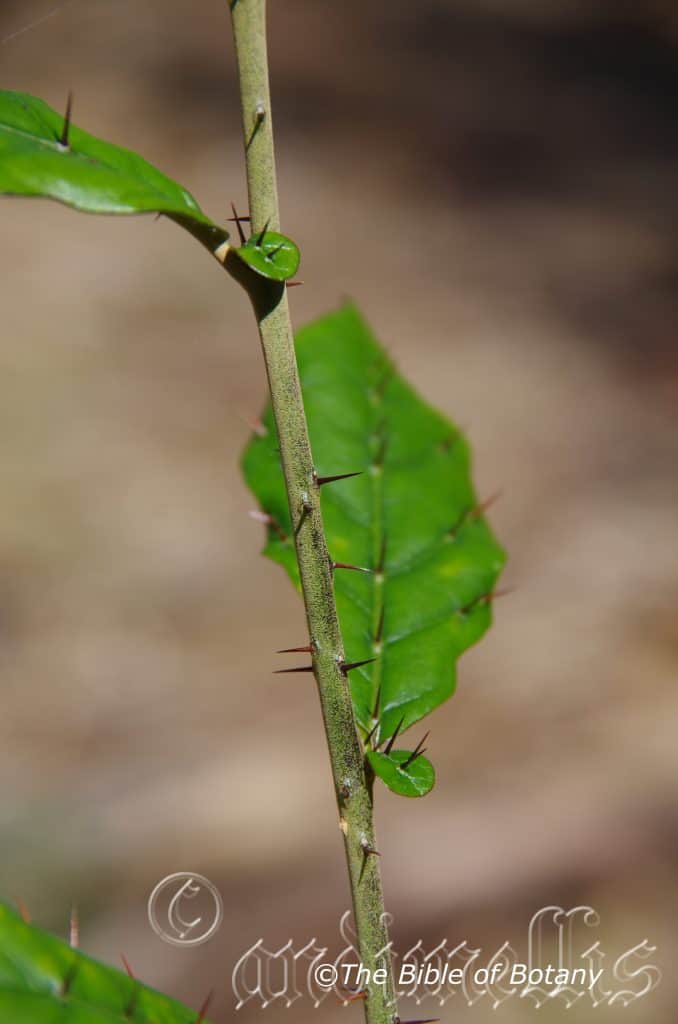
Author’s Garden The Pinnacles NSW
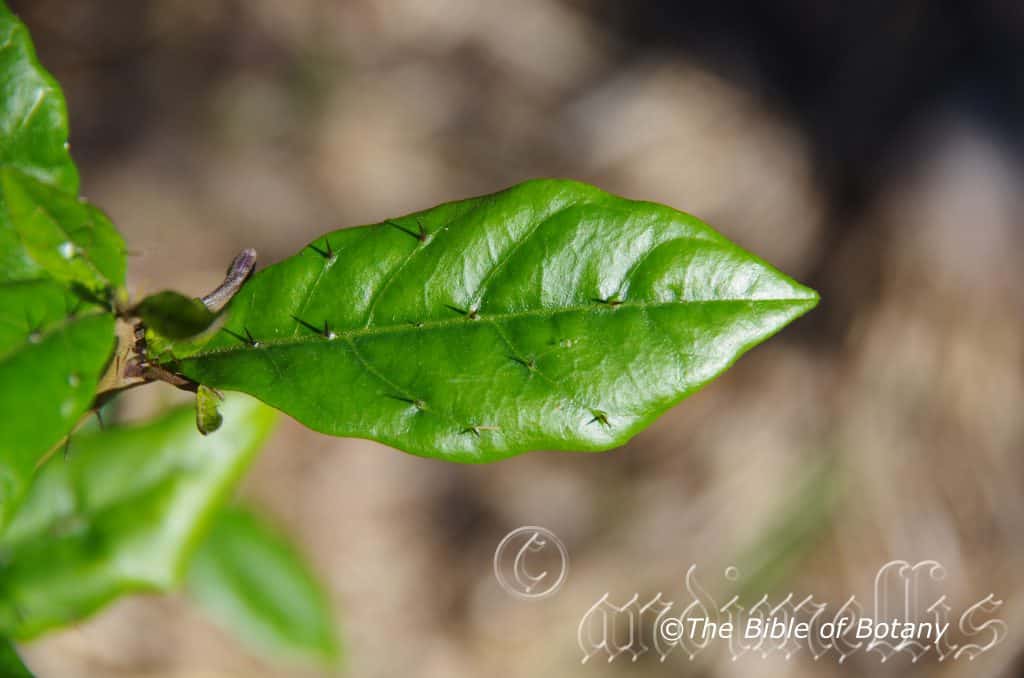
Author’s Garden The Pinnacles NSW
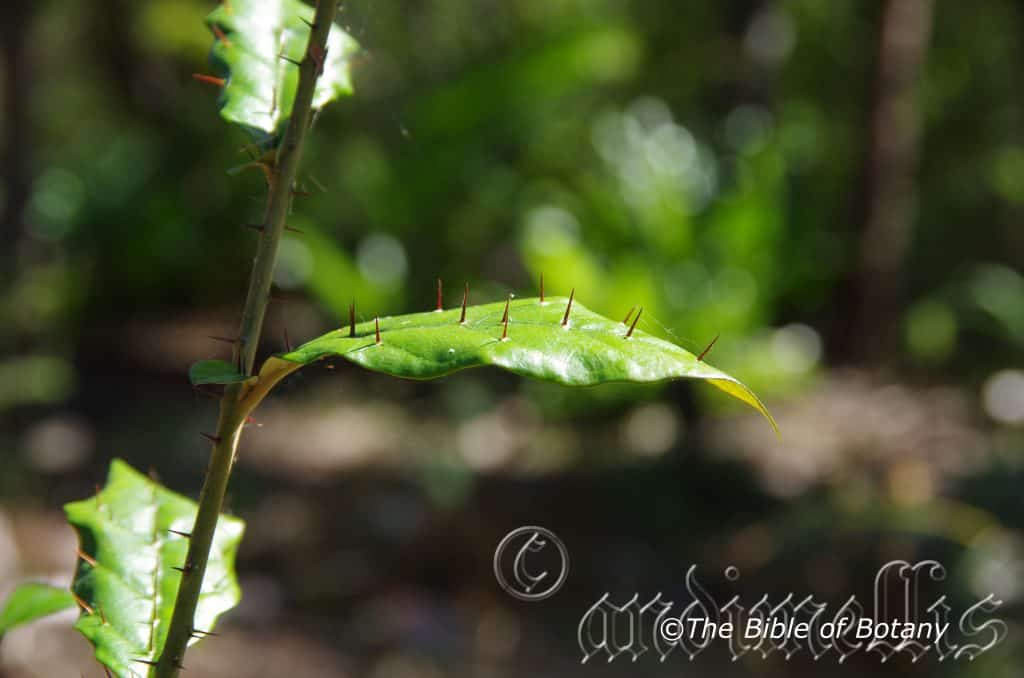
Author’s Garden The Pinnacles NSW
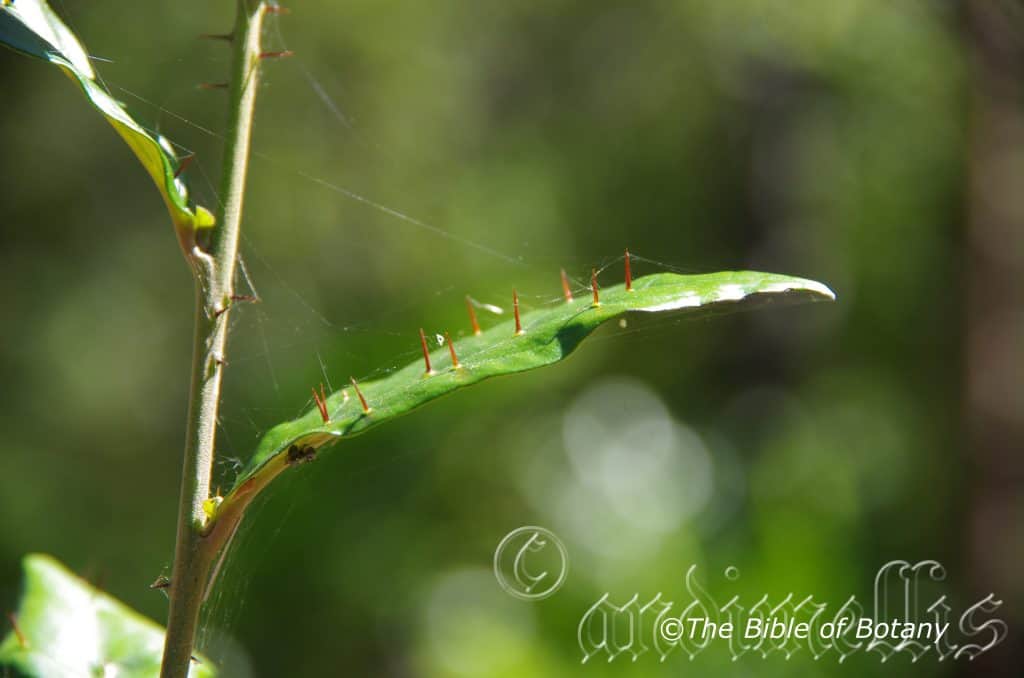
Author’s Garden The Pinnacles NSW
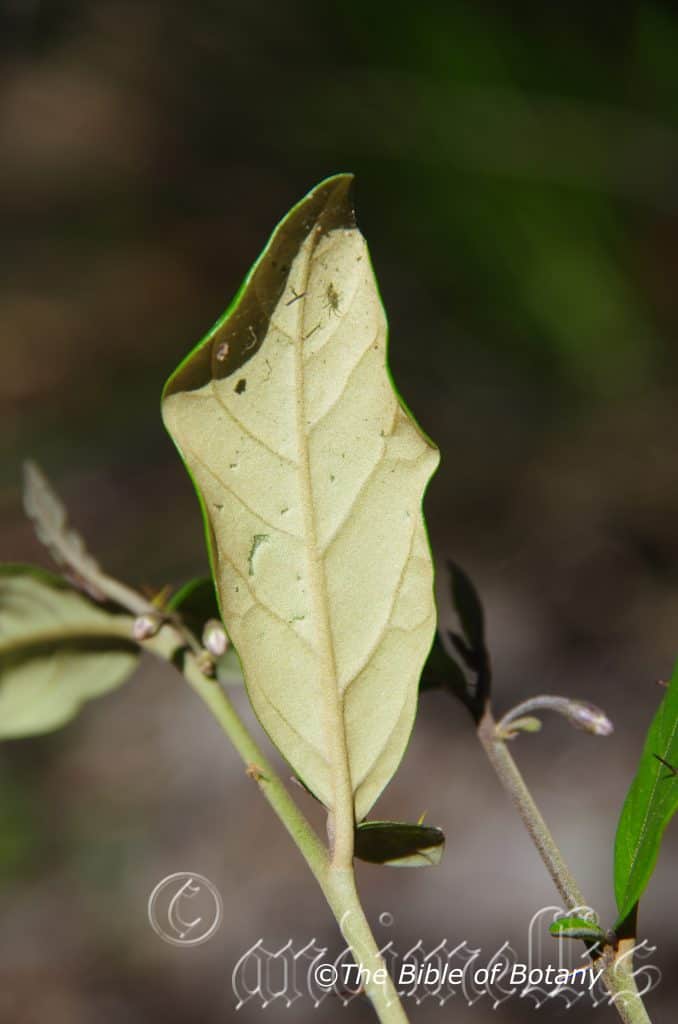
Author’s Garden The Pinnacles NSW
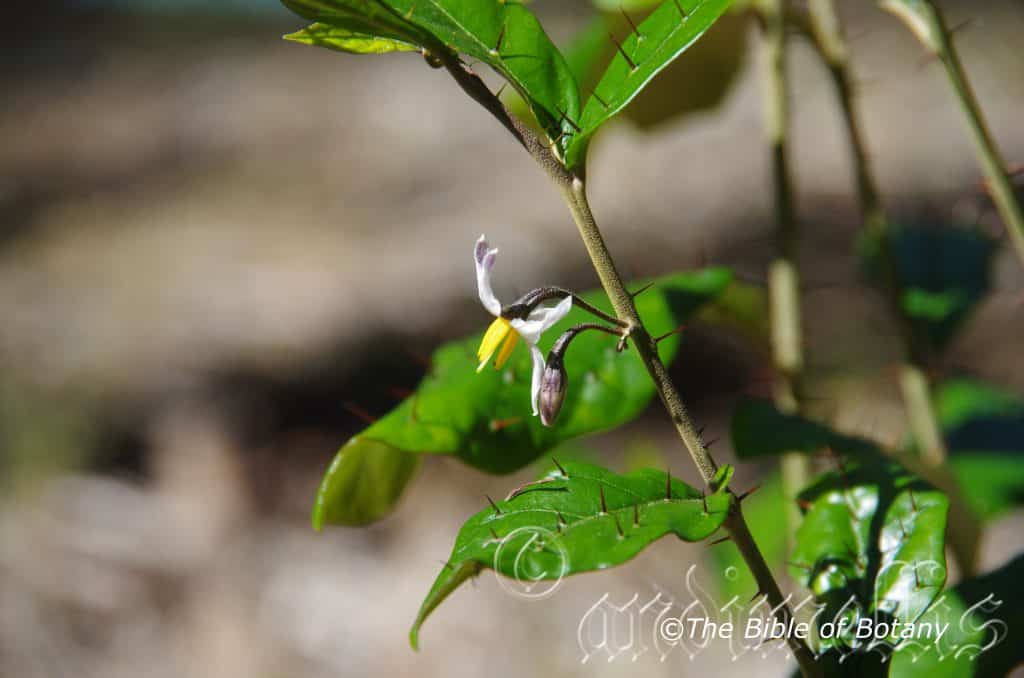
Author’s Garden The Pinnacles NSW
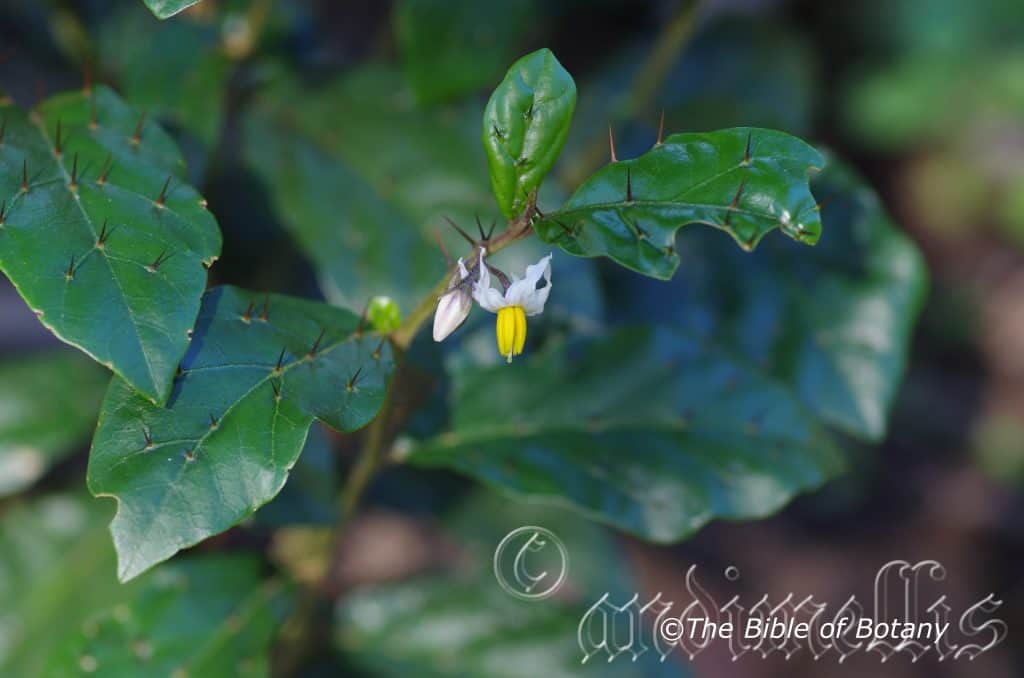
Author’s Garden The Pinnacles NSW
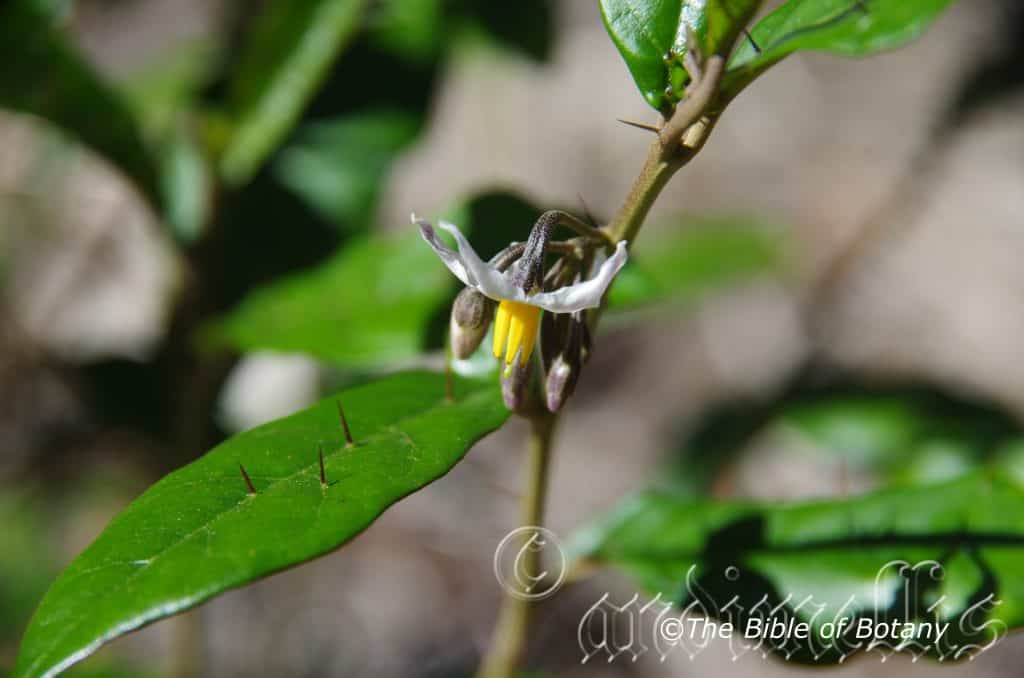
Author’s Garden The Pinnacles NSW

Author’s Garden The Pinnacles NSW
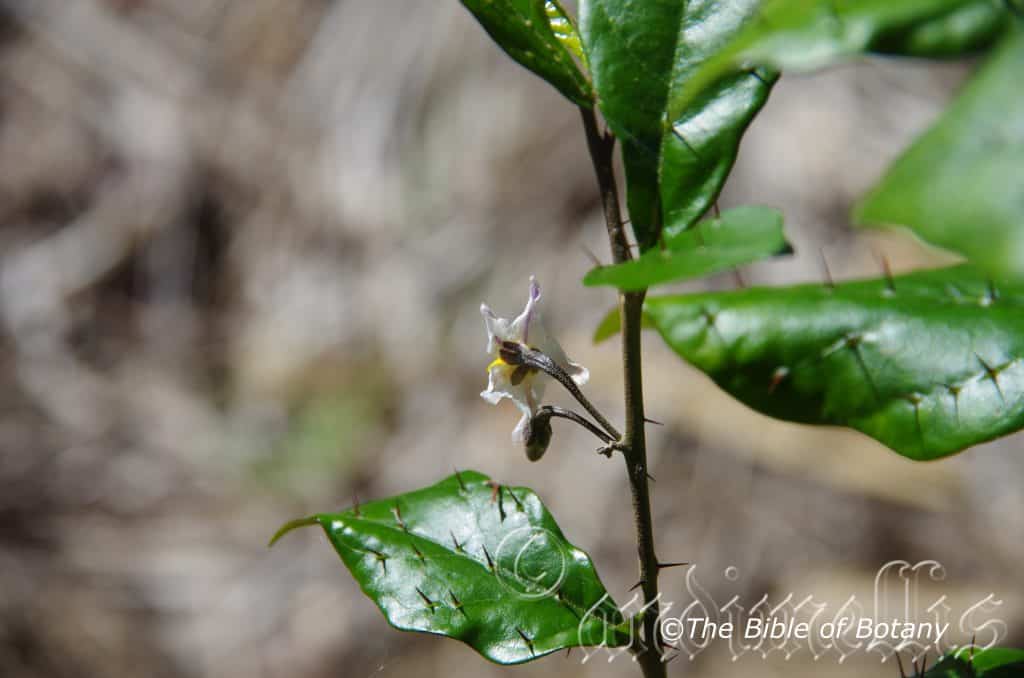
Author’s Garden The Pinnacles NSW
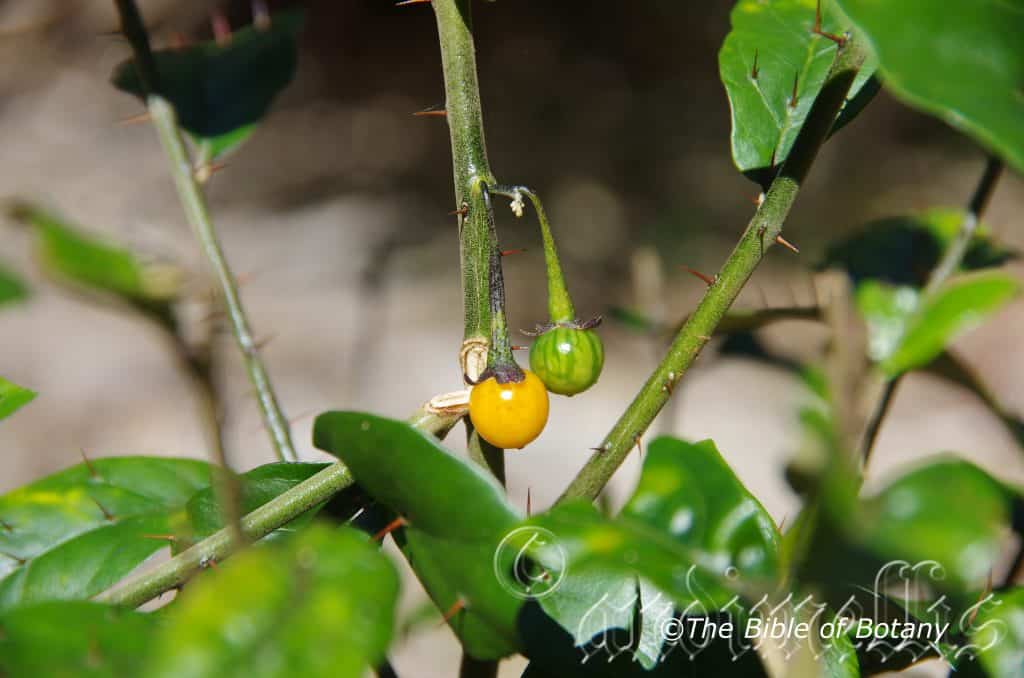
Author’s Garden The Pinnacles NSW

Author’s Garden The Pinnacles NSW

Author’s Garden The Pinnacles NSW
Solanum furfuraceum
Classification:
Unranked: Eudicots
Unranked: Asterids
Order: Solanales
Family: Solanaceae
Subfamily: Solanoideae
Tribe: Solaneae
Genus: From Sol, which is Latin is Latin for the sun and Anus, which is Latin for a stem. It refers to the family of plants known as nightshades, which includes the potato, tomato, capsicum and chillies, where the flowers look like little suns on the end of stems. It also has the possible meaning from Hiláskomai, which is Ancient Greek or later Sōlārī, which is Latin for to appease, to make comfortable, to console or to solace. It refers to organs or structures usually the flowers, which are very pleasing to the eye.
Specie: From Furfur, which is Latin for bran, husks of grain or to have a scaly infection of the skin and āceum/ācius, which are Latin for to be inclined to. It refers to organs or structures, which are noticeably covered in chaff like scales.
Sub specie:
Common Name:
Distribution:
Solanum furfuraceum is found south from Wild Horse in north eastern Queensland to Toonumbar Sate Forest in far north eastern New South Wales. It is found on the western slopes, on and east of the Great Dividing Range to the coast.
https://avh.ala.org.au/occurrences/search?taxa=Solanum+furfuraceum#tab_mapView
Habitat Aspect Climate:
Solanum furfuraceum prefers light dappled shade. It grows in higher rainfall areas of Great Dividing Range in eastern Qld. and north eastern NSW, usually in transitional zones of rainforest or along drainage lines where soil moisture is retained for longer periods.
The altitude ranges from 25 meters ASL to 900 meters ASL.
The temperatures range from 5 degrees in August to 38 degrees in January.
The rainfalls range from lows of 1200mm to 2200mm average per annum.
Soil Requirements:
Solanum furfuraceum prefers coarse sandy loams to medium clays. The soils are usually derived from better quality decomposed granites, black basalts or brown basalts. The soils pH ranges from 5pH to 6.5pH. It does not tolerate water logged soils but prefers better moisture retentive soils. Non saline soils to moderately saline soils are tolerated.
Height & Spread:
Wild Plants: 1m to 2 m by 1m to 1.5m.
Characteristics:
Solanum furfuraceum grows as an erect shrub with deep green stems that are densely covered pubescent and stellate hairs. The reddish-orange to maroon, glossy stems spines measure 9mm to 12mm in length.
The alternate, broad ovate juvenile leaves measure 120mm to 175mm in length by 8mm to 12mm in width. The terete petiole measures 10mm to 40mm in length. The concolourous laminas are glossy, grass-green and sparsely covered in cream pubescent with stellate hairs with reddish-orange, glossy spines that measure 8mm to 10mm in length on the upper lamina, while the lower lamina is extremely densely covered in cream pubescent with stellate hairs. The margins have shallow lobes. The main vein and the 5 to 7 pairs of alternate lateral veins are strongly prominent on the lower lamina.
The alternate, broad lanceolate to somewhat elliptic mature leaves measure 60mm to 110mm in length by 30mm to 45mm in width. The terete petioles measure measures 15mm to 45mm in length. The concolourous laminas are glossy, grass-green and sparsely covered in cream pubescent with stellate hairs with reddish-orange, glossy spines that measure 8mm to 10mm in length on the upper lamina, while the lower lamina is extremely densely covered in cream pubescent with stellate hairs. The margins are entire or with irregular shallow lobes. The main vein and the 5 to 7 pairs of alternate lateral veins are strongly prominent on the lower lamina.
The inflorescences of Solanum furfuraceum are born on short umbels from between the leaf axis and are usually leaf opposed. The flowers are solitary or pseudo-umbels with 3 to 9 individual flowers. The terete peduncles, rachis and pedicels are grass-green, are densely covered in cream pubescent with stellate hairs. The peduncles measure 4mm to 5mm in length, while the rachis measures 8mm to 10mm in length and the pedicels measure 8mm to 10mm in length.
The deep purple to burgundy calyxes are densely covered in cream pubescent with stellate hairs externally and measure 5mm to 8mm in length, while the lanceolate lobes have acute apexes and measure 4mm to 8mm in length.
The broad corolla is densely covered in cream stellate hairs externally and measure 25mm to 35mm in length. The short, stout, white filaments measure 0.1mm to 0.2mm in length, while the bright yellow linear anthers dehisce poricidally and measure 4mm to 6mm in length.
The globular or depressed globular berries measure 15mm to 20mm in diameter. The green or yellowish-green berries turn bright yellow when ripe. The persistant calyx lobes measure 5mm to 10mm in length. The pale yellow or brown seeds measure 1.5mm to 2mm in length.
Wildlife:
Solanum furfuraceum support native colony bees like Tetragonula carbonaria and native pollen flies along the coast when in flower.
WARNING: Many Solanum species are poisonous and many species; perhaps all, have some parts that are poisonous, or the edible parts are only edible at certain times of the year while being poisonous at other times.
Some native species of Solanum were known as traditional Aboriginal bush tucker plants. Others are introduced edible weeds.
Several native species are listed in Wild Food Plants of Australia by Cribb Not all of these are edible however some had specific uses or had to be treated first before eating: Solanum aviculare (Rainforest Kangaroo Apple), Solanum centrale (Desert Raisin), Solanum chippendalei (Bush Tomato), Solanum diversiflorum (Kakarrta), Solanum ellipticum, Solanum esuriale, Solanum laciniatum (Southern Kangaroo Apple), Solanum linearifolium (Mountain Kangaroo Apple), Solanum mauritianum (Wild Tobacco, Tobacco Bush), and Solanum vescum (Gunyang). Of these, Solanum aviculare, Solanum laciniatum, and Solanum mauritanum are the most common species that people come into contact with.
The Rainforest Kangaroo Apple is apparently only barely edible, so should be eaten sparingly.
Of the Solanum species which occur in Australia, Solanum americanum, Solanum scabrum and Solanum villosum and Solanum opacum are also considered to be edible.
People with allergies to tomatoes, peanuts or potatoes should be wary of eating any fruit of the solanaceae family as they all contain small amounts of the alkaloid sola.
Solanum aviculare Kangaroo Apple
Solanum centrale is also known as Desert Raisin, Bush Raisin or Bush Sultana, or by the native name kutjera.
Solanum chipendalei is known as Bush Tomato.
Solanum coactiliferum Aborigines roasted the fruit before eating.
Solanum diversifolium is known as Bush Tomato, Karlumbu, Pilirta, Wamurla districts.
Solanum ellipticum Potato Bush is very similar to Solanum quadriliculatum which is poisonous.
Solanum lacinatum is known as Kangaroo Apple.
Solanum orbicaltum is known as Round-leaved Solanum.
Solanum pholomoides is also known as Wild Tomato.
Solanum vescum.
Solanum cinerium is poisonous
Aborigines burned off the outer skin of Solanum aviculare as eating them raw caused the mouth to blister. Aborigines ate the fruit of Solanum centrale raw or put it on the hot earth by the fire, sprinkle some water on the fruits and cover them up to cook them. Solanum chippendalei is consumed by first splitting the fruit, scraping the center out and eating the outer flesh as the seeds and surrounding placenta are bitter. Solanum diversiflorum is roasted before being eaten or dried. Fruit of Solanum orbiculatum is edible, but the fruit of the large leafed form may be bitter. Fruit of Solanum phlomoidesappears to be edible after the removal of seeds and roasting or sun drying. Mardu people would dry the fruits to consume them at a later date.
Solanum aviculare contains solasodine, a steroid used in the manufacture of oral contraceptives. I have not tried the fruits so cannot vouch for any of what is said first hand.
Cultivation:
Solanum furfuraceum is a perennial shrub that should be grown in semi shade in better quality loams. In cultivation it will grow from 1 meters to 2 meters in height by 1 meters to 1.5 meters in diameter when grown in the open.
The plants need a little additional water and organic fertilize to induce a longer flowering period and better and larger fruit set. Fertilized plants will produce fruit for around 8 months of the year instead of the conventional 5 months in the wild. If these requirements are met it can cope with temperatures as low as 1 degree and up to 44 degrees. It ismoderately drought resistant once established within its natural range but some leaf drop will will occur when stressed.
Place it near old stumps and roots to make the stumps or roots look larger. Select an area of ground and let your hair down and be imaginative as plant may just change your garden scapes. Remember this plant is rather sensitive to water stress so place it in a position where the soil will be continually moist. When planting a dwarf rainforest garden be very sparingly with the other plants in the shade. A billabong affect can also be the go, not a waterfall or cascades. It also looks great on rock ledges and steep banks where moisture is assured.
Solanum furfuraceum would make a great contribution to a sandy or rocky terrain rock garden. Here it can be used as fill in plants, scattered throughout the boulders. When you use them in area that is strewn with large boulders do not over crowd the scene as the boulders are a formidable part of the scene but as a rainforest the area should be strewn with small larger leaf plants with a lush appearance. Solanum furfuraceum is well suited to such conditions so contours with boulders add interest.
If large deep green leaf plants are wanted try using them as prostrate plants. Use a lot of procumbent plants like Hibbertia specie to make the rocks look larger and the spaces between the plants bigger. Try Hibbertia diffusa, Hibbertia empetrifolia or Hibbertia linearifolia to mention a few. Mix them with other smaller shrubs so none of them dominate the scene but blend in to give a mosaic of foliage colours that you oversee. Here Actinotis helianthi, Hovea acutifolia, Boronia ledifolia, Lechenaultia formosa or Lechenaultia biloba can be used adjacent to the shade where more sunlight penetrates the scene.
Propagation:
Seeds: The seeds of Solanum furfuraceum can be removed easily from the fruits.
Sow fresh seeds directly into a seed raising mix, keeping them moist not wet. Do not over water as the seeds will rot off before germination takes place. Place the trays in a cool shaded area with 50mm shade cloth in the bush house. When the seedlings are 20 to 25 mm tall, prick them out and plant them into 50mm native tubes using a good organic mix.
As the seedlings roots reach the bottom of the tubes plant them out into their permanent position. Do not delay.
Fertilize using Seaweed, fish emulsion or organic chicken pellets soaked in water and apply the liquid on an alternate basis. Fertilize every 2 months until the plants are well established then on an annual basis in September or March to maintain health, vigour and better flowering and fruiting.
Further Comments from Readers:
“Hi reader, it seems you use The Bible of Botany a lot. That’s great as we have great pleasure in bringing it to you! It’s a little awkward for us to ask, but our first aim is to purchase land approximately 1,600 hectares to link several parcels of N.P. into one at The Pinnacles NSW Australia, but we need your help. We’re not salespeople. We’re amateur botanists who have dedicated over 30 years to saving the environment in a practical way. We depend on donations to reach our goal. If you donate just $5, the price of your coffee this Sunday, We can help to keep the planet alive in a real way and continue to bring you regular updates and features on Australian plants all in one Botanical Bible. Any support is greatly appreciated. Thank you.”
In the spirit of reconciliation we acknowledge the Bundjalung, Gumbaynggirr and Yaegl and all aboriginal nations throughout Australia and their connections to land, sea and community. We pay our respect to their Elders past, present and future for the pleasures we have gained.
Solanum gabrielae
Classification:
Unranked: Eudicots
Unranked: Asterids
Order: Solanales
Family: Solanaceae
Subfamily: Solanoideae
Tribe: Solaneae
Genus: From Sol, which is Latin is Latin for the sun and Anus, which is Latin for a stem. It refers to the family of plants known as nightshades, which includes the potato, tomato, capsicum and chillies, where the flowers look like little suns on the end of stems. It also has the possible meaning from Hiláskomai, which is Ancient Greek or later Sōlārī, which is Latin for to appease, to make comfortable, to console or to solace. It refers to organs or structures usually the flowers, which are very pleasing to the eye.
Specie: Is named in honour of Joseph Gabriel; 1847-1922, who a Western Australian naturalist.
Sub specie:
Common Name:
Distribution:
Solanum gabrielae is found in a rough rectangle boarded by Karratha in the north-west to Marble Bar in the north-east, Newman in the south-east and Kennedy National Park in the south-west.
https://avh.ala.org.au/occurrences/search?taxa=Solanum+campanulatum#tab_mapView
Habitat Aspect Climate:
Solanum gabrielae prefers light dappled shade to full sun. It grows on rocky hills or rocky plains. The altitude ranges from 5 meters ASL to 500 meters ASL.
The temperatures range from 6 degrees in August to 44 degrees in January.
The rainfalls range from lows of 150mm to 420mm average per annum.
Soil Requirements:
Solanum gabrielae prefers better quality loams to medium clays. The soils are derived from decomposed reddish sandstones, or brown basalt. The soils pH ranges from 4.5pH to 6pH. It does not tolerate water logged soils however water may collect in shallow depressions for several days following good rainfall. Non saline soils to moderately saline soils are tolerated.
Height & Spread:
Wild Plants: 0.3m to 0.6m by 0.5m to 0.8m.
Characteristics:
Solanum gabrielae grows as a small ascending to erect shrub with pale grey to pale blue grey and densely covered in white or pale grey soft pulverulent hairs. The stems and young stems are covered in pale creamy yellow acicular needle like spines that measure 3mm to 6mm in length.
The opposite, ovate, ovate-lanceolate leaves of Solanum gabrielae measure 30mm to 70mm in length by 25mm to 45mm in width. The base is broad rounded while the apex is broad acute to acute-obtuse. The concolourous laminas are pale blue grey to pale grey dull and densely covered in white pulverulent hairs. The leaf margins are entire and are often undulating. The laminas are usually flat or at times recurve from the mid vein to the margins and decurve from the mid-point to the apex. The mid vein is prominent on the lower laminas and is faintly to distinctly visible from the upper lamina. The petiole, mid vein and lateral veins are densely covered in white pulverulent hairs and sparsely covered in white or pale cream acicular needle like spines. The petioles measure 10mm to 30mm in length.
Inflorescences of Solanum gabrielae are born racemes from the leaf axils. There are 2 to 6 individual flowers on a raceme. The peduncles, rachises and pedicels are densely covered in white pulverulent hairs and sparsely covered in white or pale cream acicular needle like spines. The peduncles measure 5mm to 10mm in length while the rachises measure 10mm to 40mm in length and the pedicels measure 4mm to 16mm in length. The pale blue grey to pale grey calyxes are covered in white pulverulent hairs and sparsely covered in white or pale cream acicular needle like spines externally and glabrous internally. They measure 5mm to 7mm in length while the 5 elliptical lobes are spreading and measure 2mm to 4mm in length. The mauve to deep purple with a pale yellow green center corolla is campanulate. The corolla tube measures 3mm to 4mm in length by 20mm to 30mm in diameter. The 5 stellate-rotate lobes are wide spreading and measure 4mm to 7mm in length. The lobes margins are entire, crinkled and undulating while the apex is obtuse to acute-obtuse.
The 5 exserted anthers are united for half their length as they extend from the mouth of the corolla tube. The filaments are deep yellow while the basifixed anthers are bright yellow. The filaments measure 1mm to 2mm in length. The anthers measure 4mm to 7mm in length by 2.5mm to 3mm in width and converge around the style.
The deep purple style and white stigma are glabrous while the superior, green, ovoidal ovary measures 1mm to 2mm in length. The pistil measures 16mm to 25mm in length. Solanum gabrielae’s flowers appear throughout the year with increased flowering from early July through to late October.
Solanum gabrielae fruits are globose berries. The berries are glabrous and measure 7.5mm to 15mm in length by 10mm to 20mm in diameter. The pale grey berries turn yellow green when ripe. The calyx lobes are persistent and fully enclose the fruit and expand to 10mm to 20mm in length. It is densely covered in long white to pale creamy yellow acicular needle like spines. The pale grey-fawn seeds measure 1.5mm to 2mm in length.
Wildlife:
Solanum gabrielae support native bees and native flies along the coast when in flower.
WARNING: Many Solanum species are poisonous and many species; perhaps all, have some parts that are poisonous, or the edible parts are only edible at certain times of the year while being poisonous at other times.
Some native species of Solanum were known as traditional Aboriginal bush tucker plants. Others are introduced edible weeds.
Several native species are listed in Wild Food Plants of Australia by Cribb Not all of these are edible however some had specific uses or had to be treated first before eating: Solanum aviculare (Rainforest Kangaroo Apple), Solanum centrale (Desert Raisin), Solanum chippendalei (Bush Tomato), Solanum diversiflorum (Kakarrta), Solanum ellipticum, Solanum esuriale, Solanum laciniatum (Southern Kangaroo Apple), Solanum linearifolium (Mountain Kangaroo Apple), Solanum mauritianum (Wild Tobacco, Tobacco Bush), and Solanum vescum (Gunyang). Of these, Solanum aviculare, Solanum laciniatum, and Solanum mauritanum are the most common species that people come into contact with.
The Rainforest Kangaroo Apple is apparently only barely edible, so should be eaten sparingly.
Of the Solanum species which occur in Australia, Solanum americanum, Solanum scabrum and Solanum villosum and Solanum opacum are also considered to be edible.
People with allergies to tomatoes, peanuts or potatoes should be wary of eating any fruit of the solanaceae family as they all contain small amounts of the alkaloid sola.
olanum aviculare Kangaroo Apple
Solanum centrale is also known as Desert Raisin, Bush Raisin or Bush Sultana, or by the native name kutjera.
Solanum chipendalei is known as Bush Tomato.
Solanum coactiliferum Aborigines roasted the fruit before eating.
Solanum diversifolium is known as Bush Tomato, Karlumbu, Pilirta, Wamurla districts.
Solanum ellipticum Potato Bush is very similar to Solanum quadriliculatum which is poisonous.
Solanum lacinatum is known as Kangaroo Apple.
Solanum orbicaltum is known as Round-leaved Solanum.
Solanum pholomoides is also known as Wild Tomato.
Solanum vescum.
Solanum cinerium is poisonous
Aborigines burned off the outer skin of Solanum aviculare as eating them raw caused the mouth to blister. Aborigines ate the fruit of Solanum centrale raw or put it on the hot earth by the fire, sprinkle some water on the fruits and cover them up to cook them. Solanum chippendalei is consumed by first splitting the fruit, scraping the center out and eating the outer flesh as the seeds and surrounding placenta are bitter. Solanum diversiflorum is roasted before being eaten or dried. Fruit of Solanum orbiculatum is edible, but the fruit of the large leafed form may be bitter. Fruit of Solanum phlomoidesappears to be edible after the removal of seeds and roasting or sun drying. Mardu people would dry the fruits to consume them at a later date.
Solanum aviculare contains solasodine, a steroid used in the manufacture of oral contraceptives. I have not tried the fruits so cannot vouch for any of what is said first hand.
It is unknown whether Solanum gabrielae is toxic or not so it is better to remain on the safe side and treat them as toxic.
Cultivation:
Solanum gabrielae is another magnificent perennial shrub that should be grown in the open in full sun, on sandy loams or rocky sites in arid areas of Australia. In cultivation they will grow from 0.4 meters to 0.6 meters in height by 0.5 meters to 1 meter in diameter when grown in the open. They have a denser growth than most Solanum and with the beautiful foliage offer the garden great versatility in landscaping.
It grows exceptionally well where a layer of mulch prevails that will keep the soil cool and moisture at an even level in arid areas or left open to create air movement and quicker drainage in higher rainfall areas. If these requirements are met it can cope with temperatures as low as 2 degrees and up to 45 degrees. It is moderately drought resistant once established however it will drop leaf and under severe stress will abort branches only to reshoot immediately following good rains or increased soil moisture.
Add to the above, if it is given a little water with a little native fertilizer in arid areas on a regular basis or fertilized during rainy periods the plants will respond with superb flowering and fruiting over a long period.
Place it near large, old stumps and roots to make the stumps or roots even more gnarled and older than they really are. It can be lightly tip pruned if a smaller plant is required however a loss of flowering will occur until new shoots are formed. Select an area of ground and let your hair down. Be imaginative and this is the plant that can give inspiration because it is so different. Solanum gabrielae is suited to medium desert type gardens on the coast so be sparingly with the other plants when planting and remember that deserts are rolling flat plains not steep hills so it is best to use them on gentle slopes. It is most suitable for this type of garden so use them as the main feature and surround them with small native annuals.
It can be placed behind a small pool at the bottom of the garden with a billabong for great affect or even or in the foreground with a small waterfall or cascades in the background. Either way it is an interesting subject to work with.
Solanum gabrielae would make a great contribution to a sandy or rocky terrain rock garden. Here they can be used as fill in plants, scattered throughout the boulders. When you use them in an area that is strewn with large boulders do not over crowd the scene as the boulders are a formidable part of the scene. Solanum gabrielae is well suited to such conditions so use them to high light the other features. Boulder country are almost always rising and falling in contour and may have some sharp rises. Make the scene so you can overseer the tallest rocks with the exception of one or two at the most. This can be achieved with using Solanum gabrielae’s pale blue green leaves contrasting with finer pale green or soft grey to glaucous coloured foliages scattered here and there. Use a lot of procumbent plants like Hibbertia to make the rocks look larger and the spaces between the plants more expansive. Mix them with other smaller shrubs so none of them dominate the scene but blend in to give a mosaic of foliage colours that you oversee. Here I immediately think of Actinotis helianthi or Grevillea thelemanniana for two great contrasting foliages. Actinotis helianthi will offer a great contrast to the foliage and give height when scattered between Solanum gabrielae.
Propagation:
Seeds: The seeds ofSolanum gabrielae can be removed easily from the fruits.
Sow fresh seeds directly into a seed raising mix, keeping them moist not wet. Do not over water as the seeds will rot off before germination takes place. Place the trays in a cool shaded area with 50mm shade cloth in the bush house. When the seedlings are 20 to 25 mm tall, prick them out and plant them into 50mm native tubes using a good organic mix.
As the seedlings roots reach the bottom of the tubes plant them out into their permanent position. Do not delay.
Fertilize using Seaweed, fish emulsion or organic chicken pellets soaked in water and apply the liquid on an alternate basis. Fertilize every 2 months until the plants are well established then on an annual basis in September or March to maintain health, vigour and better flowering.
Further Comments from Readers:
“Hi reader, it seems you use The Bible of Botany a lot. That’s great as we have great pleasure in bringing it to you! It’s a little awkward for us to ask, but our first aim is to purchase land approximately 1,600 hectares to link several parcels of N.P. into one at The Pinnacles NSW Australia, but we need your help. We’re not salespeople. We’re amateur botanists who have dedicated over 30 years to saving the environment in a practical way. We depend on donations to reach our goal. If you donate just $5, the price of your coffee this Sunday, We can help to keep the planet alive in a real way and continue to bring you regular updates and features on Australian plants all in one Botanical Bible. Any support is greatly appreciated. Thank you.”
In the spirit of reconciliation we acknowledge the Bundjalung, Gumbaynggirr and Yaegl and all aboriginal nations throughout Australia and their connections to land, sea and community. We pay our respect to their Elders past, present and future for the pleasures we have gained.

Mount Cootha Botanic Gardens Qld.
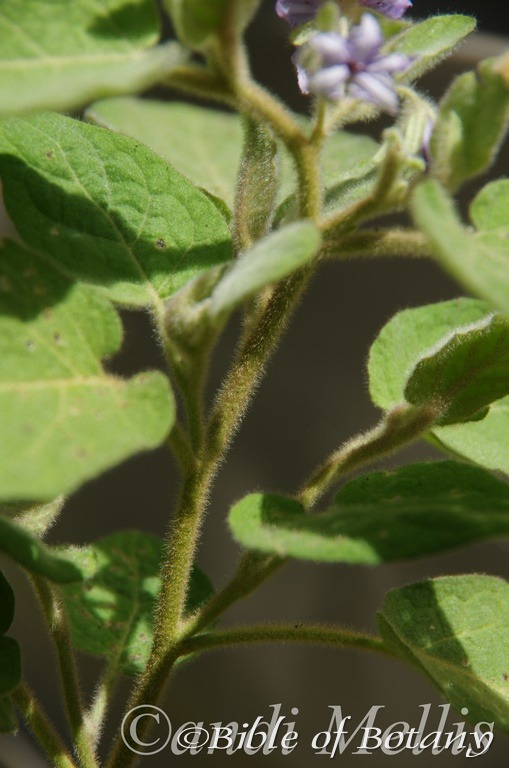
Author’s Garden The Pinnacles NSW
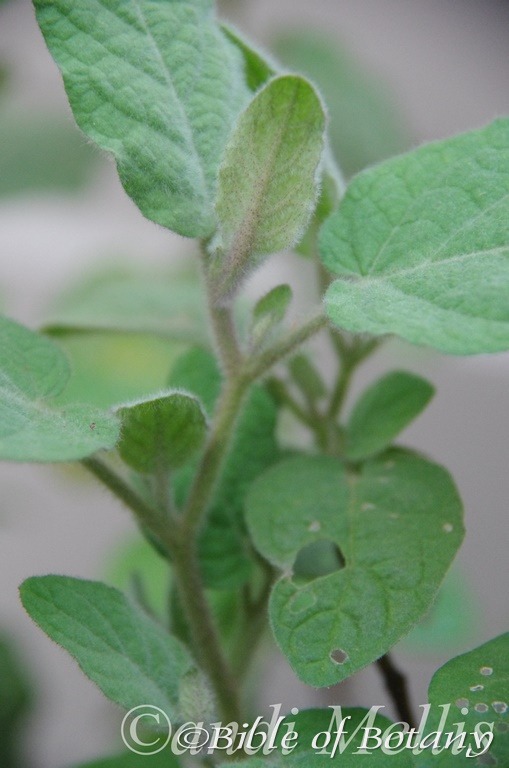
Author’s Garden The Pinnacles NSW

Author’s Garden The Pinnacles NSW
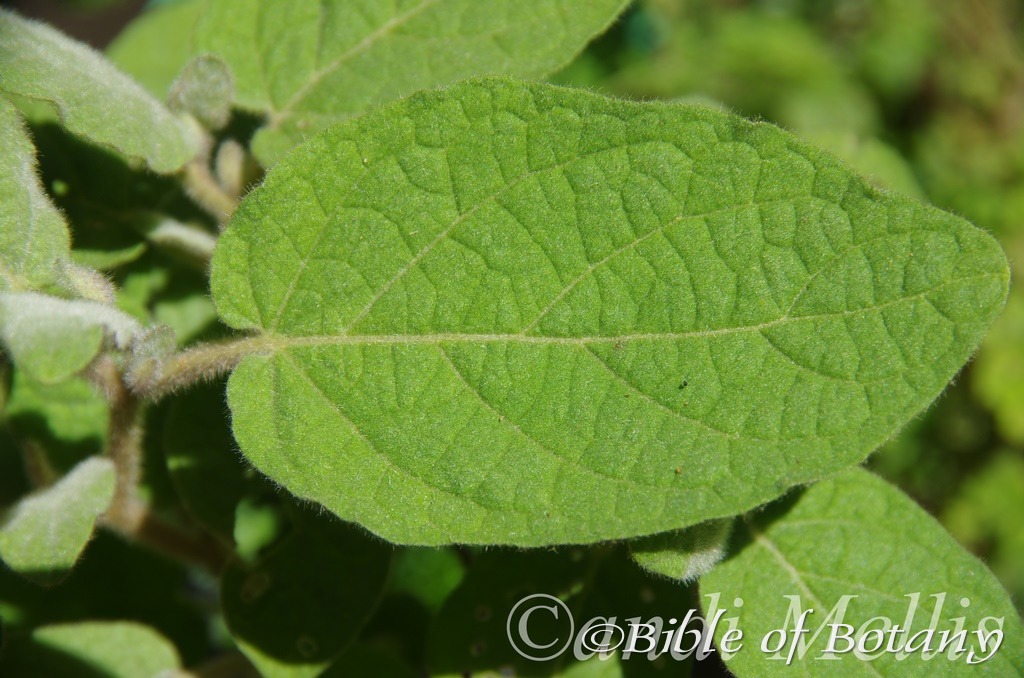
Author’s Garden The Pinnacles NSW
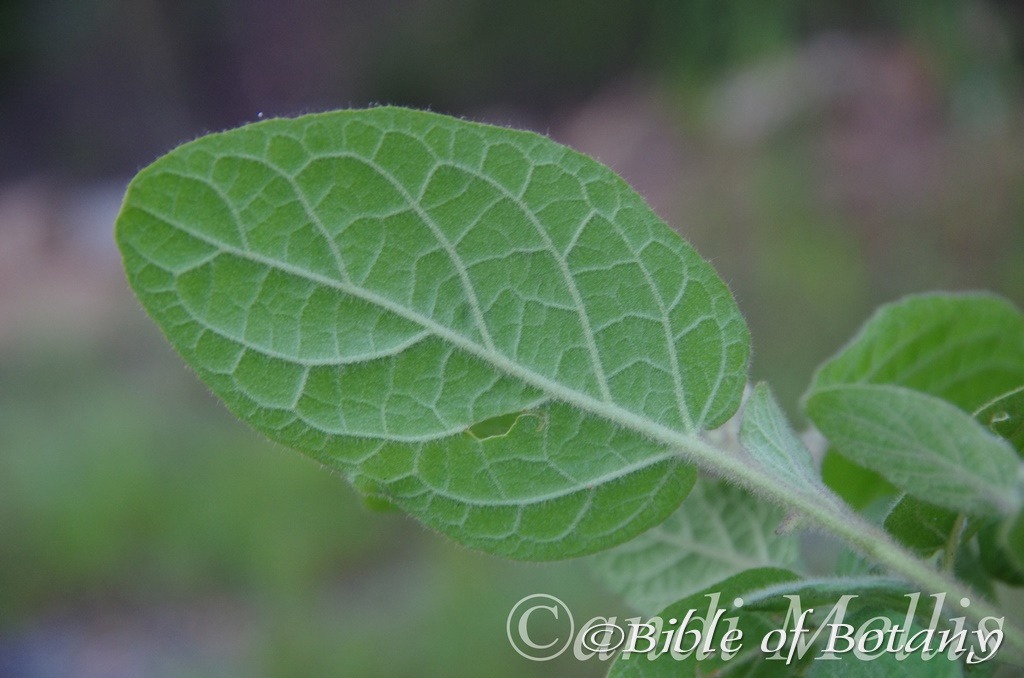
Author’s Garden The Pinnacles NSW

Author’s Garden The Pinnacles NSW
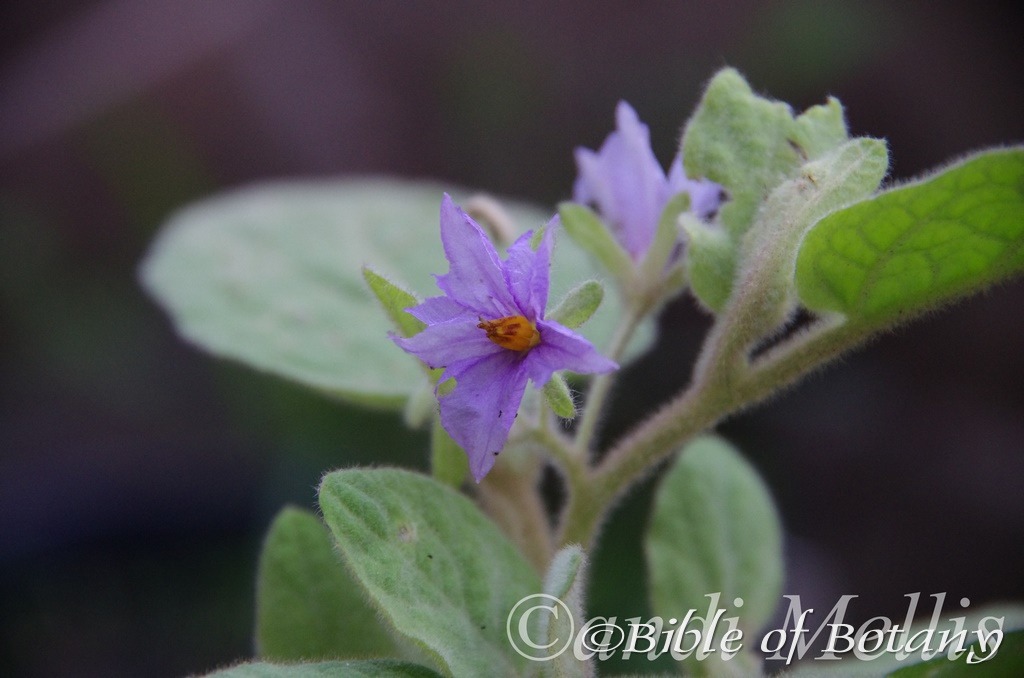
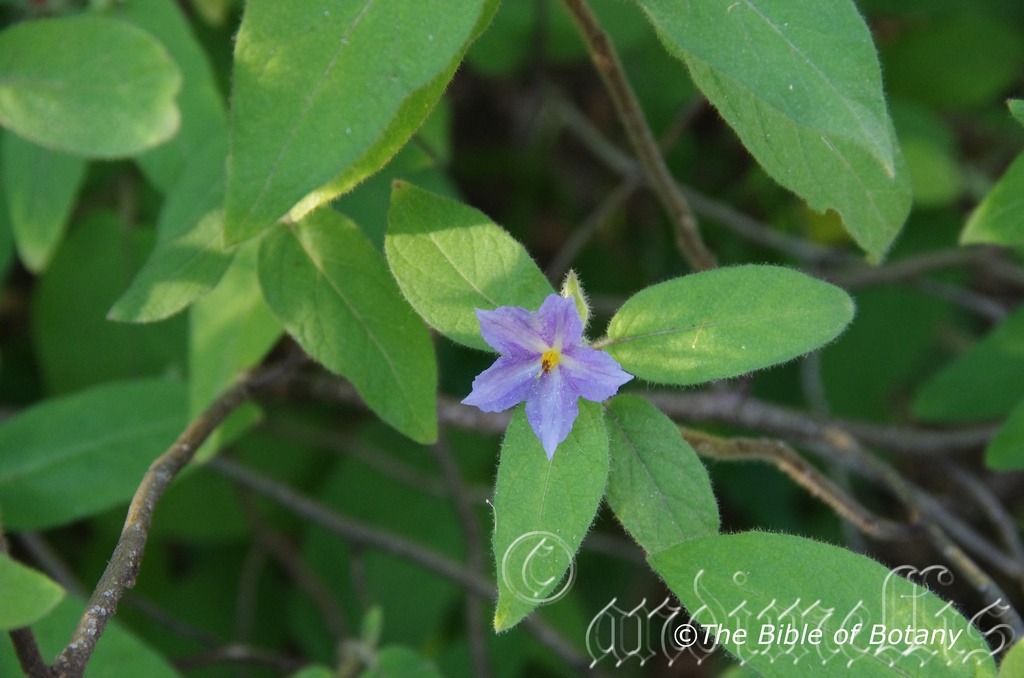
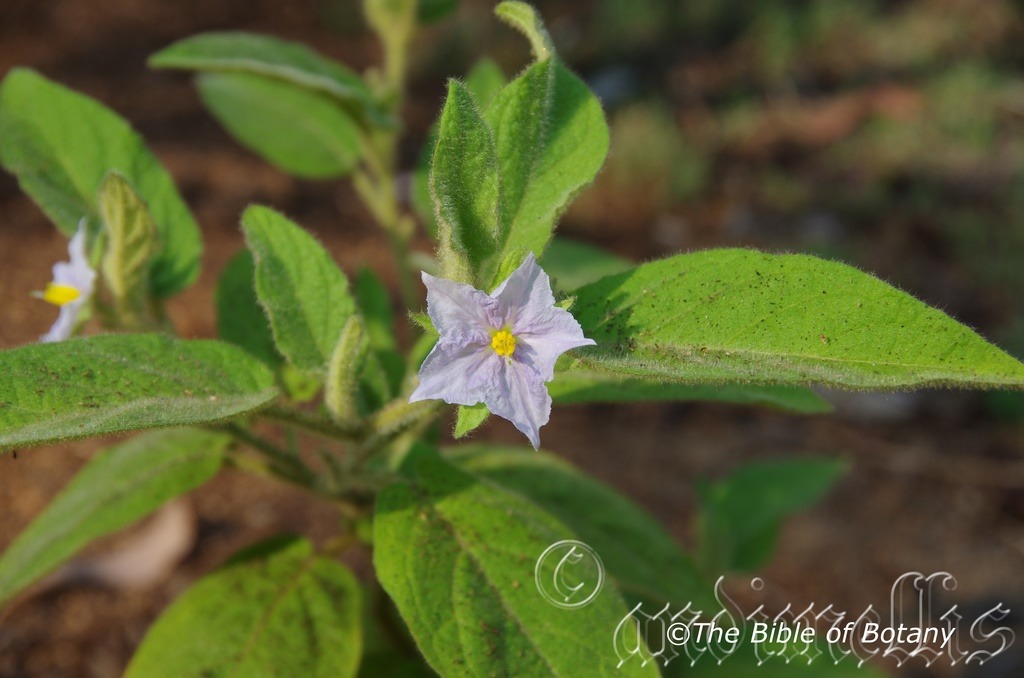
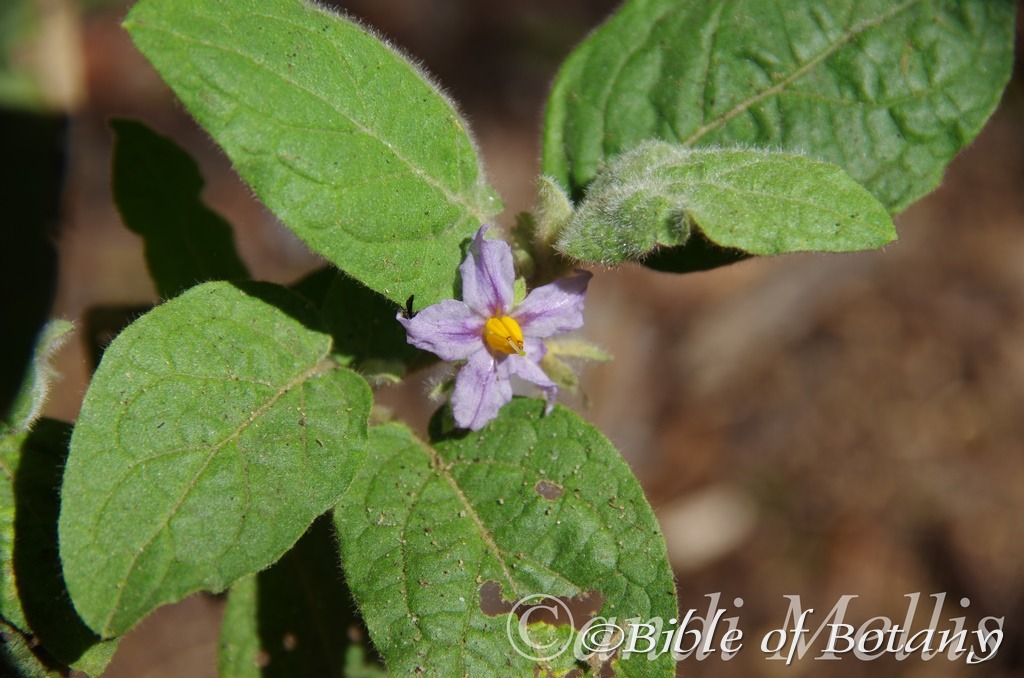
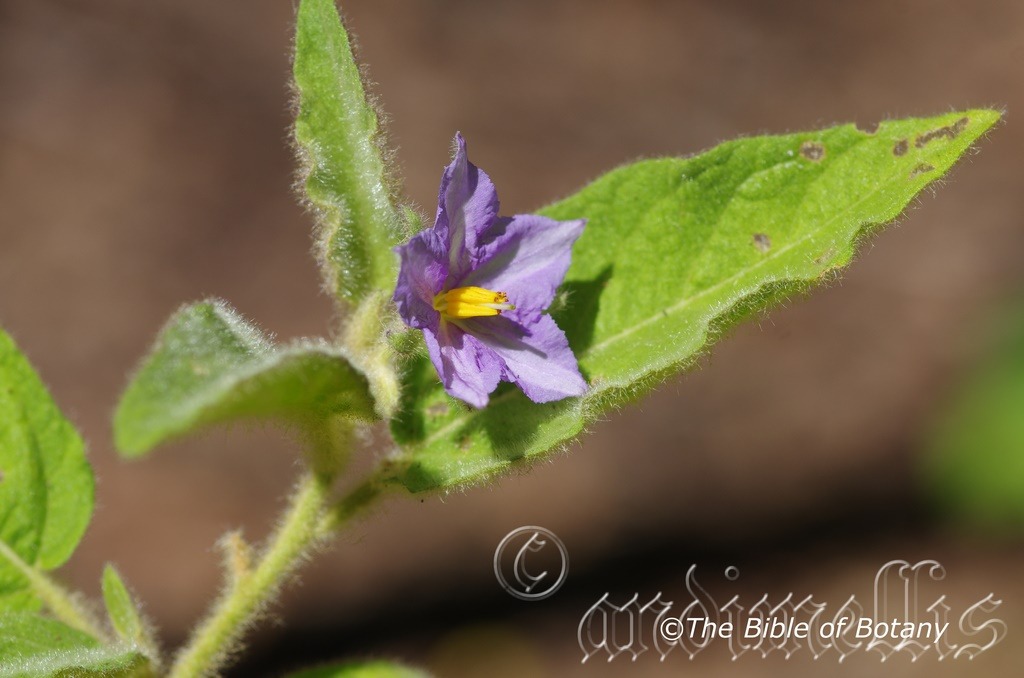
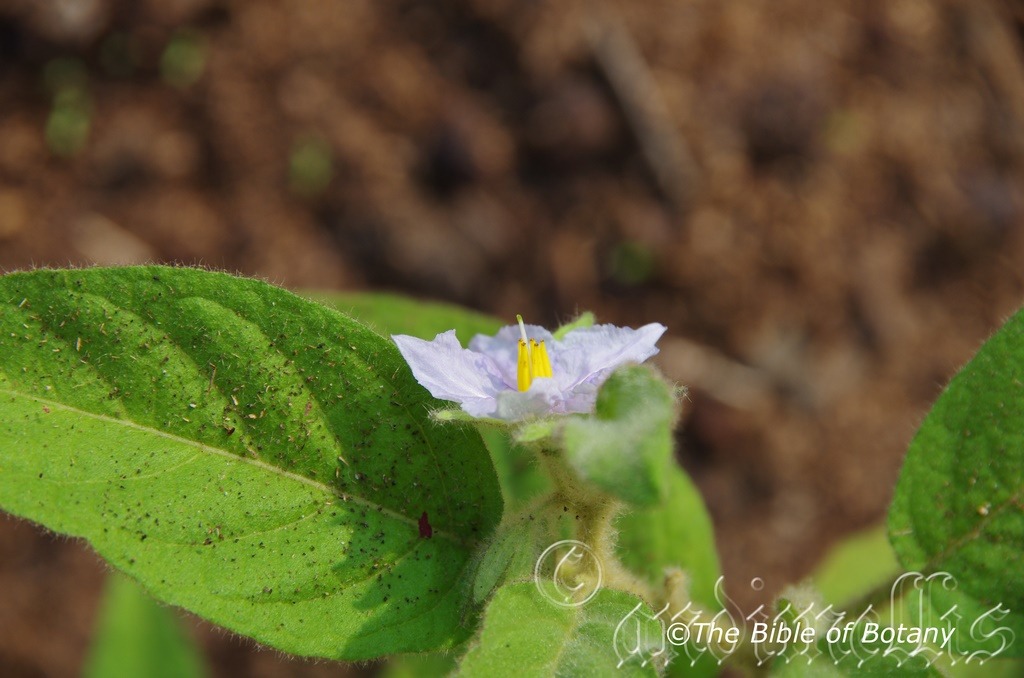
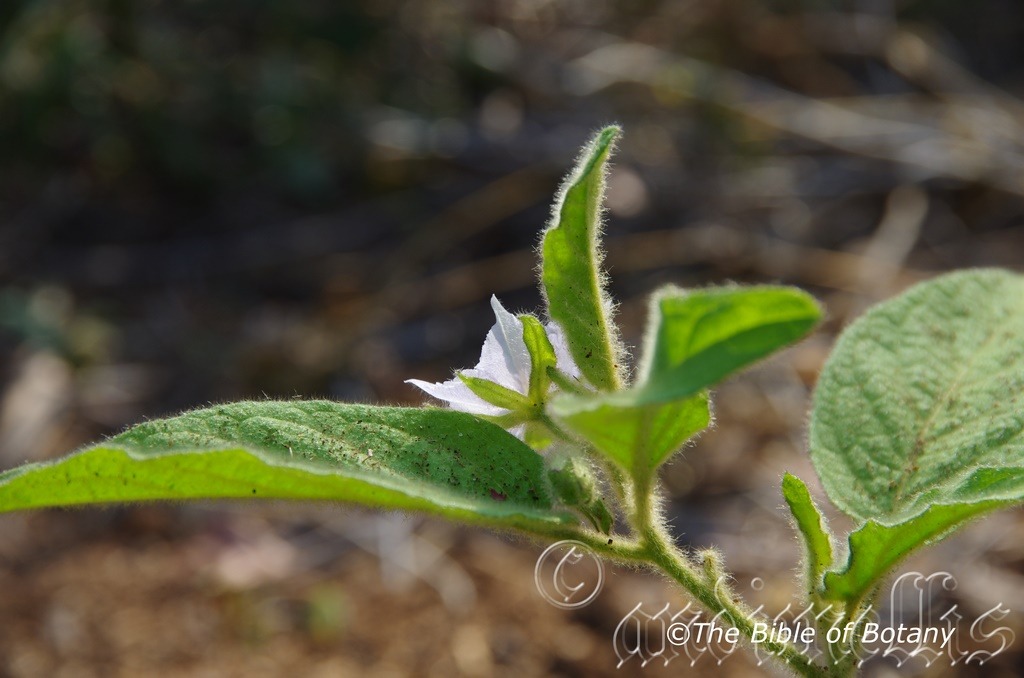
Author’s Garden The Pinnacles NSW
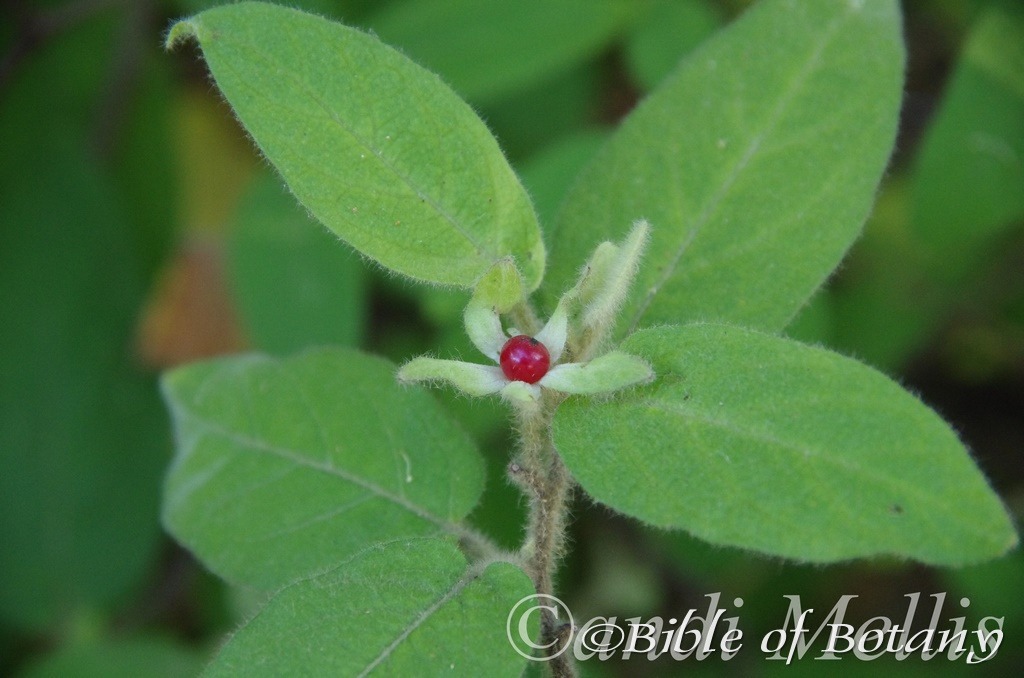
Mount Cootha Botanic Gardens Qld.
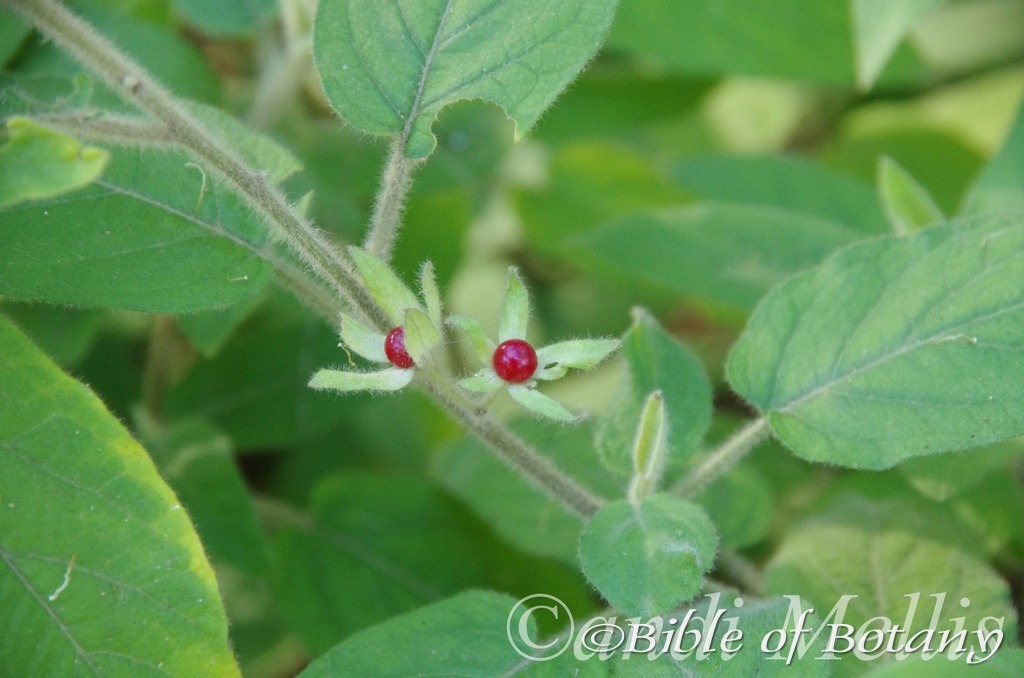
Author’s Garden The Pinnacles NSW
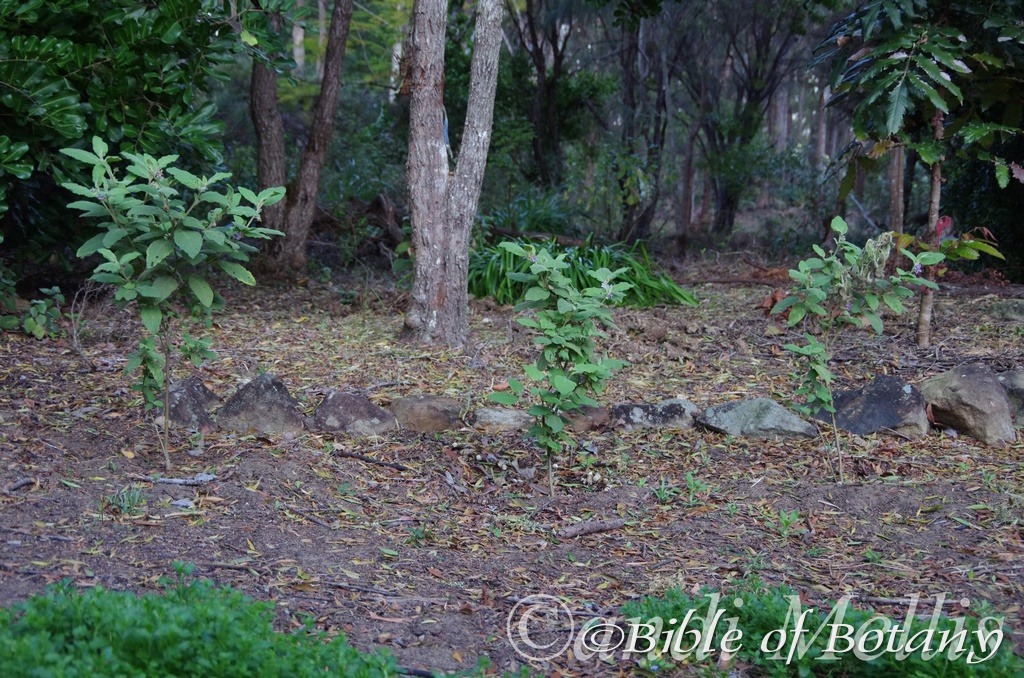
Author’s Garden The Pinnacles NSW
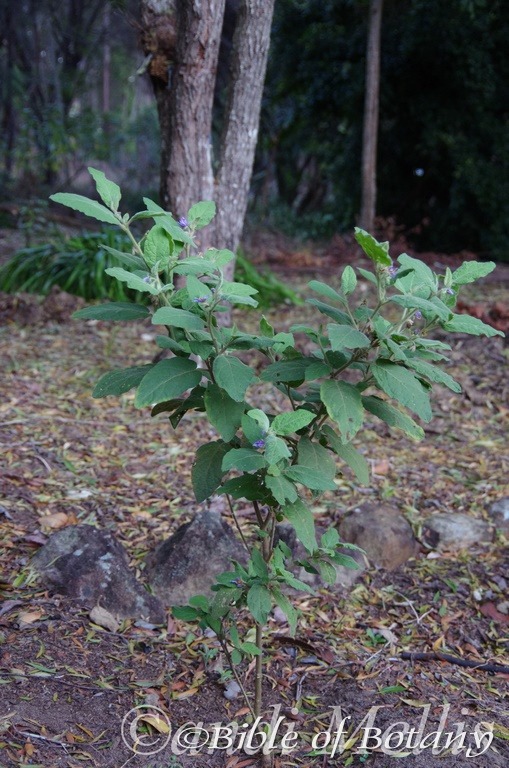
Author’s Garden The Pinnacles NSW
Solanum hapalum
Classification:
Unranked: Eudicots
Unranked: Asterids
Order: Solanales
Family: Solanaceae
Subfamily: Solanoideae
Tribe: Solaneae
Genus: From Sol, which is Latin is Latin for the sun and Anus, which is Latin for a stem. It refers to the family of plants known as nightshades, which includes the potato, tomato, capsicum and chillies, where the flowers look like little suns on the end of stems. It also has the possible meaning from Hiláskomai, which is Ancient Greek or later Sōlārī, which is Latin for to appease, to make comfortable, to console or to solace. It refers to organs or structures usually the flowers, which are very pleasing to the eye.
Specie: From Haplos, which is Ancient Greek for once, single or simple. It refers to leaves, which are simple compared to most other species in the genus which are generally toothed or pinnate leaflets.
Sub specie:
Common Name:
Distribution:
Solanum hapalum is found south from Mount Barney and the Murwillumbah Caldera on the Border Ranges National Park in far north eastern New South Wales to Taree with a further disjunct population at Longmans Beach, Batemans Bay in southern coastal New South Wales. It is found on and east of the Great Dividing Range to the coast.
https://avh.ala.org.au/occurrences/search?taxa=Solanum+hapalum#tab_mapView
Habitat Aspect Climate:
Solanum hapalum prefers light dappled shade to full sun. It grows on dunes or plains especially those that are sparsely vegetated. The altitude ranges from 5 meters ASL to 730 meters ASL.
The temperatures range from minus 3 degrees in August to 38 degrees in January.
The rainfalls range from lows of 600mm to 2000mm average per annum.
Soil Requirements:
Solanum hapalum prefers coarse sandy loams to medium clays. The soils are usually derived from decomposed granites, black basalts or brown basalts. The soils pH ranges from 4.5pH to 6pH. It does not tolerate water logged soils. Non saline soils to moderately saline soils are tolerated.
Height & Spread:
Wild Plants: 0.1m to 0.8m by 0.5m to 0.8m.
Characteristics:
Solanum hapalum grows as an erect shrub with yellowish or brownish stems. The stems are very densely covered in white stellate- pulverulent hairs. The stems spines are absent on this species.
The alternate, ovate leaves of Solanum hapalum measure 30mm to 70mm in length by 15mm to 35mm in width. The petioles are densely to very densely covered in white stellate-pulverulent hairs and measure 8mm to 17mm in length. The oblique bases are rounded to cordate with the oblique section is always 1mm to 4mm apart while the apexes are obtuse. The chartaceous, discolourous laminas are grey-green, dull and moderately to densely covered in white stellate-pubescent hairs on the upper laminas while the lower laminas are paler. The laminas are flat and straight while the margins are entire. The mid vein is prominent while the lateral pinnate veins are slightly prominent on the lower laminas.
The juvenile leaves are shallowly lobed.
The inflorescences of Solanum hapalum are born on short umbels or from between the leaf axils and are usually leaf opposed. The flowers are solitary or pseudo-umbellate with 1 to 3 individual flowers. The mid grey-green peduncles and pedicels are densely covered in are densely to very densely covered in translucent stellate-pubescent hairs. The peduncles measure 0mm to 7mm in length while the pedicels measure 2mm to 7mm in length.
The pale grey-green calyxes and 5 calyx lobes are densely to very densely covered very densely stellate-pulverulent hairs. The calyxes measure 9mm to 10mm in length while the 5 elliptical lobes measure 4.5mm to 8mm in length by 1mm to 2mm in width. The rotate-stellate chartaceous, corolla measures 7mm to 12mm in length by 25mm 30mm in diameter. The broadly deltoid, lilac lobe’s apexes are acuminate and measure 5mm to 7mm by 5mm to 6mm in width. The interpetiolar tissue is present.
The 5 exserted stamens are not convenient and extend from the mouth of the corolla tube. The filaments are yellow while the basifixed anthers are bright yellow and are narrow lanceolate. The filaments measure 1mm to 1.5mm in length while the anthers measure 4mm to 5mm in length by 1mm to 1.4mm near the base and surround the style. The pollen is dehisced through minute apical pores.
The ovary is covered in very short, translucent glandular hairs. The style measures 5mm to 8mm in length by 0.5mm in diameter. The stigma is truncate or capitate. The flowers appear from April through to September.
Solanum hapalum fruits are globose berries. The 1 or 2 berries are glabrous and measure 4mm to 6.5mm in length by 4mm to 6.5mm in diameter. The green berries turn scarlet-red before drying to a mid-brown with a raison like texture while still attached to the plant. The calyx lobes are persistent on the ripe fruit and measure 10mm to 12mm in length while the pedicels measure 8mm to 11mm in length on the ripe fruits. The pale yellow reniform seeds are reticulated on the surfaces and measure 2.2mm to 2.5mm in length by 1.5mm to 2mm in width. The fruits ripen from September to November.
Wildlife:
Solanum hapalum support native bees and native flies along the coast when in flower.
WARNING: Many Solanum species are poisonous and many species; perhaps all, have some parts that are poisonous, or the edible parts are only edible at certain times of the year while being poisonous at other times.
Some native species of Solanum were known as traditional Aboriginal bush tucker plants. Others are introduced edible weeds.
Several native species are listed in Wild Food Plants of Australia by Cribb Not all of these are edible however some had specific uses or had to be treated first before eating: Solanum aviculare (Rainforest Kangaroo Apple), Solanum centrale (Desert Raisin), Solanum chippendalei (Bush Tomato), Solanum diversiflorum (Kakarrta), Solanum ellipticum, Solanum esuriale, Solanum laciniatum (Southern Kangaroo Apple), Solanum linearifolium (Mountain Kangaroo Apple), Solanum mauritianum (Wild Tobacco, Tobacco Bush), and Solanum vescum (Gunyang). Of these, Solanum aviculare, Solanum laciniatum, and Solanum mauritanum are the most common species that people come into contact with.
The Rainforest Kangaroo Apple is apparently only barely edible, so should be eaten sparingly.
Of the Solanum species which occur in Australia, Solanum americanum, Solanum scabrum and Solanum villosum and Solanum opacum are also considered to be edible.
People with allergies to tomatoes, peanuts or potatoes should be wary of eating any fruit of the solanaceae family as they all contain small amounts of the alkaloid sola.
Solanum aviculare Kangaroo Apple
Solanum centrale is also known as Desert Raisin, Bush Raisin or Bush Sultana, or by the native name kutjera.
Solanum chipendalei is known as Bush Tomato.
Solanum coactiliferum Aborigines roasted the fruit before eating.
Solanum diversifolium is known as Bush Tomato, Karlumbu, Pilirta, Wamurla districts.
Solanum ellipticum Potato Bush is very similar to Solanum quadriliculatum which is poisonous.
Solanum lacinatum is known as Kangaroo Apple.
Solanum orbicaltum is known as Round-leaved Solanum.
Solanum pholomoides is also known as Wild Tomato.
Solanum vescum.
Solanum cinerium is poisonous
Aborigines burned off the outer skin of Solanum aviculare as eating them raw caused the mouth to blister. Aborigines ate the fruit of Solanum centrale raw or put it on the hot earth by the fire, sprinkle some water on the fruits and cover them up to cook them. Solanum chippendalei is consumed by first splitting the fruit, scraping the center out and eating the outer flesh as the seeds and surrounding placenta are bitter. Solanum diversiflorum is roasted before being eaten or dried. Fruit of Solanum orbiculatum is edible, but the fruit of the large leafed form may be bitter. Fruit of Solanum phlomoidesappears to be edible after the removal of seeds and roasting or sun drying. Mardu people would dry the fruits to consume them at a later date.
Solanum aviculare contains solasodine, a steroid used in the manufacture of oral contraceptives. I have not tried the fruits so cannot vouch for any of what is said first hand.
Cultivation:
Solanum hapalum is a perennial shrub that should be grown in semi shade to light filitered sunshine in better quality loams. In cultivation it will grow from 1 meters to 2 meters in height by 1 meters to 1.5 meters in diameter when grown in the open.
The plants need a little additional water and organic fertilize to induce a longer flowering period and better and larger fruit set. Fertilized plants will produce fruit for around 8 months of the year instead of the conventional 5 months in the wild. If these requirements are met it can cope with temperatures as low as 1 degree and up to 44 degrees. It ismoderately drought resistant once established within its natural range but some leaf drop will will occur when stressed.
Place it near old stumps and roots to make the stumps or roots look larger. Select an area of ground and let your hair down and be imaginative as plant may just change your garden scapes. Remember this plant is rather sensitive to water stress so place it in a position where the soil will be continually moist. When planting a dwarf rainforest garden be very sparingly with the other plants in the shade. A billabong affect can also be the go, not a waterfall or cascades. It also looks great on rock ledges and steep banks where moisture is assured.
Solanum hapalum would make a great contribution to a sandy or rocky terrain rock garden. Here it can be used as fill in plants, scattered throughout the boulders. When you use them in area that is strewn with large boulders do not over crowd the scene as the boulders are a formidable part of the scene but as a rainforest the area should be strewn with small larger leaf plants with a lush appearance. Solanum hapalum is well suited to such conditions so contours with boulders add interest.
If large deep green leaf plants are wanted try using them as prostrate plants. Use a lot of procumbent plants like Hibbertia specie to make the rocks look larger and the spaces between the plants bigger. Try Hibbertia diffusa, Hibbertia empetrifolia or Hibbertia linearifolia to mention a few. Mix them with other smaller shrubs so none of them dominate the scene but blend in to give a mosaic of foliage colours that you oversee. Here Actinotis helianthi, Hovea acutifolia, Boronia ledifolia, Lechenaultia formosa or Lechenaultia biloba can be used adjacent to the shade where more sunlight penetrates the scene.
Propagation:
Seeds: The seeds of Solanum hapalum can be removed easily from the fruits.
Sow fresh seeds directly into a seed raising mix, keeping them moist not wet. Do not over water as the seeds will rot off before germination takes place. Place the trays in a cool shaded area with 50mm shade cloth in the bush house. When the seedlings are 20 to 25 mm tall, prick them out and plant them into 50mm native tubes using a good organic mix.
As the seedlings roots reach the bottom of the tubes plant them out into their permanent position. Do not delay.
Fertilize using Seaweed, fish emulsion or organic chicken pellets soaked in water and apply the liquid on an alternate basis. Fertilize every 2 months until the plants are well established then on an annual basis in September or March to maintain health, vigour and better flowering and fruiting.
Further Comments from Readers:
“Hi reader, it seems you use The Bible of Botany a lot. That’s great as we have great pleasure in bringing it to you! It’s a little awkward for us to ask, but our first aim is to purchase land approximately 1,600 hectares to link several parcels of N.P. into one at The Pinnacles NSW Australia, but we need your help. We’re not salespeople. We’re amateur botanists who have dedicated over 30 years to saving the environment in a practical way. We depend on donations to reach our goal. If you donate just $5, the price of your coffee this Sunday, We can help to keep the planet alive in a real way and continue to bring you regular updates and features on Australian plants all in one Botanical Bible. Any support is greatly appreciated. Thank you.”
In the spirit of reconciliation we acknowledge the Bundjalung, Gumbaynggirr and Yaegl and all aboriginal nations throughout Australia and their connections to land, sea and community. We pay our respect to their Elders past, present and future for the pleasures we have gained.
Solanum inaequilaterum
Classification:
Unranked: Eudicots
Unranked: Asterids
Order: Solanales
Family: Solanaceae
Subfamily: Solanoideae
Tribe: Solaneae
Genus: From Sol, which is Latin is Latin for the sun and Anus, which is Latin for a stem. It refers to the family of plants known as nightshades, which includes the potato, tomato, capsicum and chillies, where the flowers look like little suns on the end of stems. It also has the possible meaning from Hiláskomai, which is Ancient Greek or later Sōlārī, which is Latin for to appease, to make comfortable, to console or to solace. It refers to organs or structures usually the flowers, which are very pleasing to the eye.
Specie: From Inequas, which is Latin for unequal or not the same and Lateralis, which is Latin for lateral or to the side/s. It refers to organs, which are obviously unequal.
Sub specie:
Common Name:
Distribution:
Solanum inaequilaterum is a wide spread species found throughout central western, Western Australia to central Australia. It is probably more widespread than the map indicates.
https://avh.ala.org.au/occurrences/search?taxa=Solanum+inaequilaterum#tab_mapView
Habitat Aspect Climate:
Solanum inaequilaterum are clonal perennial herbs meaning that all the plants are identical. It prefers light dappled shade to full sun. It grows in cool subtropical rainforests. The altitude ranges from 200 meters ASL to 730 meters ASL.
The temperatures range from 1 degree in August to 39 degrees in January.
The rainfalls range from lows of 950mm to 1300mm average per annum.
Soil Requirements:
Solanum inaequilaterum prefers better quality deep loams with good supplies of forest litter. The soils are derived from decomposed black basalts. Non saline soils to moderately saline soils are tolerated.
Height & Spread:
Wild Plants: 1m to 2m by 1m to 1.5m.
Characteristics:
Solanum inaequilaterum grows as a shrub with green stems. The stems are moderately covered in white hirsute and glandular hairs and are moderately covered in reddish-brown slender spines that measure 4mm to 7.5mm in length.
The alternate, elliptic leaves of Solanum inaequilaterum are born singularly or at times in pairs. The leaves measure 40mm to 150mm in length by 20mm to 50mm in width. The wiry, green petioles are covered in hirsute and glandular hairs and moderately covered in long slender spines. The petioles measures 10mm to 30mm in length. The bases are cuneate, rounded, cordate to attenuate and oblique to 1.5mm. The apexes are obtuse to broadly acute. The concolourous laminas are mid green, dull and sparsely covered in covered in reddish, stellate hairs and are sparsely covered in reddish-brown slender spines that measure 4mm to 7.5mm in length on the upper laminas while the lower laminas are sparsely to densely covered in covered in reddish, stellate hairs and are moderately covered in reddish-brown slender spines. The laminas are flat and straight while the margins are entire to shallowly lobed. The mid vein is prominent and the lateral veins are prominent on the lower laminas.
The juvenile and immature leaves are often purplish. The juvenile leaves measure 120mm to 200mm in length by 90mm to 150mm in width. The leaves are deeply lobed. The petiole measures 30mm to 50mm in length.
The inflorescences of Solanum inaequilaterum are born on short compact cymes from along the stems. There are 1 to 10 individual flowers on the racemes. The mid green peduncles and pedicels are densely covered in covered in reddish, stellate hairs and are moderately covered in reddish-brown slender spines. The peduncles measure 10mm to 15mm in length while the pedicels measure 5mm to 10mm in length. The mid green calyxes are covered in brownish hirsute and glandular hairs and measure 8mm to 10mm in length while the 5 triangular lobes measure 5mm to 8mm in length. The mauve to purplish-blue campanulate corollas measure 25mm to 35mm in diameter. The lobes measure 8mm to 15mm in length.
The 5 exserted stamens extend from the mouth of the corolla tube. The filaments are deep yellow while the basifixed anthers are bright yellow. The filaments measure 1mm to 2mm in length while the anthers measure 4.5mm to 6.5mm in length and converge around the style.
The white style and stigma are glabrous while the superior, green, ovoidal ovary measures 1mm to 2mm in length. The glabrous pistil measures 9mm to 10mm. Solanum inaequilaterum flowers appear from September to February.
Solanum inaequilaterum fruits are globose berries. The berries are glabrous and measure 12mm to 22mm in length by 10mm to 20mm in diameter. The green berries turn scarlet-red before drying to a mid-brown with a dried raison like texture while still attached to the plant. The calyx lobes are persistent on the ripe fruit. The pedicel is thickens as it approaches the fruit and lengthens to 25mm on the ripe fruit.
The pale yellow to tan flattened seeds measure 2.6mm to 3.4mm in length by 2.5mm to 3mm in width. The surfaces are finely reticulate. The fruit ripen throughout the year.
Wildlife:
Solanum inaequilaterum support native bees and native flies along the coast when in flower.
WARNING: Many Solanum species are poisonous and many species; perhaps all, have some parts that are poisonous, or the edible parts are only edible at certain times of the year while being poisonous at other times.
Some native species of Solanum were known as traditional Aboriginal bush tucker plants. Others are introduced edible weeds.
Several native species are listed in Wild Food Plants of Australia by Cribb Not all of these are edible however some had specific uses or had to be treated first before eating: Solanum aviculare (Rainforest Kangaroo Apple), Solanum centrale (Desert Raisin), Solanum chippendalei (Bush Tomato), Solanum diversiflorum (Kakarrta), Solanum ellipticum, Solanum esuriale, Solanum laciniatum (Southern Kangaroo Apple), Solanum linearifolium (Mountain Kangaroo Apple), Solanum mauritianum (Wild Tobacco, Tobacco Bush), and Solanum vescum (Gunyang). Of these, Solanum aviculare, Solanum laciniatum, and Solanum mauritanum are the most common species that people come into contact with.
The Rainforest Kangaroo Apple is apparently only barely edible, so should be eaten sparingly.
Of the Solanum species which occur in Australia, Solanum americanum, Solanum scabrum and Solanum villosum and Solanum opacum are also considered to be edible.
People with allergies to tomatoes, peanuts or potatoes should be wary of eating any fruit of the solanaceae family as they all contain small amounts of the alkaloid sola.
Solanum aviculare Kangaroo Apple
Solanum centrale is also known as Desert Raisin, Bush Raisin or Bush Sultana, or by the native name kutjera.
Solanum chipendalei is known as Bush Tomato.
Solanum coactiliferum Aborigines roasted the fruit before eating.
Solanum diversifolium is known as Bush Tomato, Karlumbu, Pilirta, Wamurla districts.
Solanum ellipticum Potato Bush is very similar to Solanum quadriliculatum which is poisonous.
Solanum lacinatum is known as Kangaroo Apple.
Solanum orbicaltum is known as Round-leaved Solanum.
Solanum pholomoides is also known as Wild Tomato.
Solanum vescum.
Solanum cinerium is poisonous
Aborigines burned off the outer skin of Solanum aviculare as eating them raw caused the mouth to blister. Aborigines ate the fruit of Solanum centrale raw or put it on the hot earth by the fire, sprinkle some water on the fruits and cover them up to cook them. Solanum chippendalei is consumed by first splitting the fruit, scraping the center out and eating the outer flesh as the seeds and surrounding placenta are bitter. Solanum diversiflorum is roasted before being eaten or dried. Fruit of Solanum orbiculatum is edible, but the fruit of the large leafed form may be bitter. Fruit of Solanum phlomoidesappears to be edible after the removal of seeds and roasting or sun drying. Mardu people would dry the fruits to consume them at a later date.
Solanum aviculare contains solasodine, a steroid used in the manufacture of oral contraceptives. I have not tried the fruits so cannot vouch for any of what is said first hand.
Cultivation:
Solanum inaequilaterum is a perennial shrub that should be grown in the open in full sun on sand or sandy loams. In cultivation they will grow from 1 meter to 2 meters in height by 1 meter to 1.8 meters in diameter when grown in an open sunny position.
It is best used adjacent to small areas of bush close to paths or the house so their attractive white to pale purplish-blue flowers and scarlet-red fruits can be viewed regularly. It is great in larger rockeries as a fill in plant. Here it can be planted in small groups of 2 to 5 or as a standalone plant to create a harsher, more barren look with other arid plants. If it is surrounded by shorter plants with fine foliages and yellow or cream flowers they will dominate at the center giving height and strength to the bed especially when it is in fruit. Plants with large leaves will blend into each other giving a sub-tropical look.
Try to avoid red flowering plants next to Solanum inaequilaterum as they will smother the scarlet fruits that are an important feature of this species.
Propagation:
Seeds: The seeds of Solanum inaequilaterum can be removed easily from the fruits from the dried fruits.
Sow fresh seeds directly into a seed raising mix, keeping them moist not wet. Do not over water as the seeds will rot off before germination takes place. Place the trays in a cool shaded area with 30mm shade cloth in the bush house. When the seedlings are 20mm to 25mm tall, prick them out and plant them into 50mm native tubes using a good organic mix.
As the seedlings roots reach the bottom of the tubes plant them out into their permanent position. Do not delay.
Fertilize using Seaweed, fish emulsion or organic chicken pellets soaked in water and apply the liquid on an alternate basis. Fertilize every 2 months until the plants are well established then on an annual basis in September or March to maintain health, vigour and better flowering and fruiting.
Further Comments from Readers:
“Hi reader, it seems you use The Bible of Botany a lot. That’s great as we have great pleasure in bringing it to you! It’s a little awkward for us to ask, but our first aim is to purchase land approximately 1,600 hectares to link several parcels of N.P. into one at The Pinnacles NSW Australia, but we need your help. We’re not salespeople. We’re amateur botanists who have dedicated over 30 years to saving the environment in a practical way. We depend on donations to reach our goal. If you donate just $5, the price of your coffee this Sunday, We can help to keep the planet alive in a real way and continue to bring you regular updates and features on Australian plants all in one Botanical Bible. Any support is greatly appreciated. Thank you.”
In the spirit of reconciliation we acknowledge the Bundjalung, Gumbaynggirr and Yaegl and all aboriginal nations throughout Australia and their connections to land, sea and community. We pay our respect to their Elders past, present and future for the pleasures we have gained.
Solanum laciniatum
Classification:
Unranked: Eudicots
Unranked: Asterids
Order: Solanales
Family: Solanaceae
Subfamily: Solanoideae
Tribe: Solaneae
Genus: From Sol, which is Latin is Latin for the sun and Anus, which is Latin for a stem. It refers to the family of plants known as nightshades, which includes the potato, tomato, capsicum and chillies, where the flowers look like little suns on the end of stems. It also has the possible meaning from Hiláskomai, which is Ancient Greek or later Sōlārī, which is Latin for to appease, to make comfortable, to console or to solace. It refers to organs or structures usually the flowers, which are very pleasing to the eye.
Specie: From Laciniātum, which are Latin for narrowly slashed or jaggered lobes. It refers to leaves or at times petals, which have jaggered lobe margins.
Sub specie:
Common Name: Large Kangaroo Apple.
Distribution:
Solanum laciniatum is found south along the coastal strip from Dongara to Cape Arid National Park in south western Western Australia.
It is found east from Coffin Bay in southern South Australia to east Gippsland in eastern Victoria.
There is an isolated population on the Bogan River in central New South Wales.
It is found along the north-west and south east coasts of Tasmania and the Bass Straight Islands.
It is found throughout New Zealand and the Catham Islands.
https://avh.ala.org.au/occurrences/search?taxa=Solanum+laciniatum#tab_mapView
Habitat Aspect Climate:
Solanum laciniatum prefer light dappled shade to full sun. They grow on stabilized sand dunes, drainage channels, dry creeks and streams and road side verges in warm temperate rainforests, moist Eucalyptus forests, moist notophyll forests and moist open woodlands. The altitude ranges from 5meters ASL to 900 meters ASL.
The temperatures range from minus 5 degrees in August to 33 degrees in January.
The rainfalls range from lows of 400mm to 2000mm average per annum.
Soil Requirements:
Solanum laciniatum prefers to grow on better quality loams to medium clays. The soils are derived from decomposed granites, sandstones, and shale or metamorphic. The soils pH ranges from 4.5pH to 6pH. It does not tolerate water logged soil however periodic moisture may be retained where it grows in drainage channels. Non saline soils to moderately saline soils are tolerated.
Height & Spread:
Wild Plants: 2m to 3m by 1.5m to 3m.
Characteristics:
Solanum laciniatum grows as a small erect shrub with grass green deep green, glabrous stems. The young stems are grass green to deep green and glabrous to very sparsely covered in white, caducous, simple glandular hairs near the apex.
The opposite, ovate, broadly ovate, narrow lanceolate, lanceolate to elliptical leaves of Solanum laciniatum are entire, shallowly lobed or deeply lobed. They measure 90mm to 380mm in length by 20mm to 250mm in width. The lobes are similar to entire leaves and measure 20mm to 120mm in length by 5mm to 30mm in width. The bases are cuneate to shortly attenuate while the apexes are broad acute to acute-obtuse. The concolourous laminas are mid green to deep green and glabrous. The leaf margins are entire straight or slightly undulating. The laminas are usually flat or at times recurve from the mid vein to the margins and decurve from the mid-point to the apex. The mid vein is prominent on the lower laminas and is faintly to distinctly visible from the upper lamina. The petioles measure 5mm to 10mm in length.
Inflorescences of Solanum laciniatum are born racemes from the leaf axils. There are 5 to 10 individual flowers on a raceme. The peduncles, rachises and pedicels are glabrous, mid green to grass green and often tinged pale purple to deep purple. The peduncles measure 20mm to 40mm in length while the rachises measure 50mm to 150mm in length and the pedicels measure 15mm to 30mm in length. The mid green to deep green calyxes are glabrous. The calyx tubes measure 4mm to 6mm in length while the 5 deltoid lobes are erect and measure 2mm to 3mm in length. The rotate-stellate corollas are deep purple to violet with a pale yellow green center. The corollas measure 30mm to 50mm in diameter. The 5 stellate-rotate lobes are wide spreading and measure 5mm to 9mm in length. The lobes margins are entire and undulating while the apex is broadly obtuse with a mucronate tip.
The 5 exserted anthers are united for half their length as they extend from the mouth of the corolla tube. The filaments are deep yellow while the basifixed anthers are bright yellow. The filaments measure 0mm to 1mm in length. The anthers measure 3mm to 4mm in length by 1mm to 2mm in width and converge around the style.
The yellow to orange style and stigma are glabrous while the green, ovoidal ovary measures 1mm to 1.5mm in length. The pistil measures 6mm to 8mm in length. Solanum gabrielae’s flowers appear throughout the year with increased flowering from early September through to late February or early March.
The fruits of Solanum laciniatum are ovoidal berries. The berries are glabrous and measure 16mm to 25mm in length by 12mm to 20mm in diameter. The pale green berries turn yellow to yellow orange when ripe. The calyx lobes are persistent and expand to 3mm to 4.5mm in length on the ripe fruit. The pale creamy fawn seeds measure 2mm to 2.2mm in length.
Wildlife:
Solanum laciniatum support native bees like Tetragonula carbonaria and native flies along the coast when in flower. The fruits were an important part of the Aboriginal diet in southern Australia.
The fruit looks like a small tamarillo. The fruits must be fully ripe as green fruits are poisonous. The best tasting fruits are those that have already fallen from the shrubs. At this stage the fruits are very sweet and can be used as a desert fruit. Alternatively they can be used as a vegetable with various meats or made into chutneys using tomato chutney recipes.
WARNING: Many Solanum species are poisonous and many species; perhaps all, have some parts that are poisonous, or the edible parts are only edible at certain times of the year while being poisonous at other times.
Some native species of Solanum were known as traditional Aboriginal bush tucker plants. Others are introduced edible weeds.
Several native species are listed in Wild Food Plants of Australia by Cribb Not all of these are edible however some had specific uses or had to be treated first before eating:Solanum aviculare (Rainforest Kangaroo Apple), Solanum centrale (Desert Raisin), Solanum chippendalei (Bush Tomato), Solanum diversiflorum (Kakarrta), Solanum ellipticum, Solanum esuriale, Solanum laciniatum (Southern Kangaroo Apple), Solanum linearifolium (Mountain Kangaroo Apple), Solanum mauritianum (Wild Tobacco, Tobacco Bush), and Solanum vescum (Gunyang). Of these, Solanum aviculare, Solanum laciniatum, and Solanum mauritanum are the most common species that people come into contact with.
The Rainforest Kangaroo Apple is apparently only barely edible, so should be eaten sparingly.
Of the Solanum species which occur in Australia, Solanum americanum, Solanum scabrum and Solanum villosum and Solanum opacum are also considered to be edible.
People with allergies to tomatoes, peanuts or potatoes should be wary of eating any fruit of the solanaceae family as they all contain small amounts of the alkaloid sola.
Solanum aviculare Kangaroo Apple
Solanum centrale is also known as Desert Raisin, Bush Raisin or Bush Sultana, or by the native name kutjera.
Solanum chipendalei is known as Bush Tomato.
Solanum coactiliferum Aborigines roasted the fruit before eating.
Solanum diversifolium is known as Bush Tomato, Karlumbu, Pilirta, Wamurla districts.
Solanum ellipticum Potato Bush is very similar to Solanum quadriliculatum which is poisonous.
Solanum lacinatum is known as Kangaroo Apple.
Solanum orbicaltum is known as Round-leaved Solanum.
Solanum pholomoides is also known as Wild Tomato.
Solanum vescum.
Solanum cinerium is poisonous
Aborigines burned off the outer skin of Solanum aviculare as eating them raw caused the mouth to blister. Aborigines ate the fruit of Solanum centrale raw or put it on the hot earth by the fire, sprinkle some water on the fruits and cover them up to cook them. Solanum chippendalei is consumed by first splitting the fruit, scraping the center out and eating the outer flesh as the seeds and surrounding placenta are bitter. Solanum diversiflorum is roasted before being eaten or dried. Fruit of Solanum orbiculatum is edible, but the fruit of the large leafed form may be bitter. Fruit of Solanum phlomoidesappears to be edible after the removal of seeds and roasting or sun drying. Mardu people would dry the fruits to consume them at a later date.
Solanum aviculare contains solasodine, a steroid used in the manufacture of oral contraceptives. I have not tried the fruits so cannot vouch for any of what is said first hand.
Cultivation:
Solanum laciniatum is a perennial shrub that should be grown in the open in full sun on sand or sandy loams. In cultivation they will grow from 2 meters to 3 meters in height by 2 meters to 3 meters in diameter when grown in the open.
It is best used adjacent to small areas of bush close to paths or the house so their deep purple flowers can be viewed regularly. It is great in large rockeries as the feature plant to the rear. Here they can be planted in small groups of 2 or 3 as a standalone plant to create a lush bush scene due to their large deep green leaves. If it is surrounded by shorter plants with fine foliages and pale pink, cream or white flowers they will dominate at the center giving height and strength to the bed especially when it is in flower. Do not use plants with large leaves as these will be too overpowering and they will blend into each other. Planted with a mass of smaller plants and ground covers with mixed coloured flowers and foliages will ensure a great display during the spring to autumn months in particular. This would be particularly strong, if a mixture of different finer foliages of different colours and textures are incorporated together. This will give a strong broadening look rather than height.
In a large garden bed plant any plant exactly in the center for a formal look or well off to one side for an informal look. 2 or 3 shrubs close together on one side looks even more spectacular when just a single plant is placed on the other side to give balance to the picture. Mass plantings below Solanum laciniatum, will create a lush woodland scene. Mass planting helps to create a lush semi tropical habit. A few annuals strategically scattered around would complete the picture. The plants planted out below should have a mixture of bold colours radiating out from the base of the Solanum laciniatum so use pinks, creams and whites directly below and reds and whites further out and avoid yellows and purples if you want the Solanum to be gain the attention.
Solanum laciniatum is a commercial proposition for southern coastal areas from Adelaide across to East Gippsland and north to probably to as far north as Coffs Harbour. It would also suit warm coastal areas in Tasmania. It is already commercially grown in New Zealand for the fresh market and preserves markets.
The plants can be watered and organically fertilized to induce the maximum flowering season and heavier fruit set. Fertilized plants will produce fruit for 6 months of the year instead of the conventional 5 months in the wild. If these requirements are met they can cope with temperatures as low as minus 3 degree and up to 36 degrees. It is drought resistant once established but will defoliate and abort fruit and leaves under sever stressful conditions. This will also have a detrimental effect on fruit quantity and quality.
Light pruning will also assist in fruit production and should be considered immediately after the last fruit has been picked.
Propagation:
Seeds: The seeds of Solanum laciniatum can be removed easily from the fruits dried fruits.
Sow fresh seeds directly into a seed raising mix, keeping them moist not wet. Do not over water as the seeds will rot off before germination takes place. Place the trays in a cool shaded area with 30mm shade cloth in the bush house. When the seedlings are 20mm to 25mm tall, prick them out and plant them into 50mm native tubes using a good organic mix.
As the seedlings roots reach the bottom of the tubes plant them out into their permanent position. Do not delay.
Fertilize using Seaweed, fish emulsion or organic chicken pellets soaked in water and apply the liquid on an alternate basis. Fertilize every 2 months until the plants are well established then on an annual basis in September or March to maintain health, vigour and better flowering.
Further Comments from Readers:
“Hi reader, it seems you use The Bible of Botany a lot. That’s great as we have great pleasure in bringing it to you! It’s a little awkward for us to ask, but our first aim is to purchase land approximately 1,600 hectares to link several parcels of N.P. into one at The Pinnacles NSW Australia, but we need your help. We’re not salespeople. We’re amateur botanists who have dedicated over 30 years to saving the environment in a practical way. We depend on donations to reach our goal. If you donate just $5, the price of your coffee this Sunday, We can help to keep the planet alive in a real way and continue to bring you regular updates and features on Australian plants all in one Botanical Bible. Any support is greatly appreciated. Thank you.”
In the spirit of reconciliation we acknowledge the Bundjalung, Gumbaynggirr and Yaegl and all aboriginal nations throughout Australia and their connections to land, sea and community. We pay our respect to their Elders past, present and future for the pleasures we have gained.
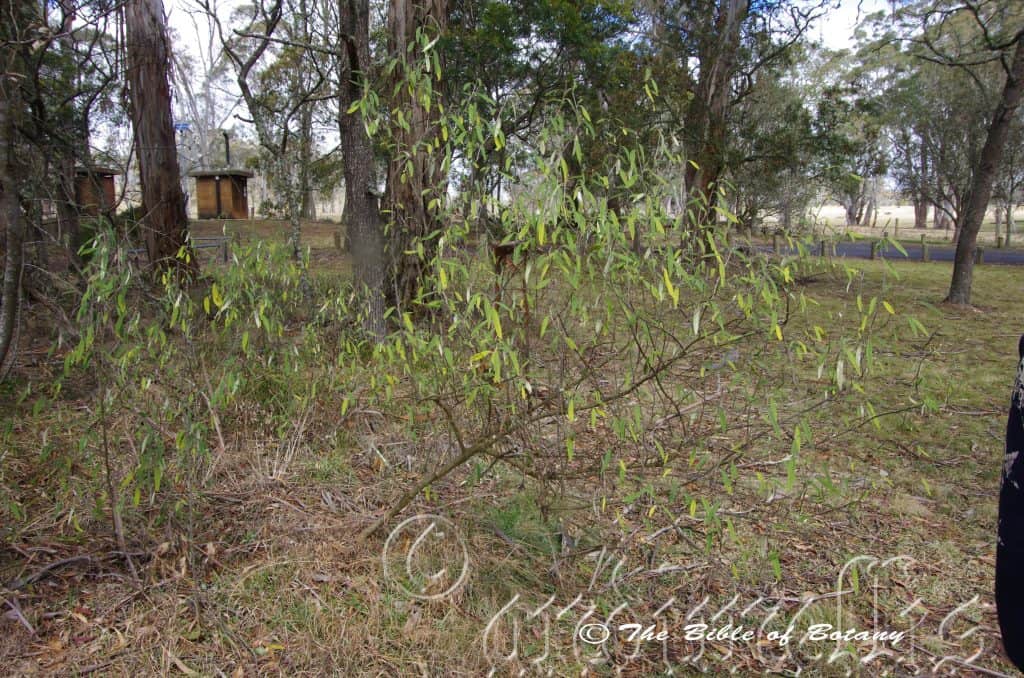
Ebor Falls National Park Ebor NSW

Ebor Falls National Park Ebor NSW
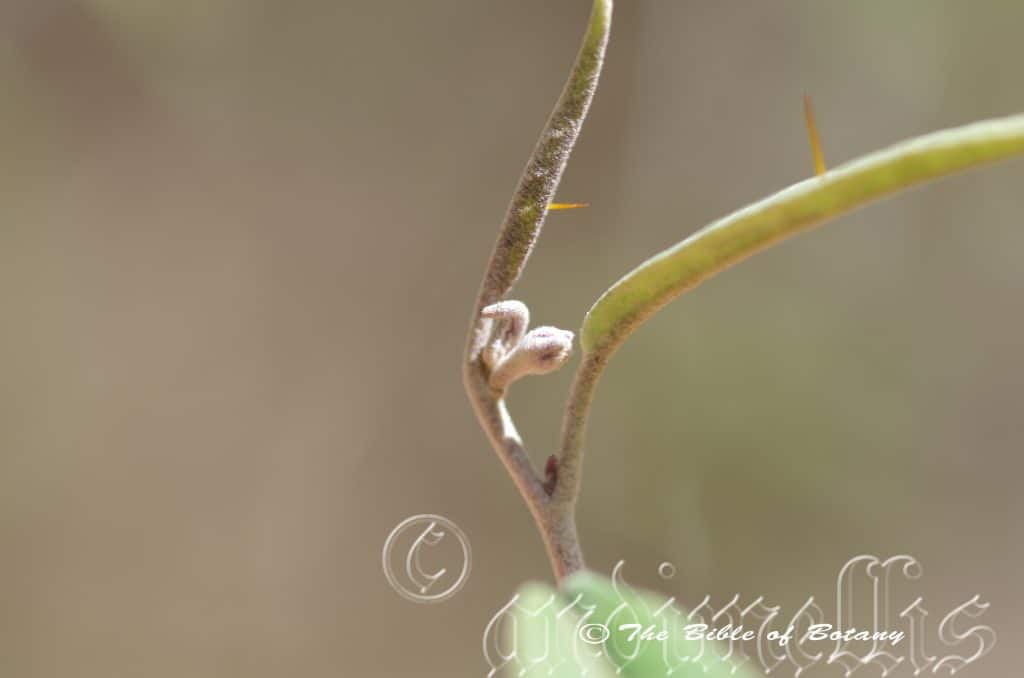
Ebor Falls National Park Ebor NSW
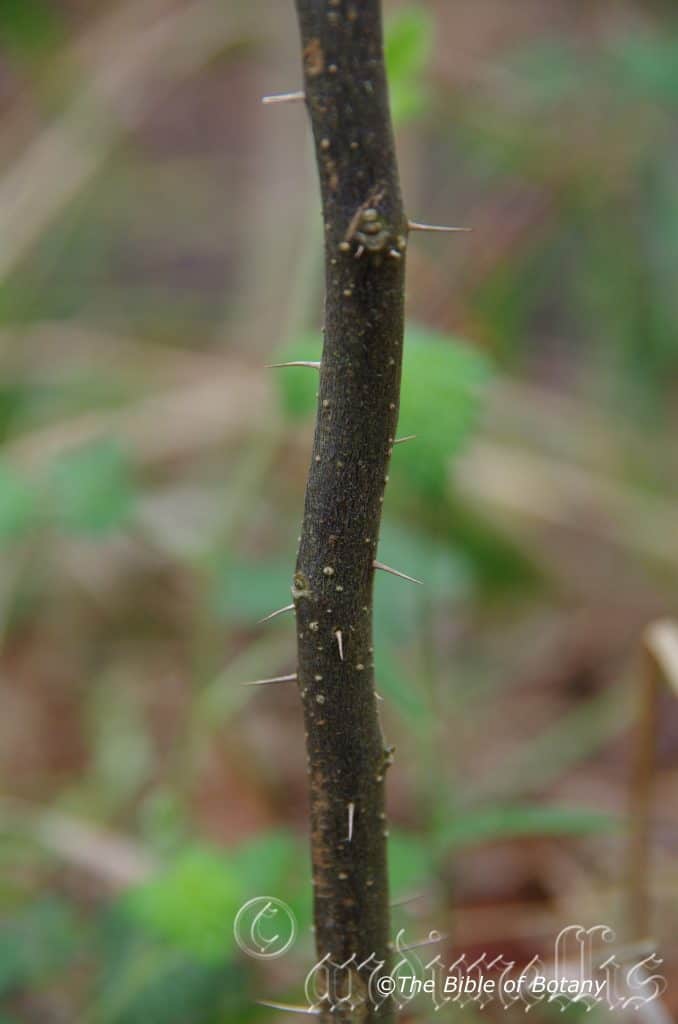
Ebor Falls National Park Ebor NSW

Ebor Falls National Park Ebor NSW

Ebor Falls National Park Ebor NSW

Ebor Falls National Park Ebor NSW
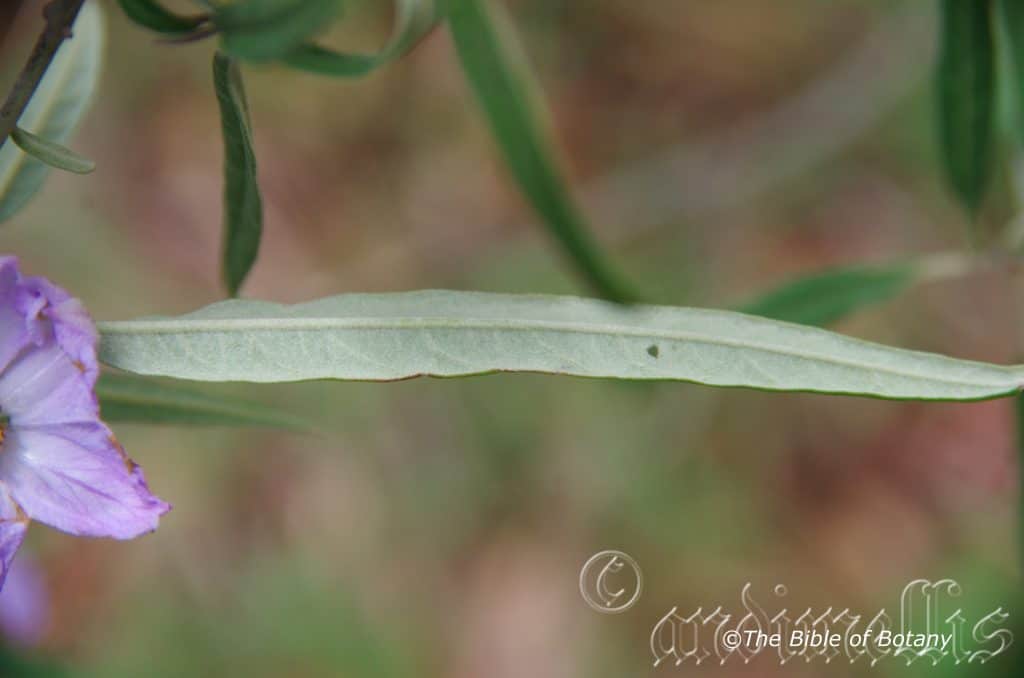
Ebor Falls National Park Ebor NSW

Ebor Falls National Park Ebor NSW

Ebor Falls National Park Ebor NSW
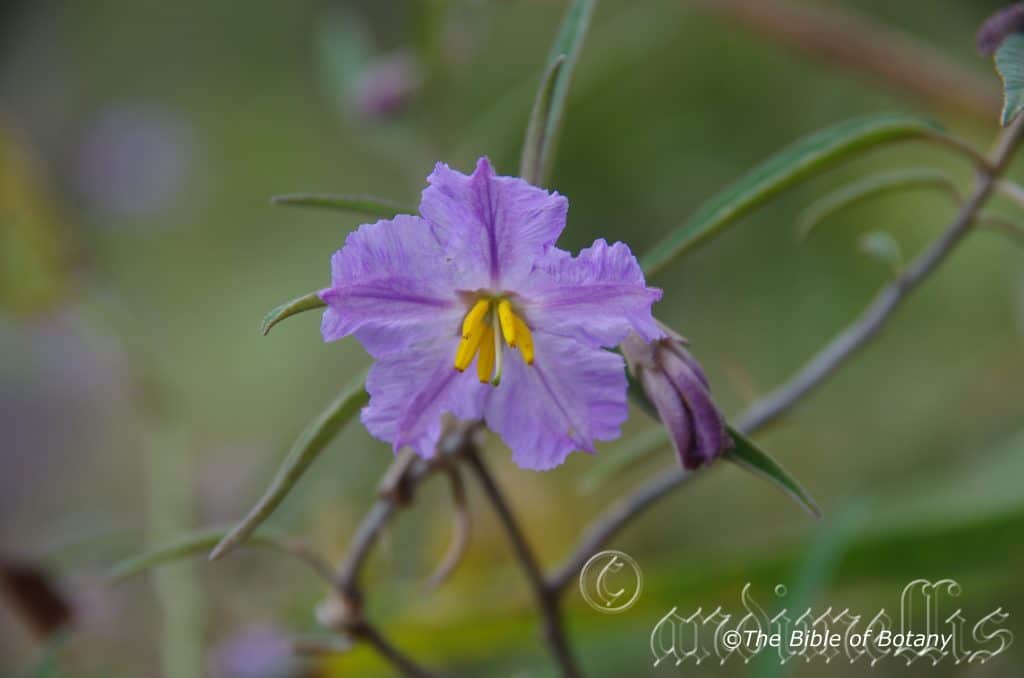
Ebor Falls National Park Ebor NSW

Ebor Falls National Park Ebor NSW
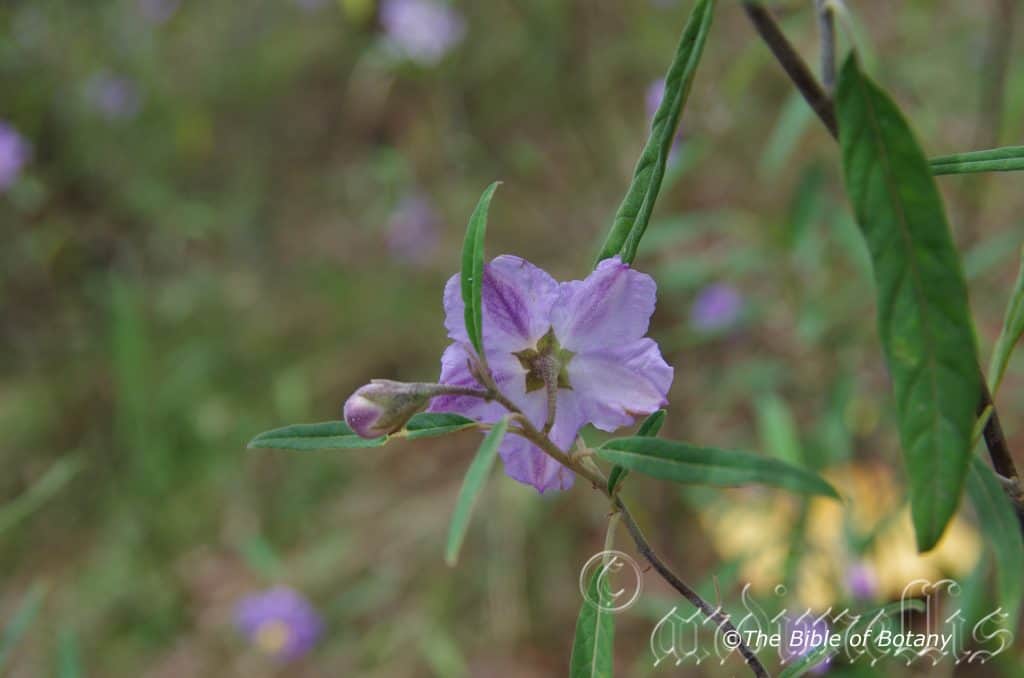
Ebor Falls National Park Ebor NSW
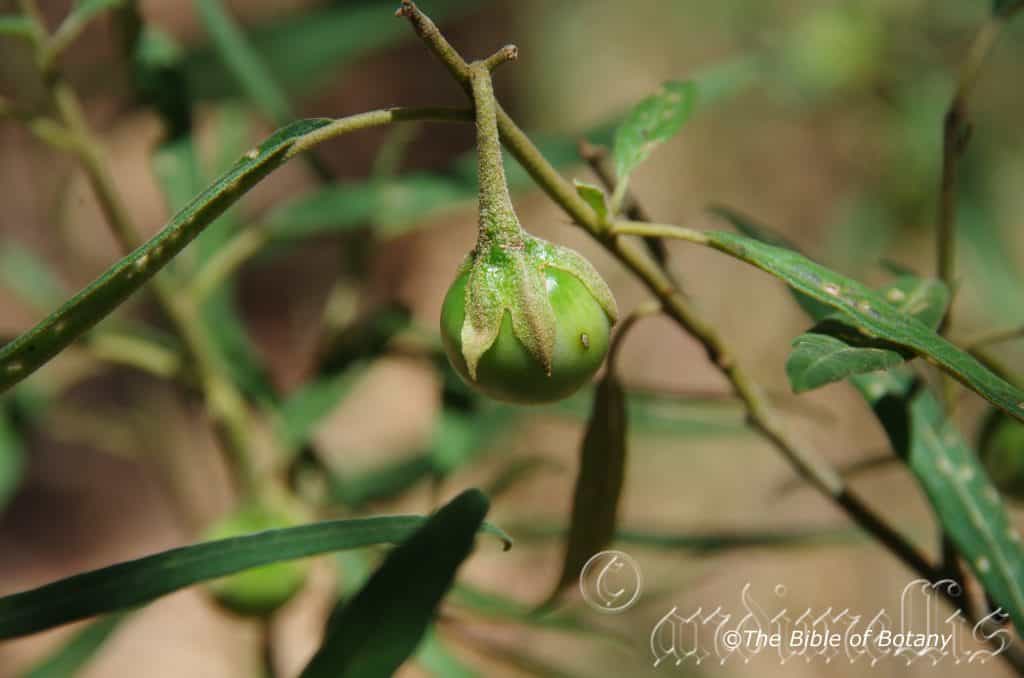
Ebor Falls National Park Ebor NSW

Ebor Falls National Park Ebor NSW

Ebor Falls National Park Ebor NSW
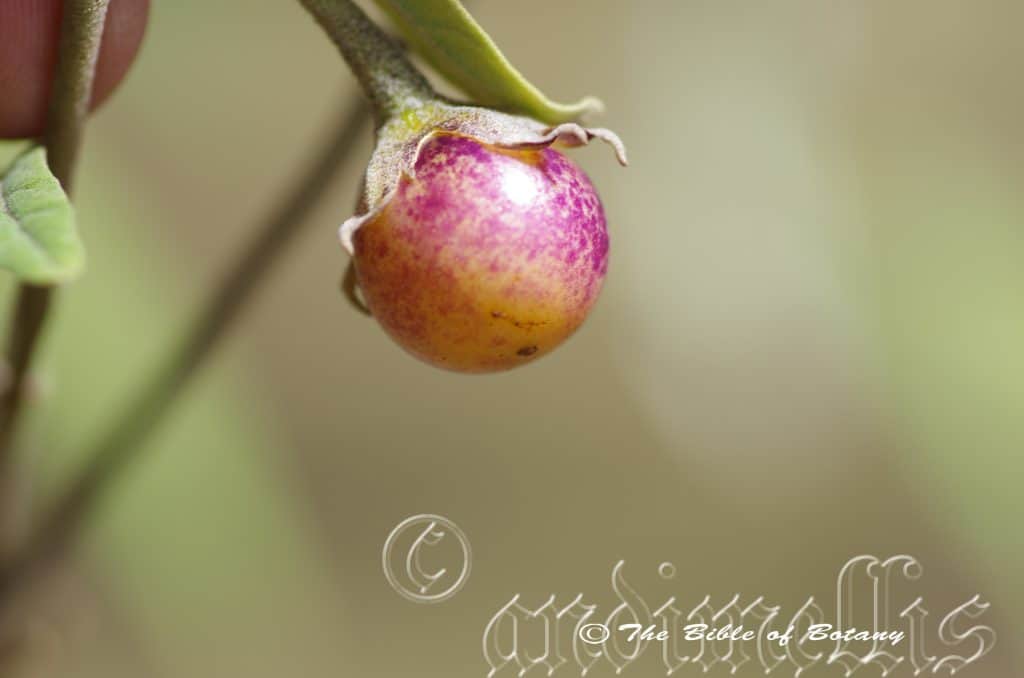
Ebor Falls National Park Ebor NSW
Solanum neoanglica
Classification:
Unranked: Eudicots
Unranked: Asterids
Order: Solanales
Family: Solanaceae
Subfamily: Solanoideae
Tribe: Solaneae
Genus: From Sol, which is Latin is Latin for the sun and Anus, which is Latin for a stem. It refers to the family of plants known as nightshades, which includes the potato, tomato, capsicum and chillies, where the flowers look like little suns on the end of stems. It also has the possible meaning from Hiláskomai, which is Ancient Greek or later Sōlārī, which is Latin for to appease, to make comfortable, to console or to solace. It refers to organs or structures usually the flowers, which are very pleasing to the eye.
Specie: From Neo, which is Latin for new and Anglica, which is Latin for England. It refers to plants, which grow on the New England plateau.
Sub specie:
Common Name:
Distribution:
Solanum neoanglicum is mainly found between Glen Innes and Walcha on the New England Tablelands in north eastern New South Wales.
https://avh.ala.org.au/occurrences/search?taxa=Solanum+neoanglicum#tab_mapView
Habitat Aspect Climate:
Solanum neoanglicum prefers light dappled shade to full sun. It grows adjacent to cool, moist rainforests or cool, moist Eucalyptus forests often on or near the edges of escarpments and rocky slopes. The altitude ranges from 800 meters ASL to 1600 meters ASL.
The temperatures range from minus 5 degrees in August to 36 degrees in January.
The rainfalls range from lows of 900mm to 1600mm average per annum but is often greater due to orographic precipitation.
Soil Requirements:
Solanum neoanglicum prefers to grow on better quality sandy loams to medium clays. The soils are derived from decomposed granites. The soils pH ranges from 4.5pH to 6pH. It does not tolerate water logged soils. Non saline soils to moderately saline soils are tolerated.
Height & Spread:
Wild Plants: 0.7m to 2m by 1m to 1.5m.
Characteristics:
Solanum neoanglicum grows as a small semi erect shrub with deep grey-brown stem. The stems are very sparsely covered in cream, tuberculate lumps and with or without long rigid thorns. The green to mauve juvenile stems are densely covered in white to pale cream pubescent hairs.
The opposite juvenile, lanceolate to ovate leaves of Solanum neoanglicum have 1 to 3 pairs of shallow lobes and measure 70mm to 90mm in length by 20mm to 30mm in width.
The opposite, linear to narrow lanceolate adult leaves measure 30mm to 100mm in length by 3mm to 15mm in width with a ratio of around 8 to 10 times the length to the width. The terete petioles are densely covered in white to pale cream pubescent hairs and measure 3 to 17mm in length. The bases are often oblique to 3mm, cuneate or somewhat attenuate, while the apexes are obtuse to acute. The concolourous leaves are green to grey-green are densely covered in sessile stellate hairs with a few or without golden to auburn coloured thorns along the midvein, while the lower lamina is very densely covered in white tomemtose and stellate hairs. The margin is entire. The midvein is strongly prominent, while the lateral veins are prominent on the lower lamina.
The inflorescences of Solanum neoanglicum have 1 to 4 individual flowers. The terete peduncle measures omm to 3mm in length, while the pedicels measure 10mm to 13mm in length. The 5 calyxes are sparsely to moderately covered in stellate hairs externally and measures 4mm to 6.5mm in length, while the broad deltoid to rhomoidic lobes have an accuminate apex and measure 2mm to 3.5mm in length. The mauve to deep purple corolla is rotate and is sparsely to moderately covered in stellate hairs externally. They measures 15mm to 35mm in diameter.
The 5 white, stout filaments measure 1mm to 1.5mm in length, while the bright yellow basifixed, linear anthers dehisce poricidally and measure 4mm to 5mm in length.
The single, white, terete style has a green stigma and measures 5mm to 6mm in length.
The globular fruits are berries that measure 14mm to 17mm in diameter. The pale green marked deeper green berries turn yellow and are heavily marked in crimson when ripe. The pedicels measure 17mm to 23mm in length on the ripe fruits. The calyxes are persistent on the ripe berries. The white to pale yellow seeds measure 2.6mm to 2.8mm in length.
Wildlife:
Solanum neoanglicum support native bees like the small colony bee Tetragonula carbonaria and native pollen flies along the coast when in flower.
WARNING: Many Solanum species are poisonous and many species; perhaps all, have some parts that are poisonous, or the edible parts are only edible at certain times of the year while being poisonous at other times.
Some native species of Solanum were known as traditional Aboriginal bush tucker plants. Others are introduced edible weeds.
Several native species are listed in Wild Food Plants of Australia by Cribb Not all of these are edible however some had specific uses or had to be treated first before eating: Solanum aviculare (Rainforest Kangaroo Apple), Solanum centrale (Desert Raisin), Solanum chippendalei (Bush Tomato), Solanum diversiflorum (Kakarrta), Solanum ellipticum, Solanum esuriale, Solanum laciniatum (Southern Kangaroo Apple), Solanum linearifolium (Mountain Kangaroo Apple), Solanum mauritianum (Wild Tobacco, Tobacco Bush), and Solanum vescum (Gunyang). Of these, Solanum aviculare, Solanum laciniatum, and Solanum mauritanum are the most common species that people come into contact with.
The Rainforest Kangaroo Apple is apparently only barely edible, so should be eaten sparingly.
Of the Solanum species which occur in Australia, Solanum americanum, Solanum scabrum and Solanum villosum and Solanum opacum are also considered to be edible.
People with allergies to tomatoes, peanuts or potatoes should be wary of eating any fruit of the solanaceae family as they all contain small amounts of the alkaloid sola.
Solanum aviculare Kangaroo Apple
Solanum centrale is also known as Desert Raisin, Bush Raisin or Bush Sultana, or by the native name kutjera.
Solanum chipendalei is known as Bush Tomato.
Solanum coactiliferum Aborigines roasted the fruit before eating.
Solanum diversifolium is known as Bush Tomato, Karlumbu, Pilirta, Wamurla districts.
Solanum ellipticum Potato Bush is very similar to Solanum quadriliculatum which is poisonous.
Solanum lacinatum is known as Kangaroo Apple.
Solanum orbicaltum is known as Round-leaved Solanum.
Solanum pholomoides is also known as Wild Tomato.
Solanum vescum.
Solanum cinerium is poisonous
Aborigines burned off the outer skin of Solanum aviculare as eating them raw caused the mouth to blister. Aborigines ate the fruit of Solanum centrale raw or put it on the hot earth by the fire, sprinkle some water on the fruits and cover them up to cook them. Solanum chippendalei is consumed by first splitting the fruit, scraping the center out and eating the outer flesh as the seeds and surrounding placenta are bitter. Solanum diversiflorum is roasted before being eaten or dried. Fruit of Solanum orbiculatum is edible, but the fruit of the large leafed form may be bitter. Fruit of Solanum phlomoidesappears to be edible after the removal of seeds and roasting or sun drying. Mardu people would dry the fruits to consume them at a later date.
Solanum aviculare contains solasodine, a steroid used in the manufacture of oral contraceptives. I have not tried the fruits so cannot vouch for any of what is said first hand.
Cultivation:
Solanum neoanglicum is a magnificent medium perennial shrub that can be grown in the open in full sun or in part shade on sandy loams to medium clays. It is amongst the best purple flowering plants in the country. In cultivation it grows from 2.5 meters to 3 meters in height by 2 meters to 3 meters in diameter when grown in the open.
It is best used adjacent to small areas of bush close to paths or the house so their deep purple flowers can be viewed regularly. It is great along riparian zones and as an understory to the home rainforest where moisture is not a problem. Here it can be planted in small groups of 2 or 3 as a stand alone plant to create a lush bush scene due to their large deep green leaves. If it is surrounded by shorter plants with fine foliages and yellow, cream or white flowers it will dominate at the center giving height and strength to the bed especially when it is in flower. Do not use plants with large leaves as these will be too overpowering and they will blend into each other. Planted with a mass of smaller plants and ground covers with mixed coloured flowers and foliages will ensure a great display during the spring to autumn months in particular. This would be particularly strong, if a mixture of different finer foliages of different colours and textures are incorporated together. This will give a strong broadening look rather than height.
In a large garden bed plant any plant exactly in the center for a formal look or well off to one side for an informal look. 2 or 3 shrubs close together on one side looks even more spectacular when just a single plant is placed on the other side to give balance to the picture. Mass plantings below Solanum neoanglicum, will create a lush woodland scene. Mass planting helps to create a lush semi tropical habit. A few annuals strategically scattered around would complete the picture. The plants planted out below should have a mixture of bold colours radiating out from the base of the Solanum neoanglicum so use pinks, creams and whites directly below and reds and whites further out and avoid yellows and purples if you want the Solanum to be gain the attention.
The plants respond admirably when a little added water and organic fertilizers are part of the regime. This will induce maximum flowering season and maybe extend the flowering season which is rather short for this genus.
It is drought resistant once established but will defoliate and abort flowers, fruit and leaves under sever stressful conditions. Light pruning will also assist keeping the plants bush and vigorous.
Propagation:
Seeds: The seeds of Solanum neoanglicum can be removed easily from the fruits.
Sow fresh seeds directly into a seed raising mix, keeping them moist not wet. Do not over water as the seeds will rot off before germination takes place. Place the trays in a cool shaded area with 30mm shade cloth in the bush house. When the seedlings are 20mm to 25mm tall, prick them out and plant them into 50mm native tubes using a good organic mix.
As the seedlings roots reach the bottom of the tubes plant them out into their permanent position. Do not delay.
Fertilize using Seaweed, fish emulsion or organic chicken pellets soaked in water and apply the liquid on an alternate basis. Fertilize every 2 months until the plants are well established then on an annual basis in September or March to maintain health, vigour and better flowering.
Further Comments from Readers:
“Hi reader, it seems you use The Bible of Botany a lot. That’s great as we have great pleasure in bringing it to you! It’s a little awkward for us to ask, but our first aim is to purchase land approximately 1,600 hectares to link several parcels of N.P. into one at The Pinnacles NSW Australia, but we need your help. We’re not salespeople. We’re amateur botanists who have dedicated over 30 years to saving the environment in a practical way. We depend on donations to reach our goal. If you donate just $5, the price of your coffee this Sunday, We can help to keep the planet alive in a real way and continue to bring you regular updates and features on Australian plants all in one Botanical Bible. Any support is greatly appreciated. Thank you.”
In the spirit of reconciliation we acknowledge the Bundjalung, Gumbaynggirr and Yaegl and all aboriginal nations throughout Australia and their connections to land, sea and community. We pay our respect to their Elders past, present and future for the pleasures we have gained.

Author’s Garden The Pinnacles NSW
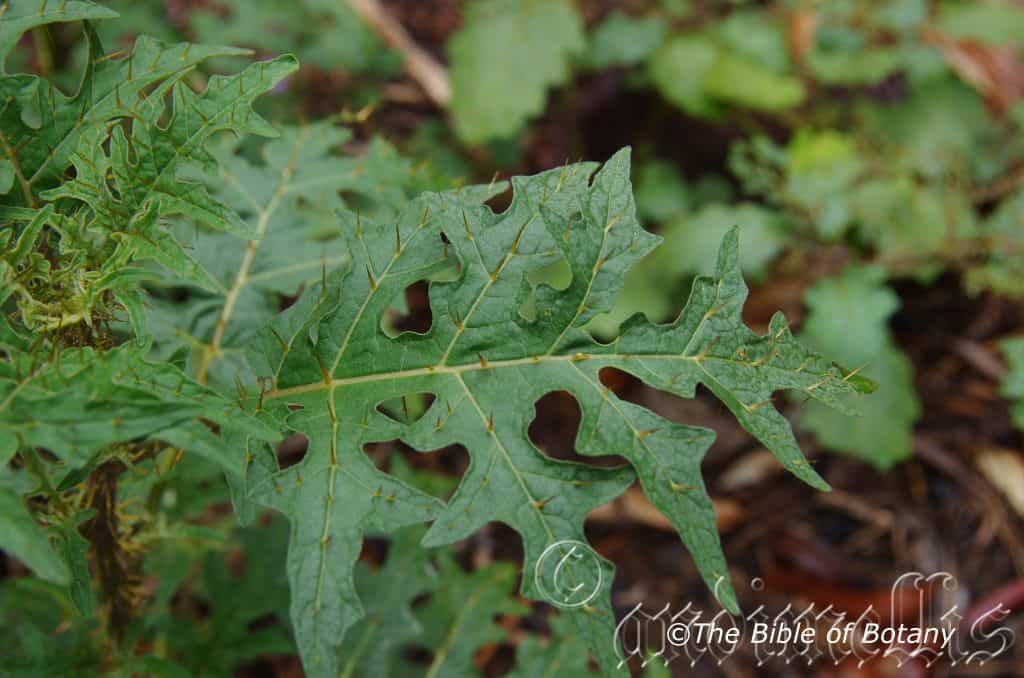
Author’s Garden The Pinnacles NSW

Author’s Garden The Pinnacles NSW
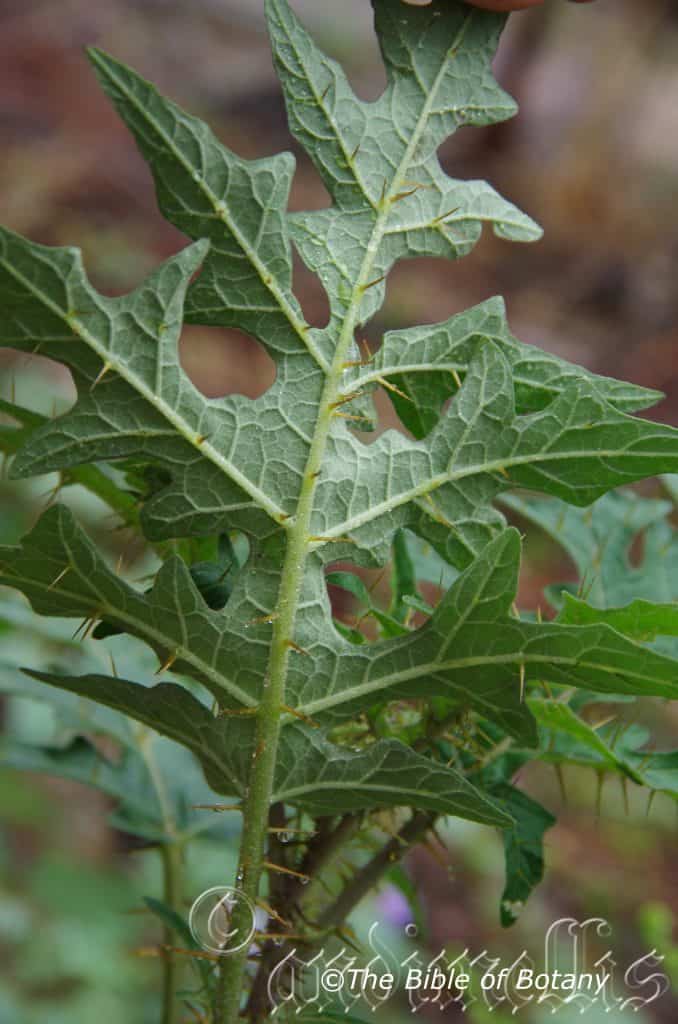
Author’s Garden The Pinnacles NSW
Solanum nobile
Classification:
Unranked: Eudicots
Unranked: Asterids
Order: Solanales
Family: Solanaceae
Subfamily: Solanoideae
Tribe: Solaneae
Genus: From Sol, which is Latin is Latin for the sun and Anus, which is Latin for a stem. It refers to the family of plants known as nightshades, which includes the potato, tomato, capsicum and chillies, where the flowers look like little suns on the end of stems. It also has the possible meaning from Hiláskomai, which is Ancient Greek or later Sōlārī, which is Latin for to appease, to make comfortable, to console or to solace. It refers to organs or structures usually the flowers, which are very pleasing to the eye.
Specie: From Nōbile, which is Latin for noticeable, showy or highly ranked or very distinct. It refers to plants, which are much showier than other species in the genus.
Sub specie:
Common Name:
Distribution:
Solanum nobile is found south from the Eastern Darling Downs in southern Queensland to the Bellinger River in coastal north eastern New South Wales.
https://avh.ala.org.au/occurrences/search?taxa=Solanum+nobile#tab_mapView
Habitat Aspect Climate:
Solanum nobile prefers light dappled shade to full sun. It grows adjacent to warm or cool moist subtropical rainforests or warm or cool, moist Eucalyptus forests. The altitude ranges from 8 meters ASL to 980 meters ASL.
The temperatures range from minus 5 degrees in August to 36 degrees in January.
The rainfalls range from lows of 700mm to 1600mm average per annum.
Soil Requirements:
Solanum nobile prefers to grow on better quality sandy loams to medium clays. The soils are derived from decomposed granites, brown basalt or black basalts. The soils pH ranges from 4.5pH to 6pH. It does not tolerate water logged soils. Non saline soils to moderately saline soils are tolerated.
Height & Spread:
Wild Plants: 1.5m to 4m by 1.5m to 2.5m.
Characteristics:
Solanum nobile grows as a small ascending shrub with erect, pale grey, white to pinkish grey, glabrous stems. The stems are densely covered in white, stellate hairs and sparsely covered brown deep burgundy or black acicular needle like spines that measure 4mm to 10mm in length.
The nearly opposite, broadly ovate leaves of Solanum nobile have 2 to 4 shallow lobes or deeply cut lobes on each margin. They measure 70mm to 140mm in length by 30mm to 50mm in width. The bases are rounded to cordate and slightly oblique while the apexes are acute to acute-obtuse. The discolourous laminas are deep green to deep sea-green, glabrous, sparsely covered in white, stellate hairs and are spineless or very sparsely covered in brown deep burgundy or black acicular needle like spines that measure 4mm to 10mm in length on the upper lamina. The lower lamina is glaucous and sparsely covered in white stellate hairs. The leaf margins are entire. The laminas are flat. The mid vein and lateral veins are strongly prominent on the lower laminas and are distinctly visible from the upper lamina. The mid vein and main lateral veins are sparsely covered in brown deep burgundy or black acicular needle like spines that measure 4mm to 10mm in length. The petioles are grey green, deep green, deep sea green or deep purple green and measure 5mm to 10mm in length.
Inflorescences of Solanum nobile are racemes or clusters born from the leaf axils. There are 4 to 9 individual flowers on a raceme or to a cluster. The plants are andromonoecious meaning they have male flowers and perfect flowers on the same plant.
The peduncles, rachises and pedicels are mid green to grass green and often tinged pale purple to deep purple are covered in transparent purple stellate hairs. The peduncles measure 8mm to 12mm in length while the rachises measure 10mm to 15mm in length and the pedicels measure 10mm to 15mm in length. The mid green to deep green calyxes are tinged deep purple and are glabrous or covered in transparent purple stellate hairs and are spineless or sparsely covered in brown deep burgundy or black acicular needle like spines that measure 2mm to 5mm in length. The calyx tubes measure 3mm to 6mm in length while the 5 narrow lobes are erect and measure 5mm to 8mm in length.
The rotate-stellate corollas are deep purple to violet with a paler center. The corollas measure 20mm to 35mm in diameter. The 5 stellate-rotate lobes are wide spreading and measure 5mm to 8mm in length. The lobes margins are entire and undulating while the apex is broadly obtuse with a broad emarginate tip.
The 5 exserted anthers extend from the center of the corolla. The filaments are deep yellow while the basifixed anthers are bright yellow orange. The filaments measure 0mm to 0.5mm in length. The anthers measure 4mm to 5.5mm in length by 1mm to 2mm in width and converge around the style.
The white style and green stigma are glabrous while the green, ovoidal ovary measures 1mm to 1.5mm in length. The pistil measures 9mm to 10mm in length. Solanum nobile’s flowers appear from late September through to late October.
The fruits of Solanum nobile are ovoidal berries. The berries are glabrous and measure 16mm to 22mm in length by 18mm to 24mm in diameter. The pale green berries turn mid green with broad deeper green longitudinal striations when ripe. The calyx lobes are persistent and expand to 9mm to 12mm in length on the ripe fruit. The pedicels expand to 15mm to 24mm in length by 5.5mm to 6.5mm near the junction with the calyxes. The pale creamy yellow seeds measure 2.5mm to 2.8mm in length.
Wildlife:
Solanum nobile support native bees and native flies along the coast when in flower.
WARNING: Many Solanum species are poisonous and many species; perhaps all, have some parts that are poisonous, or the edible parts are only edible at certain times of the year while being poisonous at other times.
Some native species of Solanum were known as traditional Aboriginal bush tucker plants. Others are introduced edible weeds.
Several native species are listed in Wild Food Plants of Australia by Cribb Not all of these are edible however some had specific uses or had to be treated first before eating: Solanum aviculare (Rainforest Kangaroo Apple), Solanum centrale (Desert Raisin), Solanum chippendalei (Bush Tomato), Solanum diversiflorum (Kakarrta), Solanum ellipticum, Solanum esuriale, Solanum laciniatum (Southern Kangaroo Apple), Solanum linearifolium (Mountain Kangaroo Apple), Solanum mauritianum (Wild Tobacco, Tobacco Bush), and Solanum vescum (Gunyang). Of these, Solanum aviculare, Solanum laciniatum, and Solanum mauritanum are the most common species that people come into contact with.
The Rainforest Kangaroo Apple is apparently only barely edible, so should be eaten sparingly.
Of the Solanum species which occur in Australia, Solanum americanum, Solanum scabrum and Solanum villosum and Solanum opacum are also considered to be edible.
People with allergies to tomatoes, peanuts or potatoes should be wary of eating any fruit of the solanaceae family as they all contain small amounts of the alkaloid sola.
Solanum aviculare Kangaroo Apple
Solanum centrale is also known as Desert Raisin, Bush Raisin or Bush Sultana, or by the native name kutjera.
Solanum chipendalei is known as Bush Tomato.
Solanum coactiliferum Aborigines roasted the fruit before eating.
Solanum diversifolium is known as Bush Tomato, Karlumbu, Pilirta, Wamurla districts.
Solanum ellipticum Potato Bush is very similar to Solanum quadriliculatum which is poisonous.
Solanum lacinatum is known as Kangaroo Apple.
Solanum orbicaltum is known as Round-leaved Solanum.
Solanum pholomoides is also known as Wild Tomato.
Solanum vescum.
Solanum cinerium is poisonous
Aborigines burned off the outer skin of Solanum aviculare as eating them raw caused the mouth to blister. Aborigines ate the fruit of Solanum centrale raw or put it on the hot earth by the fire, sprinkle some water on the fruits and cover them up to cook them. Solanum chippendalei is consumed by first splitting the fruit, scraping the center out and eating the outer flesh as the seeds and surrounding placenta are bitter. Solanum diversiflorum is roasted before being eaten or dried. Fruit of Solanum orbiculatum is edible, but the fruit of the large leafed form may be bitter. Fruit of Solanum phlomoidesappears to be edible after the removal of seeds and roasting or sun drying. Mardu people would dry the fruits to consume them at a later date.
Solanum aviculare contains solasodine, a steroid used in the manufacture of oral contraceptives. I have not tried the fruits so cannot vouch for any of what is said first hand.
Cultivation:
Solanum nobile is a magnificent medium perennial shrub that can be grown in the open in full sun or in part shade on sandy loams to medium clays. It is amongst the best purple flowering plants in the country. In cultivation it grows from 2.5 meters to 3 meters in height by 2 meters to 3 meters in diameter when grown in the open.
It is best used adjacent to small areas of bush close to paths or the house so their deep purple flowers can be viewed regularly. It is great along riparian zones and as an understory to the home rainforest where moisture is not a problem. Here it can be planted in small groups of 2 or 3 as a stand alone plant to create a lush bush scene due to their large deep green leaves. If it is surrounded by shorter plants with fine foliages and yellow, cream or white flowers it will dominate at the center giving height and strength to the bed especially when it is in flower. Do not use plants with large leaves as these will be too overpowering and they will blend into each other. Planted with a mass of smaller plants and ground covers with mixed coloured flowers and foliages will ensure a great display during the spring to autumn months in particular. This would be particularly strong, if a mixture of different finer foliages of different colours and textures are incorporated together. This will give a strong broadening look rather than height.
In a large garden bed plant any plant exactly in the center for a formal look or well off to one side for an informal look. 2 or 3 shrubs close together on one side looks even more spectacular when just a single plant is placed on the other side to give balance to the picture. Mass plantings below Solanum nobile, will create a lush woodland scene. Mass planting helps to create a lush semi tropical habit. A few annuals strategically scattered around would complete the picture. The plants planted out below should have a mixture of bold colours radiating out from the base of the Solanum nobile so use pinks, creams and whites directly below and reds and whites further out and avoid yellows and purples if you want the Solanum to be gain the attention.
The plants respond admirably when a little added water and organic fertilizers are part of the regime. This will induce maximum flowering season and maybe extend the flowering season which is rather short for this genus.
It is drought resistant once established but will defoliate and abort flowers, fruit and leaves under sever stressful conditions. Light pruning will also assist keeping the plants bush and vigorous.
Propagation:
Seeds: The seeds of Solanum nobile can be removed easily from the fruits.
Sow fresh seeds directly into a seed raising mix, keeping them moist not wet. Do not over water as the seeds will rot off before germination takes place. Place the trays in a cool shaded area with 30mm shade cloth in the bush house. When the seedlings are 20mm to 25mm tall, prick them out and plant them into 50mm native tubes using a good organic mix.
As the seedlings roots reach the bottom of the tubes plant them out into their permanent position. Do not delay.
Fertilize using Seaweed, fish emulsion or organic chicken pellets soaked in water and apply the liquid on an alternate basis. Fertilize every 2 months until the plants are well established then on an annual basis in September or March to maintain health, vigour and better flowering.
Further Comments from Readers:
“Hi reader, it seems you use The Bible of Botany a lot. That’s great as we have great pleasure in bringing it to you! It’s a little awkward for us to ask, but our first aim is to purchase land approximately 1,600 hectares to link several parcels of N.P. into one at The Pinnacles NSW Australia, but we need your help. We’re not salespeople. We’re amateur botanists who have dedicated over 30 years to saving the environment in a practical way. We depend on donations to reach our goal. If you donate just $5, the price of your coffee this Sunday, We can help to keep the planet alive in a real way and continue to bring you regular updates and features on Australian plants all in one Botanical Bible. Any support is greatly appreciated. Thank you.”
In the spirit of reconciliation we acknowledge the Bundjalung, Gumbaynggirr and Yaegl and all aboriginal nations throughout Australia and their connections to land, sea and community. We pay our respect to their Elders past, present and future for the pleasures we have gained.
Solanum nummularium
Classification:
Unranked: Eudicots
Unranked: Asterids
Order: Solanales
Family: Solanaceae
Subfamily: Solanoideae
Tribe: Solaneae
Genus: From Sol, which is Latin is Latin for the sun and Anus, which is Latin for a stem. It refers to the family of plants known as nightshades, which includes the potato, tomato, capsicum and chillies, where the flowers look like little suns on the end of stems. It also has the possible meaning from Hiláskomai, which is Ancient Greek or later Sōlārī, which is Latin for to appease, to make comfortable, to console or to solace. It refers to organs or structures usually the flowers, which are very pleasing to the eye.
Specie: From Nummuli, which is Latin for peticash or a coin. It refers to leaves, which somewhat resemble old silver coins in shape.
Sub specie:
Common Name:
Distribution:
Solanum nummularium is found in a restricted area bounded by Geraldton in the north-west to Wiluna in the north-east south to Dundass Nature Reserve in the south east and Salmon Gums in the south-west.
https://avh.ala.org.au/occurrences/search?taxa=Solanum+nummularium#tab_mapView
Habitat Aspect Climate:
Solanum nummularium prefers light dappled shade to full sun. It grows on flat plains to rocky rises with skeletal soils or shallow depressions. The altitude ranges from 30 meters ASL to 500 meters ASL.
The temperatures range from 3 degrees in August to 38 degrees in January.
The rainfalls range from lows of 200mm to 800mm average per annum.
Soil Requirements:
Solanum nummularium prefers better quality sandy loams to medium clays. The soils are usually derived from decomposed sandstones or at times granites. The soils pH ranges from 4.5pH to 6pH. It does not tolerate water logged soils. Non saline soils to moderately saline soils are tolerated.
Height & Spread:
Wild Plants: 0.5m to 1m by 0.8m to 1m.
Characteristics:
Solanum nummularium grows as a small erect shrub with pale grey, mid grey. Younger stems rusty green, grey green or olive green. The stems are covered in white pulverulent and stellate hairs above and it is more densely covered below. It is also sparsely covered; particularly in pairs at the base of the petioles, in grey or deep rusty green or deep brown green, rigid, acicular needle like spines that measure 5mm to 13mm in length.
The adjacent, orbicular to broadly orbicular leaves of Solanum nummularium measure 4mm to 12mm in length by 4mm to 15mm in width. The bases are rounded to cordate and slightly oblique while the apexes are acute to acute-obtuse. The discolourous laminas are deep green to deep sea-green, glabrous, sparsely covered in white, stellate hairs and are spineless or very sparsely covered in brown deep burgundy or black acicular needle like spines that measure 4mm to 10mm in length on the upper lamina. The lower lamina is glaucous and sparsely covered in white stellate hairs. The leaf margins are entire. The laminas are flat. The mid vein and lateral veins are strongly prominent on the lower laminas and are distinctly visible from the upper lamina. The mid vein and main lateral veins are sparsely covered in brown deep burgundy or black acicular needle like spines that measure 4mm to 10mm in length. The petioles are grey green, rusty green and measure 2mm to 4mm in length.
Inflorescences of Solanum nummularium are born on small peduncles or clusters from the leaf axils. There are 1 to 2 rarely 3 individual flowers on a peduncle or in the cluster. The peduncles, rachises and pedicels are mid grey to rusty green and often tinged brown and are glabrous. The peduncles measure 0.5mm to 5mm in length while the pedicels measure 3mm to 6mm in length. The blue green calyxes are moderately covered in white pubescent and stellate hairs. The calyx tubes measure 2.5mm to 5mm in length while the 4 or 5 narrow triangular lobes are erect and measure 0.5mm to 1mm in length. The rotate-stellate corollas are deep purple to violet with a deeper center. The corollas measure 20mm to 26mm in diameter. The 4 or 5 stellate-rotate lobes are divaricate to slightly decurve and measure 6.5mm to 10mm in length. The lobes margins are entire and crinkled to undulating while the apex is obtuse to acute-obtuse with a mucronate tip.
The 5 exserted anthers extend from the center of the corolla. The filaments are deep yellow while the basifixed anthers are bright yellow. The filaments measure 1mm to 2mm in length. The anthers measure 5mm to 6mm in length by 1mm to 2mm in width and converge strongly around the style.
The white style and green stigma are glabrous while the green, ovoidal ovary measures 1mm to 1.5mm in length. The pistil measures 6.5mm to 7.5mm in length. Solanum nummularius flowers appear from late June through to late October but as early as mid-April in favourable seasons.
The fruits of Solanum nummularium are globose berries. The berries are glabrous and measure 8.5mm to 13mm in length by 10mm to 15mm in diameter. The pale green berries turn pale yellow-fawn when ripe. The calyx lobes are persistent and expand to 3.5mm to 4.2mm in length on the ripe fruit. The pedicels expand to 15mm to 24mm in length by 5.5mm to 6.5mm near the junction with the calyxes. The pale ochre seeds measure 2.5mm to 3mm in length.
Wildlife:
Solanum nummularium support native bees and native flies throughout their range.
WARNING: Many Solanum species are poisonous and many species; perhaps all, have some parts that are poisonous, or the edible parts are only edible at certain times of the year while being poisonous at other times.
Some native species of Solanum were known as traditional Aboriginal bush tucker plants. Others are introduced edible weeds.
Several native species are listed in Wild Food Plants of Australia by Cribb Not all of these are edible however some had specific uses or had to be treated first before eating: Solanum aviculare (Rainforest Kangaroo Apple), Solanum centrale (Desert Raisin), Solanum chippendalei (Bush Tomato), Solanum diversiflorum (Kakarrta), Solanum ellipticum, Solanum esuriale, Solanum laciniatum (Southern Kangaroo Apple), Solanum linearifolium (Mountain Kangaroo Apple), Solanum mauritianum (Wild Tobacco, Tobacco Bush), and Solanum vescum (Gunyang). Of these, Solanum aviculare, Solanum laciniatum, and Solanum mauritanum are the most common species that people come into contact with.
The Rainforest Kangaroo Apple is apparently only barely edible, so should be eaten sparingly.
Of the Solanum species which occur in Australia, Solanum americanum, Solanum scabrum and Solanum villosum and Solanum opacum are also considered to be edible.
People with allergies to tomatoes, peanuts or potatoes should be wary of eating any fruit of the solanaceae family as they all contain small amounts of the alkaloid sola.
Solanum aviculare Kangaroo Apple
Solanum centrale is also known as Desert Raisin, Bush Raisin or Bush Sultana, or by the native name kutjera.
Solanum chipendalei is known as Bush Tomato.
Solanum coactiliferum Aborigines roasted the fruit before eating.
Solanum diversifolium is known as Bush Tomato, Karlumbu, Pilirta, Wamurla districts.
Solanum ellipticum Potato Bush is very similar to Solanum quadriliculatum which is poisonous.
Solanum lacinatum is known as Kangaroo Apple.
Solanum orbicaltum is known as Round-leaved Solanum.
Solanum pholomoides is also known as Wild Tomato.
Solanum vescum.
Solanum cinerium is poisonous
Aborigines burned off the outer skin of Solanum aviculare as eating them raw caused the mouth to blister. Aborigines ate the fruit of Solanum centrale raw or put it on the hot earth by the fire, sprinkle some water on the fruits and cover them up to cook them. Solanum chippendalei is consumed by first splitting the fruit, scraping the center out and eating the outer flesh as the seeds and surrounding placenta are bitter. Solanum diversiflorum is roasted before being eaten or dried. Fruit of Solanum orbiculatum is edible, but the fruit of the large leafed form may be bitter. Fruit of Solanum phlomoidesappears to be edible after the removal of seeds and roasting or sun drying. Mardu people would dry the fruits to consume them at a later date.
Solanum aviculare contains solasodine, a steroid used in the manufacture of oral contraceptives. I have not tried the fruits so cannot vouch for any of what is said first hand.
Cultivation:
Solanum nummularium is a beautifully rounded shrub that responds well to cultivation. It is a medium size shrub that can be grown in the open in full sun on sandy loams to medium clays with rock or pebbles. It is amongst the best shaped plants in the country. In cultivation they will grow from 0.8 meters to 1 meter in height by 0.8 meters to 1 meter in diameter when grown in the open.
They grow exceptionally well where a layer of mulch prevails that will keep the soil cool and moisture at an even level in arid areas or left open to create air movement and quicker drainage in higher rainfall areas. If these requirements are met they can cope with temperatures as low as minus 2 degrees and up to 45 degrees. It is moderately drought resistant once established however it will drop leaf and under severe stress will abort branches only to reshoot immediately following good rains or increased soil moisture.
Add to the above, if it is given a little water with a little native fertilizer in arid areas on a regular basis or fertilized during rainy periods the plants will respond with superb flowering and fruiting over a long period. Removing the spent flowers will help promote flowering and may increase the flowering season. Lightly tip pruning the plants may also be beneficial to help promote more blooms. This can be done immediately after flowering has ceased and again in January if necessary.
Place them near large, old stumps and roots to make the stumps or roots look even more gnarled and older than they really are. Select an area of ground and let your hair down. Be imaginative and this is the plant that can give inspiration because it is so different and perfectly rounded.Solanum nummularium is suited to medium desert type gardens west of the Great Dividing Range and would be worthwhile persevering with on sandy escarpments east of the range. Be sparingly with the other plants when planting and remember that deserts are rolling flat plains not steep hills so it is best to use them on gentle slopes where you can see over every plant. It is most suitable for this type of garden so use them as the main feature and surround them with small native annuals.
They can be placed behind a small pool at the bottom of the garden with a billabong for great affect or even or in the foreground with a small waterfall or cascades in the background. Either way it is an interesting subject to work with.
Solanum nummularium would make a great contribution to a sandy or rocky terrain rock garden. Here they can be used as the main feature plants, scattered throughout the boulders. When you use them in an area that is strewn with large boulders do not over crowd the scene as the boulders are a formidable part of the scene. Solanum nummularium is well suited to such conditions so use them to high light the other features. Boulder country are almost always rising and falling in contour and may have some sharp rises. Make the scene so you can overseer the tallest rocks with the exception of one or two at the most. This can be achieved with using Solanum nummularium pale blue green leaves contrasting with pale lime green or deep green to glaucous coloured foliages scattered here and there. Use a lot of procumbent plants like our native daisies to make the rocks look larger and the spaces between the plants more expansive. Mix them with other smaller shrubs so none of them dominate the scene but blend in to give a mosaic of foliage colours and patterns. Here I immediately think of some of the small Anigozanthos specie, Lechenaultia specie, Senecio specie and Scaevola specie to mention just 4 genre with great contrasting foliages flower colour and structure. Whatever you do allow room for the plants to reach their full potential and leave about half the plants diameter as bare earth to gain the best affect.
Propagation:
Seeds: The seeds of Solanum nummularium can be removed easily from the fruits.
Sow fresh seeds directly into a seed raising mix, keeping them moist not wet. Do not over water as the seeds will rot off before germination takes place. Place the trays in a cool shaded area with 30mm shade cloth in the bush house. When the seedlings are 20mm to 25mm tall, prick them out and plant them into 50mm native tubes using a good organic mix.
As the seedlings roots reach the bottom of the tubes plant them out into their permanent position. Do not delay.
Fertilize using Seaweed, fish emulsion or organic chicken pellets soaked in water and apply the liquid on an alternate basis. Fertilize every 2 months until the plants are well established then on an annual basis in September or March to maintain health, vigour and better flowering.
Further Comments from Readers:
“Hi reader, it seems you use The Bible of Botany a lot. That’s great as we have great pleasure in bringing it to you! It’s a little awkward for us to ask, but our first aim is to purchase land approximately 1,600 hectares to link several parcels of N.P. into one at The Pinnacles NSW Australia, but we need your help. We’re not salespeople. We’re amateur botanists who have dedicated over 30 years to saving the environment in a practical way. We depend on donations to reach our goal. If you donate just $5, the price of your coffee this Sunday, We can help to keep the planet alive in a real way and continue to bring you regular updates and features on Australian plants all in one Botanical Bible. Any support is greatly appreciated. Thank you.”
In the spirit of reconciliation we acknowledge the Bundjalung, Gumbaynggirr and Yaegl and all aboriginal nations throughout Australia and their connections to land, sea and community. We pay our respect to their Elders past, present and future for the pleasures we have gained.

Wombat Conservation Park NSW
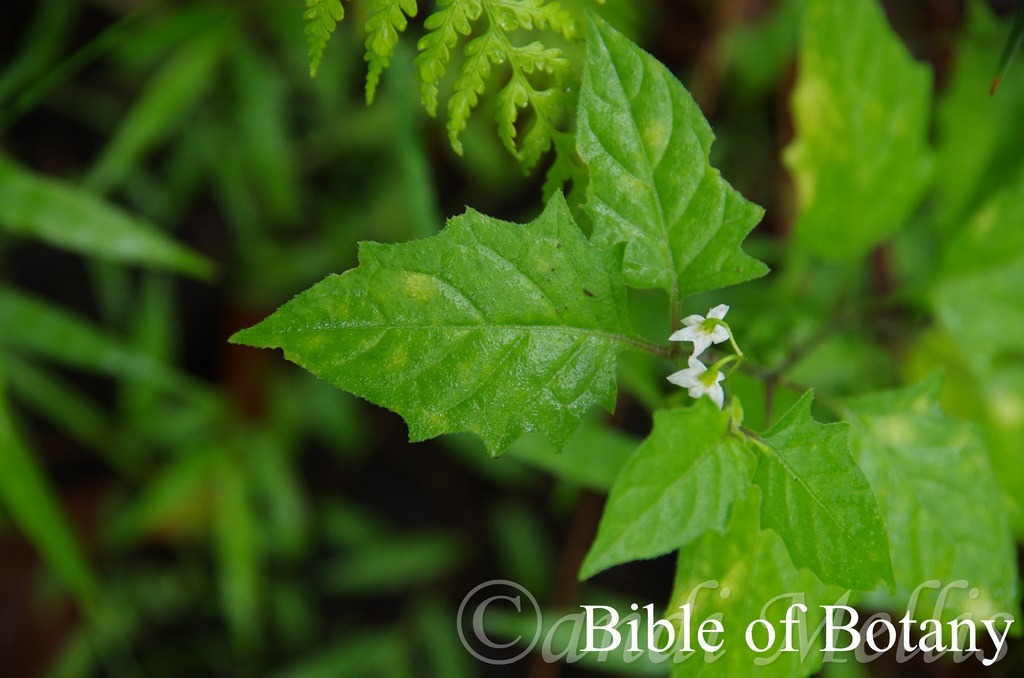
Wombat Conservation Park NSW

Wombat Conservation Park NSW

Wombat Conservation Park NSW
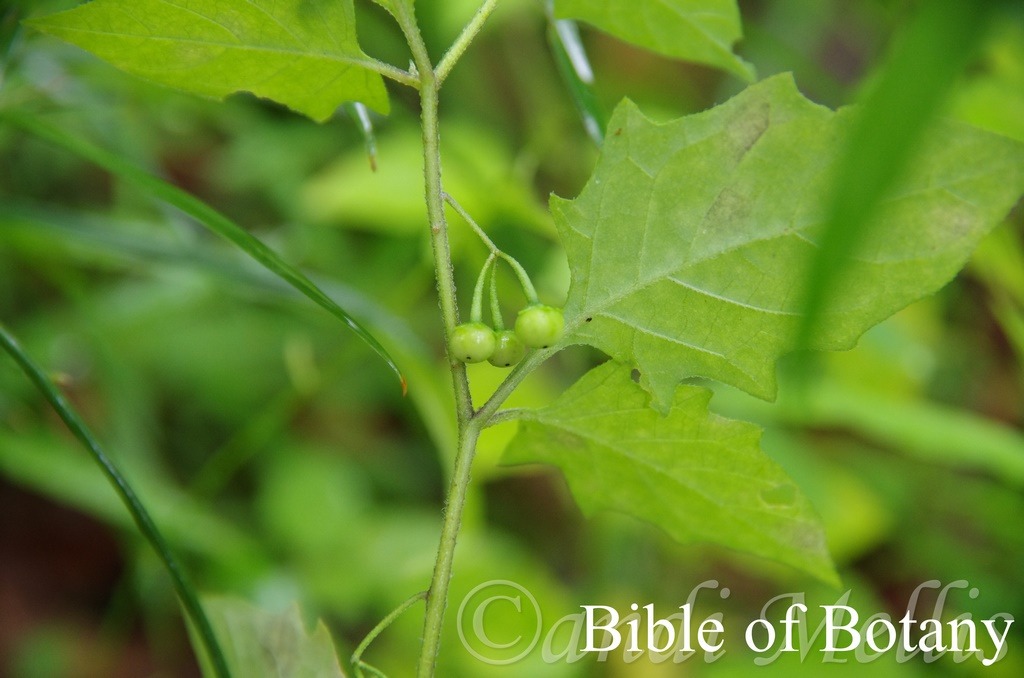
Wombat Conservation Park NSW
Solanum opacum
Classification:
Unranked: Eudicots
Unranked: Asterids
Order: Solanales
Family: Solanaceae
Subfamily: Solanoideae
Tribe: Solaneae
Genus: From Sol, which is Latin is Latin for the sun and Anus, which is Latin for a stem. It refers to the family of plants known as nightshades, which includes the potato, tomato, capsicum and chillies, where the flowers look like little suns on the end of stems. It also has the possible meaning from Hiláskomai, which is Ancient Greek or later Sōlārī, which is Latin for to appease, to make comfortable, to console or to solace. It refers to organs or structures usually the flowers, which are very pleasing to the eye.
Specie: From Opacus, which is Latin for shady, dark or obscure. It refers to species, which prefer darker locations in the forest or providing shade for others.
Sub specie:
Common Name: Green Berry Nightshade.
Distribution:
Solanum opacum is a wide spread species found east of a line from Trinity Bay in far north eastern Queensland to Kangaroo Island in Southern South Australia.
It is also found in Fiji, New Guinee, New Zealand and some of the Pacific Island Nations.
https://avh.ala.org.au/occurrences/search?taxa=Solanum+opacum#tab_mapView
Habitat Aspect Climate:
Solanum opacum prefers light dappled shade to medium shade. It grows in wet areas along creeks, rainforest clearings and moist eucalypt woodland. The altitude ranges from 20 meters ASL to 1100 meters ASL.
The temperatures range from minus 4 degree in August to 44 degrees in January.
The rainfalls range from lows of 350mm to 1200mm average per annum.
Soil Requirements:
Solanum opacum prefers red sands, red sandy loams and light red sandy clays. The soils are usually derived from decomposed red or orange sandstones, granite or black basalt. The soils range from a pH of 4.5 to 6pH. It is not tolerant of water logged soils. Non saline soils to moderately saline soils are tolerated.
Height & Spread:
Wild Plants: 0.3m to 1m by 0.6m to 1m.
Characteristics:
Solanum opacum grows as a sprawling almost prostrate annual herb. The grey-green stems are sparsely to moderately covered in off white hirsute hairs with some minute glandular and non-glandular hairs. The spines are absent on this species.
The alternate, ovate to lanceolate leaves of Solanum opacum measure 30mm to 80mm in length by 10mm to 40mm in width. The greenish-yellow petioles are covered in off white hirsute hairs with some minute glandular and non-glandular hairs. The petioles measure 10mm to 40mm in length. The bases are cuneate to attenuate while the apexes are acute. The concolourous laminas are green to yellowish-green, dull and sparsely or rarely moderately covered in off white hirsute hairs with some minute glandular and non-glandular hairs. The laminas recurve upwards from the mid vein to the margins while the margins are usually shallowly lobed or at times entire and gently undulate. The mid vein is prominent while the lateral veins are slightly prominent on the lower laminas and are clearly visible from the upper laminas.
The inflorescences of Solanum opacum are born on short cymes or panicles from the stems. There are 2 to 5 individual flowers on a cyme. The peduncle, rachises and pedicels are mid green to deep green almost black to grey-green and sparsely or rarely moderately covered in off white hirsute hairs with some minute glandular and non-glandular hairs. The peduncles measure 15mm to 20mm in length while the rachises measure 20mm to 30mm in length and the pedicels measure 7mm to 12mm in length. The green to yellow-green calyxes are covered in off white hirsute hairs with some minute glandular and non-glandular hairs externally. The calyxes measure 4mm to 7mm in length while the 5 narrow elliptical to narrow oblong lobes measure 1mm to 1.2mm in length. The short, white cupuliform, stellate, corollas measure 8mm to 12mm in diameter. The 5 narrow lanceolate lobes have a long tapering acute apex. The lobes measure 3mm to 5mm in length by 2mm to 2.3mm in width.
The 5 exserted stamens extend from the mouth of the corolla tube. The filaments are deep yellow while the basifixed anthers are bright yellow. The filaments measure 1mm to 2mm in length while the anthers measure 4.5mm to 6.5mm in length and converge around the style.
The white style and stigma are glabrous while the superior, green, ovoidal ovary measures 1mm to 2mm in length. The glabrous pistil measures 9mm to 10mm. Solanum opacum flowers appear from April through to September.
The fruits of Solanum opacum are globose berries. The berries are glabrous measure 8mm to 10mm in length by 8mm to 10mm in diameter. The green berries turn opaque-green. The calyx lobes are persistent on the ripe fruit. The pale fawnish seeds measure 1.2mm to 2mm in diameter. The fruit ripen from September to November.
Wildlife:
Solanum opacum support native colony bees like Tetragonula carbonaria and native flies along the coast when in flower.
WARNING: Many Solanum species are poisonous and many species; perhaps all, have some parts that are poisonous, or the edible parts are only edible at certain times of the year while being poisonous at other times.
Some native species of Solanum were known as traditional Aboriginal bush tucker plants. Others are introduced edible weeds.
Several native species are listed in Wild Food Plants of Australia by Cribb Not all of these are edible however some had specific uses or had to be treated first before eating: Solanum aviculare (Rainforest Kangaroo Apple), Solanum centrale (Desert Raisin), Solanum chippendalei (Bush Tomato), Solanum diversiflorum (Kakarrta), Solanum ellipticum, Solanum esuriale, Solanum laciniatum (Southern Kangaroo Apple), Solanum linearifolium (Mountain Kangaroo Apple), Solanum mauritianum (Wild Tobacco, Tobacco Bush), and Solanum vescum (Gunyang). Of these, Solanum aviculare, Solanum laciniatum, and Solanum mauritanum are the most common species that people come into contact with.
The Rainforest Kangaroo Apple is apparently only barely edible, so should be eaten sparingly.
Of the Solanum species which occur in Australia, Solanum americanum, Solanum scabrum and Solanum villosum and Solanum opacum are also considered to be edible.
People with allergies to tomatoes, peanuts or potatoes should be wary of eating any fruit of the solanaceae family as they all contain small amounts of the alkaloid sola.
Solanum aviculare Kangaroo Apple
Solanum centrale is also known as Desert Raisin, Bush Raisin or Bush Sultana, or by the native name kutjera.
Solanum chipendalei is known as Bush Tomato.
Solanum coactiliferum Aborigines roasted the fruit before eating.
Solanum diversifolium is known as Bush Tomato, Karlumbu, Pilirta, Wamurla districts.
Solanum ellipticum Potato Bush is very similar to Solanum quadriliculatum which is poisonous.
Solanum lacinatum is known as Kangaroo Apple.
Solanum orbicaltum is known as Round-leaved Solanum.
Solanum pholomoides is also known as Wild Tomato.
Solanum vescum.
Solanum cinerium is poisonous
Aborigines burned off the outer skin of Solanum aviculare as eating them raw caused the mouth to blister. Aborigines ate the fruit of Solanum centrale raw or put it on the hot earth by the fire, sprinkle some water on the fruits and cover them up to cook them. Solanum chippendalei is consumed by first splitting the fruit, scraping the center out and eating the outer flesh as the seeds and surrounding placenta are bitter. Solanum diversiflorum is roasted before being eaten or dried. Fruit of Solanum orbiculatum is edible, but the fruit of the large leafed form may be bitter. Fruit of Solanum phlomoidesappears to be edible after the removal of seeds and roasting or sun drying. Mardu people would dry the fruits to consume them at a later date.
Solanum aviculare contains solasodine, a steroid used in the manufacture of oral contraceptives. I have not tried the fruits so cannot vouch for any of what is said first hand.
Cultivation:
Solanum opacum is a perennial shrub that should be grown in the open in full sun on sand to medium clays. In cultivation it grows from 0.5 meters to 0.7 meters in height by 0.5 meters to 0.8 meters in diameter when grown in the open. It can be pruned in the early stages to help increase bushiness,
It is best used adjacent to small areas of bush or in heath type garden close to paths or the house so their attractive white to pale purplish-blue flowers and scarlet-red fruits can be viewed regularly. It is great in larger rockeries as a fill in plant. Here it can be planted in small groups of 2 to 5 or as a standalone plant to create a harsher, more barren look with other arid plants. If it is surrounded by shorter plants with fine foliages and yellow or cream flowers they will dominate at the center giving height and strength to the bed especially when it is in fruit. Plants with large leaves will blend into each other giving a sub-tropical look.
Try to avoid red flowering plants next to Solanum inaequilaterum as they will smother the scarlet fruits that are an important feature of this species. Hibbertia scandens and some of the Hovea specie would be a good start as would some of the Phyllanthus specie.
Propagation:
Seeds: The seeds of Solanum opacum can be removed easily from the fruits.
Sow fresh seeds directly into a seed raising mix, keeping them moist not wet. Do not over water as the seeds will rot off before germination takes place. Place the trays in a cool shaded area with 50mm shade cloth in the bush house. When the seedlings are 20 to 25 mm tall, prick them out and plant them into 50mm native tubes using a good organic mix.
As the seedlings roots reach the bottom of the tubes plant them out into their permanent position. Do not delay.
Fertilize using Seaweed, fish emulsion or organic chicken pellets soaked in water and apply the liquid on an alternate basis. Fertilize every 2 months until the plants are well established then on an annual basis in September or March to maintain health, vigour and better flowering and fruiting.
Further Comments from Readers:
“Hi reader, it seems you use The Bible of Botany a lot. That’s great as we have great pleasure in bringing it to you! It’s a little awkward for us to ask, but our first aim is to purchase land approximately 1,600 hectares to link several parcels of N.P. into one at The Pinnacles NSW Australia, but we need your help. We’re not salespeople. We’re amateur botanists who have dedicated over 30 years to saving the environment in a practical way. We depend on donations to reach our goal. If you donate just $5, the price of your coffee this Sunday, We can help to keep the planet alive in a real way and continue to bring you regular updates and features on Australian plants all in one Botanical Bible. Any support is greatly appreciated. Thank you.”
In the spirit of reconciliation we acknowledge the Bundjalung, Gumbaynggirr and Yaegl and all aboriginal nations throughout Australia and their connections to land, sea and community. We pay our respect to their Elders past, present and future for the pleasures we have gained.
Solanum parvifolium
Classification:
Unranked: Eudicots
Unranked: Asterids
Order: Solanales
Family: Solanaceae
Subfamily: Solanoideae
Tribe: Solaneae
Genus: From Sol, which is Latin is Latin for the sun and Anus, which is Latin for a stem. It refers to the family of plants known as nightshades, which includes the potato, tomato, capsicum and chillies, where the flowers look like little suns on the end of stems. It also has the possible meaning from Hiláskomai, which is Ancient Greek or later Sōlārī, which is Latin for to appease, to make comfortable, to console or to solace. It refers to organs or structures usually the flowers, which are very pleasing to the eye.
Specie: From Paûros, which is Ancient Greek or Parvum, which is Latin for small and Folium, which is Latin for a foliage. It refers to leaves, which are very small.
Sub specie:
Common Name: Common Nightshade or Small Leaf Nightshade.
Distribution:
Solanum parvifolium is found south from the Paluma National Park in far north eastern Queensland south to Tooraweenah to Enfield State Forest in central Northern New South Wales. It is found on the central Western Plains, on the Western Slopes and on the Great Dividing Range.
https://avh.ala.org.au/occurrences/search?taxa=Solanum+parvifolium#tab_mapView
Habitat Aspect Climate:
Solanum parvifolium prefers light dappled shade to full sun. It prefers Eucalyptus woodlands. The altitude ranges from 500 meters ASL to 460 meters ASL.
The temperatures range from minus 3 degrees in August to 38 degrees in January.
The rainfalls range from lows of 350mm to 1000mm average per annum.
Soil Requirements:
Solanum parvifolium prefers better quality sandy loams to medium clays. The soils are usually derived from decomposed brown basalt, black basalts or metamorphic. The soils pH ranges from 5pH to 6.5pH. It does not tolerate water logged soils however periodic inundations may occur with plants growing in riparian zones. Non saline soils to moderately saline soils are tolerated.
Height & Spread:
Wild Plants: 0.5m to 1m by 0.5m to 1.2m.
Characteristics:
Solanum parvifolium grows as a small ascending shrub with erect, pale green to deep green. The branches are pale grey to mid-green and are densely covered in short, white stellate hairs. The stems are also covered in pale creamy yellow to deep brown; often pale cream at the base turning deep brown at the apex, rigid, acicular needle like spines that measure 5mm to 8mm in length.
The adjacent, linear -oblong leaves of Solanum parvifolium measure 30mm to 60mm in length by 6mm to 10mm in width. The bases are cuneate-rounded while the apexes are acute to acute-obtuse. The discolourous laminas are deep green to deep sea-green, glabrous to sparsely covered in white, stellate hairs and spineless while the lower lamina is paler and densely covered in pale grey to fawn tomentose hairs. The lower lamina is spineless or very sparsely covered in pale creamy yellow to deep brown; often pale cream at the base turning deep brown at the apex, rigid, acicular needle like spines that measure 5mm to 8mm in length along the midvein. The leaf margins are entire. The laminas are flat or recurve. The mid vein and lateral veins are strongly prominent on the lower laminas and are distinctly visible from the upper lamina. The petioles are pale green to deep green. The petioles are pale grey to mid-green and are densely covered in short, white stellate hairs and measure 30mm to 50mm in length.
Inflorescences of Solanum parvifolium are born on small peduncles from the leaf axils. There are 1 to 5 rarely 6 individual flowers on a peduncle. The peduncles and pedicels are pale grey to mid-green and are densely covered in short, white stellate hairs. The peduncles measure 30mm to 60mm in length while the pedicels measure 6mm to 10mm in length. The pale grey to mid-green and are densely covered in short, white stellate hairs. The calyx tubes measure 3mm to 4mm in length while the 4 or 5 narrow triangular lobes are slightly to strongly decurve and measure 1mm to 2.5mm in length. The corollas are lilac to purple or at times white. The corollas measure 10mm to 16mm in diameter. The 4 or 5 stellate-rotate lobes measure 2mm to 6mm in length. The lobes margins are entire and undulating while the apexes are narrow acute-obtuse to broadly acute.
The 5 exserted anthers extend from the center of the corolla. The filaments are deep yellow while the basifixed anthers are bright yellow. The filaments measure 1mm to 2mm in length. The anthers measure 3mm to 5mm in length by 1mm to 2mm in width and converge strongly around the style.
The pale creamy green style and stigma are glabrous while the green, ovoidal ovary measures 1mm to 1.5mm in length. The pistil measures 4.5mm to 6.5mm in length. Solanum parvifolium’s flowers appear from late June through to late November however the odd flower may appear at any time throughout the year.
The fruits of Solanum parvifolium are globose berries. The berries are glabrous and measure 5mm to 8mm in length by 5mm to 8mm in diameter. The pale green berries turn bright glossy scarlet red when ripe. The calyx lobes are persistent, become semi recurve and expand to 2.5mm to 4mm in length on the ripe fruit. The pedicels expand to 12mm to 20mm in length. The pale ochre seeds measure 2.5mm to 3mm in length.
Wildlife:
Solanum parvifolium support native bees and native flies throughout their range.
WARNING: Many Solanum species are poisonous and many species; perhaps all, have some parts that are poisonous, or the edible parts are only edible at certain times of the year while being poisonous at other times.
Some native species of Solanum were known as traditional Aboriginal bush tucker plants. Others are introduced edible weeds.
Several native species are listed in Wild Food Plants of Australia by Cribb Not all of these are edible however some had specific uses or had to be treated first before eating: Solanum aviculare (Rainforest Kangaroo Apple), Solanum centrale (Desert Raisin), Solanum chippendalei (Bush Tomato), Solanum diversiflorum (Kakarrta), Solanum ellipticum, Solanum esuriale, Solanum laciniatum (Southern Kangaroo Apple), Solanum linearifolium (Mountain Kangaroo Apple), Solanum mauritianum (Wild Tobacco, Tobacco Bush), and Solanum vescum (Gunyang). Of these, Solanum aviculare, Solanum laciniatum, and Solanum mauritanum are the most common species that people come into contact with.
The Rainforest Kangaroo Apple is apparently only barely edible, so should be eaten sparingly.
Of the Solanum species which occur in Australia, Solanum americanum, Solanum scabrum and Solanum villosum and Solanum opacum are also considered to be edible.
People with allergies to tomatoes, peanuts or potatoes should be wary of eating any fruit of the solanaceae family as they all contain small amounts of the alkaloid sola.
Solanum aviculare Kangaroo Apple
Solanum centrale is also known as Desert Raisin, Bush Raisin or Bush Sultana, or by the native name kutjera.
Solanum chipendalei is known as Bush Tomato.
Solanum coactiliferum Aborigines roasted the fruit before eating.
Solanum diversifolium is known as Bush Tomato, Karlumbu, Pilirta, Wamurla districts.
Solanum ellipticum Potato Bush is very similar to Solanum quadriliculatum which is poisonous.
Solanum lacinatum is known as Kangaroo Apple.
Solanum orbicaltum is known as Round-leaved Solanum.
Solanum pholomoides is also known as Wild Tomato.
Solanum vescum.
Solanum cinerium is poisonous
Aborigines burned off the outer skin of Solanum aviculare as eating them raw caused the mouth to blister. Aborigines ate the fruit of Solanum centrale raw or put it on the hot earth by the fire, sprinkle some water on the fruits and cover them up to cook them. Solanum chippendalei is consumed by first splitting the fruit, scraping the center out and eating the outer flesh as the seeds and surrounding placenta are bitter. Solanum diversiflorum is roasted before being eaten or dried. Fruit of Solanum orbiculatum is edible, but the fruit of the large leafed form may be bitter. Fruit of Solanum phlomoidesappears to be edible after the removal of seeds and roasting or sun drying. Mardu people would dry the fruits to consume them at a later date.
Solanum aviculare contains solasodine, a steroid used in the manufacture of oral contraceptives. I have not tried the fruits so cannot vouch for any of what is said first hand.
Cultivation:
Solanum parvifolium is a beautifully small shrub that responds well to cultivation. It is a small size shrub that can be grown in the open in full sun on sandy loams to medium clays with rock or pebbles. It is particularly beautiful when in fruit. In cultivation they will grow from 0.8 meters to 1 meter in height by 0.6 meters to 0.8 meters in diameter when grown in the open.
They grow exceptionally well where a layer of mulch prevails that will keep the soil cool and moisture at an even level in arid areas or left open to create air movement and quicker drainage in higher rainfall areas. If these requirements are met they can cope with temperatures as low as minus 2 degrees and up to 40 degrees. It is moderately drought resistant once established however it will drop leaf and under severe stress will abort branches only to reshoot immediately following good rains or increased soil moisture.
Add to the above, if it is given a little water with a little native fertilizer in semi-arid areas on a regular basis or fertilized during rainy periods the plants will respond with superb flowering and fruiting over a longer period. Removing the spent flowers will help promote flowering and may increase the flowering season. Lightly tip pruning the plants may also be beneficial to help promote more blooms. This can be done immediately after the main flowering has ceased and again in January if necessary.
Place them near large, old stumps and roots to make the stumps or roots look even more gnarled and older than they really are. Select an area of ground and let your hair down. Be imaginative and this is the plant that can give inspiration because it is so different and perfectly rounded. Solanum parvifolium is suited to medium desert type gardens west of the Great Dividing Range and would be worthwhile persevering with on sandy escarpments east of the range. Be sparingly with the other plants when planting and remember that deserts are rolling flat plains not steep hills so it is best to use them on gentle slopes where you can see over every plant. It is most suitable for this type of garden so use them as the main feature and surround them with small native annuals.
They can be placed behind a small pool at the bottom of the garden with a billabong for great affect or even or in the foreground with a small waterfall or cascades in the background. Either way it is an interesting subject to work with.
Solanum parvifolium would make a great contribution to a sandy or rocky terrain rock garden. Here they can be used as the main feature plants, scattered throughout the boulders. When you use them in an area that is strewn with large boulders do not over crowd the scene as the boulders are a formidable part of the scene. Solanum parvifolium is well suited to such conditions so use them to high light the other features. Boulder country are almost always rising and falling in contour and may have some sharp rises. Make the scene so you can overseer the tallest rocks with the exception of one or two at the most. This can be achieved with using Solanum parvifolium’s pale blue green leaves contrasting with pale lime green or deep green to glaucous coloured foliages scattered here and there. Use a lot of procumbent plants like our native daisies to make the rocks look larger and the spaces between the plants more expansive. Mix them with other smaller shrubs so none of them dominate the scene but blend in to give a mosaic of foliage colours and patterns. Here I immediately think of some of the small Anigozanthos specie, Lechenaultia specie, Senecio specie and Scaevola specie for 4 genre that have great contrasting foliages flower colour and structure. Whatever you do allow room for the plants to reach their full potential and leave about half the plants diameter as bare earth to gain the best affect.
It is ideal placed around a pool, sunny courtyards or other confined spaces with plenty of sun light. Plant them in small groups or scatter plant them for a more informal natural look against walls to help soften them. Using rocks and small boulders can make the pool or any water feature appear like an oasis. The leaves and flowers can make a great start for the larger heath or desert setting where the water is a feature. Be careful not to over plant as they will look out of place and weedy.
Propagation:
Seeds: The Seeds of Solanum parvifolium can be removed easily from the fruits.
Sow fresh seeds directly into a seed raising mix, keeping them moist not wet. Do not over water as the seeds will rot off before germination takes place. Place the trays in a cool shaded area with 50mm shade cloth in the bush house. When the seedlings are 20 to 25 mm tall, prick them out and plant them into 50mm native tubes using a good organic mix.
As the seedlings roots reach the bottom of the tubes plant them out into their permanent position. Do not delay.
Fertilize using Seaweed, fish emulsion or organic chicken pellets soaked in water and apply the liquid on an alternate basis. Fertilize every 2 months until the plants are well established then on an annual basis in September or March to maintain health, vigour and better flowering.
Further Comments from Readers:
“Hi reader, it seems you use The Bible of Botany a lot. That’s great as we have great pleasure in bringing it to you! It’s a little awkward for us to ask, but our first aim is to purchase land approximately 1,600 hectares to link several parcels of N.P. into one at The Pinnacles NSW Australia, but we need your help. We’re not salespeople. We’re amateur botanists who have dedicated over 30 years to saving the environment in a practical way. We depend on donations to reach our goal. If you donate just $5, the price of your coffee this Sunday, We can help to keep the planet alive in a real way and continue to bring you regular updates and features on Australian plants all in one Botanical Bible. Any support is greatly appreciated. Thank you.”
In the spirit of reconciliation we acknowledge the Bundjalung, Gumbaynggirr and Yaegl and all aboriginal nations throughout Australia and their connections to land, sea and community. We pay our respect to their Elders past, present and future for the pleasures we have gained.
Solanum petrophilum
Classification:
Unranked: Eudicots
Unranked: Asterids
Order: Solanales
Family: Solanaceae
Subfamily: Solanoideae
Tribe: Solaneae
Genus: From Sol, which is Latin is Latin for the sun and Anus, which is Latin for a stem. It refers to the family of plants known as nightshades, which includes the potato, tomato, capsicum and chillies, where the flowers look like little suns on the end of stems. It also has the possible meaning from Hiláskomai, which is Ancient Greek or later Sōlārī, which is Latin for to appease, to make comfortable, to console or to solace. It refers to organs or structures usually the flowers, which are very pleasing to the eye.
Specie: From Petra, which is Ancient Greek for a rock and Phílos which is Ancient Greek for loving or to be loved. It refers to plants, which love to grow in very rocky habitats or on rock shelves.
Sub specie:
Common Name: Rock Nightshade.
Distribution:
Solanum petrophilum is found in several populations from near Kalgoorlie in south west to south of Kununurra in southern Western Australia east to north east of Broken hill in far central western New South Wales.
https://avh.ala.org.au/occurrences/search?taxa=Solanum+petrophilum#tab_mapView
Habitat Aspect Climate:
Solanum petrophilum prefers light dappled shade to full sun. It grows on skeletal sandstone, low rocky outcrops or sandstone rocky plains mainly at the base of low level cliffs or ranges. The altitude ranges from 10 meters ASL to 600 meters ASL.
The temperatures range from minus 2 degrees in August to 40 degrees in January.
The rainfalls range from lows of 100mm to 400mm average per annum.
Soil Requirements:
Solanum petrophilum prefers red or rusty brown skeletal sandy loams and light sandy clays. The soils are usually derived red or orange sandstones close to the parent rock. The soils pH ranges from 4.5pH to 6pH. It does not tolerate water logged soils. Non saline soils to very saline soils are tolerated.
Height & Spread:
Wild Plants: 02m to .05m by 0.5m to 0.8m.
Characteristics:
The intricate stems of Solanum petrophilum are pale grey-green to mid rusty-green. The branches are pale grey-green to mid green and are densely covered in short, white pulverulent and stellate hairs. The smaller stems are similar to the older stems. The stems are very sparsely to moderately covered in pale cream, rigid, acicular needle like spines that measure 5mm to 10mm in length.
The opposite to sub opposite, ovate-lanceolate to oblong leaves of Solanum petrophilum measure 30mm to 90mm in length by 15mm to 45mm in width. The bases are rounded to truncate or at times slightly hastate while the apexes are broadly acute to acute-obtuse. The discolourous laminas are pale grey-green to mid rusty-green, glabrous to sparsely covered in white, puberulent, stellate hairs and are spineless while the lower laminas are slightly paler to much paler. The lower laminas are spineless while the upper laminas are very sparsely covered in deep brown-black, rigid, acicular needle like spines that measure 5mm to 10mm in length. The leaf margins are shallowly to deeply irregularly lobed. The laminas recurve strongly from the mid vein to the margins. The mid vein and lateral veins are strongly prominent on the lower laminas and are distinctly visible from the upper lamina. The petioles are pale grey-green to pale rusty-green. The petioles densely covered in white to pale grey pulverulent and stellate hairs and measure 5mm to 20mm in length.
Inflorescences of Solanum petrophilum are born on a small rachis from the leaf axils or terminals. There are 3 to 10 individual flowers on a rachis. The peduncles, rachises and pedicels are densely covered in white to pale grey pulverulent and stellate hairs and measure 5mm to 20mm in length. The peduncles measure 5mm to 30mm in length while the rachises measure 5mm to 10mm in length and the pedicels measure 5mm to 10mm in length. The calyxes are densely covered in white to pale grey pubescent and stellate hairs. The calyx tubes measure 8mm to 10mm in length while the 5 narrow triangular lobes have a long narrowly acute apexes and measure 6mm to 7mm in length. The corollas are lilac to purple or at times white and slightly campanulate. The corollas measure 25mm to 32mm in diameter. The 5 stellate-rotate lobes measure 1mm to 6mm in length. The lobes margins are entire and crinkled to undulating while the apexes are truncate to broadly acute or broadly obtuse.
The 5 exserted anthers extend from the center of the corolla. The filaments are deep yellow while the basifixed anthers are bright yellow. The filaments measure 1mm to 2mm in length. The anthers measure 4mm to 6mm in length by 1mm to 2mm in width and surround the style.
The white style and stigma are glabrous while the green, ovoidal ovary measures 1mm in length. The pistil measures 7mm to 8mm in length. Solanum petrophilum flowers appear from late June through to late November however the odd flower may appear at any time throughout the year.
The fruits of Solanum petrophilum are globose to depressed globose berries. The berries are glabrous and measure 6mm to 10mm in length by 8mm to 10mm in diameter. The pale green berries turn pale yellow then dry to pale brown to fawn when ripe. The calyx lobes are persistent, become semi recurve and expand to 7mm to 8mm in length on the ripe fruit. The pale brown to pale grey-brown seeds measure 1mm to 1.5mm in length.
Wildlife:
Solanum petrophilum support native bees and native flies throughout their range.
WARNING: Many Solanum species are poisonous and many species; perhaps all, have some parts that are poisonous, or the edible parts are only edible at certain times of the year while being poisonous at other times.
Some native species of Solanum were known as traditional Aboriginal bush tucker plants. Others are introduced edible weeds.
Several native species are listed in Wild Food Plants of Australia by Cribb Not all of these are edible however some had specific uses or had to be treated first before eating: Solanum aviculare (Rainforest Kangaroo Apple), Solanum centrale (Desert Raisin), Solanum chippendalei (Bush Tomato), Solanum diversiflorum (Kakarrta), Solanum ellipticum, Solanum esuriale, Solanum laciniatum (Southern Kangaroo Apple), Solanum linearifolium (Mountain Kangaroo Apple), Solanum mauritianum (Wild Tobacco, Tobacco Bush), and Solanum vescum (Gunyang). Of these, Solanum aviculare, Solanum laciniatum, and Solanum mauritanum are the most common species that people come into contact with.
The Rainforest Kangaroo Apple is apparently only barely edible, so should be eaten sparingly.
Of the Solanum species which occur in Australia, Solanum americanum, Solanum scabrum and Solanum villosum and Solanum opacum are also considered to be edible.
People with allergies to tomatoes, peanuts or potatoes should be wary of eating any fruit of the solanaceae family as they all contain small amounts of the alkaloid sola.
Solanum aviculare Kangaroo Apple
Solanum centrale is also known as Desert Raisin, Bush Raisin or Bush Sultana, or by the native name kutjera.
Solanum chipendalei is known as Bush Tomato.
Solanum coactiliferum Aborigines roasted the fruit before eating.
Solanum diversifolium is known as Bush Tomato, Karlumbu, Pilirta, Wamurla districts.
Solanum ellipticum Potato Bush is very similar to Solanum quadriliculatum which is poisonous.
Solanum lacinatum is known as Kangaroo Apple.
Solanum orbicaltum is known as Round-leaved Solanum.
Solanum pholomoides is also known as Wild Tomato.
Solanum vescum.
Solanum cinerium is poisonous
Aborigines burned off the outer skin of Solanum aviculare as eating them raw caused the mouth to blister. Aborigines ate the fruit of Solanum centrale raw or put it on the hot earth by the fire, sprinkle some water on the fruits and cover them up to cook them. Solanum chippendalei is consumed by first splitting the fruit, scraping the center out and eating the outer flesh as the seeds and surrounding placenta are bitter. Solanum diversiflorum is roasted before being eaten or dried. Fruit of Solanum orbiculatum is edible, but the fruit of the large leafed form may be bitter. Fruit of Solanum phlomoidesappears to be edible after the removal of seeds and roasting or sun drying. Mardu people would dry the fruits to consume them at a later date.
Solanum aviculare contains solasodine, a steroid used in the manufacture of oral contraceptives. I have not tried the fruits so cannot vouch for any of what is said first hand.
Cultivation:
Solanum petrophilum is a beautifully small shrub that responds well to cultivation. It is a small size shrub that can be grown in the open in full sun on sandy loams to medium clays with rock or pebbles. It is particularly beautiful when in flower. In cultivation they will grow from 0.5 meters to 0.8 meter in height by 0.4 meters to 0.6 meters in diameter when grown in the open.
It grows exceptionally well where a layer of mulch prevails that will keep the soil cool and moisture at an even level in arid areas or left open to create air movement and quicker drainage in higher rainfall areas. If these requirements are met they can cope with temperatures as low as minus 2 degrees and up to 40 degrees. It is moderately drought resistant once established however it will drop leaf and under severe stress will abort branches only to reshoot immediately following good rains or increased soil moisture.
Add to the above, if it is given a little water with a little native fertilizer in semi-arid areas on a regular basis or fertilized during rainy periods the plants will respond with superb flowering over a longer period. Removing the spent flowers will help promote flowering and may increase the flowering season. Lightly tip pruning the plants may also be beneficial to help promote more blooms. This can be done immediately after the main flowering has ceased and again in January if necessary.
Place them near large, old stumps and roots to make the stumps or roots look even more gnarled and older than they really are. Select an area of ground and let your hair down. Be imaginative and this is the plant that can give inspiration because it is so different and perfectly rounded. Solanum petrophilum is suited to medium size desert type gardens west of the Great Dividing Range and would be worthwhile persevering with on sandy escarpments east of the range. Be sparingly with the other plants when planting and remember that deserts are rolling flat plains not steep hills so it is best to use them on gentle slopes where you can see over every plant. It is most suitable for this type of garden so use them as the main feature and surround them with small native annuals.
It can be placed behind a small pool at the bottom of the garden with a billabong for great affect or even or in the foreground with a small waterfall or cascades in the background. Either way it is an interesting subject to work with.
Solanum petrophilum would make a great contribution to a sandy or rocky terrain rock garden. Here they can be used as the main feature plants, scattered throughout the boulders. When you use them in an area that is strewn with large boulders do not over crowd the scene as the boulders are a formidable part of the scene. Solanum petrophilum is well suited to such conditions so use them to high light the other features. Boulder country are almost always rising and falling in contour and may have some sharp rises. Make the scene so you can overseer the tallest rocks with the exception of one or two at the most. This can be achieved with using Solanum petrophilum’s pale blue green leaves contrasting with pale lime green or deep green to glaucous coloured foliages scattered here and there. Use a lot of procumbent plants like our native daisies to make the rocks look larger and the spaces between the plants more expansive. Mix them with other smaller shrubs so none of them dominate the scene but blend in to give a mosaic of foliage colours and patterns. Here I immediately think of some of the small Anigozanthos specie, Lechenaultia specie, Senecio specie and Scaevola specie for 4 great genre for contrasting foliages flower colour and structure. Whatever you do allow room for the plants to reach their full potential and leave about half the plants diameter as bare earth to gain the best affect.
It is ideal placed around a pool, sunny courtyards or other confined spaces with plenty of sun light. Plant them in small groups or scatter plant them for a more informal natural look against walls to help soften them. Using rocks and small boulders can make the pool or any water feature appear like an oasis. The leaves and flowers can make a great start for the larger heath or desert setting where the water is a feature. Be careful not to over plant as they will look out of place and weedy.
Propagation:
Seeds:
Seeds of Solanum petrophilum can be removed easily from the fruits.
Sow fresh seeds directly into a seed raising mix, keeping them moist not wet. Do not over water as the seeds will rot off before germination takes place. Place the trays in a cool shaded area with 50mm shade cloth in the bush house. When the seedlings are 20 to 25 mm tall, prick them out and plant them into 50mm native tubes using a good organic mix.
As the seedlings roots reach the bottom of the tubes plant them out into their permanent position. Do not delay.
Fertilize using Seaweed, fish emulsion or organic chicken pellets soaked in water and apply the liquid on an alternate basis. Fertilize every 2 months until the plants are well established then on an annual basis in September or March to maintain health, vigour and better flowering.
Further Comments from Readers:
“Hi reader, it seems you use The Bible of Botany a lot. That’s great as we have great pleasure in bringing it to you! It’s a little awkward for us to ask, but our first aim is to purchase land approximately 1,600 hectares to link several parcels of N.P. into one at The Pinnacles NSW Australia, but we need your help. We’re not salespeople. We’re amateur botanists who have dedicated over 30 years to saving the environment in a practical way. We depend on donations to reach our goal. If you donate just $5, the price of your coffee this Sunday, We can help to keep the planet alive in a real way and continue to bring you regular updates and features on Australian plants all in one Botanical Bible. Any support is greatly appreciated. Thank you.”
In the spirit of reconciliation we acknowledge the Bundjalung, Gumbaynggirr and Yaegl and all aboriginal nations throughout Australia and their connections to land, sea and community. We pay our respect to their Elders past, present and future for the pleasures we have gained.
Solanum plicatile
Classification:
Unranked: Eudicots
Unranked: Asterids
Order: Solanales
Family: Solanaceae
Subfamily: Solanoideae
Tribe: Solaneae
Genus: From Sol, which is Latin is Latin for the sun and Anus, which is Latin for a stem. It refers to the family of plants known as nightshades, which includes the potato, tomato, capsicum and chillies, where the flowers look like little suns on the end of stems. It also has the possible meaning from Hiláskomai, which is Ancient Greek or later Sōlārī, which is Latin for to appease, to make comfortable, to console or to solace. It refers to organs or structures usually the flowers, which are very pleasing to the eye.
Specie: From Plicatus, which is Latin for to be folded like a fan or pleated. It refers to structures or organs, which have folded or pleated surfaces or margins.
Sub specie:
Common Name:
Distribution:
Solanum plicatile is found in the southern half of Western Australia and is concentrated around Kalgoorlie from west of Rawlinna in the east to Babakin in the west and Salmon Gums in the south to near Lake Barlee in the north.
https://avh.ala.org.au/occurrences/search?taxa=Solanum+plicatile#tab_mapView
Habitat Aspect Climate:
Solanum plicatile prefers light dappled shade to full sun. It grows in open Eucalyptus, Acacia or mixed woodlands. The altitude ranges from 300 meters ASL to 500 meters ASL.
The temperatures range from minus 3 degrees in August to 36 degrees in January.
The rainfalls range from lows of 150mm to 400mm average per annum.
Soil Requirements:
Solanum plicatile prefers to grow on better quality sandy loams to medium clays. The soils are usually derived from decomposed red, orange or brown sandy loams to red, orange to brown sandstones. The soils pH ranges from 4.5pH to 6pH. It does not tolerate water logged soils. Non saline soils to moderately saline soils are tolerated.
Height & Spread:
Wild Plants: 0.5m to 1m by 0.5m to 1m.
Characteristics:
Solanum plicatile grows as a small ascending shrub with pale grey-green that are densely covered in short, white pulverulent and stellate hairs. The smaller stems are similar to the older stems. The stems are very sparsely to sparsely covered in pale cream, rigid, acicular needle like spines that measure 3mm to 5mm in length.
The alternate, oblong leaves of Solanum plicatile measure 10mm to 20mm in length by 5mm to 10mm in width. The bases are rounded to cuneate while the apexes are obtuse. The concolourous laminas are pale grey-green, and densely covered in white, pubescent and stellate hairs. The leaf margins are shallowly and irregularly lobed. The laminas recurve strongly from the mid vein to the margins and are tightly undulating or pleated. The mid vein is strongly prominent on the lower laminas and is visible from the upper lamina. The petioles are pale grey-green and densely covered in white to pale grey pubescent and stellate hairs and measure 5mm to 8mm in length.
Inflorescences of Solanum plicatile are born on a small peduncle from the leaf axils or terminals. There are 2 to 3 individual flowers on a peduncle. The peduncles and pedicels are densely covered in white to pale grey pubescent and stellate hairs and measure 5mm to 20mm in length. The peduncles measure 2mm to 5mm in length while the pedicels measure 5mm to 6mm in length. The calyxes are densely covered in white to pale grey pubescent and stellate hairs. The calyx tubes measure 5mm to 9mm in length while the 5 narrow elliptical lobes measure 2mm to 5mm in length. The corollas are deep violet-blue to purple or at times white. The corollas measure 20mm to 25mm in diameter. The 4 or 5 stellate-rotate lobes measure 3mm to 8mm in length. The lobes margins are entire and crinkled to undulating while the apexes are obtuse.
The 5 exserted anthers extend from the center of the corolla. The filaments are yellow while the basifixed anthers are bright yellow and taper towards their apexes. The filaments measure 1mm to 2mm in length. The anthers measure 4mm to 6mm in length by 1mm to 2mm in width, surround the style and spread slightly near the apex.
The white to lilac style and deep violet-blue stigma are glabrous while the green, ovoidal ovary measures 1mm in length. The pistil measures 4mm to 6mm in length. Solanum plicatile’s flowers appear from late April through to late May or from August through to November however the odd flower may appear at any time throughout the year.
The fruits of Solanum plicatile are spherical berries. The berries are glabrous and measure 8mm to 12mm in length by 8mm to 10mm in diameter. The pale green berries turn yellow when ripe. The calyx lobes are persistent on the ripe fruit. The pale yellow-brown to pale creamy ochre seeds measure 2mm to 2.5mm in length.
Wildlife:
Solanum plicatile support native bees, wasps, butterflies and native flies throughout their range.
WARNING: Many Solanum species are poisonous and many species; perhaps all, have some parts that are poisonous, or the edible parts are only edible at certain times of the year while being poisonous at other times.
Some native species of Solanum were known as traditional Aboriginal bush tucker plants. Others are introduced edible weeds.
Several native species are listed in Wild Food Plants of Australia by Cribb Not all of these are edible however some had specific uses or had to be treated first before eating: Solanum aviculare (Rainforest Kangaroo Apple), Solanum centrale (Desert Raisin), Solanum chippendalei (Bush Tomato), Solanum diversiflorum (Kakarrta), Solanum ellipticum, Solanum esuriale, Solanum laciniatum (Southern Kangaroo Apple), Solanum linearifolium (Mountain Kangaroo Apple), Solanum mauritianum (Wild Tobacco, Tobacco Bush), and Solanum vescum (Gunyang). Of these, Solanum aviculare, Solanum laciniatum, and Solanum mauritanum are the most common species that people come into contact with.
The Rainforest Kangaroo Apple is apparently only barely edible, so should be eaten sparingly.
Of the Solanum species which occur in Australia, Solanum americanum, Solanum scabrum and Solanum villosum and Solanum opacum are also considered to be edible.
People with allergies to tomatoes, peanuts or potatoes should be wary of eating any fruit of the solanaceae family as they all contain small amounts of the alkaloid sola.
Solanum aviculare Kangaroo Apple
Solanum centrale is also known as Desert Raisin, Bush Raisin or Bush Sultana, or by the native name kutjera.
Solanum chipendalei is known as Bush Tomato.
Solanum coactiliferum Aborigines roasted the fruit before eating.
Solanum diversifolium is known as Bush Tomato, Karlumbu, Pilirta, Wamurla districts.
Solanum ellipticum Potato Bush is very similar to Solanum quadriliculatum which is poisonous.
Solanum lacinatum is known as Kangaroo Apple.
Solanum orbicaltum is known as Round-leaved Solanum.
Solanum pholomoides is also known as Wild Tomato.
Solanum vescum.
Solanum cinerium is poisonous
Aborigines burned off the outer skin of Solanum aviculare as eating them raw caused the mouth to blister. Aborigines ate the fruit of Solanum centrale raw or put it on the hot earth by the fire, sprinkle some water on the fruits and cover them up to cook them. Solanum chippendalei is consumed by first splitting the fruit, scraping the center out and eating the outer flesh as the seeds and surrounding placenta are bitter. Solanum diversiflorum is roasted before being eaten or dried. Fruit of Solanum orbiculatum is edible, but the fruit of the large leafed form may be bitter. Fruit of Solanum phlomoidesappears to be edible after the removal of seeds and roasting or sun drying. Mardu people would dry the fruits to consume them at a later date.
Solanum aviculare contains solasodine, a steroid used in the manufacture of oral contraceptives. I have not tried the fruits so cannot vouch for any of what is said first hand.
Cultivation:
Solanum plicatile is an unusual small shrub that responds well to cultivation. It is a small size shrub that can be grown in the open in full sun on sandy loams to medium clays with rock or pebbles. It is particularly beautiful when in flower. In cultivation they will grow from 0.5 meters to 0.8 meter in height by 0.4 meters to 0.6 meters in diameter when grown in the open.
They grow exceptionally well where a layer of mulch prevails that will keep the soil cool and moisture at an even level in arid areas or left open to create air movement and quicker drainage in higher rainfall areas. If these requirements are met they can cope with temperatures as low as minus 0 degrees and up to 40 degrees. It is drought resistant once established however it will drop leaf and under severe stress will abort branches only to reshoot immediately following good rains or increased soil moisture.
Add to the above, if it is given a little water with a little native fertilizer in semi-arid areas on a regular basis or fertilized during rainy periods the plants will respond with superb flowering over a longer period. Removing the spent flowers will help promote flowering and may increase the flowering season. Lightly tip pruning the plants may also be beneficial to help promote more blooms. This can be done immediately after the main flowering has ceased.
Place them near large, old stumps and roots to make the stumps or roots look even more gnarled and older than they really are. Select an area of ground and let your hair down. Be imaginative and this is the plant that can give inspiration because it is so different and consistent in shape. Solanum plicatile is suited to small and medium size desert type gardens west of the Great Dividing Range and would be worthwhile persevering with on sandy escarpments on the range. Be sparingly with the other plants when planting and remember that deserts are rolling flat plains not steep hills so it is best to use them on gentle slopes where you can see over every plant. It is most suitable for this type of garden so use them as the main feature and surround them with small native annuals.
They can be placed behind a small pool at the bottom of the garden with a billabong for great affect or even or in the foreground with a small waterfall or cascades in the background. Either way it is an interesting subject to work with.
Solanum plicatile would make a great contribution to a sandy or rocky terrain rock garden. Here they can be used as the main feature plants, scattered throughout the boulders. When you use them in an area that is strewn with large boulders do not over crowd the scene as the boulders are a formidable part of the scene. Solanum petrophilum is well suited to such conditions so use them to high light the other features. Boulder country are almost always rising and falling in contour and may have some sharp rises. Make the scene so you can overseer the tallest rocks with the exception of one or two at the most.
This can be achieved with using Solanum plicatile’s pale grey-green leaves contrasting with pale lime green or deep green to glaucous coloured foliages scattered here and there. Use a lot of procumbent plants like our native daisies to make the rocks look larger and the spaces between the plants more expansive. Mix them with other smaller shrubs so none of them dominate the scene but blend in to give a mosaic of foliage colours and patterns. Here I immediately think of some of the small Anigozanthos specie, Lechenaultia specie, Senecio specie and Scaevola specie for 4 great contrasting foliages flower colour and structure. Whatever you do allow room for the plants to reach their full potential and leave about half the plants diameter as bare earth to gain the best affect.
It is ideal placed around a pool, sunny courtyards or other confined spaces with plenty of sun light. Plant them in small groups or scatter plant them for a more informal natural look against walls to help soften them. Using rocks and small boulders can make the pool or any water feature appear like an oasis. The leaves and flowers can make a great start for the larger heath or desert setting. Be careful not to over plant desert gardens as they will look out of place and weedy.
Propagation:
Seeds: The seeds of Solanum plicatile can be removed easily from the fruits.
Sow fresh seeds directly into a seed raising mix, keeping them moist not wet. Do not over water as the seeds will rot off before germination takes place. Place the trays in a cool shaded area with 50mm shade cloth in the bush house. When the seedlings are 20 to 25 mm tall, prick them out and plant them into 50mm native tubes using a good organic mix.
As the seedlings roots reach the bottom of the tubes plant them out into their permanent position. Do not delay.
Fertilize using Seaweed, fish emulsion or organic chicken pellets soaked in water and apply the liquid on an alternate basis. Fertilize every 2 months until the plants are well established then on an annual basis in September or March to maintain health, vigour and better flowering.
Further Comments from Readers:
“Hi reader, it seems you use The Bible of Botany a lot. That’s great as we have great pleasure in bringing it to you! It’s a little awkward for us to ask, but our first aim is to purchase land approximately 1,600 hectares to link several parcels of N.P. into one at The Pinnacles NSW Australia, but we need your help. We’re not salespeople. We’re amateur botanists who have dedicated over 30 years to saving the environment in a practical way. We depend on donations to reach our goal. If you donate just $5, the price of your coffee this Sunday, We can help to keep the planet alive in a real way and continue to bring you regular updates and features on Australian plants all in one Botanical Bible. Any support is greatly appreciated. Thank you.”
In the spirit of reconciliation we acknowledge the Bundjalung, Gumbaynggirr and Yaegl and all aboriginal nations throughout Australia and their connections to land, sea and community. We pay our respect to their Elders past, present and future for the pleasures we have gained.

Author’s Garden The Pinnacles NSW
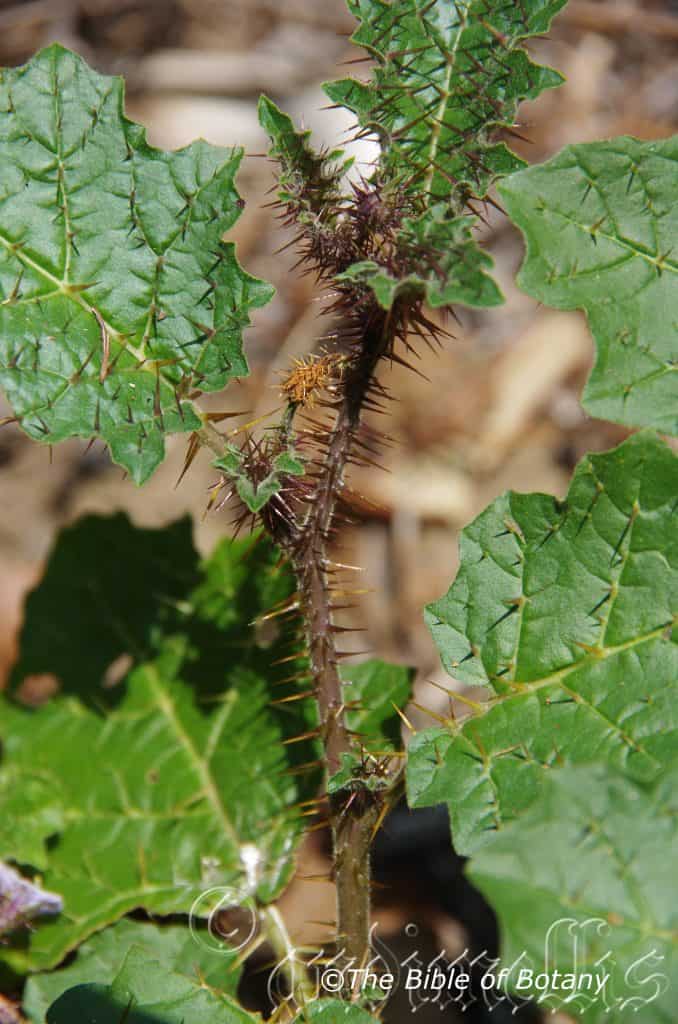
Author’s Garden The Pinnacles NSW
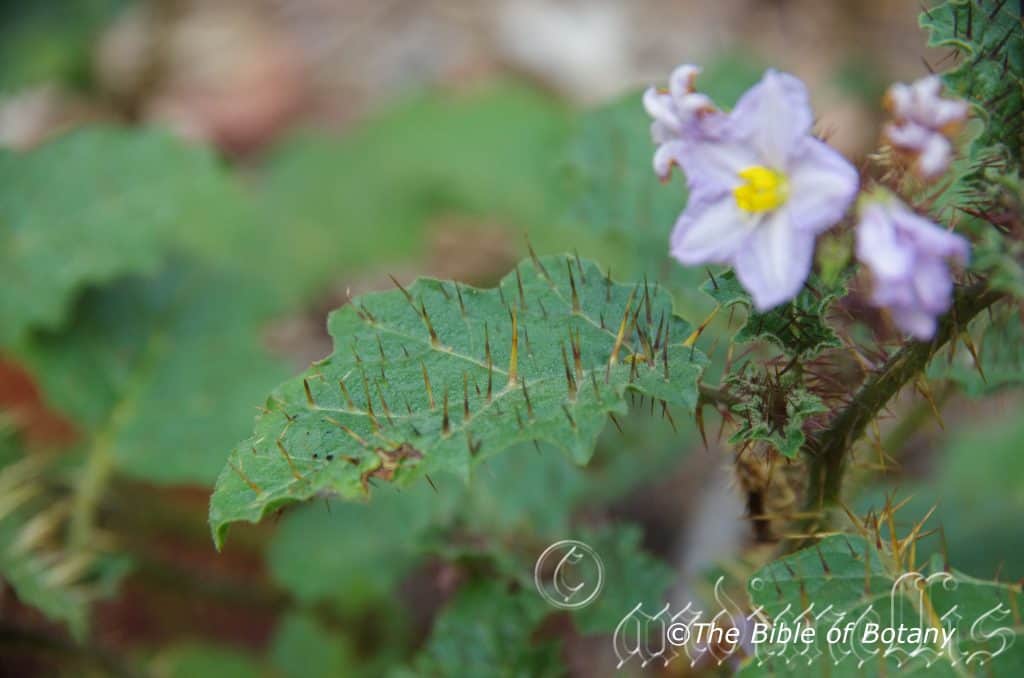
Author’s Garden The Pinnacles NSW
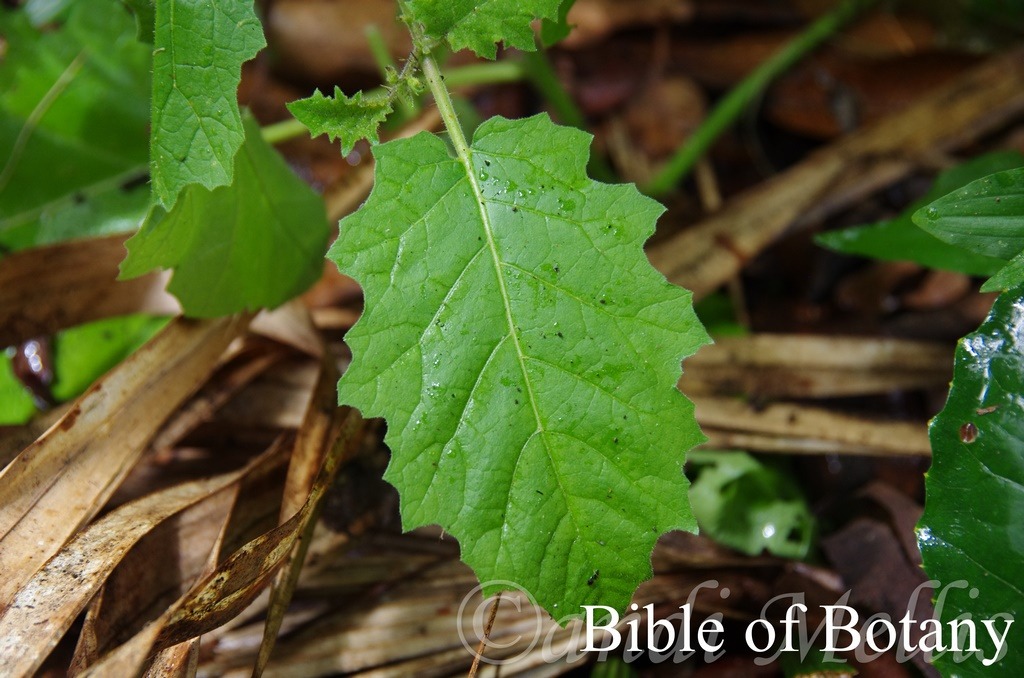
Wombat Conservation Park NSW
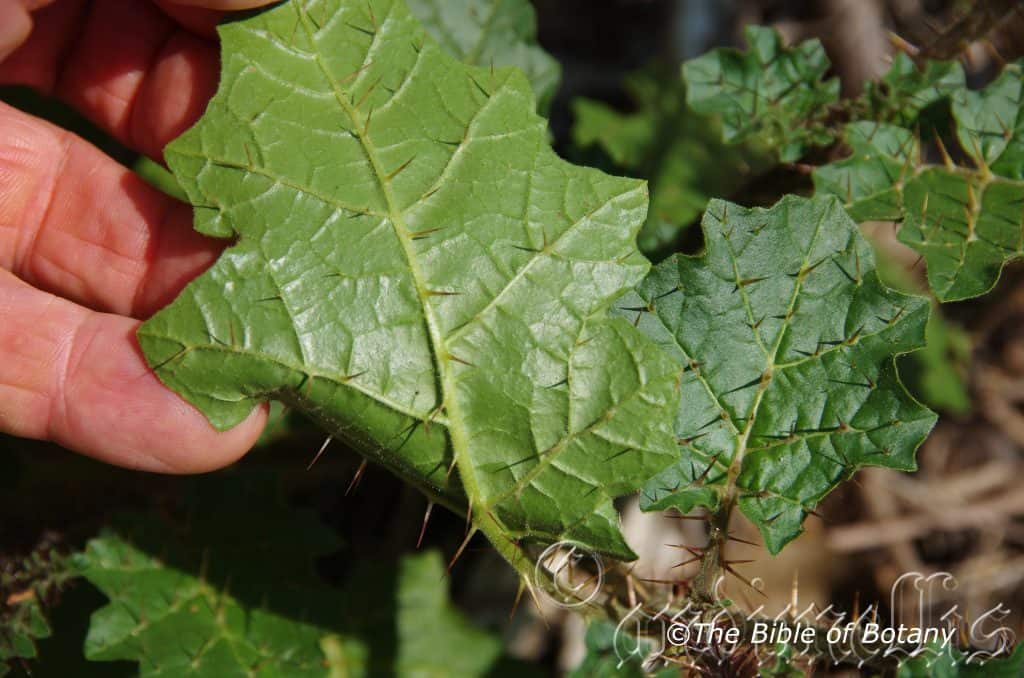
Author’s Garden The Pinnacles NSW
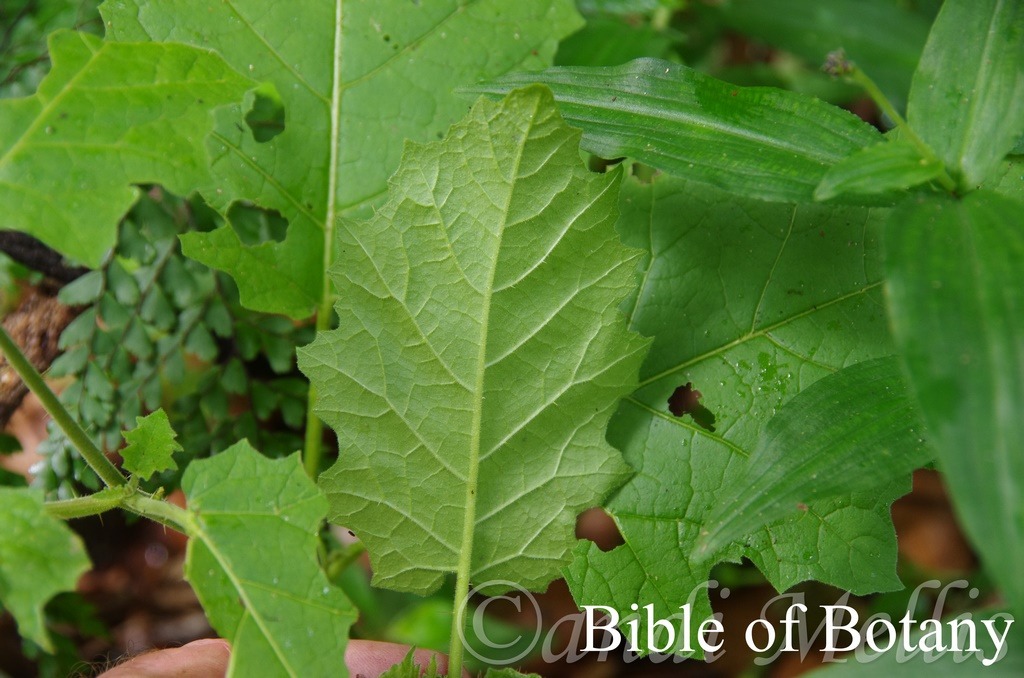
Wombat Conservation Park NSW
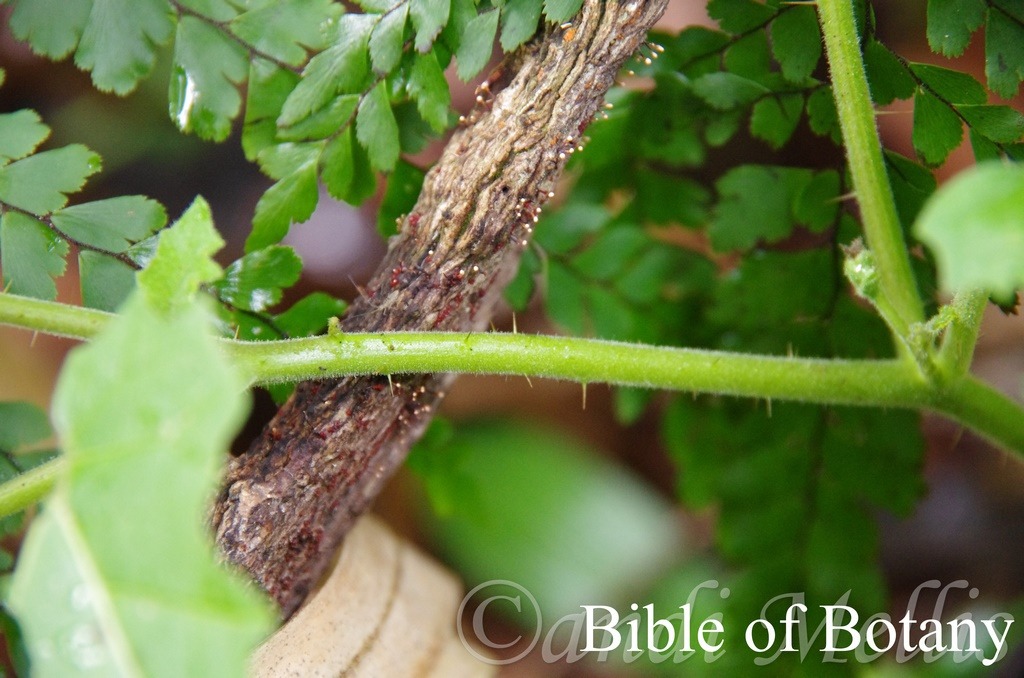
Wombat Conservation Park NSW
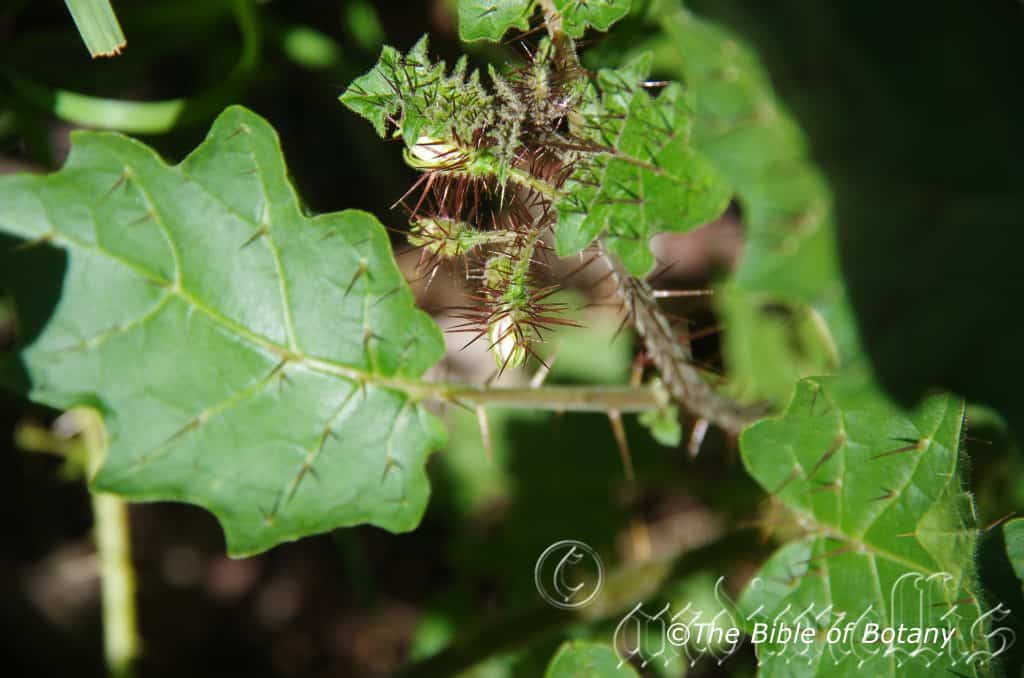
Author’s Garden The Pinnacles NSW
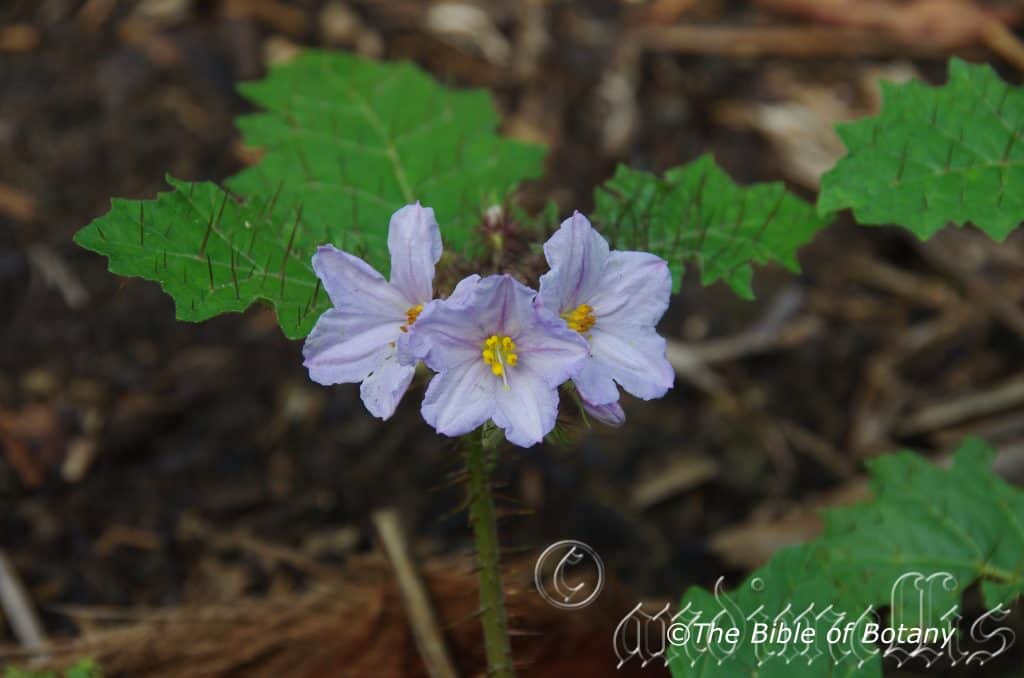
Author’s Garden The Pinnacles NSW

Wombat Conservation Park NSW
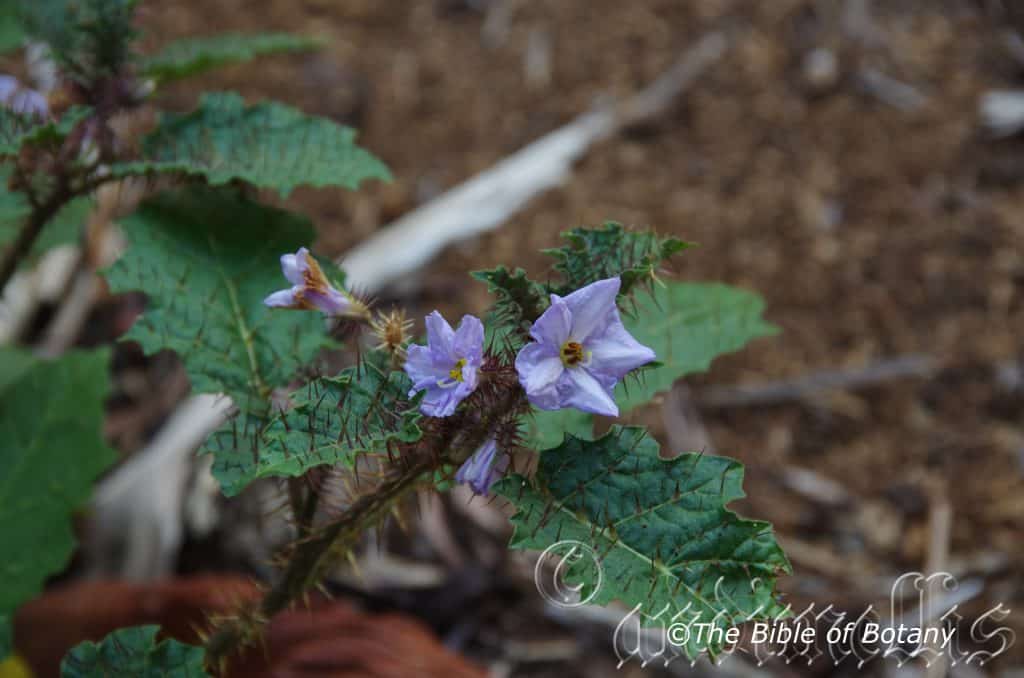
Author’s Garden The Pinnacles NSW
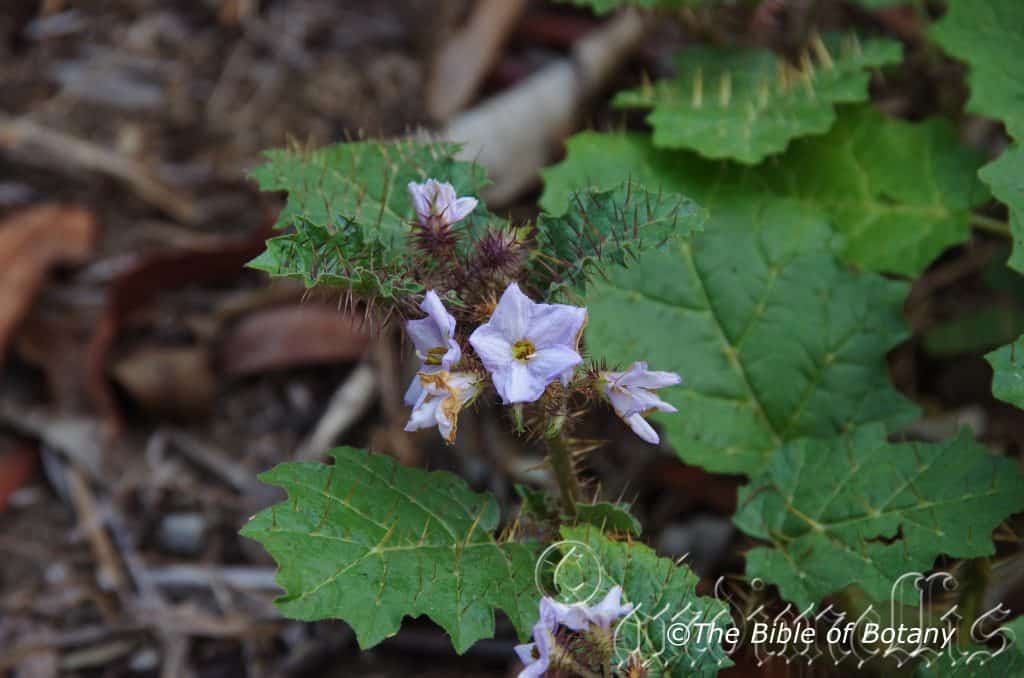
Author’s Garden The Pinnacles NSW
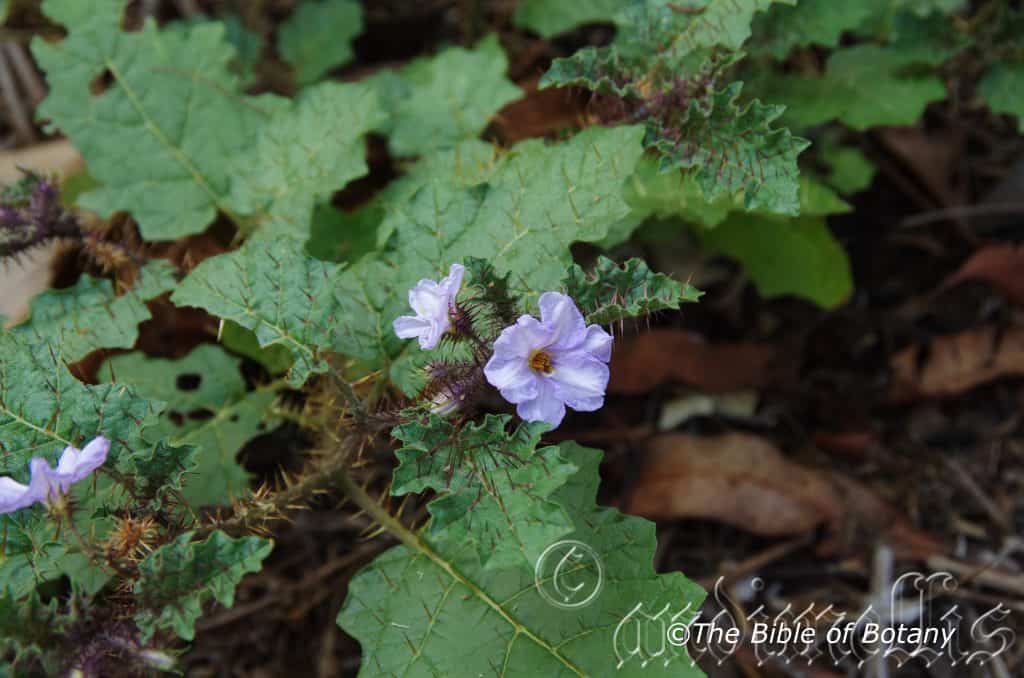
Author’s Garden The Pinnacles NSW
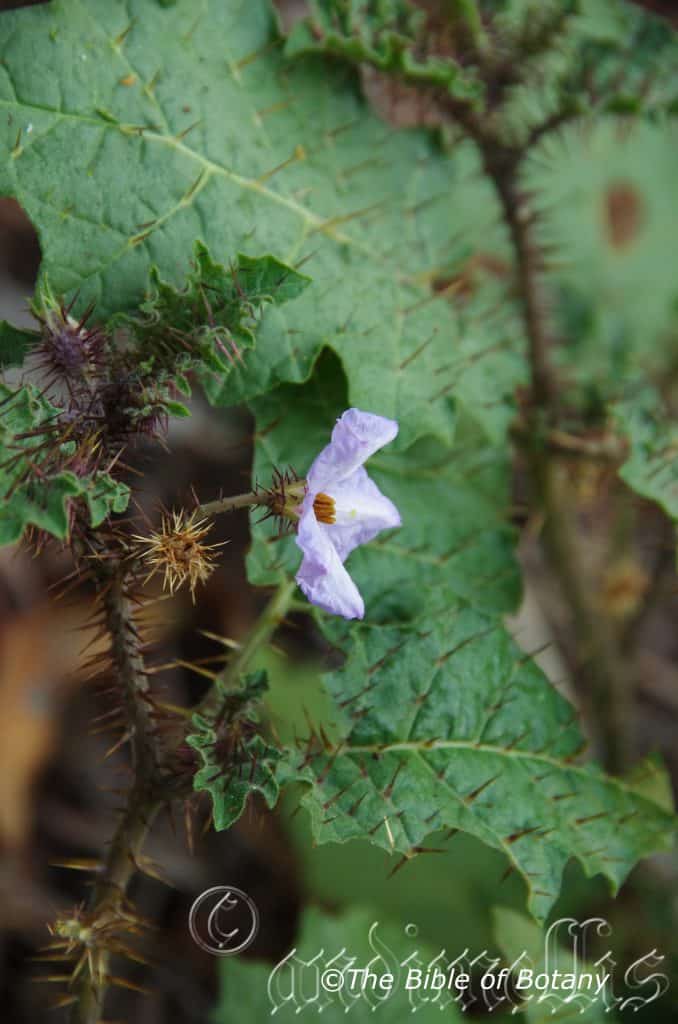
Author’s Garden The Pinnacles NSW

Author’s Garden The Pinnacles NSW

Wombat Conservation Park NSW
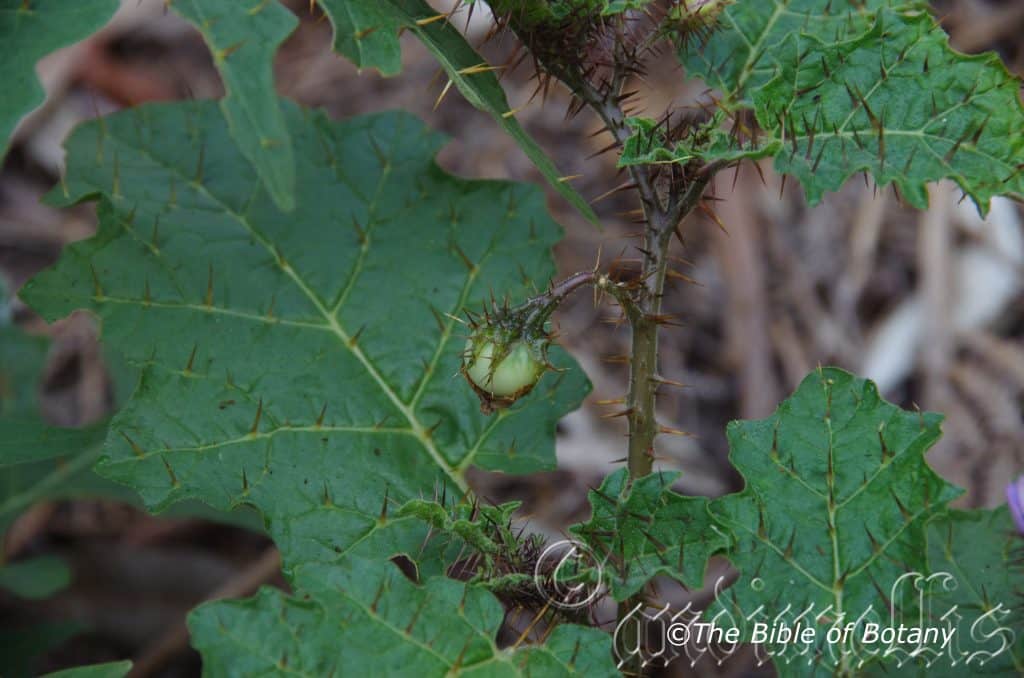
Author’s Garden The Pinnacles NSW
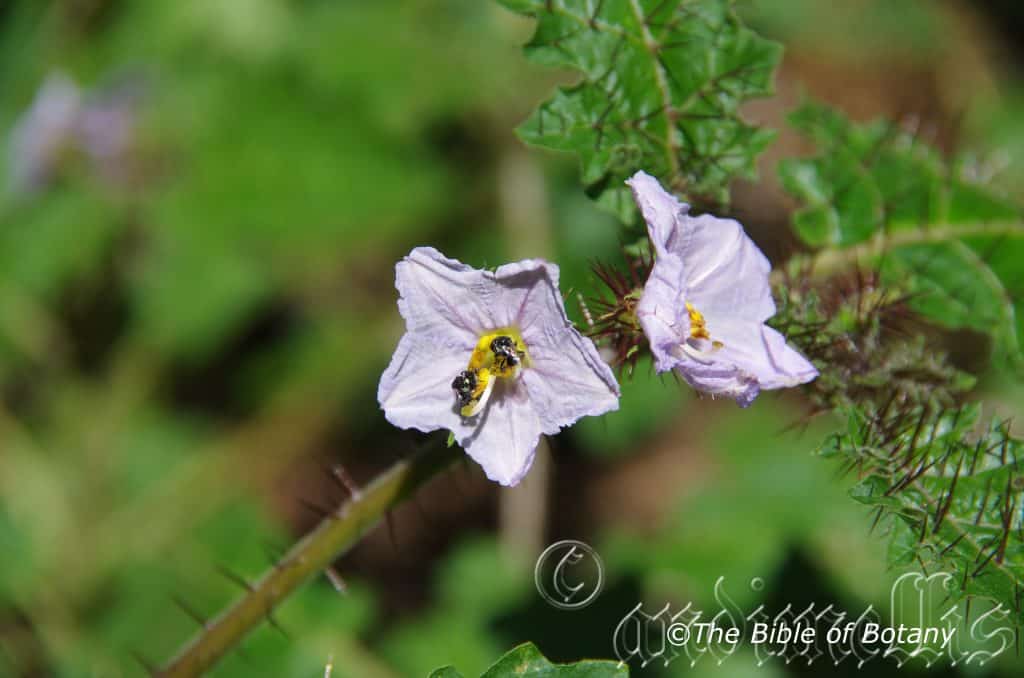
Flower with the native bee Tetragonula carbonaria Author’s Garden The Pinnacles NSW
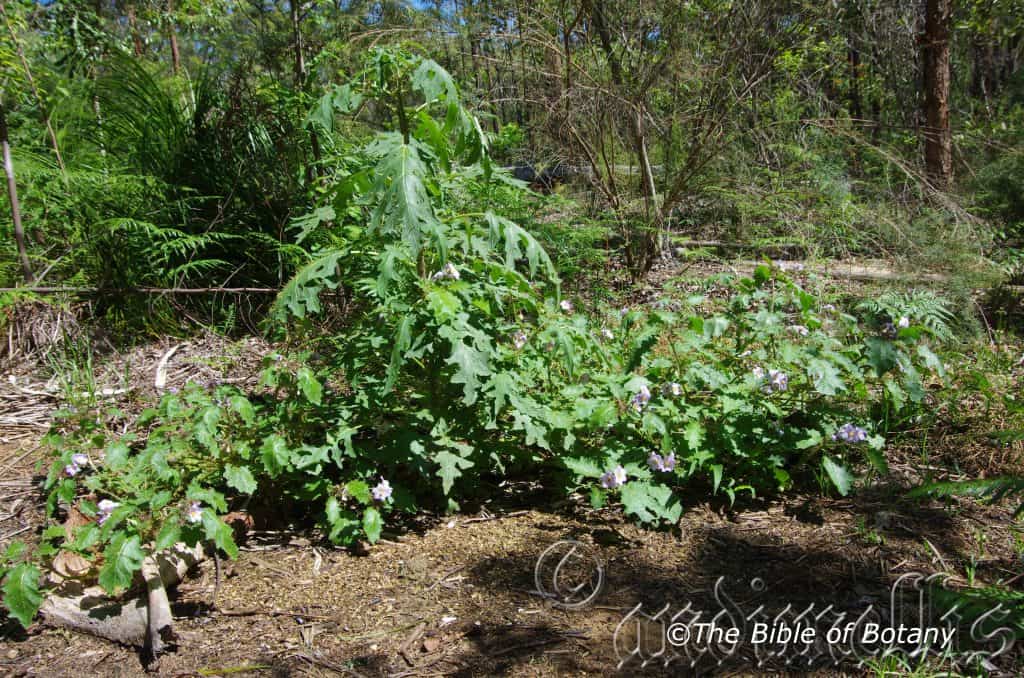
Author’s Garden The Pinnacles NSW
Solanum prinophyllum
Classification:
Unranked: Eudicots
Unranked: Asterids
Order: Solanales
Family: Solanaceae
Subfamily: Solanoideae
Tribe: Solaneae
Genus: From Sol, which is Latin is Latin for the sun and Anus, which is Latin for a stem. It refers to the family of plants known as nightshades, which includes the potato, tomato, capsicum and chillies, where the flowers look like little suns on the end of stems. It also has the possible meaning from Hiláskomai, which is Ancient Greek or later Sōlārī, which is Latin for to appease, to make comfortable, to console or to solace. It refers to organs or structures usually the flowers, which are very pleasing to the eye.
Specie: From Princeps, which is Latin literally for “easily the first” and Phullon/Phýllon, which is Ancient Greek for a leaf. It refers to leaves, which are easily recognised as being the best, most noticeable or most beautiful in the genus.
Sub specie: Solanum prinophyllum subsp. prinophyllum. From Princeps, which is Latin literally for “easily the first” and Phullon/Phýllon, which is Ancient Greek for a leaf. It refers to leaves, which are easily recognised as being the best, most noticeable or most beautiful in the genus.
Sub specie: Solanum prinophyllum subsp. vicinum. From Vīcīnus, which is Latin for a street or locality as in neighbouring. It refers to plants, which prefer to grow in close vicinity or company of certain other species or are closely related to another species in the genus.
Common Name: Forest Nightshade.
Distribution:
Solanum prinophyllum subsp. prinophyllum is found south from the Williams River in central coastal New South Wales to Geelong in southern Victoria. It mainly occurs on the eastern side of the Great Dividing Range to the coast.
Solanum prinophyllum subsp. vicinum is found south of Jimna in south eastern Queensland to the Upper Williams River in central coastal New South Wales. It mainly occurs on the eastern side of the Great Dividing Range to the coast
https://avh.ala.org.au/occurrences/search?taxa=Solanum+prinophyllum#tab_mapView
Habitat Aspect Climate:
Solanum prinophyllum prefers light dappled shade to full sun. It grows in warm moist subtropical rainforests or moist Eucalyptus forests. The altitude ranges from 5 meters ASL to 1200 meters ASL.
The temperatures range from minus 3 degrees in August to 36 degrees in January.
The rainfalls range from lows of 550mm to 2000mm average per annum.
Soil Requirements:
Solanum prinophyllum prefers better quality sandy loams to medium clays. The soils are usually derived from decomposed sandstones, granites, brown basalt, black basalts or metamorphic rocks. The soils pH ranges from 4.5pH to 6pH. It does not tolerate water logged soils. Non saline soils to moderately saline soils are tolerated.
Height & Spread:
Wild Plants: 0.4m to 0.5m by 0.5m to 0.8m
Characteristics:
Solanum prinophyllum grows as a small ascending shrub with blue-green to deep green stems with a purple tinge or purple markings especially near the base. It is sparsely covered in white or translucent stellate hairs. The younger stems are sparsely covered in purple-green stellate hairs and glandular hairs. The stems are sparsely to densely covered in deep purple fine or rigid, acicular needle like spines that measure 6mm to 13mm in length.
The alternate, elliptical to ovate leaves of Solanum prinophyllum measure 50mm to 80mm in length by 30mm to 50mm in width. The petioles are deep sea-green are densely covered in purplish-green stellate hairs and rarely have the occasional deep purple rigid, acicular needle like spines that measure 6mm to 13mm in length. The petioles measure 5mm to 19mm in length. The bases are rounded to broadly cuneate and slightly oblique to from 2mm to 9mm while the apexes are obtuse or acute to broadly acute. The concolourous laminas are deep grass-green to deep sea-green, and very sparsely to sparsely covered in white or translucent stellate hairs. The leaf margins are shallowly to deeply irregularly lobed. The lobes are toothed or shallowly lobed and undulating or wrinkled. The laminas are flat or recurve from the mid vein to the margins. The paler to very pale green mid vein and lateral veins are strongly prominent on the lower laminas and are distinctly visible from the upper lamina.
Inflorescences of Solanum prinophyllum are extremely variable, born solitary, on a small peduncle or on a small raceme from the upper leaf axils or terminals. There are 1 to 6 individual flowers to an axil, on a peduncle or on the rachis. The peduncles, rachises and pedicels are densely covered in white or translucent stellate and glandular hairs. The peduncles measure 0mm to 10mm in length while the rachises measure 0mm to 6mm in length and the pedicels measure 12mm to 21mm in length. The calyxes are densely covered in white or translucent stellate and glandular hairs and are very sparsely to densely covered indeep purple rigid, acicular needle like spines that measure 6mm to 13mm in length. The calyx tubes measure 2mm to 2.5mm in length while the 5 deltoid lobes measure 2.5mm to 3.5mm in length. The corollas are deep violet-blue to purple or at times white. The campanulate corollas measure 10mm to 15mm in length by 12mm to 16mm in diameter. The 5 stellate-rotate lobes measure 2mm to 3mm in length. The lobes margins are entire and crinkled while the apexes are obtuse.
The 5 exserted anthers extend from the center of the corolla. The white filaments measure, while the basifixed anthers are bright yellow taper towards their apexes and dehisc poricidally. The anthers measure 2.5mm to 3.2mm in length by 1mm to 1.5mm in diameter near the base.
The white style and yellow stigma are glabrous while style is covered in white hirsute hairs near the base. The green, ovoidal ovary measures 1mm in length. The slender pistil measures 6mm to 7mm in length and bends strongly outwards below the anthers and hooks back towards the anthers near the apex. Solanum prinophyllum’s flowers appear throughout the year.
The fruits of Solanum prinophyllum are flattened globose berries. The berries are glabrous and measure 13mm to 19mm in length by 15mm to 20mm in diameter. The pale green berries turn yellow-green, purple or are yellow often purple near the calyx lobes forming striations or fine blotches as they blend into the yellow when ripe. The calyx lobes are persistent on the ripe fruit and lengthen to 7mm to 10mm in length. The pale yellow-brown to pale creamy ochre seeds measure 2.4mm to 2.7mm in length. The pedicels lengthen to 20mm to 27mm in length.
Sub Species differences:
Solanum prinophyllum’s are glabrous to sparsely covered in white pulverulent hairs. The branchlets with 30 to 65 spines per 100mm while the stellae measure 0.25mm to 0.3mm in diameter.
Solanum pungetium’s leaves are always moderately to densely covered in white puberulent hairs.
Confusing Species:
Solanum prinophyllum’s are glabrous to sparsely covered in white pulverulent hairs. The branchlets with 30 to 65 spines per 100mm while the stellae measure 0.25mm to 0.3mm in diameter.
Solanum pungetium’s leaves are always moderately to densely covered in white puberulent hairs.
Wildlife:
Solanum prinophyllum support native bees, wasps, butterflies and native flies throughout their range.
WARNING: Many Solanum species are poisonous and many species; perhaps all, have some parts that are poisonous, or the edible parts are only edible at certain times of the year while being poisonous at other times.
Some native species of Solanum were known as traditional Aboriginal bush tucker plants. Others are introduced edible weeds.
Several native species are listed in Wild Food Plants of Australia by Cribb Not all of these are edible however some had specific uses or had to be treated first before eating: Solanum aviculare (Rainforest Kangaroo Apple), Solanum centrale (Desert Raisin), Solanum chippendalei (Bush Tomato), Solanum diversiflorum (Kakarrta), Solanum ellipticum, Solanum esuriale, Solanum laciniatum (Southern Kangaroo Apple), Solanum linearifolium (Mountain Kangaroo Apple), Solanum mauritianum (Wild Tobacco, Tobacco Bush), and Solanum vescum (Gunyang). Of these, Solanum aviculare, Solanum laciniatum, and Solanum mauritanum are the most common species that people come into contact with.
The Rainforest Kangaroo Apple is apparently only barely edible, so should be eaten sparingly.
Of the Solanum species which occur in Australia, Solanum americanum, Solanum scabrum and Solanum villosum and Solanum opacum are also considered to be edible.
People with allergies to tomatoes, peanuts or potatoes should be wary of eating any fruit of the solanaceae family as they all contain small amounts of the alkaloid sola.
Solanum aviculare Kangaroo Apple
Solanum centrale is also known as Desert Raisin, Bush Raisin or Bush Sultana, or by the native name kutjera.
Solanum chipendalei is known as Bush Tomato.
Solanum coactiliferum Aborigines roasted the fruit before eating.
Solanum diversifolium is known as Bush Tomato, Karlumbu, Pilirta, Wamurla districts.
Solanum ellipticum Potato Bush is very similar to Solanum quadriliculatum which is poisonous.
Solanum lacinatum is known as Kangaroo Apple.
Solanum orbicaltum is known as Round-leaved Solanum.
Solanum pholomoides is also known as Wild Tomato.
Solanum vescum.
Solanum cinerium is poisonous
Aborigines burned off the outer skin of Solanum aviculare as eating them raw caused the mouth to blister. Aborigines ate the fruit of Solanum centrale raw or put it on the hot earth by the fire, sprinkle some water on the fruits and cover them up to cook them. Solanum chippendalei is consumed by first splitting the fruit, scraping the center out and eating the outer flesh as the seeds and surrounding placenta are bitter. Solanum diversiflorum is roasted before being eaten or dried. Fruit of Solanum orbiculatum is edible, but the fruit of the large leafed form may be bitter. Fruit of Solanum phlomoidesappears to be edible after the removal of seeds and roasting or sun drying. Mardu people would dry the fruits to consume them at a later date.
Solanum aviculare contains solasodine, a steroid used in the manufacture of oral contraceptives. I have not tried the fruits so cannot vouch for any of what is said first hand.
Cultivation:
Solanum prinophyllum is an unusual small shrub that responds well to cultivation and is best treated as an annual for colour. It can be grown in the open in full sun on sandy loams to heavy clays with rock or pebbles. It is particularly beautiful when in flower. In cultivation they will grow from 0.4 meters to 0.5 meter in height by 0.4 meters to 0.6 meters in diameter when grown in the open.
It grows exceptionally well where a layer of mulch prevails that will keep the soil cool and moisture at an even level. Add to the above, if it is given a little extra water with a little native fertilizer on a regular basis the plants will respond with superb flowering over a longer period and maintain deep sea-green leaves. Tip pruning and removing the spent flowers will help promote flowering.
Place them near large, old stumps and roots to make the stumps or roots look even more gnarled and older than they really are. Select an area of ground and let your hair down. Be imaginative and this is the plant that can give inspiration because it is so different and consistent in shape. Solanum prinophyllum is suited to small and medium size moist heath gardens.
Solanum prinophyllum would make outstanding contribution to a moist heath garden. Here they can be used with grey or glaucous foliages to strong advantage of both plants. Scatter plant them throughout the heath scene but give them room to fully develop otherwise they will become leggy and lose the strong form that is so much desired. When you design a flat heath garden which Solanum prinophyllum is well suited don’t use contours to display the plants as heath lands are almost always flat or have a slight rise. Plants must be planted close together and be short so you can see over the tallest ones with the exception of one or two plants at the most. These would normally be the feature plants but not here. The idea is to achieve a feeling of expansive flatness with pockets of vivid lushness, strong form and strong contrast. This can be achieved with using the Solanum prinophyllum’s deep sea-green ovate leaves and having them contrasting with finer pale green foliages of plants like Hibbertia or soft grey to glaucous coloured foliages like those of Actinotis helianthi. Mix them with other smaller shrubs so none of them dominate the scene but blend in to give a mosaic of foliage colours that you oversee.
A moist garden bed on a slope can have strong curves in a formal look where this Solanum winds its way from one side or corner to the other with annuals in the foreground and strong foliage contrast plants in the back ground like Actinotis helianthi. Here you could even step up to other broad leaf shrubs leading into a rainforest scene on the southern side as the plants mentioned in the foreground would require full sun.
They can be placed behind a small pool at the bottom of the garden with a billabong for great affect or even or in the foreground with a small waterfall or cascades in the background. Either way it is an interesting subject to work with.
It is ideal placed around a pool, sunny courtyards or other confined spaces with plenty of sun light. Plant them in small groups or better still scatter plant them for a more informal natural look against walls to help soften them. Using rocks and small boulders can make the pool or any water feature appear like an oasis. The leave, flowers and fast growth make this plant a great starter plant in any garden.
Propagation:
Seeds: The seeds of Solanum prinophyllum can be removed easily from the fruits.
Sow fresh seeds directly into a seed raising mix, keeping them moist not wet. Do not over water as the seeds will rot off before germination or just after germination takes place. Place the trays in a cool shaded area with 50mm shade cloth in the bush house. When the seedlings are 20 to 25 mm tall, prick them out and plant them into 50mm native tubes using a good organic mix.
As the seedlings roots reach the bottom of the tubes plant them out into their permanent position. Do not delay.
Fertilize using Seaweed, fish emulsion or organic chicken pellets soaked in water and apply the liquid on an alternate basis. Fertilize every 2 months until the plants are well established then on an annual basis in September or March to maintain health, vigour and better flowering.
Further Comments from Readers:
“Hi reader, it seems you use The Bible of Botany a lot. That’s great as we have great pleasure in bringing it to you! It’s a little awkward for us to ask, but our first aim is to purchase land approximately 1,600 hectares to link several parcels of N.P. into one at The Pinnacles NSW Australia, but we need your help. We’re not salespeople. We’re amateur botanists who have dedicated over 30 years to saving the environment in a practical way. We depend on donations to reach our goal. If you donate just $5, the price of your coffee this Sunday, We can help to keep the planet alive in a real way and continue to bring you regular updates and features on Australian plants all in one Botanical Bible. Any support is greatly appreciated. Thank you.”
In the spirit of reconciliation we acknowledge the Bundjalung, Gumbaynggirr and Yaegl and all aboriginal nations throughout Australia and their connections to land, sea and community. We pay our respect to their Elders past, present and future for the pleasures we have gained.
Solanum semiarmatum
Classification:
Unranked: Eudicots
Unranked: Asterids
Order: Solanales
Family: Solanaceae
Subfamily: Solanoideae
Tribe: Solaneae
Genus: From Sol, which is Latin is Latin for the sun and Anus, which is Latin for a stem. It refers to the family of plants known as nightshades, which includes the potato, tomato, capsicum and chillies, where the flowers look like little suns on the end of stems. It also has the possible meaning from Hiláskomai, which is Ancient Greek or later Sōlārī, which is Latin for to appease, to make comfortable, to console or to solace. It refers to organs or structures usually the flowers, which are very pleasing to the eye.
Specie: From Semi, which is Latin for a half and Armātum, which is Latin for well-armed, fortified or armoured. It refers to structures, which are well armed in spines or prickles.
Sub specie:
Common Name: Spiny Solanum.
Distribution:
Solanum semiarmatum is found in two distinct disjunct populations. The first is bounded by the Fitzroy River Catchment area west of Rockhampton, Carnarvon Gorge and the Callide River catchment.
The second population is south from the Brisbane Valley in Southern Queensland to the Clarence River in Northern New South Wales
There is an isolated population between Texas near the border in southern Queensland and Warialda west of Inverell in northern New South Wales. There is some discussion at the moment that those plants found in the Fitzroy basin may be a separate specie or sub specie.
https://avh.ala.org.au/occurrences/search?taxa=Solanum+semiarmatum#tab_mapView
Habitat Aspect Climate:
Solanum semiarmatum prefers light dappled shade to full sun. It grows in openings adjacent to warm subtropical notophyll rainforests, moist Eucalyptus forests or gallery forests. The altitude ranges from 350 meters ASL to 1250 meters ASL.
The temperatures range from 2 degrees in August to 36 degrees in January.
The rainfalls range from lows of 600mm to 2000mm average per annum.
Soil Requirements:
Solanum semiarmatum prefers better quality light fatty clays to medium clays. The soils are derived from decomposed sandstones, granites, brown basalt, black basalts or metamorphic rocks. The soils pH ranges from 4.5pH to 6pH. It does not tolerate water logged soils. Non saline soils to moderately saline soils are tolerated.
Height & Spread:
Wild Plants: 1m to 2.5m by 1m to 2.5m
Characteristics:
Solanum semiarmatum grows as a small ascending shrub with grey-green, yellow-green to brown-green. It is densely covered in golden yellow stellate and glandular hairs as well as golden brown acicular needle like spines that measure 3mm to 13mm in length. The younger stems are similar to the older stems though the glandular hairs are less numerous.
The alternate, ovate to broadly ovate pinnatisect leaves of Solanum semiarmatum measure 100mm to 200mm in length by 60mm to 150mm in width. There are 3 to 4 irregularly spaced moderate to deep lobes on each side of the main vein. The base is rounded to shallowly cordate and oblique with 1.5mm to 8mm separations of the 2 laminas. The apexes are acute.
The discolourous upper laminas are grey-green, yellow-green to brown-green and sparsely covered in golden-brown stellate and glandular hairs. The lower laminas are paler and moderately to densely covered in sparsely covered in golden-brown stellate and glandular hairs, as well as rigid, acicular needle like spines that measure 6mm to 13mm in length.
The laminas and lobes decurve from the mid vein to the margins. The paler mid vein and lateral veins are strongly prominent on the lower laminas and are distinctly visible from the upper lamina. The mid vein and lateral veins are sparsely to moderately covered in a row of golden brown acicular needle like spines that measure 1mm to 10mm in length.
The petioles are grey-green, yellow-green to brown-green and sparsely covered in golden-brown stellate and glandular hairs, as well as rigid, acicular needle like spines that measure 6mm to 13mm in length. The petioles measure 17mm to 45mm in length.
Inflorescences of Solanum semiarmatum are born solitary, on small rachises from the upper leaf axils or terminals. There are 1 to 30 individual flowers on the rachises. The peduncles, rachises and pedicels are grey-green, yellow-green to brown-green and sparsely covered in golden-brown stellate and glandular hairs, as well as rigid, acicular needle like spines that measure 6mm to 13mm in length. The peduncles measure 7mm to 30mm in length while the rachises measure 10mm to 30mm in length and the pedicels measure 3mm to 10mm in length.
The calyxes are sparsely to densely covered in translucent stellate hairs. The golden-brown rigid, acicular needle like spines that measure 6mm to 13mm in length are absent or sparsely scattered externally while the internal surface is glabrous. The calyx tubes measure 1mm to 2.5mm in length while the 5 deltoid lobes measure 1mm to 3mm in length. The corollas are deep lilac to violet-blue. The corollas are deeply lobed. The corollas measure 16mm to 20mm in diameter while the 5 elliptical lobes measure 10mm to 12mm in length. The lobes margins are entire and revolute near the margins while the apexes are acute.
The 5 exserted anthers extend from the center of the corolla. The filaments are yellow while the basifixed anthers are bright yellow. The filaments measure 1mm to 1.5mm in length. The anthers measure 3.5mm to 5.5mm in length by 1mm to 1.5mm in width and strongly converge near the apex.
The white style and yellow stigma are glabrous while style is covered in white hirsute hairs near the base. The green, ovoidal ovary is sparsely covered in translucent glandular hairs and measure 1mm in length. The slender pistil measures 7mm to 9mm in length. Solanum semiarmatum flowers appear from March through to November, though odd flowers may appear throughout the year.
The 4 to 9 fruits of Solanum semiarmatum are flattened globose berries. The berries are glabrous and measure 10mm to 12mm in length by 15mm to 20mm in diameter. The pale green berries turn glossy deep burgundy-black when ripe. The calyx lobes are persistent on the ripe fruit and lengthen to 7mm to 10mm in length. The pale yellow-brown to pale creamy yellow-ochre seeds measure 2mm to 2.8mm in length. The pedicels lengthen to 8mm to 14mm in length. The fruits are very succulent.
Wildlife:
Solanum semiarmatum support native bees, wasps, butterflies and native flies throughout their range. It is not confirmed if the fruits are edible or not and I have not had the opportunity to test and consume the fruits so they must be treated as poisonous at this stage.
WARNING: Many Solanum species are poisonous and many species; perhaps all, have some parts that are poisonous, or the edible parts are only edible at certain times of the year while being poisonous at other times.
Some native species of Solanum were known as traditional Aboriginal bush tucker plants. Others are introduced edible weeds.
Several native species are listed in Wild Food Plants of Australia by Cribb Not all of these are edible however some had specific uses or had to be treated first before eating: Solanum aviculare (Rainforest Kangaroo Apple), Solanum centrale (Desert Raisin), Solanum chippendalei (Bush Tomato), Solanum diversiflorum (Kakarrta), Solanum ellipticum, Solanum esuriale, Solanum laciniatum (Southern Kangaroo Apple), Solanum linearifolium (Mountain Kangaroo Apple), Solanum mauritianum (Wild Tobacco, Tobacco Bush), and Solanum vescum (Gunyang). Of these, Solanum aviculare, Solanum laciniatum, and Solanum mauritanum are the most common species that people come into contact with.
The Rainforest Kangaroo Apple is apparently only barely edible, so should be eaten sparingly.
Of the Solanum species which occur in Australia, Solanum americanum, Solanum scabrum and Solanum villosum and Solanum opacum are also considered to be edible.
People with allergies to tomatoes, peanuts or potatoes should be wary of eating any fruit of the solanaceae family as they all contain small amounts of the alkaloid sola.
Solanum aviculare Kangaroo Apple
Solanum centrale is also known as Desert Raisin, Bush Raisin or Bush Sultana, or by the native name kutjera.
Solanum chipendalei is known as Bush Tomato.
Solanum coactiliferum Aborigines roasted the fruit before eating.
Solanum diversifolium is known as Bush Tomato, Karlumbu, Pilirta, Wamurla districts.
Solanum ellipticum Potato Bush is very similar to Solanum quadriliculatum which is poisonous.
Solanum lacinatum is known as Kangaroo Apple.
Solanum orbicaltum is known as Round-leaved Solanum.
Solanum pholomoides is also known as Wild Tomato.
Solanum vescum.
Solanum cinerium is poisonous
Aborigines burned off the outer skin of Solanum aviculare as eating them raw caused the mouth to blister. Aborigines ate the fruit of Solanum centrale raw or put it on the hot earth by the fire, sprinkle some water on the fruits and cover them up to cook them. Solanum chippendalei is consumed by first splitting the fruit, scraping the center out and eating the outer flesh as the seeds and surrounding placenta are bitter. Solanum diversiflorum is roasted before being eaten or dried. Fruit of Solanum orbiculatum is edible, but the fruit of the large leafed form may be bitter. Fruit of Solanum phlomoidesappears to be edible after the removal of seeds and roasting or sun drying. Mardu people would dry the fruits to consume them at a later date.
Solanum aviculare contains solasodine, a steroid used in the manufacture of oral contraceptives. I have not tried the fruits so cannot vouch for any of what is said first hand.
Cultivation:
Solanum semiarmatum is a medium shrub that responds well to cultivation and is best grown in the open, in full sun or part shade on light clays to heavy clays. It is particularly beautiful when in flower or fruit. In cultivation they will grow from 1.5 meters to 2 meters in height by 1.5 meters to 2 meters in diameter when grown in the open.
They grow exceptionally well where a layer of mulch prevails that will keep the soil cool and moisture at an even level. Add to the above, if it is given a little extra water with a little native fertilizer on a regular basis the plants will respond with superb flowering over a longer period and maintain better colour in the leaves. Light pruning is a must to maintain a smaller bushier shrub. Pruning should be done immediately after flowering and again in late February. Removing the spent flowers will also help promote flowering.
Two, three or four planted back from a bend in the garden will become a very strong focal point if it is maintained in a smaller bushier plant. When it is in flower they will gain attention because of their unusual spiny leaves and branches, whether you are coming.
They can be placed in the midground with large leaf, or fine leaf ground covers and very small shrubs or annuals in front. To the rear, use large leaf taller plants with deep sea green foliage help high light them and contrast the other plants. Plants with pink, orange, red or yellow flowers can be used in both the foreground and background. Plants with finer foliages in pale green or blue greys will also compliment the scene during periods when there are few flowers in the garden. This will lead the viewer’s eyes directly to the purple flowers and deep burgundy-black fruits buds for a longer period.
A moist garden bed on a slope can have strong curves in a formal look where this Solanum winds its way from one side or corner to the other with annuals in the foreground and strong foliage contrast plants in the back ground like Actinotis helianthi. Here you could even step up to other broad leaf shrubs leading into a rainforest scene on the southern side as the plants mentioned in the foreground would require full sun.
They can be placed behind a small pool at the bottom of the garden with a billabong for great affect or even or in the foreground with a small waterfall or cascades in the background. Either way it is an interesting subject to work with.
It is ideal placed around a pool, sunny courtyards or other confined spaces with plenty of sun light. Plant them in small groups or better still scatter plant them for a more informal natural look against walls to help soften them. Using rocks and small boulders can make the pool or any water feature appear like an oasis. The leave, flowers and fast growth make this plant a great starter plant in any garden.
Propagation:
Seeds: The seeds ofSolanum semiarmatum can be removed easily from the fruits.
Sow freshly treated seeds directly into a seed raising mix, keeping them moist not wet. Do not over water as the seeds will rot off before germination takes place. Place the trays in a cool shaded area with 50mm shade cloth in the bush house. When the seedlings are 20 to 25 mm tall, prick them out and plant them into 50mm native tubes using a good organic mix.
As the seedlings roots reach the bottom of the tubes plant them out into their permanent position. Do not delay.
Fertilize using Seaweed, fish emulsion or organic chicken pellets soaked in water and apply the liquid on an alternate basis. Fertilize every 2 months until the plants are well established then on an annual basis in September or March to maintain health, vigour and better flowering.
Further Comments from Readers:
“Hi reader, it seems you use The Bible of Botany a lot. That’s great as we have great pleasure in bringing it to you! It’s a little awkward for us to ask, but our first aim is to purchase land approximately 1,600 hectares to link several parcels of N.P. into one at The Pinnacles NSW Australia, but we need your help. We’re not salespeople. We’re amateur botanists who have dedicated over 30 years to saving the environment in a practical way. We depend on donations to reach our goal. If you donate just $5, the price of your coffee this Sunday, We can help to keep the planet alive in a real way and continue to bring you regular updates and features on Australian plants all in one Botanical Bible. Any support is greatly appreciated. Thank you.”
In the spirit of reconciliation we acknowledge the Bundjalung, Gumbaynggirr and Yaegl and all aboriginal nations throughout Australia and their connections to land, sea and community. We pay our respect to their Elders past, present and future for the pleasures we have gained.
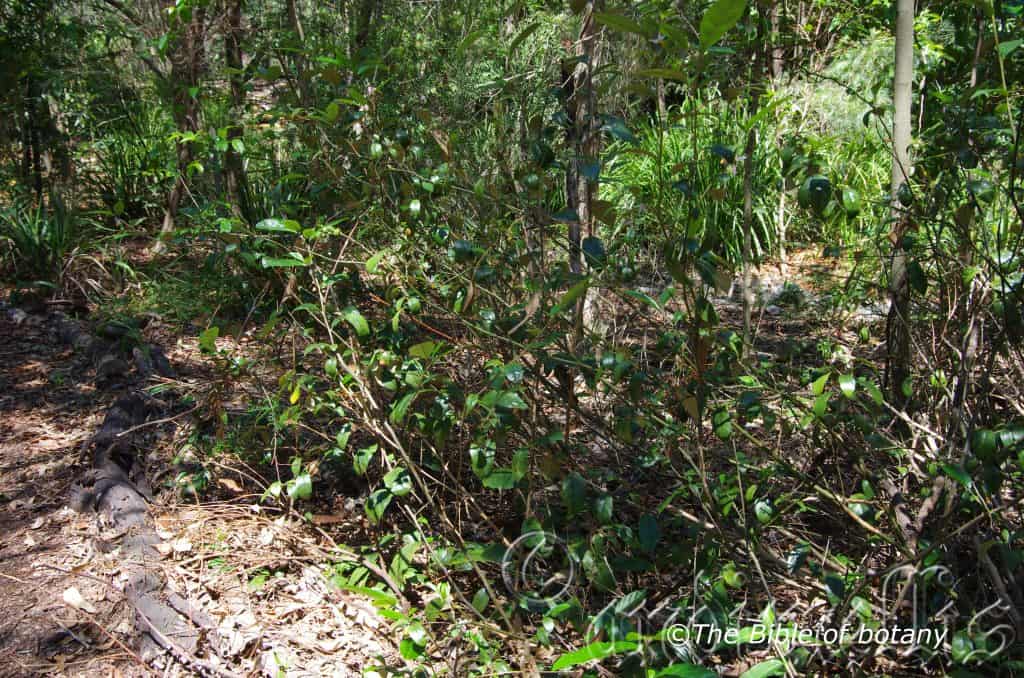
Greening Australia Norman Park Qld.
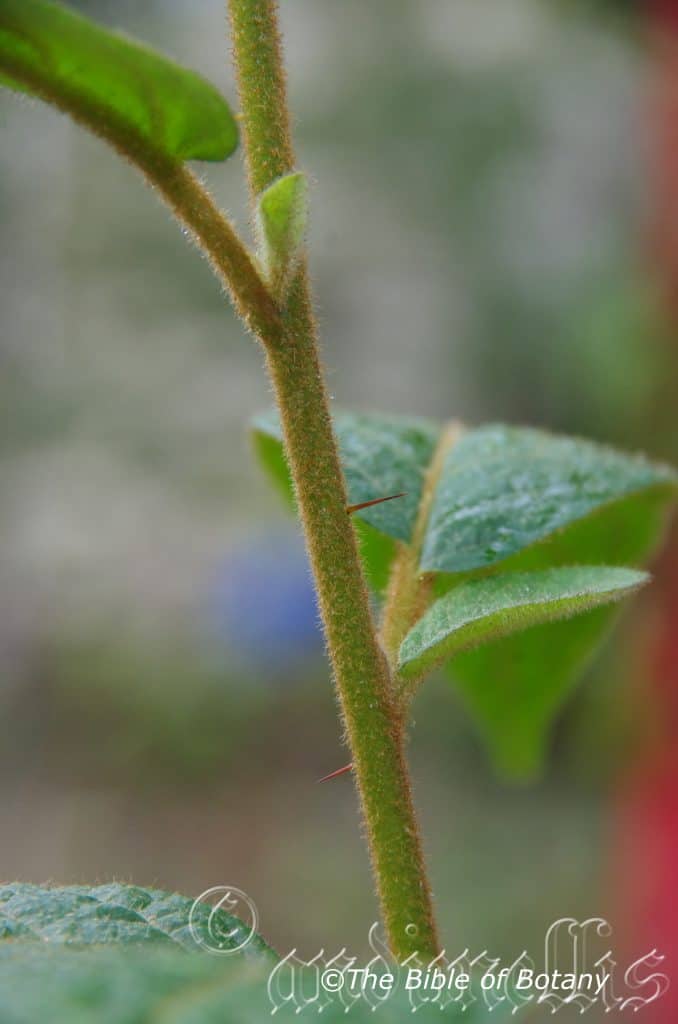
Author’s Garden The Pinnacles NSW

Author’s Garden The Pinnacles NSW

Greening Australia Norman Park Qld.
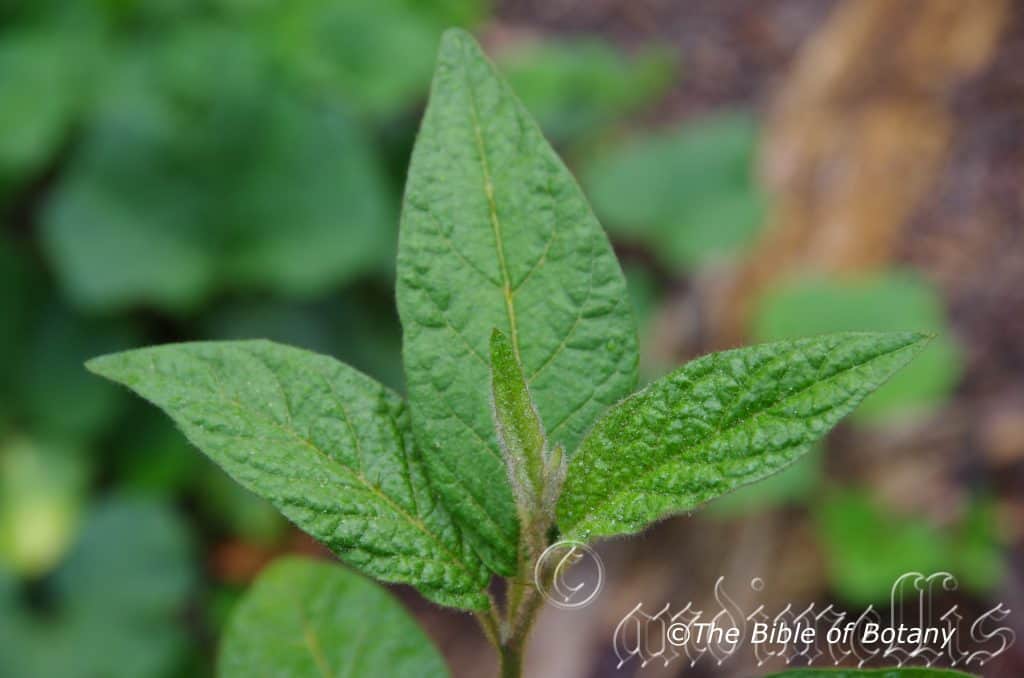
Author’s Garden The Pinnacles NSW

Author’s Garden The Pinnacles NSW
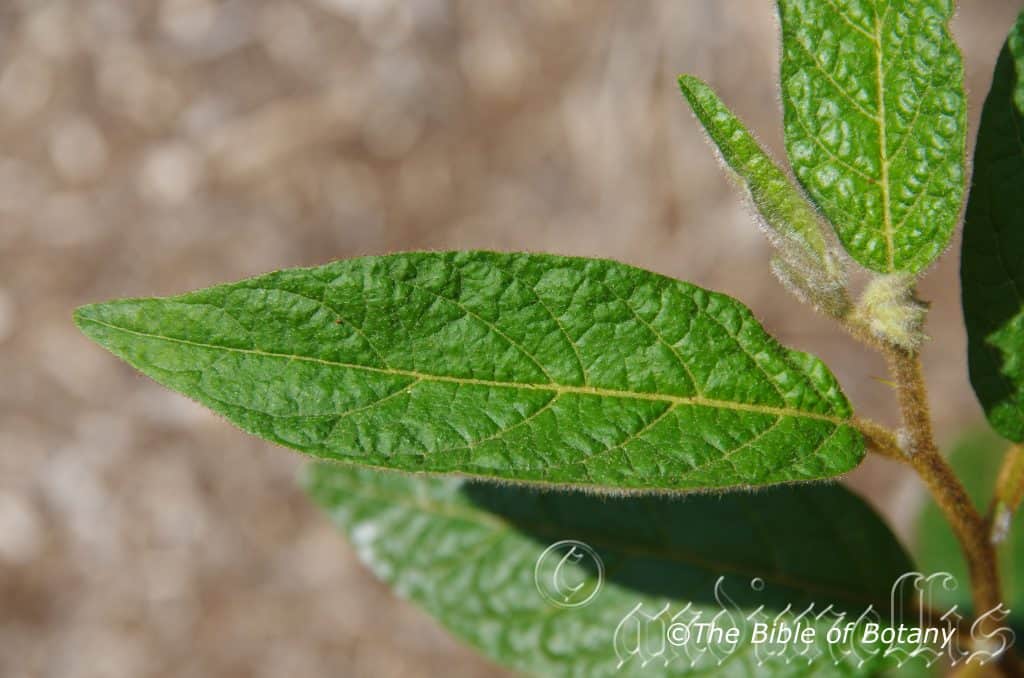
Author’s Garden The Pinnacles NSW

Greening Australia Norman Park Qld.
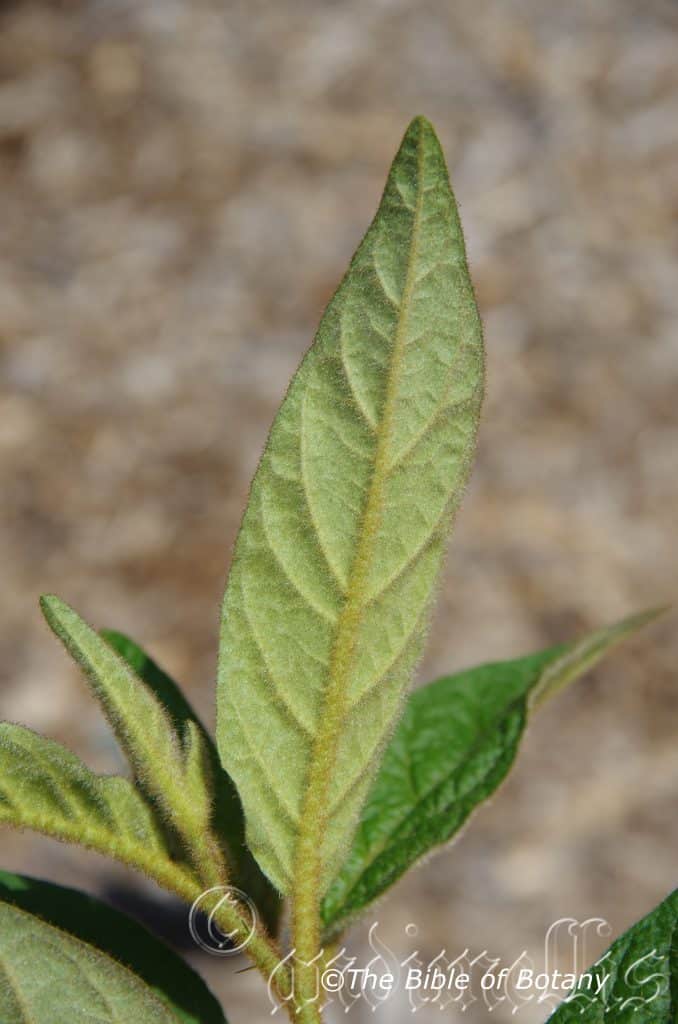
Author’s Garden The Pinnacles NSW
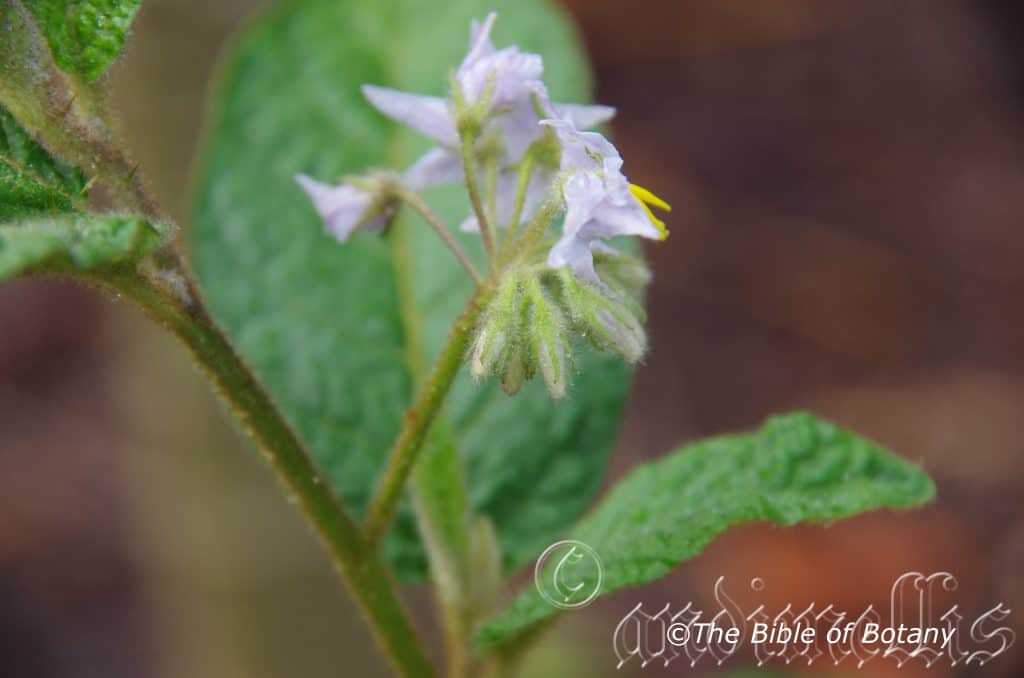
Author’s Garden The Pinnacles NSW

Author’s Garden The Pinnacles NSW
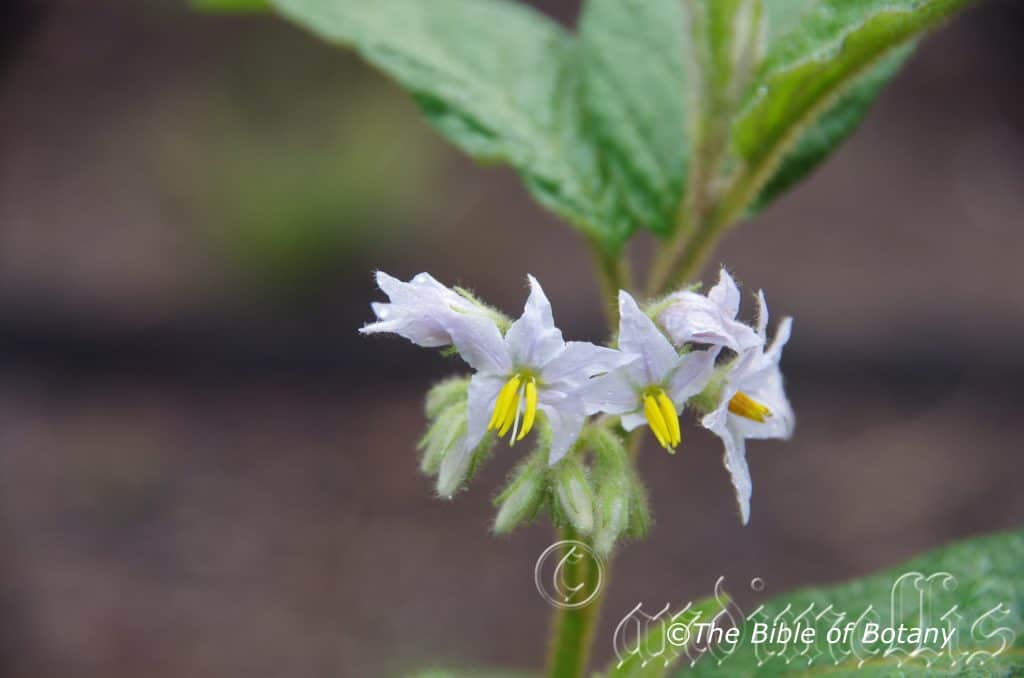
Author’s Garden The Pinnacles NSW
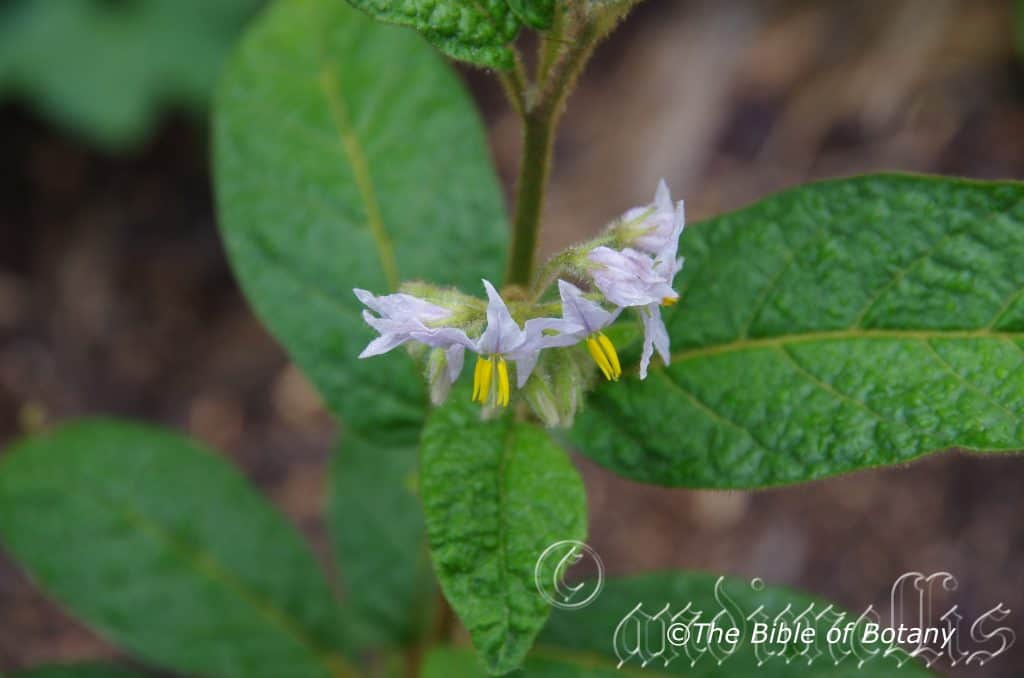
Author’s Garden The Pinnacles NSW

Author’s Garden The Pinnacles NSW
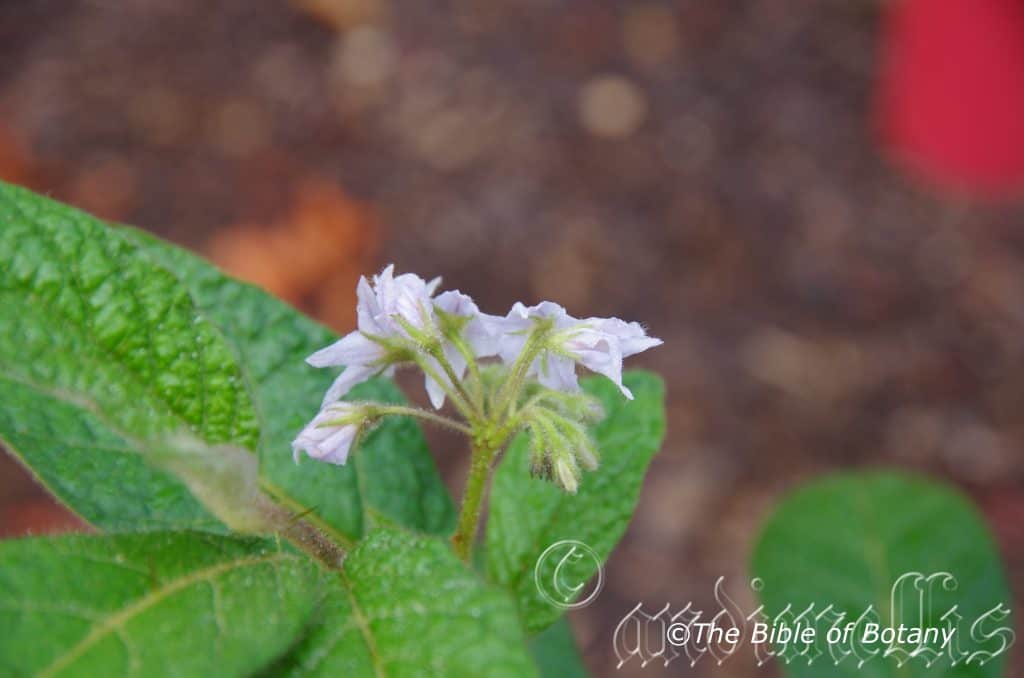
Author’s Garden The Pinnacles NSW

Greening Australia Norman Park Qld.

Greening Australia Norman Park Qld.
Solanum stelligerum
Classification:
Unranked: Eudicots
Unranked: Asterids
Order: Solanales
Family: Solanaceae
Subfamily: Solanoideae
Tribe: Solaneae
Genus: From Sol, which is Latin is Latin for the sun and Anus, which is Latin for a stem. It refers to the family of plants known as nightshades, which includes the potato, tomato, capsicum and chillies, where the flowers look like little suns on the end of stems. It also has the possible meaning from Hiláskomai, which is Ancient Greek or later Sōlārī, which is Latin for to appease, to make comfortable, to console or to solace. It refers to organs or structures usually the flowers, which are very pleasing to the eye.
Specie: From Astḗr, which is Ancient Greek or Stellāris/Stellātus, which RE Latin for a star or star shape and Gera, which is Latin for to bear. It refers to structures or organs, which are star shaped.
Sub specie:
Common Name:
Distribution:
Solanum stelligerum is found in several disjunct populations south from the tip of Cape York Peninsular to Narooma in far south eastern coastal New South Wales. It is mainly found on the Western Slopes, on and east of the Great Dividing Range to the coast except for an area extending from Maryborough to the Carnarvon Gorge and the Blackdown Tablelands.
https://avh.ala.org.au/occurrences/search?taxa=Solanum+stelligerum#tab_mapView
Habitat Aspect Climate:
Solanum stelligerum prefers dappled shade to full sun. It grows in and adjacent to warm moist or dry subtropical, tropical rainforests littoral rainforests, gallery forests or moist sclerophyll forests. The altitude ranges from 10 meters ASL to 770 meters ASL.
The temperatures range from minus 3 degrees in August to 36 degrees in January.
The rainfalls range from lows of 800mm to 3200mm average per annum.
Soil Requirements:
Solanum stelligerum prefers to grow on better quality sandy loams to medium clays. The soils are derived from decomposed sandstones, granites, brown basalt, black basalts or metamorphic rocks. The soils pH ranges from 4.5pH to 6pH. It does not tolerate water logged soils. Non saline soils to moderately saline soils are tolerated.
Height & Spread:
Wild Plants: 1m to 2.5m by 1m to 2.5m.
Characteristics:
Solanum stelligerum grows as a small ascending shrub with green, yellow-green to brownish-green stems. It is densely covered in white, pale golden-yellow stellate and tomentose hairs as well as golden, red-brown tipped, acicular needle like spines that measure 6mm to 10mm in length. The younger stems are similar to the older stems though the hirsute hairs are more prominent.
The alternate, lanceolate to ovate leaves of Solanum stelligerum measure 25mm to 100mm in length by 10mm to 40mm in width. The petioles are pale grey-green, yellow-green to brown-green and densely covered in white, golden or rusty-brown tomentose hairs. Spines absent on the petioles which measure 5mm to 18mm in length. The bases are rounded to cuneate, symmetrical and oblique with 1mm to 5mm separations of the 2 laminas. The apexes are acute to tapering obtuse.
The discolourous upper laminas are green and glabrous to moderately densely covered in white, pale yellowish or pale rusty-brown sessile stellate or short stellate hairs. The lower laminas are densely covered in long white, pale grey or pale yellow-brown tomentose hairs.
The pale green mid vein and lateral veins are strongly prominent on the lower laminas and are distinctly visible from the upper lamina. The mid vein and lateral veins are moderately to densely covered in densely covered in long white, pale grey or pale yellow-brown tomentose hairs on both the lower and upper surfaces. The glossy golden brown acicular needle like spines are absent or form a row along the mid vein on the upper lamina and turn red-brown. At times the spines are bimerous divide on the apical quarter. The spines swell along the midvein, may come off at irregular angles and measure 6mm to 10mm in length.
Inflorescences of Solanum stelligerum are born solitary or on small peduncles from the upper leaf axils or terminals. The flowers are all or a mixture of perfect and andromonoecious. There are 1 to 5 individual flowers on the peduncles. The peduncles and pedicels are green, yellow-green to brown-green. It is densely covered in fawn to golden-yellow hirsute hairs. The peduncles measure 1mm to 3mm in length while the pedicels measure 8mm to 15mm in length.
The calyxes are sparsely to densely covered in white or yellow stellate hairs while the spines are absent. The calyx tubes measure 1.5mm to 3mm in length while the 5 deltoid to linear lobes measure 0.5mm to 3mm in length. The corollas are white, lilac to deep violet-blue and covered in white hirsute hairs externally and are glabrous internally. The corollas are shallowly to deeply lobed. The corolla measure 12mm to 24mm in diameter while the 5 elliptical lobes measure 3mm to 8mm in length. The lobes margins are entire and slightly crinkled while the apexes are narrowly acute.
The 5 exserted anthers extend from the center of the corolla. The filaments are yellow while the basifixed anthers are bright yellow. The filaments measure 1mm to 1.5mm in length. The anthers measure 4mm to 5.5mm in length by 1mm to 1.5mm in width and separate slightly at the apexes.
The white style and yellow stigma are glabrous while the green, ovoidal ovary is sparsely covered in translucent stellate or glandular hairs and measure 1mm in length. The slender pistil measures 5.5mm to 8mm in length. Solanum stelligerum flowers appear from September through to November, though odd flowers may appear throughout the year.
The 1 to 4 fruits of Solanum stelligerum are flattened globose berries. The berries are glabrous and measure 6mm to 11mm in length by 6mm to 11mm in diameter. The green berries turn glossy scarlet-red to blotched purple-red when ripe. The calyx lobes are persistent on the ripe fruit and lengthen to 3mm to 4mm in length. The pale yellow-brown to pale creamy yellow-ochre seeds measure 1.9mm to 2.2mm in length. The pedicels lengthen to 14mm to 21mm in length. The fruits are very succulent.
Wildlife:
Solanum stelligerum supports native colony bees like Tetragonula carbonaria wasps, small butterflies and native flies throughout their range.
Bower Birds and Cat birds have been reported as eating the fruits.
There are reports of this species being eaten by aborigines in small quantities. I have not eaten the fruits so cannot testify to the taste, quality or problems associated with eating them.
I have completed skin rash tests on Solanum stelligerum and found them not to cause skin irritantion. The taste test met with a strong bitter taste but at the same time had no short term affects. Possibly mildly toxic and may need treatment prior to consumption. Further testing would be needed to determine any long term toxicities. If these prove to be negative then Solanum stelligerum may have limited potential as a horticultural crop similar to chillies.
WARNING: Many Solanum species are poisonous and many species; perhaps all, have some parts that are poisonous, or the edible parts are only edible at certain times of the year while being poisonous at other times.
Some native species of Solanum were known as traditional Aboriginal bush tucker plants. Others are introduced edible weeds.
Several native species are listed in Wild Food Plants of Australia by Cribb Not all of these are edible however some had specific uses or had to be treated first before eating: Solanum aviculare (Rainforest Kangaroo Apple), Solanum centrale (Desert Raisin), Solanum chippendalei (Bush Tomato), Solanum diversiflorum (Kakarrta), Solanum ellipticum, Solanum esuriale, Solanum laciniatum (Southern Kangaroo Apple), Solanum linearifolium (Mountain Kangaroo Apple), Solanum mauritianum (Wild Tobacco, Tobacco Bush), and Solanum vescum (Gunyang). Of these, Solanum aviculare, Solanum laciniatum, and Solanum mauritanum are the most common species that people come into contact with.
The Rainforest Kangaroo Apple is apparently only barely edible, so should be eaten sparingly.
Of the Solanum species which occur in Australia, Solanum americanum, Solanum scabrum, Solanum villosum and Solanum opacum are also considered to be edible.
People with allergies to tomatoes, peanuts or potatoes should be wary of eating any fruit of the solanaceae family as they all contain small amounts of the alkaloid sola.
Solanum aviculare Kangaroo Apple
Solanum centrale is also known as Desert Raisin, Bush Raisin or Bush Sultana, or by the native name kutjera.
Solanum chipendalei is known as Bush Tomato.
Solanum coactiliferum Aborigines roasted the fruit before eating.
Solanum diversifolium is known as Bush Tomato, Karlumbu, Pilirta, Wamurla districts.
Solanum ellipticum Potato Bush is very similar to Solanum quadriliculatum which is poisonous.
Solanum lacinatum is known as Kangaroo Apple.
Solanum orbicaltum is known as Round-leaved Solanum.
Solanum pholomoides is also known as Wild Tomato.
Solanum vescum.
Solanum cinerium is poisonous
Aborigines burned off the outer skin of Solanum aviculare as eating them raw caused the mouth to blister. Aborigines ate the fruit of Solanum centrale raw or put it on the hot earth by the fire, sprinkle some water on the fruits and cover them up to cook them. Solanum chippendalei is consumed by first splitting the fruit, scraping the center out and eating the outer flesh as the seeds and surrounding placenta are bitter. Solanum diversiflorum is roasted before being eaten or dried. Fruit of Solanum orbiculatum is edible, but the fruit of the large leafed form may be bitter. Fruit of Solanum phlomoidesappears to be edible after the removal of seeds and roasting or sun drying. Mardu people would dry the fruits to consume them at a later date.
Solanum aviculare contains solasodine, a steroid used in the manufacture of oral contraceptives. I have not tried the fruits so cannot vouch for any of what is said first hand.
I have completed skin rash tests on Solanum stelligerum and found them to be slightly irritant. The taste test met with a strong bitter taste but at the same time had no short term affects. Possibly mildly toxic and may need treatment prior to consumption. Further testing would be needed to determine any long term toxicities. If these prove to be negative then Solanum stelligerum may have limited potential as a horticultural crop similar to chillies.
Propagation:
Seeds: The seeds of Solanum stelligerum can be removed easily from the fruits.
Sow fresh seeds directly into a seed raising mix, keeping them moist not wet. Do not over water as the seeds will rot off before germination takes place. Place the trays in a cool shaded area with 50mm shade cloth in the bush house. When the seedlings are 20mm to 25mm tall, prick them out and plant them into 50mm native tubes using a good organic mix.
As the seedlings roots reach the bottom of the tubes plant them out into their permanent position. Do not delay.
Fertilize using Seaweed, fish emulsion or organic chicken pellets soaked in water and apply the liquid on an alternate basis. Fertilize every 2 months until the plants are well established then on an annual basis in September or March to maintain health, vigour and better flowering.
Further Comments from Readers:
“Hi reader, it seems you use The Bible of Botany a lot. That’s great as we have great pleasure in bringing it to you! It’s a little awkward for us to ask, but our first aim is to purchase land approximately 1,600 hectares to link several parcels of N.P. into one at The Pinnacles NSW Australia, but we need your help. We’re not salespeople. We’re amateur botanists who have dedicated over 30 years to saving the environment in a practical way. We depend on donations to reach our goal. If you donate just $5, the price of your coffee this Sunday, We can help to keep the planet alive in a real way and continue to bring you regular updates and features on Australian plants all in one Botanical Bible. Any support is greatly appreciated. Thank you.”
In the spirit of reconciliation we acknowledge the Bundjalung, Gumbaynggirr and Yaegl and all aboriginal nations throughout Australia and their connections to land, sea and community. We pay our respect to their Elders past, present and future for the pleasures we have gained.
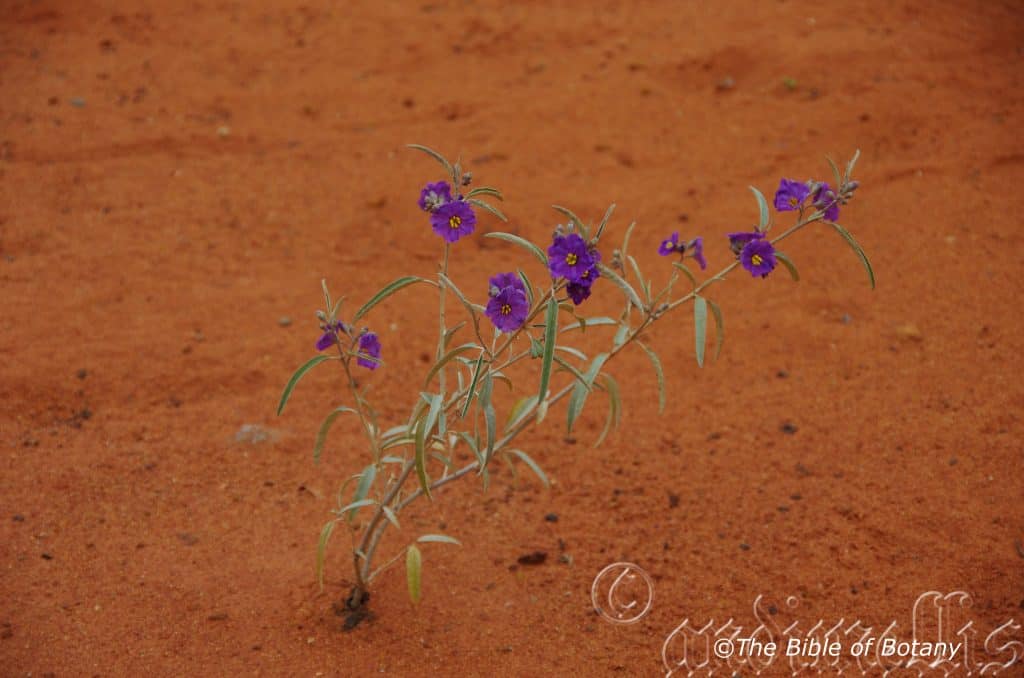
National Botanic Gardens ACT

National Botanic Gardens ACT

National Botanic Gardens ACT

National Botanic Gardens ACT

National Botanic Gardens ACT
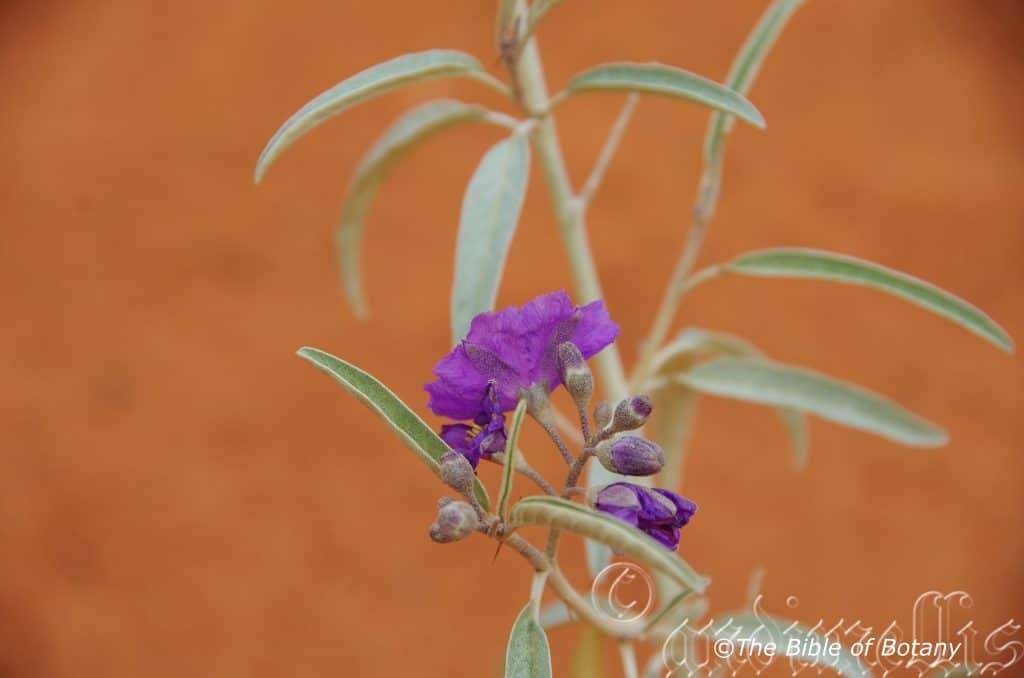
National Botanic Gardens ACT
Solanum sturtianum
Classification:
Unranked: Eudicots
Unranked: Asterids
Order: Solanales
Family: Solanaceae
Subfamily: Solanoideae
Tribe: Solaneae
Genus: From Sol, which is Latin is Latin for the sun and Anus, which is Latin for a stem. It refers to the family of plants known as nightshades, which includes the potato, tomato, capsicum and chillies, where the flowers look like little suns on the end of stems. It also has the possible meaning from Hiláskomai, which is Ancient Greek or later Sōlārī, which is Latin for to appease, to make comfortable, to console or to solace. It refers to organs or structures usually the flowers, which are very pleasing to the eye.
Specie: Is named in honour of Charles Sturt; 1795-1869, who was a British born Australian, early surveyor, explorer and leader of the expedition on which the type specimen was collected.
Sub specie:
Common Name: Thargomindah Nightshade.
Distribution:
Solanum sturtianum is a widespread specie found east from the central west coast of Western Australia to Cunnamulla in central southern Queensland and aextending south to Kangaroo Flat in southern South Australia.
https://avh.ala.org.au/occurrences/search?taxa=Solanum+sturtianum#tab_mapView
Habitat Aspect Climate:
Solanum sturtianum prefers light dappled shade to full sun. It grows most commonly on inland ranges within the riparian zones of deep gravelly soils associated with dry creeks or at times on rocky slopes. The altitude ranges from 5 meters ASL to 750 meters ASL.
The temperatures range from minus 3 degrees in August to 46 degrees in January.
The rainfalls range from lows of 150mm to 800mm average per annum.
Soil Requirements:
Solanum sturtianum prefers to grow on reddish or white sands, peaty sands to sandy loams or gravelly river screes. The soils are derived from decomposed sandstones or granites. The soils pH ranges from 6pH to 7pH. It does not tolerate water logged soils. Non saline soils to very saline soils are tolerated as are salt laden winds.
Height & Spread:
Wild Plants: 1m to 3m by 0.8m to 3m.
Characteristics:
Solanum sturtianum grows as a medium clonal shrub ascending shrub with silvery-green or grey-green stems are usually densely covered in tomentose with a scattering of stellate hairs. Thorns are generally absent or when seen measure 5mm to 6mm in length. They are very rare elsewhere.
The lanceolate leaves measure 30mm to 60mm in length by 5mm to 15mm in width. The terete petiole measures 5mm to 15mm in length.
The assymetrical bases are rounded, while the apexes are narrow acute. The discolorous or occasionally concolourous laminas are grey-green and densely covered in tomentose hairs. The margins are entire to slightly undulating. The laminas recurve upwards from the midvein to the margins and gently arch from the petiole to the apex. The main vein and 10 to 15 pairs of lateral veins are prominent on the lower lamina.
The inflorescence vary from a few to 12 individual flowers. The peduncle measures 0mm to 15 mm in length, while the pedicels measure 5mm to 8mm in length. The calyxes measure 3mm to 5mm in lengt, while the deltoid lobes measure 1mm to 3mm in length. The purple to very deep purple corolla is rotate to stellate and measures 30mm to 40mm in diameter. The 5 white, stout filaments measure 0.6mm to 1mm in length, while the bright yellow, longitudinally ribbed broad linear anthers dehisce poricidally and measure 5mm to 6mm in length.
The fruits are globular berries that measure 10mm to 15mm in diameter. The green fruits turn yellow to brownish-black, with brittle skin that breaks irregularly when ripe. The deep brown to almost black seeds measure 3mm to 5mm in length.
Wildlife:
Solanum sturtianum support native colony bees like Tetragonula carbonaria, wasps, butterflies and native flies throughout their range. I have not seen any birds consuming the fruits.
The fruits are known to be toxic to sheep and cattle when stressed indicating toxins maybe more concentrated in stressed plants or the sheep and cattle resort to eating the fruits during drought conditions.
WARNING: Many Solanum species are poisonous and many species; perhaps all, have some parts that are poisonous, or the edible parts are only edible at certain times of the year while being poisonous at other times.
Some native species of Solanum were known as traditional Aboriginal bush tucker plants. Others are introduced edible weeds.
Several native species are listed in Wild Food Plants of Australia by Cribb Not all of these are edible however some had specific uses or had to be treated first before eating: Solanum aviculare (Rainforest Kangaroo Apple), Solanum centrale (Desert Raisin), Solanum chippendalei (Bush Tomato), Solanum diversiflorum (Kakarrta), Solanum ellipticum, Solanum esuriale, Solanum laciniatum (Southern Kangaroo Apple), Solanum linearifolium (Mountain Kangaroo Apple), Solanum mauritianum (Wild Tobacco, Tobacco Bush), and Solanum vescum (Gunyang). Of these, Solanum aviculare, Solanum laciniatum, and Solanum mauritanum are the most common species that people come into contact with.
The Rainforest Kangaroo Apple is apparently only barely edible, so should be eaten sparingly.
Of the Solanum species which occur in Australia, Solanum americanum, Solanum scabrum and Solanum villosum and Solanum opacum are also considered to be edible.
People with allergies to tomatoes, peanuts or potatoes should be wary of eating any fruit of the solanaceae family as they all contain small amounts of the alkaloid sola.
Solanum aviculare Kangaroo Apple
Solanum centrale is also known as Desert Raisin, Bush Raisin or Bush Sultana, or by the native name kutjera.
Solanum chipendalei is known as Bush Tomato.
Solanum coactiliferum Aborigines roasted the fruit before eating.
Solanum diversifolium is known as Bush Tomato, Karlumbu, Pilirta, Wamurla districts.
Solanum ellipticum Potato Bush is very similar to Solanum quadriliculatum which is poisonous.
Solanum lacinatum is known as Kangaroo Apple.
Solanum orbicaltum is known as Round-leaved Solanum.
Solanum pholomoides is also known as Wild Tomato.
Solanum vescum.
Solanum cinerium is poisonous
Aborigines burned off the outer skin of Solanum aviculare as eating them raw caused the mouth to blister. Aborigines ate the fruit of Solanum centrale raw or put it on the hot earth by the fire, sprinkle some water on the fruits and cover them up to cook them. Solanum chippendalei is consumed by first splitting the fruit, scraping the center out and eating the outer flesh as the seeds and surrounding placenta are bitter. Solanum diversiflorum is roasted before being eaten or dried. Fruit of Solanum orbiculatum is edible, but the fruit of the large leafed form may be bitter. Fruit of Solanum phlomoidesappears to be edible after the removal of seeds and roasting or sun drying. Mardu people would dry the fruits to consume them at a later date.
Solanum aviculare contains solasodine, a steroid used in the manufacture of oral contraceptives. I have not tried the fruits so cannot vouch for any of what is said first hand.
Cultivation:
Solanum sturtianum is a medium shrub that responds well to cultivation and is best grown in the open, in full sun on fine or course sands, sandy loams or gravelly screes. It is particularly beautiful when in flower. In cultivation it will grow from 1.5 meters to 2.5 meters in height by 1.5 meters to 2 meters in diameter when grown in the open.
It grows exceptionally well where a layer of mulch prevails that will keep the soil cool and moisture at an even level. Add to the above, if it is given a little extra water with a little native fertilizer on a regular basis the plants will respond with superb flowering over a longer period and maintain better colour in the leaves. Light pruning will aid in a smaller bushier shrub which is beneficial from a horticultural aspect as plants become straggly and produce fewer flowers if let go wild. Pruning should be done after the peak flowering periods subside. Removing the spent flowers will also help promote flowering.
Solanum sturtianum are most suitable when placed near areas that receive reflected light or reflected heat on the northern side of sheds when grown closer to the coast. It is fast growing and offer shelter and safe corridors for wildlife in semi arid zones. It will gain a lot of attention and highlight other broader green leaf shrubs. Mass plant it with 3 or more in the midground in arid bush gardens.
Small Acacia specie to 1 meter in height and diameter with cream or white flowers make a great effect as their flowering will complement the purples. Acacia species that have fine leaves would deliver plenty of interest. This is one plant that benefits the gardener if mass planted tightly together in small sections. When mass planting use 1.5 meter to 1.8 meter centers.
Actinotis helianthi, Hovea acutifolia, Boronia ledifolia, dwarf Acacia specie or red flowering Grevillea specie for a few great contrasting foliages and flower colour.
Propagation:
Seeds: The seeds of Solanum sturtianum can be removed easily from the fruits.
Sow fresh seeds directly into a seed raising mix, keeping them moist not wet. Do not over water as the seeds will rot off before germination takes place. Place the trays in a cool shaded area with 50mm shade cloth in the bush house. When the seedlings are 20 to 25 mm tall, prick them out and plant them into 50mm native tubes using a good organic mix.
As the seedlings roots reach the bottom of the tubes plant them out into their permanent position. Do not delay.
Fertilize using Seaweed, fish emulsion or organic chicken pellets soaked in water and apply the liquid on an alternate basis. Fertilize every 2 months until the plants are well established then on an annual basis in September or March to maintain health, vigour and better flowering.
Further Comments from Readers:
“Hi reader, it seems you use The Bible of Botany a lot. That’s great as we have great pleasure in bringing it to you! It’s a little awkward for us to ask, but our first aim is to purchase land approximately 1,600 hectares to link several parcels of N.P. into one at The Pinnacles NSW Australia, but we need your help. We’re not salespeople. We’re amateur botanists who have dedicated over 30 years to saving the environment in a practical way. We depend on donations to reach our goal. If you donate just $5, the price of your coffee this Sunday, We can help to keep the planet alive in a real way and continue to bring you regular updates and features on Australian plants all in one Botanical Bible. Any support is greatly appreciated. Thank you.”
In the spirit of reconciliation we acknowledge the Bundjalung, Gumbaynggirr and Yaegl and all aboriginal nations throughout Australia and their connections to land, sea and community. We pay our respect to their Elders past, present and future for the pleasures we have gained.
Solanum symonii
Classification:
Unranked: Eudicots
Unranked: Asterids
Order: Solanales
Family: Solanaceae
Subfamily: Solanoideae
Tribe: Solaneae
Genus: From Sol, which is Latin is Latin for the sun and Anus, which is Latin for a stem. It refers to the family of plants known as nightshades, which includes the potato, tomato, capsicum and chillies, where the flowers look like little suns on the end of stems. It also has the possible meaning from Hiláskomai, which is Ancient Greek or later Sōlārī, which is Latin for to appease, to make comfortable, to console or to solace. It refers to organs or structures usually the flowers, which are very pleasing to the eye.
Specie: Is named in honour of David Eric Symon; 1920-2011, who was an English born Australian botanist who worked tirelessly as an honorary herbarium worker at the South Australian herbarium.
Sub specie:
Common Name:
Distribution:
Solanum symonii is found south from Pemberton and north Kalbarri National Park mainly along the coastal strip to the Margaret River and east from the D’entrecasteaux National Park to the cape Arid national Park with the eastern population being found from the Fitzgerald National Park in Western Australia to Victor Harbour in South Australia along the coast.
https://avh.ala.org.au/occurrences/search?taxa=Solanum+symonii#tab_mapView
Habitat Aspect Climate:
Solanum symonii prefers dappled shade to full sun. It grows close to the cost on back dunes to sand plains. The altitude ranges from 5 meters ASL to 150 meters ASL.
The temperatures range from minus 2 degrees in August to 39 degrees in January.
The rainfalls range from lows of 250mm to 800mm average per annum.
Soil Requirements:
Solanum symonii prefers to grow on reddish or white sands, peaty sands to sandy loams. The soils are derived from decomposed sandstones, granites or accumulated beach sands. The soils pH ranges from 6pH to 8pH. It does not tolerate water logged soils. Non saline soils to very saline soils are tolerated as are salt laden winds.
Height & Spread:
Wild Plants: 1m to 2m by 0.8m to 2m.
Characteristics:
Solanum symonii grows as a small ascending shrub with green to deep green stems which are often tinged with a purple sheen or markings. The juvenile plants and new growth is glabrous with white or pale grey hirsute hairs on.
The opposite, lobed leaves of Solanum symonii measure 10mm to 180mm in length by 30mm to 80mm in width overall. The ovate to lanceolate lobes measure 30mm to 90mm in length by 5mm to 15mm in width. The petioles are deep green to purplish-green petioles measure 20mm to 30mm in length. The bases are narrowly cuneate, while the apexes are acute to obtuse.
The opposite entire simple lanceolate to elliptic leaves of Solanum symonii measure 30mm to 120mm by 5mm to 15mm in width. The petioles measure 10mm to 15mm in length. The bases are narrow cuneate while the apexes are obtuse to acute.
The concolourous laminas are green and glabrous. The mid vein is obtuse and strongly prominent on the lower laminas, measure 1.5mm to 2mm in diameter and is distinctly visible from the upper lamina. The lateral veins are prominent on the lower lamina and faintly visible from the upper lamina.
The inflorescences of Solanum symonii are born on short rachises from the upper leaf axils or terminals. There are 2 to 6 perfect individual flowers on the peduncles. The peduncles, rachises and pedicels are green and glabrous. The peduncles measure 1mm to 30mm in length while the rachises measure 10mm to 50mm in length and the pedicels measure 10mm to 20mm in length.
The calyxes are glabrous measure 4mm to 5mm in length while the 5 deltoid to linear lobes measure 1.5mm to 3mm in length. The corollas are pale lavender, lilac to deep violet-blue and glabrous externally and internally. The corollas measure 30mm to 40mm in diameter and are shallowly lobed. The 5 lobes measure 1.5mm to 3mm in length. The lobes margins are entire and slightly undulating while the apexes are narrowly obtuse with an emarginated tip and an emarginated notch between the lobes.
The 5 exserted anthers extend from the center of the corolla. The filaments are deep yellow while the basifixed anthers are bright orange-yellow. The filaments measure 1mm to 1.5mm in length. The anthers measure 2mm to 3.5mm in length by 1mm to 1.5mm in width and separate slightly at the apexes.
The slender white style, stigma and green, ovoidal ovary are glabrous. The slender pistil measures 5mm to 7mm in length. Solanum symonii flowers appear from August through to November and again from January through to March.
Solanum symonii’s fruits are flattened ovoidal to obovoidal berries. The berries are glabrous and measure 15mm to 20mm in length by 10mm to 15mm in diameter. The green berries remain green but have a purple tinge when ripe. The calyx lobes are persistent on the ripe fruit. The pale grey to pale reddish-brown, discoidal seeds measure 1.9mm to 2mm in length by 1.9mm to 2mm in diameter.
Wildlife:
Solanum symonii support native bees, wasps, butterflies and native flies throughout their range. I have not seen any birds consuming the fruits.
The fruits were eaten by aborigines in small quantities. The fruits rather unpleasant to eat and should be eaten in very small quantities as they contain dangerous levels of alkaloids.
WARNING: Many Solanum species are poisonous and many species; perhaps all, have some parts that are poisonous, or the edible parts are only edible at certain times of the year while being poisonous at other times.
Some native species of Solanum were known as traditional Aboriginal bush tucker plants. Others are introduced edible weeds.
Several native species are listed in Wild Food Plants of Australia by Cribb Not all of these are edible however some had specific uses or had to be treated first before eating: Solanum aviculare (Rainforest Kangaroo Apple), Solanum centrale (Desert Raisin), Solanum chippendalei (Bush Tomato), Solanum diversiflorum (Kakarrta), Solanum ellipticum, Solanum esuriale, Solanum laciniatum (Southern Kangaroo Apple), Solanum linearifolium (Mountain Kangaroo Apple), Solanum mauritianum (Wild Tobacco, Tobacco Bush), and Solanum vescum (Gunyang). Of these, Solanum aviculare, Solanum laciniatum, and Solanum mauritanum are the most common species that people come into contact with.
The Rainforest Kangaroo Apple is apparently only barely edible, so should be eaten sparingly.
Of the Solanum species which occur in Australia, Solanum americanum, Solanum scabrum and Solanum villosum and Solanum opacum are also considered to be edible.
People with allergies to tomatoes, peanuts or potatoes should be wary of eating any fruit of the solanaceae family as they all contain small amounts of the alkaloid sola.
Solanum aviculare Kangaroo Apple
Solanum centrale is also known as Desert Raisin, Bush Raisin or Bush Sultana, or by the native name kutjera.
Solanum chipendalei is known as Bush Tomato.
Solanum coactiliferum Aborigines roasted the fruit before eating.
Solanum diversifolium is known as Bush Tomato, Karlumbu, Pilirta, Wamurla districts.
Solanum ellipticum Potato Bush is very similar to Solanum quadriliculatum which is poisonous.
Solanum lacinatum is known as Kangaroo Apple.
Solanum orbicaltum is known as Round-leaved Solanum.
Solanum pholomoides is also known as Wild Tomato.
Solanum vescum.
Solanum cinerium is poisonous
Aborigines burned off the outer skin of Solanum aviculare as eating them raw caused the mouth to blister. Aborigines ate the fruit of Solanum centrale raw or put it on the hot earth by the fire, sprinkle some water on the fruits and cover them up to cook them. Solanum chippendalei is consumed by first splitting the fruit, scraping the center out and eating the outer flesh as the seeds and surrounding placenta are bitter. Solanum diversiflorum is roasted before being eaten or dried. Fruit of Solanum orbiculatum is edible, but the fruit of the large leafed form may be bitter. Fruit of Solanum phlomoidesappears to be edible after the removal of seeds and roasting or sun drying. Mardu people would dry the fruits to consume them at a later date.
Solanum aviculare contains solasodine, a steroid used in the manufacture of oral contraceptives. I have not tried the fruits so cannot vouch for any of what is said first hand.
Cultivation:
Solanum symonii is a medium shrub that responds well to cultivation and is best grown in the open, in full sun or part shade on light clays to heavy clays. It is particularly beautiful when in flower or fruit. In cultivation they will grow from 1.5 meters to 2 meters in height by 1.5 meters to 2 meters in diameter when grown in the open.
It grows exceptionally well where a layer of mulch prevails that will keep the soil cool and moisture at an even level. Add to the above, if it is given a little extra water with a little native fertilizer on a regular basis the plants will respond with superb flowering over a longer period and maintain better colour in the leaves. Light pruning will aid in a smaller bushier shrubs which is beneficial from a horticultural aspect as plants become straggly and produce fewer flowers if let go. Pruning should be done after the peak flowering periods subside in late November and late March. Removing the spent flowers will also help promote flowering
Solanum symonii are most suitable placed near a bend in the garden or along a long driveway with other smaller broad green leaf shrubs. It is fast growing and offer shelter and safe corridors for wildlife. They will gain a lot of attention and highlight the other broader green leaf shrubs. Mass plant them (3 to 8) in the midground in bush gardens with medium and larger plants behind. Plants with broad green leaves with white or yellow flowers can be used to great effect in the foreground while large flowering specie can be placed in the background. They would be a very good choice if planted on a tight bend or “U” bends. Planted on the inside of the bend, when it is in flower these plants will break your concentration and the viewer will be transfixed on the display of flowers rather than watching the path. Here the choice of companion plants to use on the outside of the bend is limited only by your imagination. Small Acacia specie to 1 meter diameter with cream or white flowers can also be used to great effect as their flowering will complement the purples but then be aware they may blend in with foreground plants in front of the Solanum. Ensure the Acacia specie have fine leaves and if they were to flower at the same time or in a different season would be of no consequence as the foliages would still deliver plenty of interest. This is one plant that benefits the gardener if mass planted tightly together in small sections. When mass planting use 1.5 meter to 1.8 meter centers.
Actinotis helianthi, Hovea acutifolia, Boronia ledifolia, dwarf Acacia specie or red flowering Grevillea specie for a few great contrasting foliages and flower colour.
Propagation:
Seeds: The seeds of Solanum symonii can be removed easily from the fruits.
Sow fresh seeds directly into a seed raising mix, keeping them moist not wet. Do not over water as the seeds will rot off before germination takes place. Place the trays in a cool shaded area with 50mm shade cloth in the bush house. When the seedlings are 20 to 25 mm tall, prick them out and plant them into 50mm native tubes using a good organic mix.
As the seedlings roots reach the bottom of the tubes plant them out into their permanent position. Do not delay.
Fertilize using Seaweed, fish emulsion or organic chicken pellets soaked in water and apply the liquid on an alternate basis. Fertilize every 2 months until the plants are well established then on an annual basis in September or March to maintain health, vigour and better flowering.
Solanum symonii prefer to grow on better quality sandy loams to medium clays. The soils are derived from decomposed sandstones, granites, brown basalt, black basalts or metamorphic rocks. The soils pH ranges from 4.5pH to 6pH. It does not tolerate water logged soils. Non saline soils to moderately saline soils are tolerated.
Further Comments from Readers:
“Hi reader, it seems you use The Bible of Botany a lot. That’s great as we have great pleasure in bringing it to you! It’s a little awkward for us to ask, but our first aim is to purchase land approximately 1,600 hectares to link several parcels of N.P. into one at The Pinnacles NSW Australia, but we need your help. We’re not salespeople. We’re amateur botanists who have dedicated over 30 years to saving the environment in a practical way. We depend on donations to reach our goal. If you donate just $5, the price of your coffee this Sunday, We can help to keep the planet alive in a real way and continue to bring you regular updates and features on Australian plants all in one Botanical Bible. Any support is greatly appreciated. Thank you.”
In the spirit of reconciliation we acknowledge the Bundjalung, Gumbaynggirr and Yaegl and all aboriginal nations throughout Australia and their connections to land, sea and community. We pay our respect to their Elders past, present and future for the pleasures we have gained.
Solanum vescum
Classification:
Unranked: Eudicots
Unranked: Asterids
Order: Solanales
Family: Solanaceae
Subfamily: Solanoideae
Tribe: Solaneae
Genus: From Sol, which is Latin is Latin for the sun and Anus, which is Latin for a stem. It refers to the family of plants known as nightshades, which includes the potato, tomato, capsicum and chillies, where the flowers look like little suns on the end of stems. It also has the possible meaning from Hiláskomai, which is Ancient Greek or later Sōlārī, which is Latin for to appease, to make comfortable, to console or to solace. It refers to organs or structures usually the flowers, which are very pleasing to the eye.
Specie: From Vēscum, which is Latin for thin, attenuate or diminished. It refers to organs, which look weaker and more diminished than other species in the genus.
Sub specie:
Common Name: Kangaroo Apple.
Distribution:
Solanum vescum is a wide spread species found south from Jimna in south east Queensland to Flat Witch Island off the southern coast of Tasmania including the Bass Straight Islands. It is mainly found on the western slopes, on and east of the Great Dividing Range to the coast and as far west as the Grampians in south western Victoria.
In Tasmania it is not found on the north western, north eastern or south western highlands.
https://avh.ala.org.au/occurrences/search?taxa=Solanum+vescum#tab_mapView
Habitat Aspect Climate:
Solanum vescum is an ecotone species preferring transitional forests between Eucalyptus forests and notophyll forests, Eucalyptus forests and rainforests or Eucalyptus forests along creeks or stream banks. It prefers light dappled shade to semi shade. It grows on slopes, hills, ridges or creek banks. The altitude ranges from 10 meters ASL to 870 meters ASL.
The temperatures range from minus 5 degree in August to 40 degrees in January.
The rainfalls range from lows of 150mm to 400mm average per annum.
Soil Requirements:
Solanum vescum prefers to grow on better quality sandy loams to medium clays or medium silts to heavy silts. The soils are usually derived from decomposed red or orange heavier sandstones, granites, black basalts or alluvial deposits. The soils pH ranges from 4.5pH to 6pH. It does not tolerate water logged soils. Non saline soils to moderately saline soils are tolerated.
Height & Spread:
Wild Plants: 1m to 2m by 1.2m to 1.8m.
Characteristics:
Solanum vescum grows as a tall or wide spreading shrub. Its stems are soft wooded and lasting several years before becoming woody at the base. The new growth is deep green often tinged deep purple and glabrous.
The alternate, variable leaves of Solanum vescum are simple to deeply divided. The simple linear to lanceolate leaves measure 50mm to 150mm in length by 5mm to 11mm in width. The lobed leaves are deeply lobed almost to the midvein. The 4 to 6 broad ovate lobes measure 250mm to 300mm in length. The lower pairs of lobes are usually smaller and measure 10mm to 20mm in length by 15mm to 30mm in width while the apical lobes usually measure 50mm to 100mm in length by 8mm to 12mm in width. The sinuses are rounded and measure 8mm to 10mm from the midrib.
The deep green, glabrous petioles are decurrent on the stem as narrow wings and measure 1mm to 30mm in length. The bases are tapering to attenuate while the apexes are obtuse to acute. The concolourous laminas are mid green to deep green, dull to semi glossy and glabrous. The laminas are flat or recurve upwards from the mid vein to the margins and decurve downwards from near the base. The margins are entire. The mid vein is prominent on the lower laminas.
The inflorescences of Solanum vescum are born on a short raceme or from the leaf axils. There are 1 to 4 individual flowers to a raceme or rarely as a short peduncle. The mid green to deep green peduncles, rachises and pedicels are glabrous or occasionally very sparsely covered in minute white puberulent hairs and simple uniseriate trichomes hairs near the flowers. The peduncles measure 0mm to 50mm in length while the pedicels measure 20mm to 25mm in length. The obovoid to ellipsoid bbuds are strongly exerted from the calyx tube prior to anthesis.
The mid green to deep green campanulate calyxes are sparsely covered in minute, white puberulent hairs with simple glandular trichomes hairs. They measure 3mm to 4mm in length while the 5 accuminate lobes measure 1.5mm to 2.2mm in length. The mauve to deep purple or violet corollas measure 30mm to 40mm in diameter. The rotate stellate lobes have deep sinuses creating a 10 lobed effect.
The 5 white filaments measure 4mm to 5mm in length while the yellow basifixed anthers measure 3mm to 4mm in length. The apical poricidal dehiscing anthers eventually lengthen to slits after anthesis. The ovary is glabrous. The straight white style measures 9mm to 11mm in length. The pastel grey, capitate stigma is slightly bilobed. The flowers appear from June through to November.
Solanum vescum’s fruits are globose to ovoidal berries. The large berries are glabrous and covered in white film and measure 20mm to 25mm in length by 20mm to 25mm in diameter. The green berries turn yellow before drying to a mid brown with a raison like texture while still attached to the plant. The calyx lobes are persistent on the ripe fruit.
The pale greyish to pale brownish discoidal seeds measure 2.5mm to 3mm in length by 2mm in diameter. The surfaces are rugose. The fruits ripen from September to February.
Wildlife:
Solanum vescum support native bees and native flies along the coast when in flower.
WARNING: Many Solanum species are poisonous and many species; perhaps all, have some parts that are poisonous, or the edible parts are only edible at certain times of the year while being poisonous at other times.
Some native species of Solanum were known as traditional Aboriginal bush tucker plants. Others are introduced edible weeds.
Several native species are listed in Wild Food Plants of Australia by Cribb Not all of these are edible however some had specific uses or had to be treated first before eating: Solanum aviculare (Rainforest Kangaroo Apple), Solanum centrale (Desert Raisin), Solanum chippendalei (Bush Tomato), Solanum diversiflorum (Kakarrta), Solanum ellipticum, Solanum esuriale, Solanum laciniatum (Southern Kangaroo Apple), Solanum linearifolium (Mountain Kangaroo Apple), Solanum mauritianum (Wild Tobacco, Tobacco Bush), and Solanum vescum (Gunyang). Of these, Solanum aviculare, Solanum laciniatum, and Solanum mauritanum are the most common species that people come into contact with.
The Rainforest Kangaroo Apple is apparently only barely edible, so should be eaten sparingly.
Of the Solanum species which occur in Australia, Solanum americanum, Solanum scabrum and Solanum villosum and Solanum opacum are also considered to be edible.
People with allergies to tomatoes, peanuts or potatoes should be wary of eating any fruit of the solanaceae family as they all contain small amounts of the alkaloid sola.
Solanum aviculare Kangaroo Apple
Solanum centrale is also known as Desert Raisin, Bush Raisin or Bush Sultana, or by the native name kutjera.
Solanum chipendalei is known as Bush Tomato.
Solanum coactiliferum Aborigines roasted the fruit before eating.
Solanum diversifolium is known as Bush Tomato, Karlumbu, Pilirta, Wamurla districts.
Solanum ellipticum Potato Bush is very similar to Solanum quadriliculatum which is poisonous.
Solanum lacinatum is known as Kangaroo Apple.
Solanum orbicaltum is known as Round-leaved Solanum.
Solanum pholomoides is also known as Wild Tomato.
Solanum vescum.
Solanum cinerium is poisonous
Aborigines burned off the outer skin of Solanum aviculare as eating them raw caused the mouth to blister. Aborigines ate the fruit of Solanum centrale raw or put it on the hot earth by the fire, sprinkle some water on the fruits and cover them up to cook them. Solanum chippendalei is consumed by first splitting the fruit, scraping the center out and eating the outer flesh as the seeds and surrounding placenta are bitter. Solanum diversiflorum is roasted before being eaten or dried. Fruit of Solanum orbiculatum is edible, but the fruit of the large leafed form may be bitter. Fruit of Solanum phlomoidesappears to be edible after the removal of seeds and roasting or sun drying. Mardu people would dry the fruits to consume them at a later date.
Solanum aviculare contains solasodine, a steroid used in the manufacture of oral contraceptives. I have not tried the fruits so cannot vouch for any of what is said first hand.
Cultivation:
Solanum vescum makes a beautiful garden subject adjacent to a rainforest or in a moist shady position. It also looks great on moist to dry steep fertile banks. In cultivation it grows from 1.5 meters to 2 meters in height by 1.8 meters to 2 meters in diameter when grown in an open semi shaded position.
Solanum vescum grows exceptionally well where a deep layer of mulch prevails that will keep the soil cool and moisture at an even level. Add to the above, if it is given a little extra water with a little native fertilizer on a regular basis the plants will respond with better flowering over a long period and maintain better colour in the leaves. Light pruning will aid in smaller bushier shrubs. Pruning should be done after the flowering period subside in late November to late March. Removing the spent fruits will also help promote better flowering.
Propagation:
Seeds: The seeds of Solanum vescum can be removed easily from the fruits.
Sow fresh seeds directly into a seed raising mix, keeping them moist not wet. Do not over water as the seeds will rot off before germination takes place. Place the trays in a cool shaded area with 50mm shade cloth in the bush house. When the seedlings are 20 to 25 mm tall, prick them out and plant them into 50mm native tubes using a good organic mix.
As the seedlings roots reach the bottom of the tubes plant them out into their permanent position. Do not delay.
Fertilize using Seaweed, fish emulsion or organic chicken pellets soaked in water and apply the liquid on an alternate basis. Fertilize every 2 months until the plants are well established then on an annual basis in September or March to maintain health, vigor and better flowering and fruiting.
Further Comments from Readers:
“Hi reader, it seems you use The Bible of Botany a lot. That’s great as we have great pleasure in bringing it to you! It’s a little awkward for us to ask, but our first aim is to purchase land approximately 1,600 hectares to link several parcels of N.P. into one at The Pinnacles NSW Australia, but we need your help. We’re not salespeople. We’re amateur botanists who have dedicated over 30 years to saving the environment in a practical way. We depend on donations to reach our goal. If you donate just $5, the price of your coffee this Sunday, We can help to keep the planet alive in a real way and continue to bring you regular updates and features on Australian plants all in one Botanical Bible. Any support is greatly appreciated. Thank you.”
In the spirit of reconciliation we acknowledge the Bundjalung, Gumbaynggirr and Yaegl and all aboriginal nations throughout Australia and their connections to land, sea and community. We pay our respect to their Elders past, present and future for the pleasures we have gained.
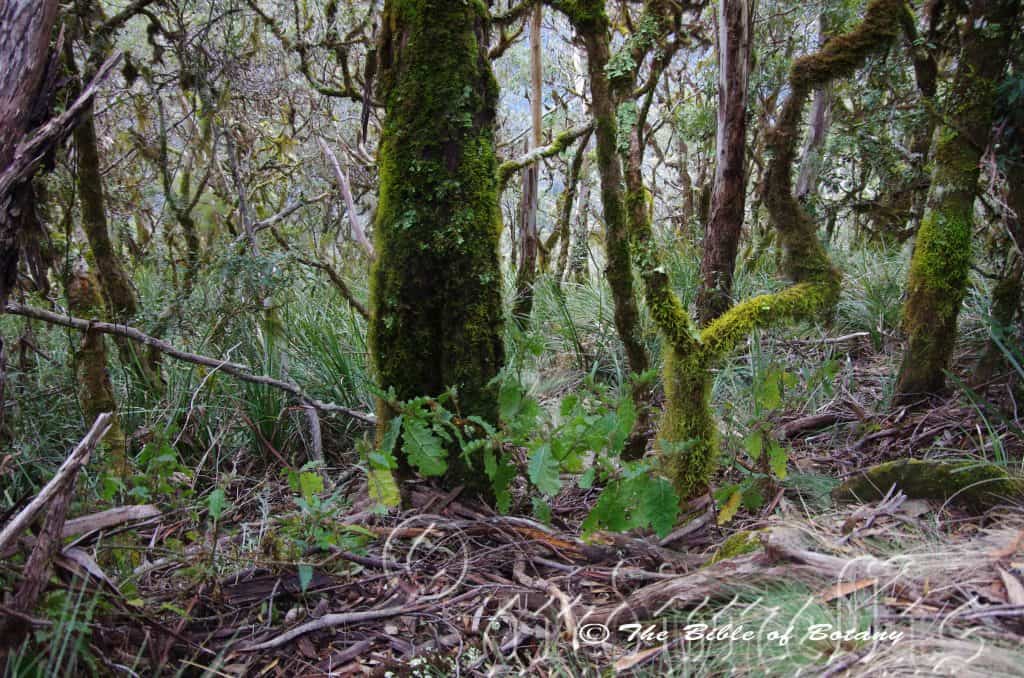
Ebor NSW
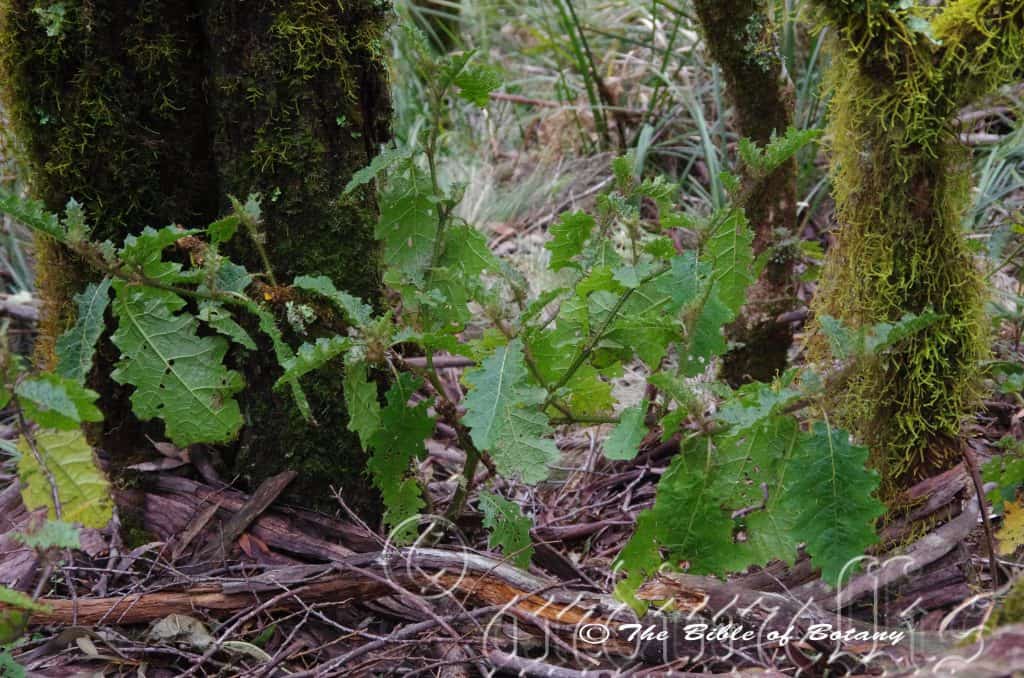
Ebor NSW
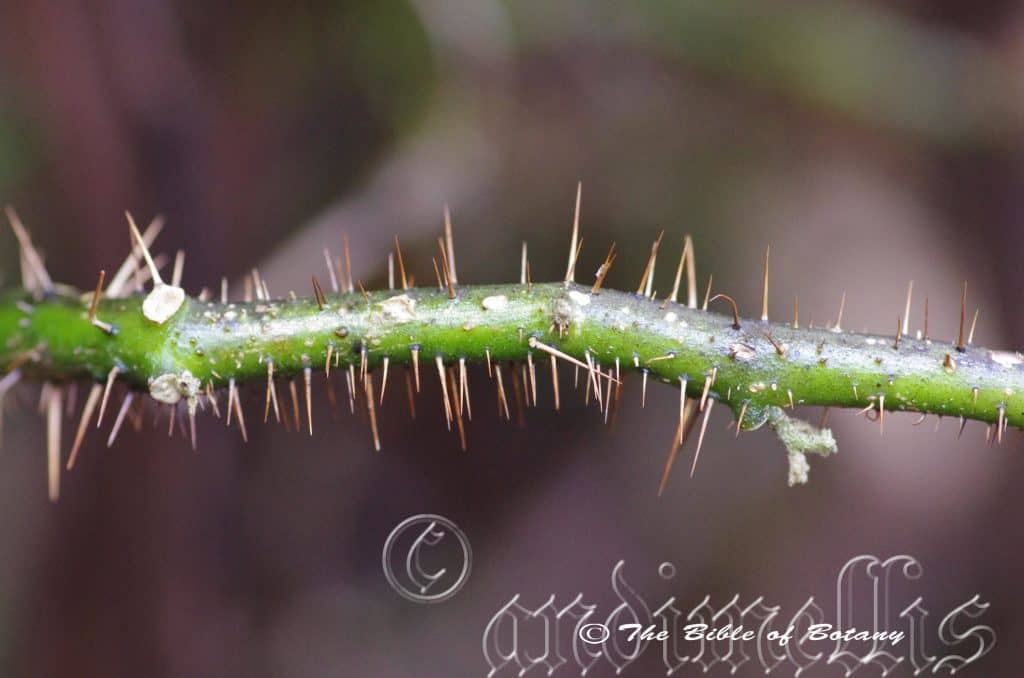
Ebor NSW
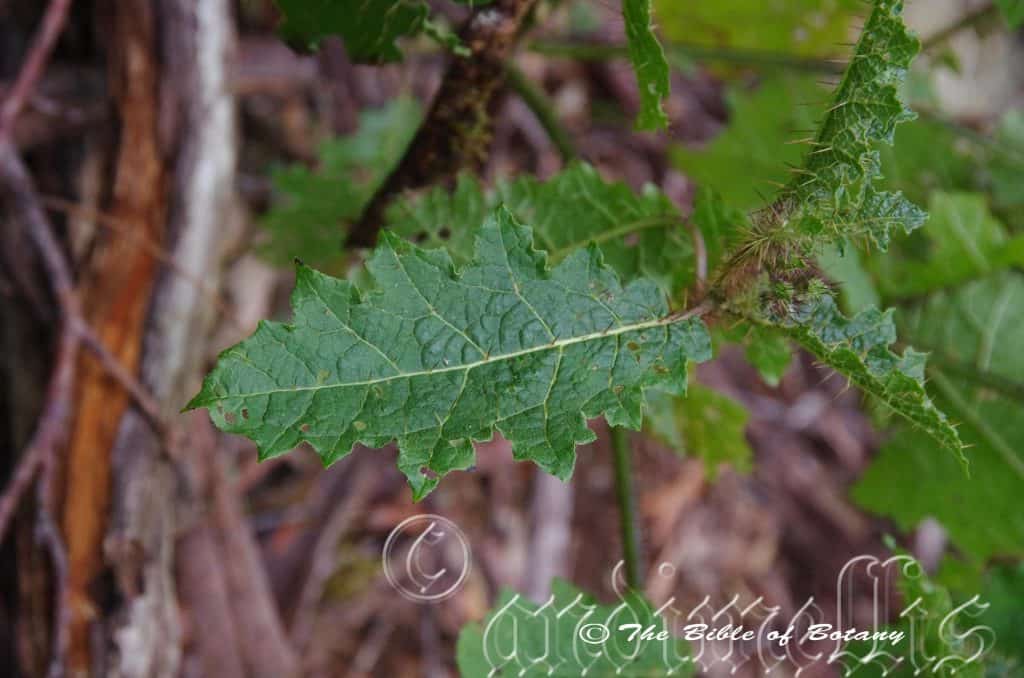
Ebor NSW
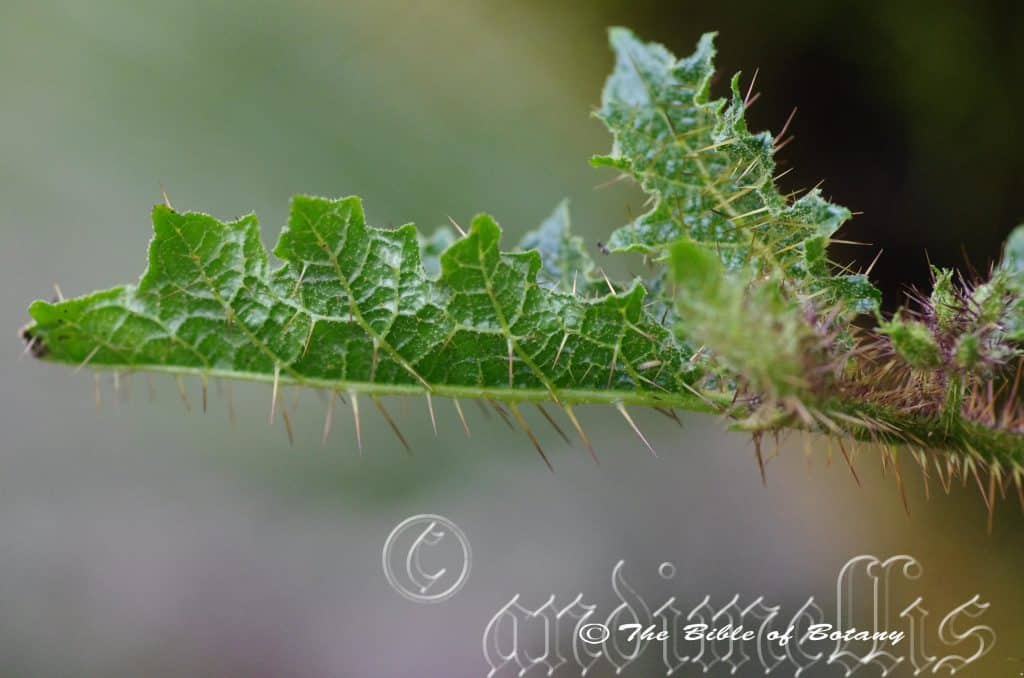
Ebor NSW
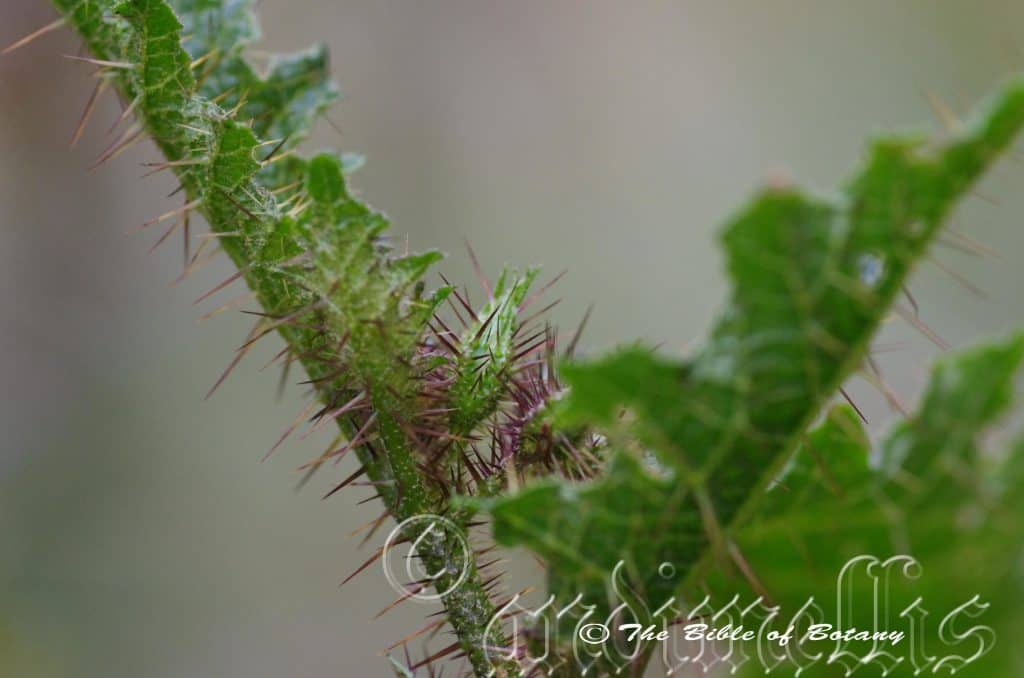
Ebor NSW
Solanum vicinum
Classification:
Unranked: Eudicots
Unranked: Asterids
Order: Solanales
Family: Solanaceae
Subfamily: Solanoideae
Tribe: Solaneae
Genus: From Sol, which is Latin is Latin for the sun and Anus, which is Latin for a stem. It refers to the family of plants known as nightshades, which includes the potato, tomato, capsicum and chillies, where the flowers look like little suns on the end of stems. It also has the possible meaning from Hiláskomai, which is Ancient Greek or later Sōlārī, which is Latin for to appease, to make comfortable, to console or to solace. It refers to organs or structures usually the flowers, which are very pleasing to the eye.
Specie: From Vīcīnus, which is Latin for a street or locality as in neighbouring. It refers to plants, which prefer to grow in the close vicinity or company of certain other species or are closely related to another species in the genus.
Sub specie: Solanum vicinum has been known until recently as
Solanum prinophyllum subsp. vicinum.
Common Name:
Distribution:
Solanum vicinum is found south from Jimna in south east Queensland to the Upper Williams River in central coastal New South Wales. It is found on and east of the Great Dividing Range to the coastal ranges.
https://avh.ala.org.au/occurrences/search?taxa=Solanum+vicinum#tab_mapView
Habitat Aspect Climate:
Solanum vicinum are clonal perennial herbs meaning that all the plants are identical. It prefers light dappled shade to full sun. It grows on dunes or plains especially those that are sparsely vegetated. The altitude ranges from 10 meters ASL to 830 meters ASL.
The temperatures range from minus 3 degree in August to 39 degrees in January.
The rainfalls range from lows of 1000mm to 2000mm average per annum.
Soil Requirements:
Solanum vicinum prefers to grow on light clays to medium clays. The soils are usually derived from decomposed granites, metamorphic rocks, brown basalts or black basalts. The soils pH ranges from 4.5pH to 6pH. It does not tolerate water logged soils. Non saline soils to moderately saline soils are tolerated.
Height & Spread:
Wild Plants: 0.2m to 0.9m by 0.5m to 0.8m.
Characteristics:
Solanum vicinum grows as a perennial with deep green, deep purple or greenish-brown stems. The stems are glabrous or sparsely covered in stellate-puberulent hairs. The stellae measure 0.1m to 0.15mm in length. The needle like, acicular spines are straight, golden-brown and glossy. The spines measure 1mm to 11mm in length 0.5mm to 0.66mm in diameter with 90 to180 spines per 100mm of length along the stems.
The alternate, ovate to oblong-ovate leaves of Solanum vicinum measure 30mm to 80mm in length by 10mm to 40mm in width. The petioles are sparsely covered in white stellate-puberulent and measures 17mm to 37mm in length.
The strongly oblique, bases are rounded to truncate while the apexes are broad acute. The concolourous laminas are mid green, mid blue-green to deep green, dull to semi glossy and glabrous to moderately covered in stellate-pubescent hairs. The laminas recurve upwards from the midvein to the margins while the margins are lobed. The mid vein is strongly prominent on the lower laminas while the lateral veins are prominent on the lower laminas. The mid vein and lateral veins are covered in spines.
The chartaceous, broad ovate juvenile leaves measure 6omm to 70mm in length by 50mm to 60mm in width. It is shallowly lobed, with 3 to 5 pairs of lobes. There are about 100 spines on the upper surface.
The inflorescences of Solanum vicinum are born on a short pseudo raceme supra-axillary. There are 3 to 8 individual flowers on a raceme. The mid green to deep green peduncles, rachises and pedicels are sparsely to moderately stellate-pubescent hairs and golden–brown glossy spines. The peduncles measure 0mm to 20mm in length while the rachises measures 0mm to 10mm and the pedicels measure 6mm to 15mm in length.
The mid green to deep green calyxes and calyx lobes are sparsely to moderately covered in white to pale yellow stellate-puberulent hairs. The calyxes’ tubes 3mm to 4.5mm length while the lobes 3.5mm to 10mm in length by 2mm to 3mm in width. The lilac to purple corolla measures 11mm to 18mm in length by 20mm to 30mm in diameter. The rotate or shallowly lobed, chartaceous tube measures 10mm to 15mm in length while the deltoid lobes measure 7mm to 8mm in length by 8mm to 10mm in width. The interpetiolar tissue is covered in stellate-pulverulent hairs abaxially and are glabrous adaxially
The stamens are partially free with the free section of the filaments that measure 2.5mm to 4mm. The lanceolate-oblong, loosely convenient yellow anthers measure 3.5mm to 5mm in length by 0.5mm to 1mm in width at the base. The apical pores are minute. The ovary is covered in very short, white to pale yellow glandular hairs. The curved, white style is glabrous and measures 8mm to 12mm in length by 0.5mm to 0.6mm in diameter. The stigma is capitate.
The 5 exserted stamens extend from the mouth of the corolla tube. The filaments are deep yellow while the basifixed anthers are bright yellow. The filaments measure 1mm to 2mm in length while the anthers measure 4.5mm to 6.5mm in length and converge around the style.
The white style and stigma are glabrous while the superior, green, ovoidal ovary measures 1mm to 2mm in length. The glabrous pistil measures 9mm to 10mm. Solanum vicinum flowers appear from April through to September.
The fruits of Solanum vicinum are globose berries. The pedicels measure 10mm to 30mm in length by 10mm to 30mm in diameter. The green or brownish berries turn deep purple and glabrous when ripe. The calyx lobes are persistent on the ripe fruit.
The pale yellow to pale tan seeds are flattened reniform to almost orbicular in shape. The seeds measure 2mm to 2.4mm in length by 1.5mm to 2mm in diameter. The surface is finely reticulate to almost smooth. The fruit ripen from September to November.
Confusing Species:
Solanum vicinum has 90 to 180 prickles per 100mm. There are 3 to 8 flowers on a peduncle, which measure 20mm to 40mm in diameter.
Solanum prinophyllum has 30 to 65 prickles per 100mm. There are 1 to 3 flowers on a peduncle, which measure 10mm to 20mm in diameter.
Solanum pungetium leaves are always moderately to densely covered in white puberscent hairs.
Wildlife:
Solanum vicinum support native colony bees like Tetragonula carbonaria and native flies along the coast when in flower.
WARNING: Many Solanum species are poisonous and many species; perhaps all, have some parts that are poisonous, or the edible parts are only edible at certain times of the year while being poisonous at other times.
Some native species of Solanum were known as traditional Aboriginal bush tucker plants. Others are introduced edible weeds.
Several native species are listed in Wild Food Plants of Australia by Cribb Not all of these are edible however some had specific uses or had to be treated first before eating: Solanum aviculare (Rainforest Kangaroo Apple), Solanum centrale (Desert Raisin), Solanum chippendalei (Bush Tomato), Solanum diversiflorum (Kakarrta), Solanum ellipticum, Solanum esuriale, Solanum laciniatum (Southern Kangaroo Apple), Solanum linearifolium (Mountain Kangaroo Apple), Solanum mauritianum (Wild Tobacco, Tobacco Bush), and Solanum vescum (Gunyang). Of these, Solanum aviculare, Solanum laciniatum, and Solanum mauritanum are the most common species that people come into contact with.
The Rainforest Kangaroo Apple is apparently only barely edible, so should be eaten sparingly.
Of the Solanum species which occur in Australia, Solanum americanum, Solanum scabrum and Solanum villosum and Solanum opacum are also considered to be edible.
People with allergies to tomatoes, peanuts or potatoes should be wary of eating any fruit of the solanaceae family as they all contain small amounts of the alkaloid sola.
Solanum aviculare Kangaroo Apple
Solanum centrale is also known as Desert Raisin, Bush Raisin or Bush Sultana, or by the native name kutjera.
Solanum chipendalei is known as Bush Tomato.
Solanum coactiliferum Aborigines roasted the fruit before eating.
Solanum diversifolium is known as Bush Tomato, Karlumbu, Pilirta, Wamurla districts.
Solanum ellipticum Potato Bush is very similar to Solanum quadriliculatum which is poisonous.
Solanum lacinatum is known as Kangaroo Apple.
Solanum orbicaltum is known as Round-leaved Solanum.
Solanum pholomoides is also known as Wild Tomato.
Solanum vescum.
Solanum cinerium is poisonous
Aborigines burned off the outer skin of Solanum aviculare as eating them raw caused the mouth to blister. Aborigines ate the fruit of Solanum centrale raw or put it on the hot earth by the fire, sprinkle some water on the fruits and cover them up to cook them. Solanum chippendalei is consumed by first splitting the fruit, scraping the center out and eating the outer flesh as the seeds and surrounding placenta are bitter. Solanum diversiflorum is roasted before being eaten or dried. Fruit of Solanum orbiculatum is edible, but the fruit of the large leafed form may be bitter. Fruit of Solanum phlomoidesappears to be edible after the removal of seeds and roasting or sun drying. Mardu people would dry the fruits to consume them at a later date.
Solanum aviculare contains solasodine, a steroid used in the manufacture of oral contraceptives. I have not tried the fruits so cannot vouch for any of what is said first hand.
Cultivation:
Solanum vicinum is a perennial shrub that can be grown in the open in full sun. In cultivation it grows from 0.6 meters to 0.8 meters in height by 0.6 meters to 0.8 meters in diameter when grown in the open.
Place them near old stumps and roots to make the stumps or roots look larger. Select an area of ground and let your hair down and be imaginative and this is the plant that may just change your life. Remember this plant is rather sensitive to water so a very well drained site is absolutely necessary for successful growth. When planting a desert type of garden be very sparingly with the other plants when planting and remember that deserts are rolling flat plains not steep hills so it is best to use a gentle slope or a basin with a small pool at the bottom. A billabong affect is the go, not a waterfall or cascades. They also look great on rock ledges and steep dry sandy banks.
Solanum vicinum would make a great contribution to a sandy or rocky terrain rock garden. Here they can be used as fill in plants, scattered throughout the boulders. When you use them in area that is strewn with large boulders do not over crowd the scene as the boulders are a formidable part of the scene. Solanum vicinum is well suited to such conditions so use contours to display the plants. Boulder country are almost always rising and falling in contour and have sharp rises. Plants must be planted sparingly with short annuals between to give vibrant colour. Make the scene so you can see over the tallest ones with the exception of one or two plants at the most. The idea is to achieve a feeling of expansive harshness. This can be achieved with using Solanum vicinum pale blue green with yellow green oblong leaves contrast well with finer pale green or deep green or red coloured foliages. If large deep green leaf plants are wanted try using them as prostrate plants. Use a lot of procumbent plants like Hibbertia to make the rocks look larger and the spaces between the plants bigger. Mix them with other smaller shrubs so none of them dominate the scene but blend in to give a mosaic of foliage colours that you oversee. Here I immediately think of Actinotis helianthi or Grevillea thelemanniana for two great contrasting foliages however Actinotis may be a little over powering.
Propagation:
Seeds: The seeds of Solanum vicinum can be removed easily from the fruits.
Sow fresh seeds directly into a seed raising mix, keeping them moist not wet. Do not over water as the seeds will rot off before germination takes place. Place the trays in a cool shaded area with 50mm shade cloth in the bush house. When the seedlings are 20 to 25 mm tall, prick them out and plant them into 50mm native tubes using a good organic mix.
As the seedlings roots reach the bottom of the tubes plant them out into their permanent position. Do not delay.
Fertilize using Seaweed, fish emulsion or organic chicken pellets soaked in water and apply the liquid on an alternate basis. Fertilize every 2 months until the plants are well established then on an annual basis in September or March to maintain health, vigour and better flowering and fruiting.
Further Comments from Readers:
“Hi reader, it seems you use The Bible of Botany a lot. That’s great as we have great pleasure in bringing it to you! It’s a little awkward for us to ask, but our first aim is to purchase land approximately 1,600 hectares to link several parcels of N.P. into one at The Pinnacles NSW Australia, but we need your help. We’re not salespeople. We’re amateur botanists who have dedicated over 30 years to saving the environment in a practical way. We depend on donations to reach our goal. If you donate just $5, the price of your coffee this Sunday, We can help to keep the planet alive in a real way and continue to bring you regular updates and features on Australian plants all in one Botanical Bible. Any support is greatly appreciated. Thank you.”
In the spirit of reconciliation we acknowledge the Bundjalung, Gumbaynggirr and Yaegl and all aboriginal nations throughout Australia and their connections to land, sea and community. We pay our respect to their Elders past, present and future for the pleasures we have gained.

Mount Cootha Botanic Gardens Qld.
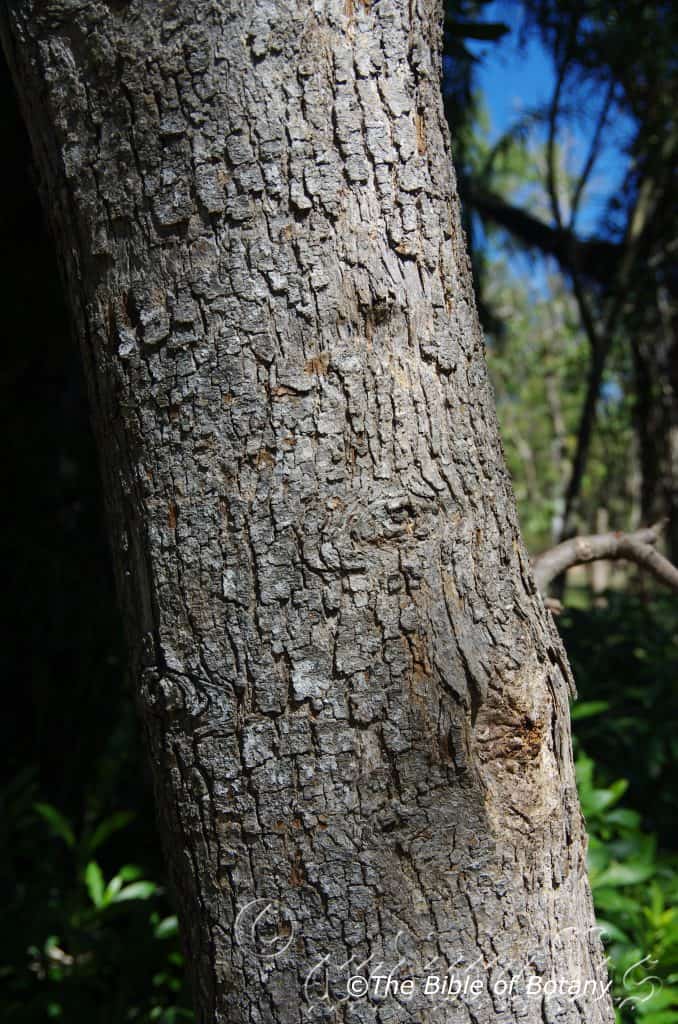
Mount Cootha Botanic Gardens Qld.
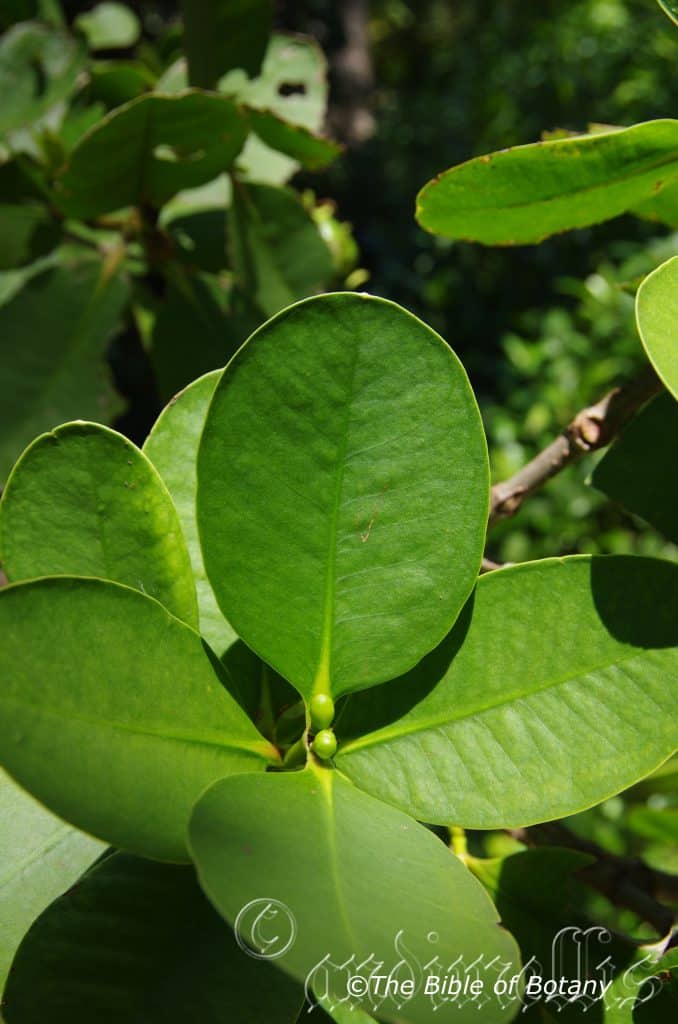
Mount Cootha Botanic Gardens Qld.
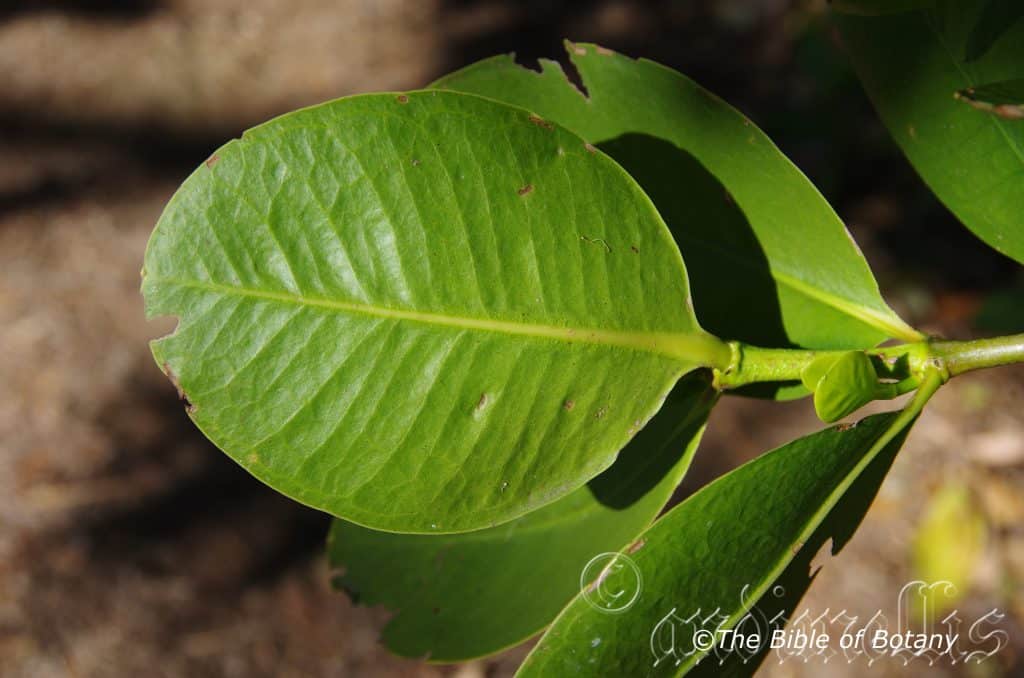
Mount Cootha Botanic Gardens Qld.
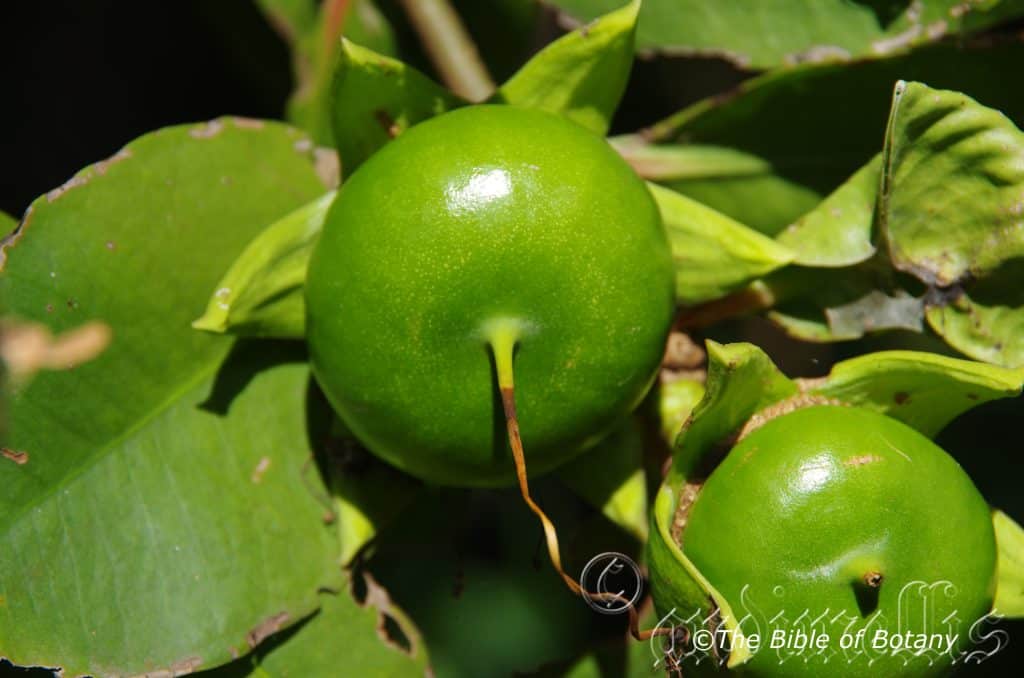
Mount Cootha Botanic Gardens Qld.
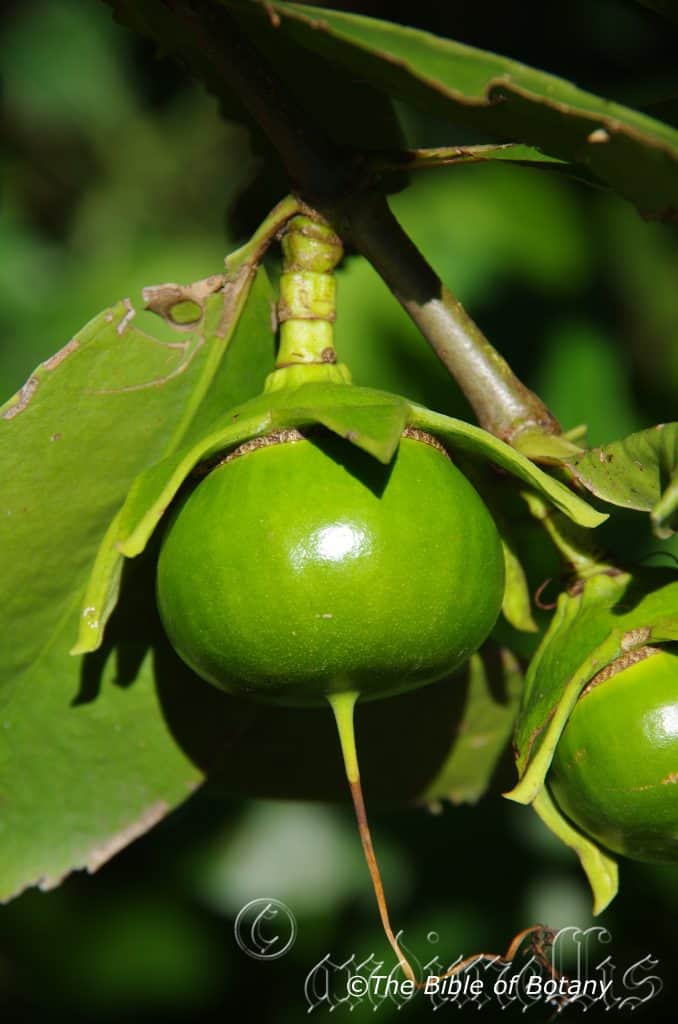
Mount Cootha Botanic Gardens Qld.
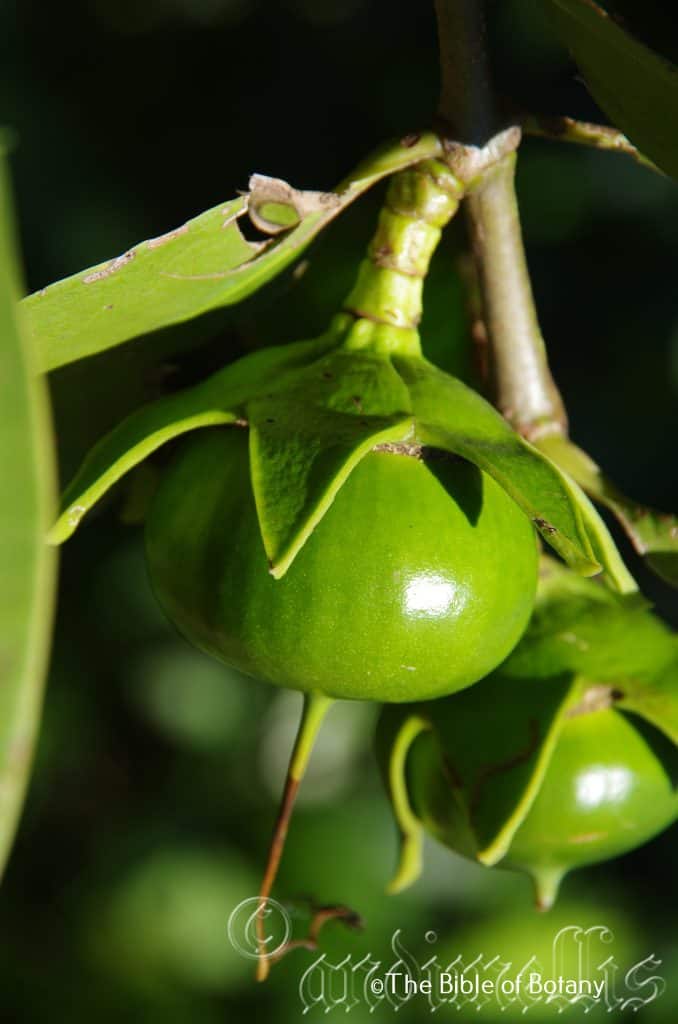
Mount Cootha Botanic Gardens Qld.
Sonneratia caseolaris
Classification:
Unranked: Eudicots
Class: Rosids
Order: Myrtales
Family: Lythraceae
Genus: Is named in honour of Pierre Sonnerat; 1748–1814, who was a French naturalist, colonial administrator, writer and explorer. He described numerous species of plants and animals on his travels especially around India and China.
Specie: From Case, which is Latin for cheese and Laris which is Latin for a seed. It refers to the seeds resembling a round ball of Dutch Edam cheese.
Sub specie:
Common Name: Mangrove Apple or Mangrove Persimmon.
Distribution:
Sonneratia caseolaris is found on Melville Island and Darwin in the Northern Territory and south from Cape York Penninsular to Proserpine in far north eastern coastal Queensland.
Elsewhere it is found east from north eastern Africa, Hainan Island in southern China, India, Oman, Pakistan to Indonesia, Malaysia, New Caledonia New Guinee, Papua, Philippines Sri Lanka and Yemen.
https://avh.ala.org.au/occurrences/search?taxa=Sonneratia+caseolaris#tab_mapView
Habitat Aspect Climate:
Sonneratia caseolaris prefers light dappled shade to full sun. It is common on the landward habitats of intertidal mangrove forests and extends inland along tidal creeks usually as far as the influence of salinity extends. Its habitats consist of river banks and tidal estuaries with mud banks, often in upstream estuarine positions of rivers subjected to large volumes of freshwater run-off. In some instances it is found growing in fully fresh water without any connection with brackish water except for storm tidal surges. The altitude ranges from 0 meters ASL to 10 meters ASL.
The temperatures range from 7 degree in August to 44 degrees in January.
The rainfalls range from lows of 1500mm to 3200mm average per annum though this is not as important as the environmental habitat it grows in.
Soil Requirements:
Sonneratia caseolaris prefers to grow deep muddy saline silts and gravelly boggy screes. The soils are derived from alluvial deposits and tidal deposits. The soils pH ranges from 7.5pH to 8pH. It tolerates periodic fresh water flushes and tidal inundations. Non saline soils to very saline soils are tolerated as are salt laden winds.
Height & Spread:
Wild Plants: 5m to 20m by 10m to 15m.
Characteristics:
Sonneratia caseolaris grows as a medium swamp tree with somewhat pendulous branches. The root system consists of extended cable roots giving rise to descending anchor roots and numerous erect, often branched, cone-shaped pneumatophores roots. These roots measure 200mm to 2500mm above the substrate. There are numerous narrow feeding roots developing horizontally in the substrate.
The young juvenile stems are semi glossy, bright green quadrangular, occasionally with 4 wings, with 2 pairs of glands. The older juvenile stems are semi glossy, pale grey and have short, fine, longitudinal furrows developing and a sparse covering of small lenticels. The trunk of mature trees is deep grey, somewhat tessellated and rough.
The oblong to obovate or elliptic leaves measure 40mm to 130mm by 20mm to 50mm in width. The flattened petioles measure 2mm to 9mm in length. The bases are attenuate, while the apex obtuse, sometimes with a mucronate tip. The concolourous laminas are grass-green and semi glossy. The margin is entire. The mid vein is slightly prominent on both laminas, while the numerous lateral veins are slightly prominent on the upper lamina.
The terminal inforescenses are born singularly or in groups of 2 or 3 individual flowers. The flowers are 5 to 8 merous. The short, quadrangular petioles measure 10mm to 16mm in length. The coriaceous calyx tube is smooth, with 5 to 8 long deltoid lobes longer than the tube, spreading in fruit. The tube measure 30mm to 45mm in length. The deep red, linear to narrow lanceolate petals measure 18mm to 30mm in length.
The numerous, strongly inflexed filaments are caduceous, reddish to crimson at the base turning white near the anthers and measure 20mm to 35mm in length. The white, basifixed, orbicular anthers dehisce transversely.
The white style measures 4mm to 6mm in length. The flowers appear all year with the flowers opening on dusk and last just one night. The strong fragrance similar to curdled milk indicates a nocturnal mammal maybe the pollinator.
The fruit is a depressed globose berry that measures 30mm to 40mm in length by 50mm to 75mm in diameter. The green, periocarp is fleshy, somewhat coriaceous and glossy. The style is persitant at the apex, while the calyx is persitant at the base, spreads widely but does not enclose the fruit. The numerous seeds are irregularly angularand measure 5mm to 7mm in length.
Wildlife:
Sonneratia caseolaris support native bees and native pollen flies when in flower.
According to Tomlinson, a study in west Malaysia found that the flowers are pollinated almost entirely by a single species of bat, Eonycterus spelaea. This may indicate that a local native bat may also be an intricate part to the trees pollination.
All parts of the plant are edible. The leaves can be used in stews, casseroles and stirfries. The flowers can be steamed to add a fragrance to steamed rice, while the mature fruits can be eaten raw or used similar to chokos as a vegetable or in stewed fruits or as pectin in jams and jellies.
There is work being done with positive results with alzheimers disease and includes high antioxidants for cholesterol sufferers.
Cultivation:
Sonneratia caseolaris is a medium tree for wet soggy soils in the tropics.
The tree is rather attractive with a crown of drooping branches that resemble the crown of a weeping willow. Its tolerance for waterlogged conditions, both freshwater and brackish means that it can also be grown along tidal river banks, ponds, reservoirs or where high water tables exist. It is a good native-plant substitute for the weeping willow.
Propagation:
Seeds: The seeds of Sonneratia caseolaris are viviparous meaning they sprout while still attached to the parent plant.
Seeds that are removed prior tosprouting need to be treated. The seeds are best treated by nicking the outer testa or soaking the seeds in warm water and allow them to stand for 6 to 8 hours.
Sow the freshly treated seeds directly into a seed raising mix, keeping them moist not wet. Do not over water the seeds as the seeds will damp off shortly after germination is initiated. Place the trays in a warm shaded area with 20mm to 30mm shade cloth is preferably. When the seedlings reach 20mm to 25mm tall, prick them out and plant them into 50mm native tubes using a good organic mix.
As the seedlings roots reach the bottom of the tubes plant them out into their permanent position. Do not delay.
Fertilize using Seaweed, fish emulsion or organic chicken pellets soaked in water and apply the liquid on an alternate basis. Fertilize every 2 months until the plants are well established then on an annual basis in September or March to maintain health, vigour and better flowering and fruiting.
Further Comments from Readers:
“Hi reader, it seems you use The Bible of Botany a lot. That’s great as we have great pleasure in bringing it to you! It’s a little awkward for us to ask, but our first aim is to purchase land approximately 1,600 hectares to link several parcels of N.P. into one at The Pinnacles NSW Australia, but we need your help. We’re not salespeople. We’re amateur botanists who have dedicated over 30 years to saving the environment in a practical way. We depend on donations to reach our goal. If you donate just $5, the price of your coffee this Sunday, We can help to keep the planet alive in a real way and continue to bring you regular updates and features on Australian plants all in one Botanical Bible. Any support is greatly appreciated. Thank you.”
In the spirit of reconciliation we acknowledge the Bundjalung, Gumbaynggirr and Yaegl and all aboriginal nations throughout Australia and their connections to land, sea and community. We pay our respect to their Elders past, present and future for the pleasures we have gained.

Mount Cootha Botanic Gardens Qld.
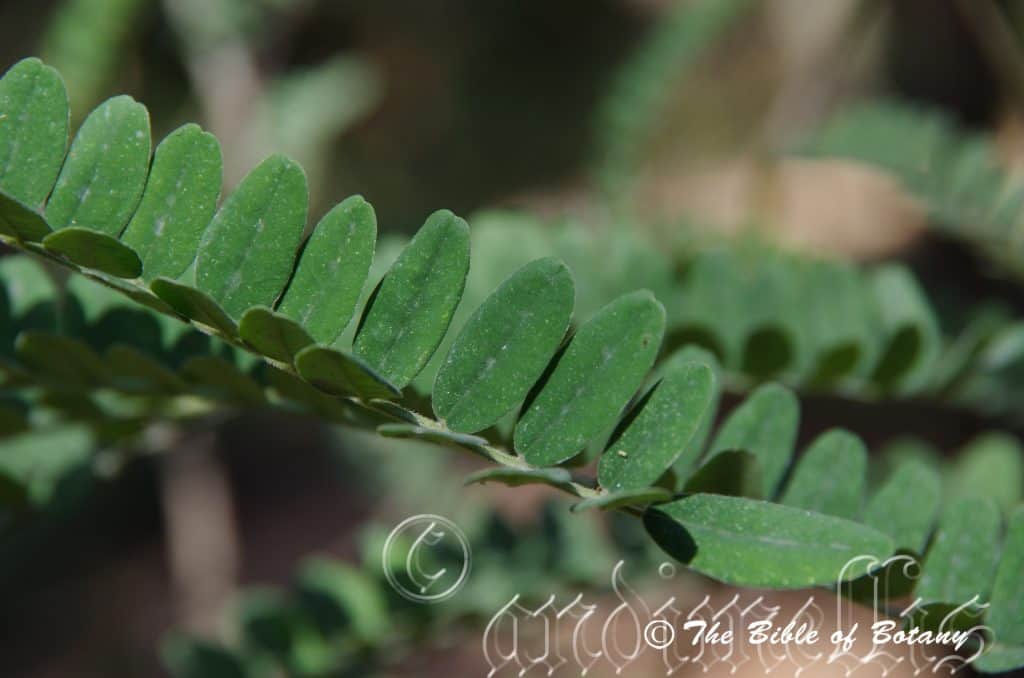
Mount Cootha Botanic Gardens Qld.
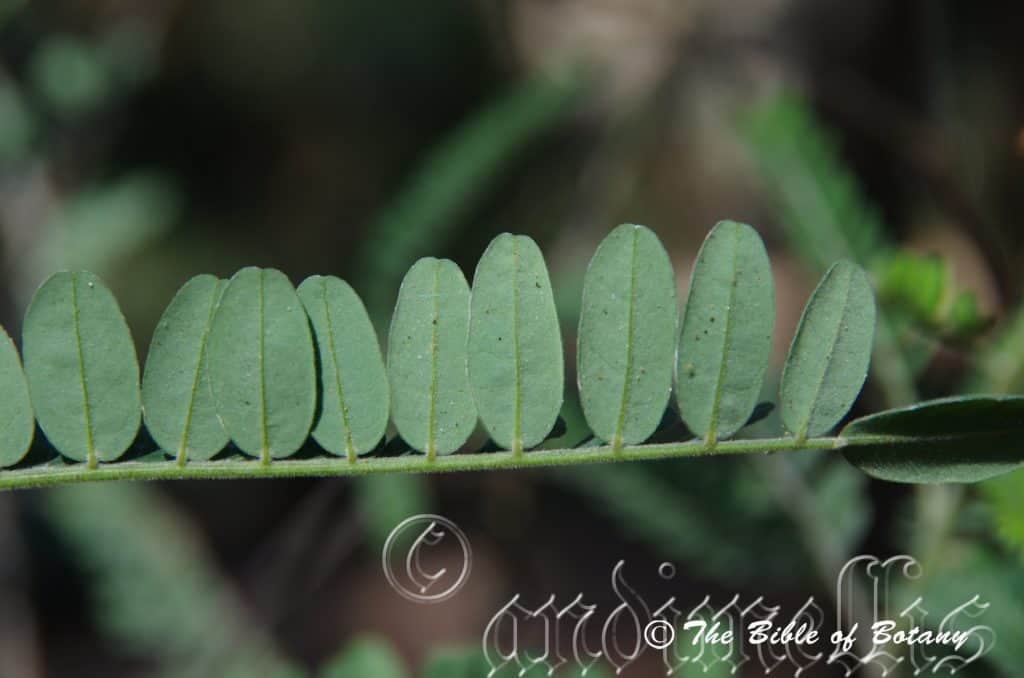
Mount Cootha Botanic Gardens Qld.
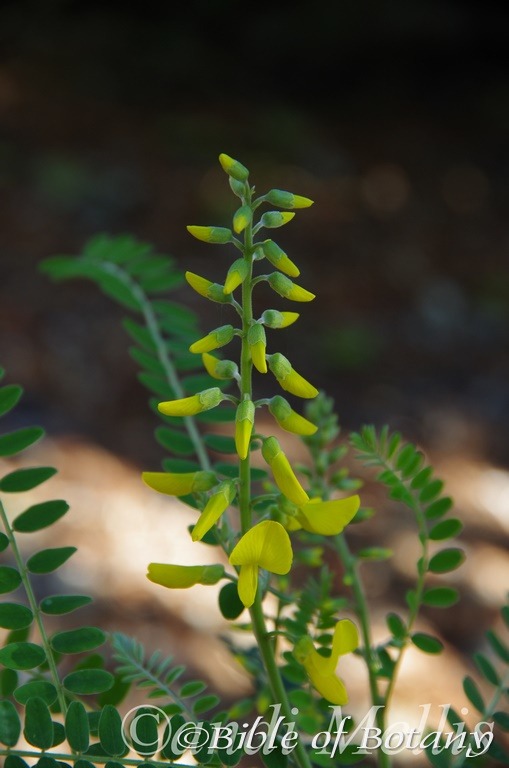
NCBG Coffs Harbour NSW
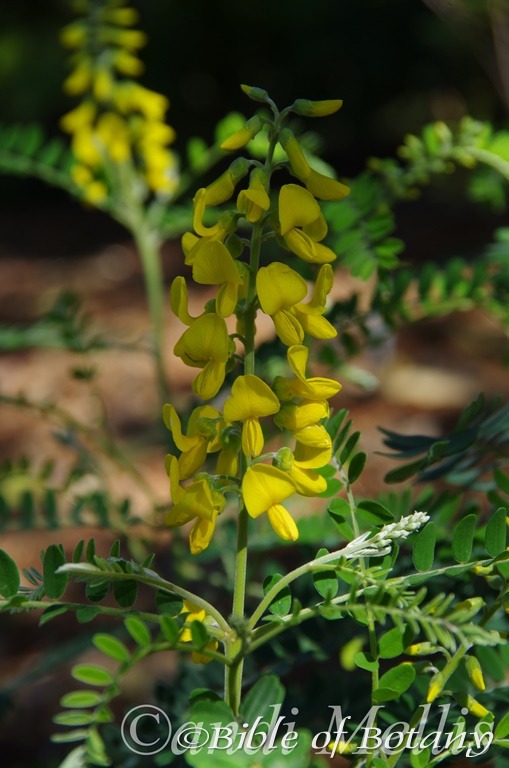
NCBG Coffs Harbour NSW

Richmond Range National Park NSW
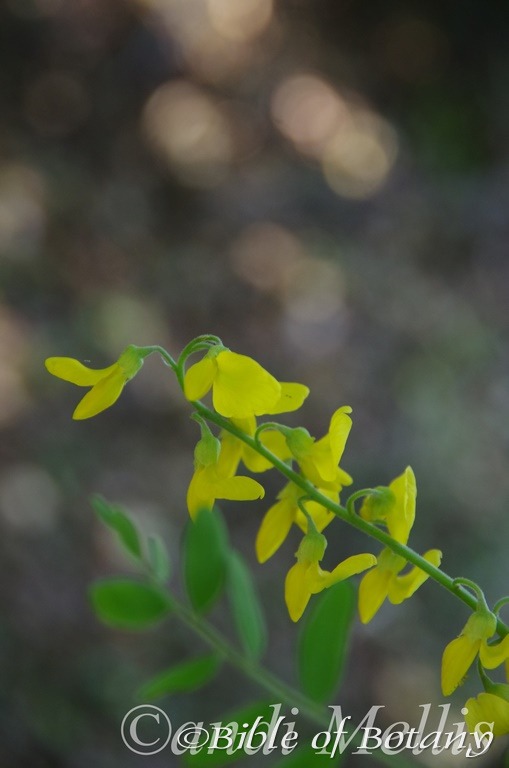
Richmond Range National Park NSW
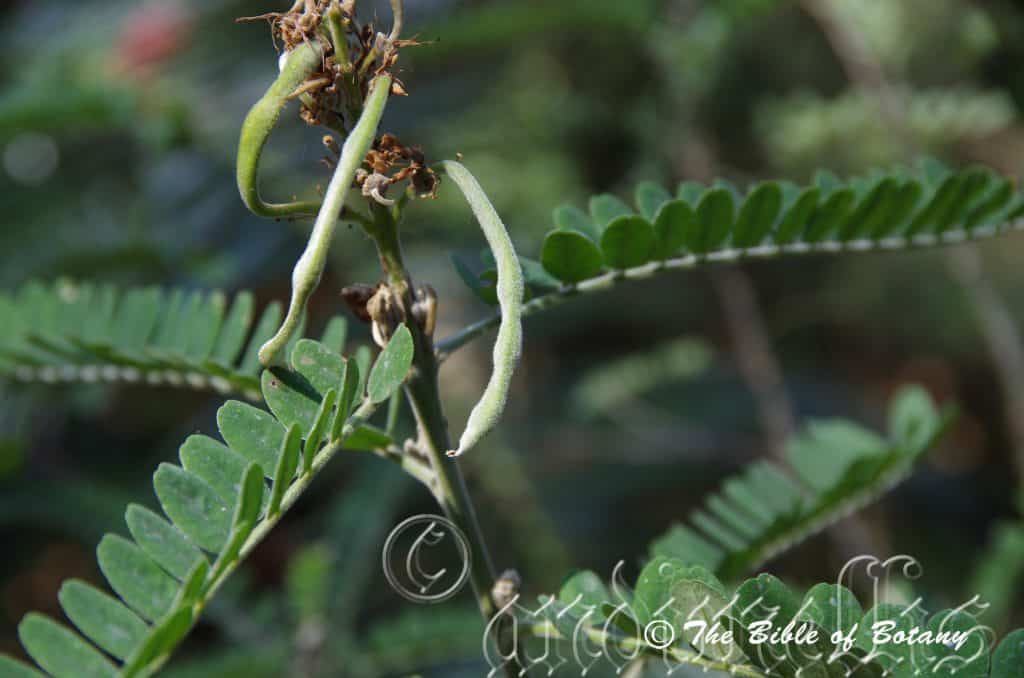
Mount Cootha Botanic Gardens Qld.
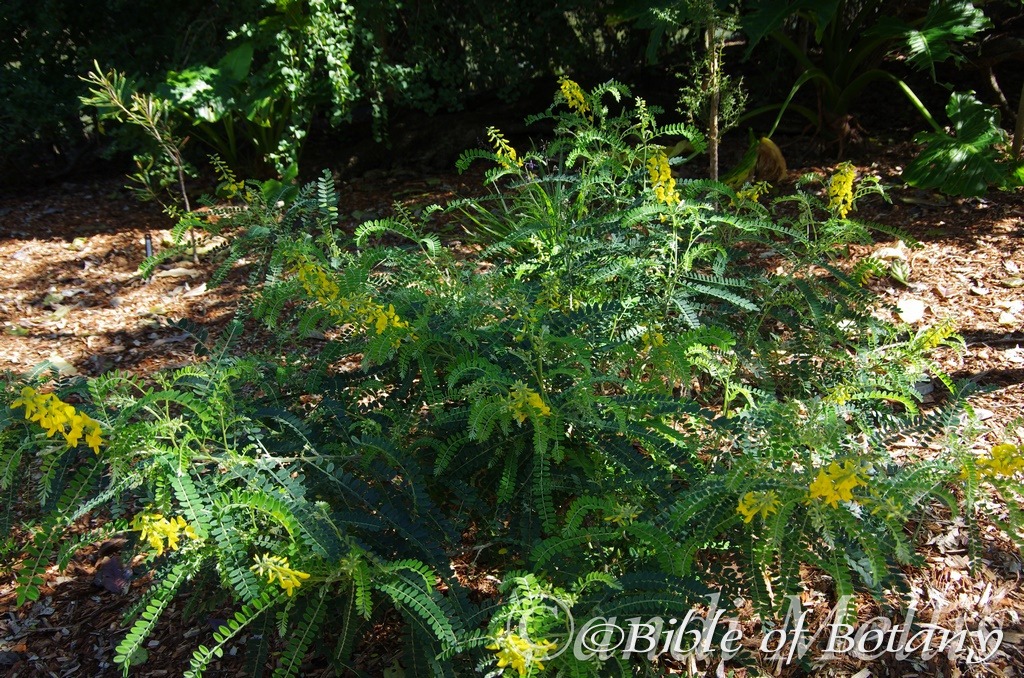
NCBG Coffs Harbour NSW
Sophora fraseri
Classification:
Unranked: Eudicots
Class: Rosids
Order: Fabales
Family: Fabaceae
Subfamily: Faboideae
Tribe: Sophoreae
Genus: From Sophora, which is Latinized for the Arabic word for a similar looking plant with yellow pea flowers. It refers to flowers, which resemble the Arabic plant.
Specie: Is named in honour of Charles Fraser; 1787-1831, who was an Australian botanist and horticulturalist who was sent to Brisbane to collect vegetable products of the land.
Sub specie:
Common Name: Brush Sophora or Chain fruit.
Distribution:
Sophora fraseri is found south from the Conondale Range in south eastern Queensland to Port Macquarie in north eastern coastal New South Wales with a further disjunct population further north on Koolkooroom Creek, in the Boyne Valley with an isolated population further to the north west, west of Hughenden in Queensland.
https://avh.ala.org.au/occurrences/search?taxa=Sophora+fraseri#tab_mapView
Habitat Aspect Climate:
Sophora fraseri prefers light dappled shade to full sun. It grows adjacent to subtropical rainforests or tropical rainforests in dry rainforests on moist soils. The altitude ranges from 10 meters ASL to 650 meters ASL.
The temperatures range from minus 2 degree in August to 40 degrees in January.
The rainfalls range from lows of 400mm to 2000mm average per annum.
Soil Requirements:
Sophora fraseri prefers to grow on sandy loams to medium clays. The soils are derived from decomposed red or orange sandstones, granites, metamorphic rocks or black basalts. The soils pH ranges from 5pH to 6.5pH. It does not tolerate water logged soils. Non saline soils to moderately saline soils are tolerated.
Height & Spread:
Wild Plants: 1m to 2m by 1.5m to 2.5m.
Characteristics:
Sophora fraseri grows as a sparsely branched, erect to spreading shrub. The grey branches are glabrous while the smaller stems are pale blue-green to pale grey-green and densely covered in soft off white canescent hairs.
The alternate, odd pinnate leaves of Sophora fraseri measure 60mm to 150mm in length by 15mm to 55mm in width. There are 21 to 35 leaflets on a rachis. The leaflets measure 6mm to 25mm in length by 3mm to 10mm in width. The petiole, rachis and petiolules are densely covered in soft, off white canescent hairs. The petioles measures 8mm to 20mm in length while the rachises measure 52mm to 130mm in length and the petiolules measure 1mm to 2mm in length. The bases are rounded while the apexes are obtuse or retuse. The discolourous laminas are mid blue-green, dull and sparsely covered in white puberulent hairs on the upper laminas while the lower laminas are densely covered in white canescent hairs. The flat laminas fold upwards at night or when stressed. The margins are entire. The mid vein is slightly prominent on the lower lamina and is visible on the upper lamina.
The inflorescences ofSophora fraseri are born on racemes from the terminals. There are 24 to 36 individual flowers on a raceme. The mid blue-green peduncles, rachises and pedicels are densely covered in white canescent hairs. The peduncles measure 0mm to 10mm in length while the rachises measures 90mm to 140mm and the pedicels measure 3mm to 10mm in length. The pale blue-green cupuliform calyxes are moderately covered white pubescent hairs and measure 3mm to 5mm in length. The 5 minute triangular calyx lobes are erect, and measure 0.5mm to 1mm in length. The pale yellow to bright yellow campanulate corollas measure 8mm to 11mm in length. The standard measures 8mm to 11mm in height by 12mm to 15mm in width. The pale yellow to bright yellow wing petals measure 8mm to 10mm in length by 5.5mm to 7mm in width while the pale yellow to bright yellow keel petals measure 7mm to 9mm in length by 5mm to 6mm in width.
The 9 or 10 inserted bright yellow filaments measure 5mm to 7mm in length while the anthers measure 0.5mm to 1mm in length.
The bright yellow style and stigma are glabrous while the green, ovary measures 1mm to 2mm in length. The pistil measures 5mm to 7mm. The flowers appear from September to November.
Sophora fraseri’s fruits are long moniliforme pods. The pods are sparsely to moderately covered in white pubescent hairs and measure 30mm to 100mm in length by 6mm to 8mm in diameter. The green pods turn yellowish before drying to a mid-brown to deep brown externally and fawnish internally when ripe. The calyx lobes are persistent on the ripe fruit. The indehiscent pods are sparsely covered in puberulent hairs and are irregularly constricted between seeds. The seeds 2 to 7 seeds measure 5mm to 6 mm in length by 3mm to 4.5mm in diameter.
Wildlife:
Sophora fraseri support native colony bees like Tetragonula carbonaria and native pollen flies when in flower.
Cultivation:
Sophora fraseri is a small shrub that should be grown in the open in full sun on sand or sandy loams. In cultivation it grows from 1.5 meters to 2 meters in height by 1.5 meters to 2 meters in diameter when grown in the open. It is often straggly needing some early pruning to make it bushier or plant it in small clusters of 3 to 5 plants. When cluster planting, plant them with 1 meter to 1.5 meter centers.
The plants can cope with temperatures as low as minus 2 degrees and up to 44 degrees once established. It is drought resistant once established but will defoliate if conditions are severe.
It looks great on rocky ledges, steep dry sandy banks and placed amongst boulders where a harsh but green look is required.
Sophora fraseri would make a good contribution to a sandy or rocky terrain rock garden. Here they can be used as fill in plants, scattered throughout the boulders. When you use them in an area that is strewn with large boulders do not over crowd the scene as the boulders are a formidable part of the scene. Sophora fraseri is well suited to such conditions so use contours to display the plants. Boulder country are almost always rising and falling in contour and have sharp rises. Plants must be planted sparingly with short annuals between to give vibrant colour. Make the scene so you can see over the tallest ones with the exception of one or two plants at the most. The idea is to achieve a feeling of expansive harshness. This can be achieved with using Sophora fraseri’s mid blue-green oblong leaves which contrast well with finer pale green or deep green or red coloured foliages. If large deep green leaf plants are wanted try using them as prostrate plants. Use a lot of procumbent plants like Hibbertia to make the rocks look larger and the spaces between the plants bigger. Mix them with other smaller shrubs so none of them dominate the scene but blend in to give a mosaic of foliage colours that you oversee. Actinotis helianthi, Hovea acutifolia, Boronia ledifolia, dwarf Acacia specie or red flowering Grevillea specie for a few great contrasting foliages and flower colour.
Propagation:
Seeds: The seeds of Sophora fraseri can be removed easily from the ripe pods. The seeds are best treated by nicking the outer testa or soaking the seeds in hot water not boiling water and allow them to stand for 6 to 8 hours.
Sow the freshly treated seeds directly into a seed raising mix, keeping them moist not wet. Do not over water the seeds as the seeds will rot off shortly after germination takes place. Place the trays in a warm shaded area with 20mm shade cloth in the bush house. When the seedlings are 20mm to 25mm tall, prick them out and plant them into 50mm native tubes using a good organic mix.
As the seedlings roots reach the bottom of the tubes plant them out into their permanent position. Do not delay.
Fertilize using Seaweed, fish emulsion or organic chicken pellets soaked in water and apply the liquid on an alternate basis. Fertilize every 2 months until the plants are well established then on an annual basis in September or March to maintain health, vigour and better flowering and fruiting.
Further Comments from Readers:
“Hi reader, it seems you use The Bible of Botany a lot. That’s great as we have great pleasure in bringing it to you! It’s a little awkward for us to ask, but our first aim is to purchase land approximately 1,600 hectares to link several parcels of N.P. into one at The Pinnacles NSW Australia, but we need your help. We’re not salespeople. We’re amateur botanists who have dedicated over 30 years to saving the environment in a practical way. We depend on donations to reach our goal. If you donate just $5, the price of your coffee this Sunday, We can help to keep the planet alive in a real way and continue to bring you regular updates and features on Australian plants all in one Botanical Bible. Any support is greatly appreciated. Thank you.”
In the spirit of reconciliation we acknowledge the Bundjalung, Gumbaynggirr and Yaegl and all aboriginal nations throughout Australia and their connections to land, sea and community. We pay our respect to their Elders past, present and future for the pleasures we have gained.
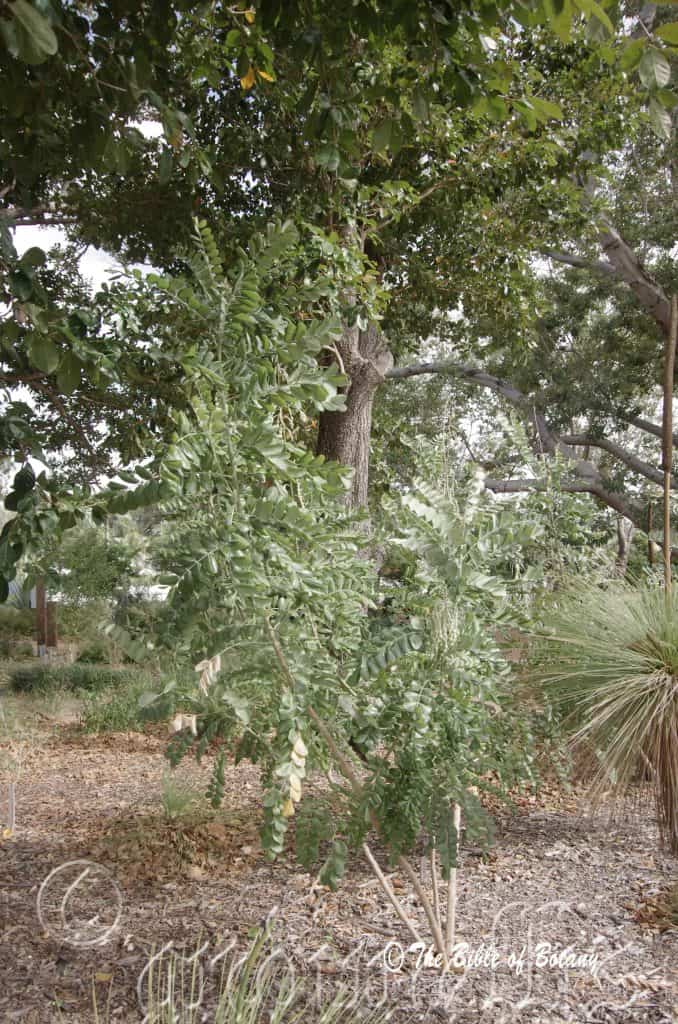
Townsville Qld.

Townsville Qld.
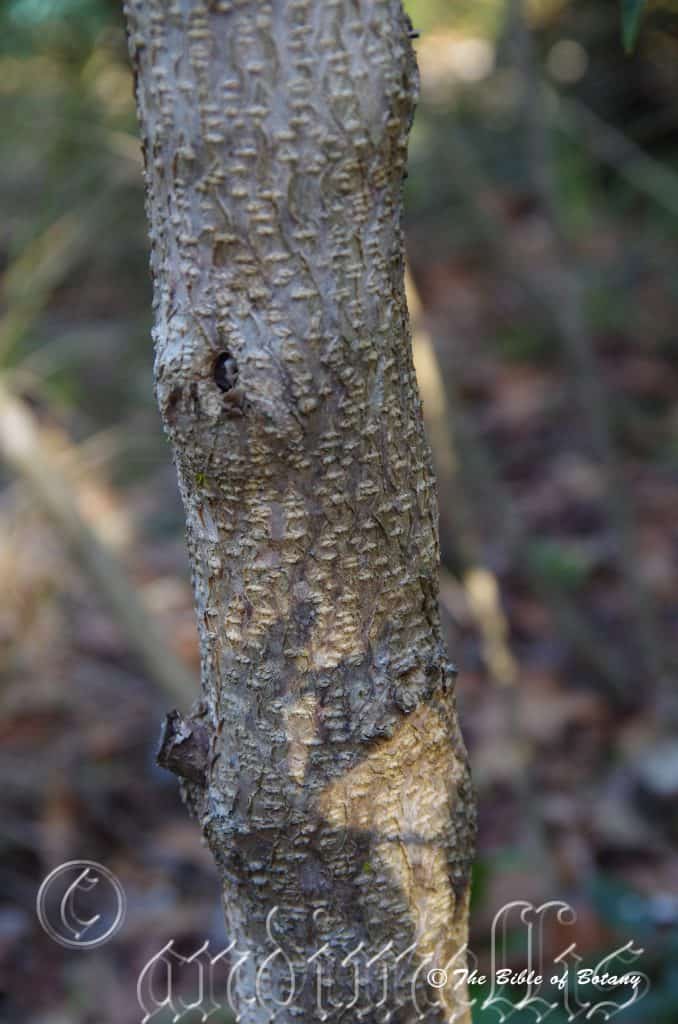

Indigiscapes Capalaba Qld.

Indigiscapes Capalaba Qld.

Indigiscapes Capalaba Qld.

Townsville Qld.
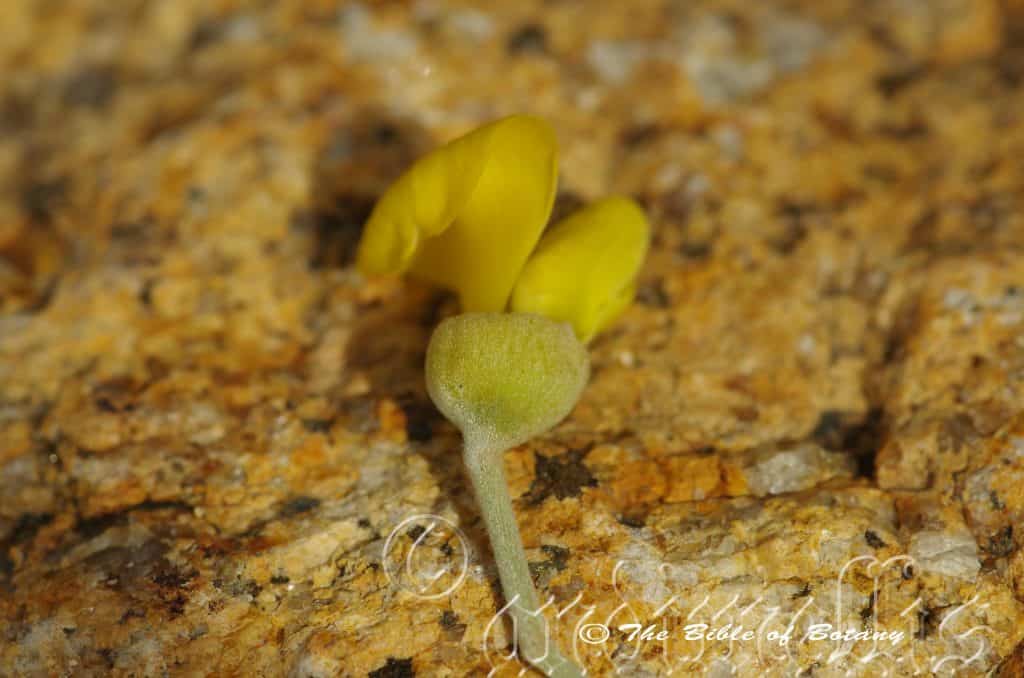
Townsville Qld.
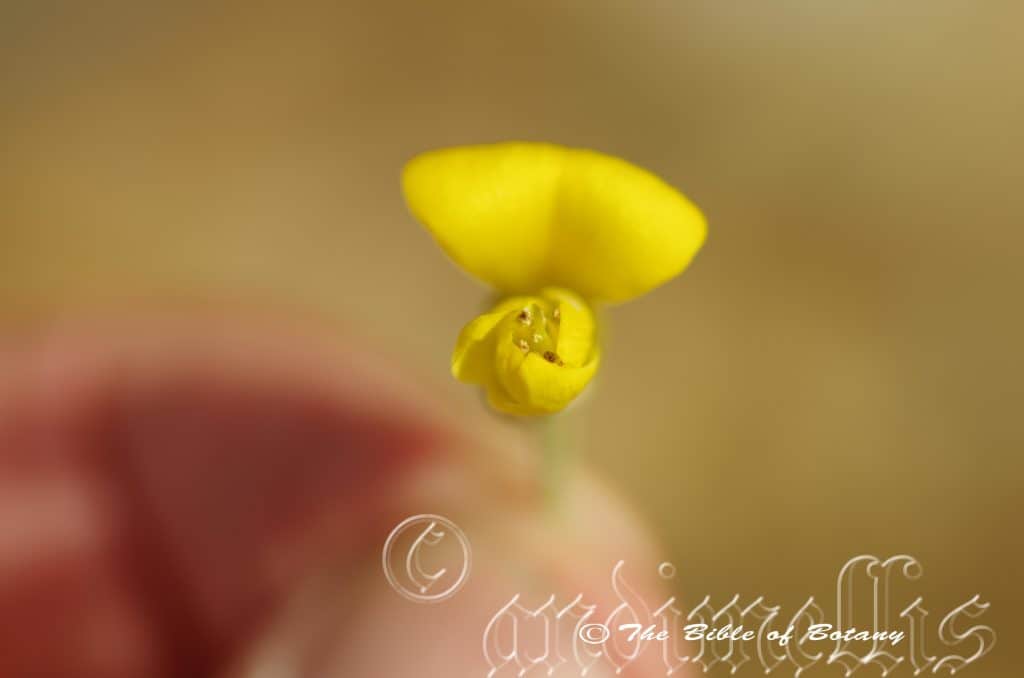
Townsville Qld.
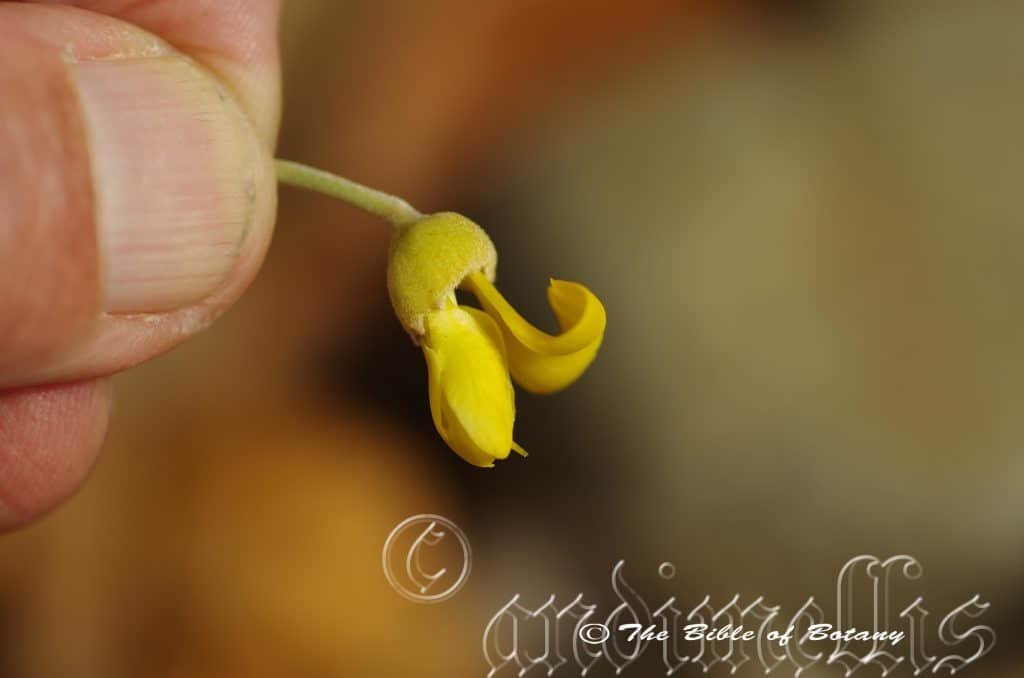
Townsville Qld.

Townsville Qld.
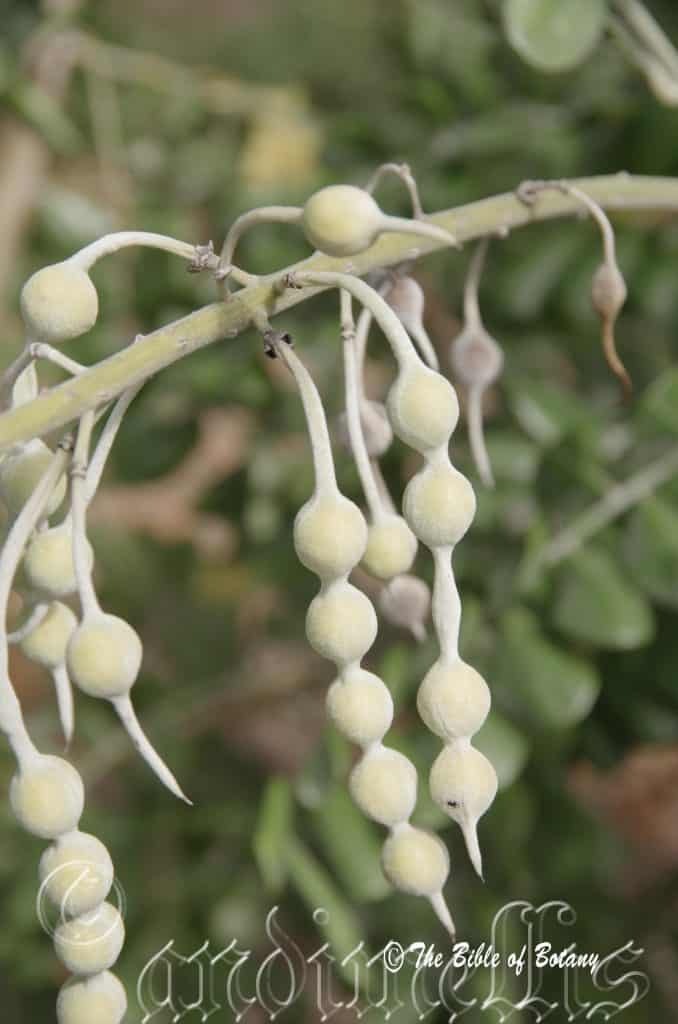
Townsville Qld.
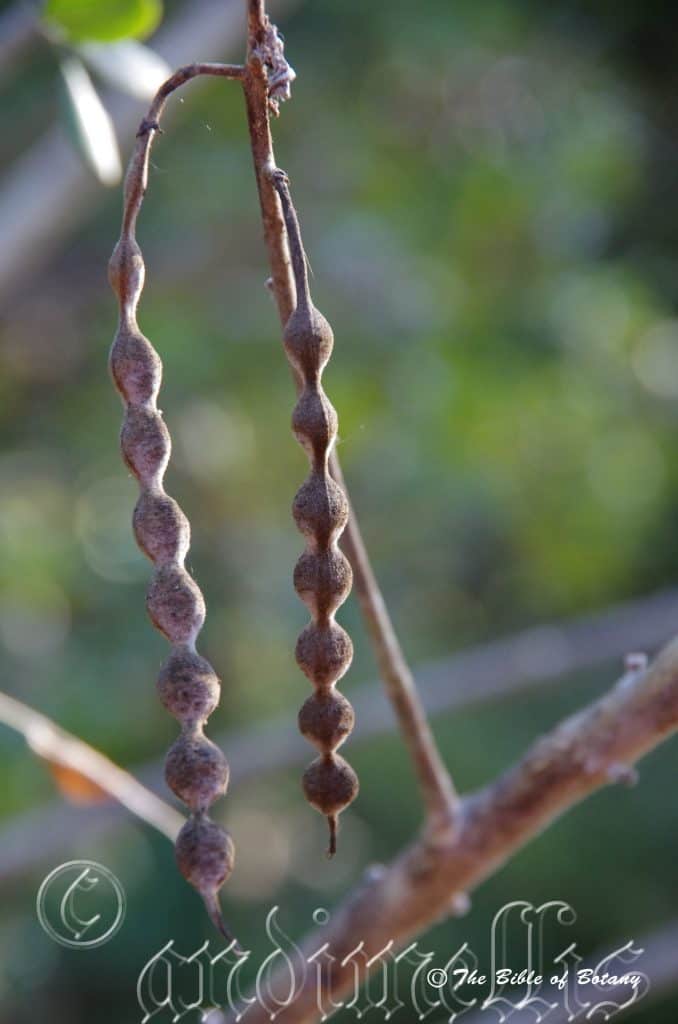
Indigiscapes Capalaba Qld.
Sophora tomentosa
Classification:
Unranked: Eudicots
Class: Rosids
Order: Fabales
Family: Fabaceae
Subfamily: Faboideae
Tribe: Sophoreae
Genus: From Sophora, which is Latinized for the Arabic word for a similar looking plant with yellow pea flowers. It refers to flowers, which resemble the Arabic plant.
Specie: From Tōmentōsa, which is Latin for to be covered in long down. It refers to organs or structures, which have hairs that are long, soft and wavy or matted.
Sub specie: Sophora tomentosa subsp. australis. From Terra Australis, which is Latin for land of the south. It refers to plants, which were first discovered from the land down under.
Sub specie: Sophora tomentosa subsp. tomentosa. From Tōmentōsa, which is Latin for to be covered in long down. It refers to hairs, which are long, soft and wavy or matted.
Common Name: Silver Bush.
Distribution:
Sophora tomentosa subsp. tomentosa is found close to the coast and adjacent Islands from Broken Island in Darwin Harbour in the west to Groote Eylandt in the east of the Northern Territory.
Sophora tomentosa subsp. australis is found south from the Torres Straight Islands to Shelley Beach near Port Macquarie. There is an isolated population on the Gilbert River west of the Great Dividing Range.
https://avh.ala.org.au/occurrences/search?taxa=Sophora+tomentosa#tab_mapView
Habitat Aspect Climate:
Sophora tomentosa prefers light dappled shade to full sun. It grows on frontal dunes or on the back dunes along the coast. The altitude ranges from 1 meter ASL to 30 meters ASL except for the Gilbert River population which is at around 590 meters ASL.
The temperatures range from 1 degree in August to 40 degrees in January.
The rainfalls range from lows of 850mm to 3200mm average per annum except for the Gilbert River population which can be as low as 600mm per annum.
Soil Requirements:
Sophora tomentosa prefers to grow sands. The soils are usually derived from accumulated beach sands, accumulated coral sands or rarely decomposed sandstone. The soils pH ranges from 6.5pH to 8pH. It does not tolerate water logged soils. Non saline soils to moderately saline soils are tolerated.
Height & Spread:
Wild Plants: 1m to 7m by 1m to 4m.
Characteristics:
The description is based on Sophora tomentosa subsp. australis. Sophora tomentosa grows as a multi branched, semi erect to spreading small tree. The grey branches are glabrous while the smaller stems are pale blue-green to pale grey-green and densely covered in soft, off white tomentose hairs.
The alternate, ovate to oblong-ovate leaves of Sophora tomentosa measure 100mm to 200mm in length by 44mm to 88mm in width. There are 11 to 17 leaflets on a rachis. The ovate to almost orbicular leaflets measure 20mm to 40mm in length by 10mm to 30mm in width. The petiole, rachis and petiolules are densely covered in soft, white to pale grey tomentose hairs. The petioles measures 10mm to 30mm in length while the rachises measure 60mm to 160mm in length and the petiolules measure 2mm to 4mm in length. The bases are rounded while the apexes are obtuse or retuse. The discolourous laminas are mid blue-green, dull and sparsely covered in white to pale grey tomentose hairs on the upper laminas while the lower laminas are bluish-green to densely covered in white to pale grey tomentose hairs. The laminas are flat and straight while the margins are entire and retrorse. The mid vein is strongly prominent at the base and slightly prominent at the apex on the lower lamina and is visible on the upper lamina.
The inflorescences ofSophora tomentosa are born on a long raceme r from the terminals. There are 40 to 70 individual buds on a raceme however not all the buds will develop into fully mature flowers. The mid blue-green peduncles, rachises and pedicels are densely covered white to pale grey tomentose hairs. The peduncles measure 20mm to 30mm in length while the rachises measures 80mm to 120mm in length and the pedicels measure 5mm to 7mm in length. The pale yellow-green cupuliform calyxes are covered in white to pale grey tomentose hairs and measure 5mm to 8mm in length while the 5 shallow obtuse lobes are erect and measure 0.5mm to 1mm in length. The pale yellow to deep yellow corollas measure 20mm to 25mm in length. The pale yellow to deep yellow standards measure 20mm to 25mm in length by 15mm to 20mm in width. The pale yellow to deep yellow wing petals measure 18mm to 23mm in length by 4mm to 5mm in width. The pale yellow to deep yellow keel petals are completely surrounded by the wing petals and measure 15mm to 20mm in length by 3mm to 4mm in width.
The 9 or 10 exserted stamens bend upwards. The stamens are deep yellow. The filaments measure 18mm to 23mm in length while the anthers measure 0.7mm to 1.2mm in length.
The yellow style and stigma are glabrous while the green ovary measures 1mm to 2mm in length. The pistil measures 19mm to 24mm in length. The flowers appear from June to August.
The fruits of Sophora tomentosa fruits are long moniliforme pods. The pods are sparsely to densely covered in white to pale grey tomentose hairs and measure 100mm to 180mm in length by 9mm to 14mm in diameter. The green pods turn silvery before drying to a deep brown to deep chocolate-brown externally and fawnish internally when ripe. The calyx lobes are persistent on the ripe fruit. The indehiscent pods are irregularly and strongly constricted between seeds. The seeds 5 to 10 seeds measure 5mm to 7mm in length by 3mm to 5mm in diameter.
Subspecie Differences:
Sophora tomentosa subsp. tomentosa grows to 7 meters in height. The stems and leaves are usually sparsely covered in white to pale grey tomentose hairs.
Sophora tomentosa subsp. australis grows to 5 meters in height. The stems and leaves are usually densely covered in white to pale grey tomentose hairs.
Wildlife:
Sophora tomentosa support native colony bees like Tetragonula carbonaria and native pollen flies when in flower.
Cultivation:
Sophora tomentosa is a medium shrub to small tree that should be grown in an open sunny position on sand or sandy loams. In cultivation it grows from 2 meters to 7meters in height by 1.5 meters to 5 meters in diameter depending on the sub specie when grown in the open. It is often bushy branching from the ground when grown in the open and may need the lateral shoots removed to ensure it grows into a small tree if that is the desired feature. It looks great when planted in clusters with one grown as a tree and the others as shrubs. If this is the aim plant 3 to 5 plants with 3 meter to 5 meter centers.
The plants can cope with temperatures as low as minus 2 degrees and up to 44 degrees once established. It is drought resistant once established but will defoliate if conditions are severe.
It is an ideal subject and very suited to semi-arid areas.
Sophora tomentosa would make a good contribution to a sandy or rocky arid garden. Here it can be used as the feature plant in small or medium gardens to great effect. Scattered throughout the garden it is quick growing and will give shade within a few years. Whether it is used it in an area that is strewn with large boulders or flat as a pancake do not over crowd the scene as the boulders are a formidable part of the scene or the flatness can be accentuated. Sophora tomentosa is well suited to such conditions so use contours to display the plants.
Boulder country are almost always rising and falling in contour and have sharp rises. Plants must be planted sparingly with short annuals between to give vibrant colour. Make the scene so you can see over the tallest ones with the exception of one or two plants at the most.
If the yard is flat in a semi-arid aspect then Sophora tomentose can be planted out to cover a large part of the yard by planting it at 5 meter to 6 meter centers. Here they can be intermingled with other small trees like Cupaniopsis anacharioides, Streblus pendulinus or Pittosporum phylliraeoides which have good contrasting barks and foliage.
This can be achieved with using Sophora fraseri’s mid blue-green oblong leaves which contrast well with finer olive green or deep green foliages of the other trees. The use of a lot of procumbent plants like Hibbertia, Kennedia will enhance the spaces between the trees and make the area look a lot larger. Mix them with other smaller shrubs so none of them dominate the scene but blend in to give a mosaic of foliage colours that you oversee. Here the garden will look more lush and give a more compact look.
Propagation:
Seeds: The seeds of Sophora tomentosa can be removed easily from the ripe pods. The seeds are best treated by nicking the outer testa or soaking in hot water not boiling water and allow to stand for 6 to 8 hours.
Sow freshly treated seeds directly into a seed raising mix, keeping them moist not wet. Do not over water, as the seeds will rot off shortly after germination takes place. Place the trays in a warm shaded area with 20mm shade cloth in the bush house. When the seedlings are 20mm to 25mm tall, prick them out and plant them into 50mm native tubes using a good organic mix.
As the seedlings roots reach the bottom of the tubes plant them out into their permanent position. Do not delay.
Fertilize using Seaweed, fish emulsion or organic chicken pellets soaked in water and apply the liquid on an alternate basis. Fertilize every 2 months until the plants are well established then on an annual basis in September or March to maintain health, vigour and better flowering and fruiting.
Further Comments from Readers:
“Hi reader, it seems you use The Bible of Botany a lot. That’s great as we have great pleasure in bringing it to you! It’s a little awkward for us to ask, but our first aim is to purchase land approximately 1,600 hectares to link several parcels of N.P. into one at The Pinnacles NSW Australia, but we need your help. We’re not salespeople. We’re amateur botanists who have dedicated over 30 years to saving the environment in a practical way. We depend on donations to reach our goal. If you donate just $5, the price of your coffee this Sunday, We can help to keep the planet alive in a real way and continue to bring you regular updates and features on Australian plants all in one Botanical Bible. Any support is greatly appreciated. Thank you.”
In the spirit of reconciliation we acknowledge the Bundjalung, Gumbaynggirr and Yaegl and all aboriginal nations throughout Australia and their connections to land, sea and community. We pay our respect to their Elders past, present and future for the pleasures we have gained.
Sorghum leiocladum
Classification:
Class: Equisetopsida
Order: Poales
Family: Poaceae
Genus: From Sorgo, which is Italian for the sorghum grain. It refers to the close relationship of the Australian plants to the African and European species.
Specie: From Leîos, which is Ancient Greek or Leio, which is Latin for smooth or glabrous and Klados which is Ancient Greek or for a branch or stem. It refers to branches and stems, which are somewhat smooth and glossy.
Sub specie:
Common Name:
Distribution:
Sorghum leiocladum is found south from Mount Mulligan in far north Queensland to Buccan Cave Reserve in north eastern Victoria. It is found on the western slopes, on and east of the Great Dividing Range to the coast except for 3 isolated populations in western Queensland in the Lawn Hill Nature Reserve, near Oorindi and south west of Quilpie.
https://avh.ala.org.au/occurrences/search?taxa=Sorghum+leiocladum#tab_mapView
Habitat Aspect Climate:
Sorghum leiocladum prefers partial shade to dappled sun light. It grows in open dry sclerophyll forests, open Eucalytpus woodlands or in grassy woodlands mostly on hillside slopes. The altitude ranges from 10 meters ASL to 1450 meters ASL.
The temperatures range from minus 4 degrees in August to 42 degrees in January.
Rainfalls range from lows of 200mm to 2600mm average per annum.
Soil Requirements:
Sorghum leiocladum prefers poorer quality light clays to heavy clays. The soils are derived from decomposed sandstones, granites, metamorphic rocks, brown basalts, black basalts lateritic soils or shale. The soils pH ranges from 4.5pH to 7pH. It tolerates seasonal water logged soils for short periods. Non saline soils to very saline soils are tolerated as are salt laden winds.
Height & Spread:
Wild Plants: 0.6m to 1m by 0.2m to 0.3m.
Characteristics:
Sorghum leiocladum grows as an erect, tufted or caespitose annual grass with smooth, glabrous reddish-green to greenish-red culms. The culms measure 200mm to 600mm in length by 2.5mm to 3.2mm in diameter. The 3 or 4 nodes along the culms are densely covered in long white soft, ciliate hairs that measure 0.4mm to 0.5mm in length. The sheaths often become loose from the culms as they mature. The sheaths are smooth to slightly scabrous and glabrous. The ligules are membranous and measure 0.7mm to 1mm in length often with white ciliate hairs to 0.25mm in length. The orifice is covered in long white ciliate hairs that measure 5mm to 7mm in length.
The long linear leaves measure 200mm to 450mm in length by 10mm to 40mm in width. The concolourous laminas are mid grass-green to mid green and glabrous. The leaves turn brown when exposed to frost. The apexes are acute. The margins are entire and flat.
The inflorescences are loose panicles. The rachises, peduncles and pedicels are glabrous. The linear, lanceolate-ovate or panicles have numerous spikelets and measure 70mm to 1530mm in length.
The reddish-brown spikelets are paired and measure 6mm to 8mm in length. The 2 lower spikelets are sessile while the upper spikelet is pedicellate. The terminal spikelets are triplets.
The similar glumes are elliptical, awn less and measure 6mm to 7mm in length. The margins are covered in white ciliate hairs. The hairs measure 0.3mm to 0.5mm in length. The lower glumes have 7 to 11 nerves with long white hirsute hairs that measure 1.5mm to 2mm in length. The upper of the glumes have 5 nerves with white hirsute hairs that measure 1mm in length.
The palea are rather long, entire, initially smooth and glabrous and at times become indurated and white in fruit white in fruit. The paleas are without keels and have 2 obscure nerves, glabrous and glossy. There are 2 lodicules. The sterile lemmas are without awns and measure 5.5mm to 7mm in length. There are 1 to 2 nerves. The palea are absent or reduced. The fertile lemmas measure 2.5mm to 4mm in length and are bi lobed. The margins are covered in white ciliate hirsute hairs that measure 0.2mm to 0.25mm in length. The single long awn measures 20mm to 25mm in length from the sinus. The palea is absent or reduced.
There are 3 filiform pale yellow filaments and anthers. The flowers appear from late November to February.
The fruits are narrow, compressed grains with a short hilum and long embryo. The green grains turn fawnish-yellow when ripe. The grains measure 1.1mm to 1.4mm in length.
Confusing Species:
Sorghum leiocladum orifice is covered in long white ciliate hairs that measure 5mm to 7mm in length.
Sorghum halepense is an introduced weed that has the potential to hybridize with several native specie of Sorghum. The orifice is glabrous.
Wildlife:
Sorghum leiocladum leaves are eaten by most herbaceous mammals while the seeds are eaten by most seed eating birds.
The leaves can cause cyanide poisoning especially when they have been affected by frost, are wet from dew or rain and under stress with wilt.
Cultivation:
Sorghum leiocladum is a large, dense, compact, erect, tufted grass for large gardens on drier slopes and hills where it can form large colonies. It can be slashed and will recover very quickly but is not suitable for long term heavy grazing.
It is ideally suited for growing in full sun to lightly shaded areas on slopes where it is free draining but maintains soil moisture for extended periods following good rain.
It is a preferred fodder crop which yields good quantities or trash but has the problem of possible cyanide toxicity. It has the ability to produce good hay and the seeds have been used in the process of making flower by local indigenous people.
It is an excellent grass for bank restoration projects adding copious quantities of mulch and ground stabilization.
Propagation:
Seeds:
Collect seeds after the grains turn white and begin to fall to the ground.
Sow the seeds directly into a seed raising mix and place the tray beneath 20mm shade cloth. When the seedlings are 25mm to 40mm tall, prick them out and plant them into 50mm native tubes using a seed raising mix.
Once the seedlings reach 100mm to 150mm in height plant them out into their permanent position.
Alternatively the seeds can be sown with a grain planter for larger areas.
Fertilize using Seaweed, fish emulsion or organic chicken pellets soaked in water and apply the liquid on an alternate basis. Fertilize every 2 months until the plants are well established to maintain health, vigour and better flowering.
Further Comments from Readers:
“Hi reader, it seems you use The Bible of Botany a lot. That’s great as we have great pleasure in bringing it to you! It’s a little awkward for us to ask, but our first aim is to purchase land approximately 1,600 hectares to link several parcels of N.P. into one at The Pinnacles NSW Australia, but we need your help. We’re not salespeople. We’re amateur botanists who have dedicated over 30 years to saving the environment in a practical way. We depend on donations to reach our goal. If you donate just $5, the price of your coffee this Sunday, We can help to keep the planet alive in a real way and continue to bring you regular updates and features on Australian plants all in one Botanical Bible. Any support is greatly appreciated. Thank you.”
In the spirit of reconciliation we acknowledge the Bundjalung, Gumbaynggirr and Yaegl and all aboriginal nations throughout Australia and their connections to land, sea and community. We pay our respect to their Elders past, present and future for the pleasures we have gained.
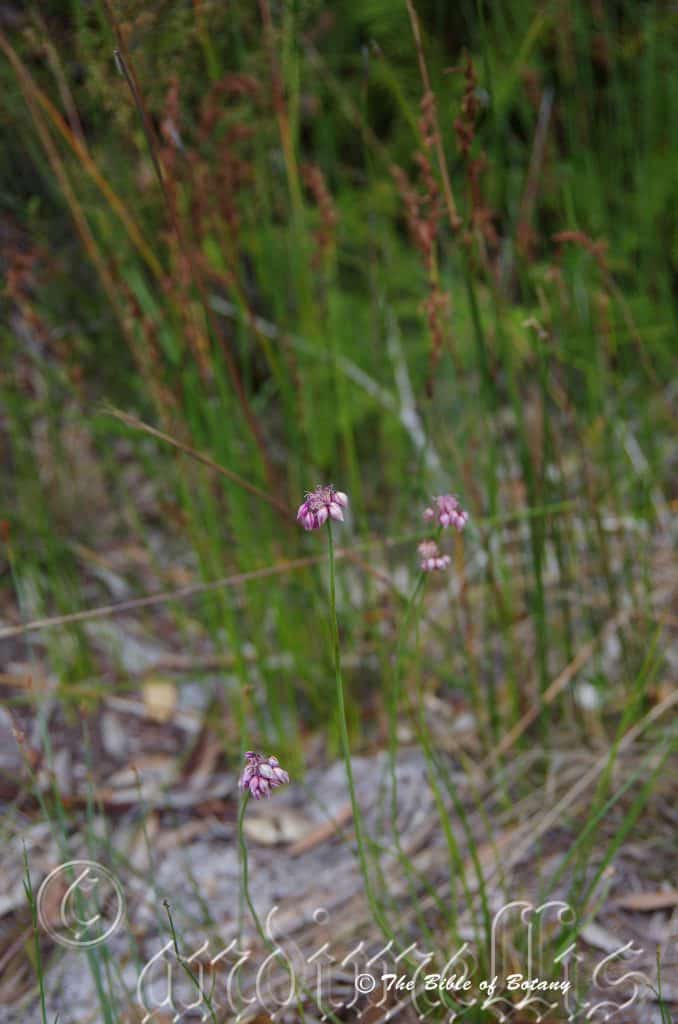
Innes Lake National Park NSW
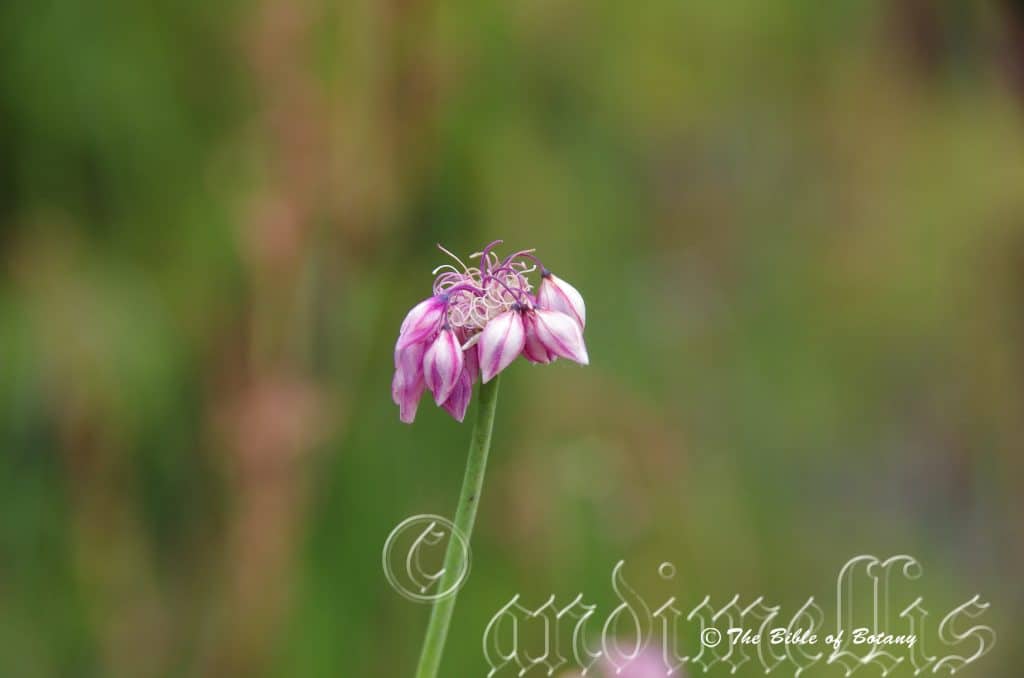
Innes Lake National Park NSW
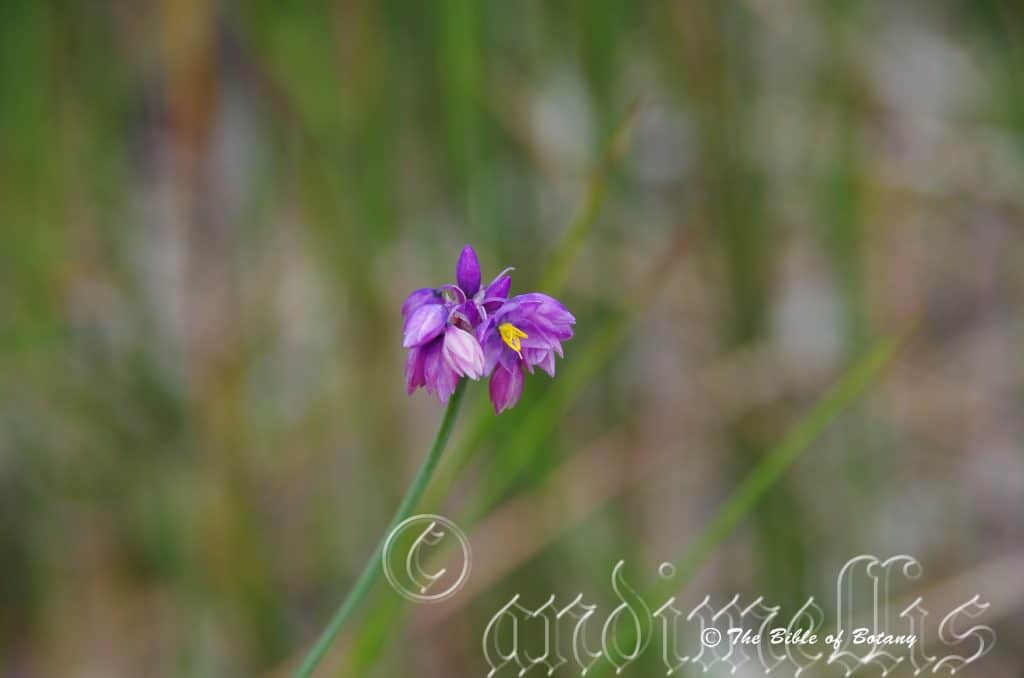
Innes Lake National Park NSW
Sowerbaea juncea
Classification:
Class: Equisetopsida
Order: Asparagales
Family: Asparagaceae
Subfamily: Solanoideae
Genus: Is named in honour of James Sowerby; 1757-1822, who was an English illustrator who illustrated the 36 volumes of J. E. Smiths “English Botany”.
Specie: From Juncus, which is Ancient Greek for a rush or Jingere, which is Latin for to tie or bind. It refers to plants, which thrive wet places with reed like foliage which was used for weaving and tie articles together.
Sub specie:
Common Name: Rush Lily or Vanilla Plant.
Distribution:
Sowerbaea juncea is found south from the Burnett Coast in south eastern coastal Queensland to Wilson’s Promontory in southern coastal Victoria and then south on Flinders Island in Bass Straight and from Icena Creek to Thomas Creek west of Ansons Bay in eastern Tasmania. It is found mainly within 30 kilometers of the coast except in the Sydney basin where it extends inland to 120 kilometers on the Blue Mountains.
https://avh.ala.org.au/occurrences/search?taxa=Sowerbaea+juncea#tab_mapView
Habitat Aspect Climate:
Sowerbaea juncea prefers light dappled shade to full sun. It usually grows in coastal heaths behind the frontal dunes in damp wallums. The altitude ranges from 10 meters ASL to 600 meters ASL.
The temperatures range from minus 3 degree in August to 36 degrees in January.
The rainfalls range from lows of 650mm to 2000mm average per annum.
Soil Requirements:
Sowerbaea juncea prefers to grow on sands to sandy loams. The soils are usually derived from accumulated beach sands or at times alluvial deposits or decomposed red or orange sandstones. The soils pH ranges from 5.5pH to 7pH. It tolerates seasonal water logged soils and seasonal high water tables. Non saline soils to moderately saline soils are tolerated.
Height & Spread:
Wild Plants: 0.4m to 0.75m by 0.2m to 0.4m.
Characteristics:
Sowerbaea juncea grows as a small tufted perennial with glabrous rhizomes. The ligules measure 2.5mm to 12mm in length.
The semi terete, filiform leaves measure 50mm to 500mm in length by 0.8mm to 1.8mm in width. The bases are clasping while the apexes are obtuse. The concolourous laminas are deep grass-green, semi glossy to dull and glabrous. The margins are entire. The mid vein is slightly prominent on the lower laminas.
The inflorescences of are born on long scapes that measure 80mm to 750mm in length. The 18 to 26 individual flowers are in clusters near the apexes and measure 15 to 35mm in diameter. The ovate to elliptical outer bracts measure 4mm to 7.5mm in length. The ovate to elliptical inner bracts are covered in white fimbriate hairs and measure 4mm to 7.5mm in length. The robust peduncle is usually simple or at times divides twice or rarely thrice. The pedicels measure 1mm to 14mm in length and are spreading to decurved.
The 3 lavender, deep pink to pale pink or rarely white outer tepals have acute to broad acute or obtuse apexes. The outer tepals measure 5mm to 8mm in length. The inner tepals are similar to the outer tepals but measure 5mm to 9mm in length with broader apexes.
The 3 yellow-green to greenish-yellow fertile filaments measure 1.2mm to 1.8mm in length while the deep yellow-orange smooth anthers measure 2.5mm to 3.3mm in length. The 3 staminodes are similar to the fertile filaments and occasionally with anther vestigial anthers that measure 0.4mm to 0.5mm in length.
The white style and stigma are glabrous while the superior, green, ovoidal ovary measures 2mm to 2.5mm in length. The glabrous pistil measures 3.5mm to 4.8mm. The flowers appear from April through to September.
The fruits are globose capsules. The capsules are glabrous and measure 2mm to 3mm in length by 1.8mm to 2.5mm in diameter. The green capsules turn mid grey-brown. The seeds testa is verrucose while the seeds measure 1.9mm to 2.5mm in length.
Wildlife:
Sowerbaea juncea support native wasps and native pollen flies.
Cultivation:
Sowerbaea juncea is a beautiful perennial tufted plant for the moist rockery or bush garden. It should be grown in the open in full sun or dappled light on sand or sandy loams. In cultivation it grows from 0.5 meters to 0.8 meters in height by 0.3 meters to 0.5 meters in diameter when grown in the open.
It looks great when it is allowed to form large colonies especially in flower. It can cope with temperatures as low as minus 5 degrees and up to 40 degrees. It is drought resistant once established but drought conditions will greatly affect the flowering later on.
Place them near old stumps and roots to make the stumps or roots look larger. Select an area of ground and let your hair down and be imaginative as this plant is very versatile in the garden. It can be used in moist heath scenes or in a boulder scene, around water features or in formal cottage gardens just as affectively. A billabong, waterfall or cascade makes no difference as when it is in flower the whole attention will be focused on the colour contrasting with the pink flowers or the reflection of time. It also looks great on rock ledges and steep moist banks.
Sowerbaea juncea would make a great contribution to a moist heath garden. Here they can be used as fill in plants, scattered throughout the boulders. When you use them in area that is strewn with large boulders do not over crowd the scene as the boulders are a formidable part of the scene. It is well suited to such conditions so use contours to display the plants. Boulder country are almost always rising and falling in contour and have sharp rises. Plants must be planted sparingly with short annuals between to give vibrant colour or used at the edge of a flat heath otherwise it is lost amongst the other foliages. Make the scene so you can see over the tallest ones with the exception of one or two plants at the most. The idea is to achieve a feeling of expansive harshness. This can be achieved with the strap like green leaves, contrasting well with finer pale green or deep green or red coloured foliages. If large deep green leaf plants are wanted try using them as prostrate plants. Use a lot of procumbent plants like Hibbertia specie to make the rocks look larger and the spaces between the plants bigger. Mix them with other smaller shrubs so none of them dominate the scene but blend in to give a mosaic of foliage colours that you oversee. Here I immediately think of Actinotis helianthi or Grevillea thelemanniana for two great contrasting foliages with Pattersonia specie for some vibrant colour.
Propagation:
Seeds: The seeds can be removed easily from the mature fruits.
Sow fresh seeds directly into a seed raising mix, keeping them moist not wet. Do not over water as the seeds will rot off before germination takes place. Place the trays in a cool shaded area with 50mm shade cloth in the bush house. When the seedlings are 20mm to 25mm tall, prick them out and plant them into 50mm native tubes using a good organic mix.
As the seedlings roots reach the bottom of the tubes plant them out into their permanent position. Do not delay.
Fertilize using Seaweed, fish emulsion or organic chicken pellets soaked in water and apply the liquid on an alternate basis. Fertilize every 2 months until the plants are well established then on an annual basis in September or March to maintain health, vigour and better flowering.
Further Comments from Readers:
“Hi reader, it seems you use The Bible of Botany a lot. That’s great as we have great pleasure in bringing it to you! It’s a little awkward for us to ask, but our first aim is to purchase land approximately 1,600 hectares to link several parcels of N.P. into one at The Pinnacles NSW Australia, but we need your help. We’re not salespeople. We’re amateur botanists who have dedicated over 30 years to saving the environment in a practical way. We depend on donations to reach our goal. If you donate just $5, the price of your coffee this Sunday, We can help to keep the planet alive in a real way and continue to bring you regular updates and features on Australian plants all in one Botanical Bible. Any support is greatly appreciated. Thank you.”
In the spirit of reconciliation we acknowledge the Bundjalung, Gumbaynggirr and Yaegl and all aboriginal nations throughout Australia and their connections to land, sea and community. We pay our respect to their Elders past, present and future for the pleasures we have gained.
Sparganium subglobosum
Classification:
Class: Equisetopsida
Order: Poales
Family: Sparganiaceae
Genus: From Sparganium, which is Ancient Greek for a swaddling blanket. It refers to the name given to the genus by Dioscorides and is believed to be in reference to the very long leaves on some of the early species.
Specie: From Sub, which is Ancient Greek/Latin for below or lower and Globosus, which is Latin for a globe. It refers to organs usually the fruits or at times the flower heads, which have a shape somewhat similar to an old light bulb.
Sub specie:
Common Name: Floating Burr Weed.
Distribution:
Sparganium subglobosum is found south from Lake Cootharaba in southern coastal Queensland to the Wonnangatta River and the Zebra River to Orbost in north eastern Victoria. It is also found near Cranbourne and on the Grampians in south western Victoria and further north in disjunct populations to near Cardwell far north Queensland. It is mainly found on and east of the Great Dividing Range except for 2 isolated populations near Lyndhurst and Carnarvon Gorge. It is mainly found on and east of the Great Dividing Range with the northern populations venturing onto the Western Plains.
https://avh.ala.org.au/occurrences/search?taxa=Sparganium+subglobosum#tab_mapView
Habitat Aspect Climate:
Sparganium subglobosum prefers partial shade to full sun light. It grows as an emergent species in wet situations, in shallow, clean freshwater swamps or slow moving fresh water to 500mm in depth. The altitude ranges from 100 meters ASL to 600 meters ASL.
The air temperatures range from minus 3 degrees in August to 38 degrees in January.
Rainfalls range from lows of 500mm to 2400mm average per annum.
Soil Requirements:
Sparganium subglobosum prefers better quality light muddy silts to heavy muddy silts. The silts are usually derived from alluvial deposits. The soils pH ranges from 6pH to 6.5pH. It tolerates water logged soils often growing in shallow water for extended periods. Non saline soils to slightly saline soils are tolerated.
Height & Spread:
Wild Plants: 0.6m to 1m by 0.3m to 0.5m or 1.3m when in flower.
Characteristics:
Sparganium subglobosum grows as an erect or decumbent rhizomatous, tufted or caespitose aquatic perennial grass like plant with smooth, glabrous, terete culms.
The long, linear basal leaves are erect or at times floating and measure 370mm to 1000mm in length by 1.5mm to 4.5mm in width or rarely to 9mm in width. The leaves get progressively smaller up the stem to the leaf like inflorescence bracts. The bases are clasping while the apexes are acute. The concolourous leaves are grass-green to grey-green and glabrous. The margins are entire. The broad obtuse midvein is strongly prominent on the adaxial surface and clearly visible on the abaxial surface.
The inflorescences are compound heads born along a thyrse. The rachises, peduncles and pedicels are grass-green and glabrous. The inflorescences are simple or with 2 or 3 alternate branches, the lowest measures 100mm to 150mm in length becoming progressively shorter towards the apex. The bracts are produced at the base of each branch or, where there are no branches, at the base of each female cluster. Each branch has 2 to 20 dense globose clusters of unisexual flowers.
The male heads measure 8mm to 15mm in diameter with 3 to 12 individual flowers. The white, filiform, filaments measures 0.5mm to 1mm in length.
The female heads measure 10mm to 20mm in diameter with 3 to 12 individual flowers. The individual ovaries measure 4mm to 7mm in length. The white styles measure 4mm to 5mm in length. The flowers appear from December to February.
The fruits are small obovate to fusiform drupes. The green drupes turn fawnish-yellow when ripe. The drupes separate into 4 individual pyrenes. The style hardens and forms a persistent beak on the achenes. The drupes measure 4mm to 6.4mm in length by 2mm to 4mm in diameter. The smooth drupes are slightly ridged longitudinally.
Wildlife:
Sparganium subglobosum wildlife is unknown to the author. The achenes are usually distributed by water currents. It is a very important fresh water fish and frog habitat and breeding ground.
It makes a very good aquarium plant.
Cultivation:
Sparganium subglobosum is a large, dense, straggly, erect or floating plant for large dams and back waters. It can form large colonies close to the banks.
Propagation:
Seeds: Collect the seeds as the drupes turn yellow and the seeds begin to harden off. The plants are very easy to propagate and maintain in outdoor ponds and tanks.
Sow the seeds directly into a seed raising mix and place the tray in a larger tray and keep wet at all times. The water temperatures should be maintained at around 18 degrees to 24 degrees. Place the trays beneath 20mm shade cloth. When the seedlings are 25mm to 40mm tall, prick them out and plant them into 50mm native tubes or a suitable pot using a seed raising mix for placing in outside tanks. Place a layer of stones over the mix to help stop the mix from rising to the surface and clouding the water.
Fertilize using Seaweed, fish emulsion or organic chicken pellets soaked in water and apply the liquid on an alternate basis. Fertilize every 2 months until the plants are well established then on an annual basis in September or March to maintain health, vigour and better flowering.
Further Comments from Readers:
“Hi reader, it seems you use The Bible of Botany a lot. That’s great as we have great pleasure in bringing it to you! It’s a little awkward for us to ask, but our first aim is to purchase land approximately 1,600 hectares to link several parcels of N.P. into one at The Pinnacles NSW Australia, but we need your help. We’re not salespeople. We’re amateur botanists who have dedicated over 30 years to saving the environment in a practical way. We depend on donations to reach our goal. If you donate just $5, the price of your coffee this Sunday, We can help to keep the planet alive in a real way and continue to bring you regular updates and features on Australian plants all in one Botanical Bible. Any support is greatly appreciated. Thank you.”
In the spirit of reconciliation we acknowledge the Bundjalung, Gumbaynggirr and Yaegl and all aboriginal nations throughout Australia and their connections to land, sea and community. We pay our respect to their Elders past, present and future for the pleasures we have gained.
Spartothamnella juncea
Classification:
Class: Equisetopsida
Order: Lamiales
Family: Lamiaceae
Genus: From Spartium, which is Ancient Greek for a grass used in weaving such as Spartium junceum and Thamnus, which is Ancient Greek for a bush. It refers to stems on shrubs, which were used in the manufacture of ropes or thatching.
Specie: From Juncus, which is Ancient Greek for a rush or Jingere, which is Latin for to tie or bind. It refers to plants, which thrive wet places with reed like foliage which was used for weaving and tie articles together.
Sub specie:
Common Name: Bead Rush.
Distribution:
Spartothamnella juncea is found south from Mount Garnet in far north Queensland to Razor Back Mountain near Camden in New South Wales. It is found on the Western Plains, Western Slopes, on and east of the Great Dividing Range to the coast. It is found as far west as Yarraman in Queensland and Condobolin in New South Wales.
https://avh.ala.org.au/occurrences/search?taxa=Spartothamnella+juncea#tab_mapView
Habitat Aspect Climate:
Spartothamnella juncea prefers partial shade to dappled sun light. It grows in sclerophyll forest, in dry rainforest, vine thickets or rarely in monsoonal forests. The altitude ranges from 2 meters ASL to 920 meters ASL.
The temperatures range from minus 3 degrees in August to 40 degrees in January.
Rainfalls range from lows of 300mm to 2200mm average per annum.
Soil Requirements:
Spartothamnella juncea prefers better quality light silts to heavy silts or light clays to medium clays. The soils are derived from decomposed sandstones, granites, metamorphic rocks, brown basalts or black basalts. The soils pH ranges from 4.5pH to 6pH. It tolerates seasonal water logged soils and seasonal high water tables. Non saline soils to moderately saline soils are tolerated.
Height & Spread:
Wild Plants: 0.8m to 2m by 0.6m to 1m
Characteristics:
Spartothamnella juncea grows as a scrambling divaricate shrub with angulated or longitudinally ribbed stems. The deep green stems are glabrous and somewhat sticky.
The leaves are often reduced to scale-like vestiges. The adult leaves are smaller than the immature leaves.
The leaves on young shoots larger and often caducous narrow elliptic or lanceolate and measure 3mm to 18mm in length by 2mm to 5mm in width. The deep green, glabrous petioles measure 0.2mm to 2mm in length. The discolourous leaves are deep green, glabrous semi glossy and sparsely covered in small yellow glands on the upper laminas while the lower laminas are paler. The laminas are flat and straight. The margins are entire or sparsely toothed. The mid vein is slightly prominent on the lower lamina while the lateral veins are not visible.
The inflorescences are born solitary from the leaf axils. The glabrous pedicels are deep-green and measure 1mm to 3mm in length. The bracts are scale like and measure 0.5mm to 1.5mm in length. The deep green calyxes measure 1mm to 2mm in length not including the 1mm to 2mm acute lobes. The white to pastel lilac corolla tube is sparsely covered in minute white puberulent hairs externally and is villous internally at the throat. The corolla tube measures 1.5mm to 2.5mm in length while the lobes measure 2mm to 3mm in length. The surfaces are sparsely covered in minute, globose, cream to pale yellow glands.
The 4 filiform white to pastel green filaments are sparsely covered in soft, white hirsute hairs and measures 0.2mm to 0.3mm in length while the fawnish anthers measure 0.15mm to 0.2mm in diameter.
The apex of the ovary is sparsely covered in minute, globose, cream to pale yellow glands. The bilobed style measures 2mm to 3mm in length. The flowers appear from December to February but can appear sporadically throughout the year under ideal conditions.
The fruits are small globose drupes. The green drupes turn scarlet-red when ripe. The calyx is persistent on the ripe fruits. The drupes measure 2mm to 4mm in length by 2mm to 4mm in diameter before separating into 4 single pyrenes.
Wildlife:
Spartothamnella juncea wildlife is unknown to the author.
Cultivation:
Spartothamnella juncea is an unusual medium open shrub for the large rockery, bush garden or rainforest garden.
It would make a great contribution to a sandy or rocky terrain semi arid, arid or desert garden scene. Here it can be used as the feature plants, scattered throughout the boulders or plains. When you use it in area that is strewn with large boulders do not over crowd the scene as the boulders are a formidable part of the scene. In a sandy flat garden it can help open up the garden to allow better air movement and light for more sensitive annuals and perennials. It is well suited to such conditions so use contours to display the plants and consider using it with smaller broad grey leaf or grey leaf plants for strong contrasts where maximum sunlight can be guaranteed and the drainage is at a premium. Make it the main feature in this type of scene this way you can see over the tallest which will make a small garden look larger.
Alternatively the area could be planted out with 2 or 3 taller but small trees sparingly so that plenty of indirect light reaches the ground. Beneath the trees it could be used in a similar manner as above but giving a more subdued contained look. This can be achieved with using the bare, deep green stems against more vertical plants with brightly coloured flowers to great effect. If large pale green leaf plants are wanted try using them as prostrate plants. Use a lot of procumbent plants like Hibbertia scandens as ground cover to make it look larger and taller. Some ideal plants that come to mind would be Swainsona formosa, Lecshenaltia formosa or Lecshenaltia biloba for a blue flower, Calytrix longiflora if pink is your thing, Solanum quadriloculatum or Grevillea thelemanniana for some great contrasting foliages.
Propagation:
Seeds: Collect the seeds after the grains turn white and some have commenced falling to the ground.
Sow the seeds directly into a seed raising mix and place the tray beneath 20mm shade cloth. When the seedlings are 25mm to 40mm tall, prick them out and plant them into 50mm native tubes using a seed raising mix.
Once the seedlings reach 100mm to 150mm in height plant them out into their permanent position.
Alternatively the seeds can be sown with a grain planter for larger areas.
Fertilize using Seaweed, fish emulsion or organic chicken pellets soaked in water and apply the liquid on an alternate basis. Fertilize every 2 months until the plants are well established to maintain health, vigour and better flowering.
Further Comments from Readers:
“Hi reader, it seems you use The Bible of Botany a lot. That’s great as we have great pleasure in bringing it to you! It’s a little awkward for us to ask, but our first aim is to purchase land approximately 1,600 hectares to link several parcels of N.P. into one at The Pinnacles NSW Australia, but we need your help. We’re not salespeople. We’re amateur botanists who have dedicated over 30 years to saving the environment in a practical way. We depend on donations to reach our goal. If you donate just $5, the price of your coffee this Sunday, We can help to keep the planet alive in a real way and continue to bring you regular updates and features on Australian plants all in one Botanical Bible. Any support is greatly appreciated. Thank you.”
In the spirit of reconciliation we acknowledge the Bundjalung, Gumbaynggirr and Yaegl and all aboriginal nations throughout Australia and their connections to land, sea and community. We pay our respect to their Elders past, present and future for the pleasures we have gained.
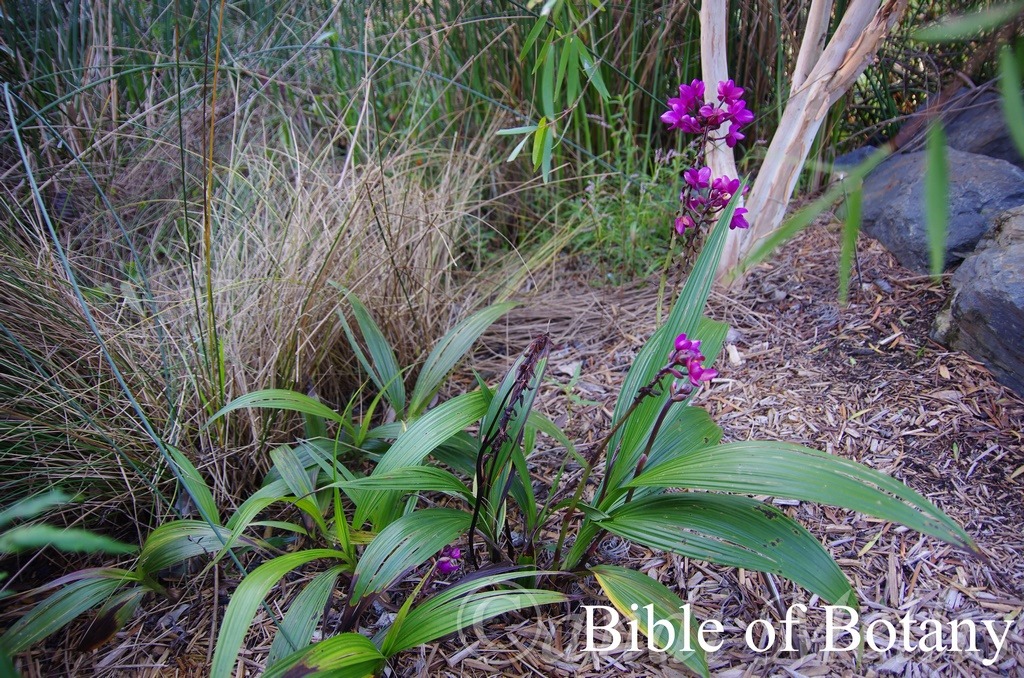
NCBG Coffs Harbour NSW
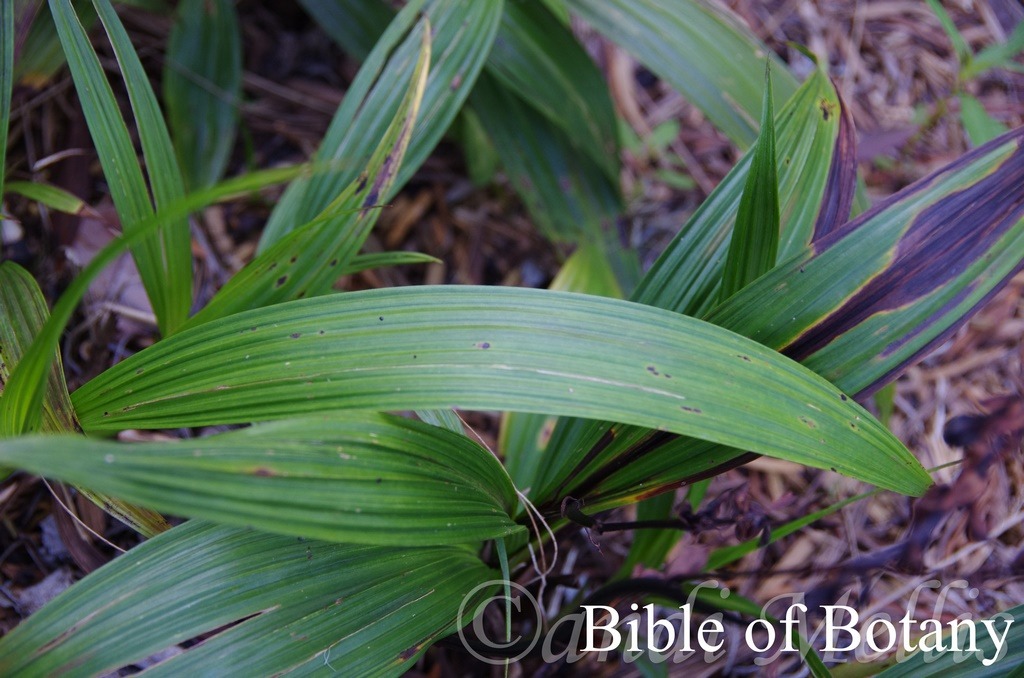
NCBG Coffs Harbour NSW
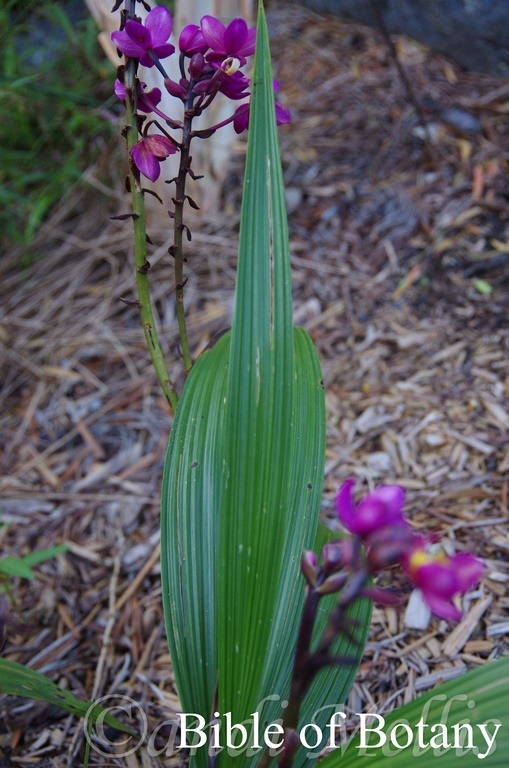
NCBG Coffs Harbour NSW
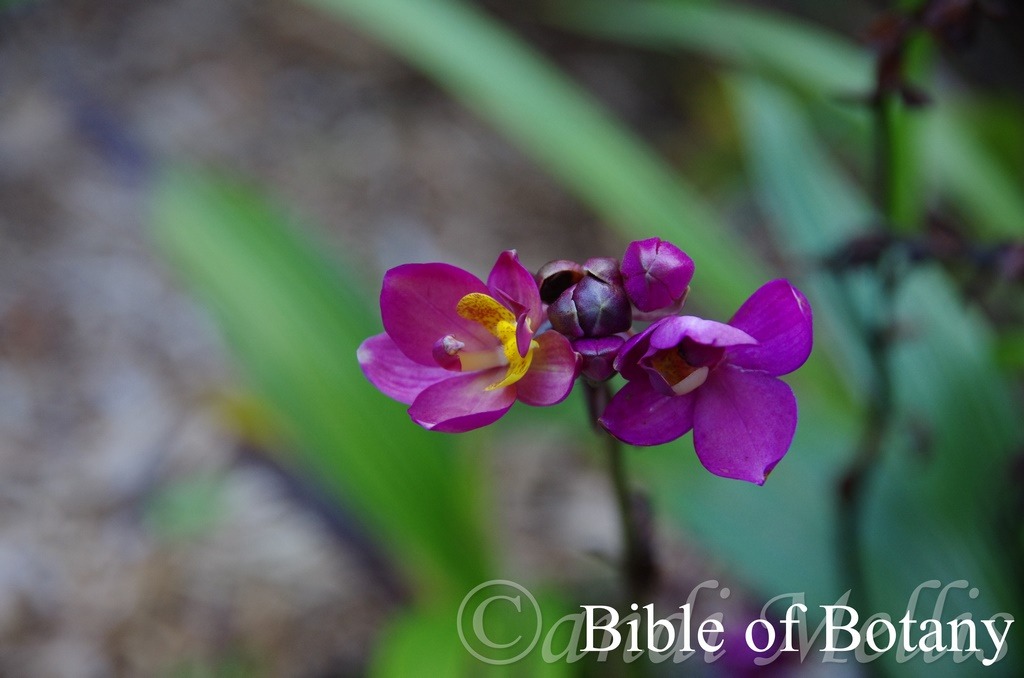
NCBG Coffs Harbour NSW

NCBG Coffs Harbour NSW
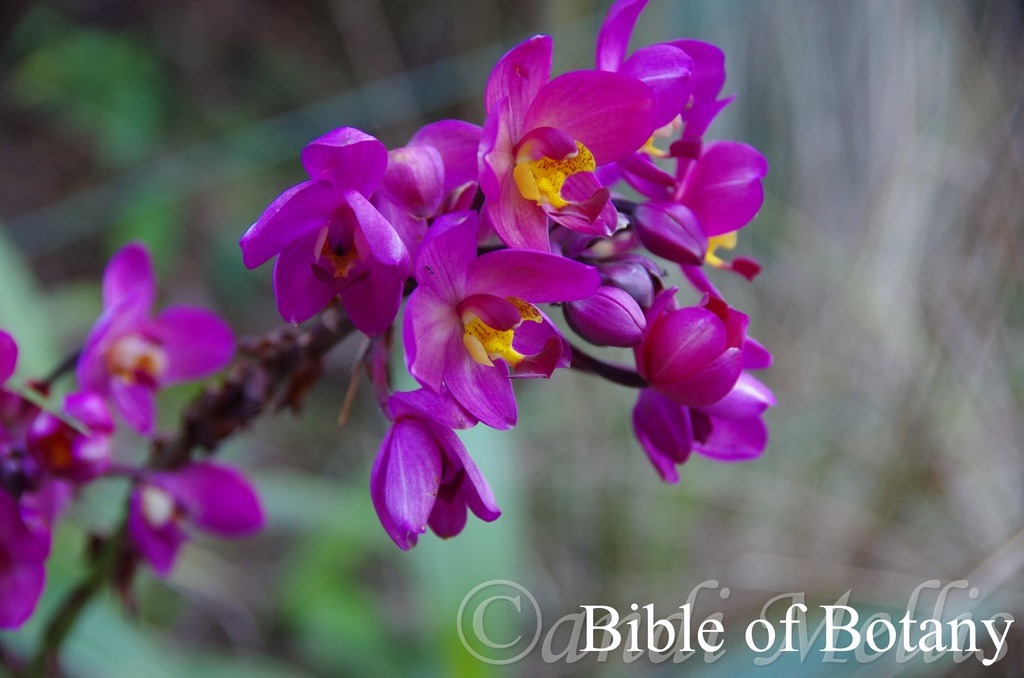
NCBG Coffs Harbour NSW
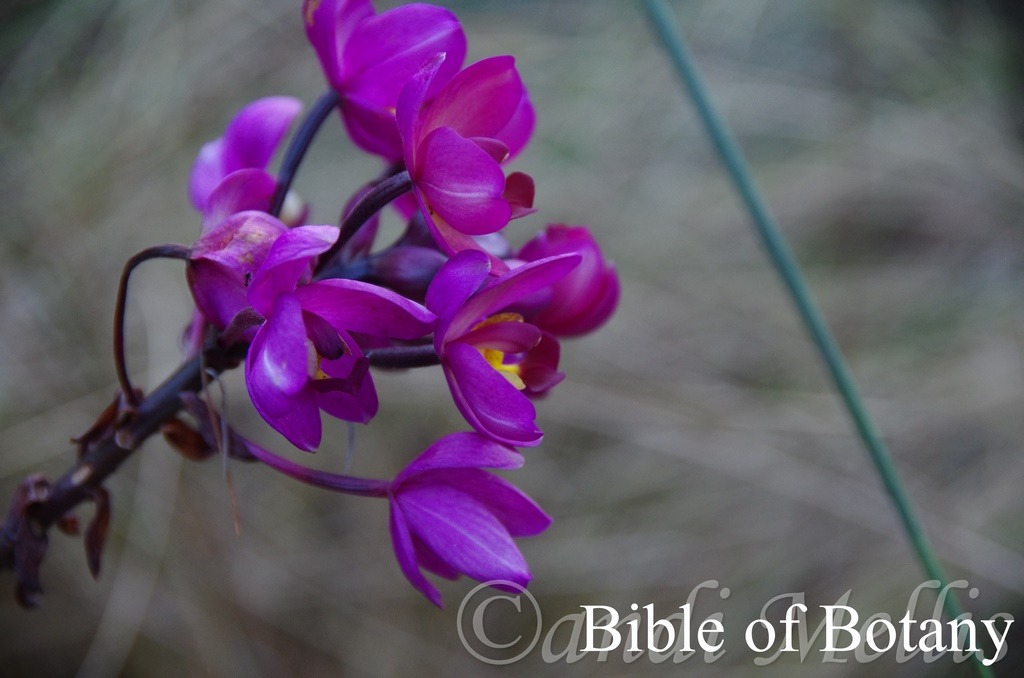
NCBG Coffs Harbour NSW
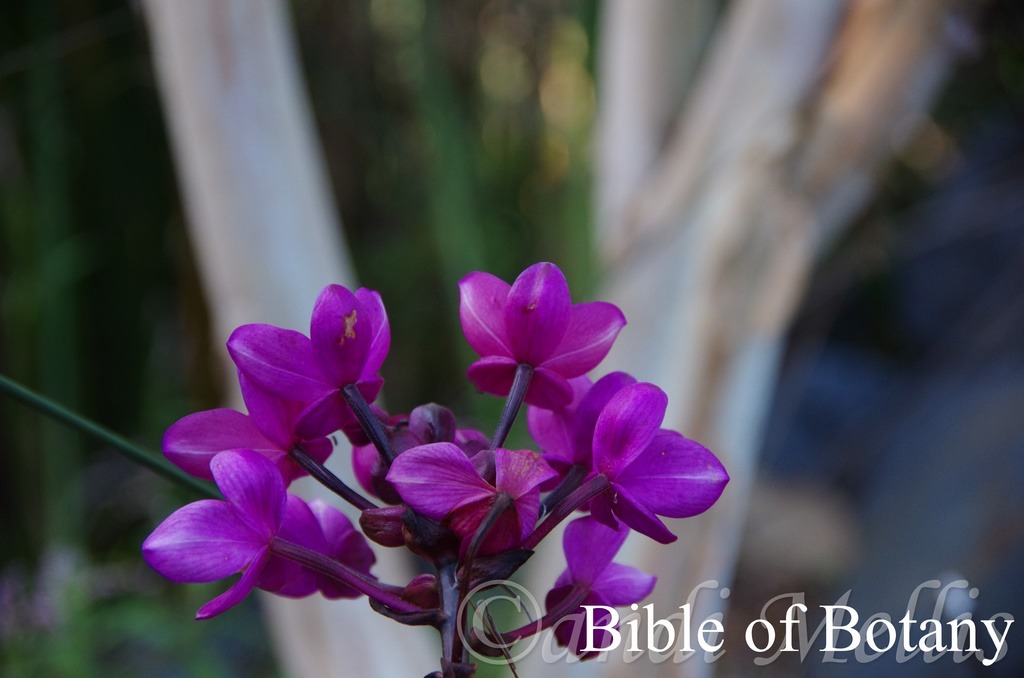
NCBG Coffs Harbour NSW
Spathoglottis paulinae
Classification:
Class: Equisetopsida
Order: Lamiales
Family: Lamiaceae
Genus: From Spathe, which is Ancient Greek for a blade and Glôssa, which is Ancient Greek for a tongue. It refers to the labellum on orchids or petals, which resemble a large mouth or a large tongue.
Specie: Is named in honour of Pauline, which is unknown to the author. If any reader knows it would be much appreciated with acknowledgement.
Sub specie:
Common Name: Small Purple Orchid.
Distribution:
Spathoglottis paulinae is found inthe Habgood River Catchment in the Northern Territory and from south from the Lockhart River Catchment on Cape York Peninsular to near Cardwell in far north eastern Queensland.
It is also found in New Guinee and Papua New Guinee.
https://avh.ala.org.au/occurrences/search?taxa=Spaathoglottis+paulinae#tab_mapView
Habitat Aspect Climate:
Spathoglottis paulinae prefers to grow in bright sunlight moist to wet situations in open forest, grassland and in effermerel swamps. The altitude ranges from 2 meters ASL to 800 meters ASL.
The temperatures range from 10 degrees in August to 34 degrees in January.
Rainfalls range from lows of 1500mm to 3000mm average per annum.
Soil Requirements:
Spathoglottis paulinae prefers better quality light clays to heavy clay soils in soaks and moist depressions. The soils are derived from decomposed sandstones, granites, metamorphic rocks, brown basalts or black basalts. The soils pH ranges from 5pH to 7pH. It tolerates seasonal water-logged soils and seasonal high-water tables. Non saline soils to slightly saline soils are tolerated.
Height & Spread:
Wild Plants: 0.6m to 1m by 0.3m to 0.5m
Characteristics:
Spathoglottis paulinae is an evergreen, terrestrial orchid with crowded pseudobulbs, which measure 30mm to 50mm in diameter just below the surface of the soil.
There are four and seven deep green, pleated leaves emerging from each pseudobulb. The lance shaped leaves measure 80mm to 200mm in length by 30mm to 55mm in width. The deep green, glabrous petioles measure 60mm to 120mm in length. The concolourous leaves are deep green, glabrous and dull. The margins are entire, while the mid vein is slightly prominent on the lower lamina and faintly visible on the upper lamina.
The inflorescences of Spathoglottis paulinae consist of 6 to 30 individual pale mauve to deep purple born on a single spike from below the pseudobulbs or tuberous root. The spikes measure 30mm to 120mm in length, while the flowers measure 20mm to 30mm in diametre. The subtending bracts are covered in soft, white puberulent hairs. The floral bracts are mid green and covered in soft, white puberulent hairs.
The broad elliptical sepals curve forward near the apex and measures 12mm to 20mm in length by 5mm to 7mm in width.
The broad elliptical lateral petals curve forward near the apex and measures 10mm to 18mm in length by 8mm to 9mm in width. The labellum projects forward with 3 distinct lobes and measures 9mm to 12mm in length by 9mm to 10mm in width. The middle spathulate lobe has two yellow calli, while the2 lateral lobes curve upwards. Some plants appear to be self pollinating and barely open, while others are insect pollinated and open widely for several days. The flowers appear from July and April.
Spiranthes australis’s fruits are porrect to pendulous capsules that are sparsely to moderately covered in pale grey hairs. The pale lime-green pods turn fawn when ripe.
Wildlife:
Spathoglottis paulinae wildlife is unknown to the author.
Cultivation:
Spathoglottis paulinae is a beautiful orchid which is hardy and easy to grow and to propagate at least as far south as Coffs Harbour in New South Wales. It would require a frost free. It does very well either in the bush house or in the garden where a thin layer of grass mulch needs to be replenished on an annual basis and moisture is assured.
Propagation:
Seeds: All orchids that are declared rare, vulnerable or endangered are protected by Federal and State Laws and must not be removed from the wild unless you are a land developer, mining company, Forestry Department or main Roads department etc. This includes bulbs, roots, leaves and flowers. No part of any plant can be removed from Federal, State or Local Government land without the prior permission of the authority and this includes the seeds.
1. Obtain relevant material spore will be sourcing and having at the ready all materials that will be required in the propagation process.
This includes all of the following:
Unripe orchid seed capsule. If there are 2 capsules secure the second capsule immediately after the first capsule splits or if only one capsule as soon as it changes colour.
Orchid gelling medium with agar which can be purchased from an orchid society or a specialist nursery.
Distilled water
Cooking pot
Spoon
Oven-safe glass or polypropylene containers with lids
Sealable bags
Clean, sterilized cutting board
Rubber gloves
Paper towels
Tweezers or forceps
70 percent ethanol
Bleach
Scalpel or sharp knife
Planting pot
Orchid compost
Length of wire metal
Plastic spray bottle.
deep petri dishes or sterile jars.
2. Prepare agar medium
The agar medium is a special orchid gelling mixture that distilled water will be added to distilled water.
To prepare the medium, mix equal parts of orchid gelling medium with distilled water in a cooking pot.
Place the pot on a stove and bring the mixture to boil for while stirring continuously for two minutes.
Pour the mixture into the petri dishes glass or propylene containers while ensuring not to fill the containers above 20 percent of their volume.
Loosely replace the lids to the containers. Sterilize the containers by heating them up in a microwave oven for between 2 to 3 minutes.
Spray 70 percent ethanol into a sealable bag to create a sterile environment. Transfer the heated containers into the sealable bag.
Allow the containers to cool a bit before tightening their lids and then sealing the bag. Leave the containers to stand for a few days until the mixture solidifies.
3. Prepare seed capsule and work surface
Place an open pot of water on a stove and bring to boil. Place the cutting board in the oven and sterilize.
Put on rubber gloves and sterilize the forceps, and scalpel with 70 percent ethanol.
Insert the seed capsule into a bowel filled with bleach for about fifteen minutes.
Sterilize seed capsule again with 70 percent ethanol and place on grill.
Using the sterilized scalpel, cut open the seed capsule to reveal the seeds. Using a scalpel or sharp knife, scrape out the seeds from the capsule unto an ethanol soaked paper towel.
4. Flasking of the seed
Take out the petri dishes or glass jars containers holding the agar medium. Over the steam, open up the containers and transfer seeds from the ethanol soaked paper towel into the individual containers using the sterilized forceps.
The amount of seeds will determine the number of containers required. Replace the lid of the containers and place them on a window sill that receives indirect sunlight.
5. Wait and exercise patience
All that can be done at this point is to wait until the seeds germinate. The amount of time that this might take varies and is dependent on the particular species.
Generally, the time can range from a few months to a few years. During this period of waiting, ensure the containers are free from contamination to ensure that germination is not disrupted.
6. Emergence of protocorms
Protocorms are tuber-shaped bodies with rhizoids that are produced by the young seedlings of various orchids. Protocorms represent the embryonic form of the orchid plant.
Their emergence after the period of waiting at an affirmation that everything in the propagation process is on track.
7. Transflask orchid seedlings is done after they have developed roots
Upon the emergence of the protocorms, consistently observe the growth of the seedlings. At the point when the seedlings appear to overcrowd the flask, transflasking should be carried out, typically within 30 and 60 days.
* This is done by removing individual seedlings using sterilized tweezers from the original containers and placing them in new containers also filled, in a proportion similar to the original, with agar medium. 6 to 8 in a standard petri dish or 1or 2 to a test tube
8. Transplant seedlings into planting pots
On the presumption that there are no disruptions to the plant growth, the seedlings will eventually outgrow the containers.
At this point, they are to be transplanted into planting pots. A good rule of thumb to determine when they are ready to be transplanted is when the seedlings have developed roots that have grown up to the length of one-quarter of an inch.
To transplant, prepare a planting pot or other container for receiving the seedling by majorly filling it up with coarse fir bark and possibly some slightly moist orchid compost mixture containing perlite, fine charcoal, redwood bark shavings, etc.
To extract the seedlings, submerge the containers in warm water to help loosen the agar gel.
Once the agar medium is softened, twist a piece of metal to form a loop and in turn, use it to carefully pull out the seedlings from the container. It is best done if the agar and seedling can be removed together.
The seedlings can be further rinsed in lukewarm water to remove any excess agar mixture still stuck to them.
Following this, the seedlings can now be planted into the prepared pot with at least 50mm of space between each individual seedling.
9. Positioning the orchid
The seedling once fully transplanted should be placed in a location that is warm with good indirect sun light.
Slowly position the pots into an area that closely assimilates the conditions it will be growing under.
The choice as to whether the plant should be exposed to full sun or in direct sunlight will be dependent on the particular orchid specie.
10. Subsequent care of the plant
After the first week, the seedling can be misted several times a day and watered just once a week.
A guide in watering the plant will be using the dryness of the fir back that is, water the plant until the fir back is completely moistened and wait till it has completely dried out before watering again.
Do not fertilize until the seedlings have fully established themselves.
Further Comments from Readers:
“Hi reader, it seems you use The Bible of Botany a lot. That’s great as we have great pleasure in bringing it to you! It’s a little awkward for us to ask, but our first aim is to purchase land approximately 1,600 hectares to link several parcels of N.P. into one at The Pinnacles NSW Australia, but we need your help. We’re not salespeople. We’re amateur botanists who have dedicated over 30 years to saving the environment in a practical way. We depend on donations to reach our goal. If you donate just $5, the price of your coffee this Sunday, We can help to keep the planet alive in a real way and continue to bring you regular updates and features on Australian plants all in one Botanical Bible. Any support is greatly appreciated. Thank you.”
In the spirit of reconciliation, we acknowledge the Bundjalung, Gumbaynggirr and Yaegl and all aboriginal nations throughout Australia and their connections to land, sea and community. We pay our respect to their Elders past, present and future for the pleasures we have gained.
Spermacoce brachystema
Classification:
Unranked: Eudicots
Unranked: Rosids
Class: Equisetopsida
Order: Gentianales
Family: Rubiaceae
Genus: From Spérma, which is Greek or Spérma, which is Latin for a seed and Speírein, which is Ancient Greek for to sow and Coce which is Latin for a point. It refers to seeds or fruits which are surrounded by the calyx that forms appoint at or near to the apex.
Specie: From Brachys, which is Ancient Greek for short and Stémma/Stéphos, which is Ancient Greek for a wreath or garland. It refers to flowers, which sit at the apex of a shoot and are often surrounded by leaves that give a crown like appearance.
Sub specie:
Common Name:
Distribution:
Spermacoce brachystema is a wide spread species. In Western Australia it is found in 3 disjunct populations along the Ord River, between West Montalivet Island and Alcatraz Island in Cone Bay and from Karijini National Park to Davidson Creek near Newman.
In the east it is found on the Tiwi Cobourg Peninsular and then east and north of a line from Battern Creek Bing Bong west of Vanderlin Island to the Victoria River, the Burt Plains south of Tennet Creek in the Northern Territory then east to Tableland of Toko Range and north to Alderley and Burketown then east to the upper Gilbert River Shovel Creek, Charters Towers then south to Alpha in Queensland and south to Korogoro Point in New South Wales.
https://avh.ala.org.au/occurrences/search?taxa=Spermacoce+brachystema#tab_mapView
Habitat Aspect Climate:
Spermacoce brachystema are clonal perennial herbs meaning that all the plants are identical. It prefers light dappled shade to full sun. It grows on dunes or sparsely vegetated plains. The altitude ranges from 200 meters ASL to 820 meters ASL.
The temperatures range from minus 3 degree in August to 39 degrees in January.
The rainfalls range from lows of 200mm to 2400mm average per annum.
Soil Requirements:
Spermacoce brachystema prefers to grow on sands, sandy loams to medium clays. The soils are usually derived from decomposed red or orange sandstones, granites, metamorphic rocks, brown basalts or black basalts. The soils pH ranges from 4.5pH to 6.5pH. It is does tolerate water logged soils. Non saline soils to moderately saline soils are tolerated.
Height & Spread:
Wild Plants: 0.1m to 0.6m by 0.3m to 0.6m
Characteristics:
Spermacoce brachystema grows as an erect or spreading annual herb with glabrous to scabrous stems or stems that are covered in white hirsute hairs.
The opposite, linear to narrow lanceolate leaves measure 20mm to 45mm in length by 2mm to 7mm in width. The bases partially sheath the stems while the apexes are narrow acute to apiculate. The stipula sheaths measure 1.5mm to 2mm in length. The discolourous laminas are blue-green to deep green, dull and scabrous to sparsely covered in off white or pale fawnish hirsute hairs on the upper laminas while the lower laminas are paler. The laminas are flat and straight while the margins are entire and recurved to revolute.
The inflorescences are born in dense terminal heads and axillary clusters. The flowers are subtended by leaf like bracts and leaves. There are 3 to 16 individual flowers to a cluster or head. The mid blue green pedicels are sparsely covered in off white or fawnish hirsute hairs. The pedicels measure 0mm to 1mm in length. The calyx lobes are subulate and measure 1.5mm to 2.5mm in length. The pastel blue to white corollas are glabrous to papillose externally and pubescent internally around the throat. The corollas measures 2mm to 2.5mm in length while the 4 acute lobes measure 1.5mm to 2mm in length.
The 4 exserted, white filiform filaments extend from the base of the corolla tube measure 2.5mm to 3mm in length while the white adnately fixed anthers measure 0.4mm to 0.6mm in length.
The white filiform style has a clavate stigma and is glabrous. The flowers appear from April to September.
The fruits are obloidal capsules. The capsules measure 2mm to 2.6mm in length by 1.2mm to 1.6mm in diameter. The green capsules turn deep reddish-brown and dehisce longitudinally almost from the apex to the base when ripe. The capsules surfaces are covered in regularly spaced farinaceous lumps in longitudinal lines.
The single deep chocolate brown to black narrow obloidal seeds measure 1.5mm to 2mm in length by 1mm to 1.2mm in diameter.
Wildlife:
Spermacoce brachystema support very small native flies and beetles when in flower.
Cultivation:
Spermacoce brachystema appears to have very little merit for the home gardener.
Propagation:
Seeds: The seeds can be removed easily from the mature capsules.
Sow fresh seeds directly into a seed raising mix, keeping them moist not wet. Do not over water as the seeds will rot off before germination takes place. Place the trays in a cool shaded area with 50mm shade cloth in the bush house. When the seedlings are 20mm to 25mm tall, prick them out and plant them into 50mm native tubes using a good organic mix.
As the seedlings roots reach the bottom of the tubes plant them out into their permanent position. Do not delay.
Further Comments from Readers:
“Hi reader, it seems you use The Bible of Botany a lot. That’s great as we have great pleasure in bringing it to you! It’s a little awkward for us to ask, but our first aim is to purchase land approximately 1,600 hectares to link several parcels of N.P. into one at The Pinnacles NSW Australia, but we need your help. We’re not salespeople. We’re amateur botanists who have dedicated over 30 years to saving the environment in a practical way. We depend on donations to reach our goal. If you donate just $5, the price of your coffee this Sunday, We can help to keep the planet alive in a real way and continue to bring you regular updates and features on Australian plants all in one Botanical Bible. Any support is greatly appreciated. Thank you.”
In the spirit of reconciliation we acknowledge the Bundjalung, Gumbaynggirr and Yaegl and all aboriginal nations throughout Australia and their connections to land, sea and community. We pay our respect to their Elders past, present and future for the pleasures we have gained.
Sphaerolobium vimineum
Classification:
Unranked: Eudicots
Unranked: Rosids
Class: Equisetopsida
Order: Fabales
Family: Fabaceae
Genus: From Sphaero/Sphaîra, which is Ancient Greek for round and Lobos/Lobī, which is Ancient Greek for a fruiting pod. It refers to pods, which have a globular shape.
Specie: From Vīmināle, which is Latin for long, slender, flexible stems used in wicker. It refers to stems which are long, slender, flexible, often drooping or weeping and used in wicker.
Sub specie:
Common Name: Leafless Globe Pea.
Distribution:
Sphaerolobium vimineum is found south from the Swan River Basin to Two Peoples Bay Nature Reserve and from Esperance to Cape Le Grande National Park within 90 kilometres from the coast in Western Australia.
There is a lone isolated population in South Australia near Port Lincolne on southern Eyre Peninsular.
In the east it is found south from Tin Can Bay in southern coastal Queensland to Portland south western coastal Victoria. It is found within a 140 kilometres of the coast on the coastal ranges.
In Tasmania it is found on Flinders Island, cape barren Island and Clarke Island in Bass Straight and down the east coast of Tasmania to Coles Bay.
https://avh.ala.org.au/occurrences/search?taxa=Sphaerolobium+vimineum#tab_mapView
Habitat Aspect Climate:
Sphaerolobium vimineum are clonal perennial herbs meaning that all the plants are identical. It prefers light dappled shade to full sun. It grows on dunes or sparsely vegetated plains. The altitude ranges from 200 meters ASL to 988 meters ASL.
The temperatures range from minus 3 degree in August to 38 degrees in January.
The rainfalls range from lows of 600mm to 2100mm average per annum.
Soil Requirements:
Sphaerolobium vimineum prefers to grow on sands, sandy loams or light sandy clays. The soils are usually from decomposed red or orange sandstones, granites or accumulated beach sands. The soils pH ranges from 5pH to 6.5pH. It does not tolerate water logged soils. Non saline soils to moderately saline soils are tolerated.
Height & Spread:
Wild Plants: 0.2m to 0.7m by 0.5m to 0.8m.
Characteristics:
Sphaerolobium vimineum grows as a small spreading shrub with long narrow mostly leafless stems. The terete stems are mid green to deep green and glabrous.
The stems are usually leafless or at times have a few alternate linear to lanceolate leaves that measure 3mm to 5mm in length by 2mm to 3mm in width. The bases are sessile while the apexes are obtuse to broadly acute. The concolourous laminas are deep grass-green to deep green, dull and glabrous. The laminas are flat while the margins are entire. The mid vein is slightly prominent on the lower lamina.
The inflorescences are usually 2 or 3 individual flowers clustered together to form a long raceme born from the terminals. The peduncles, rachis and pedicels are deep green, glabrous. The peduncle measures 20mm to 30mm in length while the rachis measures 120mm to 150mm in length and the pedicels measure 1mm to 3mm in length. The bracteoles measure 1.5mm to 3mm in length. The brownish to reddish-brown or deep green densely spotted in deep reddish-brown, glabrous calyxes measure 3.5mm to 4.5mm in length. The bright yellow, bright orange to bright orange-red standard measures 4mm to 5mm in height 9mm to 10mm in width. The wings are usually bright yellow, bright orange to bright orange-red at the base and bright yellow at the apex or the base colour can extend for the whole of the wings. The wings measure 4.5mm to 5.5mm in length by 3mm to 3.5mm in height. The bright yellow, bright orange to bright orange-red keel petals measure 4mm to 6.5mm in length by 3mm to 4.5mm in height.
The 10 inserted diadelphous stamens extend from the mouth of the corolla tube. The filaments are bright yellow to bright orange-red and measure 4mm to 5mm in length.
The bright yellow to bright yellow-orange style and stigma are glabrous while the superior, green ovary measures 1mm to 2mm in length. The pistil measures 5mm to 6mm in length. The flowers appear from April through to September.
The fruits are globose pods on a long stipitate like pedicel. The pods are glabrous and measure 4mm to 6mm in length by 3mm to 5mm in diameter. The green pods turn deep grey almost black when ripe. The ovate seeds measure 1.5mm to 2.5mm in length.
Wildlife:
Sphaerolobium vimineum’s wildlife is unknown to the author.
Cultivation:
Sphaerolobium vimineum is a magnificent small shrub that should be grown in the open in full sun on sand or sandy loams. In cultivation it grows from 0.7 meters to 1 meter in height by 1 meter to 1.2 meters in diameter when grown in the open.
The plants can be watered sparingly to fertilize in arid areas which will induce a longer flowering period and better fruit set. Fertilized plants are more floriferous. If its requirements are met they can cope with temperatures as low as minus 3 degree and up to 40 degrees. It is drought resistant once established.
Place them near old stumps, roots, logs or against log walls, rock retaining walls or shed walls for something excitingly different and to make the stumps or roots look larger and to soften the walls. Select an area of ground and let your hair down and be imaginative because this little charmer has great variation in flower colour which lends itself to a wide variety of positions. Remember this plant is rather sensitive to water so a very well drained site is absolutely necessary for successful growth. When planting a desert type of garden be very sparingly with the other plants when planting and remember that deserts are rolling flat plains not steep hills so it is best to use a gentle slope. It also looks great on rock ledges and steep dry sandy or clay banks.
It would make a nice contribution to a sandy or rocky terrain rock garden. Here it could be used as fill in plants, scattered throughout the boulders. When you use them in area that is strewn with large boulders do not over crowd the scene as the boulders are a formidable part of the scene. Sphaerolobium vimineum is well suited to such conditions so use contours to display the plants. Boulder country are almost always rising and falling in contour and have sharp rises. Plants must be planted sparingly with short annuals between to give vibrant colour. Make the scene so you can see over the tallest ones with the exception of one or two plants at the most. The idea is to achieve a feeling of expansive harshness. This can be achieved with using its deep green stems are a great contrast against large or finer pale green leaves when not in flower and will hold its own even in a bed of flowering annuals whether it is in flower or not in flower. If large deep green leaf plants are wanted try using them as prostrate plants. Use a lot of procumbent plants like Hibbertia specie to make the rocks look larger and the spaces between the plants bigger. Mix them with other smaller shrubs so none of them dominate the scene but blend in to give a mosaic of foliage colours that you oversee. Here I immediately think of Swainsona helianthi or Grevillea thelemanniana for two great contrasting foliages however Actinotis may be a little over powering.
Propagation:
Seeds: The seeds can be removed easily from the maturefruits.
Sow fresh seeds directly into a seed raising mix, keeping them moist not wet. Do not over water as the seeds will rot off before germination takes place. Place the trays in a cool shaded area with 50mm shade cloth in the bush house. When the seedlings are 20mm to 25mm tall, prick them out and plant them into 50mm native tubes using a good organic mix.
As the seedlings roots reach the bottom of the tubes plant them out into their permanent position. Do not delay.
Fertilize using Seaweed, fish emulsion or organic chicken pellets soaked in water and apply the liquid on an alternate basis. Fertilize every 2 months until the plants are well established then on an annual basis in September or March to maintain health, vitality and better flowering and fruiting.
Further Comments from Readers:
“Hi reader, it seems you use The Bible of Botany a lot. That’s great as we have great pleasure in bringing it to you! It’s a little awkward for us to ask, but our first aim is to purchase land approximately 1,600 hectares to link several parcels of N.P. into one at The Pinnacles NSW Australia, but we need your help. We’re not salespeople. We’re amateur botanists who have dedicated over 30 years to saving the environment in a practical way. We depend on donations to reach our goal. If you donate just $5, the price of your coffee this Sunday, We can help to keep the planet alive in a real way and continue to bring you regular updates and features on Australian plants all in one Botanical Bible. Any support is greatly appreciated. Thank you.”
In the spirit of reconciliation we acknowledge the Bundjalung, Gumbaynggirr and Yaegl and all aboriginal nations throughout Australia and their connections to land, sea and community. We pay our respect to their Elders past, present and future for the pleasures we have gained.
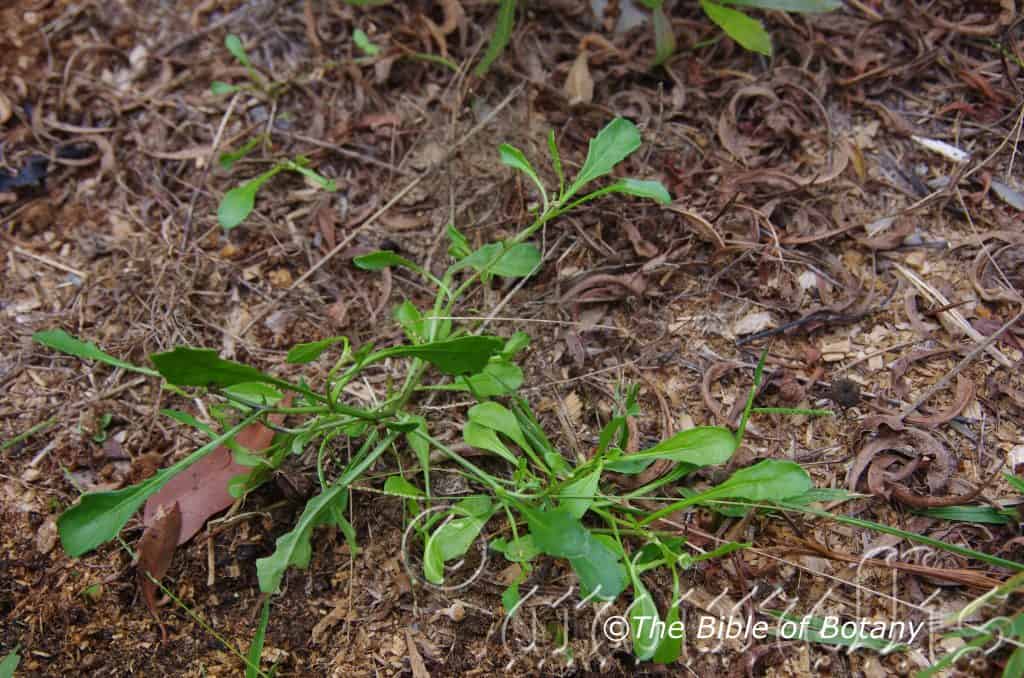
Author’s Garden The Pinnacles NSW
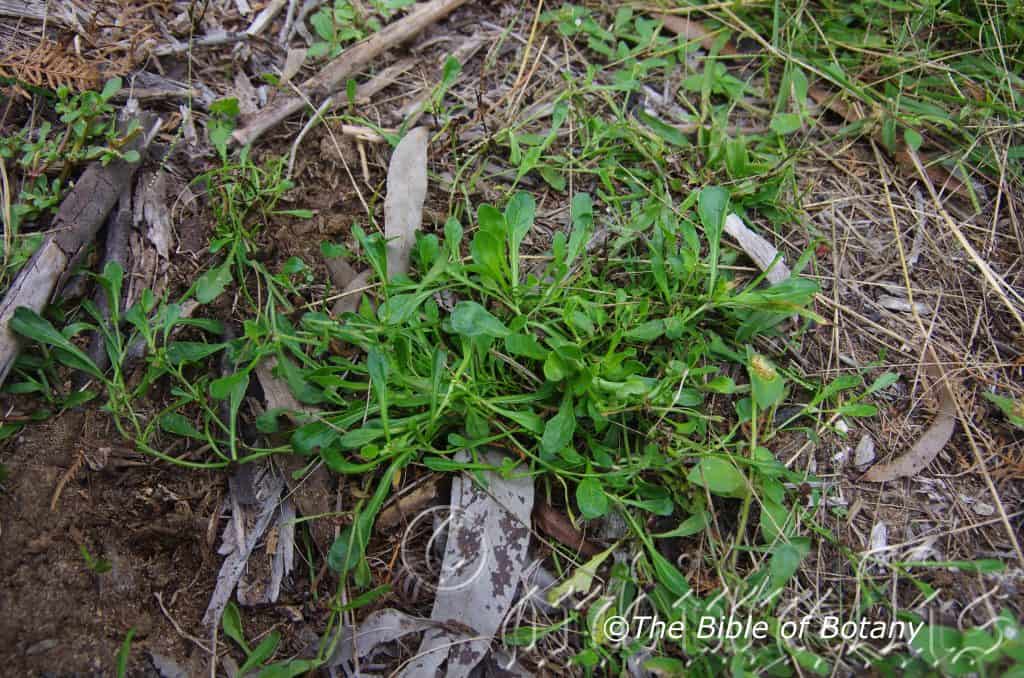
Author’s Garden The Pinnacles NSW
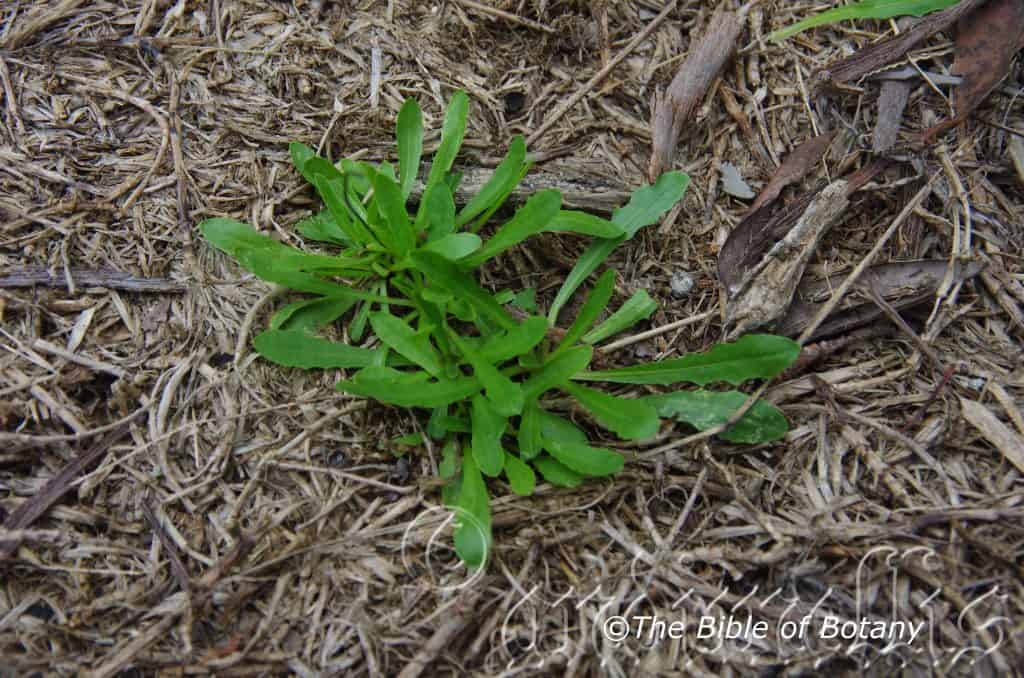
Author’s Garden The Pinnacles NSW

Author’s Garden The Pinnacles NSW
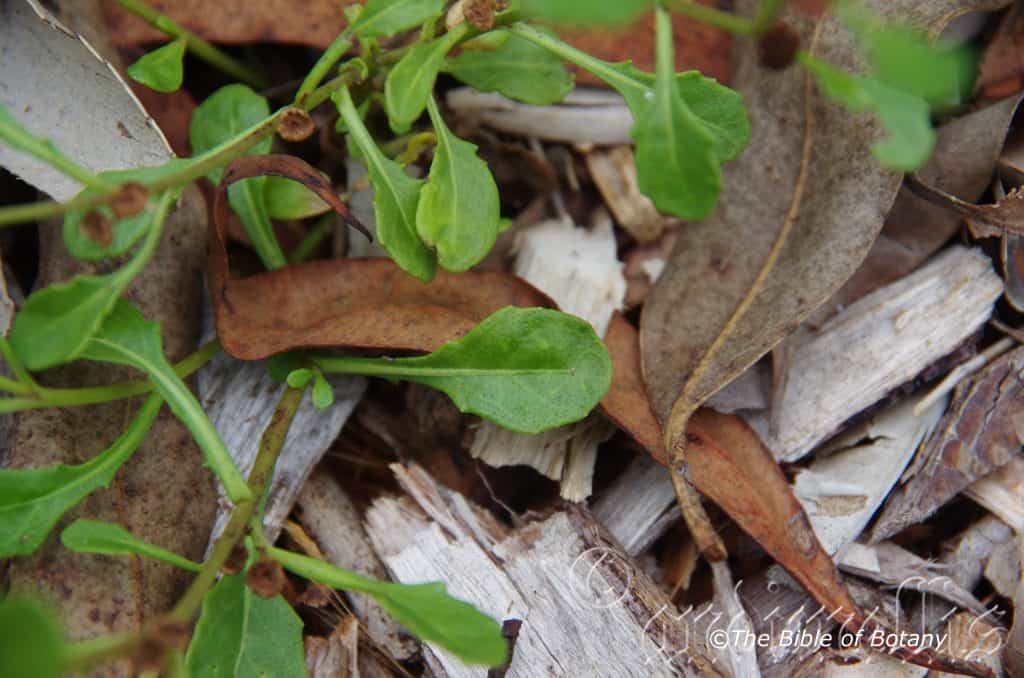
Author’s Garden The Pinnacles NSW

Author’s Garden The Pinnacles NSW
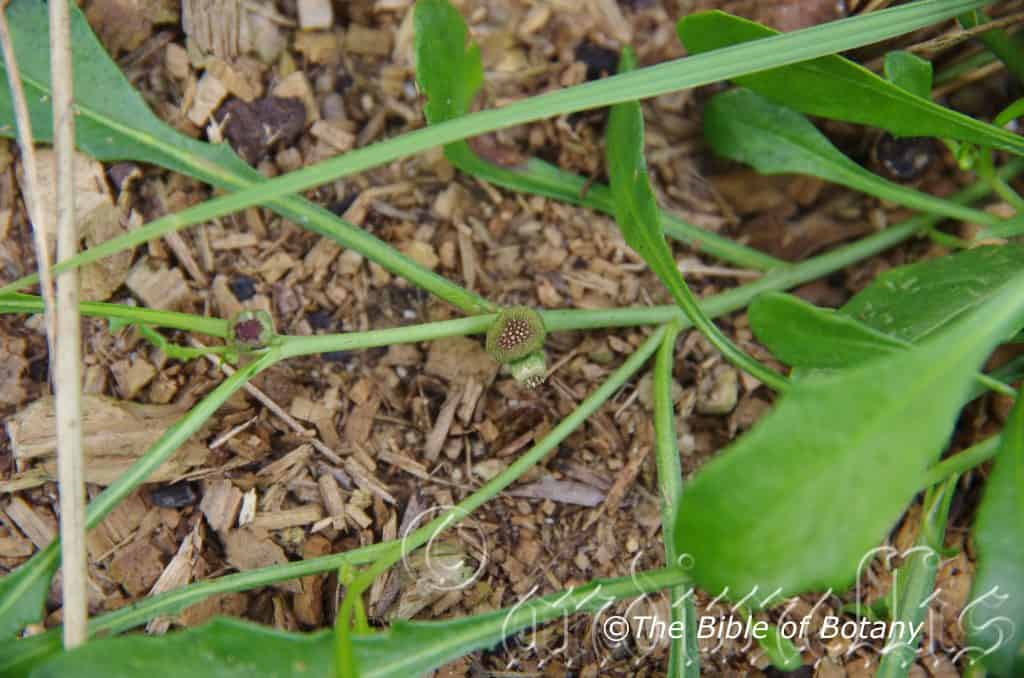
Author’s Garden The Pinnacles NSW
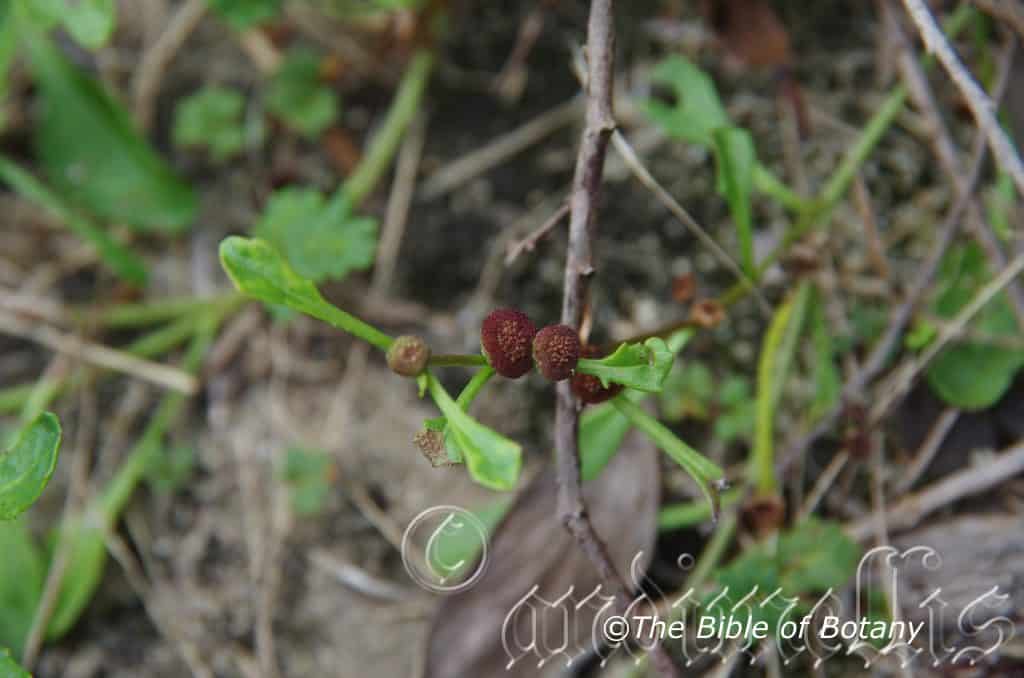
Author’s Garden The Pinnacles NSW

Author’s Garden The Pinnacles NSW

Author’s Garden The Pinnacles NSW
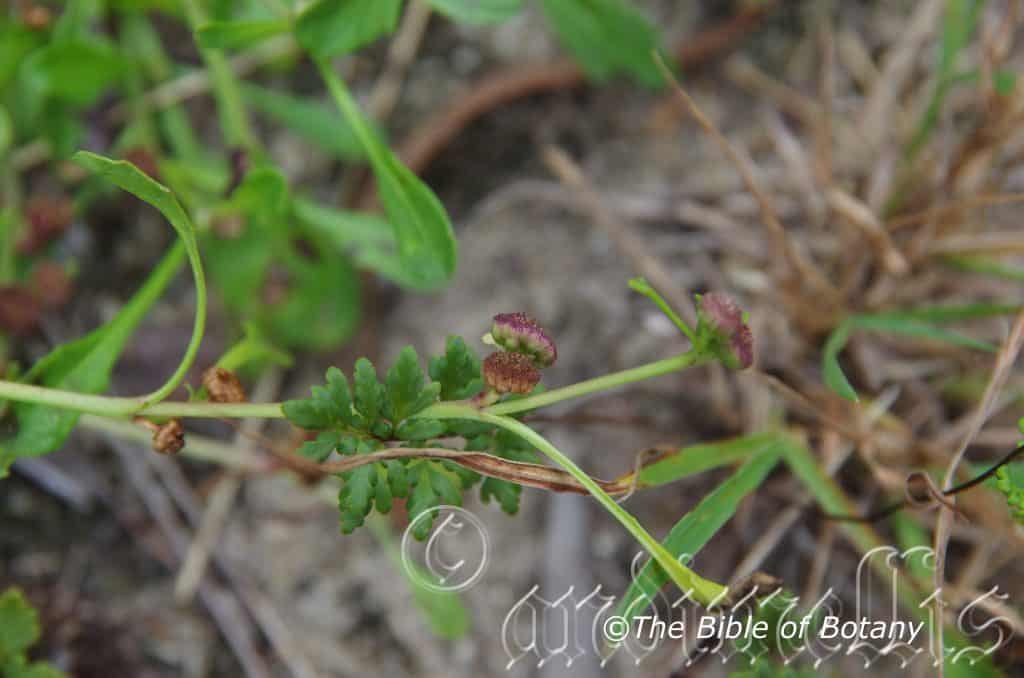
Author’s Garden The Pinnacles NSW
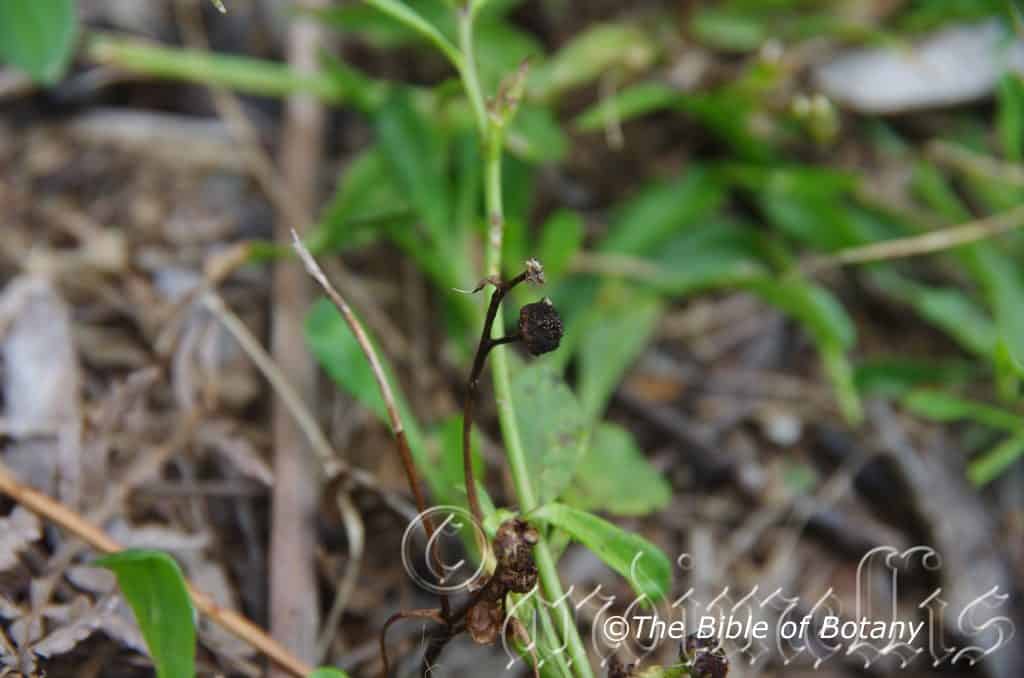
Author’s Garden The Pinnacles NSW

Author’s Garden The Pinnacles NSW
Sphaeromorphaea australis
Classification
Unranked: Eudicots
Unranked: Asterids
Order: Asterales
Family: Asteraceae
Genus: From From Sphaero/Sphaîra, which are Ancient Greek for round and Morphē, which is Ancient Greek or later Morphaea, which is Latin for round, hardened reddish blotches. It refers to the flowers or usually the fruits, which somewhat resemble round patches of dermatitis.
Specie: From Terra Australis, which is Latin for land of the south. It refers to plants, which were first discovered from the land down under.
Sub specie:
Common Name: Spreading Nut Heads.
Distribution:
Sphaeromorphaea australis is found in a line north from Broome in Western Australia to Lake Elizabeth in South Australia and east to Black Swamp of Deniliquin in New South Wales where it moves in a general north east direction to Ballina. There are several disjunct populations further south in the Grampians and from Taree to Ulludulla along the coast in New South Wales. It is not found in any of the true deserts.
https://avh.ala.org.au/occurrences/search?taxa=sphaeromorphae+australis#tab_mapView
Habitat:
Sphaeromorphaea australis prefer full sun to dappled light. It grows along road side drains, disturbed land and areas around dams especially where the land is flooded for longer periods than would be expected during a flood. It is found in open woodlands, mulga scrubs, Chenopod shrubs, samphire shrub lands and open Eucalyptus forests. The latitude ranges from 5 meters ASL to 900 meters ASL.
The temperatures range from minus 3 degrees in August to 42 degrees in January.
The rainfall ranges from lows of 100mm to an average of 3200mm annually, however the rainfall is not as important as the consistent moisture derived from seepages and ground depressions.
Soil Requirements:
Sphaeromorphaea australis prefers silty loams to heavy clays. In Australia the soils are derived from most types of decomposed rocks. The soils pH ranges from 4pH to 7.5pH. It does tolerate water logged soils. Non saline soils to probably very saline soils are tolerated.
Height & Spread:
Wild Plants: 0.1m to 0.25m by 0.2m to 0.6m.
Characteristics:
Sphaeromorphaea australis’s bright green stems are prostrate, to decumbent or ascending and glabrous. The branchlets and juvenile new growth are pale grey-green to pale blue-green and glabrous and very sparsely covered in white pilose hairs. The plants are usually sparsely to moderately branched but have been recorded in Nana Glen on very fertile organic soils to be densely branched.
Sphaeromorphaea australis’s leaves are spathulate to obovate and measure 10mm to 60mm in length by 4mm to 15mm in width. The bases are tapering to attenuate while the apex is obtuse. The concolourous or slightly discolourous laminas are pale, dull grass-green and slightly scabrous on the upper lamina while the lower lamina is glabrous. The semi succulent laminas recurve from the midvein to the margins and decurve downwards near the apexes. The margins are crenate to broadly tooth. The midvein is prominent on the lower lamina and is faintly visible on the upper lamina. The petioles are indistinguishable from where it starts and the lamina finishes. The base and petiole region are very sparsely covered in white pilose hairs.
The inflorescence are bi sexual heads usually born singularly from the leaf axils. The heads measure 6mm to 9mm in diameter. The individual flowers are sessile or shortly pedunculate. The pale blue-green involucral bracts are obovate to obtuse and are usually glabrous or at times minutely toothed towards apex. The ovate bracts have acute apexes and measure 1.8mm to 2.5mm in length. The outer female florets well outnumber the inner fertile florets. Individual fertile floret’s bracts are deep maroon-purple. Tepals are white and measure 1.5mm to 2mm in length by 1mm in diameter. The flowers appear from early September to early March.
Sphaeromorphaea australis fruits are small flat achenes. The achenes measure 1mm to 1.5mm in length by 0.35mm to 0.5mm in diameter. The achenes longitudinally ribbed achenes have a small scarious pappus.
Wildlife:
Sphaeromorphaea australis’s wildlife leaves are known to be eaten by the larvae of the Junonia villida.
Cultivation:
Sphaeromorphaea australis is a small perennial herb for sub-tropical to temperate gardens. It is often treated as a weed by gardens and pulled out as soon as it appears.
It has a place in small moist areas of the garden where weeds can be easily controlled. Group plantings are essential and add a little curiosity especislly when in flower.
Propagation:
Seeds: The seeds can be sown into a seed raising mix without treatment in spring or summer. Cover them in 2mm of fine sand. Place the trays in a sunny warm position and keep moist. When the seedlings are 25mm to 50mm tall, prick them out and plant them into 50mm tubes using a good organic mix.
Once the seedlings reach 100mm to 150mm in height prick the growing tips out and plant them out into their permanent position. For mass plantings plant them at 0.2 meter to 0.3 meter centers.
Fertilize using seaweed, fish emulsion or organic chicken pellets soaked in water on an alternate basis. Fertilize every two months until the plants are established to maintain health, vitality and better flowering.
Further Comments from Readers:
“Hi reader, it seems you use The Bible of Botany a lot. That’s great as we have great pleasure in bringing it to you! It’s a little awkward for us to ask, but our first aim is to purchase land approximately 1,600 hectares to link several parcels of N.P. into one at The Pinnacles NSW Australia, but we need your help. We’re not salespeople. We’re amateur botanists who have dedicated over 30 years to saving the environment in a practical way. We depend on donations to reach our goal. If you donate just $5, the price of your coffee this Sunday, We can help to keep the planet alive in a real way and continue to bring you regular updates and features on Australian plants all in one Botanical Bible. Any support is greatly appreciated. Thank you.”
In the spirit of reconciliation we acknowledge the Bundjalung, Gumbaynggirr and Yaegl and all aboriginal nations throughout Australia and their connections to land, sea and community. We pay our respect to their Elders past, present and future for the pleasures we have gained.
Sphagnum cristatum
Classification:
Class: Equisetopsida
Subclass: Bryidae
Order: Sphagnales
Family: Sphagnaceae
Genus: From Sphagnos, which is Ancient Greek for a moss. It refers to plants which resemble the (sphagnum) mosses.
Specie: From Cristatum which is Latin for to have a crest. It refers to leaves or other organs, which have a very prominent crest.
Common Name:
Distribution:
Sphagnum cristatum is found south of the Tweed River on the Queensland New South Wales border to Appollo Bay in southern Victoria and further west on the Grampians. There is an isolated population further north on Mimosa Creek on the Blackdown Tablelands.
It is also found over most of mainland Tasmania.
https://avh.ala.org.au/occurrences/search?taxa=Sphagnum+cristatum#tab_mapView
Habitat:
Aspect / Climate:
Sphagnum cristatum prefers dappled light to medium shade. It usually grows in small clumps to very large colonies on moist alluvial flats in open forests adjacent to the rainforests or along creeks and rivers. It is common in cool humid moist areas associated with wallums and swamps. The altitude ranges from 2 meters ASL to 1700 meters ASL.
The temperatures range from minus 6 degrees in August to 30 degrees in January or February.
The rainfalls range from lows of 600mm to an average of 2000mm annually. The plants are always associated with permanent ground water or seepages.
Soil Requirements:
Sphagnum cristatum prefers sands to course sandy loams or silts. The soils are usually derived from decomposed coarse sandstone, granite or accumulated peaty beach sands behind the frontal dunes. The soil pH ranges from 3pH to 4.5pH. It tolerates water logged soils and often grows in wet wallums. Non saline soils to slightly saline soils are tolerated.
Height & Spread:
Wild Plants grow from 20mm to 50mm by 100mm to a hundreds of square meters.
Characteristics:
Sphagnum cristatum grows as a short creeping rhizomatous bryophyte with fawnish scales.
The leaves of Sphagnum cristatumare spirally arranged along the stems which are constructed of an inner core of dead hyaline cells surrounded by a narrow wall of living photosynthetic cells. The hyaline cells have large vacuoles with small perforations that allow the plant to absorb and retain almost 20 times its own weight in water. The leaves measure 10mm to 26mm in length by 1mm to 1.5mm in width. The bases are sessile while the apexes are narrow acute. The concolourous laminas are bright lime-green to pale grass-green, semi glossy and sparsely covered in linear to narrow lanceolate scales of varying length. The laminas are flat to slightly convex on the upper surface and decurve gently from the base to the apex while at the same time spiral or twist. The margins are entire to moderately covered in green linear to narrow lanceolate fimbriate scales of varying length.
Sphagnum cristatum produces deep reddish-brown spherical to globose capsules atop long filiform pedicels which are borne on a thickened pseudopodium. The pedicels are bright, pale lime-green and glabrous. The capsules release the spore through poricidal sunken pores. Spore dispersal occurs in the spring when the capsules are mature.
Spore reproduction is rare suggesting reproduction is chiefly carried out by vegetative means.
Wildlife:
Sphagnum cristatum wildlife is unknown to the author.
Cultivation:
Despite Sphagnum cristatum most delicate and beautiful look it is rather a very hardy plant for the garden, patio or inside the house especially in the bathroom where humidity is relatively higher. Outside they prefer a place that receives adequate light with a little full sun late in the afternoon or early morning.
The annual growth rate is rather slow and is between 20mm to 45mm a year meaning that large mats in the wild are very old.
Propagation:
Spores: Fill the container with 1 cm of rainwater and add a layer of 40mm pre moistened peat. Most types of peat are suitable. By adding the moist peat after the water has been poured it will avoid the medium collapsing and clogging which is bound to happen if you add the water after mixing. Mix the peat with 50mm by volume of coarse washed sand.
Rainwater is essential as most tap water is too hard in having a high content of calcium or salts which these plants detest.
Propagation of Sphagnum cristatum is best done from existing material rather than spore due to the slowness of growth and the difficulty in obtaining ripe spore.
While Sphagnum grows wildly in a lot of areas these sites are normally very sensitive to disturbance and most likely protected. The removal of Sphagnum from wild populations is most likely illegal as most existing populations are protected. To remove naturally growing Sphagnum species from the bush a license is required even for small quantities or for the removal of spore capsules.
Your best sources for obtaining Sphagnum is your local nursery, friends or from legitimate members. For a nursery tray surface area of 0.2m2 you will need a handful of live material.
Take a pair of scissors and clip the strains of Sphagnum in pieces of 2 square centimetres and spread them equally over the surface of the peat in the nursery seed tray.
Water carefully with a fine nozzle watering can or a fine mist from a hose nozzle. Allow the disturbed surface of the peat to settle. The clippings should be partially embedded in the peat sand medium.
Place the tray in a larger saucer with rainwater. The peat should be kept waterlogged and the wetter the better but ensure the water table does not rise above the surface of the peat as this generally promotes algae to grow in the tray which may be more aggressive than the Sphagnum. Never allow the medium to dry out as this will stunt or delay the Sphagnum’s development.
It is preferable to place the tray beneath diffused lighting of 20mm to 30mm shade cloth or equivalent. A spot in direct sunlight in the alpine house or cool orchid house is ideal. Generally speaking Sphagnum prefers a temperature around 18 degrees to 24 degrees to grow at its optimum. Good ventilation is essential without strong breezes.
Once the plants have re-established themselves divide them and try placing the new containers in different locations in the shade hose to find the best position. Remember sphagnum dislike disturbances so once it is established leave them alone.
Good luck and why not make a collection of the 6 or possibly more native species.
Further Comments from Readers:
“Hi reader, it seems you use The Bible of Botany a lot. That’s great as we have great pleasure in bringing it to you! It’s a little awkward for us to ask, but our first aim is to purchase land approximately 1,600 hectares to link several parcels of N.P. into one at The Pinnacles NSW Australia, but we need your help. We’re not salespeople. We’re amateur botanists who have dedicated over 30 years to saving the environment in a practical way. We depend on donations to reach our goal. If you donate just $5, the price of your coffee this Sunday, We can help to keep the planet alive in a real way and continue to bring you regular updates and features on Australian plants all in one Botanical Bible. Any support is greatly appreciated. Thank you.”
In the spirit of reconciliation we acknowledge the Bundjalung, Gumbaynggirr and Yaegl and all aboriginal nations throughout Australia and their connections to land, sea and community. We pay our respect to their Elders past, present and future for the pleasures we have gained.

Frontal Dunes North Haven to Port Macquarrie NSW
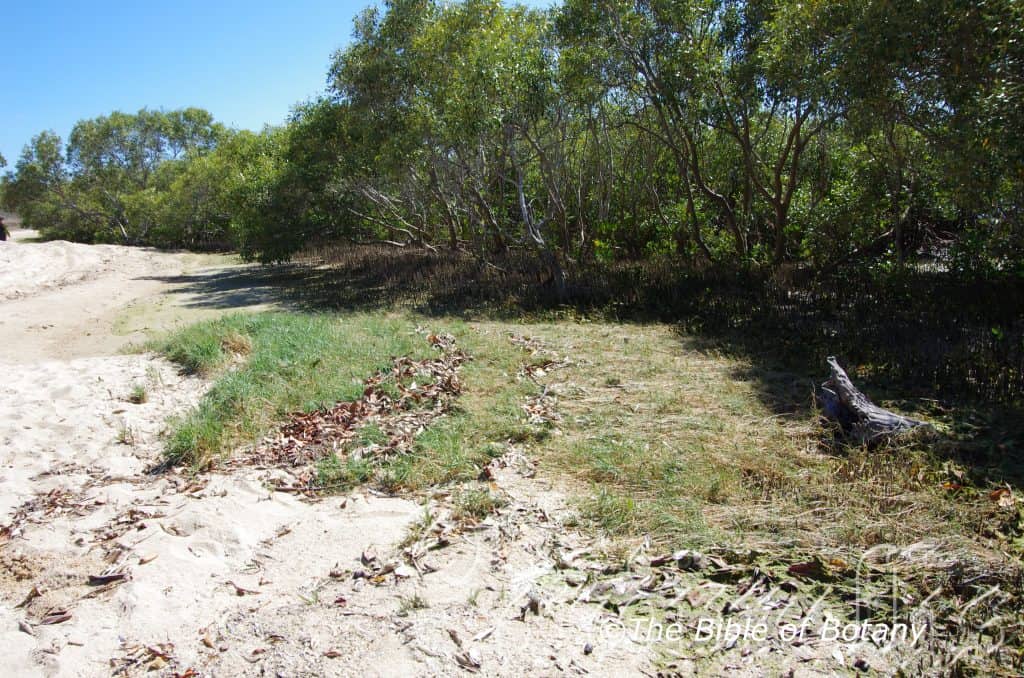
Sarina Qld.
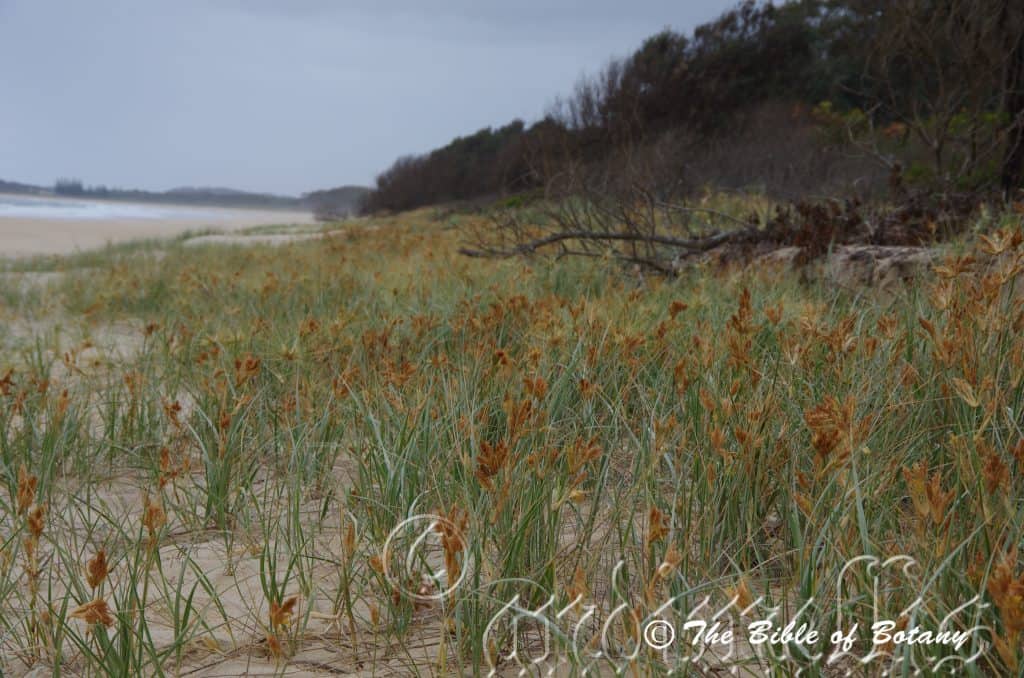
Frontal Dunes North Haven to Port Macquarrie NSW
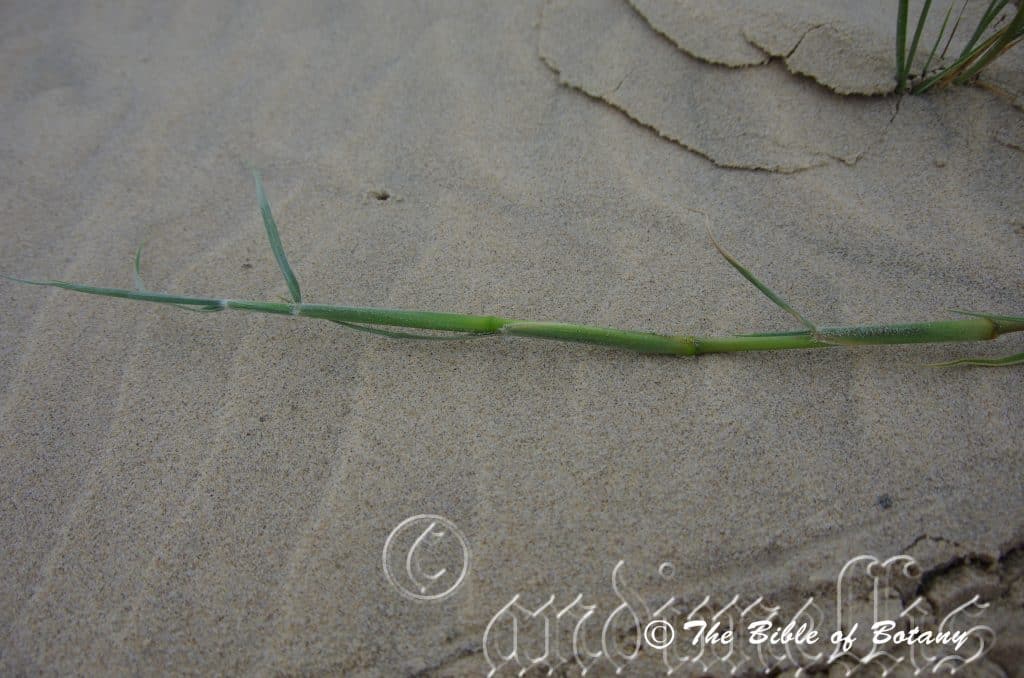
Frontal Dunes North Haven to Port Macquarrie NSW
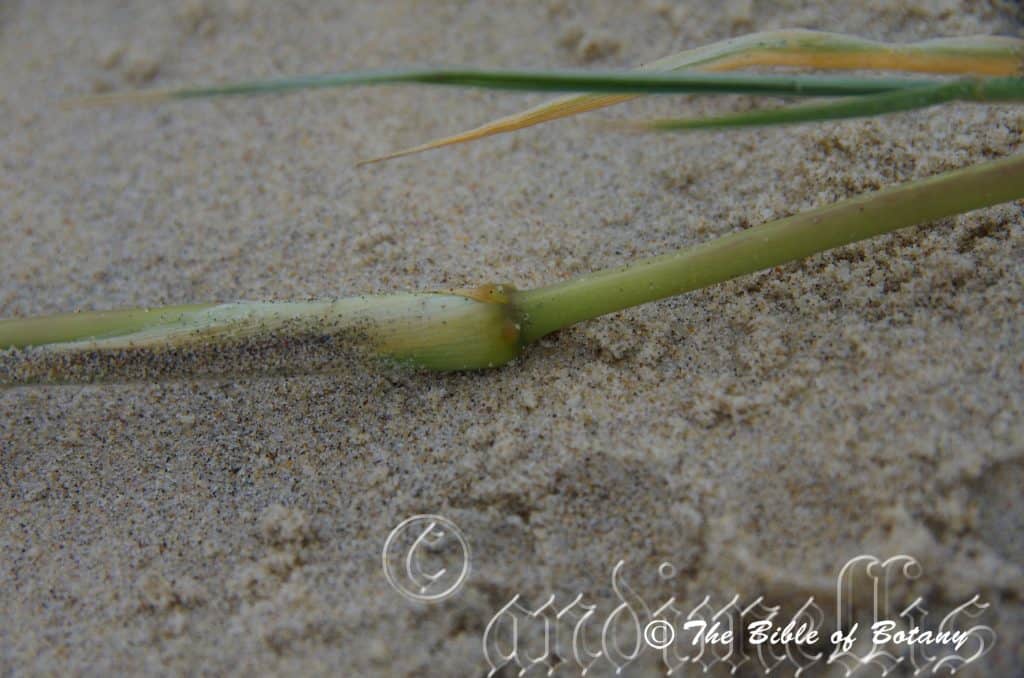
Frontal Dunes North Haven to Port Macquarrie NSW

Frontal Dunes North Haven to Port Macquarrie NSW
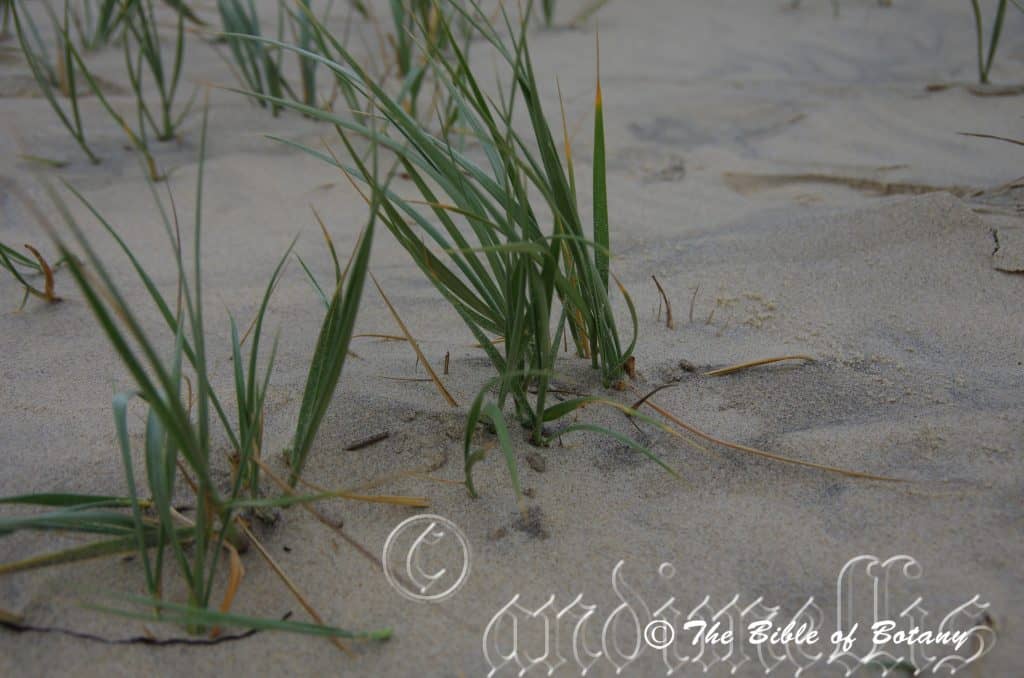
Frontal Dunes North Haven to Port Macquarrie NSW
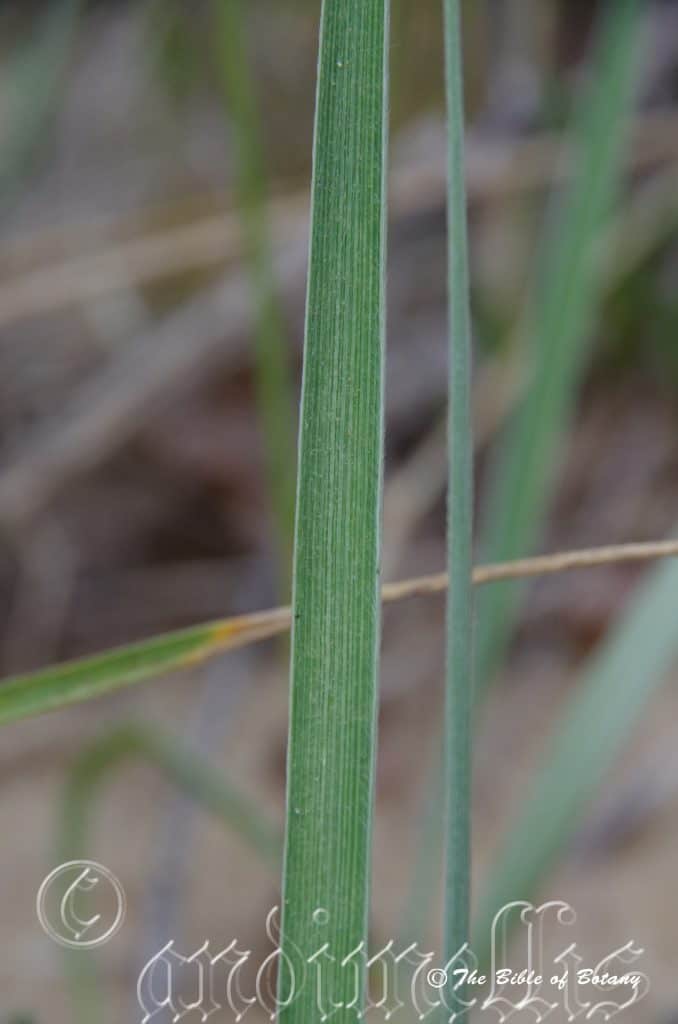
Frontal Dunes North Haven to Port Macquarrie NSW
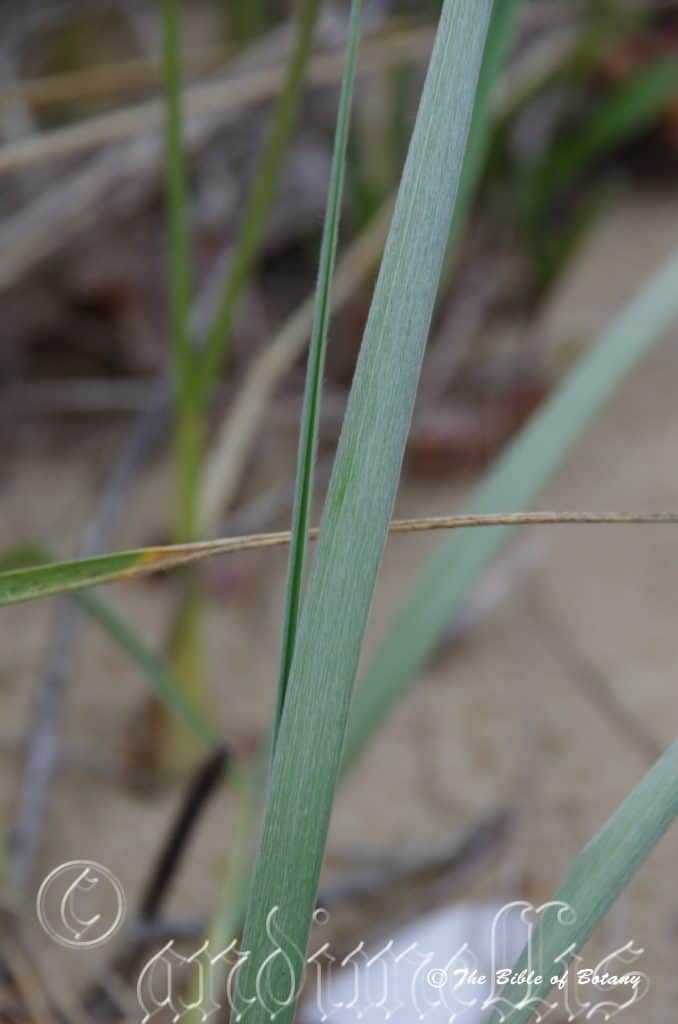
Frontal Dunes North Haven to Port Macquarrie NSW
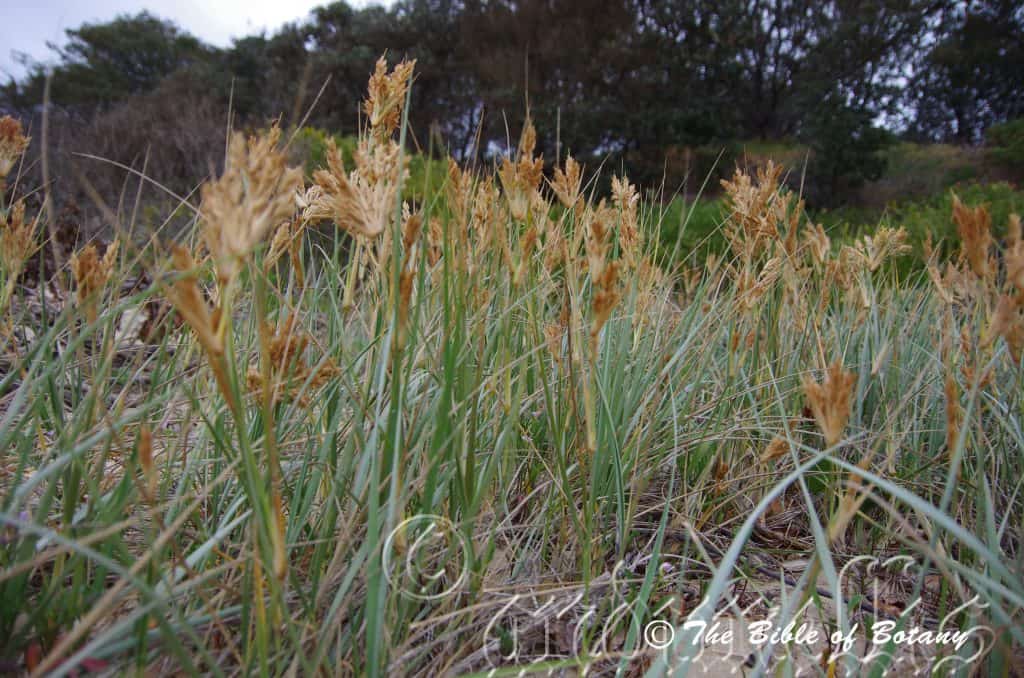
Frontal Dunes North Haven to Port Macquarrie NSW

Frontal Dunes North Haven to Port Macquarrie NSW
Spinifex sericeus
Classification:
Unranked: Monocots
Class: Commelinids
Order: Poales
Family: Poaceae
Genus: From Spīnōsus, which is Latin for a thorn or backbone and Fex, which is Ancient Greek for a fixer or maker of. It refers to plants, which are covered in spines.
Specie: From Sêres, which is Ancient Greek or Sēricum, which is Old Latin for silky and derived from the Ancient Chinese word Si/Ser 絲 or the modern script Si/Ser 丝 for silk as Sêres also has the meaning from Ancient Greek for the land of the Chinese referring to China as the land of silk. It refers to structures or organs, which are covered in soft, fine, silky hairs. To have silky hairs.
Sub specie:
Common Name: Hairy Spinifex or Rolling Spinifex or Coastal Spinifex.
Distribution:
Spinifex sericeus is found along the coastline and on many of the off shore Islands from Lizard Island in far north eastern Queensland to the Dog Fence on the Nullarbor Plains. There is an isolated population inland near Jericho.
It is found on all of the Bass Straight Islands and across the north coast, down the east coast of Tasmania and Meerim Beach on the west coast.
In the west it is found around Perth, Leschenaultia Conservation Park and Peaceful Bay in south western, Western Australia.
https://avh.ala.org.au/occurrences/search?taxa=Spinifex+sericeus#tab_mapView
Habitat Aspect Climate:
Spinifex sericeus prefer full sun light. It grows on the frontal dunes or at times on the back dunes or along estuaries. The altitude ranges from 1 meters ASL to 15 meters ASL except for the population found near Jericho which is at around 370 meters ASL.
The temperatures range from minus 3 degrees in August to 40 degrees in January.
Rainfalls range from lows of 1000mm to 2400mm average per annum except for the population found near Jericho which experiences lows of around 300mm per annum.
Soil Requirements:
Spinifex sericeus prefers quality light silts to coarse sands or fine sands. The soils are usually derived from accumulated beach sands or alluvial deposits near the ocean. The soils pH ranges from 4.5pH to 7pH. It does not tolerate water logged soils. Non saline soils to extremely saline soils are tolerated as are salt laden winds.
Height & Spread:
Wild Plants: 0.6m to 1m by 3m to 5mor more in diameter.
Characteristics:
Spinifex sericeus grows as a stout, stoloniferous, dioecious perennial with branched stolons. The several branches may measure several metres in length. The ligule is a rim of dense hairs.
The long linear leaves of Spinifex sericeus measure 20mm to 250mm in length by 1mm to 7mm in width. The bases are clasping while the apexes are acute. The concolourous laminas are mid blue-green to and are densely covered in soft, white sericeous hairs on the upper laminas while the lower laminas are sparsely covered in soft, white sericeous hairs. The laminas are flat but are rolled in bud. The margins are entire and inrolled or involute. The 12 to 16 parallel veins are slightly prominent on the lower laminas.
The inflorescences of Spinifex sericeus are dioecious. The spikelets are covered in soft white sericeous hairs and measure 12mm to 16mm in length with 2 male florets. The short, stout pedicels are covered in soft white sericeous hairs.
The dissimilar glumes are thinner than the lemmas. The lower glumes are elliptical and without keels and have 5 or 7 nerves. The lower glumes measure 12mm to 15mm in length are covered in soft white sericeous hairs externally especially along the upper margins. The upper glumes are elliptical and without keels and have 5 to 7 nerves. The upper glumes measure 14mm to 16mm in length are covered in soft white sericeous hairs externally especially along the upper margins.
The single fertile floret is laterally compressed. The elliptical lemmas are almost equal and have 3 to 7 nerves. The rigid glabrous lemmas are often slightly covered in soft white sericeous hairs on the margins. The lemmas measure 8mm to 11mm in length.
The palea is equal to the lemma but is strongly bi keeled with 2 nerves.
The filiform white filament measures 2.5mm to 3.7mm in length while the 3 anthers are deep burgundy and measure 0.5mm to 0.7mm in length.
The male inflorescences are born in terminal clusters of short racemes on spikes. The spikes are subtended by spathe like bracts. The bracts are densely covered in soft, white sericeous hairs. The rachis are glabrous on the basal half while the apical half is glabrous or at times sparsely covered in soft white sericeous hairs and extends as a stout bristle beyond the spikelets. The bristle measures 50mm to 100mm in length.
The female inflorescences are diaspore and become detached from the plant at maturity. The inflorescence are globular heads of sessile racemes. The racemes measure to 150mm to 200mm in diameter. Each raceme is reduced to a single spikelet enclosed by large bracts which are covered in soft, white sericeous hairs. The rachis extends as a stout bristle beyond the spikelets. The bristle measures 50mm to 100mm in length. The flowers appear from December to February.
Spinifex sericeus fruits are elliptical oblong grains. The green grains turn pale brown when ripe. The grains are turgid and slightly dorsally compressed. The grains measure 5.5mm in length by 2.75mm in diameter.
Wildlife:
Spinifex sericeus wildlife is unknown to the author. It is however an excellent coastal grass for binding exposed sands and helps to stabilize mobile sand dunes.
Cultivation:
Spinifex sericeus is a large, open, spreading grass for large gardens with deep sandy soils. It is ideally suited for growing in full sun in areas on flats where it is free draining.
It is an excellent grass for beach front restoration projects and sand stabilization.
Propagation:
Seeds: Collect the seeds Spinifex sericeus after the grains turn brown and begin to break off.
Sow the seeds directly into a seed raising mix and place the tray beneath 20mm shade cloth. When the seedlings are 25mm to 40mm tall, prick them out and plant them into 50mm native tubes using a seed raising mix.
Once the seedlings reach 100mm to 150mm in height plant them out into their permanent position.
Alternatively the seeds can be sown with a grain planter for larger areas.
Further Comments from Readers:
“Hi reader, it seems you use The Bible of Botany a lot. That’s great as we have great pleasure in bringing it to you! It’s a little awkward for us to ask, but our first aim is to purchase land approximately 1,600 hectares to link several parcels of N.P. into one at The Pinnacles NSW Australia, but we need your help. We’re not salespeople. We’re amateur botanists who have dedicated over 30 years to saving the environment in a practical way. We depend on donations to reach our goal. If you donate just $5, the price of your coffee this Sunday, We can help to keep the planet alive in a real way and continue to bring you regular updates and features on Australian plants all in one Botanical Bible. Any support is greatly appreciated. Thank you.”
In the spirit of reconciliation we acknowledge the Bundjalung, Gumbaynggirr and Yaegl and all aboriginal nations throughout Australia and their connections to land, sea and community. We pay our respect to their Elders past, present and future for the pleasures we have gained.

Ebor Falls National Park Ebor NSW

Ebor Falls National Park Ebor NSW

Ebor Falls National Park Ebor NSW
Spiranthes australis
Classification:
Unranked: Monocots
Order: Asparagales
Family: Orcidaceae
Subfamily: Orcidoideae
Tribe: Cranichideae
Subtribe: Spiranthinae
Genus: From Speîra, which is Ancient Greek or Spīrālis, which is Latin for a spiral or twist or coil and ántha/ánthos, which are Ancient Greek for the male reproductive organ on a flower or the flower. It refers to flowers, which spiral around the flower spike.
Specie: From Terra Australis, which is Latin for land of the south and Anum/Ensis, which is Latin for to originate from. It refers to plants, which were first discovered from the land down under.
Sub specie:
Common Name: Ladies Tresses.
Distribution:
Spiranthes australis is found south from Wide Bay in central coastal Queensland to Black Swamp near Nangkita on Lake Alexandrina in southern South Australia.
It is found on the eastern side of the Great Dividing Range. It is found on the western side of the Great Dividing Range, on the range and east of the range to the coast.
It is also found on Flinders Island and most of the lowlands and mid lands in Tasmania.
https://avh.ala.org.au/occurrences/search?taxa=Spiranthes+australis#tab_mapView
Habitat Aspect Climate:
Spiranthes australis is found in full sun to light dappled shade. It grows in open Eucalyptus forests or open Eucalyptus woodlands. Its elevation ranges from 20 meters ASL to 480 meters ASL.
The temperatures range from minus 5 degrees in July to 38 degrees in January.
The rainfall ranges from lows of 300mm to 2050mm average per annum.
Soil Requirements:
Spiranthes australis grows as a terrestrial orchid on sandy loams to medium clays including podsolic soils, which have a high percentage of forest litter or grass mulch. The soils are usually derived from heavier types of sandstone, granites, metamorphic rocks, brown basalts or black basalts. The soil’s pH ranges from 4pH to 6pH. It tolerates seasonally wet soils that drain quickly after heavy rain. Non saline soils to slightly saline soils are tolerated.
Height & Spread:
Wild Plants: 0.16m to 0.5m by 0.02m.
Characteristics:
Spiranthes australis grows as a single stemmed orchid with 3 to 10 usually 4 or 5 leaves.
The linear to broad linear basal leaves are more bract like as they ascend the stem. The basal leaves measure 40mm to 100mm in length by 5mm to 12mm in width. There are 2 or 3 stem bracts. The concolourous laminas are mid green, semi glossy and glabrous on the upper laminas. The laminas recurve from the mid vein to the margins and gently decurve from the near the base to the apex. The margins are entire. The mid vein is prominent on the lower lamina and is clearly visible from the upper lamina.
The inflorescences of Spiranthes australis are born on a single spike from below the pseudobulbs or tuberous root. The spikes measure 100mm to 150mm in length. There are 10 to 60 individual flowers on a spike. The usually bright pink or bright pink and white rarely white flowers spiral on the spike. The subtending bracts are covered in soft, white puberulent hairs. The floral bracts are mid green and covered in soft, white puberulent hairs.
The linear to narrow elliptical dorsal sepal measures 4mm to 5mm in length by 1mm to 1.5mm in width near the base.
The linear to narrow elliptical lateral sepals measure 4mm to 5mm in length by 1mm to 1.5mm in width near the base.
The linear to narrow elliptical lateral petals are closely adjacent to the dorsal sepal and measure 4mm to 5mm in length by 1mm to 1.5mm in width near the base.
The labellum claw is short and hinged above measures 5mm to 6.5mm in total length. The labellum is usually white and very concave on the upper surface. The margins are entire near the base, then fringed and crisped on the apical two thirds. The lamina has 2 ovoid glands at the base. The yellow column is much shorter than the labellum. The stigma is “U” shaped while the pollinia are narrow pyriform. The fragrant flowers appear from December to February.
Spiranthes australis’s fruits are ellipsoidal pods. The pale lime-green pods turn creamy fawn when ripe.
Wildlife:
Spiranthes australis is the host to at least 1 small native wasp.
All native orchids are protected plant species. It is illegal to remove naturally growing orchid plants from the bush and a license is required for the removal of seed capsule.
Cultivation:
Spiranthes australis is a beautiful orchid which is hardy and easy to grow and to propagate at least as far south as Melbourne in Victoria along the coast in frost free zones or where frosts are very light. It does very well either in the bush house or in the garden where a thin layer of grass mulch needs to be replenished on an annual basis.
It is a beautiful yet easy orchid to succeed with in cultivation. It is possible to grow it and maintain it in the garden for many years. It prefers and flourishes in periods when the springs and summers are moist, the autumns are wet and the winters are dry. If you are fortunate enough to have the orchids growing naturally then it is a matter of letting them do their own thin. Mark the ground and place a small structure so that livestock, water foul, kangaroos cannot trample or eat them. All orchids I know of are edible so this can be a real problem. In my garden I have 2 species of orchids that have multiplied 20 times and 1 by 5 times by just having small fences erected around them.
When growing this orchid in pots it is best done in a sandy and gravelly mix with peat in equal proportions. The soils are usually quite acidic so beware of any alkaloid materials. Sphagnum moss makes an ideal surface layer on pots.
The best method of watering the plants is to mimic nature. When the first good spring rains come commence watering the plants on a weekly basis or when the first shoots appear. Once flowering has ceased restrain from watering and allow the orchids to again become dormant.
Longevity in this genus is largely unknown, but probably varies between 5 and 20 years along with other similar ground orchids.
If you are fortunate enough to have this orchid growing on your property then it is worth the trouble to marking the area to save it. Continually replenish the leaf litter and keep the area moist from the start of the wet season to after flowering. We had thousands of these beautiful little orchids on our property at Nana Glen in 1989 but as we changed the open paddocks to rainforest they now only survive along the power easements in limited numbers.
Propagation:
Seeds: All orchids that are declared rare, vulnerable or endangered are protected by Federal and State Laws and must not be removed from the wild unless you are a land developer, mining company or main Roads department etc. This includes bulbs, roots, leaves and flowers. No part of any plant can be removed from Federal, State or Local Government land without the prior permission of the authority and this includes the spore.
1. Obtain relevant material spore will be sourcing and having at the ready all materials that will be required in the propagation process.
This includes all of the following:
Unripe orchid seed capsule. If there are 2 capsules secure the second capsule immediately after the first capsule splits or if only one capsule as soon as it changes colour.
Orchid gelling medium with agar which can be purchased from an orchid society or a specialist nursery.
Distilled water
Cooking pot
Spoon
Oven-safe glass or polypropylene containers with lids
Sealable bags
Clean, sterilized cutting board
Rubber gloves
Paper towels
Tweezers or forceps
70 percent ethanol
Bleach
Scalpel or sharp knife
Planting pot
Orchid compost
Length of wire metal
Plastic spray bottle.
deep petri dishes or sterile jars.
2. Prepare agar medium
The agar medium is a special orchid gelling mixture that distilled water will be added to distilled water.
To prepare the medium, mix equal parts of orchid gelling medium with distilled water in a cooking pot.
Place the pot on a stove and bring the mixture to boil for while stirring continuously for two minutes.
Pour the mixture into the petri dishes glass or propylene containers while ensuring not to fill the containers above 20 percent of their volume.
Loosely replace the lids to the containers. Sterilize the containers by heating them up in a microwave oven for between 2 to 3 minutes.
Spray 70 percent ethanol into a sealable bag to create a sterile environment. Transfer the heated containers into the sealable bag.
Allow the containers to cool a bit before tightening their lids and then sealing the bag. Leave the containers to stand for a few days until the mixture solidifies.
3. Prepare seed capsule and work surface
Place an open pot of water on a stove and bring to boil. Place the cutting board in the oven and sterilize.
Put on rubber gloves and sterilize the forceps, and scalpel with 70 percent ethanol.
Insert the seed capsule into a bowel filled with bleach for about fifteen minutes.
Sterilize seed capsule again with 70 percent ethanol and place on grill.
Using the sterilized scalpel, cut open the seed capsule to reveal the seeds. Using a scalpel or sharp knife, scrape out the seeds from the capsule unto an ethanol soaked paper towel.
4. Flasking of the seed
Take out the petri dishes or glass jars containers holding the agar medium. Over the steam, open up the containers and transfer seeds from the ethanol soaked paper towel into the individual containers using the sterilized forceps.
The amount of seeds will determine the number of containers required. Replace the lid of the containers and place them on a window sill that receives indirect sunlight.
5. Wait and exercise patience
All that can be done at this point is to wait until the seeds germinate. The amount of time that this might take varies and is dependent on the particular species.
Generally, the time can range from a few months to a few years. During this period of waiting, ensure the containers are free from contamination to ensure that germination is not disrupted.
6. Emergence of protocorms
Protocorms are tuber-shaped bodies with rhizoids that are produced by the young seedlings of various orchids. Protocorms represent the embryonic form of the orchid plant.
Their emergence after the period of waiting at an affirmation that everything in the propagation process is on track.
7. Transflask orchid seedlings is done after they have developed roots
Upon the emergence of the protocorms, consistently observe the growth of the seedlings. At the point when the seedlings appear to overcrowd the flask, transflasking should be carried out, typically within 30 and 60 days.
* This is done by removing individual seedlings using sterilized tweezers from the original containers and placing them in new containers also filled, in a proportion similar to the original, with agar medium. 6 to 8 in a standard petri dish or 1or 2 to a test tube
8. Transplant seedlings into planting pots
On the presumption that there are no disruptions to the plant growth, the seedlings will eventually outgrow the containers.
At this point, they are to be transplanted into planting pots. A good rule of thumb to determine when they are ready to be transplanted is when the seedlings have developed roots that have grown up to the length of one-quarter of an inch.
To transplant, prepare a planting pot or other container for receiving the seedling by majorly filling it up with coarse fir bark and possibly some slightly moist orchid compost mixture containing perlite, fine charcoal, redwood bark shavings, etc.
To extract the seedlings, submerge the containers in warm water to help loosen the agar gel.
Once the agar medium is softened, twist a piece of metal to form a loop and in turn, use it to carefully pull out the seedlings from the container. It is best done if the agar and seedling can be removed together.
The seedlings can be further rinsed in lukewarm water to remove any excess agar mixture still stuck to them.
Following this, the seedlings can now be planted into the prepared pot with at least 50mm of space between each individual seedling.
9. Positioning the orchid
The seedling once fully transplanted should be placed in a location that is warm with good indirect sun light.
Slowly position the pots into an area that closely assimilates the conditions it will be growing under.
The choice as to whether the plant should be exposed to full sun or in direct sunlight will be dependent on the particular orchid specie.
10. Subsequent care of the plant
After the first week, the seedling can be misted several times a day and watered just once a week.
A guide in watering the plant will be using the dryness of the fir back that is, water the plant until the fir back is completely moistened and wait till it has completely dried out before watering again.
Do not fertilize until the seedlings have fully established themselves.
Further Comments from Readers:
“Hi reader, it seems you use The Bible of Botany a lot. That’s great as we have great pleasure in bringing it to you! It’s a little awkward for us to ask, but our first aim is to purchase land approximately 1,600 hectares to link several parcels of N.P. into one at The Pinnacles NSW Australia, but we need your help. We’re not salespeople. We’re amateur botanists who have dedicated over 30 years to saving the environment in a practical way. We depend on donations to reach our goal. If you donate just $5, the price of your coffee this Sunday, We can help to keep the planet alive in a real way and continue to bring you regular updates and features on Australian plants all in one Botanical Bible. Any support is greatly appreciated. Thank you.”
In the spirit of reconciliation we acknowledge the Bundjalung, Gumbaynggirr and Yaegl and all aboriginal nations throughout Australia and their connections to land, sea and community. We pay our respect to their Elders past, present and future for the pleasures we have gained.

Yi Zhong Chong Qing China
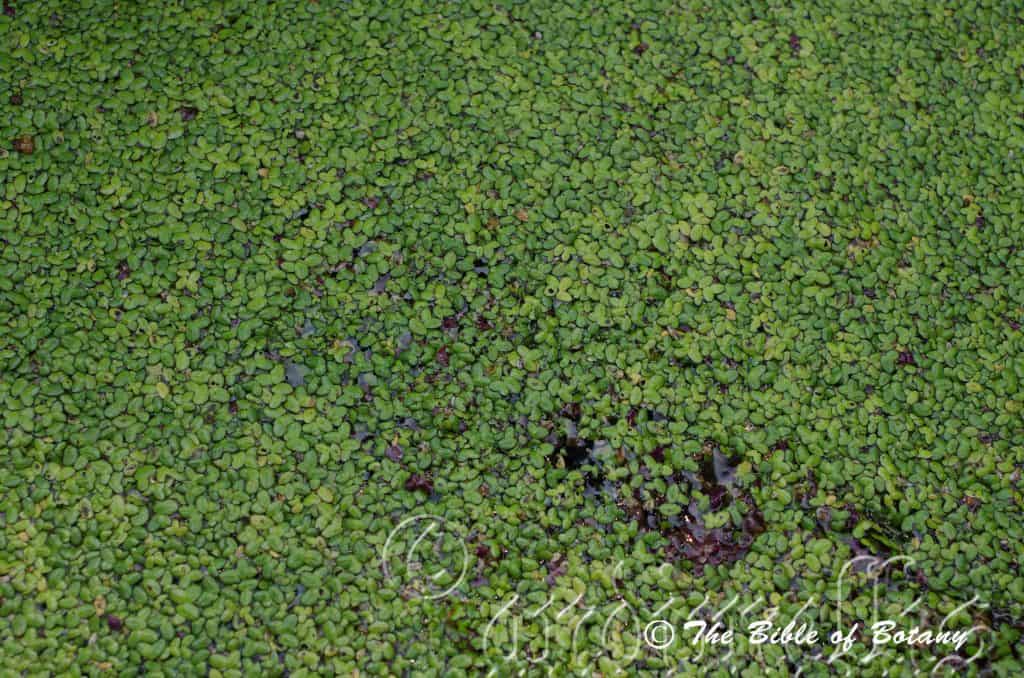
Yi Zhong Chong Qing China
Spirodela polyrhiza
Classification:
Unranked: Monocots
Order: Alismateles
Family: Araceae
Subfamily: Lemnoideae
Genus: From Speîra, which is Ancient Greek or Spīrālis which is Latin for a spiral, twist or coil and Delos, which is Ancient Greek for clear. It refers to organs, which clearly display a spiral twisting within the cells.
Specie: From Polús, which is Ancient Greek for many and Rrhíza, which is Ancient Greek for a root. It refers to plants, which produce many roots or rhizomes.
Sub species:
Common Name: Red Duck Weed or Giant Duck Weed.
Distribution:
Spirodela polyrhiza is very widespread throughout Asia from China to northern Australia and New Guinea. In Australia it is found in the northern parts of the Northern Territory but could be found in most wet parts of Western Australia and down the east coast into northern New South Wales. To the casual observer it looks like the common Duck weed and often goes unnoticed.
https://avh.ala.org.au/occurrences/search?taxa=Spirodela+polyrhiza#tab_mapView
Habitat Aspect Climate:
Spirodela polyrhiza prefer full sun to part shade. It is found growing along slow flowing creeks alluvial plains, billabongs, backwaters in most types of permanent fresh water ponds. The altitude ranges from 5 meters ASL to 127 meters ASL.
The temperatures range from 6 degrees in August to 40 degrees in January.
The rainfalls range from lows of 2500mm to an average of 3200mm. In the lower rainfall areas the plants are always associated with seasonal flooding water
Soil Requirements:
Spirodela polyrhiza prefers to grow in fresh clean water. The waters usually have a 5pH through to 8pH. Non saline soils to very saline soils are tolerated.
Height & Spread:
Wild Plants: 2mm to 5mm by 1.5m to 3mm.
Characteristics:
Spirodela polyrhiza usually consists of a single leaf or 2 or at times to 5 leaves joined in the process of reproducing vegetive. This is especially the case with more than one leaf when reproduction is rapid.
Spirodela polyrhiza obovate to broad lanceolate or elliptical to orbicular leaves are thick and measure 3mm to 8mm in length by 2.5mm to 8mm in width. The bases where the petiole would normally grow have 5 to 15 white roots which measure 20mm to 40mm in length. The discolourous leaves are pale yellow-green, pale blue-green to pale grass-green and glabrous on the upper laminas while the lower laminas are deep maroon-red. The margins are entire while the laminas are convex becoming concave as they mature.
Unlike most plants Pirodela polyrhiza produce buds in special pouches along the center axis of older leaves. The daughter leaves remain attached to the parent leaf until they reach maturity.
During cold weather budding the pouches produce smaller roots and sink to the bottom of the ponds where they remain until the water temperatures rise again.
There is a budding pouches located adjacent to the roots on the upper lamina where the protogynous flowers emerge. The infloresecence of Spirodela polyrhiza are minute spathes almost covering the pouches. The 1 or sometimes 2 stamens are green while the pistil is green and glabrous. It must be noted that the plants rarely flower and no flowering has been recorded in the Australian plants.
Spirodela polyrhiza fruits are minute globular capsules. The seeds are minute.
Confusing Genre:
The following genre is rather difficult to distinguish without a microscope to observe the flowering pouches. The characteristics below must be taken as a guide only. Australia can brag though with Wolffia angusta as being the smallest known flowering plant in the world.
Spirodela polyrhiza has 5 to 18 roots. The lower surface is usually purplish or reddish.
Landoltia punctata has 2 to 7 roots. The lower surface is usually purplish.
Lemna specie’s roots are absent or with a single root. The lower surface is green. Usually in long strings held together but easily broken.
Wolffia angusta’s roots are absent. The lower surface is usually green.
Wildlife:
Spirodela polyrhiza are feasted upon by many fresh water fish and fresh water birds especially the surface filter feeders like ducks.
Cultivation:
At first glance Spirodela polyrhiza may appear to be a water weed but in fact has an extremely important role to play in the environment in recycling waste matter and nutrient blooms which occur in nature.
The plants make an interesting addition to the outside fish pond or internal glass aquariums where they will remove large quantities of ammonium from the water without affecting the pH or oxygen content. In fact they improve the conditions to allow greater oxygen uptake by the water. Herbivorous fish can and will consume large quantities of Spirodela polyrhiza, so it maybe be necessary to replace the plants in small ponds that have fish on a regular basis.
Phytoremediation Spirodela polyrhiza is an all-round phytoremediator meaning that it can take up large amounts of metals from the water. They can be used very successfully in controlling very acid or alkaline water nutrient rich water which is acid due to high levels of nitrate fertilizers leaching from the soil. It is a safer method than using chemicals, is more cost effective, is environmentally friendly, non-disruptive as opposed to physically filtering the water or using chemicals to dissolve the mineral toxicity and pumping water into the polluted water it dilute it to safer levels.
Eutrophication is Greek for eutrophic—healthy, adequate nutrition while hypertrophication relates to the excess of nutrient within the body of water usually caused by factory or mining discharge farm discharge and decaying vegetable and animal matter. Professors Randall Kerstetter, Joachim Messing and Todd Michael research on different duckweeds from the Delaware and Raritan Canal near Rutgers University in the USA showed they were able to extract nitrogen and phosphate pollutants from agricultural and municipal wastewater. Their research concluded in reducing algae growth, coliform bacterial counts and mosquito larvae on ponds, while at the same time concentrated heavy metals, capturing or degrading toxic chemicals, and encourage the growth of other aquatic animals such as frogs, fish and waterfowl. Duckweeds produce biomass faster than any other flowering plant. They can be used as high-protein feed for domestic animals and show great potential as an alternative for biofuel production.
Spirodela specie and Londoltia specie sequence could unlock the remarkable potential of rapidly growing aquatic plants for absorbing atmospheric carbon dioxide to help break the spiraling carbon cycle we have created.
Culley et al 1981 found that a mixture of various specie could remove 1,378 kilograms of Nitrogen, 347 kilograms of Phosphorous and 441 kilograms of Potassium from 1 hectare surface area of water every 12 months.
Under ideal conditions Nitrogen uptake can reach 1,890 kilograms a year. Landolt and Kandeler 1987 also noted that some specie achieved a biomass of in excess of 75 tonnes a year per hectare with a protein content of 45mm which would make it an ideal dietary supplement for pigs, livestock, fish and fowls.
Spirodela polyrhiza has tremendous potential with Landoltia punctata (previously known as Spirodela punctata) to supply the worlds protein needs being up to 45mm protein producing up to $300,000 a hectare at present wholesale prices for human consumption. It is far more environmentally friendly. The biggest drawback is government regulation, lack of support for new agricultural industries and the Chinese are now seriously contemplating their use as alternately protein source. This however would not discourage me one little bit in recommending it as the next crop of the future because of its huge potential, ease of growth and present worldwide prices.
Spirodela polyrhiza are high in vitamin A, amino acids, 25mm to 48mm protein, and 17 to 18mm fiber. Up to 22mm calcium, 15mm magnesium, 0.11mm zinc and 0.14mm sodium by dry weight. Nutrition and Food Research Centre in Freising Germany.
The plants make an excellent food source for fish and domestic animals and are best grown in separate tanks or ponds where nutrient of the growing medium can be controlled far easier. Fertilize sparingly using fish emulsion. Fertilize the plants as required are to maintain health and vigour.
Propagation:
Seeds: Spirodela polyrhiza can be easily grown by allowing the plants to self-bud in water free of waterfowl and herbivorous fish.
Further Comments from Readers:
“Hi reader, it seems you use The Bible of Botany a lot. That’s great as we have great pleasure in bringing it to you! It’s a little awkward for us to ask, but our first aim is to purchase land approximately 1,600 hectares to link several parcels of N.P. into one at The Pinnacles NSW Australia, but we need your help. We’re not salespeople. We’re amateur botanists who have dedicated over 30 years to saving the environment in a practical way. We depend on donations to reach our goal. If you donate just $5, the price of your coffee this Sunday, We can help to keep the planet alive in a real way and continue to bring you regular updates and features on Australian plants all in one Botanical Bible. Any support is greatly appreciated. Thank you.”
In the spirit of reconciliation we acknowledge the Bundjalung, Gumbaynggirr and Yaegl and all aboriginal nations throughout Australia and their connections to land, sea and community. We pay our respect to their Elders past, present and future for the pleasures we have gained.
Sporodanthus caudatus
Classification:
Unranked: Monocots
Class: Commelinids
Order: Poales
Family: Restionaceae
Genus: From Sporos, which is Ancient Greek for a fern seed and ántha/ánthos, which are Ancient Greek for the male reproductive organ on a flower or the flower. It refers to seeds which are very tiny like clumps of fern spore.
Specie: From Caudātus, which is Latin for to be drawn out like a long tail. It refers a leaf apex which is rather long and thin like a tail.
Sub species:
Common Name:
Distribution:
Sporodanthus caudatus is found south from Fraser Island in southern coastal Queensland to Salamandar Bay port Stevens in central coastal New South Wales. It is found along the coastal strip.
https://avh.ala.org.au/occurrences/search?taxa=Sporadanthus+caudatus#tab_mapView
Sporodanthus caudatus prefers full sun to bright reflected glares. It grows in along creek banks, wallums, swamps or adjacent to river estuaries. The altitude ranges from 1 meter ASL to 10 meters ASL.
The temperatures range from 3 degrees in August to 38 degrees in February.
The rainfalls range from lows of 1150mm to an average of 2100mm.
Soil Requirements:
Sporodanthus caudatus prefer growing on deep sands to deep silty loams. The soils are usually derived from accumulated peaty beach sands to peaty alluvial silts. The soils pH ranges from 4pH to 5.5pH. It tolerates water logged soils. Non saline soils to extremely saline soils are tolerated.
Height & Spread:
Wild Plants: 0.5m to 2m by 0.1m to 15m.
Characteristics:
Sporodanthus caudatus grows as a dioecious perennial herb with creeping rhizomes. The culms are widely spaced on the rhizomes usually at 20mm to 25mm apart. The culms measure 50mm to 300mm by 3mm to 5mm in diameter near the base. The rhizome is erect or scrambling while the surfaces are mostly smooth. The sheaths on the culms are tightly to loosely appressed. The sheaths at the base of the culm are brown, glossy and measure 10mm to 100mm in length. Those on the upper portion of the culm are smooth, minutely pitted with transverse rows of stomata. The apical secondary bracts are often attenuated and filiform.
The leaves are absent on this species.
The infloresecence is a short terminal panicle. The panicles measure 20mm to 100mm in length. The sessile or shortly pedicellate flowers are crowded on the lateral branches. The off white to pale creamy-fawn inner tepals measure 2.5mm to 4mm in length while the off white to pale creamy-fawn outer tepals measure 2.7mm to 4.3mm in length.
The fruits are small globular nuts. The brownish nuts measure 1.5mm to 2mm in length.
Wildlife:
Sporodanthus caudatus wildlife is unknown to the author.
Cultivation:
At first glance Sporodanthus caudatus may appear just like any other reed.
It makes an excellent sea side wallum plant on pure sand and along estuaries where salt and king tide inundations maybe a problem.
It makes an interesting addition to the garden when mixed with other low growing perennials that can grow between the culms.
Propagation:
Seeds: Seeds can be sown directly onto a seed raising mix. Do not cover the seeds but pat them down on the surface as it is light sensitive. Place the tray in a warm sunny position. When the seedlings are 30mm to 50mm tall, prick them out and plant them into 50mm native tubes using a good organic mix.
Once the seedlings reach 100mm to 150mm in height they can be planted out into their permanent position.
Division:
Division is a good method to grow small numbers of plants which mature very quickly. When growing from divisions remove the plant from the soil and just cut it into 3 or 4 equal parts, first down the middle then halve those sections again. Remove unwanted dead leaves and any old small clumps that look weak or dead. Plants can be divided further but ensure each division has a several strong shoots and healthy rhizomes with good healthy root growth. Replant ensuring the soil is at the same level as before. Cut the leaves back to about 100mm in length then give a good soaking with our recommended native organic fertilizers. New shoots will appear within two weeks.
Fertilize using Seaweed, fish emulsion or organic chicken pellets soaked in water and apply the liquid on an alternate basis. Fertilize every 2 months until the plants are well established then on an annual basis in September or March to maintain health, vitality and better flowering.
Further Comments from Readers:
“Hi reader, it seems you use The Bible of Botany a lot. That’s great as we have great pleasure in bringing it to you! It’s a little awkward for us to ask, but our first aim is to purchase land approximately 1,600 hectares to link several parcels of N.P. into one at The Pinnacles NSW Australia, but we need your help. We’re not salespeople. We’re amateur botanists who have dedicated over 30 years to saving the environment in a practical way. We depend on donations to reach our goal. If you donate just $5, the price of your coffee this Sunday, We can help to keep the planet alive in a real way and continue to bring you regular updates and features on Australian plants all in one Botanical Bible. Any support is greatly appreciated. Thank you.”
In the spirit of reconciliation we acknowledge the Bundjalung, Gumbaynggirr and Yaegl and all aboriginal nations throughout Australia and their connections to land, sea and community. We pay our respect to their Elders past, present and future for the pleasures we have gained.
Sporadanthus interruptus
Classification:
Unranked: Monocots
Class: Commelinids
Order: Poales
Family: Restionaceae
Genus: From Sporos, which is Ancient Greek for a fern seed and ántha/ánthos, which are Ancient Greek for the male reproductive organ on a flower or the flower. It refers to seeds which are very tiny like clumps of fern spore.
Specie: From Inter which is Latin for between or among and Ruptūrus, which is Latin for to break. It refers to where the symmetry of arrangement is disrupted with many uneven lengths between the nodes.
Sub species:
Common Name:
Distribution:
Sporadanthus interruptus is found south from Bundaberg in southern coastal Queensland to Salamandar Bay port Stevens in central coastal New South Wales. It is found along the coastal strip. There is an isolated population on the Grampians.
https://avh.ala.org.au/occurrences/search?taxa=Sporadanthus+interruptus#tab_mapView
Habitat Aspect Climate:
Sporadanthus interruptus prefers full sun to bright reflected glares. It grows along the banks of creeks, and streams, in swamps and wallums close to the coast. The altitude ranges from 1 meters ASL to 10 meters ASL. There is an old, 1902 record for an isolated population on the Grampians which is at around 900 meters ASL.
The temperatures range from 3 degrees in August to 38 degrees in February except for possibly the population on the Grampians which would drop to around minus 4 degrees.
The rainfalls range from lows of 150mm to an average of 2000mm. In the lower rainfall areas the plants are always associated with seasonal flooding water.
Soil Requirements:
Sporadanthus interruptus prefers deep sands to light fatty clays or light gritty clays. The soils are usually derived from decomposed sandstones, alluvial deposits or accumulated peaty sands. The soils pH ranges from 5pH to 7.5pH. It does not tolerate water logged soils. Non saline soils to extremely saline soils are tolerated.
Height & Spread:
Wild Plants: 0.3m to 0.5m by 0.5m to 0.9mm.
Characteristics:
Sporadanthus interruptus grows as a dioecious perennial herb with short creeping rhizomes. The culms are erect, terete, simple or sparsely branched. The culms measure 150mm to 80mm in height by 0.5mm to 1mm in diameter. The cauline sheaths are strongly appressed except where they subtend a culm where the apical half becomes leaf like. The sheaths measure 5mm to 16mm in length bearing a small to long. The terete or flat lamina on the reflexed section measures 1mm to 27mm in length.
The infloresecence are clustered heads which are disjunctly positioned along the rachis or rarely solitary at the terminal of a culm. Each cluster is in the axil of a broad bract or at times almost vaginata. The 6 tepals are rigid in flower. The inner and outer tepals are similar. It is narrow with acute apexes. The reddish inner tepals measure 2mm to 3.5mm in length while the reddish outer tepals measure 2mm to 3.5mm in length. The male and female flowers are similar.
The fruits are small globular nuts. The brownish nuts measure 1mm to 1.5mm in length.
Wildlife:
Sporadanthus interruptus appears not to have any predators on a regular basis though I have seen small black caterpillars on the plants from time to time.
Seeds are apparently nutrient rich for stock but cannot be overgrazed. Grazing by eating back more than once a year is not advisable.
It is an exceptionally good erosion control grass for beach fronts and around salt plains.
Cultivation:
At first glance Sporadanthus interruptus may appear just like any other grass.
It would make an interseting sea side plant on pure sand along estuaries where salt and king tide inundations are a problem.
Propagation:
Seeds: Sporadanthus interruptus seeds can be sown directly onto a seed raising mix. Do not cover the seeds but pat them down on the surface as it is light sensitive. Place the tray in a warm sunny position. When the seedlings are 30mm to 50mm tall, prick them out and plant them into 50mm native tubes using a good organic mix.
Once the seedlings reach 100mm to 150mm in height they can be planted out into their permanent position.
Division:
Division is a good method to grow small numbers of plants which mature very quickly. When growing from divisions remove the plant from the soil and just cut it into 3 or 4 equal parts, first down the middle then halve those sections again. Remove unwanted dead leaves and any old small clumps that look weak or dead. Plants can be divided further but ensure each division has a several strong shoots and healthy rhizomes with good root growth. Replant ensuring the soil is at the same level as before. Cut the leaves back to about 100mm in length then give a good soaking with our recommended native organic fertilizers. New shoots will appear within two weeks.
Fertilize using Seaweed, fish emulsion or organic chicken pellets soaked in water and apply the liquid on an alternate basis. Fertilize every 2 months until the plants are well established then on an annual basis in September or March to maintain health, vitality and better flowering.
Further Comments from Readers:
“Hi reader, it seems you use The Bible of Botany a lot. That’s great as we have great pleasure in bringing it to you! It’s a little awkward for us to ask, but our first aim is to purchase land approximately 1,600 hectares to link several parcels of N.P. into one at The Pinnacles NSW Australia, but we need your help. We’re not salespeople. We’re amateur botanists who have dedicated over 30 years to saving the environment in a practical way. We depend on donations to reach our goal. If you donate just $5, the price of your coffee this Sunday, We can help to keep the planet alive in a real way and continue to bring you regular updates and features on Australian plants all in one Botanical Bible. Any support is greatly appreciated. Thank you.”
In the spirit of reconciliation we acknowledge the Bundjalung, Gumbaynggirr and Yaegl and all aboriginal nations throughout Australia and their connections to land, sea and community. We pay our respect to their Elders past, present and future for the pleasures we have gained.
Sporobolus elongatus
Classification:
Unranked: Monocot
Sub Class: Commelinids
Order: Poales
Family: Poaceae
Genus: From Sporos, which is Ancient Greek for a fern seed and Lobus, which is Ancient Greek for throwing or discarding. It refers to how easy the seeds are released when ripe.
Specie: From Elongatus, which is Latin for to draw out or lengthen. It refers to the shape or form of the plants leaves being somewhat linear.
Sub species:
Common Name: Slender Rat’s Tail Grass.
Distribution:
Sporobolus elongatus is found south from Alice Springs in the southern part of central Northern Territory to the Yumbarra Conservation Park in South Australia.
It is found south from Cairns in far north eastern Queensland to the South East Forest National Park in north eastern Victoria. It is found on the Western Plains, Western Slopes, on and east of the Great Dividing to the coast except.
https://avh.ala.org.au/occurrences/search?taxa=Sporobolus+elongatus#tab_mapView
Habitat Aspect Climate:
Sporobolus elongatus prefers full sun to light dappled shade. It grows in open woodlands or open Eucalyptus forests. The altitude ranges from 5 meters BSL to 1400 meters ASL.
The temperatures range from minus 5 degrees in August to 38 degrees in January.
The rainfalls range from lows of 250mm to an average of 3000mm.
Soil Requirements:
Sporobolus elongatus prefers to grow on deep sandy loams to medium clays. The soils are usually derived from decomposed sandstones, granites, brown basalts, black basalts, metamorphic rocks, alluvial deposits or at times accumulated moist peaty beach sands. The soils pH ranges from 4.5pH to 7pH. It does not tolerate water logged soils but prefers continuous moisture. Non saline soils to moderately saline soils are tolerated.
Height & Spread:
Wild Plants: 0.8m to 1m by 0.5m to 0.9mm.
Characteristics:
Sporobolus elongatus grows as an erect tufted perennial with glabrous, ribbed culms. The sheaths are tightly clasping with long ciliate hairs along the margins. The ligule margins are covered in white 0.5mm ciliate hairs. The base and apex are covered in white hirsute hairs to 1.5mm in length. The culms measure 600mm to 900mm in length by 1mm in diameter.
Sporobolus elongatus linear leaves measure 30mm to 350mm in length by 1.5mm to 3mm in width. The concolourous laminas are moderately ribbed, grass-green to deep grass-green and glabrous on the upper laminas while the lower laminas are glabrous to sparsely covered in white hirsute hairs. The laminas are flat while the mid vein and parallel veins are prominent on the lower laminas.
The infloresecence of Sporobolus elongatus are usually erect or at times lax compound, elliptical spicatus. Peduncle and rachis are glabrous and ribbed. The spicate rachis is about 50mm of the total length measures 130mm to 300mm by 7mm to 10mm in diameter. The appressed branches measure 10mm to 50mm in length. The pedicels measure 0.6mm to 1mm in length.
The spikelets are clustered towards apexes and measure 1.5mm to 2mm in length. The deep grey-green spikelets are sessile to shortly pedicellate. The fertile terete, lanceolate spikelet is single flowered without a rachilla extension and measures 1.2mm to 1.6mm in length.
The lower hyaline, oblong to oblong-lanceolate glumes measure 1.5mm to 2.3mm in length. The lower glume is acute with a 0 nerves. The upper hyaline, lanceolate glumes measure 1.5mm to 2.3mm in length. The upper glume is acute with a 0 or 1 nerve.
The fertile lanceolate lemma measures 1.4mm to 2.2mm in length. The lemmas are without keels and have 1 to 3 nerves. The lanceolate palea has 2 nerves with an acute apex.
There are 2 anthers. The flowers appear from December to February.
Sporobolus elongatus’s fruits are flattened, ellipsoidal rugose grains. The grains turn pale creamy-fawn when ripe measure 0.6mm to 0.9mm in length.
Confusing Species:
Sporobolus elongatus’s inflorescence branches are longer than the adjacent internodes.
Sporobolus creber’s inflorescence branches are shorter than the adjacent internodes.
Wildlife:
Sporobolus elongatus’s wildlife is unknown to the author.
Seeds are apparently nutrient rich for stock but cannot be overgrazed. Grazing by eating back more than once a year is not advisable.
Sporobolus elongatus is an exceptionally good erosion control grass for beach fronts and around salt plains.
Cultivation:
At first glance Sporobolus elongatus may appear just like any other grass.
Sporobolus laxus is an ideal grass for mixed pastures giving good bulk and quick growth though it needs to be replanted on an annual basis.
There are better pasture grasses around that supply better nutritional value.
Propagation:
Seeds: Sporobolus elongatus seeds can be sown directly onto a seed raising mix. Do not cover the seeds but pat them down on the surface as it is light sensitive. Place the tray in a warm sunny position. When the seedlings are 30mm to 50mm tall, prick them out and plant them into 50mm native tubes using a good organic mix.
Once the seedlings reach 100mm to 150mm in height they can be planted out into their permanent position.
It can also be planted using a seed spreader.
Fertilize using Seaweed, fish emulsion or organic chicken pellets soaked in water and apply the liquid on an alternate basis. Fertilize every 2 months until the plants are well established to maintain health, vitality and better flowering.
Further Comments from Readers:
“Hi reader, it seems you use The Bible of Botany a lot. That’s great as we have great pleasure in bringing it to you! It’s a little awkward for us to ask, but our first aim is to purchase land approximately 1,600 hectares to link several parcels of N.P. into one at The Pinnacles NSW Australia, but we need your help. We’re not salespeople. We’re amateur botanists who have dedicated over 30 years to saving the environment in a practical way. We depend on donations to reach our goal. If you donate just $5, the price of your coffee this Sunday, We can help to keep the planet alive in a real way and continue to bring you regular updates and features on Australian plants all in one Botanical Bible. Any support is greatly appreciated. Thank you.”
In the spirit of reconciliation we acknowledge the Bundjalung, Gumbaynggirr and Yaegl and all aboriginal nations throughout Australia and their connections to land, sea and community. We pay our respect to their Elders past, present and future for the pleasures we have gained.
Sporobolus laxus
Classification:
Unranked: Monocot
Sub Class: Commelinids
Order: Poales
Family: Poaceae
Genus: From Sporos, which is Ancient Greek for a fern seed and Bolus, which is Ancient Greek for throwing or discarding. It refers to how easy the seeds are released when ripe.
Specie: From Elongatus, which is Latin for to draw out or lengthen. It refers to the shape or form of the plants leaves being somewhat linear.
Sub species:
Common Name:
Distribution:
Sporobolus laxus is found south from the Adeline Creek Headwaters in the Daintree National Park in far north eastern Queensland to Wyong in central eastern New South Wales. It is found on the Western Plains, Western Slopes, on and east of the Great Dividing to the coast except for 2 populations further west in the Carnarvon National Park and the Expedition National Park.
https://avh.ala.org.au/occurrences/search?taxa=Sporobolus+laxus#tab_mapView
Habitat Aspect Climate:
Sporobolus laxus prefers full sun to light dappled shade. It grows in open woodlands or native grasslands along the coast. The altitude ranges from 5 meters BSL to 870 meters ASL.
The temperatures range from minus 3 degrees in August to 38 degrees in January.
The rainfalls range from lows of 800mm to an average of 3000mm.
Soil Requirements:
Sporobolus laxus prefer to grow on deep sandy loams to medium clays. The soils are usually derived from decomposed sandstones, granites, brown basalts, black basalts, metamorphic rocks, alluvial deposits or accumulated peaty beach sands. The soils pH ranges from 4.5pH to 7pH. It does not tolerate water logged soils. Non saline soils to moderately saline soils are tolerated.
Height & Spread:
Wild Plants: 0.6m to 1.5m by 0.5m to 0.9mm.
Characteristics:
Sporobolus laxus grows as an erect tufted perennial with 2 to 3 nodes and often with a few simple branches. The ligule is a fringed membrane to 0.1mm length. The culms measure 600mm to 1500mm in length by 1mm in diameter.
Sporobolus laxus’s linear leaves measure 10mm to 500mm in length by 1mm to 3mm in width. The bases are sheathed around the stem while the apexes are narrow acute. The concolourous laminas are deep grass-green and glabrous. The laminas are flat, conduplicate or involute. The mid vein and parallel veins are prominent on the lower laminas.
The infloresecence of Sporobolus laxus are compound, elliptical panicles that measure 150mm to 450mm by 40mm to 60mm in width. The branches are divergent to spreading and are as long as or longer than the adjacent internodes. The lower 25mm are without spikelets. The pedicels measure 0.4mm to 4mm in length and are straight or flexuosa.
The spikelets are clustered towards apexes and measure 2mm to 4mm in length. The spikelets are sessile to shortly pedicellate. The fertile terete, lanceolate spikelet is single flowered without a rachilla extension and measures 1.2mm to 1.6mm in length.
The similar glumes are membranous lower glumes have an acute or obtuse apex, 2 or 3 nerves and measure 2mm to 3mm in length. The upper glumes have an acute apex and measure 2.5mm to 3.5mm in length. The acute glumes are faintly single nerved and minutely scabrous. Lemma to 2 mm long, acute, emarginate, and faintly bi nerved. The lower glume measures 0.5mm to 1mm in length while the upper glumes measure1mm to 1.5mm in length.
The fertile lemmas measure 2mm in length. The lemmas are without keels and have a single nerve. The palea has 2 nerves with an acute apex.
There are 3 anthers. The flowers appear from
Sporobolus laxus’s fruits are ellipsoidal grains. The grains turn pale creamy-fawn when ripe measure 1mm to 1.1mm in length.
Wildlife:
Sporobolus laxus appears not to have any predators on a regular basis though I have seen small black caterpillars on the plants from time to time.
Seeds are apparently nutrient rich for stock but cannot be overgrazed. Grazing by eating back more than once a year is not advisable.
Sporobolus laxus is an exceptionally good erosion control grass for beach fronts and around salt plains.
Cultivation:
At first glance Sporobolus laxus may appear just like any other grass.
Sporobolus laxus is an ideal grass for mixed pastures giving good bulk and quick growth though it needs to be replanted on an annual basis.
Propagation:
Seeds: Sporobolus laxus seeds can be sown directly onto a seed raising mix. Do not cover the seeds but pat them down on the surface as it is light sensitive. Place the tray in a warm sunny position. When the seedlings are 30mm to 50mm tall, prick them out and plant them into 50mm native tubes using a good organic mix.
Once the seedlings reach 100mm to 150mm in height they can be planted out into their permanent position.
It can also be planted using a seed spreader.
Fertilize using Seaweed, fish emulsion or organic chicken pellets soaked in water and apply the liquid on an alternate basis. Fertilize every 2 months until the plants are well established to maintain health, vitality and better flowering.
Further Comments from Readers:
“Hi reader, it seems you use The Bible of Botany a lot. That’s great as we have great pleasure in bringing it to you! It’s a little awkward for us to ask, but our first aim is to purchase land approximately 1,600 hectares to link several parcels of N.P. into one at The Pinnacles NSW Australia, but we need your help. We’re not salespeople. We’re amateur botanists who have dedicated over 30 years to saving the environment in a practical way. We depend on donations to reach our goal. If you donate just $5, the price of your coffee this Sunday, We can help to keep the planet alive in a real way and continue to bring you regular updates and features on Australian plants all in one Botanical Bible. Any support is greatly appreciated. Thank you.”
In the spirit of reconciliation we acknowledge the Bundjalung, Gumbaynggirr and Yaegl and all aboriginal nations throughout Australia and their connections to land, sea and community. We pay our respect to their Elders past, present and future for the pleasures we have gained.
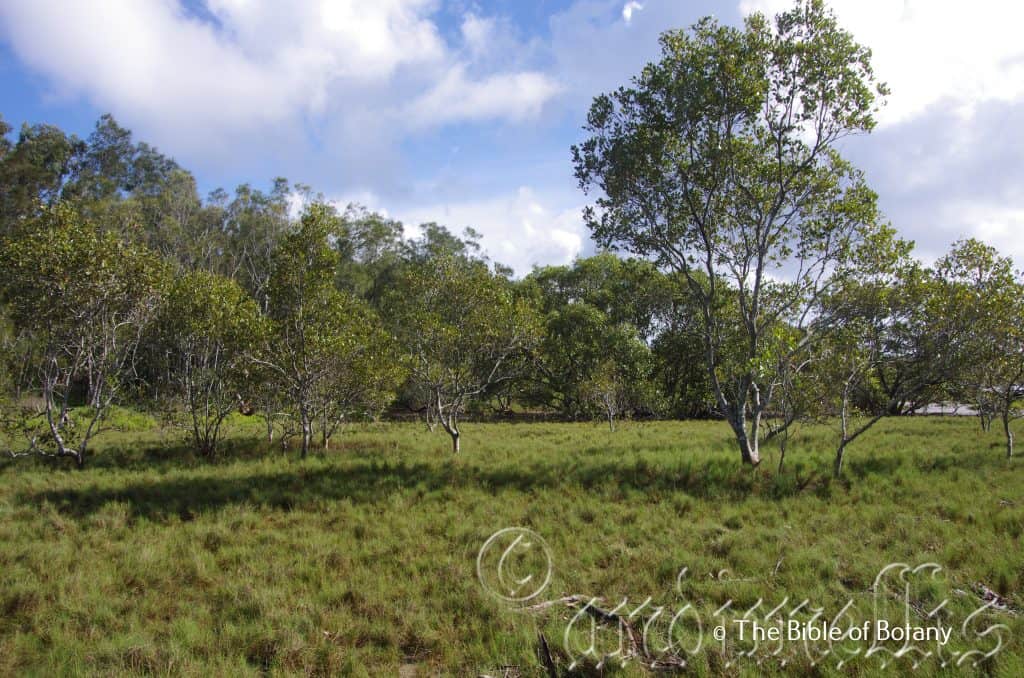
Currumbim Creek Estuary Qld.

Currumbim Creek Estuary Qld.
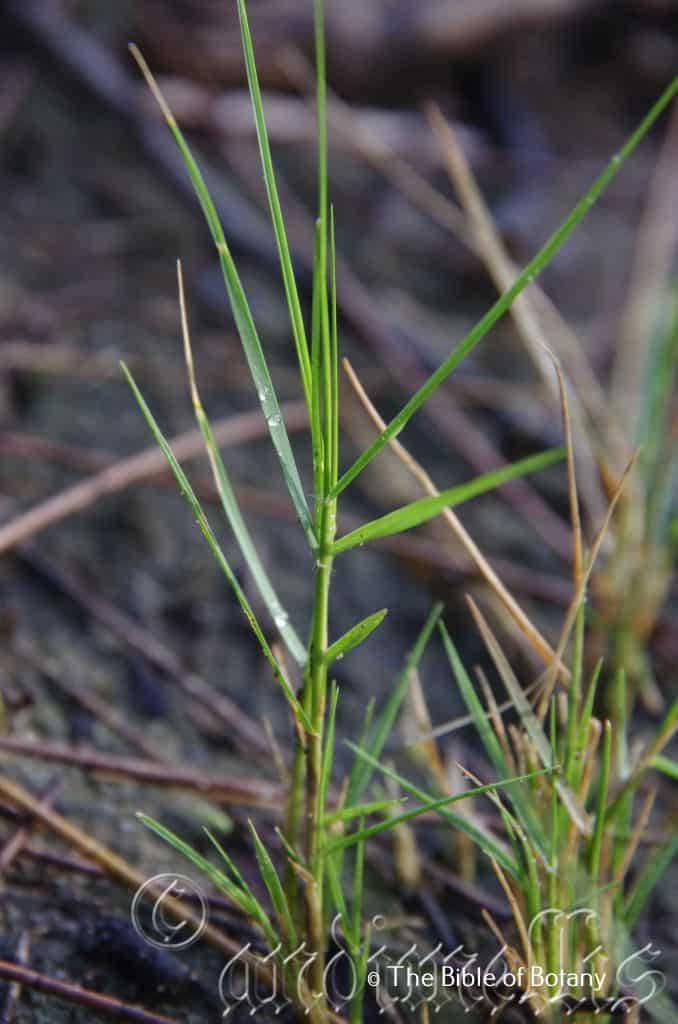
Currumbim Creek Estuary Qld.
Sporobolus virginicus
Classification:
Unranked: Monocot
Sub Class: Commelinids
Order: Poales
Family: Poaceae
Genus: From Sporos, which is Ancient Greek for a fern seed and Bolus, which is Ancient Greek for throwing or discarding. It refers to how easy the seeds are released when ripe.
Specie: From Virginicus, which is Latin for a maiden. It refers to plants especially the fruits or seeds, which have a certain purity about them.
Variety: Sporobolus virginicus var. minor. From Minor, which is Latin for smaller. It usually refers to plants but can refer to a structure or organ on the plant, which are smaller than other species in the genus.
Variety: Sporobolus virginicus var. virginicus. From Virginicus, which is Latin for a maiden. It refers to plants especially the fruits or seeds, which have a certain purity about them.
Common Name: Salt Water Couch or Marine Couch.
Distribution:
Sporobolus virginicus var. virginicus is found almost entirely around the entire Australian coast except for the western side of The Great Australian Bite and the western and southern beaches of Tasmania.
Sporobolus virginicus var. minor is found almost entirely around the entire Australian coast except for the western side of The Great Australian Bite and the western and southern beaches of Tasmania.
https://avh.ala.org.au/occurrences/search?taxa=Sporobolus+virginicus#tab_mapView
Habitat Aspect Climate:
Sporobolus virginicus prefers full sun to bright reflected glares. It grows along creeks alluvial plains in most types of open woodlands close to the coast that have saline soils on frontal dunes and back dunes, salt pans, salt marshes and river estuaries. The altitude ranges from 10 meters BSL to 370 meters ASL.
The temperatures range from minus 3 degrees in August to 45 degrees in January.
The rainfalls range from lows of 150mm to an average of 3200mm. In the lower rainfall areas the plants are always associated with seasonal flooding water.
Soil Requirements:
Sporobolus virginicus prefers deep sands to light fatty clays or light gritty clays. The soils are derived from decomposed sandstones, alluvial deposits or accumulated peaty sands. The soils pH ranges from 5pH to 7.5pH. It does not tolerate water logged soils. Non saline soils to extremely saline soils are tolerated.
Height & Spread:
Wild Plants: 0.3m to 0.5m by 0.5m to 0.9mm.
Characteristics:
Sporobolus virginicus grows as a medium tussock grass with mid blue-green culms. The plants are easily distinguished by their pale creamy-brown rhizomatous or stoloniferous growth close to the sea shore.
Sporobolus virginicus pale green, pale blue-green or pale blue linear leaves are rolled inwards and measure 50mm to 80mm in length by 0.5mm to 3mm in width. The ligules’ margins are covered in ciliate hairs which measure greater than 0.25mm in length. The ciliate hairs near the base and apex are hirtellous and measure 1.5mm to 2mm in length.
The infloresecence of Sporobolus virginicus is spicate rachises which measure 100mm to 350mm. The peduncles measure 50mm to 220mm in length while the rachises measure 50mm to 80mm in length and the pedicels measure 1mm to 4mm in length. The rachises are flattened, angled glabrous and ribbed. The spikelets measure 2mm to 4mm in length. The single floret is scabrous with the glumes being glabrous. The lower glumes have an acute apex, 2 or 3 nerves and measure 2mm to 3mm in length. The upper glumes have an acute apex and measure 2.5mm to 3.5mm in length. Branchlets measure 70mm to 140mm in length and there are 2 to 4 per node.
Sporobolus virginicus fruits are small grains. The grains measure 0.7mm to 0.9mm in length. The pale green grains turn pale creamy-fawn when ripe.
Confusing Subspecies Varieties:
Sporobolus virginicus var. virginicus leaves measure 0.5mm to 1mm in width.
Sporobolus virginicus var. minor’s leaves measure 1mm to 3mm in width.
Wildlife:
Sporobolus virginicus appears not to have any predators on a regular basis though I have seen small black caterpillars on the plants from time to time.
Seeds are apparently nutrient rich for stock but cannot be overgrazed. Grazing by eating back more than once a year is not advisable.
Sporobolus virginicus is an exceptionally good erosion control grass for beach fronts and around salt plains.
Cultivation:
At first glance Sporobolus virginicus may appear just like any other grass.
Sporobolus virginicus makes an excellent sea side plant on pure sand along estuaries where salt and king tide inundations are a problem.
Propagation:
Seeds: Sporobolus virginicus seeds can be sown directly onto a seed raising mix. Do not cover the seeds but pat them down on the surface as it is light sensitive. Place the tray in a warm sunny position. When the seedlings are 30mm to 50mm tall, prick them out and plant them into 50mm native tubes using a good organic mix.
Once the seedlings reach 100mm to 150mm in height they can be planted out into their permanent position.
Division:
Division is a good method to grow small numbers of plants which mature very quickly. When growing from divisions remove the plant from the soil and just cut it into 3 or 4 equal parts, first down the middle then halve those sections again. Remove unwanted dead leaves and any old small clumps that look weak or dead. Plants can be divided further but ensure each division has a several strong shoots and healthy rhizomes with good root growth. Replant ensuring the soil is at the same level as before. Cut the leaves back to about 100mm in length then give a good soaking with our recommended native organic fertilizers. New shoots will appear within two weeks.
Fertilize using Seaweed, fish emulsion or organic chicken pellets soaked in water and apply the liquid on an alternate basis. Fertilize every 2 months until the plants are well established to maintain health, vitality and better flowering.
Further Comments from Readers:
“Hi reader, it seems you use The Bible of Botany a lot. That’s great as we have great pleasure in bringing it to you! It’s a little awkward for us to ask, but our first aim is to purchase land approximately 1,600 hectares to link several parcels of N.P. into one at The Pinnacles NSW Australia, but we need your help. We’re not salespeople. We’re amateur botanists who have dedicated over 30 years to saving the environment in a practical way. We depend on donations to reach our goal. If you donate just $5, the price of your coffee this Sunday, We can help to keep the planet alive in a real way and continue to bring you regular updates and features on Australian plants all in one Botanical Bible. Any support is greatly appreciated. Thank you.”
Sprengelia sprengelioides
Classification:
Unranked: Eudicots
Class: Asterids
Order: Ericales
Family: Ericaceae
Genus: Is named in honour of Kurt Sprendal; 1750-1816, who was a German naturalist who enthusiastically enhanced the knowledge of pollination.
Specie: Is named in honour of Kurt Sprendal; 1766-1833, who was a German botanist who enthusiastically naturalist who enhanced the knowledge of pollination and Eîdos/Oides, which is Ancient Greek for alike or similar to. It refers to the similarity of plants to that of Sprengelia genus.
Sub specie:
Common Name:
Distribution:
Sprengelia sprengelioides is found on the coastal strip and off shore sand islands south from the Byfield National Park in central coastal Queensland to the Wentworth Falls and Port Jackson in central coastal Queensland.
https://avh.ala.org.au/occurrences/search?taxa=Sprengelia+sprengelioides#tab_mapView
Habitat Aspect Climate:
Sprengelia sprengelioides prefers dappled shade to full sun. It grows in coastal heaths, close to the coast in swamps and wallums behind the back dunes. The usual altitude ranges from 5 meters ASL to 15 meters ASL.
The temperatures range from minus 2 degrees in August to 37 degrees in January.
The rainfalls range from lows of 250mm to 800mm average per annum.
Soil Requirements:
Sprengelia sprengelioides prefers to grow on white sands, peaty sands, to sandy loams. The soils are usually derived from accumulated beach sands or rarely decomposed sandstone. The soils pH ranges from 4.5pH to 6pH. It does not tolerate water logged soils. Non saline soils to moderately saline soils are tolerated as are salt laden winds.
Height & Spread:
Wild Plants: 0.3m to 1m by 0.3m to 0.8m
Characteristics:
Sprengelia sprengelioides grows as an erect shrub with glabrous, wiry stems.
The crowded, spiralling, ovate leavesmeasure 4mm to 12mm in length by 1.5mm to 3.2mm in width. The bases are truncate before becoming clasping while the apexes are mucronate. The mucronate tip measures 0.3mm to 0.5mm in length. The concolourous laminas are deep green and glabrous. The laminas are rigid and recurve upwards from the mid vein to the margins and are appressed on the basal section and decurve on the apical half. The margins are minutely toothed.
The inflorescences are born solitary from the terminals or at times from the upper axils. There are 2 to 6 perfect individual flowers on the peduncles. The deep green, ovate bracts measure 7mm to 8mm in length and have acuminate apexes with short mucronate tips. The bracts are glabrous with hyaline margins.
The 5 deep green sepals are broad ovate and measure 6mm to 10mm in length. It is sub obtuse, glabrous, with broad hyaline margins especially towards the base. The white, cupuliform corolla tube is short and usually measures 2mm to 3mm in length or rarely to 6mm in length. The 5 white lobes are erect to spreading with obtuse cupuliform apexes and measure 6mm to 8mm in length.
The 5 alternate stamens are erect. The pale yellow-green filaments measure 0.8mm to 1.1mm in length. The cylindrical to slightly sagittate, adnately fixed, longitudinal anthers are purplish-pink and measure 3.5mm to 4mm in length by 0.8mm to 1mm in width.
The ovary is pale grass-green and glabrous. The pale greenish-yellow style and globose stigma are glabrous. The slender pistil measures 4mm to 5.5mm in length. The flowers appear from June to September.
The fruits are loculicidal capsules. The green capsules turn grey when ripe. The calyx lobes are persistent on the ripe fruit. The capsules are glabrous and measure 3mm to 4mm in length by 2.5mm to 3mm in diameter.
Wildlife:
Sprengelia sprengelioides support native bees, wasps, butterflies and native flies throughout their range.
Cultivation:
Sprengelia sprengelioides is a medium shrub that responds well to cultivation and is best grown in the open, in full sun or dappled shade on sandy soils. It is particularly beautiful when in flower or fruit. In cultivation they will grow from 1 meter to 1.2 meters in height by 1.2 meters to 1.4 meters in diameter when grown in the open.
It grows exceptionally well where a layer of mulch prevails that will keep the soil cool and moisture at an even level. Add to the above, if it is given a little extra moisture with a little native fertilizer on a regular basis the plants will respond with superb flowering over a longer period and maintain better colour in the leaves. Light pruning will aid in smaller bushier shrubs. Pruning should be done after the peak flowering period subsides in October. Removing the spent flowers will also help promote a longer flowering period.
It is suitable placed near a bend in the garden or along a long driveway with other smaller broad green leaf shrubs. It is fast growing and offer shelter and safe corridors for wildlife when mixed with taller more open shrubs. It gains a lot of attention and highlights the other broader or finer leaf shrubs. Mass plant them (3 to 8) in the midground in bush gardens with medium and larger plants behind. Plants with broad green leaves with red or yellow winter flowering plants for a great affect in the foreground while large flowering specie can be placed in the background. It is ideal choice for planting on tight bends or “U” bends. Planted on the inside of the bend, when it is in flower these plants will break your concentration and the viewer will be transfixed on the display of flowers rather than watching the path. Here the choice of companion plants to use on the outside of the bend is limited only by your imagination. Small Acacia specie to 1 meter in diameter with cream or yellow flowers offer elegance and formality while purples and reds offer strength and contrasts. Ensure the Acacia specie have fine leaves and if they were to flower at the same time or in a different season would be of no consequence as the foliages would still deliver plenty of interest. This is one plant that benefits the gardener if mass planted close together in small sections. When mass planting use 1 meter to 1.2 meter centers.
Propagation:
Seeds: The seeds can be removed easily from the mature fruits.
Sow fresh seeds directly into a seed raising mix, keeping them moist not wet. Do not over water as the seeds will rot off before germination takes place. Place the trays in a cool shaded area with 50mm shade cloth in the bush house. When the seedlings are 20mm to 25mm tall, prick them out and plant them into 50mm native tubes using a good organic mix.
As the seedlings roots reach the bottom of the tubes plant them out into their permanent position. Do not delay as set will back will occur until the new roots develop. Expect some losses along the way.
Cuttings: Fortunately Sprengelia sprengelioides cuttings are difficult to strike so expect many losses along the way. Use 100mm to 200mm long tip cuttings or lateral shoots from the present season’s growth. Take them in warmer months of the year. Remove half the leaves from the bottom section being careful not to tear the bark.
1 Prepare the cutting mix by adding two thirds sharp clean river sand, one third peat or one third perlite. These ingredients must be sterilized,
2 Select good material from non diseased plants,
3 Select semi green stems for cuttings. Look for a stem with two or three nodes,
4 Place the cutting on a flat, hard surface, and make a clean cut down one side of the cutting at the base for 10mm with a sharp sterile knife or razor blade. – This scarification of the node will increase the chances of roots emerging from this spot. Now remove all but one or two the leaves, leaving the apex leaves in tact. If the leaves are very large in proportion to the stem, cut off the apical halves.
5 Fill a saucer with water, and place a little medium strength rooting hormone into another container like a milk bottle top. Dip the node end of the cutting into the water and then into the rooting hormone. Tap off any excess hormone,
6 Use a small dipple stick or old pencil to poke a hole into the soilless potting mix. Ensure the hole is slightly larger than the stem diameter and be careful not to wipe the rooting hormone off the cuttings base. Place 2 to 4 cuttings in each of the 50mm native tubes,
7 I like to place the tubes in bucket with holes drilled in the bottom to allow excess water to drain out. A plastic bag that fits over the bucket is ideal to help maintain temperature and moisture. Place in a semi shaded, warm position like under 50mm shade cloth.
8 When the cuttings have struck, open the bag to allow air circulation for a few days to a week,
9 Once hardened off remove the cuttings from the bag and allow to further hardening for a few more days to a week,
10 Transplant into a good potting mix to grow on.
Fertilize using seaweed, fish emulsion or organic chicken pellets soaked in water on an alternate basis. Fertilize every two months until the plants are established then twice annually in early September or March to maintain health, vitality and better flowering.
Further Comments from Readers:
“Hi reader, it seems you use The Bible of Botany a lot. That’s great as we have great pleasure in bringing it to you! It’s a little awkward for us to ask, but our first aim is to purchase land approximately 1,600 hectares to link several parcels of N.P. into one at The Pinnacles NSW Australia, but we need your help. We’re not salespeople. We’re amateur botanists who have dedicated over 30 years to saving the environment in a practical way. We depend on donations to reach our goal. If you donate just $5, the price of your coffee this Sunday, We can help to keep the planet alive in a real way and continue to bring you regular updates and features on Australian plants all in one Botanical Bible. Any support is greatly appreciated. Thank you.”
In the spirit of reconciliation we acknowledge the Bundjalung, Gumbaynggirr and Yaegl and all aboriginal nations throughout Australia and their connections to land, sea and community. We pay our respect to their Elders past, present and future for the pleasures we have gained.
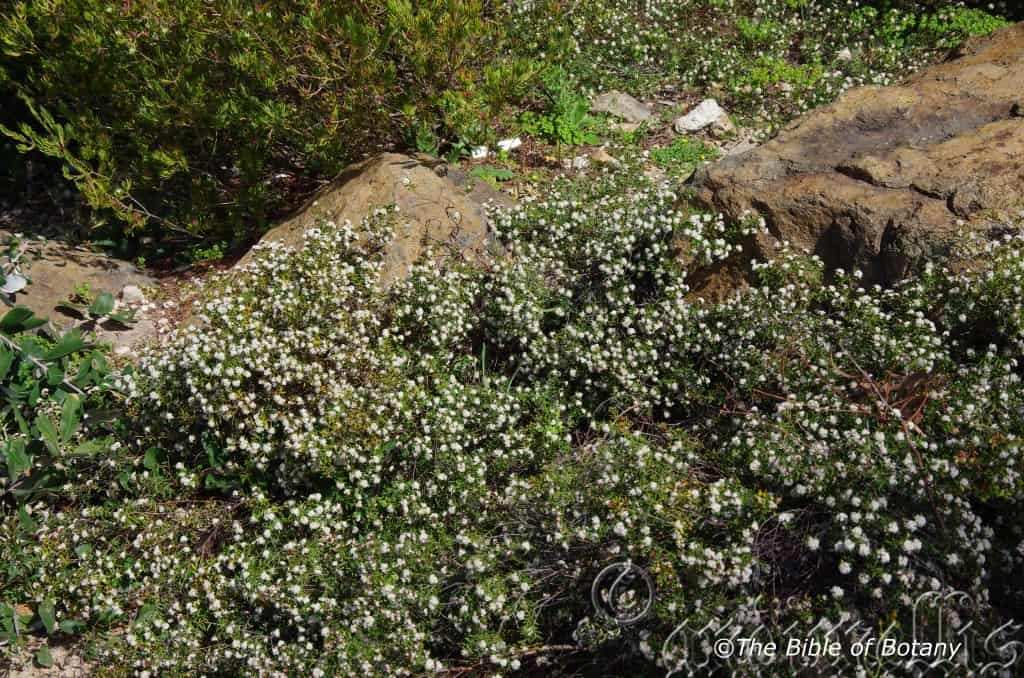
National Botanic Gardens ACT
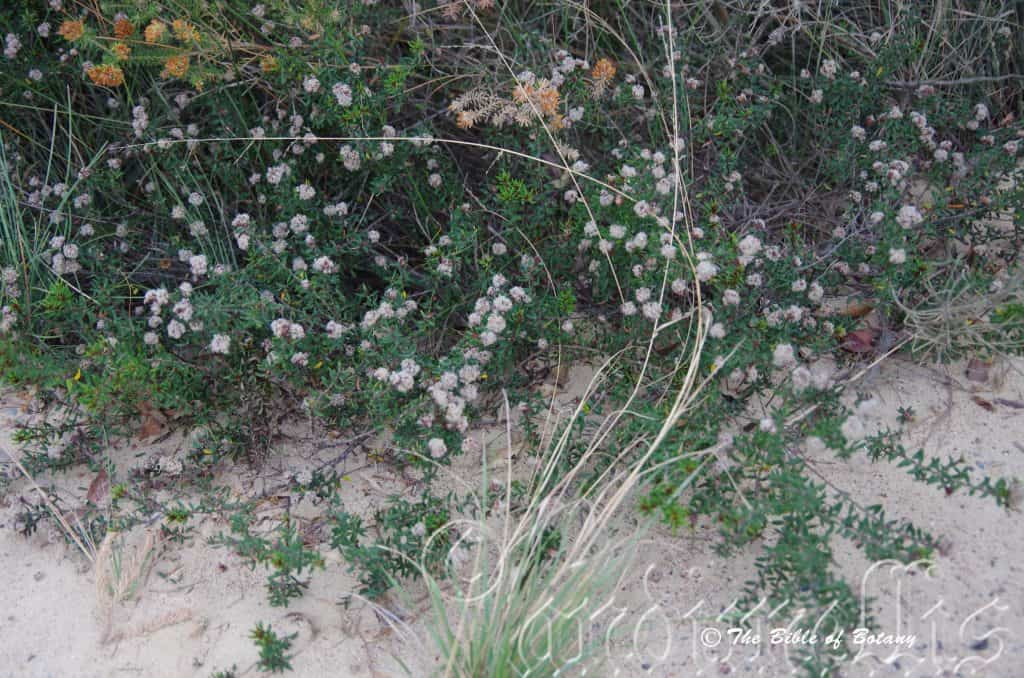
Back Dunes North Haven to Port Macquarrie NSW
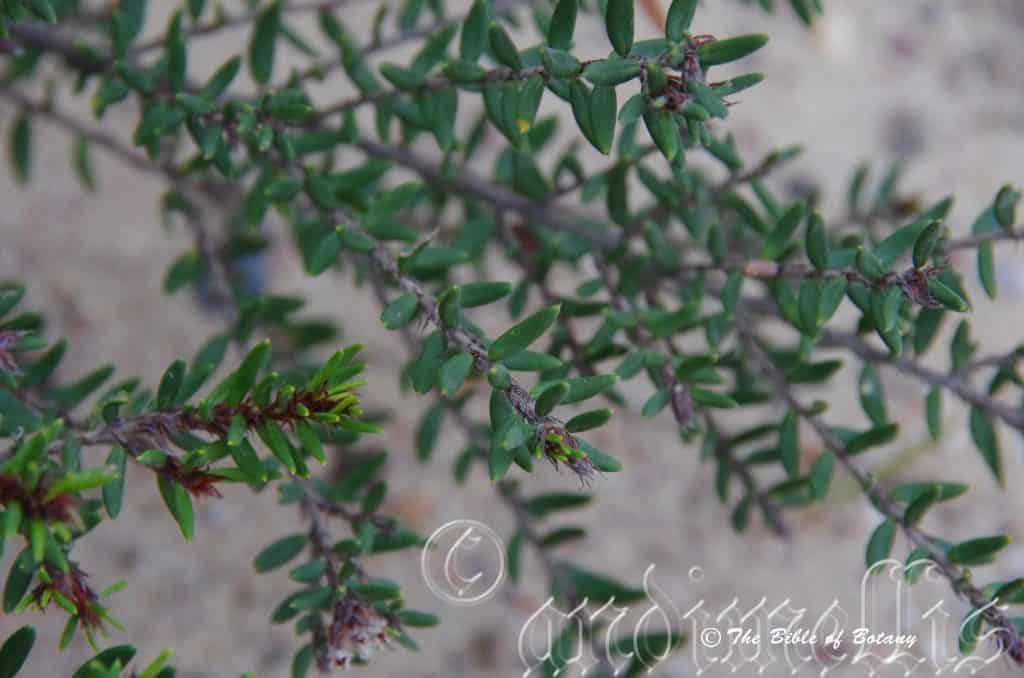
Back Dunes North Haven to Port Macquarrie NSW

Back Dunes North Haven to Port Macquarrie NSW
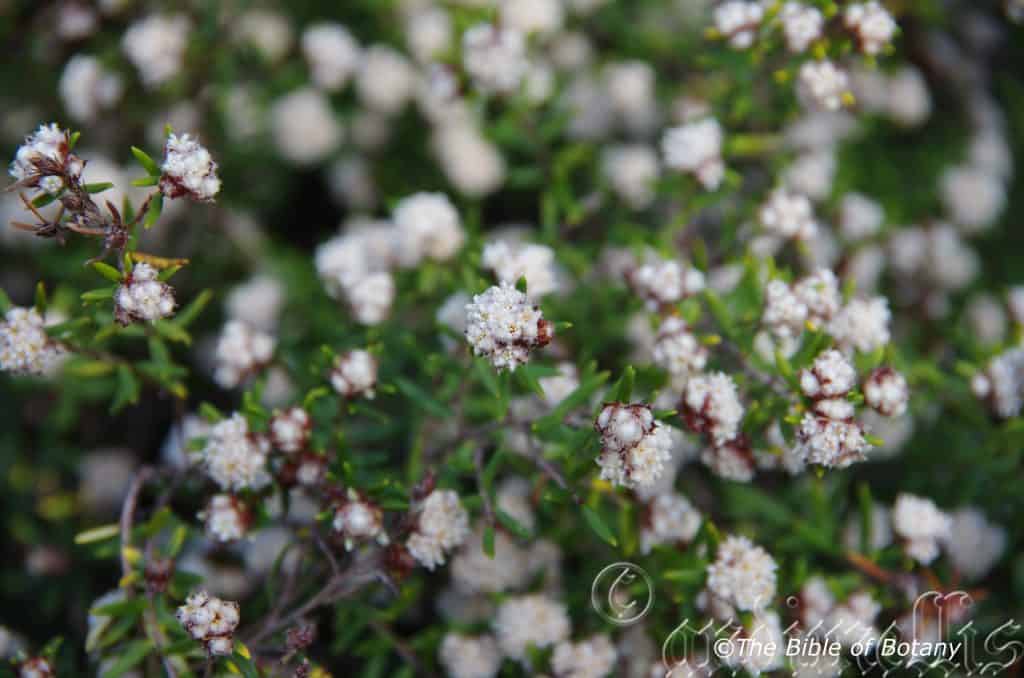
Back Dunes North Haven to Port Macquarrie NSW
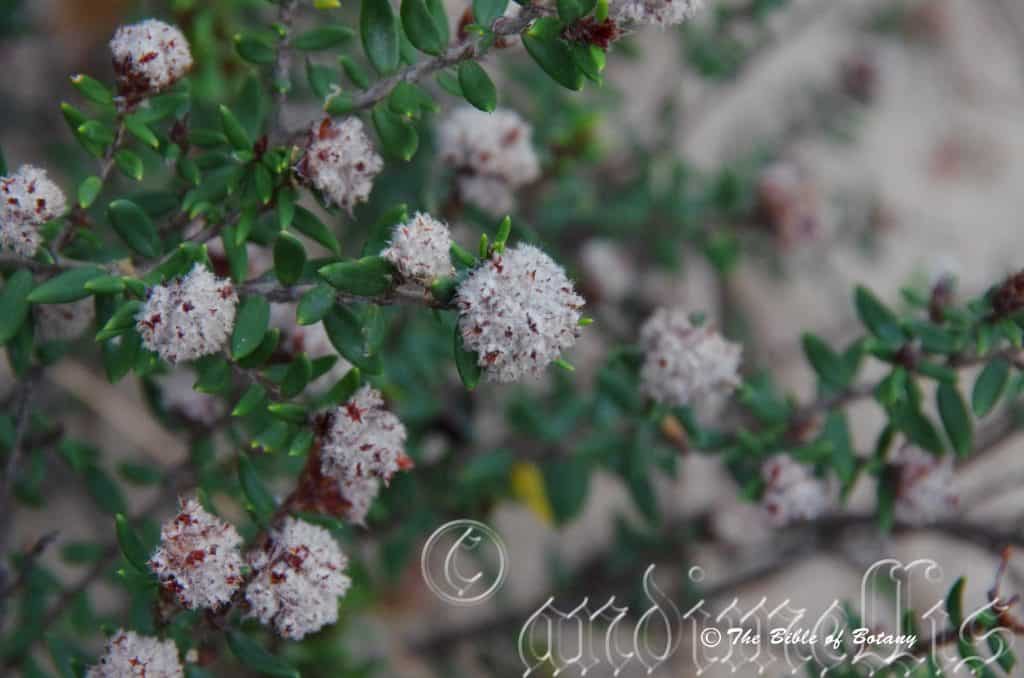
Back Dunes North Haven to Port Macquarrie NSW
Spyridium scortechinii
Classification:
Unranked: Eudicots
Class: Rosids
Order: Rosales
Family: Rhamnaceae
Genus: From Spyridium, which is Ancient Greek for little basket. It refers to the specialized leafy bracts that surround the flowers of the type specimen.
Specie: Is named in honour of Scortechini; 1845-1886, who was born in the Papal States of the time in Italy. He collected plant material from around Stanthorpe and the Logan area in Australia.
Sub specie:
Common Name:
Distribution:
Spyridium scortechinii is found in 3 isolated populations and 3 disjunct populations on mainland Australia. The disjunct populations are found south from the Stanthorpe Plateau in far south eastern Queensland to Diamond Head and Kendall in central eastern New South Wales. The second population is found from Lithgow to Sydney with the third population being found from Fagan’s Creek to Kalaru in the Bega Valley.
The 2 isolated populations are found around Mareeba and Mount Mulligan in north eastern Queensland and near Ungarru on the southern section of the Eyre Peninsular in South Australia.
The South Australian specie has been recently identified as Spyridium burragorang.
https://avh.ala.org.au/occurrences/search?taxa=Spyridium+scortechinii#tab_mapView
Habitat Aspect Climate:
Spyridium scortechinii prefers light dappled shade to full sun. It usually grows on the coastal ranges and ranges in open woodlands and heaths or at times in coastal woodland heaths. The altitude ranges from 10 meters ASL to 1380 meters ASL.
The temperatures range from minus 4 degrees in August to 35 degrees in January.
The rainfalls range from lows of 400mm to 3000mm average per annum.
Soil Requirements:
Spyridium scortechinii prefers to grow on better quality sands, sandy loams to medium clays. The soils are usually derived from decomposed black basalt, granites or sandstone. The soils pH ranges from 5pH to 6pH. It does not tolerate water logged soils. Non saline soils to moderately saline soils are tolerated.
Height & Spread:
Wild Plants: 0.3m to 0.5m by 0.3m to 0.4m
Characteristics:
Spyridium scortechinii grows as a small turbinate to spreading shrub with mid brown-grey to deep grey-brown stems. The new growth is pale brown to pale brownish-green and sparsely to moderately covered in white tomentose hairs.
The opposite, ovate to narrow-lanceolate leaves measure 6mm to 15mm in length by 1mm to 5mm in width when entire. The brown linear stipules measure 2mm to 3mm in length. The bases taper to the stems while the apexes are acute with a short sharp spine. The discolourous laminas are grass-green to deep green, dull to glossy and glabrous to very sparsely covered in long off white to pale grey tomentose hairs on the upper lamina while the lower lamina is paler and densely covered in off white tomentose hairs. The laminas are flat to convex on the upper surface and decurve strongly downwards at the apex. The margins are entire and at times retrorse. The mid vein is slightly prominent on the lower lamina and is often covered in a few longer off white tomentose hairs on the lower surface and is slightly grooved and is very sparsely to moderately covered in off white tomentose hairs on the upper lamina.
The inflorescences are born in dense terminal heads. There are usually 4 or 5 or at times up to 10 individual flowers in a head. The heads measure 10mm to 16mm in diameter. The pinkish-brown to brownish-pink bracts surround the heads as well as individual flowers. The individual flowers are densely surrounded by long, soft, off white tomentose hairs. The white to pale pinkish corolla tubes measure 4mm to 5mm in length while the 5 white lobes measure 3.5mm to 5mm in length.
There are 5 opposite white stamens. The white style and stigma are glabrous. The flowers appear from August to November.
The fruits are globose to oblong follicles.
Confusing Species:
Spyridium scortechinii’s bracts are brown and barely surround both the head and individual flowers.
Spyridium burragorang bracts are white and larger than the individual flowers.
Wildlife:
Spyridium scortechinii support native colony bee like Tetragonula carbonaria along the coast.
Cultivation:
Spyridium scortechinii is a small shrub that can be grown in association with other bushland or rockery specie in small to larger gardens. It is ideal in cultivation and grows from 0.5 meters to 0.6 meters in height by 0.8 meters to 1 meter in diameter when grown in the open.
It grows exceptionally well on light clay soils and heavier silts where deep leaf litter keeps the soil cool and moisture at an even level. If these requirements are met they can cope with temperatures as low as minus 5 degrees and up to 36 degrees. It is moderately drought resistant once established however growth is slowed and flowering becomes erratic and often the flowering season is drastically shortened when other than ideal conditions are supplied.
However if it is given an adequate supply of water and a little native fertilizer on a regular basis the plants will respond with exceptional flowering and fruit over a long period.
Spyridium scortechinii make very good formal border shrubs in cottage gardens or excellent contrast sub shrubs in a bush garden or moist heath garden setting.
It is ideal for medium to large rockeries as the feature plant. Here it can be planted in small groups of 2 or 3 or as a standalone plant to create a central feature. If it is surrounded by shorter plants with finer or larger foliages, that are yellow, pink or lavender then year round contrast can be created with a strong accent in the center of the bed. A more formal look can be achieved by radiating the smaller plants in a pattern of gold and purple. Be careful with deep red, orange or orange–red flowers as these will steal the show.
Propagation:
Seeds: The seeds can be removed easily from the mature fruits.
Sow fresh seeds directly into a seed raising mix, keeping them moist not wet. Do not over water as the seeds will rot off before germination takes place. Place the trays in a cool shaded area with 50mm shade cloth in the bush house. When the seedlings are 20 to 25mm tall, prick them out and plant them into 50mm native tubes using a good organic mix.
As the seedlings roots reach the bottom of the tubes plant them out into their permanent position. Do not delay.
Cuttings: Unfortunately Spyridium scortechinii cuttings are apparently difficult to strike so expect many losses along the way. Try using 100mm to 200mm long tip cuttings or lateral shoots from the present season’s growth. Take them in warmer months of the year. Remove half the leaves from the bottom section being careful not to tear the bark.
1 Prepare the cutting mix by adding two thirds sharp clean river sand, one third peat or one third perlite. These ingredients must be sterilized,
2 Select good material from non diseased plants,
3 Select semi green stems for cuttings. Look for a stem with two or three nodes,
4 Place the cutting on a flat, hard surface, and make a clean cut down one side of the cutting at the base for 10mm with a sharp sterile knife or razor blade. – This scarification of the node will increase the chances of roots emerging from this spot. Now remove all but one or two the leaves, leaving the apex leaves in tact. If the leaves are very large in proportion to the stem, cut off the apical halves.
5 Fill a saucer with water, and place a little medium strength rooting hormone into another container like a milk bottle top. Dip the node end of the cutting into the water and then into the rooting hormone. Tap off any excess hormone,
6 Use a small dipple stick or old pencil to poke a hole into the soilless potting mix. Ensure the hole is slightly larger than the stem diameter and be careful not to wipe the rooting hormone off the cuttings base. Place 2 to 4 cuttings in each of the 50mm native tubes,
7 I like to place the tubes in bucket with holes drilled in the bottom to allow excess water to drain out. A plastic bag that fits over the bucket is ideal to help maintain temperature and moisture. Place in a semi shaded, warm position like under 50mm shade cloth.
8 When the cuttings have struck, open the bag to allow air circulation for a few days to a week,
9 Once hardened off remove the cuttings from the bag and allow to further hardening for a few more days to a week,
10 Transplant into a good potting mix to grow on.
Fertilize using seaweed, fish emulsion or organic chicken pellets soaked in water on an alternate basis. Fertilize every two months until the plants are established then twice annually in early September or March to maintain health, vitality and better flowering.
Further Comments from Readers:
“Hi reader, it seems you use The Bible of Botany a lot. That’s great as we have great pleasure in bringing it to you! It’s a little awkward for us to ask, but our first aim is to purchase land approximately 1,600 hectares to link several parcels of N.P. into one at The Pinnacles NSW Australia, but we need your help. We’re not salespeople. We’re amateur botanists who have dedicated over 30 years to saving the environment in a practical way. We depend on donations to reach our goal. If you donate just $5, the price of your coffee this Sunday, We can help to keep the planet alive in a real way and continue to bring you regular updates and features on Australian plants all in one Botanical Bible. Any support is greatly appreciated. Thank you.”
In the spirit of reconciliation we acknowledge the Bundjalung, Gumbaynggirr and Yaegl and all aboriginal nations throughout Australia and their connections to land, sea and community. We pay our respect to their Elders past, present and future for the pleasures we have gained.
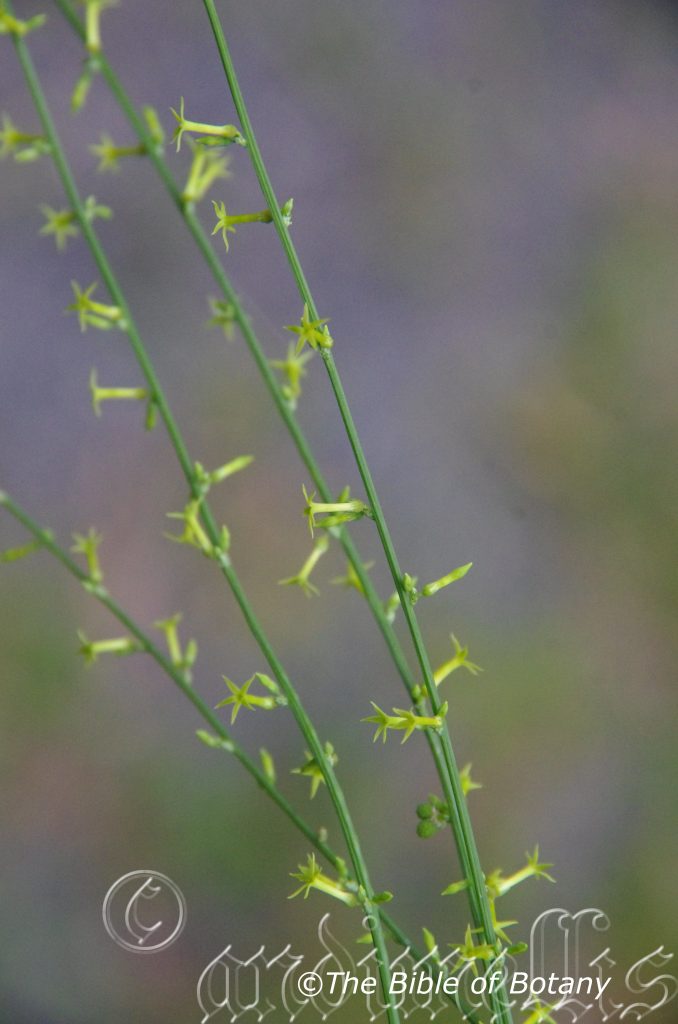
Pillar Valley NSW
Stackhousia nuda
Classification:
Unranked: Eudicots
Class: Rosids
Order: Celastrales
Family: Celastraceae
Genus: Is named in honour of Thomas Stackhouse; 1832?-1896, who was an Australian naval officer and botanist who formed the Linnean Society of NSW. He specialized in rare and endangered plants.
Specie: From nūdum, which is Latin for naked, bare, simple, pure or unadorned. It refers to the flowers, which are glabrous, simple pure and unadorned.
Sub specie:
Common Name: Slender Stackhousia.
Distribution:
Stackhousia nuda is found south from Shoalwater Bay in central coastal Queensland to the Marlo Backwater swamp in coastal Victoria.
It is also found in the Grampians in central western Victoria.
https://avh.ala.org.au/occurrences/search?taxa=Stackhousia+nuda#tab_mapView
Habitat Aspect Climate:
Stackhousia nuda prefers light dappled shade to full sun. It usually grows in open low growing heaths in shallow depressions, flats or occasionally in swampy locations. The altitude ranges from 2 meters ASL to 200 meters ASL.
The temperatures range from minus 1 degree in August to 42 degrees in January.
The rainfalls range from lows of 800mm to 2600mm average per annum.
Soil Requirements:
Stackhousia nuda prefers to grow on better quality sands, sandy loams to light-medium clays. The soils are usually derived from decomposed granites, sandstone, accumulated sands or deposited muddy silts. The soils pH ranges from 4.5pH to 6.5pH. It tolerates water logged soils and the occasional inundation. Non saline soils to moderately saline soils are tolerated as are salt laden winds.
Height & Spread:
Wild Plants: 0.4m to 1m by 0.3m to 0.5m.
Characteristics:
Stackhousia nuda grows as a small erect to ascending shrub branched near the base, with the occasional branch above the base. The stems are angulated or strongly ribbed and glabrous.
The leaves are reduced to scales along the stems.
The inflorescences are long, lax usually one sided spikes. The flowers appear in 1 to 4 bracted clusters and are sessile or shortly pedicellate. The ovate to elliptical erose bracts are entire to finely toothed. The Hypanthium is subsessile and measure 5mm to 7mm in length. The pale creamy-yellow sepals measure 0.7mm to 0.9mm in length with the margins being paler, erose to toothed. The long narrow, pale greenish-yellow to deep creamy-yellow campanulate corolla tube measures 2mm to 3mm in length by 0.7mm to 1.3mm in diameter. The 5 pale greenish-yellow to deep creamy-yellow narrow elliptical lobes are narrow acute to obtuse. The lobes measure 1mm to 2.5mm in length with a narrow-acute to accuminate apex.
There are 5 stamens. The style and yellow stigma are glabrous. The flowers appear from late November to March.
The fruits are broad obovoid to ellipsoidal cocci. The 1 to 3 cocci measure 2mm to 3.5mm in length. The pale greenish-yellow cocci turn deep rusty brown when ripe and have a shallow basal cavity.
Wildlife:
Stackhousia nuda wildlife is unknown to the author.
Cultivation:
Stackhousia nuda is a beautiful small sub shrub that is ideal for small to large gardens that are on moist accumulated sands or course sands, granitic sands in sunny positions. In cultivation it grows from 0.5 meters to 0.6 meters in height by 0.5 meters to 0.6 meters in diameter when grown in the open.
It grows well where deep leaf litter keeps the soil cool and moisture at an even level. If these requirements are met it can cope with temperatures as low as minus 3 degrees and up to 36 degrees. It is moderately drought resistant once established but prefers consistant soil moisture.
However if it is given an adequate supply of water and a little native fertilizer on a regular basis the plants will respond with more stems and exceptional flowering over a long period.
It makes a good formal border shrubs in seaside cottage gardens or excellent contrast sub shrubs in a bush garden or dry heath garden settings next to annuals or small perennials with red or orange flowers.
It is ideal for small to medium rockeries as the feature plant. Here it can be planted in small groups of 5 to 9 as the central feature or scattered to give a more informal look. If it is surrounded by shorter plants with finer or larger foliages, that are yellow, pink or lavender then year round contrast can be created with a strong accent in the center of the bed. A more formal look can be achieved by radiating the smaller plants in a pattern of gold and purple. Be careful with deep red, orange or orange–red flowers as these will steal the show.
Propagation:
Seeds: The seedscan be removed easily from the mature fruits.
Sow fresh seeds directly into a seed raising mix, keeping them moist not wet. Do not over water as the seeds will rot off before germination takes place. Place the trays in a cool shaded area with 50mm shade cloth in the bush house. When the seedlings are 20 to 25mm tall, prick them out and plant them into 50mm native tubes using a good organic mix.
As the seedlings roots reach the bottom of the tubes plant them out into their permanent position. Do not delay.
Further Comments:
“Hi reader, it seems you use The Bible of Botany a lot. That’s great as we have great pleasure in bringing it to you! It’s a little awkward for us to ask, but our first aim is to purchase land approximately 1,600 hectares to link several parcels of N.P. into one at The Pinnacles NSW Australia, but we need your help. We’re not salespeople. We’re amateur botanists who have dedicated over 30 years to saving the environment in a practical way. We depend on donations to reach our goal. If you donate just $5, the price of your coffee this Sunday, We can help to keep the planet alive in a real way and continue to bring you regular updates and features on Australian plants all in one Botanical Bible. Any support is greatly appreciated. Thank you.”
In the spirit of reconciliation we acknowledge the Bundjalung, Gumbaynggirr and Yaegl and all aboriginal nations throughout Australia and their connections to land, sea and community. We pay our respect to their Elders past, present and future for the pleasures we have gained.\
Stackhousia spathulata
Classification:
Unranked: Eidicots
Class: Rosids
Order: Celastrales
Family: Celastraceae
Genus: Is named in honour of Thomas Stackhouse; 1832?-1896, who was an Australian naval officer and botanist who formed the Linnean Society of NSW. He specialized in rare and endangered plants.
Specie: From Spatula, which is Latin to have the shape of a spoon. It refers to leaves or phyllodes, which somewhat resembles a spoon or ladle.
Sub specie:
Common Name: Coastal Stackhousia.
Distribution:
Stackhousia spathulata is found south from Fraser Island in central coastal Queensland to southern Eyre Peninsular in southern South Australia. It is mainly found in the coastal plains.
It is found on Flinders Island and then down the west Coast of Tasmania.
https://avh.ala.org.au/occurrences/search?taxa=Stackhousia+spathulata#tab_mapView
Habitat Aspect Climate:
Stackhousia spathulata prefers light dappled shade to full sun. It usually grows in heath, dry sclerophyll forest often near beaches, lagoons wallums or adjacent to swamps. The altitude ranges from 5 meters ASL to 30 meters ASL.
The temperatures range from minus 2 degrees in August to 36 degrees in January.
The rainfalls range from lows of 400mm to 2000mm average per annum.
Soil Requirements:
Stackhousia spathulata prefers to grow on sands or peaty sands. The soils are usually derived from accumulated peaty beach sands. The soils pH ranges from 4pH to 5pH. It does not tolerate water logged soils however prefers even moisture derived from capillary action. Non saline soils to moderately saline soils are tolerated as are salt laden winds.
Height & Spread:
Wild Plants: 0.3m to 0.5m by 0.4m to 0.6m.
Characteristics:
Stackhousia spathulata grows as a small procumbent to ascending sub shrub with multiple stems arising from near the base. The glabrous stems are greenish-red stems at the base that turn reddish-green then finally to green at the apexes.
The alternate, oblanceolate to spathulate leaves measure 15mm to 30mm in length by 2.5mm to 15mm in width. The bases taper to the stems while the apexes are broad acute to obtuse. The coriaceous, concolourous laminas are deep grass-green, dull to semi glossy and glabrous. The laminas are flat to slightly recurved upwards from the mid vein to the margins and gently recurve upwards near the apex. The margins are entire. The obtuse mid vein is prominent on the lower lamina.
The inflorescences are long, dense, cylindrical, spikes born from the terminals. There are 40 to 90 individual flowers on the glabrous, green spikes. The 3 herbaceous, triangular bracts are shallowly erose. The Hypanthium is subsessile and measure 1mm to 1.5mm in length. The pale creamy-yellow sepals measure 1.2mm to 2mm in length with shallowly erose lobes. The long narrow, white campanulate perianth tube is glabrous and measure 6mm to 8mm in length by 2.5mm to 3.5mm in diameter. The 5 white lobes are oblong with an obtuse apex. The lobes measure 4mm to 5mm in length.
There are 5 stamens. The style and yellow stigma are glabrous. The flowers appear from September to December.
The fruits are broad obovoid to broadly ellipsoidal cocci. The cocci with 3 prominent wings are glabrous and measure 4mm to 6mm in length. The green cocci turn deep grey to brown when ripe.
Wildlife:
Stackhousia spathulatus wildlife is unknown to the author.
Cultivation:
Stackhousia spathulata is a magnificent small sub shrub that is ideal for small to large beach side gardens that are on accumulated sands or possibly on course sands in hot sunny locations. In cultivation it grows from 0.5 meters to 0.6 meters in height by 0.5 meters to 0.6 meters in diameter when grown in the open.
It grows well where deep leaf litter keeps the soil cool and moisture at an even level. If these requirements are met they can cope with temperatures as low as minus 3 degrees and up to 36 degrees. It is moderately drought resistant once established.
However if it is given an adequate supply of water and a little native fertilizer on a regular basis the plants will respond with more stems and exceptional flowering over a long period.
It makes a good formal border shrubs in seaside cottage gardens or excellent contrast sub shrubs in a bush garden or dry heath garden setting.
It is ideal for small to medium rockeries as the feature plant. Here it can be planted in small groups of 2 to 5 as the central feature or scattered to give a more informal look. If it is surrounded by shorter plants with finer or larger foliages, that are yellow, pink or lavender then year round contrast can be created with a strong accent in the center of the bed. A more formal look can be achieved by radiating the smaller plants in a pattern of gold and purple. Be careful with deep red, orange or orange–red flowers as these will steal the show.
Propagation:
Seeds: The seeds can be removed easily from the mature fruits.
Sow fresh seeds directly into a seed raising mix, keeping them moist not wet. Do not over water as the seeds will rot off before germination takes place. Place the trays in a cool shaded area with 50mm shade cloth in the bush house. When the seedlings are 20 to 25mm tall, prick them out and plant them into 50mm native tubes using a good organic mix.
As the seedlings roots reach the bottom of the tubes plant them out into their permanent position. Do not delay.
Cuttings: Unfortunately Stackhousia spathulata cuttings are difficult to strike and many losses will occur along the way. Use 100mm to 200mm long tip cuttings or lateral shoots from the present season’s growth. Take them in warmer months of the year. Remove half the leaves from the bottom section being careful not to tear the bark.
1 Prepare the cutting mix by adding two thirds sharp clean river sand, one third peat or one third perlite. These ingredients must be sterilized,
2 Select good material from non diseased plants,
3 Select semi green stems for cuttings. Look for a stem with two or three nodes,
4 Place the cutting on a flat, hard surface, and make a clean cut down one side of the cutting at the base for 10mm with a sharp sterile knife or razor blade. – This scarification of the node will increase the chances of roots emerging from this spot. Now remove all but one or two the leaves, leaving the apex leaves in tact. If the leaves are very large in proportion to the stem, cut off the apical halves.
5 Fill a saucer with water, and place a little medium strength rooting hormone into another container like a milk bottle top. Dip the node end of the cutting into the water and then into the rooting hormone. Tap off any excess hormone,
6 Use a small dipple stick or old pencil to poke a hole into the soilless potting mix. Ensure the hole is slightly larger than the stem diameter and be careful not to wipe the rooting hormone off the cuttings base. Place 2 to 4 cuttings in each of the 50mm native tubes,
7 I like to place the tubes in bucket with holes drilled in the bottom to allow excess water to drain out. A plastic bag that fits over the bucket is ideal to help maintain temperature and moisture. Place in a semi shaded, warm position like under 50mm shade cloth.
8 When the cuttings have struck, open the bag to allow air circulation for a few days to a week,
9 Once hardened off remove the cuttings from the bag and allow to further hardening for a few more days to a week,
10 Transplant into a good potting mix to grow on.
Fertilize using seaweed, fish emulsion or organic chicken pellets soaked in water on an alternate basis. Fertilize every two months until the plants are established then twice annually in early September or March to maintain health, vitality and better flowering.
Further Comments from Readers:
“Hi reader, it seems you use The Bible of Botany a lot. That’s great as we have great pleasure in bringing it to you! It’s a little awkward for us to ask, but our first aim is to purchase land approximately 1,600 hectares to link several parcels of N.P. into one at The Pinnacles NSW Australia, but we need your help. We’re not salespeople. We’re amateur botanists who have dedicated over 30 years to saving the environment in a practical way. We depend on donations to reach our goal. If you donate just $5, the price of your coffee this Sunday, We can help to keep the planet alive in a real way and continue to bring you regular updates and features on Australian plants all in one Botanical Bible. Any support is greatly appreciated. Thank you.”
In the spirit of reconciliation we acknowledge the Bundjalung, Gumbaynggirr and Yaegl and all aboriginal nations throughout Australia and their connections to land, sea and community. We pay our respect to their Elders past, present and future for the pleasures we have gained.
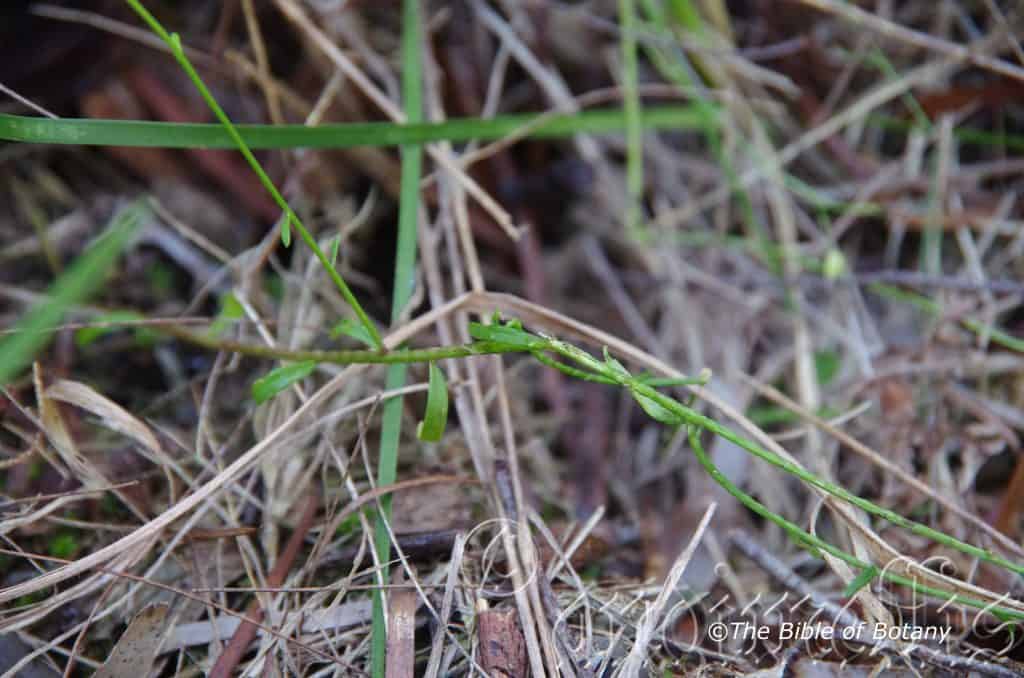
Pillar Valley NSW
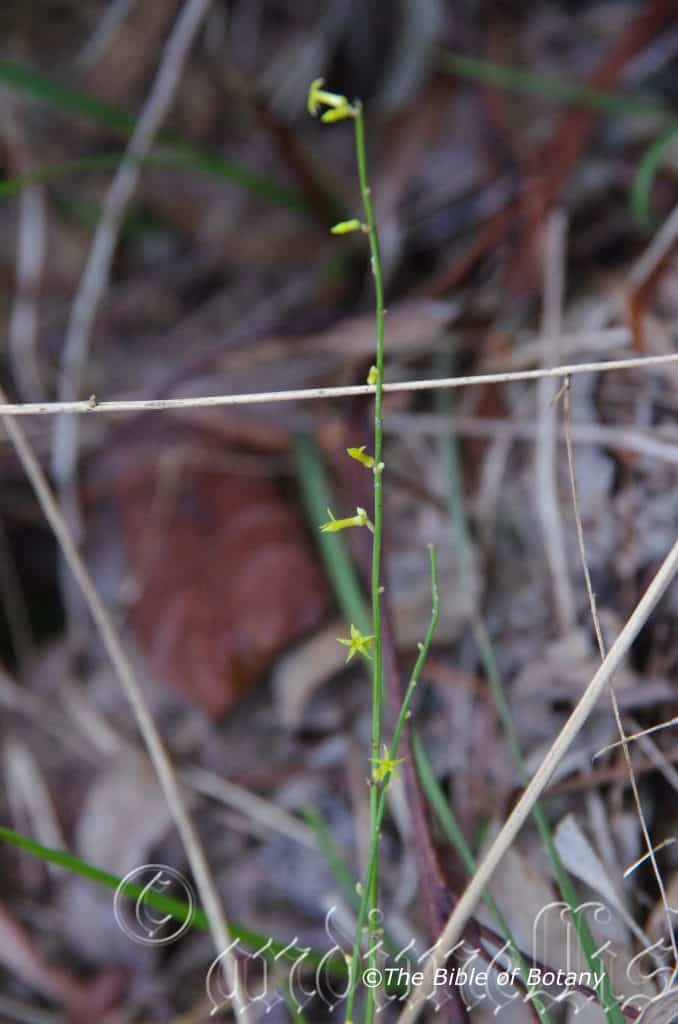
Pillar Valley NSW
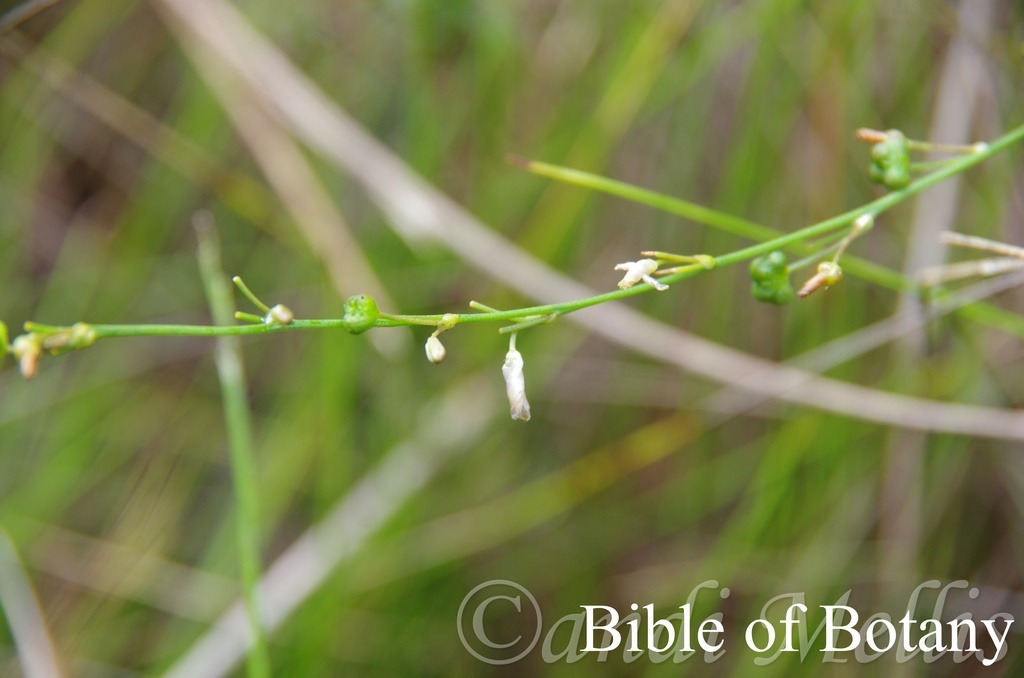
Pillar Valley NSW

Pillar Valley NSW

Pillar Valley NSW
Stackhousia viminea
Classification:
Unranked: Eidicots
Class: Rosids
Order: Celastrales
Family: Celastraceae
Genus: Is named in honour of Thomas Stackhouse; 1832?-1896, who was an Australian naval officer and botanist who formed the Linnean Society of NSW. He specialized in rare and endangered plants.
Specie: From Vīmināle, which is Latin for long, slender, flexible stems. It refers to stems which are long, slender, flexible that were used in wicker.
Sub specie:
Common Name: Slender Stackhousia.
Distribution:
Stackhousia viminea is found east of a line south from near Broome in central western coastal, Western Australia to north of Cook in south western South Australia and the off shore islands. It is not found in the true deserts. It is also found on the Geraldton Sand plains near Strawberry and on the south west coast at Pemberton. It is more common in the east than the west.
It is also found in the north western corner of Tasmania.
https://avh.ala.org.au/occurrences/search?taxa=Stackhousia+viminea#tab_mapView
Habitat Aspect Climate:
Stackhousia viminea prefers light dappled shade to full sun. It usually grows in open forests or open woodlands in shallow depressions, flats or occasionally in swampy locations or along creek and stream riparian zones in more arid areas. The altitude ranges from 10 meters ASL to 1380 meters ASL.
The temperatures range from minus 4 degrees in August to 42 degrees in January.
The rainfalls range from lows of 400mm to 3000mm average per annum.
Soil Requirements:
Stackhousia viminea prefers to grow on better quality sands, sandy loams to light-medium clays. The soils are usually derived from decomposed granites, sandstone or accumulated sands however most base rocks are acceptable. The soils pH ranges from 4.5pH to 7.5pH. It does not tolerate water logged soils. Non saline soils to moderately saline soils are tolerated as are salt laden winds.
Height & Spread:
Wild Plants: 0.4m to 0.7m by 0.3m to 0.5m.
Characteristics:
Stackhousia viminea grows as a small erect or ascending shrub which is usually branched near the base. The stems are glabrous.
The opposite, oblanceolate to elliptic leaves measure 4mm to 40mm in length by 1.5mm to 8mm in width. The base leaves are reduced to scales. The bases taper to the stems and are attenuate while the apexes are broad acute to obtuse. The discolourous laminas are deep green to sea-green, semi glossy to glossy and glabrous on the upper laminas while the lower laminas are paler. The laminas gently decurve close to the margins and gently recurve upwards from the base to the apexes. The margins are entire. The mid vein is slightly prominent on the lower lamina and is faintly visible on the upper lamina.
The inflorescences are long, dense, cylindrical, spikes born from the terminals. There are 40 to 80 flowers in small subsessile clusters of 1 to 5 individual flowers along the glabrous, green, angulated spike. The 3 herbaceous, ovate bracts are shallowly erose to entire. The Hypanthium is subsessile and measure 0.6mm to 1mm in length. The pale creamy-yellow sepals measure 0.5mm to 0.8mm in length with shallow undulating entire lobes. The long narrow, greenish to deep creamy-yellow campanulate perianth tube is glabrous and often has a reddish tinge externally. The tube measures 2mm to 4mm in length by 0.7mm to 1.3mm in diameter. The 5 greenish to deep creamy-yellow lobes are narrow acute to obtuse. The lobes measure 1.5mm to 3mm in length.
There are 5 stamens. The style and yellow stigma are glabrous. The flowers appear from August to November.
The fruits are broad obovoid to ellipsoidal cocci. The 3 cocci measure 1.5mm to 3mm in length. The green cocci turn deep grey to brown when ripe and have a shallow basal cavity.
Wildlife:
Stackhousia vimineus wildlife is unknown to the author.
Cultivation:
Stackhousia viminea is a beautiful small sub shrub that is ideal for small to large gardens that are on accumulated sands or course sands granitic sands in sunny positions. In cultivation it grows from 0.5 meters to 0.6 meters in height by 0.5 meters to 0.6 meters in diameter when grown in the open.
It grows well where deep leaf litter keeps the soil cool and moisture at an even level. If these requirements are met they can cope with temperatures as low as minus 3 degrees and up to 36 degrees. It is moderately drought resistant once established.
However if it is given an adequate supply of water and a little native fertilizer on a regular basis the plants will respond with more stems and exceptional flowering over a long period.
It makes a good formal border shrubs in seaside cottage gardens or excellent contrast sub shrubs in a bush garden or dry heath garden settings next to annuals or small perennials with red or orange flowers.
It is ideal for small to medium rockeries as the feature plant. Here it can be planted in small groups of 2 to 5 as the central feature or scattered to give a more informal look. If it is surrounded by shorter plants with finer or larger foliages, that are yellow, pink or lavender then year round contrast can be created with a strong accent in the center of the bed. A more formal look can be achieved by radiating the smaller plants in a pattern of gold and purple. Be careful with deep red, orange or orange–red flowers as these will steal the show.
Propagation:
Seeds: The seeds can be removed easily from the mature fruits.
Sow fresh seeds directly into a seed raising mix, keeping them moist not wet. Do not over water as the seeds will rot off before germination takes place. Place the trays in a cool shaded area with 50mm shade cloth in the bush house. When the seedlings are 20 to 25mm tall, prick them out and plant them into 50mm native tubes using a good organic mix.
As the seedlings roots reach the bottom of the tubes plant them out into their permanent position. Do not delay.
Cuttings: Fortunately Stackhousia vimineacuttings are diffifficult to strike so expect many losses along the way. Use 100mm to 200mm long tip cuttings or lateral shoots from the present season’s growth. Take them in warmer months of the year. Remove half the leaves from the bottom section being careful not to tear the bark.
1 Prepare the cutting mix by adding two thirds sharp clean river sand, one third peat or one third perlite. These ingredients must be sterilized,
2 Select good material from non diseased plants,
3 Select semi green stems for cuttings. Look for a stem with two or three nodes,
4 Place the cutting on a flat, hard surface, and make a clean cut down one side of the cutting at the base for 10mm with a sharp sterile knife or razor blade. – This scarification of the node will increase the chances of roots emerging from this spot. Now remove all but one or two the leaves, leaving the apex leaves in tact. If the leaves are very large in proportion to the stem, cut off the apical halves.
5 Fill a saucer with water, and place a little medium strength rooting hormone into another container like a milk bottle top. Dip the node end of the cutting into the water and then into the rooting hormone. Tap off any excess hormone,
6 Use a small dipple stick or old pencil to poke a hole into the soilless potting mix. Ensure the hole is slightly larger than the stem diameter and be careful not to wipe the rooting hormone off the cuttings base. Place 2 to 4 cuttings in each of the 50mm native tubes,
7 I like to place the tubes in bucket with holes drilled in the bottom to allow excess water to drain out. A plastic bag that fits over the bucket is ideal to help maintain temperature and moisture. Place in a semi shaded, warm position like under 50mm shade cloth.
8 When the cuttings have struck, open the bag to allow air circulation for a few days to a week,
9 Once hardened off remove the cuttings from the bag and allow to further hardening for a few more days to a week,
10 Transplant into a good potting mix to grow on.
Fertilize using Seaweed, fish emulsion or organic chicken pellets soaked in water and apply the liquid on an alternate basis. Fertilize every 2 months until the plants are well established then on an annual basis in September or March to maintain health, vitality and better flowering.
Further Comments from Readers:
“Hi reader, it seems you use The Bible of Botany a lot. That’s great as we have great pleasure in bringing it to you! It’s a little awkward for us to ask, but our first aim is to purchase land approximately 1,600 hectares to link several parcels of N.P. into one at The Pinnacles NSW Australia, but we need your help. We’re not salespeople. We’re amateur botanists who have dedicated over 30 years to saving the environment in a practical way. We depend on donations to reach our goal. If you donate just $5, the price of your coffee this Sunday, We can help to keep the planet alive in a real way and continue to bring you regular updates and features on Australian plants all in one Botanical Bible. Any support is greatly appreciated. Thank you.”
In the spirit of reconciliation we acknowledge the Bundjalung, Gumbaynggirr and Yaegl and all aboriginal nations throughout Australia and their connections to land, sea and community. We pay our respect to their Elders past, present and future for the pleasures we have gained.